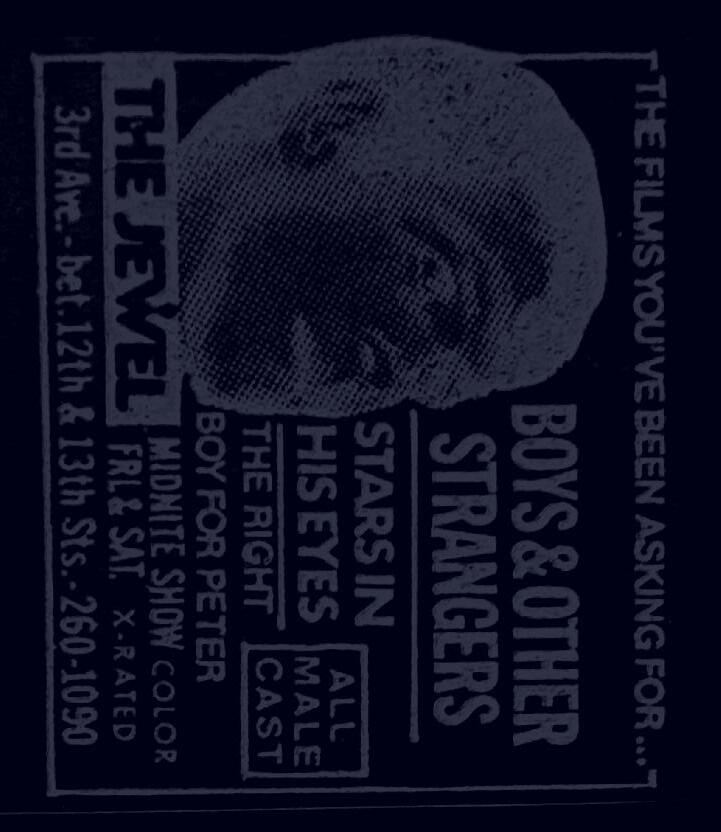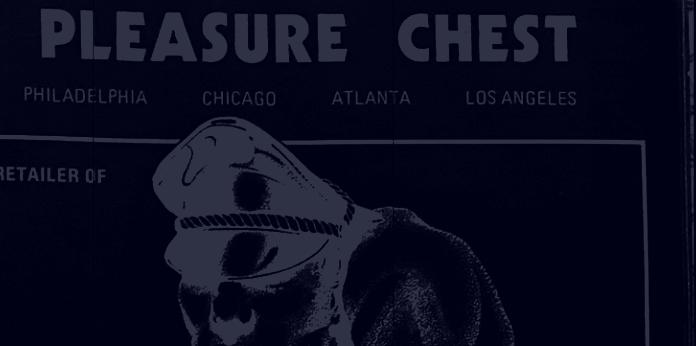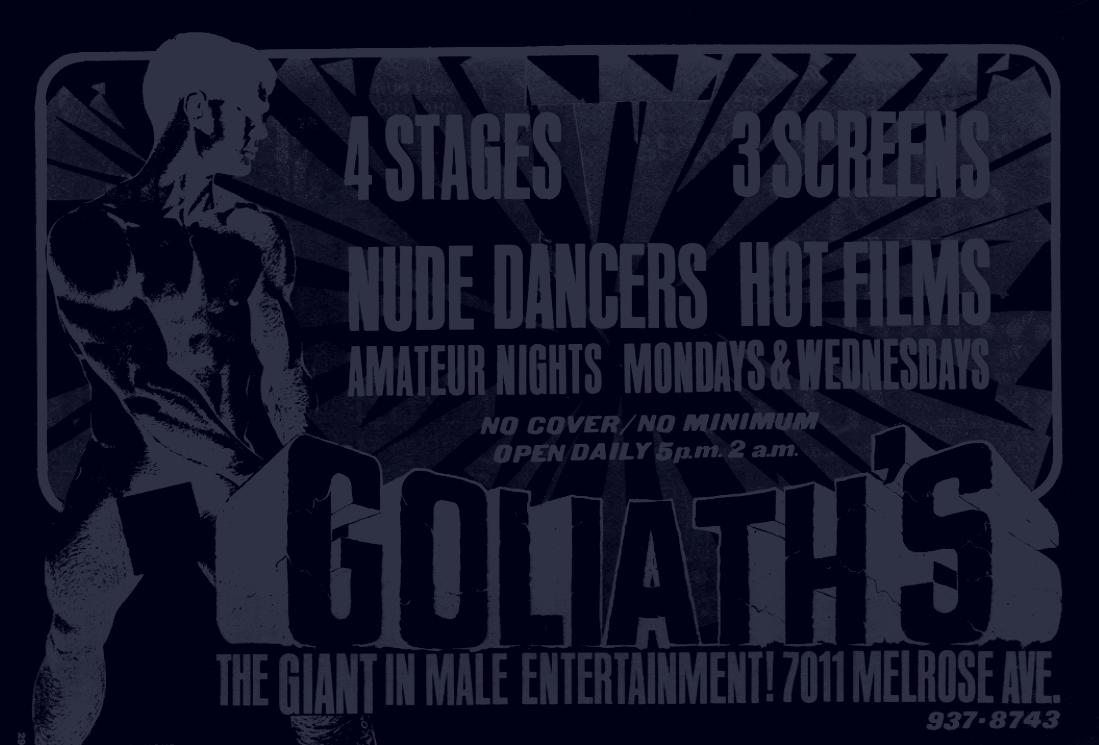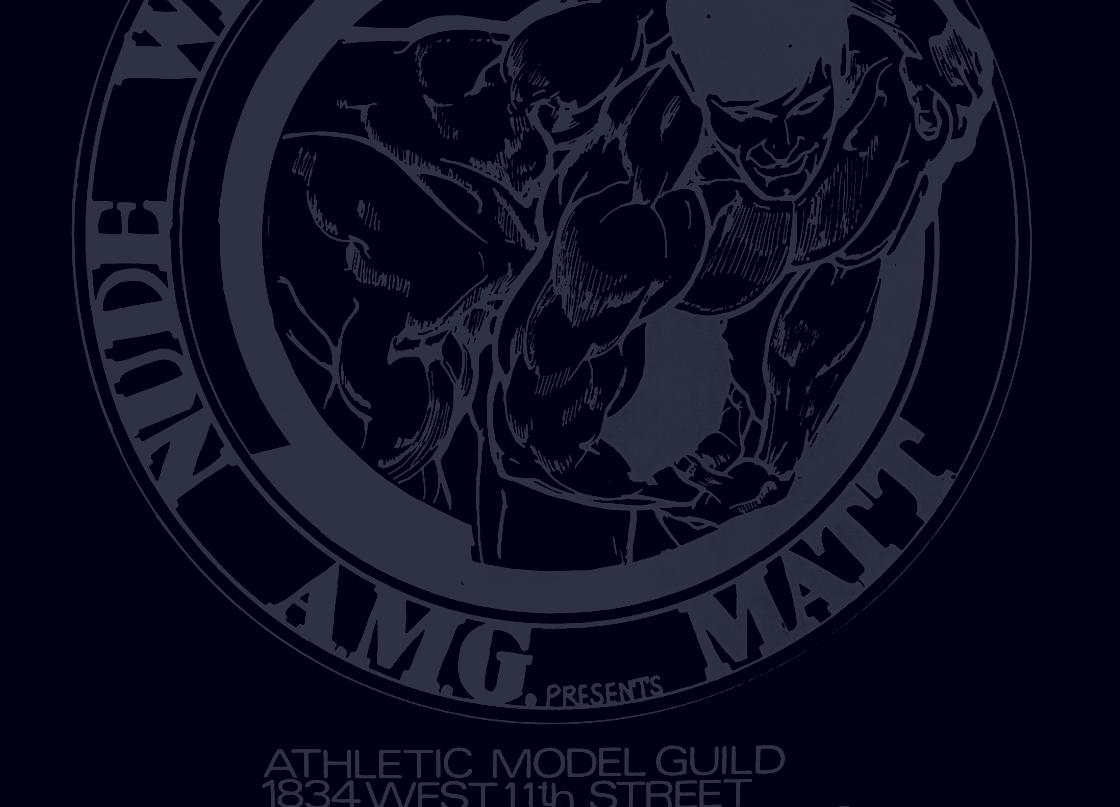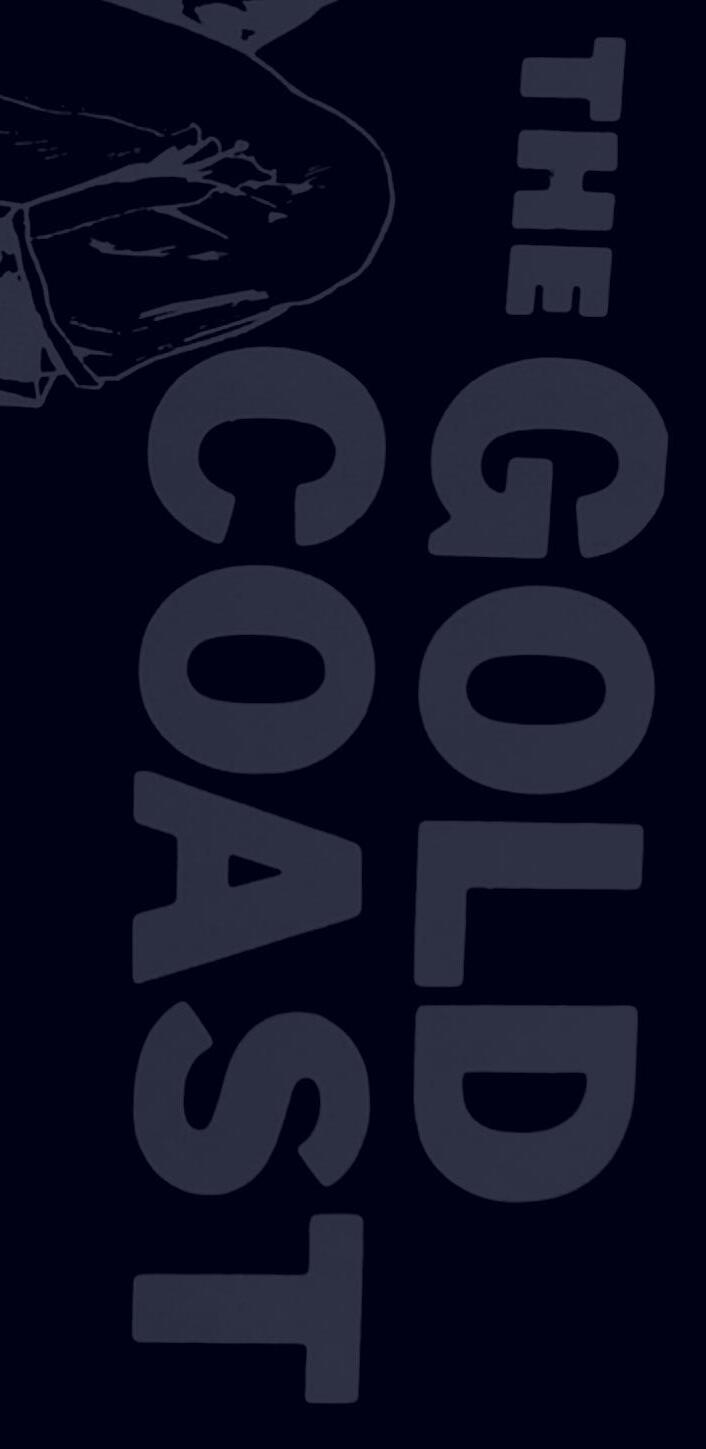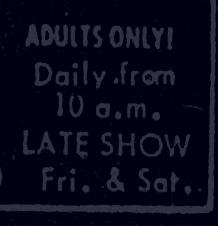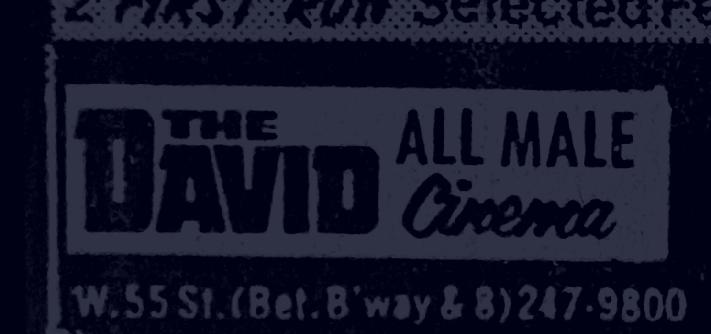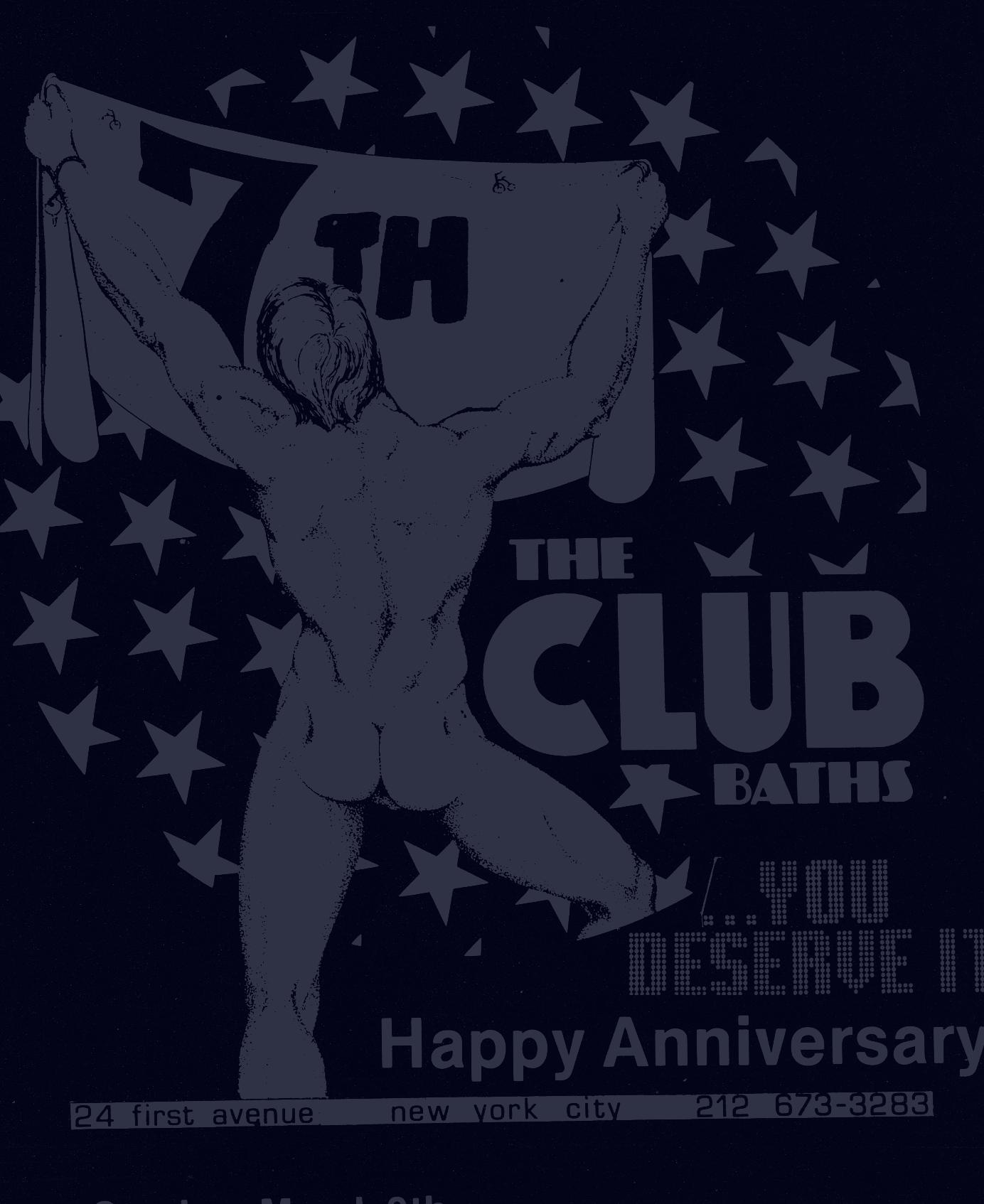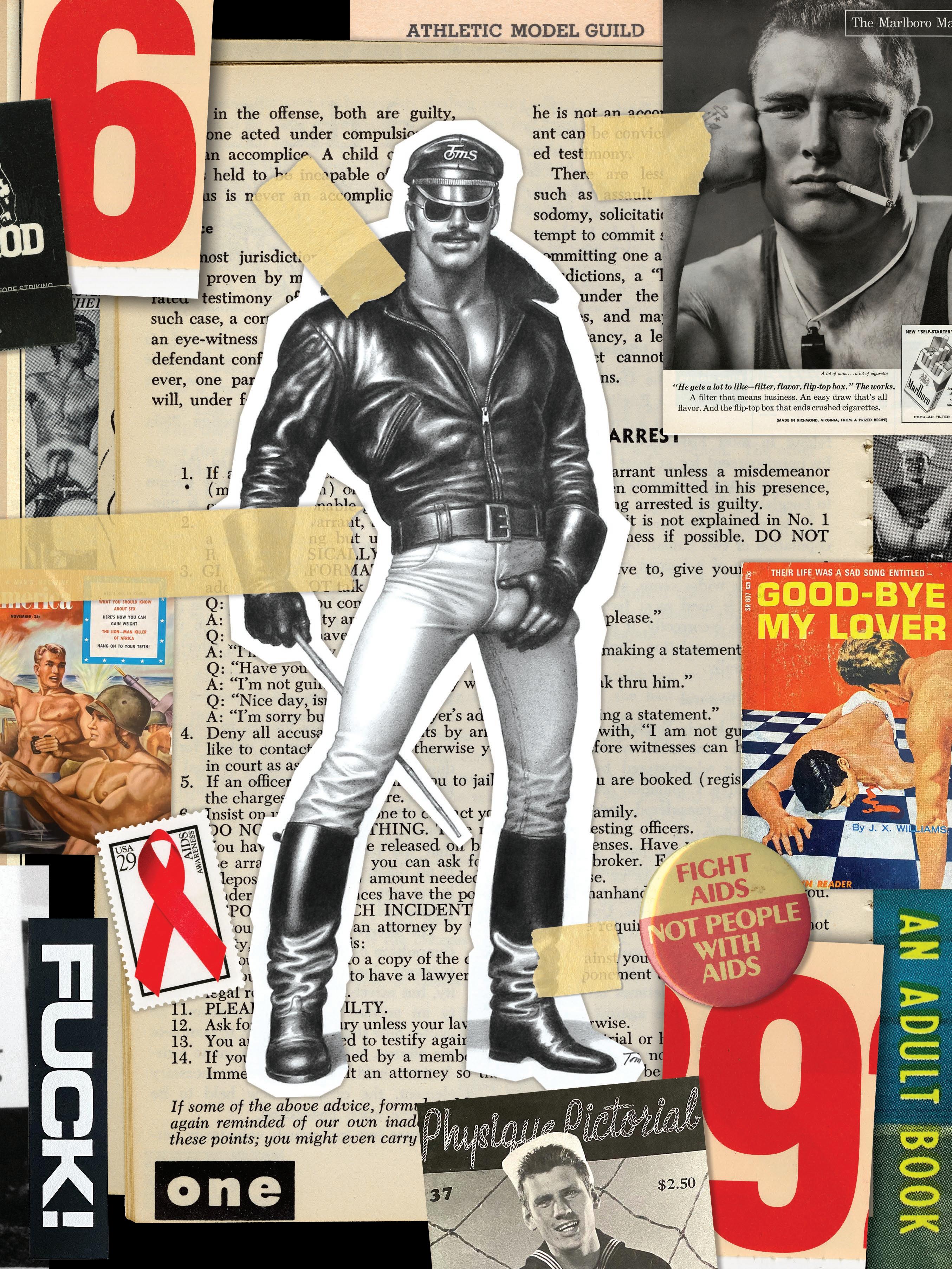CRUIS'N — UNCOVERING GAY DESIGN HISTORY THROUGH COLLECTING


HEFFNER


CRUIS'N — UNCOVERING GAY DESIGN HISTORY THROUGH COLLECTING


HEFFNER

DESIGN + COPY
Rick Heffner
rick.heffner@vcfa.edu
Instagram: @heffvcfa2023 linkedin.com/in/rickheffnerfuszion/ fuszion.com
COPY EDITOR
Michael Cirigliano II michaelwriteswords.com
PROOFREADER
Conor McDonald
THESIS ADVISOR
Silas Munro polymode.studio
ADVISOR / THESIS READER
Ian Lynam ianlynam.com
ADVISOR Ramon Tejada ramongd.net
ADVISOR
Lorena Howard-Sheridan lorenahoward.com
PRINTER
Clark's Litho Chantilly, VA clarkslitho.com
PAPER
100# Cougar Silk White Text
130# Cougar Silk White Cover
TYPEFACES
Extactica Regular and Italic
Extactica Bold and Italic
Heliuk
Metronic Slab Pro Black NEXUS Typewriter Pro
LEFT: Bob Mizer, phorographer
Physique Pictorial, vol. 6, no.2 (1956)
Athletic Model Guild Los Angeles, CA
Model: Floyd de Forrest
COVERS: Rick Heffner
Cruis'n Collage, 2023
Digital collage
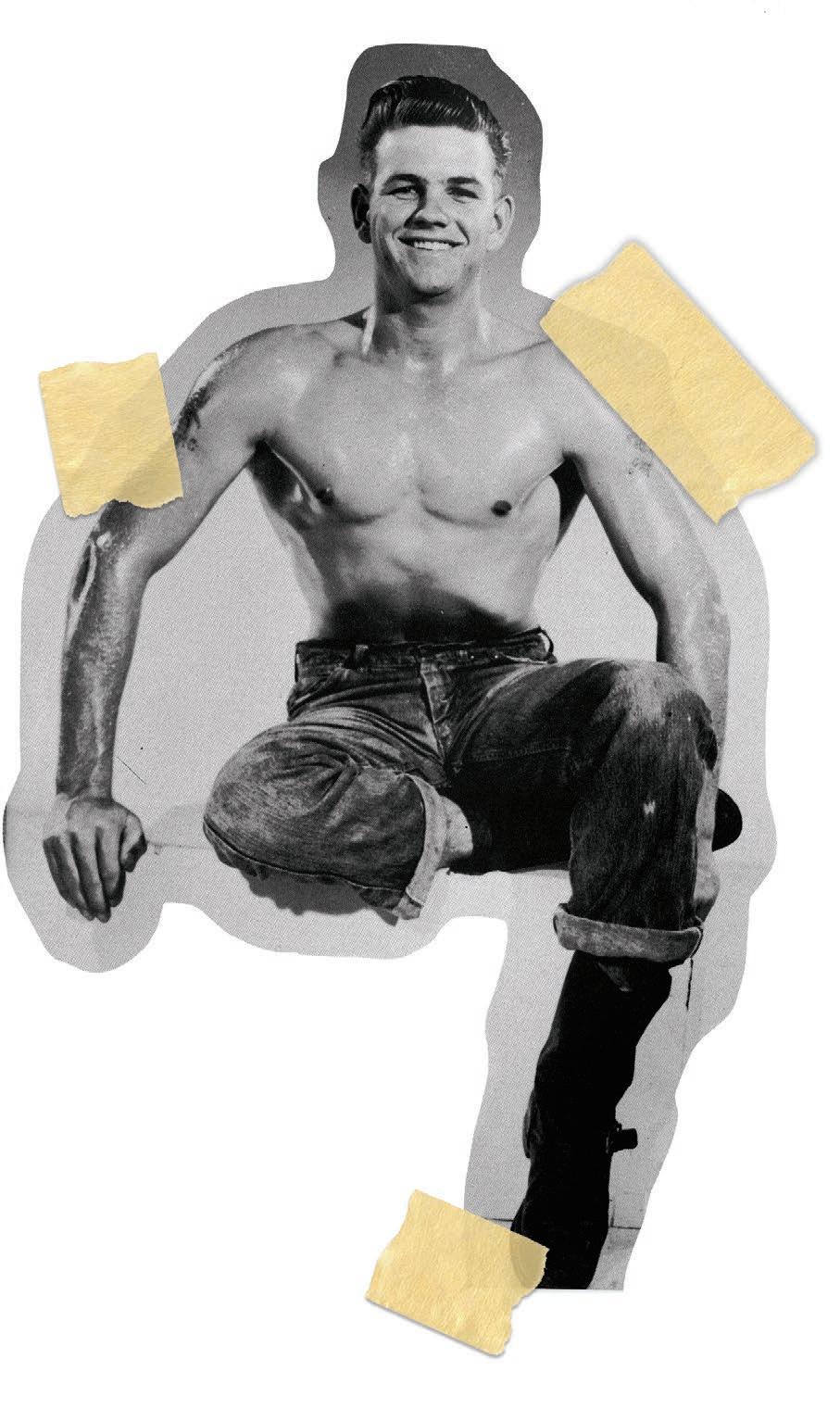
© Rick Heffner
View my Cruis'n collection at: ARE.NA/RICK-HEFFNER
Every effort has been made to ensure my content is correct and free of errors.
All images © by their original holders. All third-party images included are for educational purposes only. They have been reproduced without permission, unless otherwise noted.
© 2023 Rick Heffner
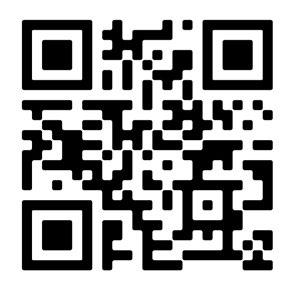

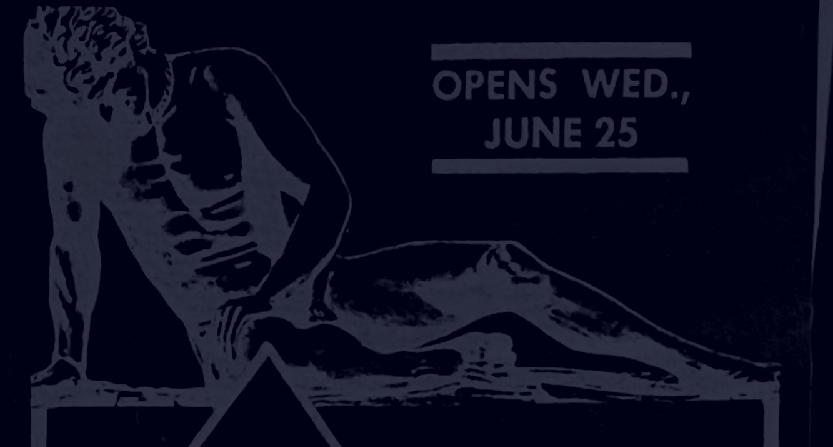
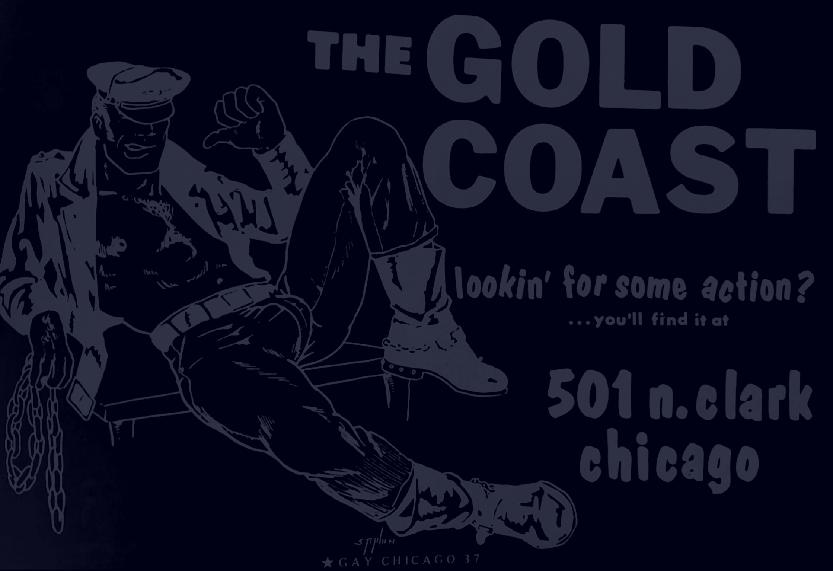

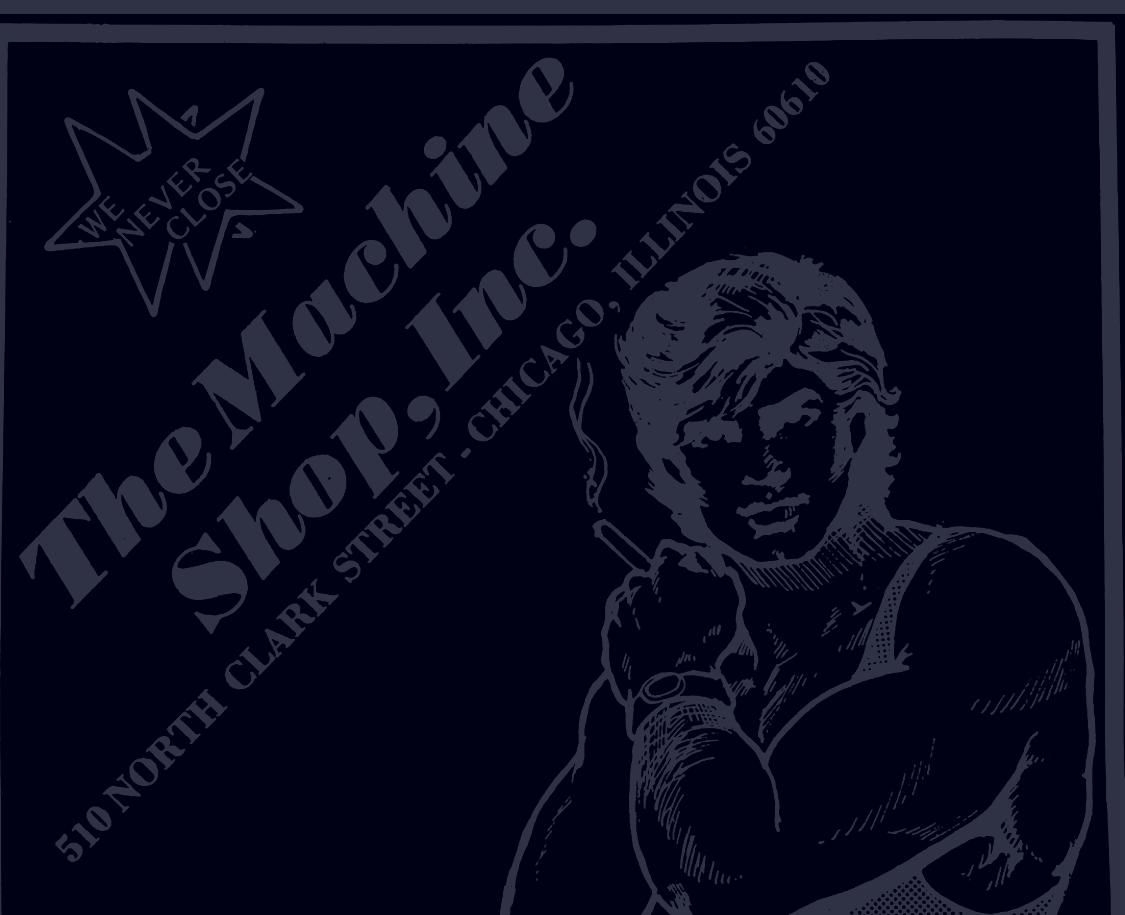

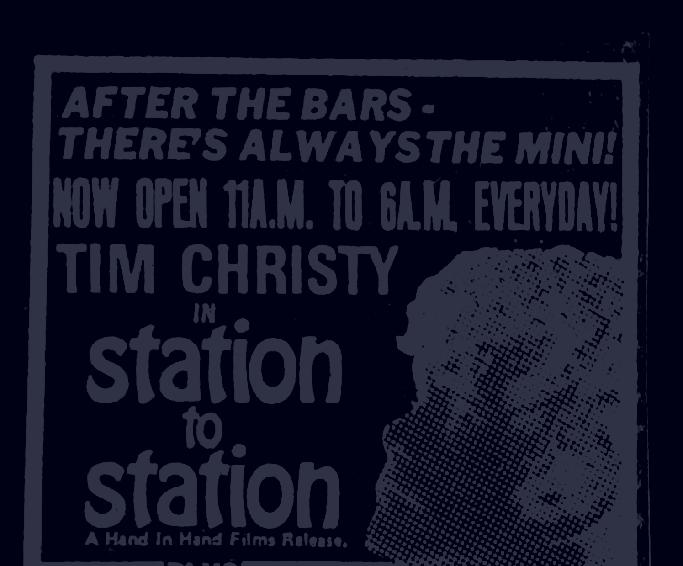
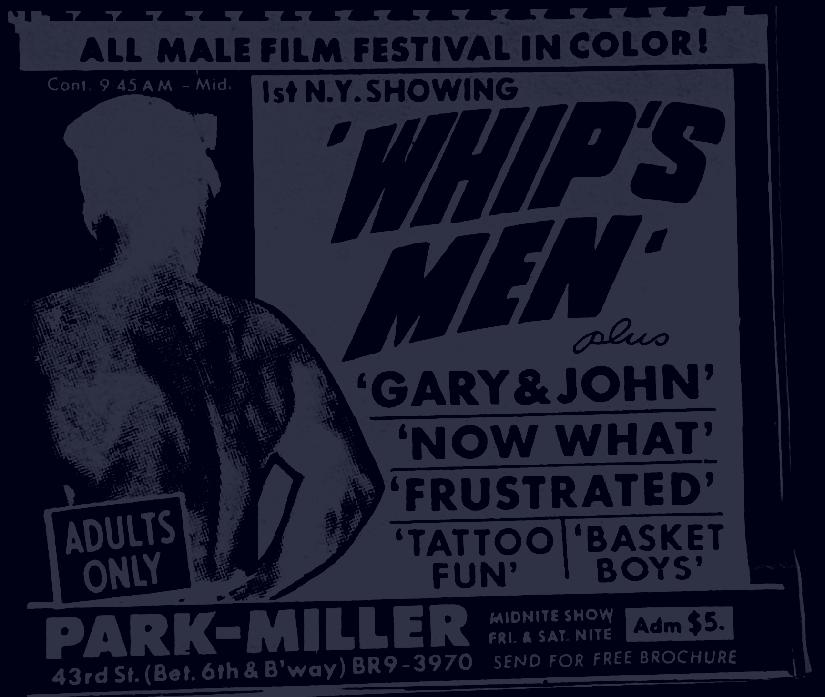


A THESIS PRESENTED IN PARTIAL FULFILLMENT OF THE REQUIREMENTS FOR THE DEGREE MASTER OF FINE ARTS IN GRAPHIC DESIGN IN THE GRAPHIC DESIGN PROGRAM AT VERMONT COLLEGE OF FINE ARTS, MONTPELIER, VERMONT.
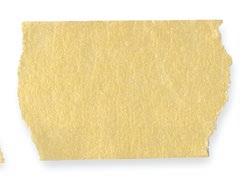


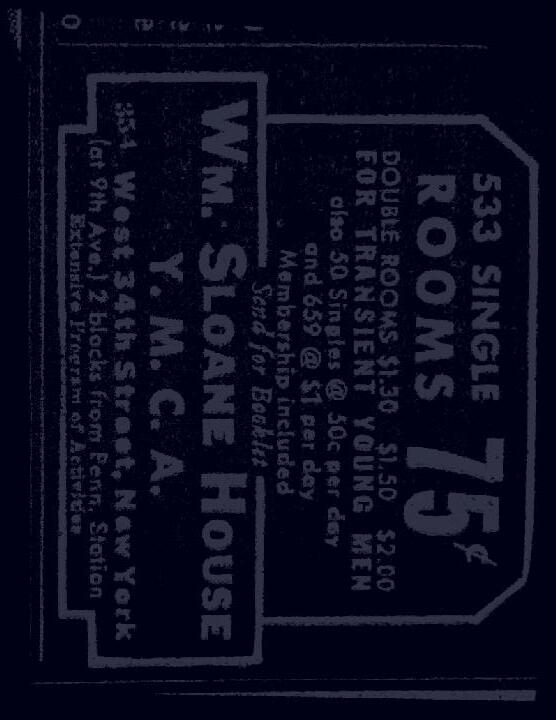
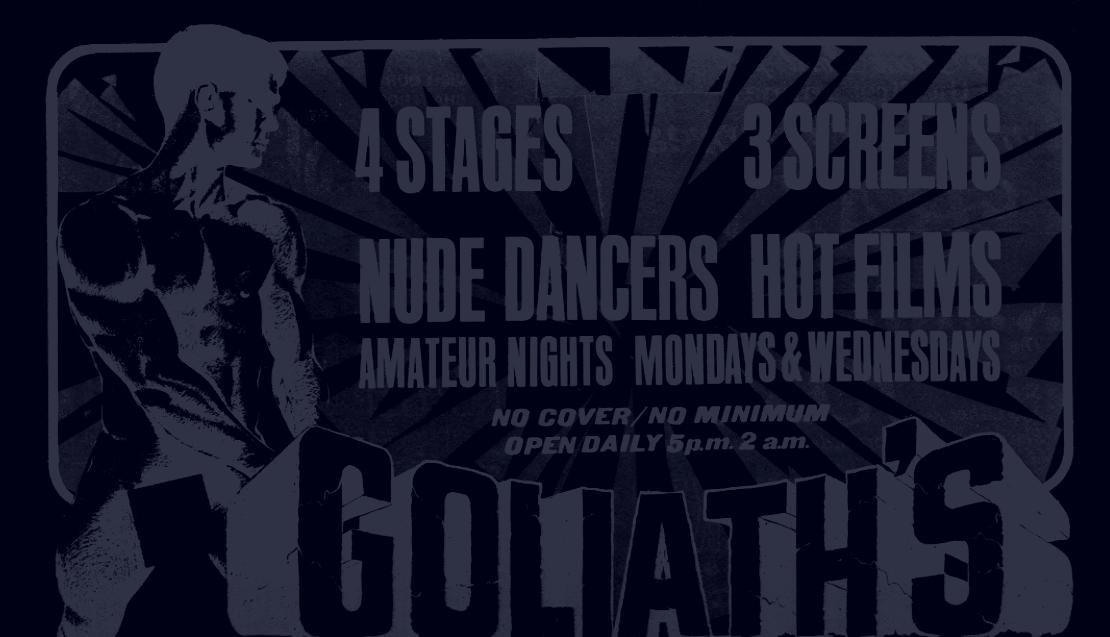 BY RICK HEFFNER 2023
BY RICK HEFFNER 2023
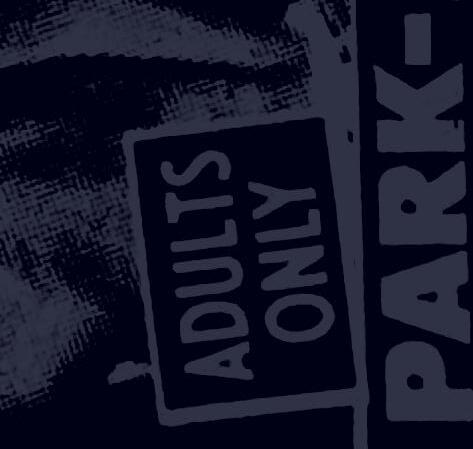
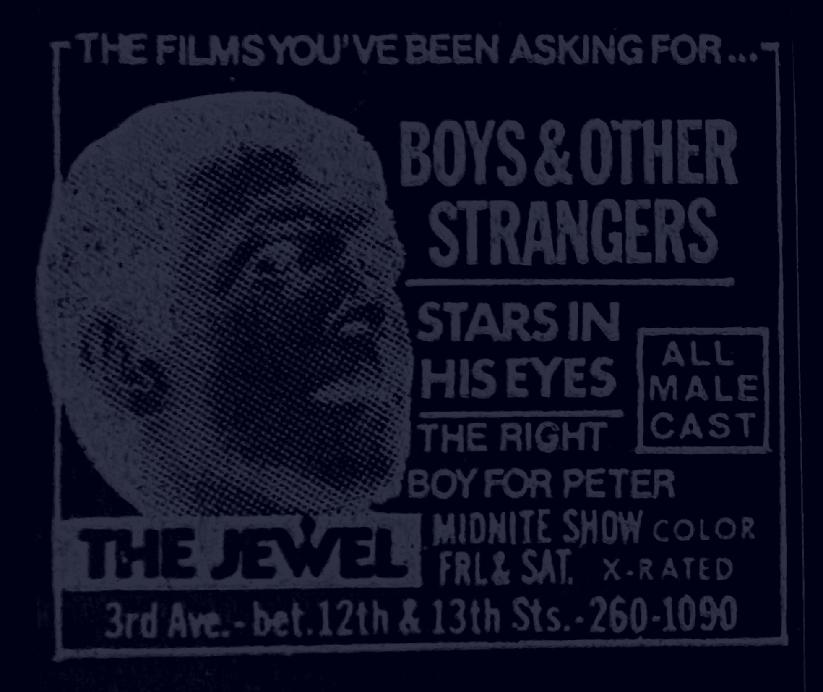
APPROVED BY MASTER’S EXAMINATION COMMITTEE:

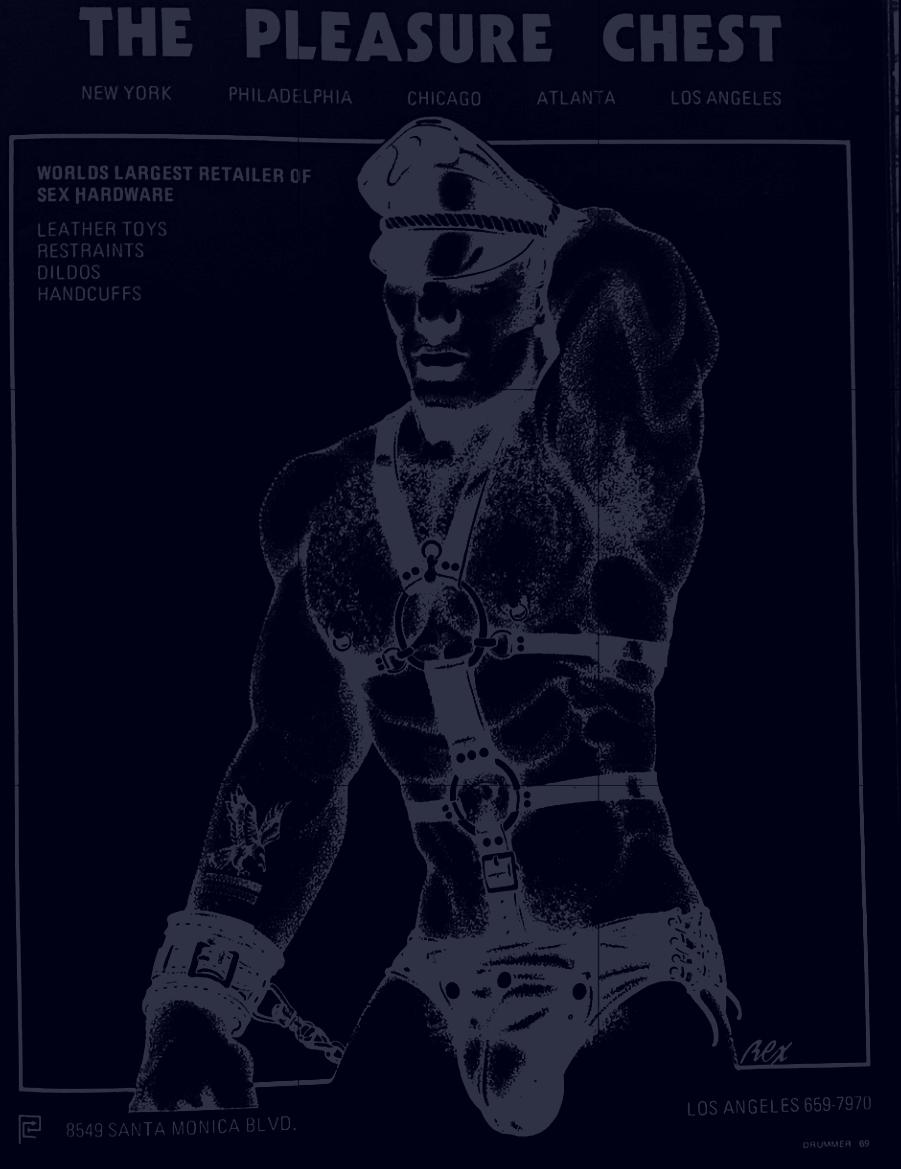
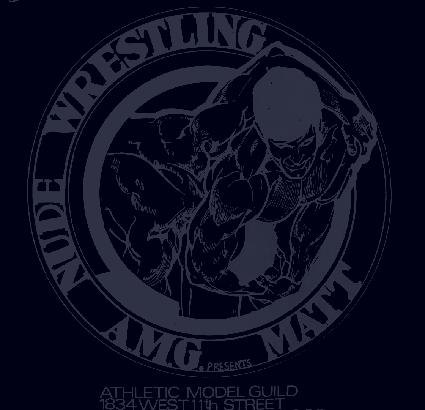 LORENA HOWARD-SHERIDAN
IAN LYNAM RAMON TEJADA
SILAS MUNRO
© 2023 Rick Heffner
LORENA HOWARD-SHERIDAN
IAN LYNAM RAMON TEJADA
SILAS MUNRO
© 2023 Rick Heffner
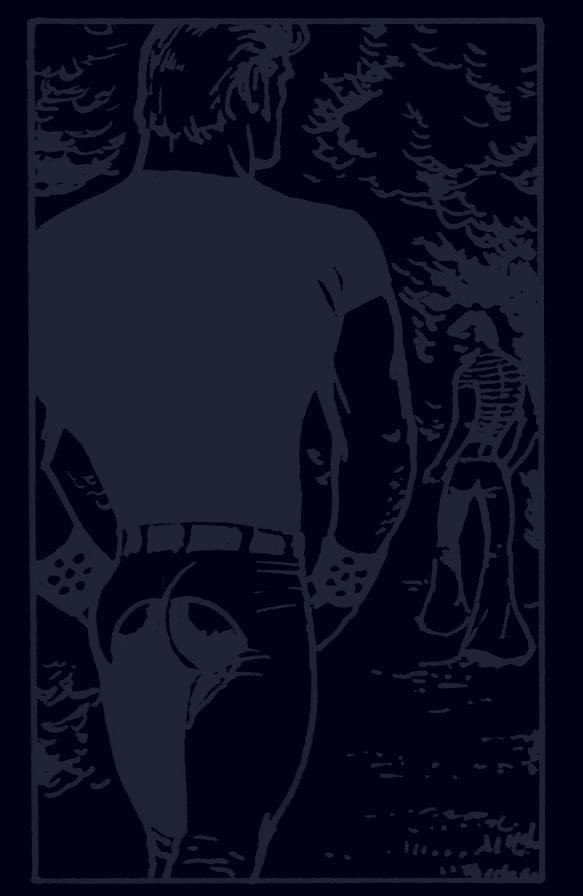
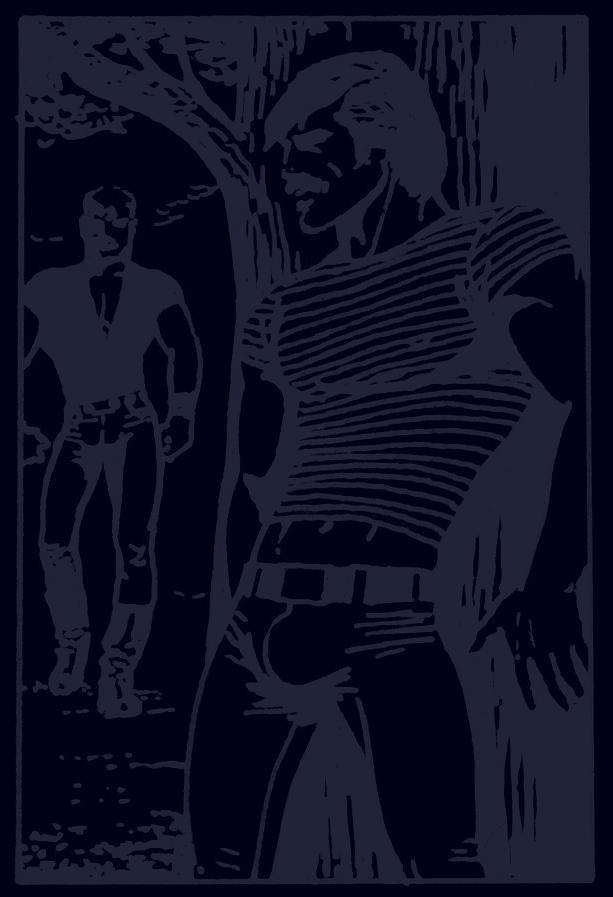
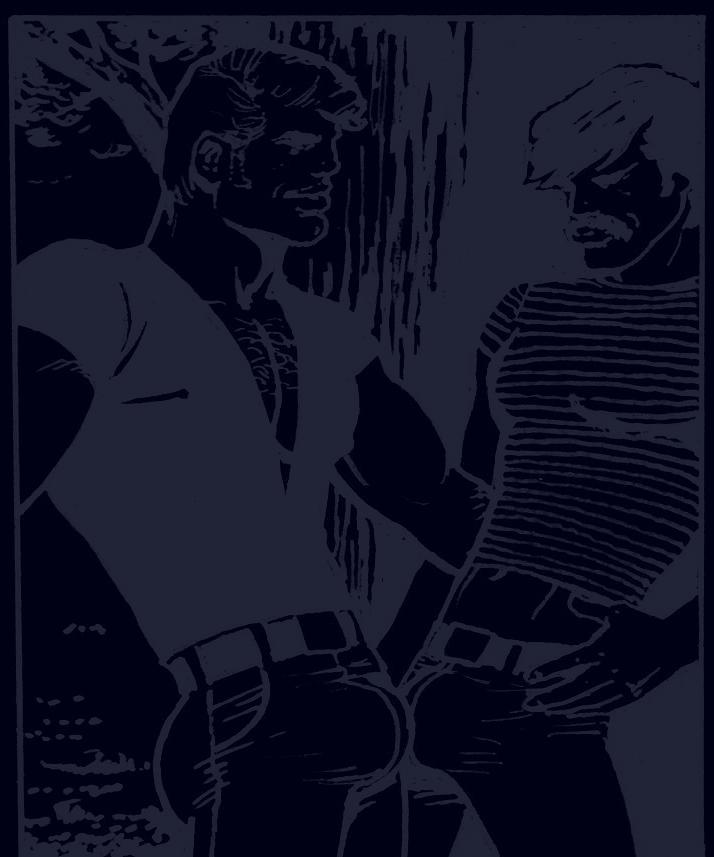
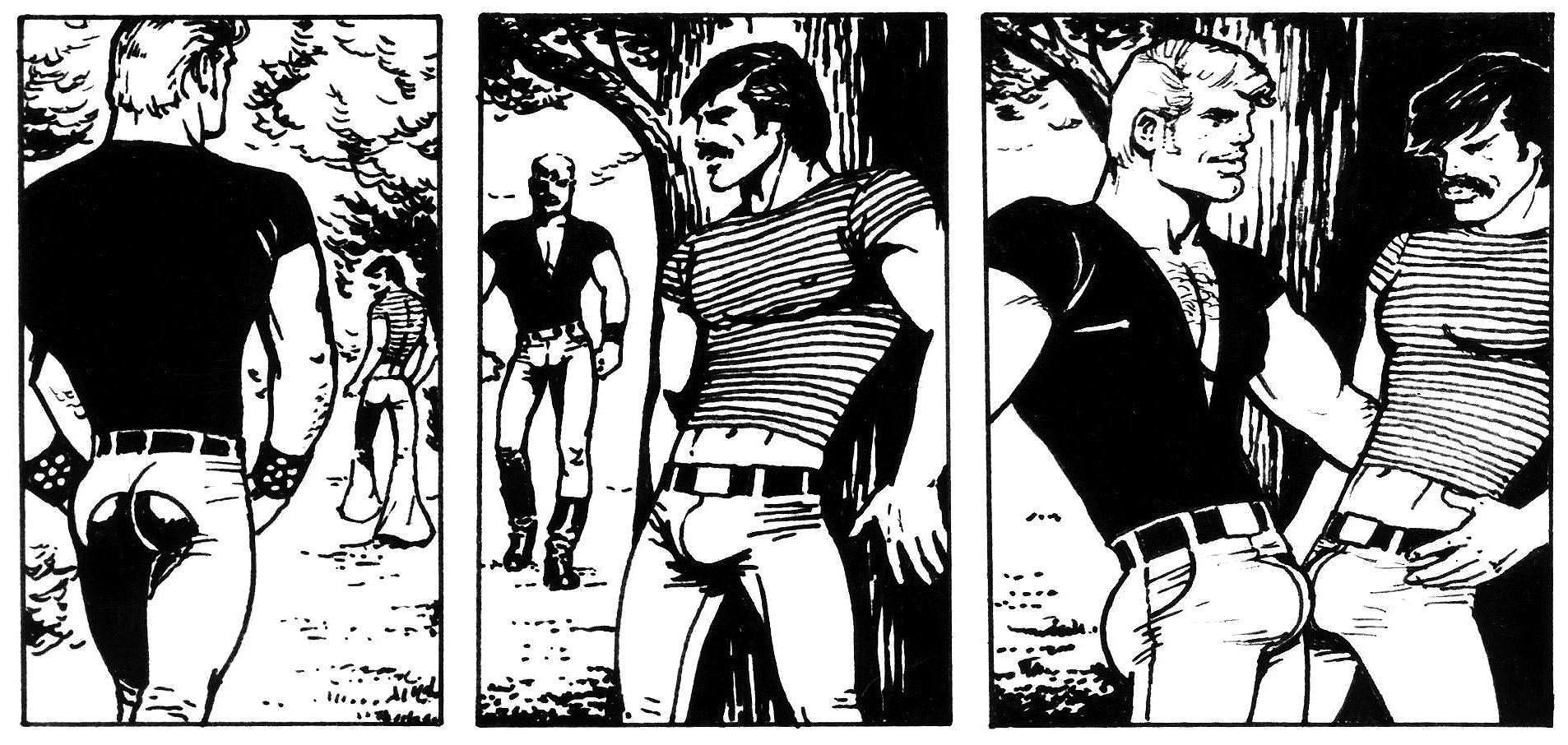
— ANONYMOUS
This thesis is dedicated to those who came before me, who marched, threw the first brick, sipped in, sacrificed, and advocated for those who continue to fight for equality and civil rights for all.
And to those who have crossed my path throughout my life's journey— my family, VCFA family, mentors, art teachers, professors, colleagues, and friends.
Thank you.
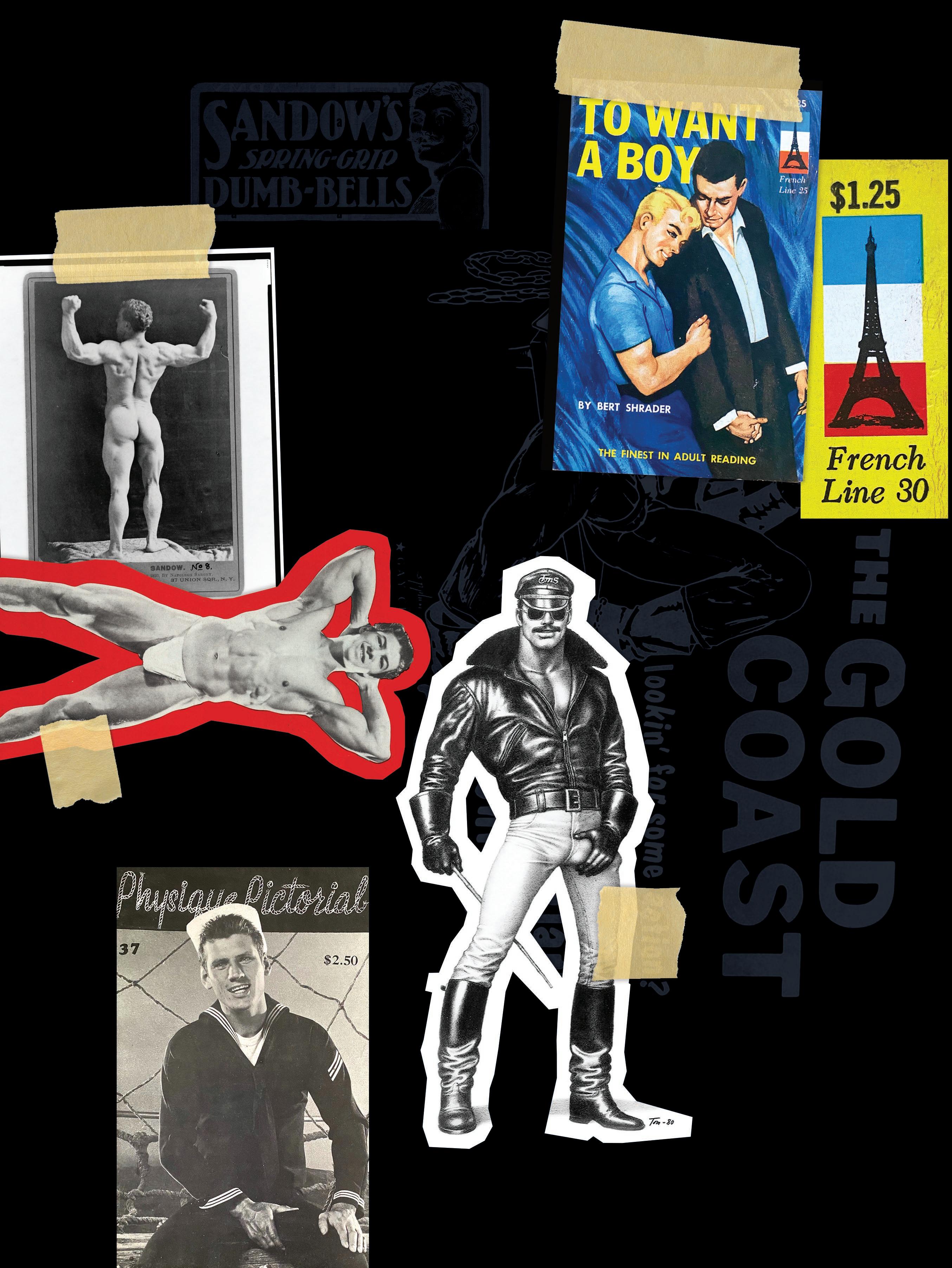
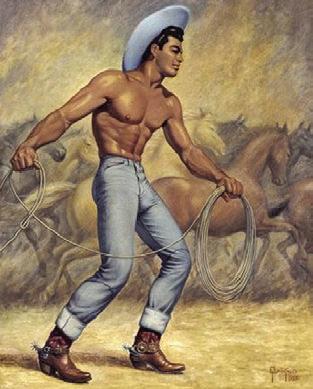




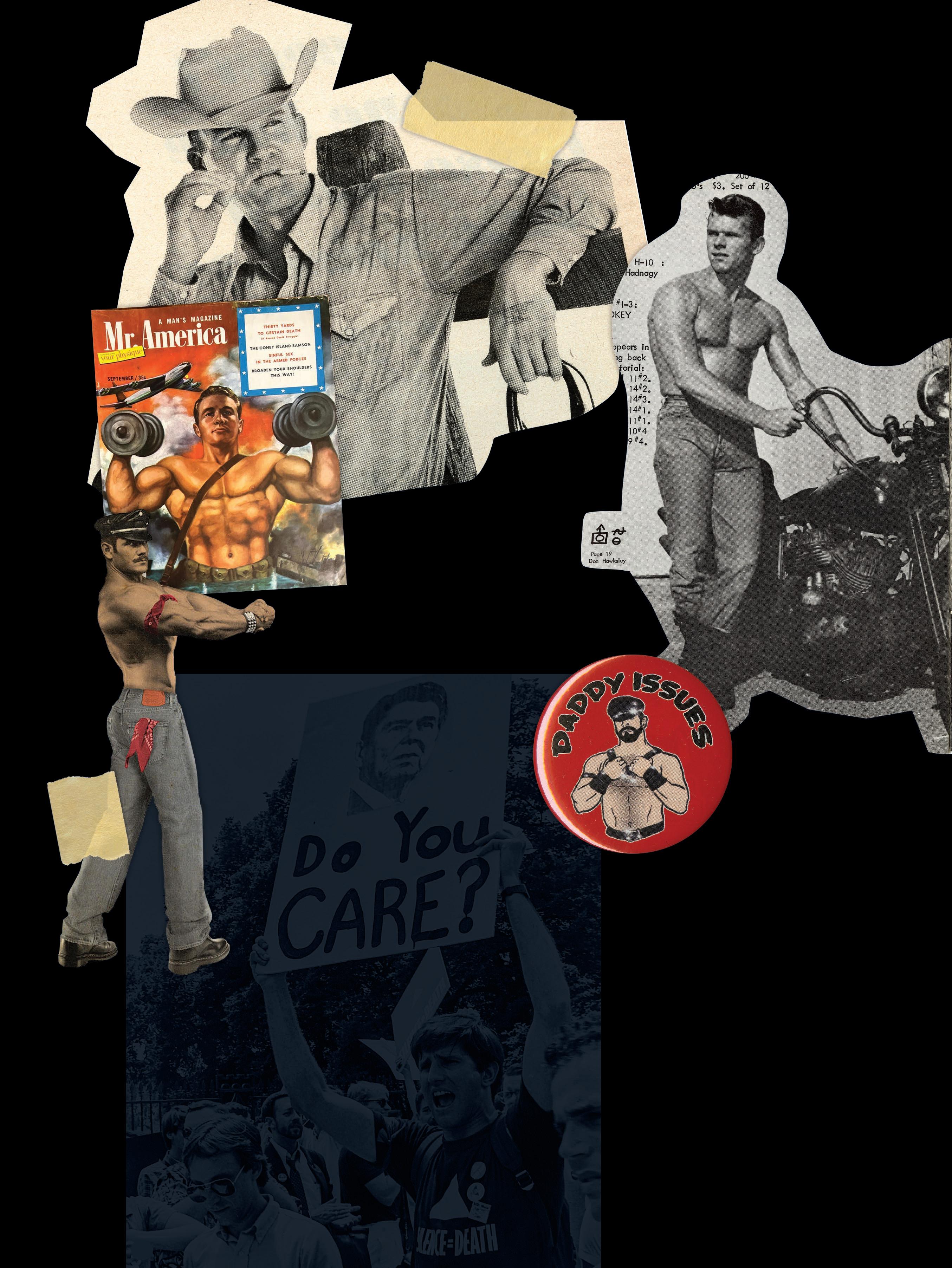
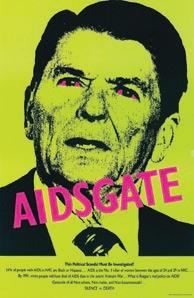



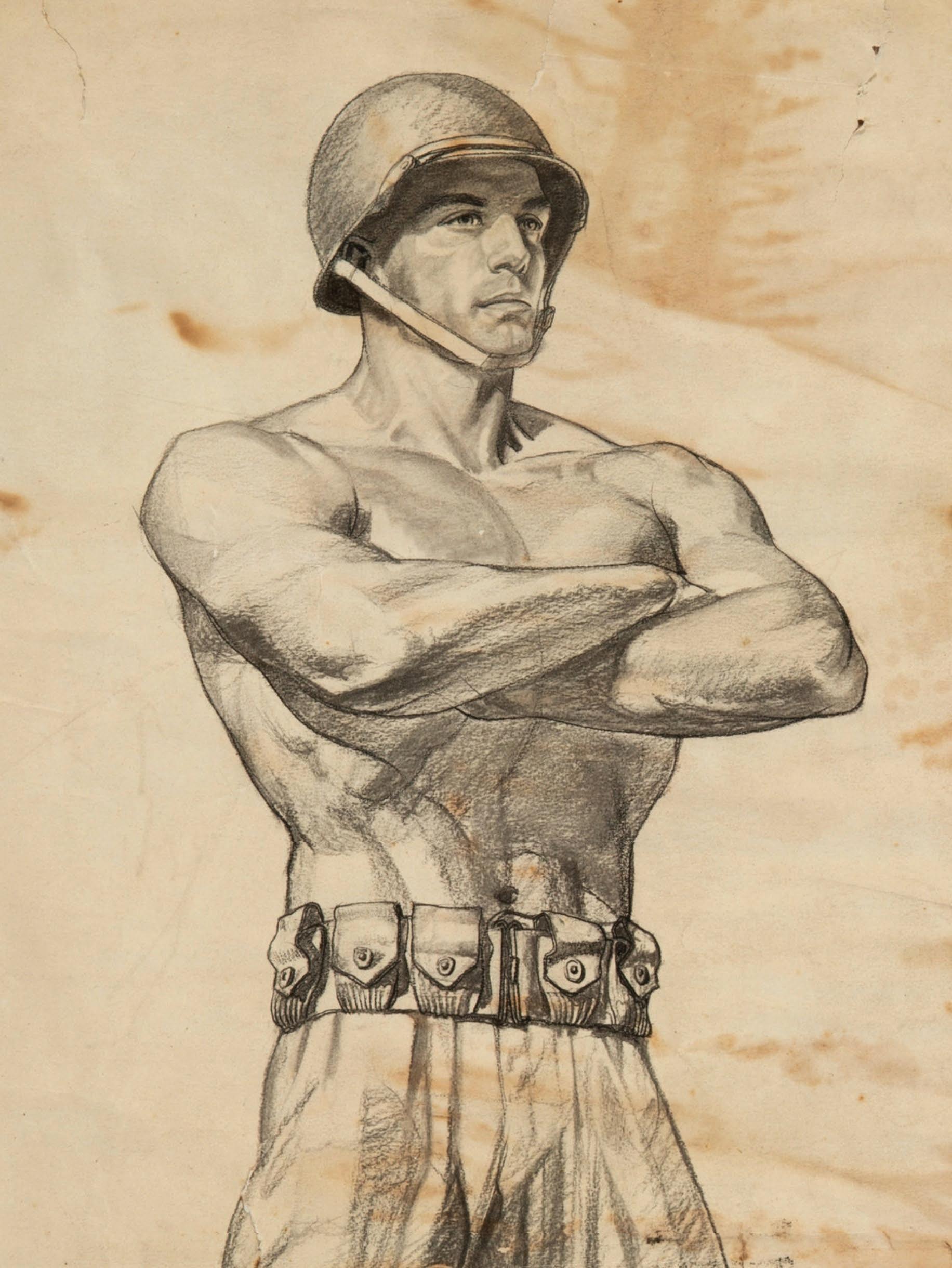
AM OBSESSED WITH COLLECTING HISTORICAL GAY EPHEMERA. What started as an eye-ogling attraction for hunky beef-cake models, my collecting intensified and deepened because of my ever-growing curiosity for gay history. I wanted to know more than what I was taught through the lens of white heterosexual America. I wanted to uncover as much as possible about the stories and heroes who were kept from me in my youth.
The result of my obsession is a collection of visual storytelling. One that uncovers how postwar gay men found their identity and fostered community. How gay artists and photographers used books, magazines, pamphlets, and posters as means to not only showcase their artistic talents, but also to introduce the gay lifestyle to the public at large. How gay men developed secret codes for sex and survival. How heroes like Frank Kameny, Marsha P. Johnson, Silvia Rivera, Harvey Milk, and the members of ACT UP refused to be silent in the face of prejudice and oppression.
This thesis captures my journey of discovery into the histories behind each of these people and moments, and the ways graphic design and print media acted as tools for homosexual men to discover and nurture their identities in an analog world. Decades before the internet and hookup apps put our history and our bodies at each other’s fingertips, it was print culture—easy to disseminate and difficult to track— that helped gay men find their sexual compatriots.
Working on this thesis for the last two years meant moving beyond my comfort zone as a graphic designer. Some days I was a researcher—other days, a collector, curator, or archivist. My aspiration for this collection is to become an accessible archive that preserves this history, rather than being tossed into the fire. After all, the equality sought by the generations of artists and activists profiled in these pages is an equality we’re still fighting for today.
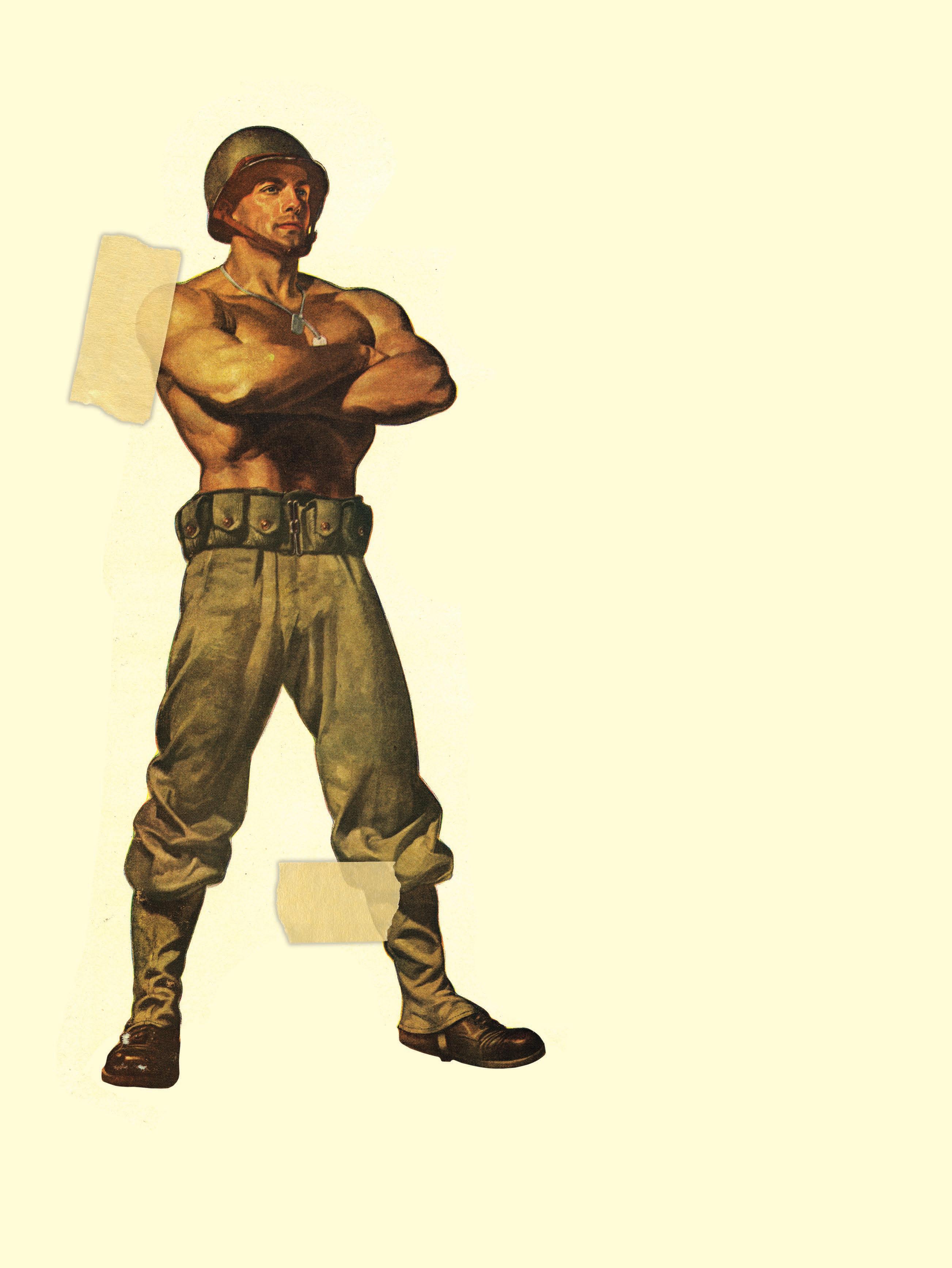
“Those who cannot remember the past are condemned to repeat it.”
—GEORGE SANTAYANA, THE LIFE OF REASONSantayana’s oft-quoted line argues that if our world is ever going to progress, it needs to remember what it’s learned from the past. After all, change isn't the same thing as progress
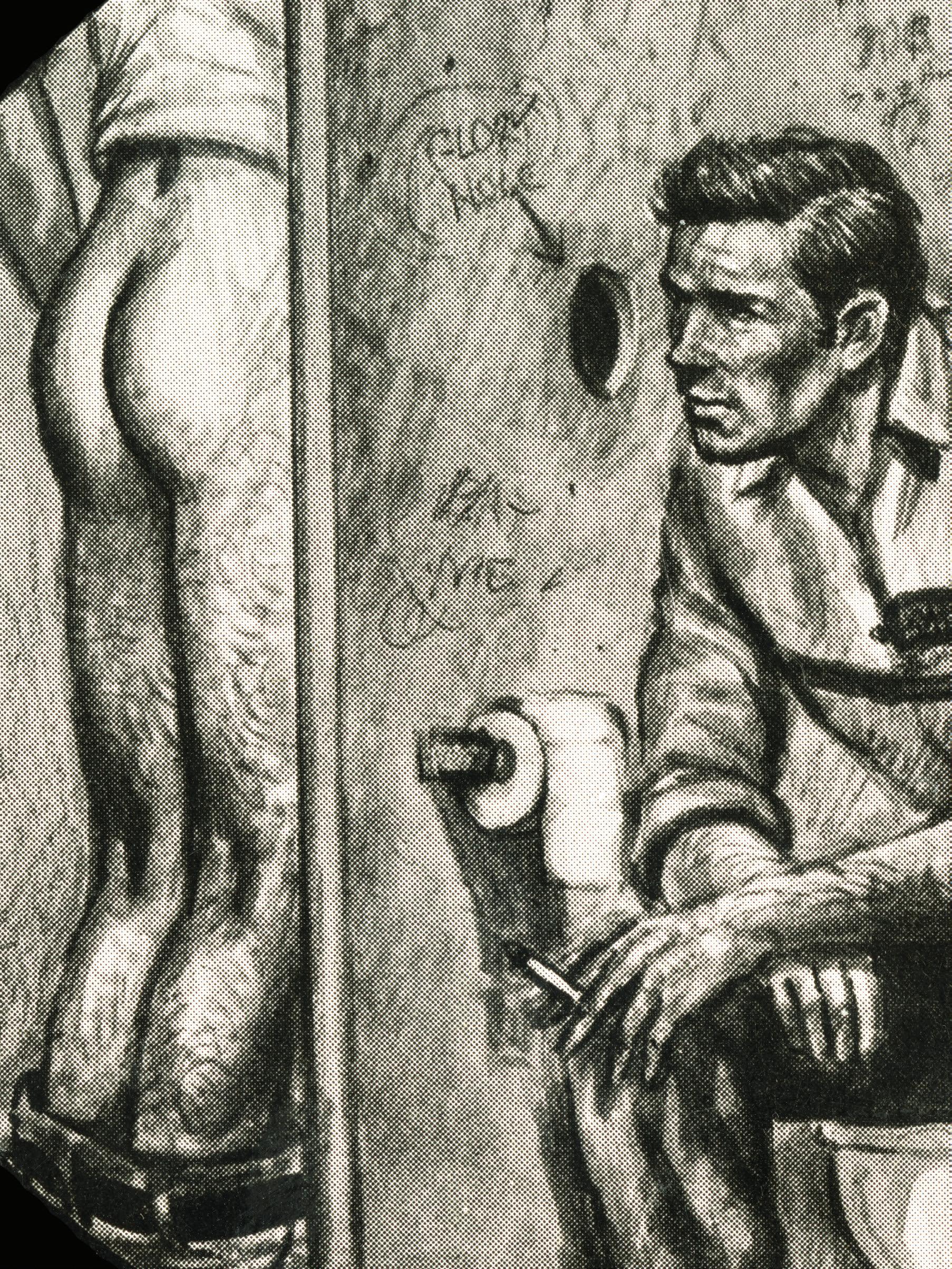 Greenleaf Classics, Inc. San Diego, CA
Greenleaf Classics, Inc. San Diego, CA

inside you somewhere, — ALFRED HITCHCOCK CRUIS’N | UNCOVERING GAY DESIGN HISTORY THROUGH COLLECTING 3
there’s a somebody nobody knows about.”
Barton Lewis Glory Hole Cop (detail), 1981
“The boys of Breden Square—college athletes, midnight cowboys, leather studs, teenage toughs—had one thing in common: a pricetag. Harlon Cross could afford any one of them. George, well-endowed with everything but money, became Harlon's bait to taunt and dazzle four men into ruining their lives.”
Jay Green established himself as the most provocative and acclaimed writer/reporter on the homosexual underground in America. In Cruising, undoubtedly his finest and most penetrating novel, Green details one man's personal vendetta against four college chums. The tone is explicit; the drama, shattering.
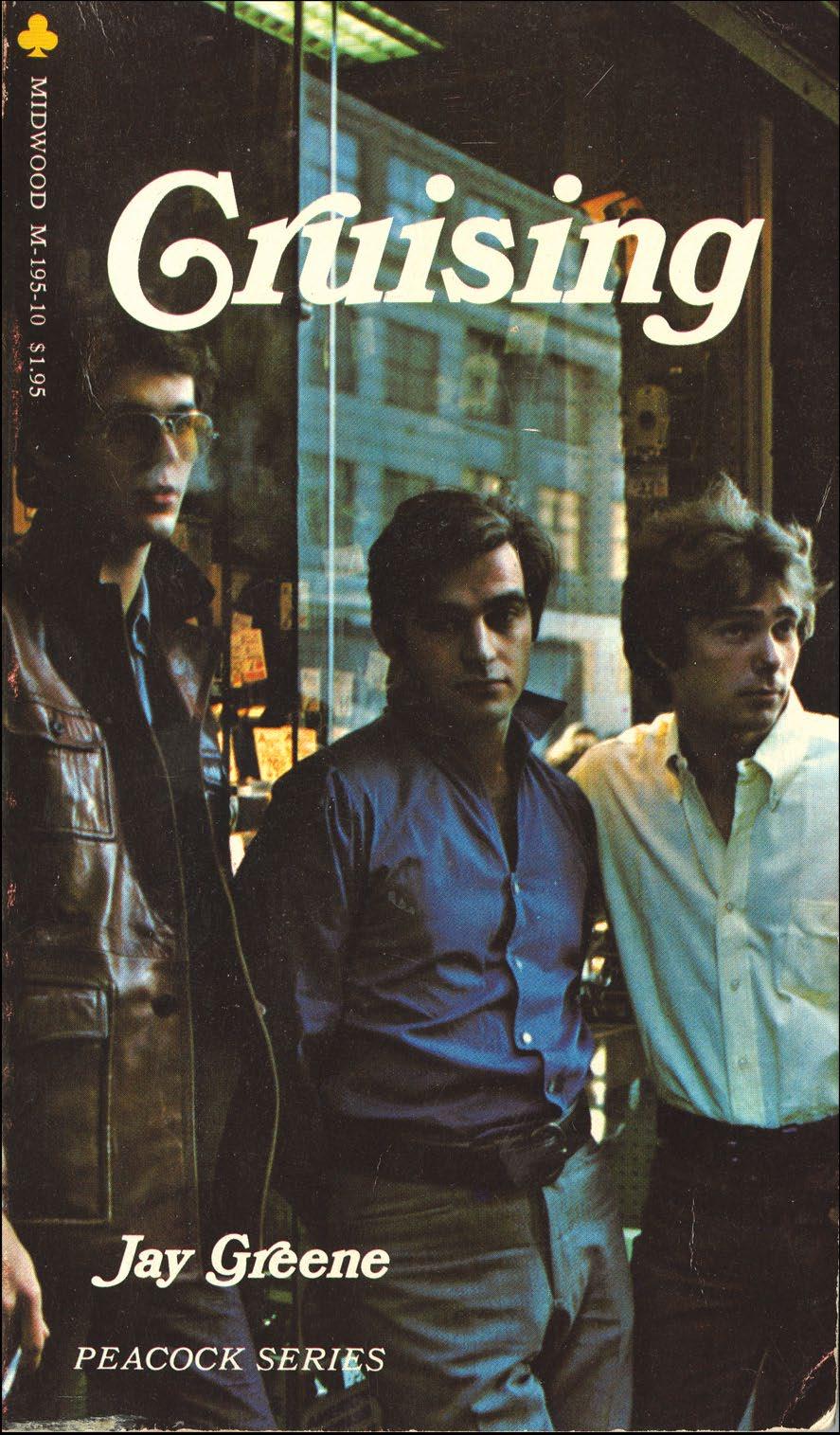
BACKGROUND: A policeman in tight-pants disguise waits on a Hollywood street to be solicited by homosexuals cruising by in cars.
Bill Eppridge, photographer "Homosexuality in America" LIFE Magazine. June 26, 1964.
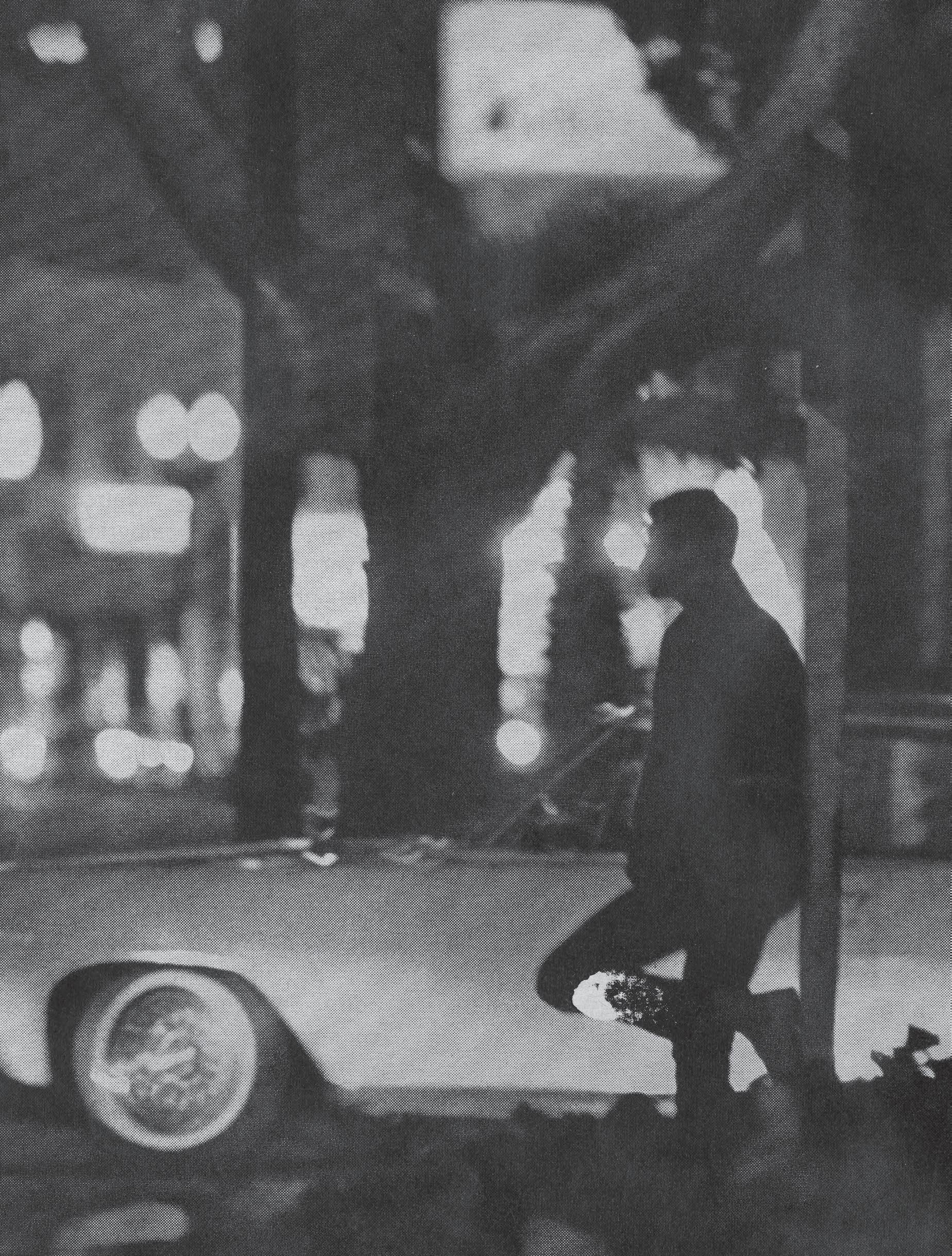
Sometimes it’s an early morning meetup, a nooner, or late at night.
prowl searching for it—sometimes two, three, four times a day.
I know exactly what I’m cruising for. And every day I’m on the
musky places like back rooms, bookstores, and basements.
It’s my fetish. I'm on the hunt on the internet and in person, scouring musty,
Unsuspected characters and plots...the frat-boy, preppie types, daddies, truckers, or muscular.
I love the rush of eyeing a piece for the first time. Sniffing out competing offers. Playing hard to get as the competition heats up. I’ll do anything to get what I want before anyone else.
Avoiding the expected troll, ready to cock-block the experience.
I slowly begin my journey of exploration, savoring every sharp breath as I greet the package with nervous anticipation, my pulse ever-quickening.
A nervous excited sensation, akin to entering an adult book store. Quick to enter. Head down. Incognito. Pretending to browse, but dart directly to the video gallery.
With an erotic charge surging through me, I stare at it, x-raying what’s inside. The palms of my hands are wet and clammy as I trace the outline with my fingers. Each one is so different in size and shape. Anticipation builds as I begin unwrapping.
Nerves fluttering and vibrating in intoxicating release.
My fingers burn feverishly as I explore the contents.
the package, taking care not to pierce what’s inside.
With curiosity and excitement, I gently peel open
I know money talks. And while repeat customers have an advantage, a firm offer is always difficult to decline.
There are rules to cruising.
Eye contact.
Subtle head nod.
Gentle bite on the lip.
A final surrender.
I’ve been at this for years, so I no longer feel repulsion or guilt for my physical need.
I know what it is I crave.
Gay ephemera. And I'm addicted to cruis'n it.
Adjusting crotch grab.
and
Don't interrupt without an invitation.
COME FROM A FAMILY OF COLLECTORS. My dad still owns a collection of original Lionel® trains. My sister’s room was decorated in red and blue to match her Raggedy Ann doll collection. My mom, however, was the queen picker.
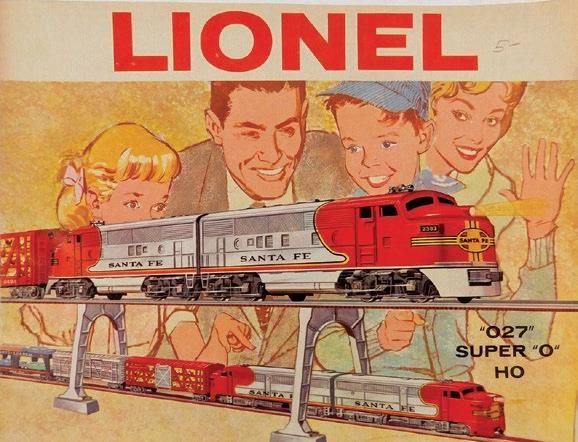
For years she collected various items to decorate each room in our house according to a different theme. We had an owl room, a frog room, a room dedicated to crimsonhued blown glass, and a kitchen teeming with cast iron cookware and plastic Aunt Jemima figurines. My favorite was her collection of salt and pepper shakers, which she proudly displayed in an antique cabinet with sliding glass doors. Like Annie Wilkes, Kathy Bates’s character in Misery, she knew when any single one of them was even slightly out of place. She went so far as to train my sister and me to cruise yard sales and antique stores for new shakers.
I, too, had many collecting phases: pandas, Dungeons & Dragons, Batman toys (I still have most of my original collection from the ‘70s), and vintage pieces like cameras and radios, gasoline signs, and tin toys. After I left home for college, I put the brakes on my collecting and hoarding— that is, until I started grad school.
Now, I am obsessed with researching and collecting memorabilia that charts the course of queer design history from the mid-twentieth century to today.

Sorry, Mom.
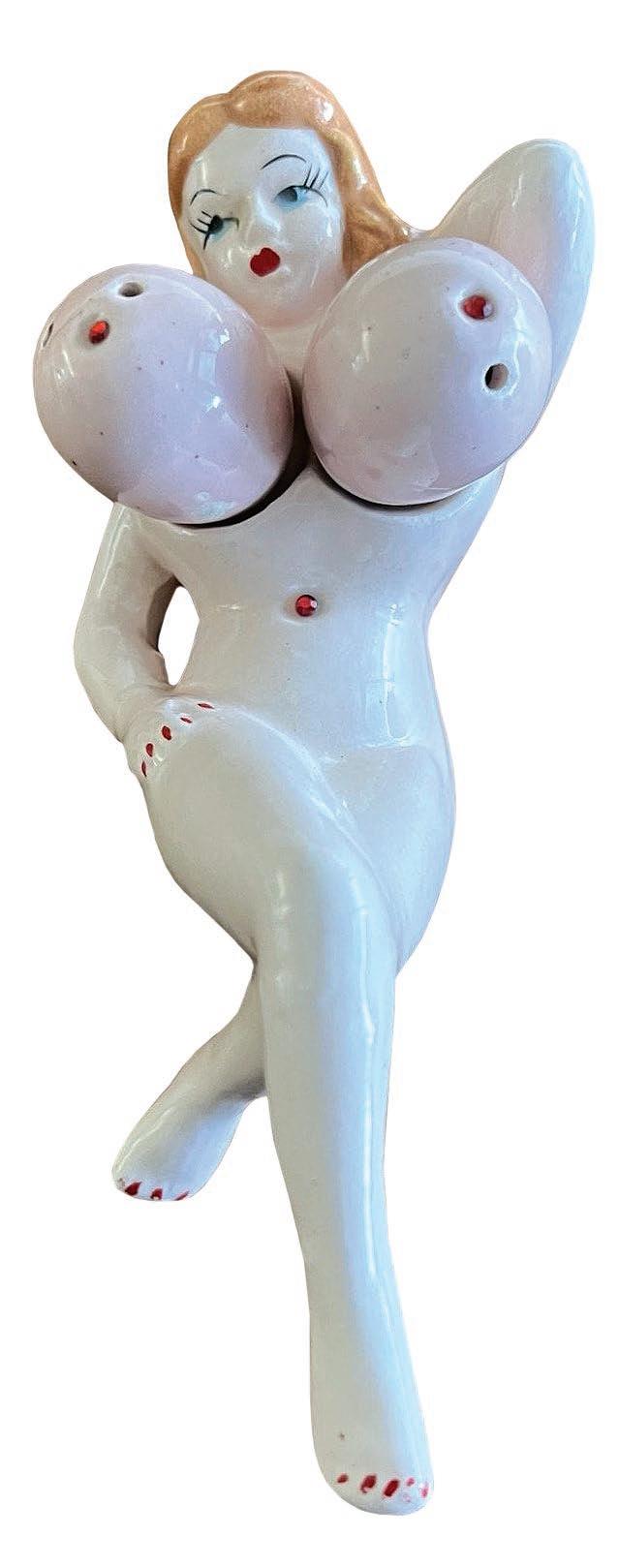
Where does an obsession begin?
Sometimes it starts with curiosity. Other times, it’s about seeking pure pleasure, status, or prestige, or showcasing your love of a subject. Whatever the reason, it starts with one piece, then the addition of a complementary piece here and there, accumulating slowly over time until, as in my case, you need an intervention.
My collection makes me feel like I’m stepping back in time. With each new object I add, I feel the rush gay men of the 1950s must have felt unearthing a pulp novel about swarthy sailors, or a beefcake magazine containing page after page of glistening muscles and bulging packages. It must have been like that time a much younger me and a friend found his dad’s collection of Playboy magazines.
Growing up in a rural town, I didn’t know about anything being “gay,” except that playing “smear the queer” was a frequent game at recess. There was one woman in town who everyone always referred to as a “lezzie.” But that was it.
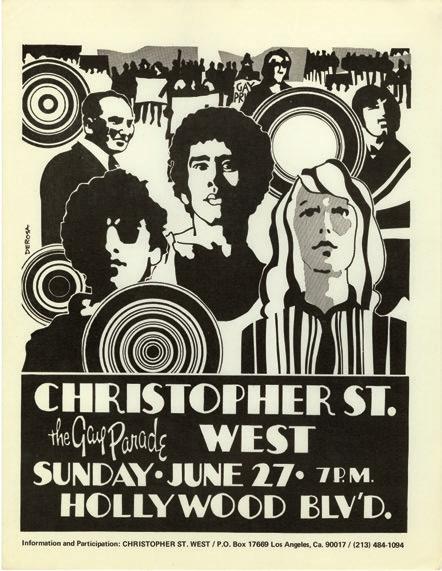
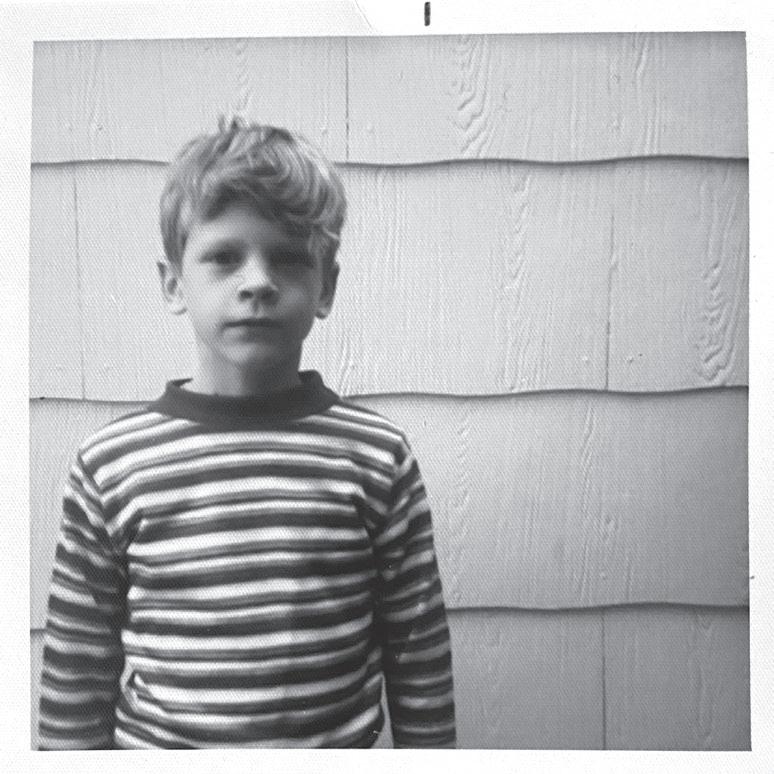
So although it started with an obvious visual attraction to hunky male models, my collecting ultimately developed (and rocketed out of control) because of my curiosity for gay history. I wanted to know more. I wanted to uncover as much as I could about these stories, these people who were kept from me growing up.
“How do I not know any of this?” I repeatedly ask myself. At 55 years old, I’m still playing catch-up. I’ve become obsessed with the heroes, protests, and perseverance for equality—an equality we’re still fighting for today.
ABOVE Tony Derosa
Magnus Hirschfeld was a German doctor, sexologist, and early advocate for gay and transgender rights. Hirschfeld studied medicine and earned his doctorate in Berlin, where he developed the idea of the universality of homosexuality. He founded the Scientific Humanitarian Committee, the first-ever gay rights organization, which sought to repeal Paragraph 175, the law that criminalized homosexuality in Germany. He believed that science and knowledge could cure prejudice, and argued that queer people were natural and born that way. He also believed that sexuality fell on a spectrum and that gay rights and feminism were closely entwined.
Dr. Magnus Hirschfeld, 1927. © Magnus-HirschfeldGesellschaft e.V., Berlin
Growing up in a rural town, I didn’t know about
anything being “gay,” except that playing
“smear the queer” was a frequent game at recess.
"Christopher St. West: The Gay Parade," 1971Announces the second Gay Pride Parade held on Hollywood Boulevard. After no other printer would agree to print this handbill, the organizers found Peace Press, an anti-war collective, willing to do the work.
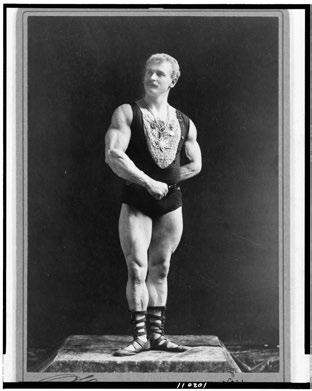
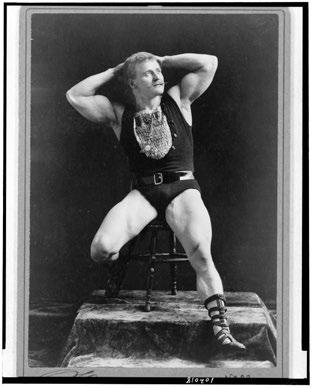
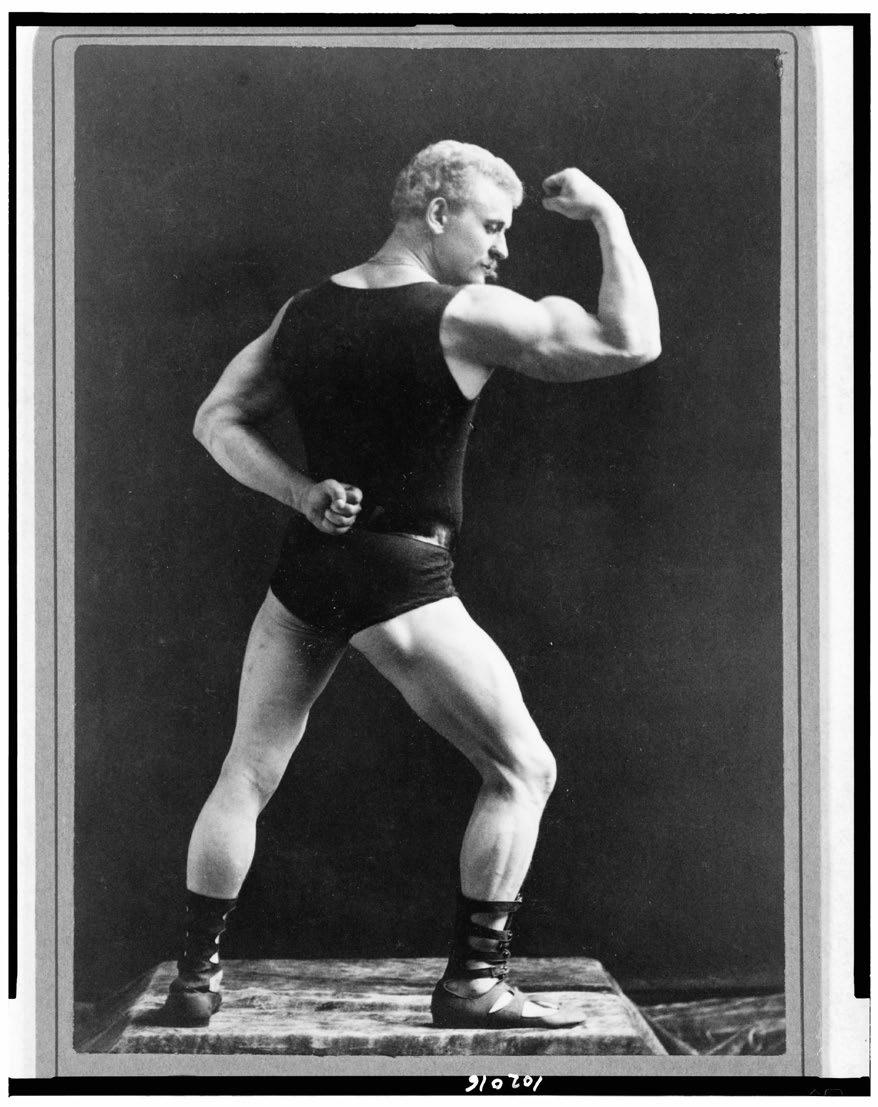
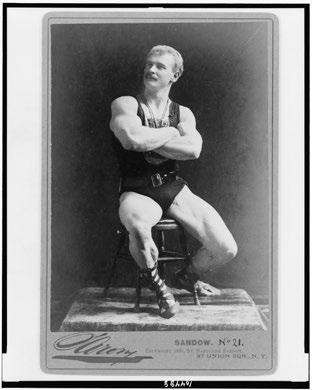 Eugen Sandow, photographer Falk, B. J. (Benjamin J.), 1853-1925, ca. 1894
Albumen silver print
Eugen Sandow, photographer Falk, B. J. (Benjamin J.), 1853-1925, ca. 1894
Albumen silver print
As I researched new pieces and learned more about the artists behind them, each new discovery was connected to another. My research began to look like a detective’s evidence board, with printouts, color-coded dots and pushpins, and red yarn connecting the data. Never did I imagine I would come to love the process of becoming a researcher, curator, and archivist.
But how did this all begin? And why this era?
As I began immersing myself in gay history, one of my advisors recommended listening to a podcast called Bad Gays
The first episode I listened to covered the history of Eugene Sandow, a nineteenthcentury Prussian bodybuilder and showman who spread the gospel of physique culture (and his legs) around the world. Instantly, I was hooked.
As I feasted on each episode of Bad Gays, I found myself most compelled by the stories of people from the mid-twentieth century. (Which was no surprise to me— I’ve always felt like I should’ve grown up in the 1950s, not the ‘80s.)
The postwar era was a critical time for gay liberation, and a national gay culture was brewing. Homosexual men were searching for their identity: What did it mean to be a man sexually and emotionally attracted to other men? Decades before the internet and a vast landscape of hookup apps put our history and our bodies at each other’s fingertips, it was print culture—easy to disseminate and difficult to track— that helped gay men find their sexual compatriots.
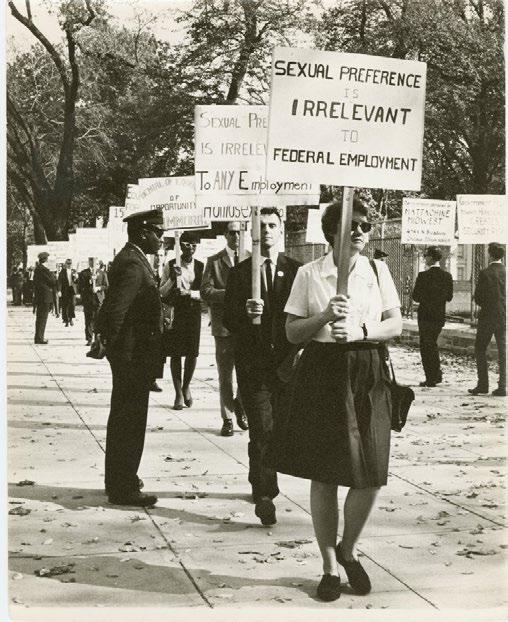
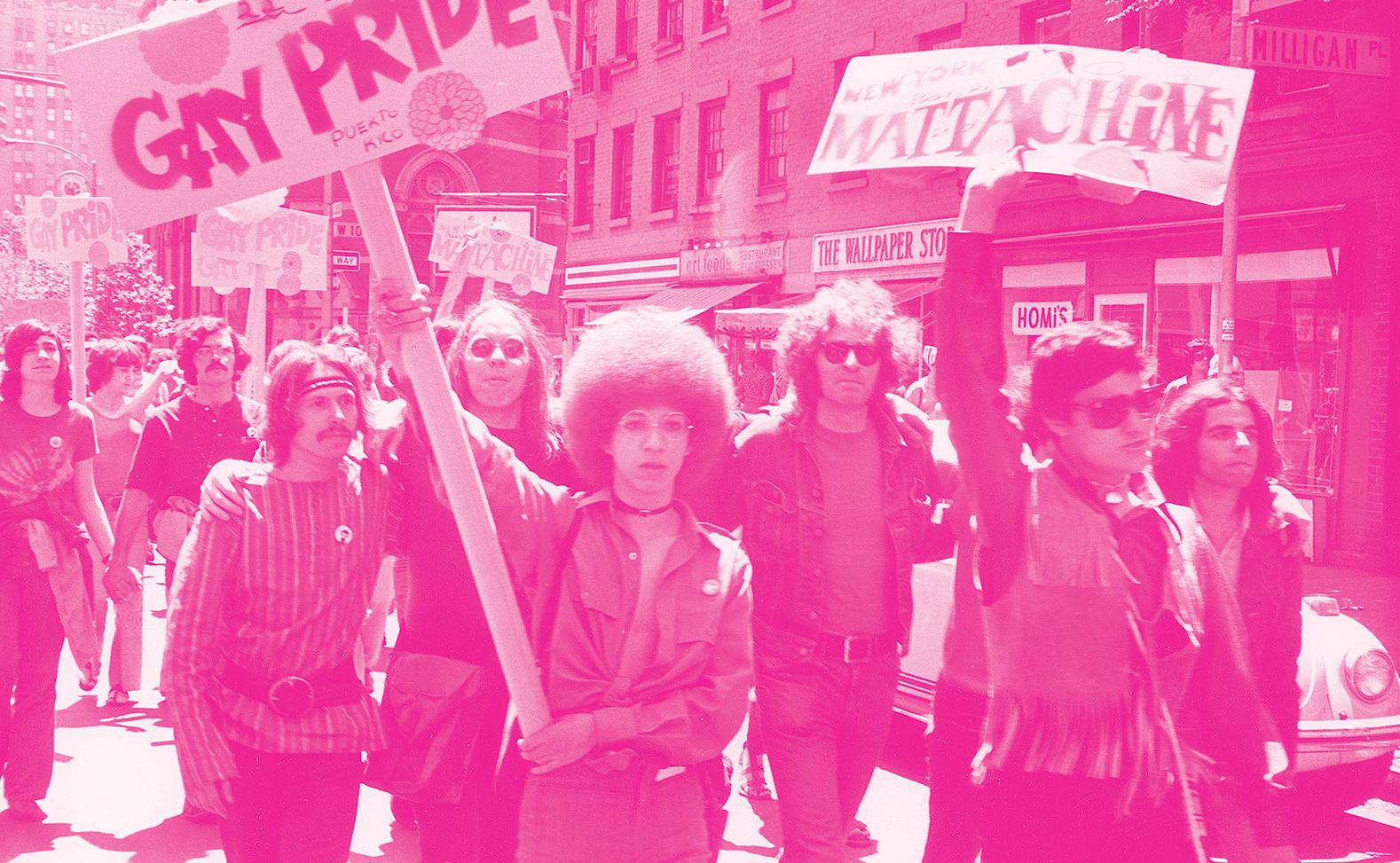 BELOW: Barbara Gittings and other gay rights activists picket outside the White House in 1965. © Kay Tobin Lahusen The New York Public Library
BELOW: Barbara Gittings and other gay rights activists picket outside the White House in 1965. © Kay Tobin Lahusen The New York Public Library
Gay pulp fiction not only filled a literary void, but also helped shape a gay identity for readers, paving the way for the gay liberation movement of the post-Stonewall era. Gay pulps also affirmed that gay men were not alone—and they certainly didn’t have to lead miserable lives because of their sexuality. Pulp novels were an enormous breakthrough in bringing the topic of homosexuality to a broader public discourse and illuminating some of the many ways gay men lived, thought, desired, loved, and survived.
Physique magazines and other print publications featured bodybuilders in poses and settings inspired by Classical art as a disguise for sharing homoerotic images. These publications also served as a gallery for gaggles of gay artists and photographers, most of whom had to work under pseudonyms. Constantly fighting censorship and evading obscenity, physique culture magazines, calendars, mail-order catalogs, and books sparked the first chapter in modern gay consumerism.
These publications and the artists behind them, many of whom were contemporaries of my parents, aren’t even hinted at in colonized history classes. Neither are the events that shaped the struggle for equality. The Lavender Scare, Joseph McCarthy ’s purging of “deviants” from
CLOCKWISE:
Lance Lester
Cruising Horny Corners, 1967
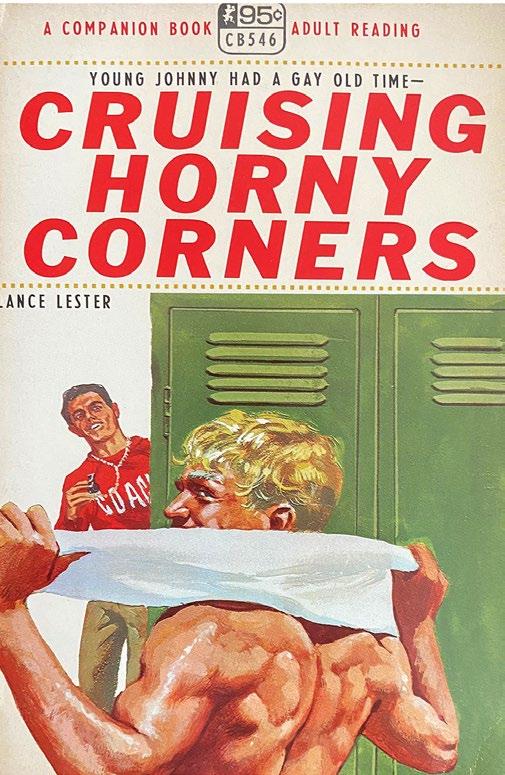
Companion Books
Phenix Publishers, Ltd.
San Diego, CA
J. Martin Levy
Just Following Orders, Sir!, 1982 Eros Publishing, Company, Inc.
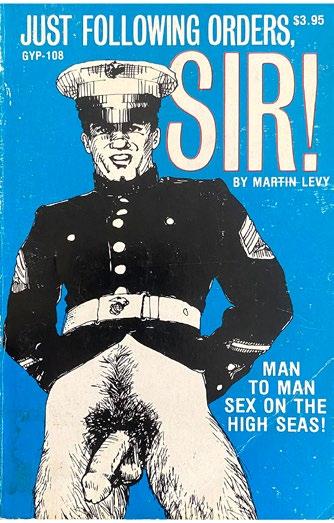
Wilmington, DE
Men and Art, vol. 3, 1955
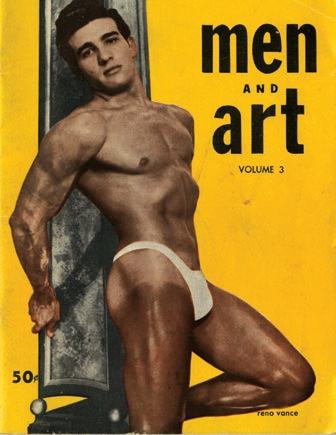
Studio Publishers
New York, NY
Physique Pictorial, vol. 14, no.1 (July 1964)
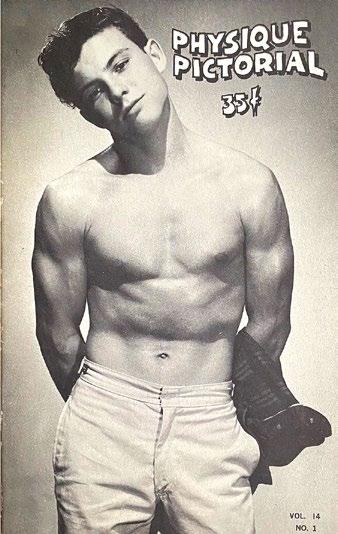
Athletic Model Guild
Los Angeles, CA
LEFT: Hal Fischer
The Gay Seventies, from Gay Semiotics, 1977
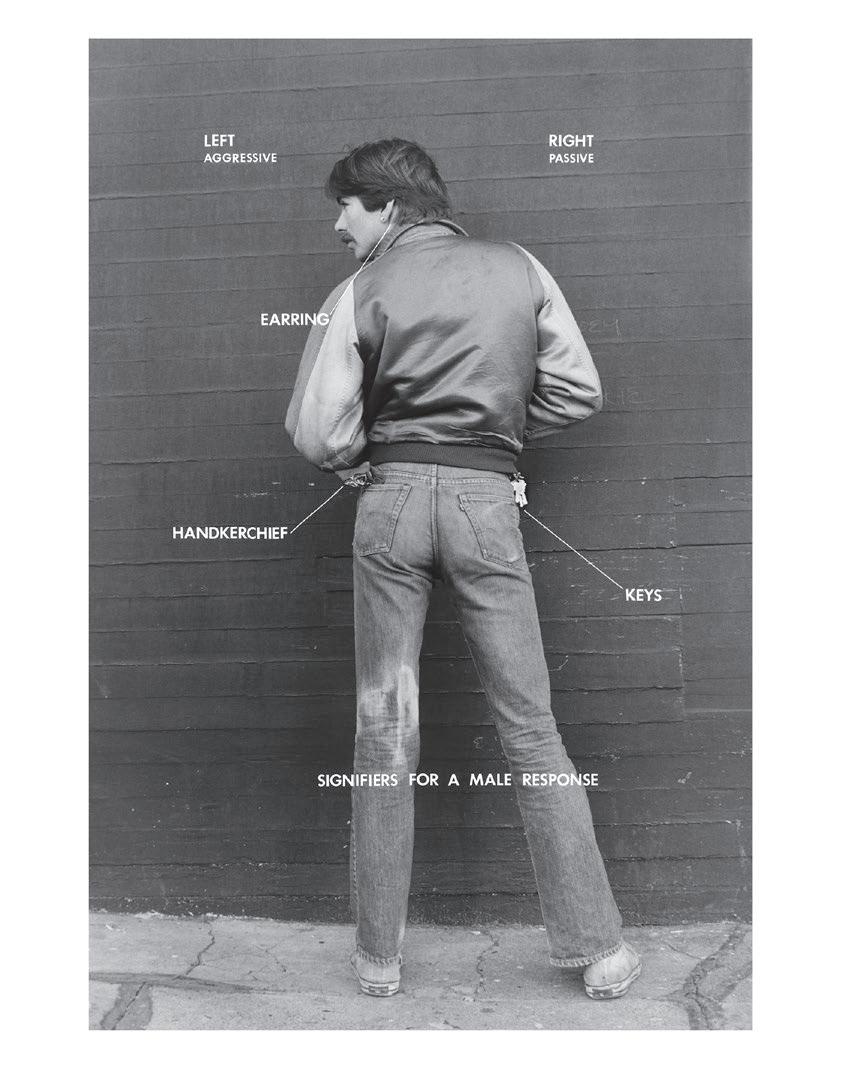
© 2019, Gallery 16
© Hal Fisher
CENTER:
Marsha P. Johnson
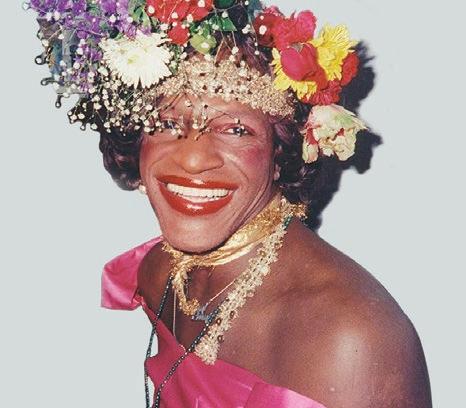
Photographer unknown
BELOW:
Fred W. McDarrah, photographer
The Sip-In protest at Julius’ bar in Greenwich Village, April 21, 1966, led by Dick Leitsch (staring at bartender), president of the Mattachine Society of New York, with three other Mattachine activists. From left, John Timmins (turned away from the camera), Dick Leitsch, Craig Rodwell, and Randy Wicker. The photo captures the moment when the bartender refused service after the four announced that they were homosexuals.
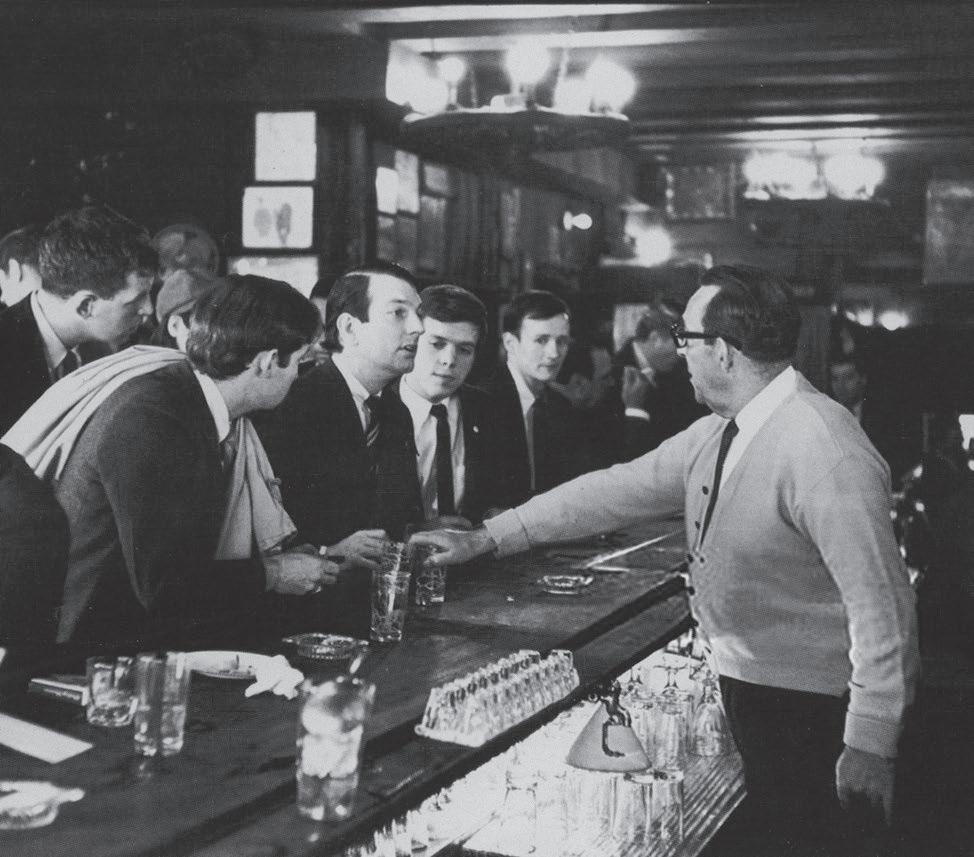
© Fred W. McDarrah, courtesy of his estate gaysemiotics.com
the U.S. government who threatened the “American way of life.” The breakthrough in gay liberation at the Stonewall Inn. The waking nightmare of the AIDS pandemic. The hero-activists like Harvey Milk, Marsha P. Johnson, and members of the Mattachine Society.
The mid-twentieth century was instrumental in the fight for civil rights. A time during which a group identity emerged—one that would enable gays, lesbians, bisexuals, transgender people, and allies of every stripe to rally together and demand change. And yet, none of this factored into the history books handed to me throughout my education.
So my obsession with gay history continues to grow as I cruise for more and more memorabilia, each new piece a portal to stories and people I’ve never known.
Ironic that all the gay stuff I hid during my youth is now proudly displayed in my office and archived for the world to see.
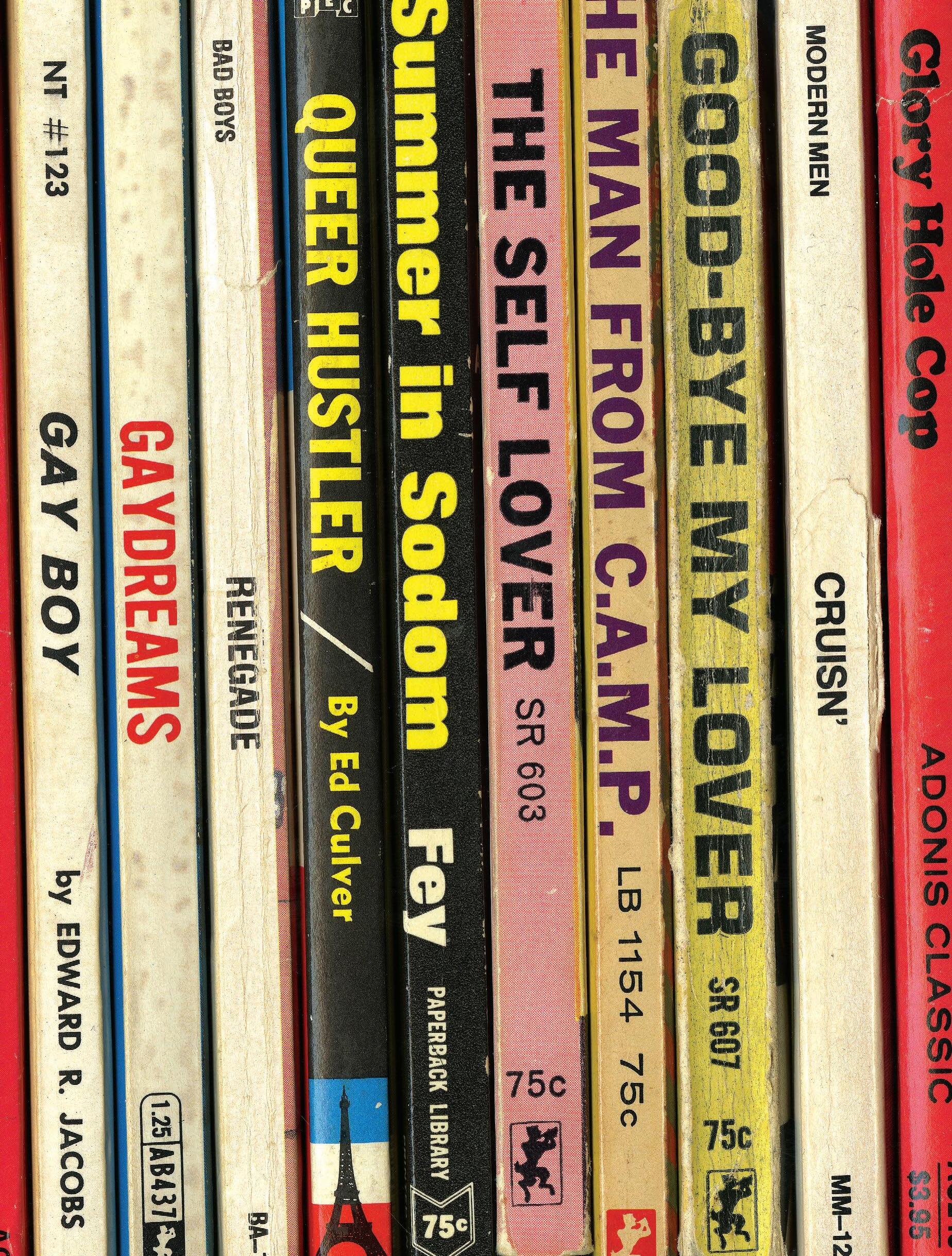

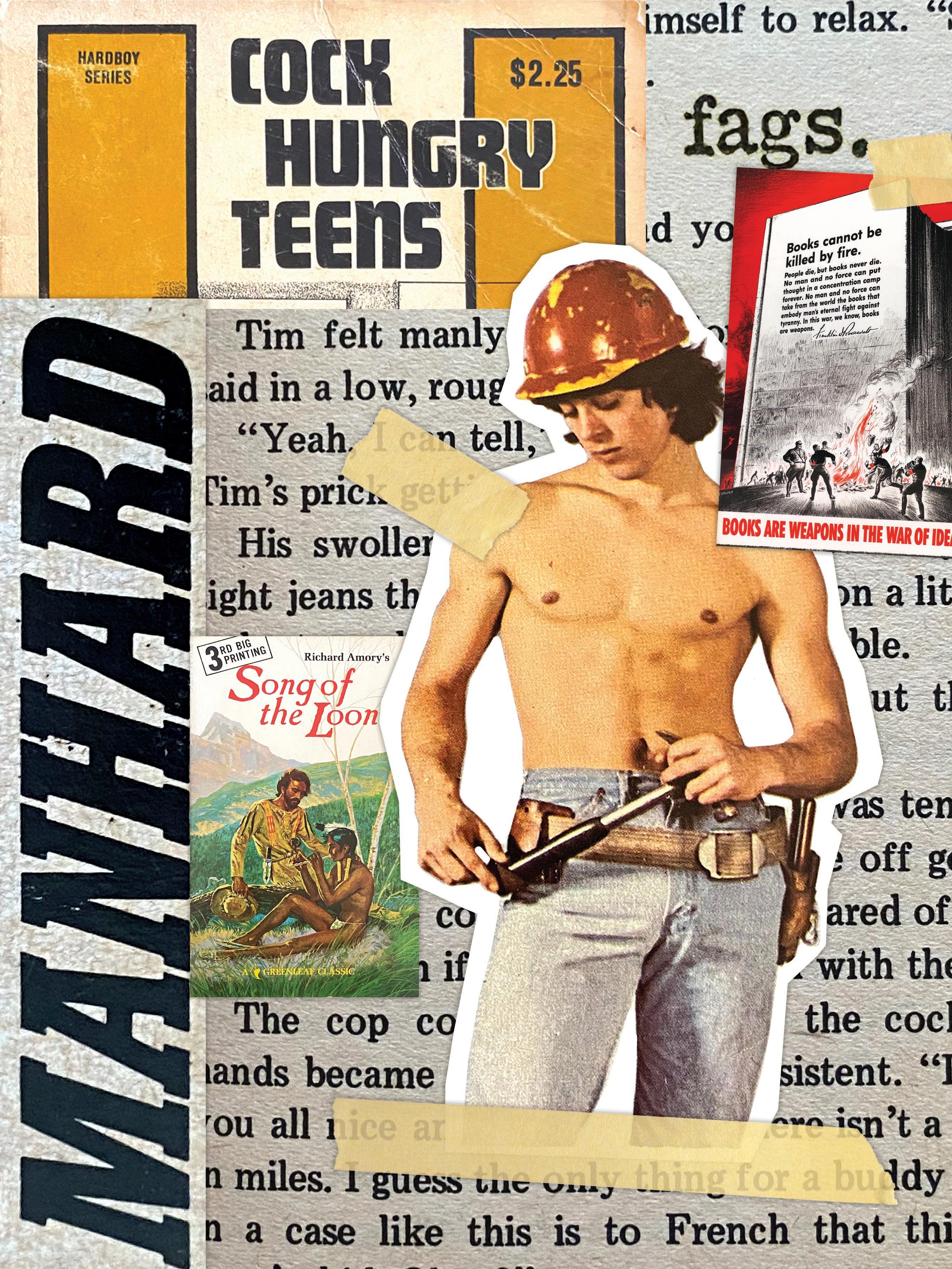
PREVIOUS PAGE:
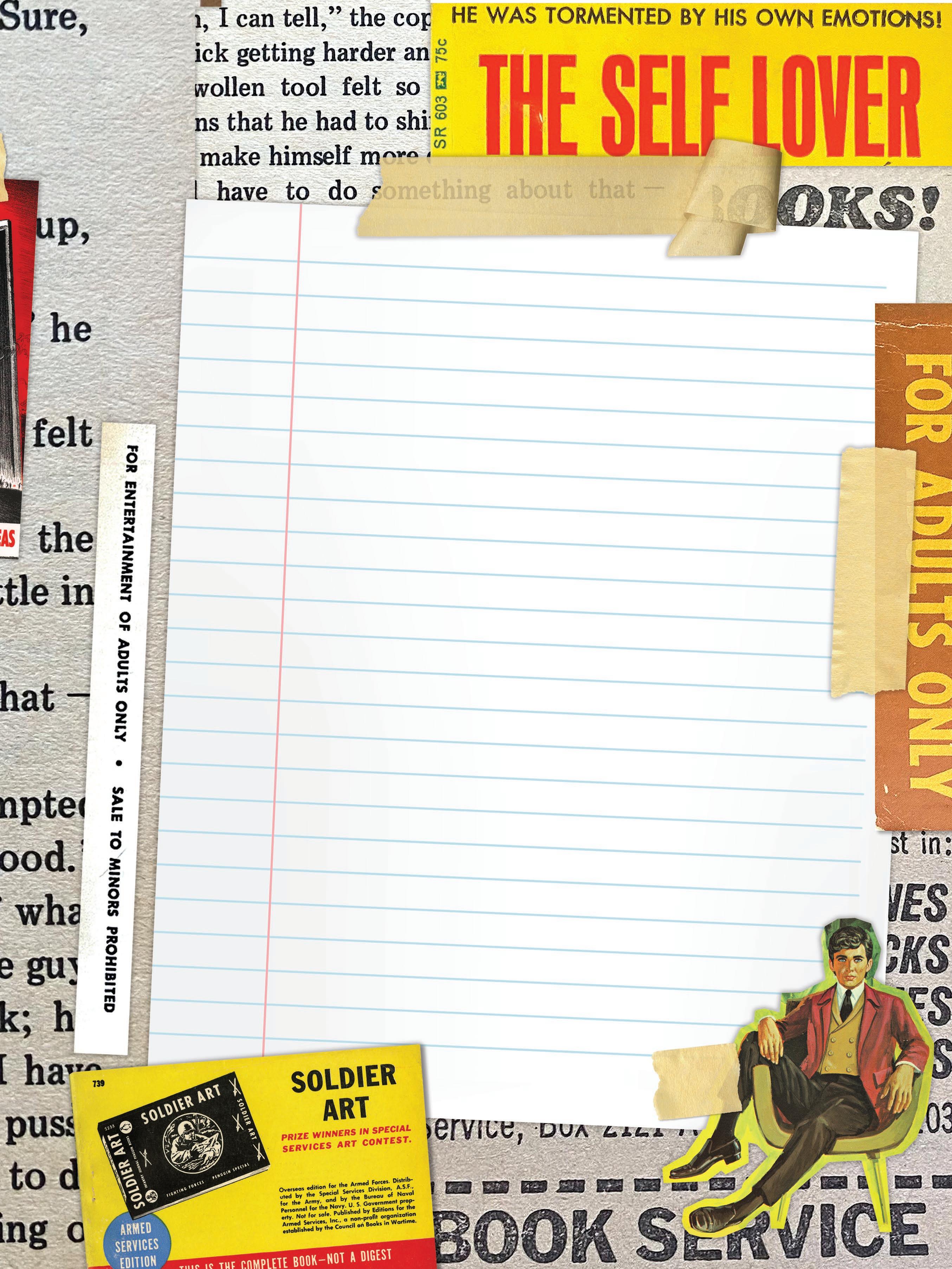
fiction books, 2022
The publisher W. W. Norton may have coined the phrase “books are weapons in the war of ideas,” but President Franklin D. Roosevelt made it famous during World War II, when he sought to contrast Nazi book burnings with America’s intellectual idealism.
To bring the phrase to life, the U.S. government authorized the distribution of a special series of books, the Armed Services Editions (ASE), to service personnel during the war. Between 1943 and 1947, the nonprofit organization Council on Books in Wartime produced more than 122 million paperbacks for free distribution to servicemen of the U.S. Armed Forces. These oddly shaped books were designed to fit inside the pocket of uniforms and provide ease of reading in difficult, low-light conditions.
The books initially included classic literature, mysteries, humor, westerns, and poetry, though in later years, nonfiction books entered the mix, designed to prepare soldiers for careers once they returned home.
As popular as the pin-up girl and easier to trade than cigarettes, ASE books were read in trenches at the front line, on ships, in prisoner-of-war camps, in hospitals and mess halls, and while stationed on military bases. Each service member was issued a book as they boarded the D-Day landing craft.
AY PULP FICTION, or gay pulps, were printed works of fiction centered around male homosexuality. They were cheaply produced, and just like ASE books, could easily fit into the pockets of a military uniform—or be easily concealed in a suit jacket or a pair of jeans. Although the printing process for these pulps was anything but flawless, with moiré patterns visible without a loop and crude typography, their key selling point was easy to discern: Bold, arousing cover art depicting overtly sensual scenes featuring a lone man, two men, or even two men and a woman.
Because many of these early novels were published just after World War II, the majority of characters were veterans still dealing with the emotional and physical damage inflicted on them by the war; few were coming-out novels. But that didn’t stop writers from printing titles that could elicit anything from a smirk to a semi. Among the campiest and kitschiest of the titles were Any Sex Will Do, Buffy Rides Again, The Devil Is Gay, Donnie and Clyde, and Gay But Not Happy
Between 1940 and 1969, mainstream presses published around three hundred pulps that featured substantial gay male characters, plots, or themes. These paperbacks lured potential readers from the racks of drug and dime stores, bus depots, grocery stores, and airport terminals. They were conveniently displayed next to straight pulp novels, which allowed buyers to quickly snatch their spicy selection and make their purchase with relative anonymity. (Although some merchants required interested parties to take a risky walk of shame behind a black curtain to the “pornographic” section of the store, where one had to hope to get in and out before being caught in the act.) The cheap prices of gay pulps meant buyers could tuck them away after reading or share them with another Friend of Dorothy.
The first pulp approach to homosexuality was 1952’s Men into Beasts by George Viereck, who was sent to prison during World War II for working as a paid propaganda agent of Nazi Germany. Men into Beasts is a memoir of the discomforts, loss of dignity, and brutality encountered in prison life, with a significant focus on homosexuality and rampant male rape among inmates and guards. The book’s cover illustrates a discreetly posed nude man kneeling in a prison cell while a pair of prison guards abuse him. The text on the back of the book blames prison riots on “homosexual slavery— inmates forced to practice abnormal acts with sex deviates who roamed the prisons at will.”
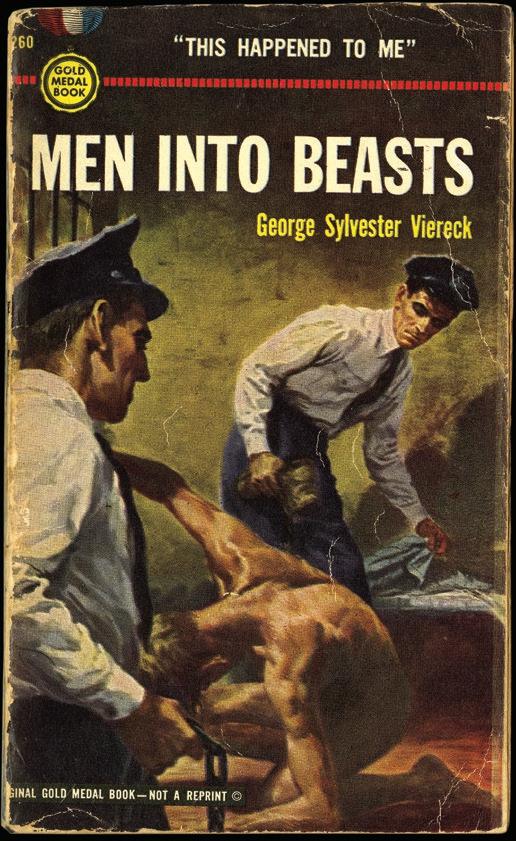
The mass-market paperback industry took notice of this underserved audience and began filling the niche by the late 1950s, thanks to the loosening of censorship laws, which now allowed novels with graphic homosexual themes—even positive depictions of homosexuality—to be distributed by mail so long as they could be justified as having “literary value and no direct appeal to prurient interest.” 1
But as the thirst for these types of books grew, so did the censorship laws encroach once again, significantly impacting the sexuality that could be portrayed. If a book was published depicting gay male characters positively—showing them as well
adjusted, mentally healthy, and capable of having significant, loving romantic relationships—they were sure to be deemed obscene, which meant they could be seized by the U.S. Postal Service. To keep the books in circulation, publishers had to ensure that by the end of the story, their gay characters were either committed to a mental hospital or killed in some dramatic fashion—either slain by a new heterosexual lover, or by ending their own life by driving off a cliff or hanging themselves.
The fates of homosexual characters began to shift as the gay rights movement picked up steam in the late 1960s. What was once an underground society made up of secret handshakes, codes, and pseudonyms was now a visible subculture with its own community of writers, who began producing stories that were proud, outspoken, and fearless. Gay readers could now dive into page-turners that portrayed them accurately and positively—that is, literature that left them alive in the end. Censorship laws began to ease again, which paved the way for a more supportive gay publishing movement. Eventually our beloved gay characters could make it to the final page alive, find love, and live happily ever after.
Gay pulp appropriated pre-existing genres and narrative tropes and took up familiar genres such as westerns, mysteries, and chest-heaving romances. These novels also began to center around coming-of-age narratives, with a particular emphasis on discovering one’s homosexuality, and erotic short stories involving archetypes such as hustlers and sailors.
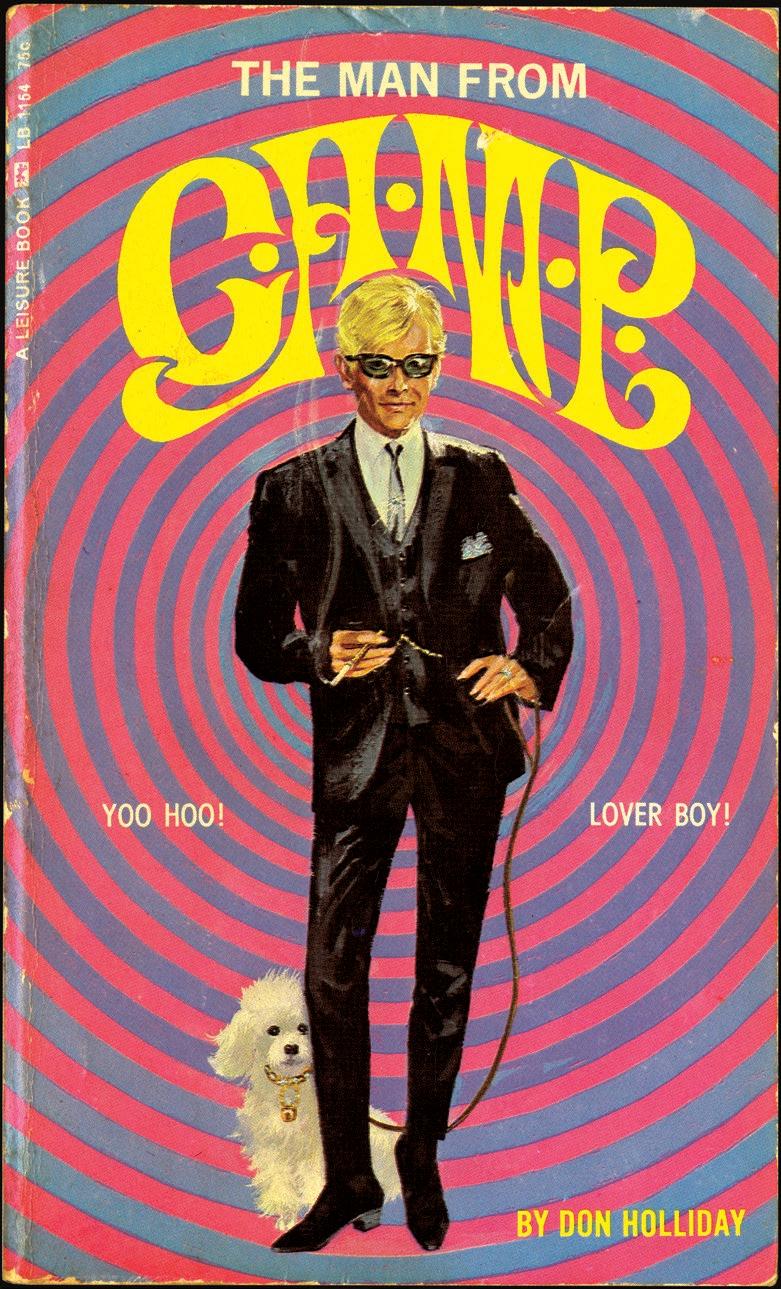
Earl Kemp, the editor of Greenleaf Press, switched the business’s focus to gay pulp fiction after the success of titles like Victor Banis’s Man into Boy (1968)—sexually explicit and highly emotional coming-out stories set in small-town America. These pulps not only helped shape a gay identity in pre-Stonewall America, but also validated gay sexual desire for the reader, particularly
in rural areas where awareness of homosexuals was nonexistent. They were both emotional and visible markers of personal and group identity.
Pulps also served an educational purpose. Embedded deep within their plots were maps and clues about how gay men might live their lives—similar to self-help and how-to guides. And because they could be easily accessed by men across the country, pulps played a significant role in expanding knowledge about the gay community and their experiences, greatly reassuring men who desired sex with other men that they were not alone. As gay visibility increased throughout the decade, these novels spread the word about the many ways gay life thrived in different parts of the country.
Don Holliday
The Man from C.A.M.P., 1966 Corinth Publications San Diego, CA
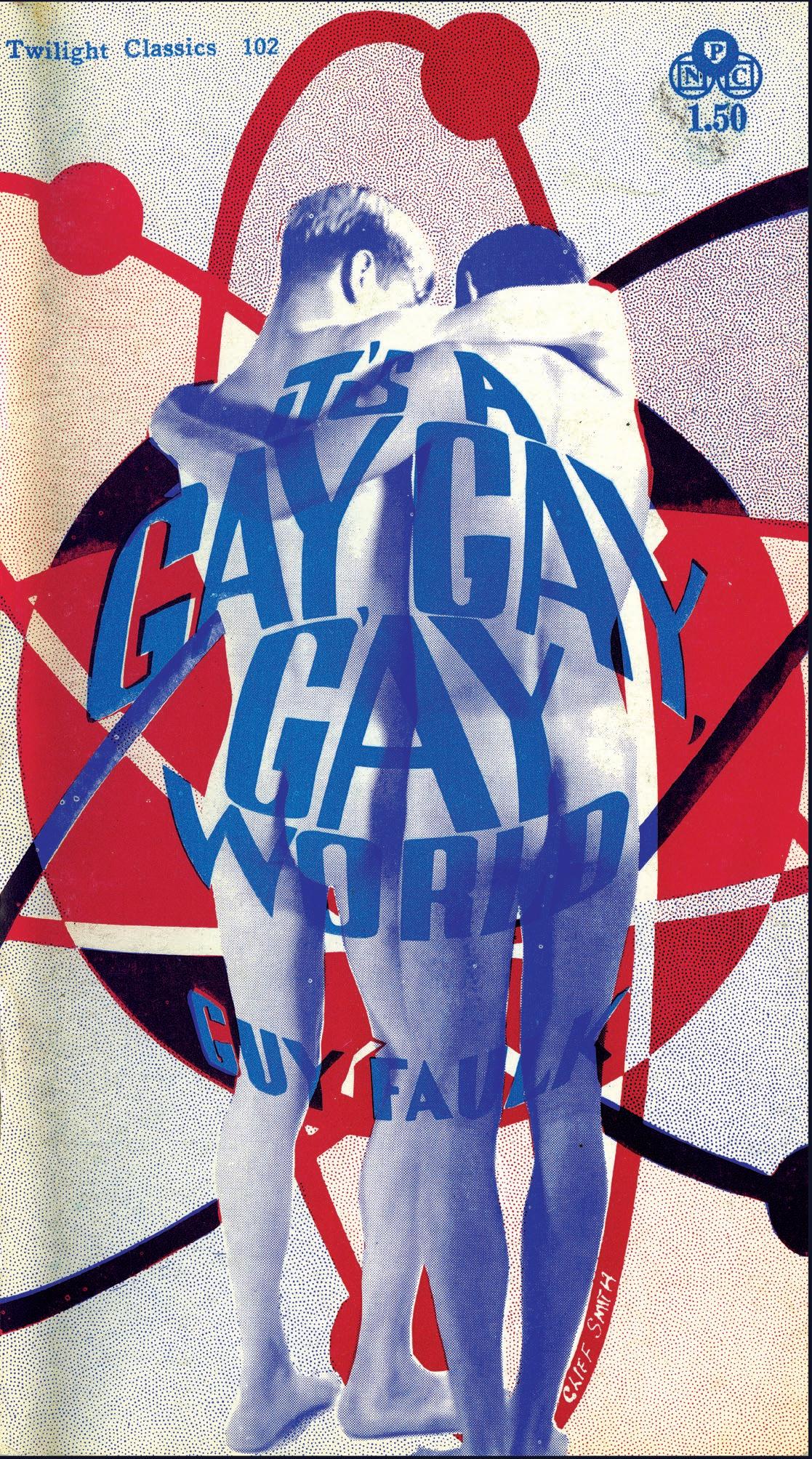
Not written for their literary merit, most gay paperbacks published in the late 1960s by small, independent gay presses like the Guild Press, Greenleaf Classics, and the Publisher’s Export Company were explicitly pornographic. Chris Davidson’s work for Greenleaf Classics put steamy twists on familiar genres: sex between Yankee and Confederate soldiers during the American Civil War, sexual sadism among members of the Third Reich, and sex between prison guards and inmates. Richard Amory’s Song of the Loon has a story similar to The Last of the Mohicans, with a frontiersman and Native Americans having sex. Carl Corley was a similar writer of pulp pornography, although with a tone that was less steamy and more commonplace, his stories usually set in the American South.
Many pornographic pulps originated in beefcake, or “male physique” magazines, print precursors to gay porn. As such, their titles could be far more provocative: Summer in Sodom; It’s a Gay, Gay, Gay, Gay World ; Gay Whore; Hollywood Homo; Gay on the Range. These books also lead to a blossoming in gay consumerism, thanks to discreet mail-order services, covert book clubs, and secret “H” (homosexual) mailing lists, which allowed men to shop for new titles without the potential shame and judgment that came with purchasing these titles in public.
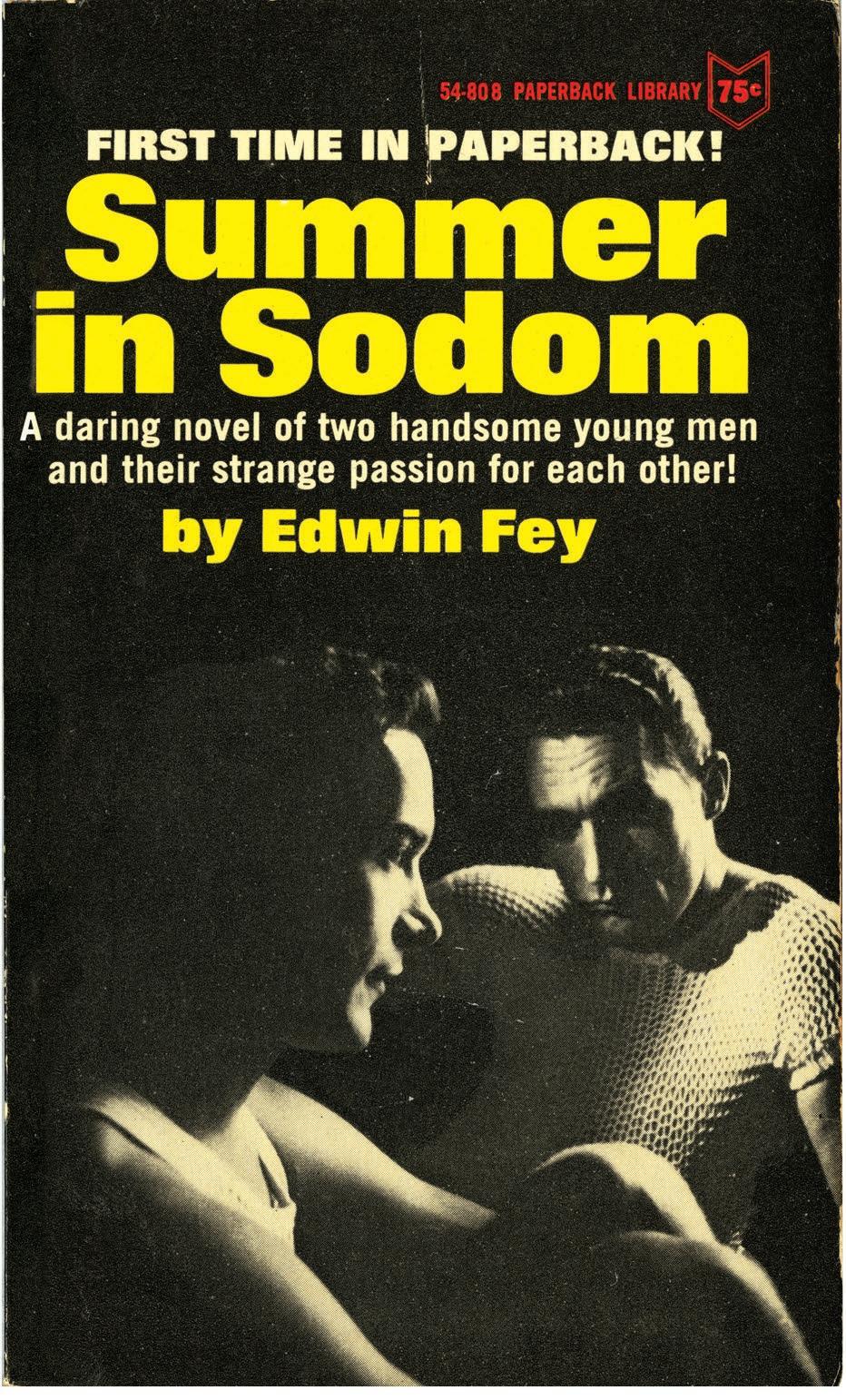
Pulps were both a visceral and visible marker of personal as well as group identity. They played a large role in expanding gay men’s experience of community and reassuring men who desired sex with other men that they were not alone.
TYPOGRAPHY: Text only, no illustration.
HETERO: Man and woman only, but the cover leaves the relationship questionable.
SOLITARY: A single male figure in isolation.
BOTH LOOKING AWAY: Two men looking away from each other, a denial of attention. Perhaps cruising?
ONE LOOKING AWAY: Two men, one looking at the other who is looking away (either at the reader, at a woman, or into space). The male gaze is there, but not returned.
NUDE PAIR: Two male nudes, transforming the reader into a wide-eyed voyeur.
CONCERNED WOMAN: A woman consoling a man. But who is she—wife, girlfriend, or “beard”?
TRIANGLE: Two men and a woman— threesome, siblings, competing lovers? Definitely a mini soap opera scene.
CRUISING: A more daring variant of “LOOKING AWAY,” with one man looking at another who is turning as though about to return the gaze. Is this a teasing détente, or playing hard to get? And who makes the first move?
LURKING MALE: A man watching or emerging from the doorway or around a corner. Surreptitious menace, or Peeping Tom?
LOOMING MALE: A man standing behind or to the side, about to intrude on the action. Overt menace, or cockblocker?
MEN NO LONGER LOOKING AWAY: No longer denying the male gaze, both men begin to turn toward it. Acknowledged attention and recognition.
DIRECT GAZE: A single man, sometimes wholly or partially naked, looking at the reader with a horny, come-hither gaze.
FACE TO FACE: Two men looking at each other. Returned attention, or simply a good-ol’ eye fuck?
HOLDING HANDS: Two men holding hands. Mutual affection is established.
KISS: Two men kissing. (A relatively rare cover motif.) Deep, returned affection and emotional consummation.
NUDE: Either full or partial (e.g., clad in a towel, jockstrap, etc.), transforming the reader into a voyeur.
SEXUAL ACTIVITY: Various poses both overt and implied.
PEEPHOLE: Scene viewed through a glory hole, keyhole, broken window, hole in a fence, or other modes of secret observation.
REVERSE COVERS: The type of paperback published by Greenleaf Classics—oversize, with the text beginning upside-down on the back cover.
COVER APPEAL: Negligible gay content but with an appealing cover, such as the 1966 Bantam edition of Roman Gary’s The Ski Bum, which shows a winsome shirtless youth giving a come-hither look.
What is it that attracts me to these books?
First, it’s the titillating cover illustrations. (Not sure titillating is accurate, for there are no “tits” per se—but certainly plenty of beefy, shirtless men.) Then the setting grabs hold of me, whether it’s a locker room, the vast prairies of the Wild West, a jail cell, or the glory hole in a public bathroom. (There’s something catered
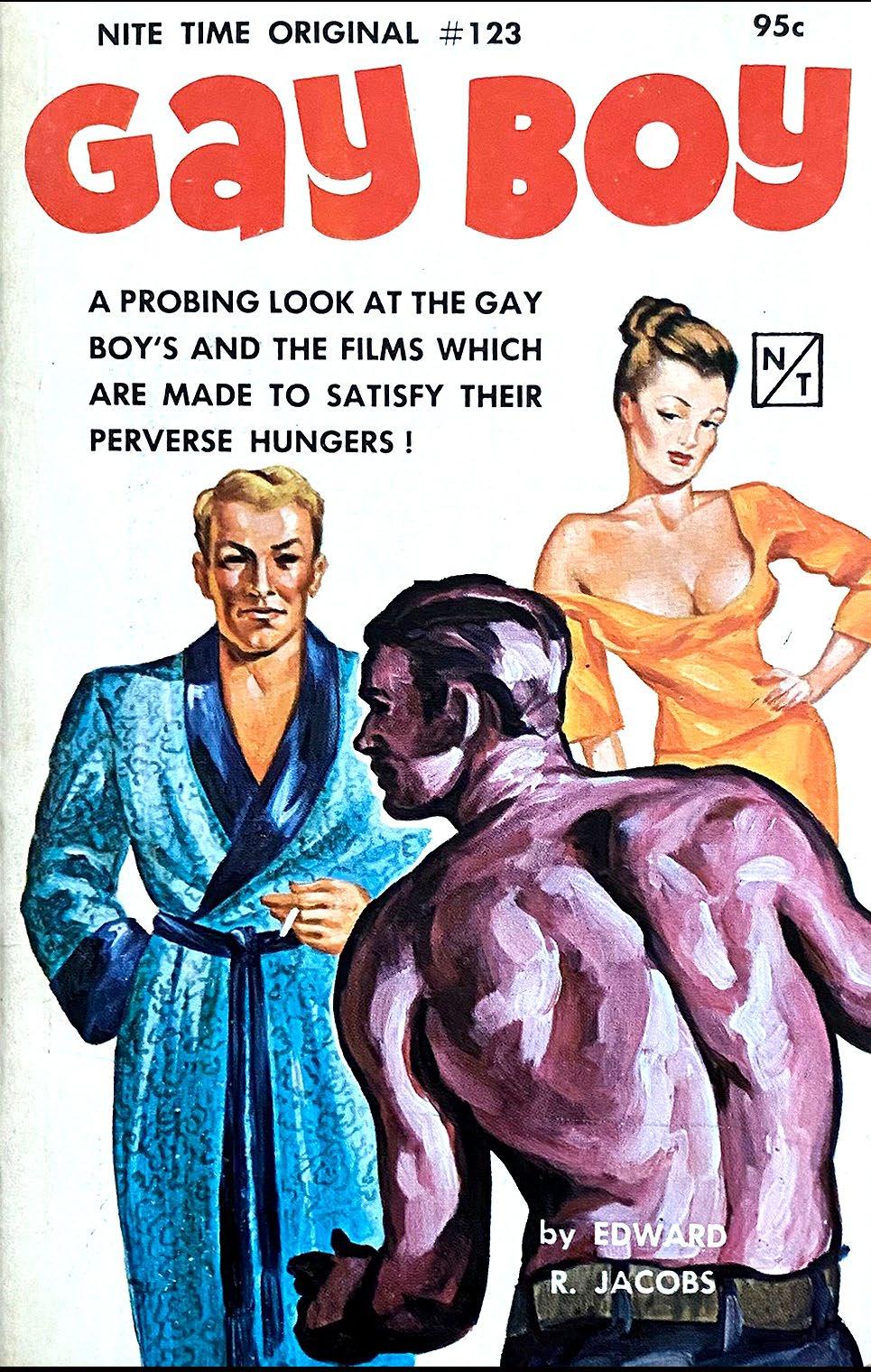
to every fetish.) Then it’s the book’s eyebrow-raising titles, filled with alliteration and campy twists on everyday phrases.
And finally, there’s the typography: I love the raw, unkerned, non-Adobe fonts—like the original Cooper Black, designed by Oswald Bruce Cooper in 1922—and basic nonidentifiable, condensed sans serifs.
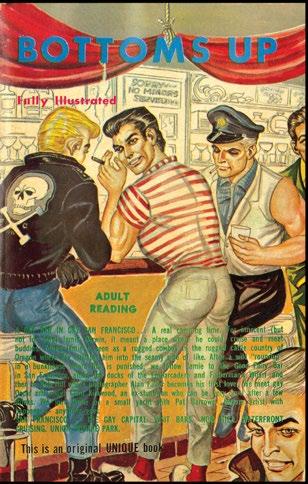
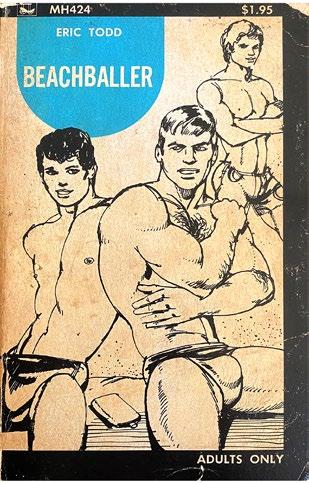
Brenner Luckhart
A Rotten Way to Die, 1976
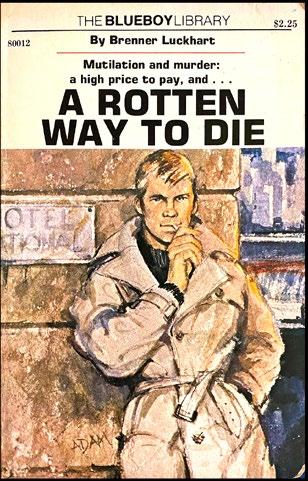
The Blueboy Library
Santee, CA
After the Game, 1987
Finland Books, FIN-203
Star Distributors, Ltd.
New York, NY
Buck Wilson
Al's Willing Wild Chickens, 1975
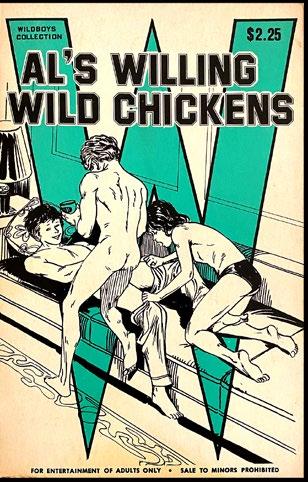
Star Distributors, Ltd.
New York, NY
Clay Caldwell
Asphalt Cowboys, 1977
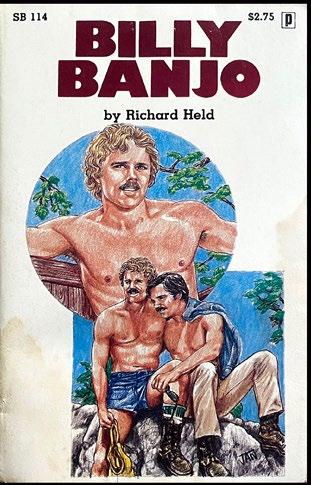
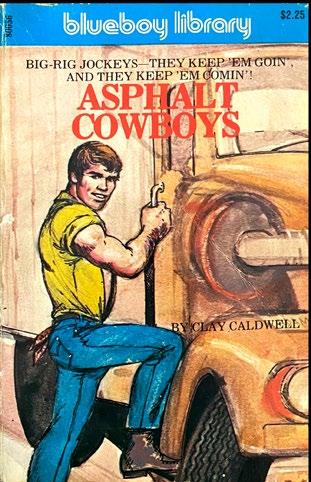
The Blueboy Library
Santee, CA
Petrie Warthan
Bathhouse Blues, 1973
Zorro Distributing Company
San Diego, CA
Eric Todd
Beach Baller, 1973
Surrey House, Inc.
San Diego, CA
Christopher Teale
Behind These Walls, 1957
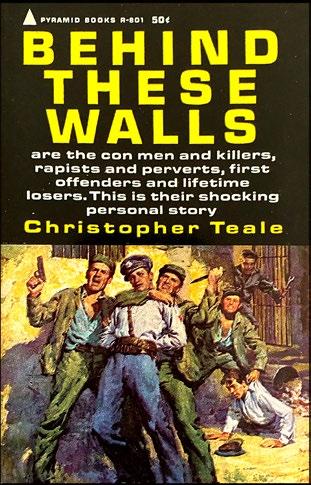
Pyramid Books / Frederick Fell, Inc.
New York, NY
Richard Held
Billy Banjo, 1978
Encounter Books
Wilmington, DE
Ned Winslow, illus. Gene Bilbrew
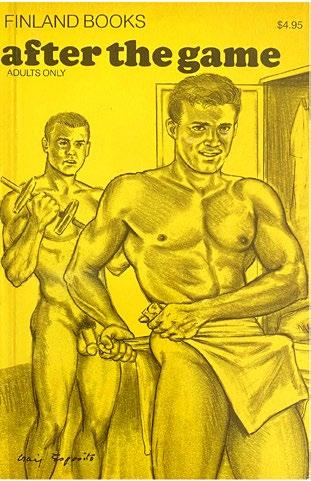
Bottoms Up, 1966
UNIQUE Books
San Francisco, CA
Chris Davidson
Buffy and the Holy Quest, 1968

Adult Books, a Division of Greenleaf Classics, Inc.
San Diego, CA
Connie Johnson
Businessman's Special, 1989
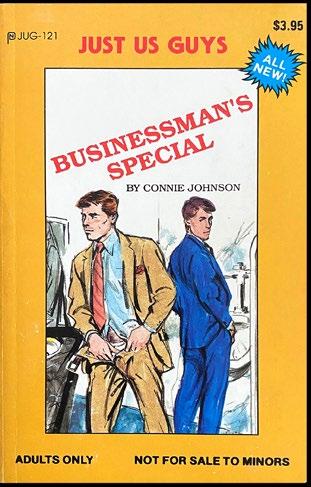
American Art Enterprises, Inc.
Hollywood, CA
Chris Davidson
Caves of Iron, 1967
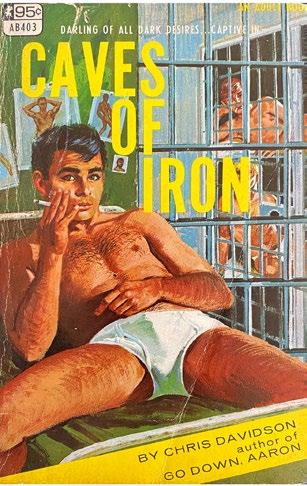
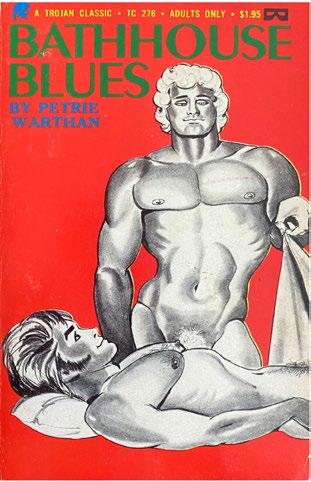
Adult Books, a Division of Greenleaf Classics, Inc.
San Diego, CA
Mike Lewis
Chicken Humpers, 1974
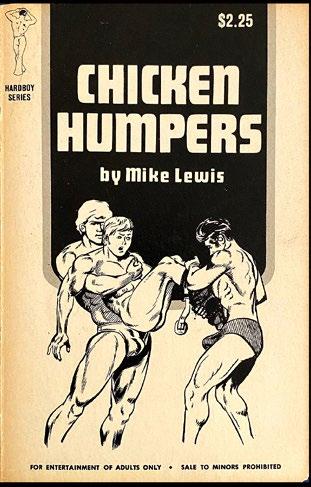
Star Distributors, Ltd. New York, NY
David L. Rinker City Boys, 1972

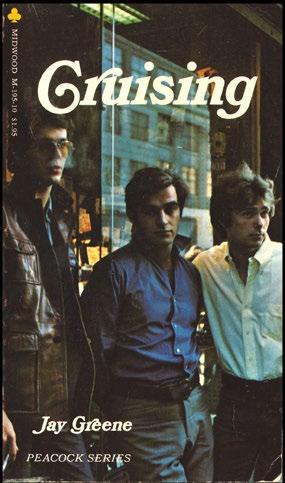
Parisian Press
Bart Simpson Cock Hungry Teens, 1974 Hardboy Series
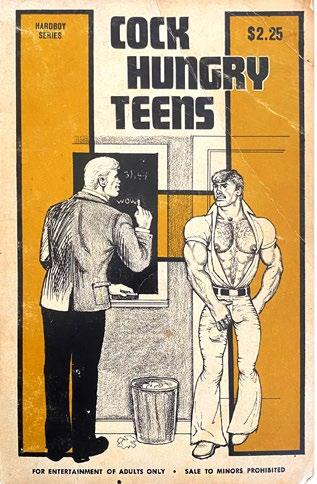
Star Distributors, Ltd. New York, NY
Jay Green Cruising, 1970
Peacock Series
Midwood Enterprises, Inc. New York, NY
Author Unknown Cruisn', 1992
Star Distributors, Ltd. New York, NY
Author Unknown Crusin', 1991
Star Distributors, Ltd. New York, NY
Lance Lester Cruising Horny Corners, 1967
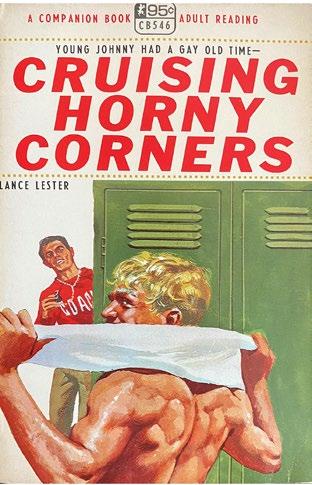
Companion Books
Phenix Publishers, Ltd. San Diego, CA
Cliff Ellis Fist Fugger, 1974 Hardboy Series
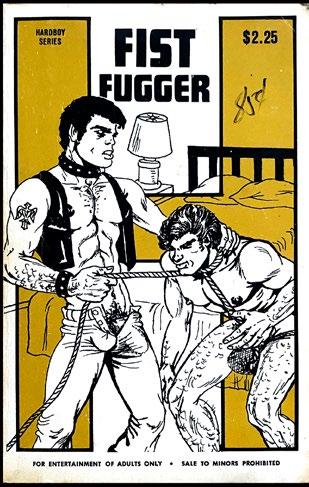
Star Distributors, Ltd. New York, NY
Edward R. Jacobs
Gay Boy, 1964 Golden State News San Francisco, CA
Carl Driver
Gay Cruise, 1970
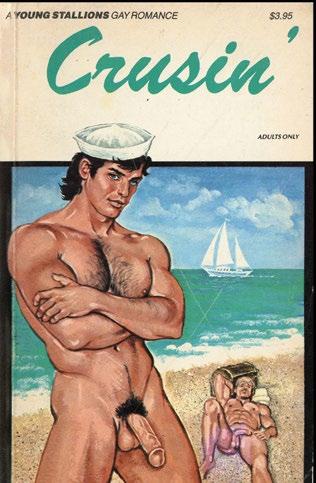

P.E.C. French-Line Novel, FL-23 Publishers Export Co., Inc.
El Cajon, CA
Jay Vickery Gaydreams, 1968
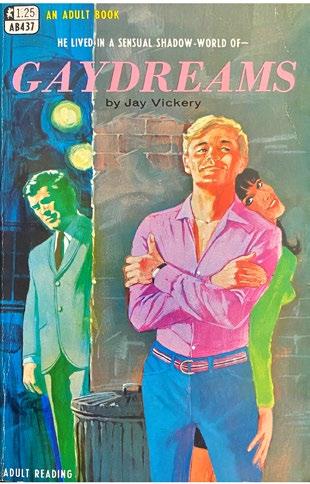
Adult Books, a Division of Greenleaf Classics, Inc. San Diego, CA
Dick Dale
Gay Paragon, 1968
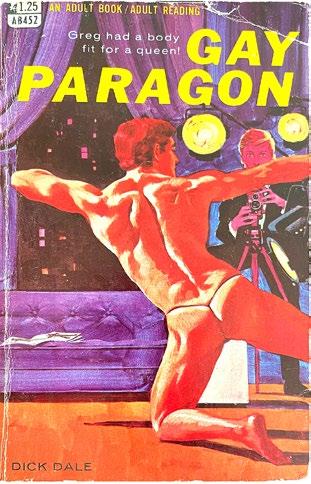
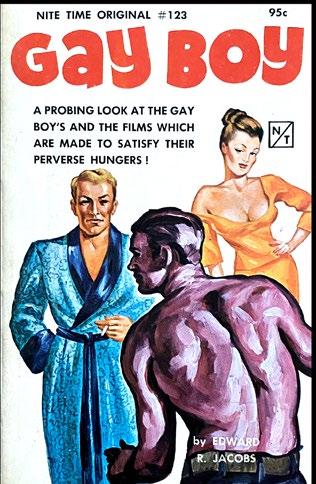
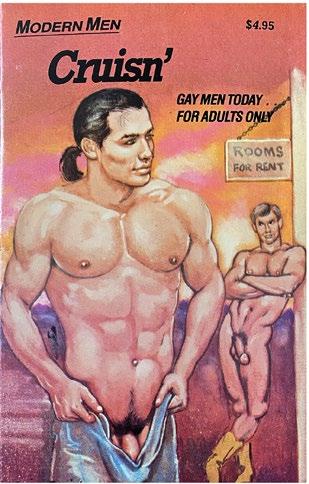
Adult Books, a Division of Greenleaf Classics, Inc.
San Diego, CA
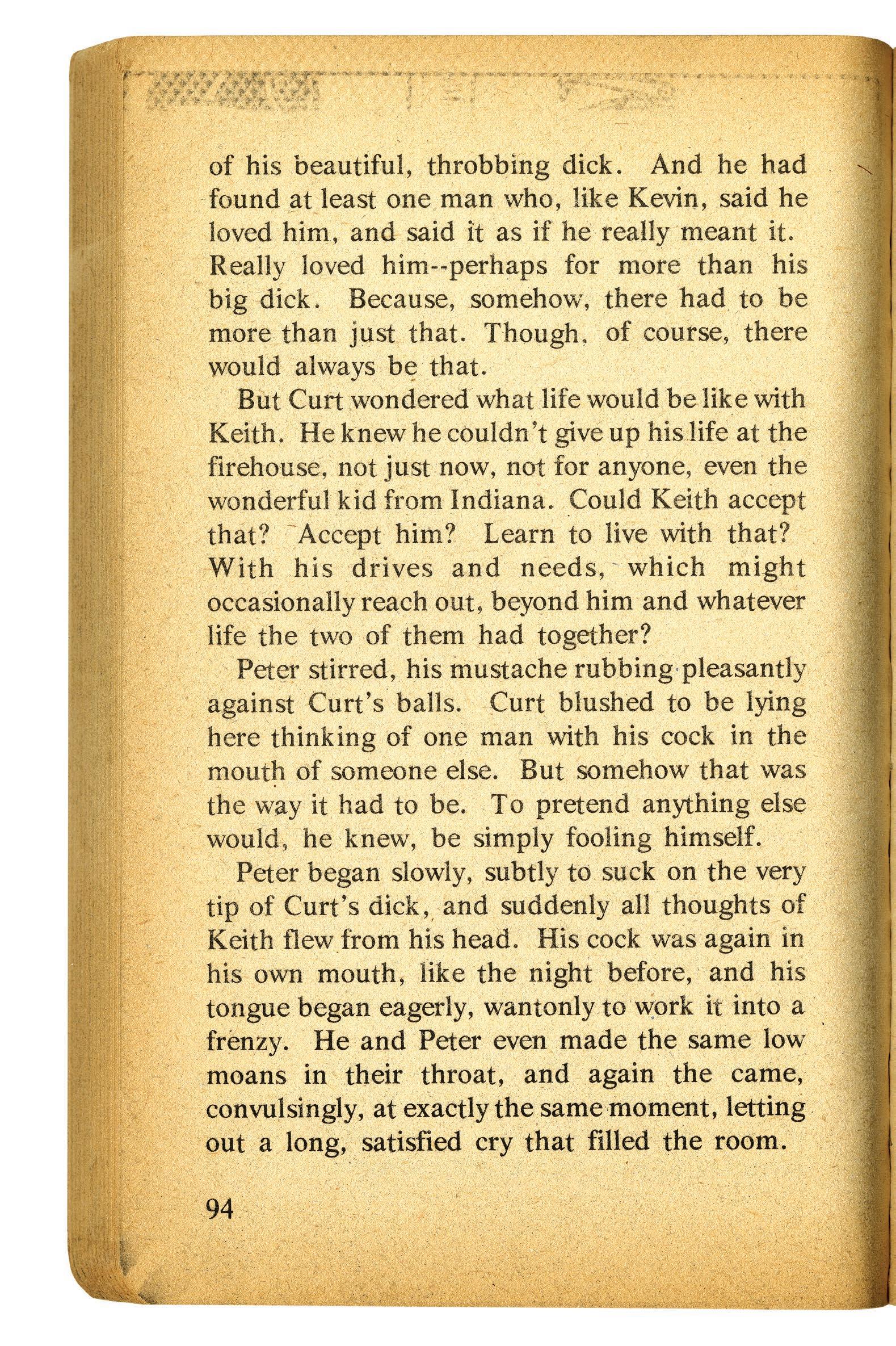






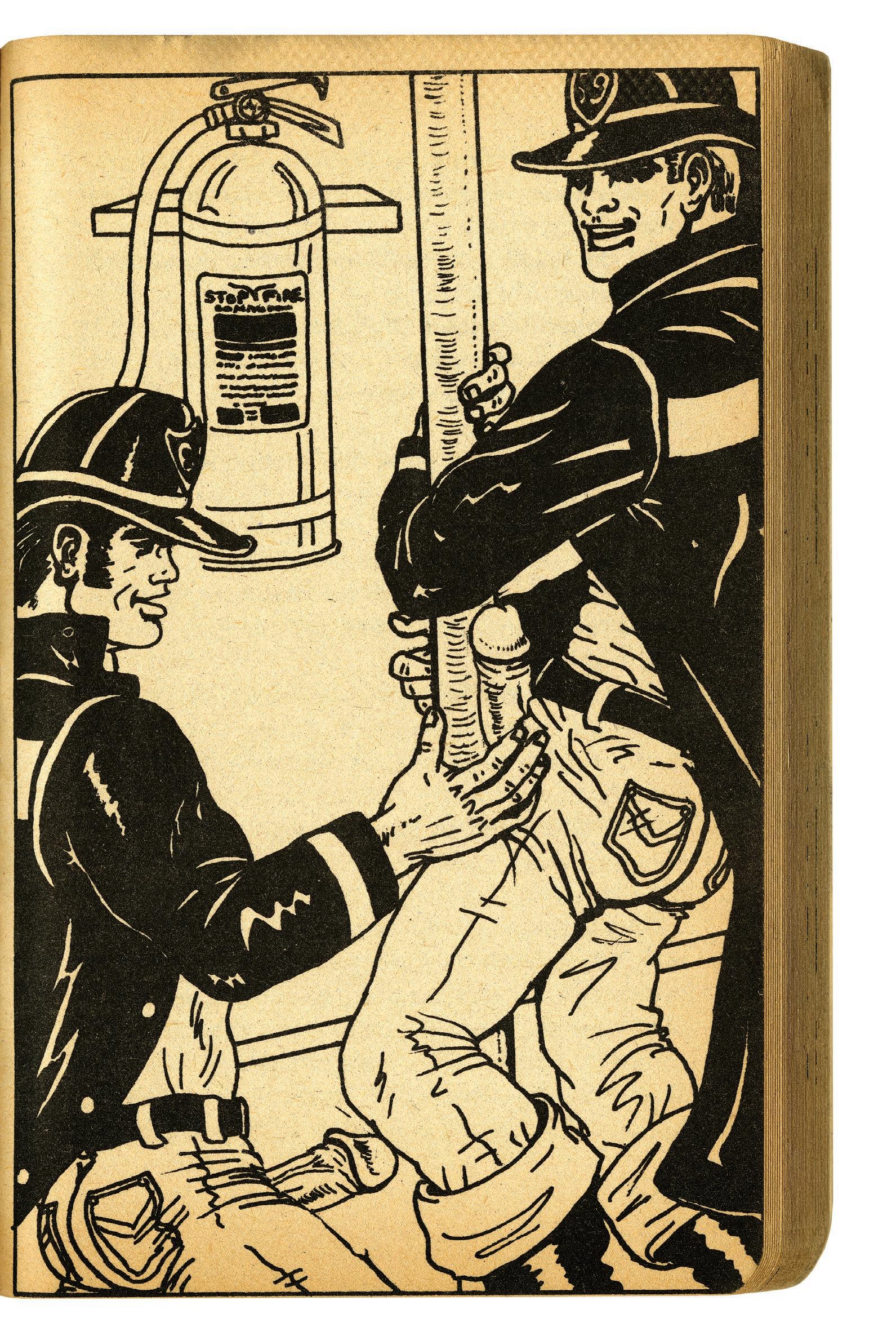
Barton Lewis
Glory Hole Cop, 1981
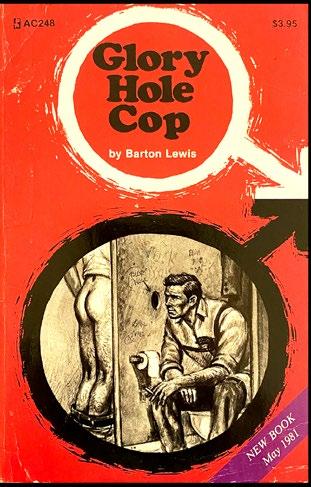
Greenleaf Classics, Inc.
San Diego, CA
J.X. Williams
Good-Bye My Lover, 1966
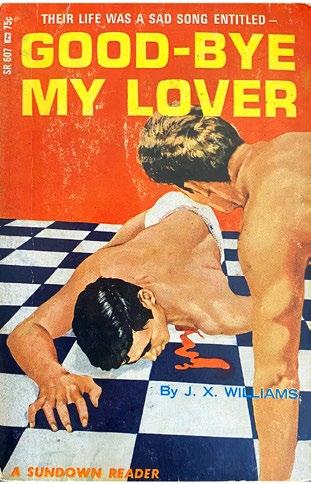
Corinth Publications, Inc.
San Diego, CA
Dan Bryan Hard Hat Fucker, 1979
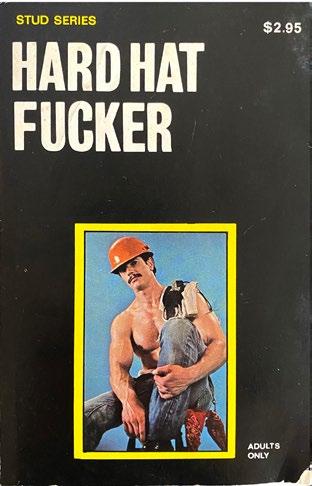
Star Distributors, Ltd.
New York, NY
Author Unknown
Hard Hold, 1989
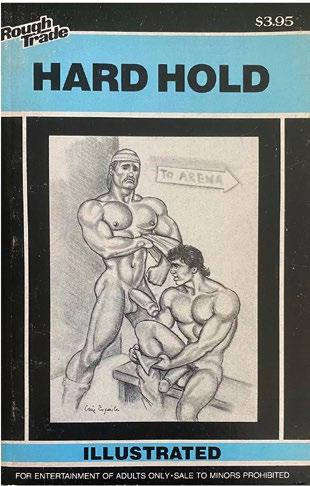
Rough Trade Series
Star Distributors, Ltd.
New York, NY
Ray Douglas, Jr.
His Sex, His Problem, 1967
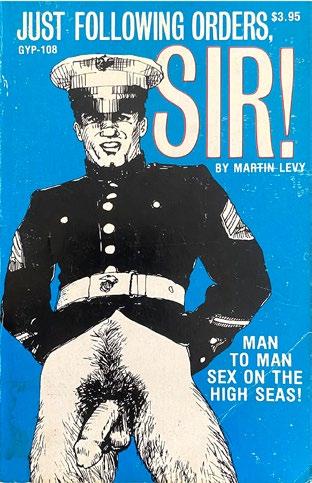
NLB-111
National Library Books
Percy Fenster
Hot Pants Homo, 1964
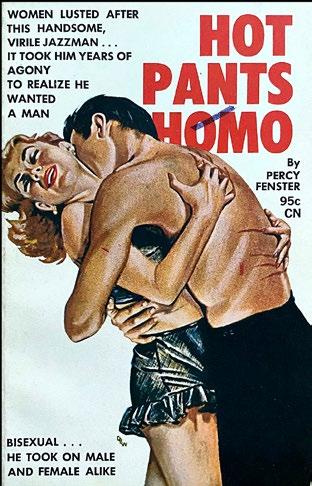
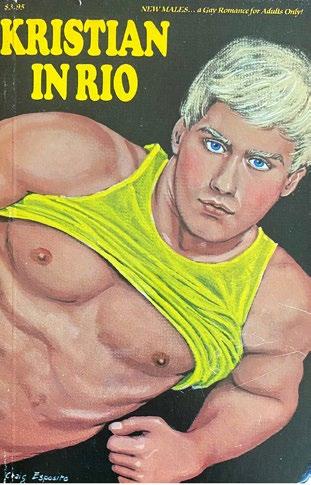
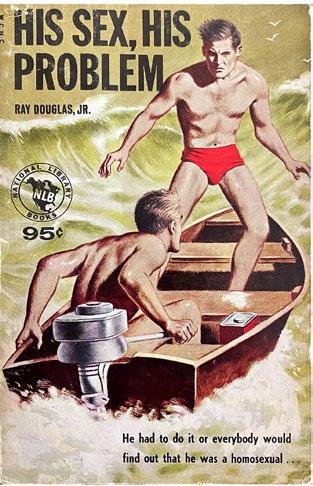
All Star Books
North Hollywood, CA
Mark Shelby
I Am a Hollywood Call Boy, 1965
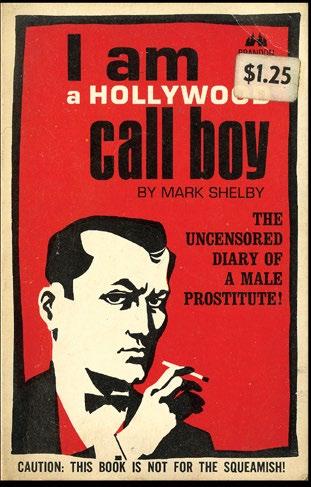
Brandon House
North Hollywood, CA
Carl Branch
Idylls of the Queens, 1968
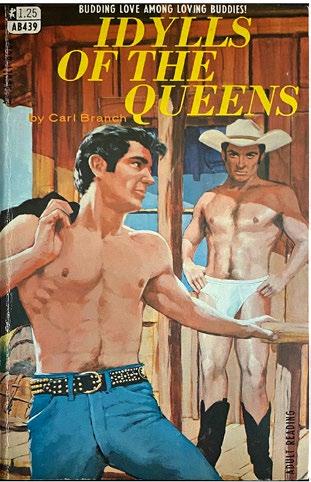
Adult Books, a Division of Greenleaf Classics, Inc.
San Diego, CA
Martin Levy
Just Following Orders, Sir!, 1982
Eros Publishing Company, Inc.
Wilmington, DE
Rick Tulane
Juvenile Jazz, 1973

San Diego, CA
GX, Inc.
Author Unkown
Kristian in Rio, 1991
Star Distributors, Ltd.
New York, NY
Author Unknown
Leather Bike Boy, 1980
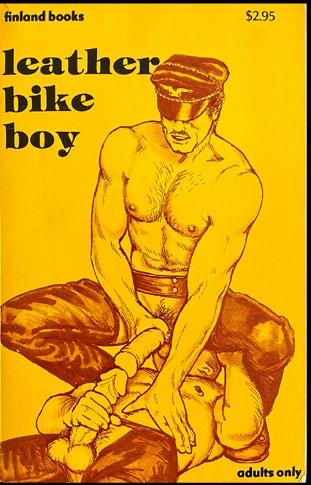
Finland Books
Star Distributors, Ltd.
New York, NY
Mark Dunn Live Bait, 1968
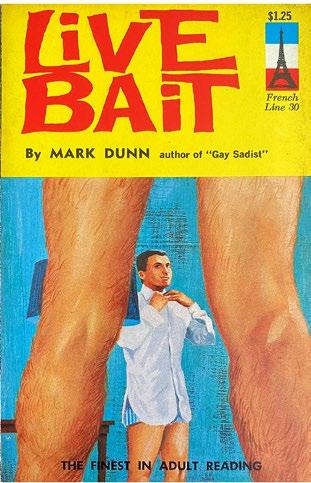
Publishers Export Co., Inc. San Diego, CA
Damon Martin Long Hard Buck, 1974 Surrey House, Inc. San Diego, CA
Dean Douglas Man Divided, 1954 Fawcett Publications, Inc. New York, NY

Jack Evans Marine Meat Eater, 1974 Star Distributors, Ltd. New York, NY
Author Unknown Memphis Blue, 1990 Star Distributors, Ltd. New York, NY
George Sylvester Viereck Men into Beasts, 1952 Fawcett Publications, Inc. New York, NY
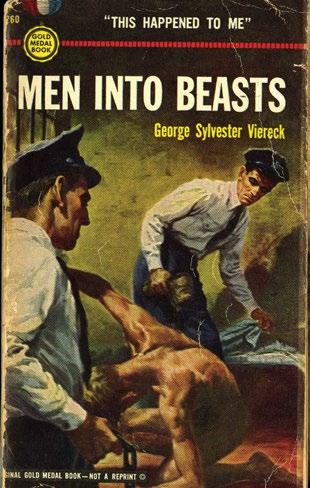
Author Unknown Moses, 1991
Man to Man Series Star Distributors, Ltd. New York, NY
Art Smith Mr. Suck, 1973 Surrey House, Inc. San Diego, CA
Bud Clifton Muscle Boy, 1958 Ace Books, Inc. New York, NY
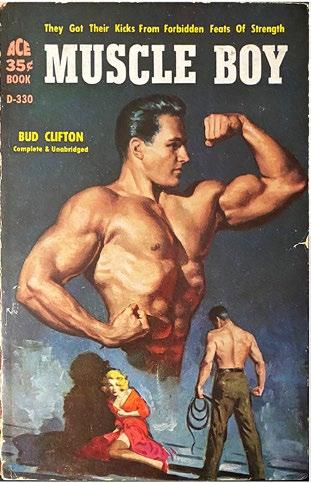
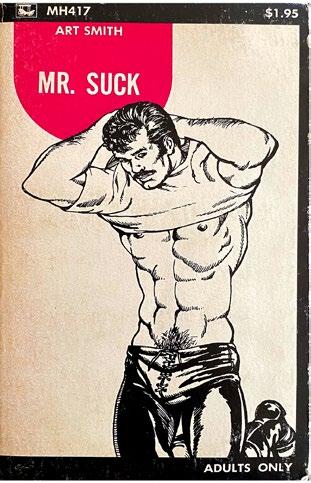
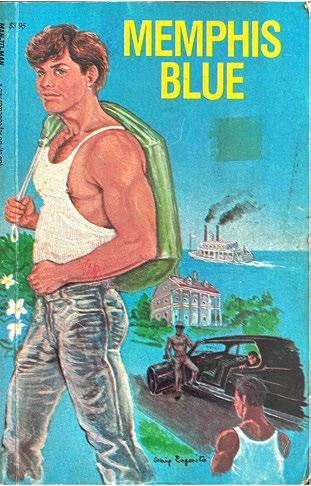
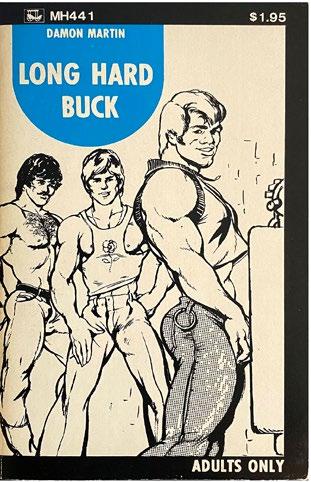

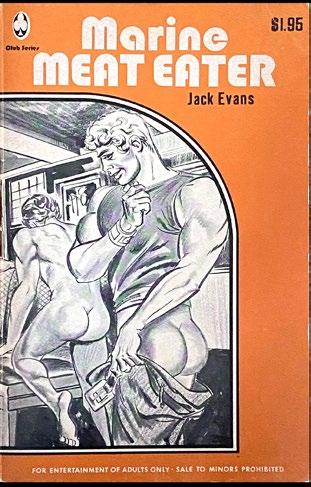
Len Harrington Ollie, 1969
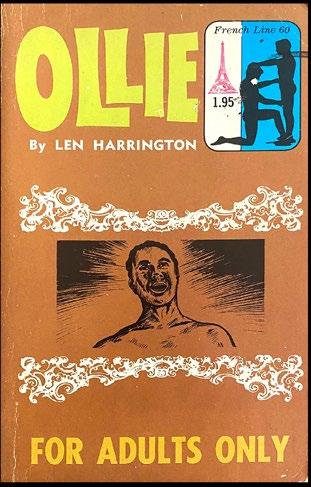
Publisher's Export Co., Inc. El Cajon, CA
Author Unknown Pumping Rookie, 1989
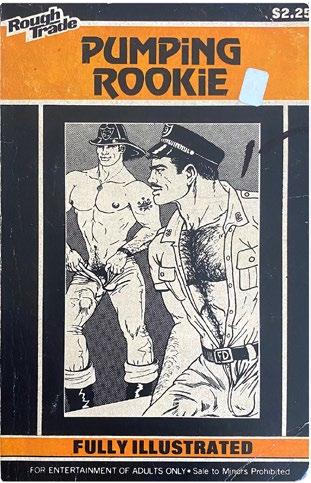
Rough Trade Series Star Distributors, Ltd. New York, NY
Ed Culver Queer Hustler, 1967
Publishers Export Co., Inc. San Diego, CA
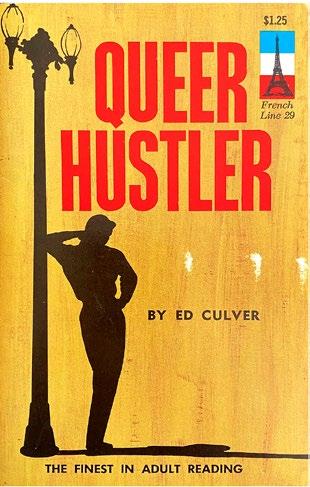
Military Stud, MN-4, 1979
Fast Track, NM-14, 1980
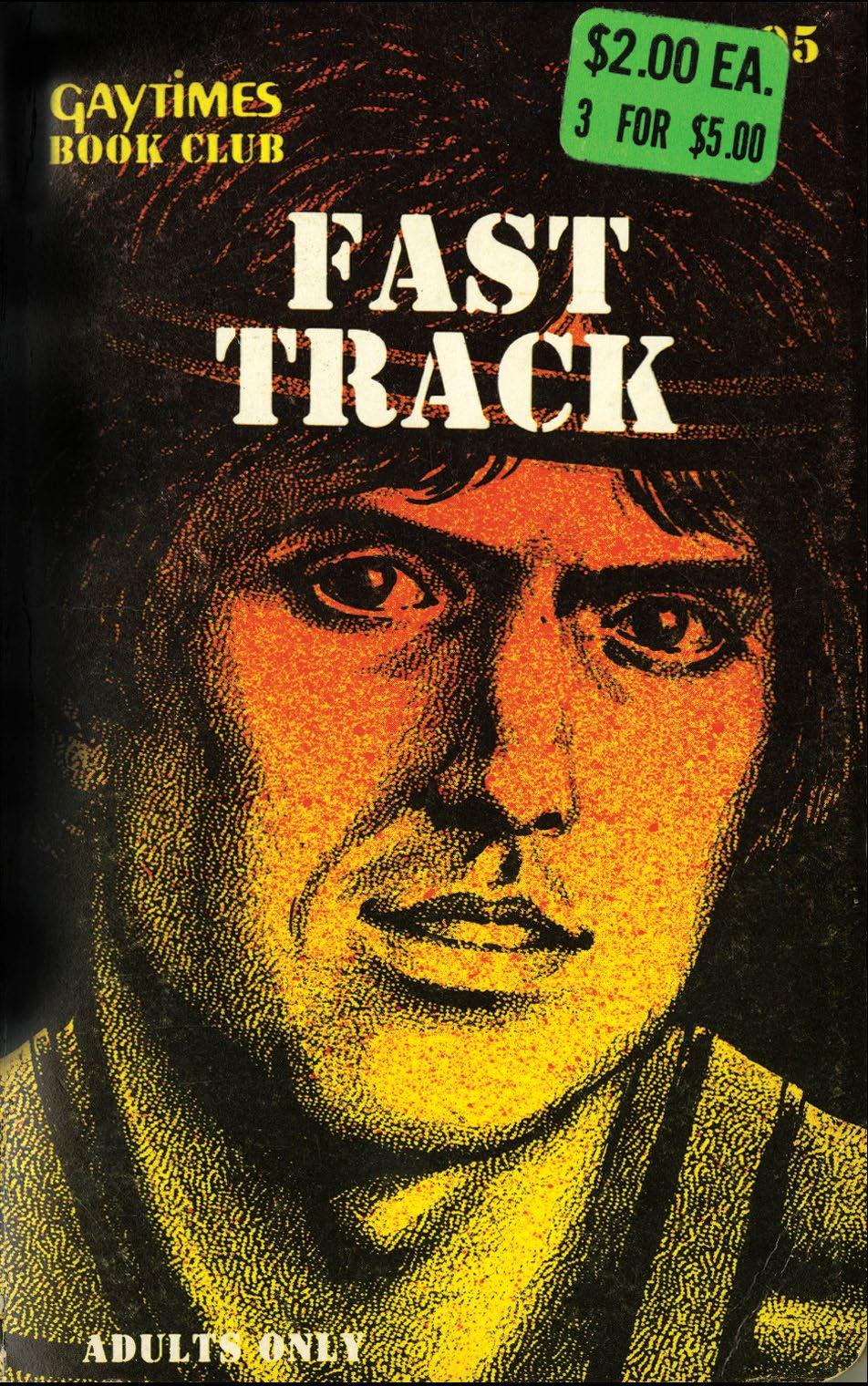
Tight End, NM-11, 1980
Seafood, NM-23, 1981
Bad Ass Biker, NM-43, 1982
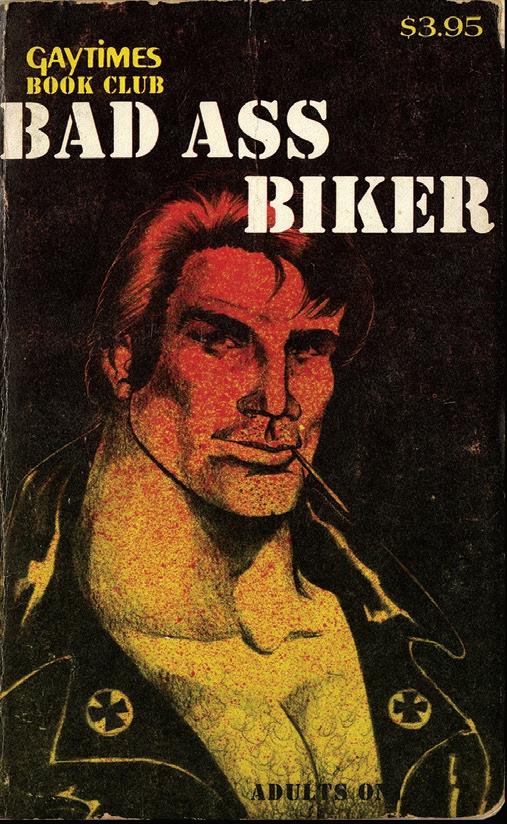
Brute Brothers, NM-55, 1982
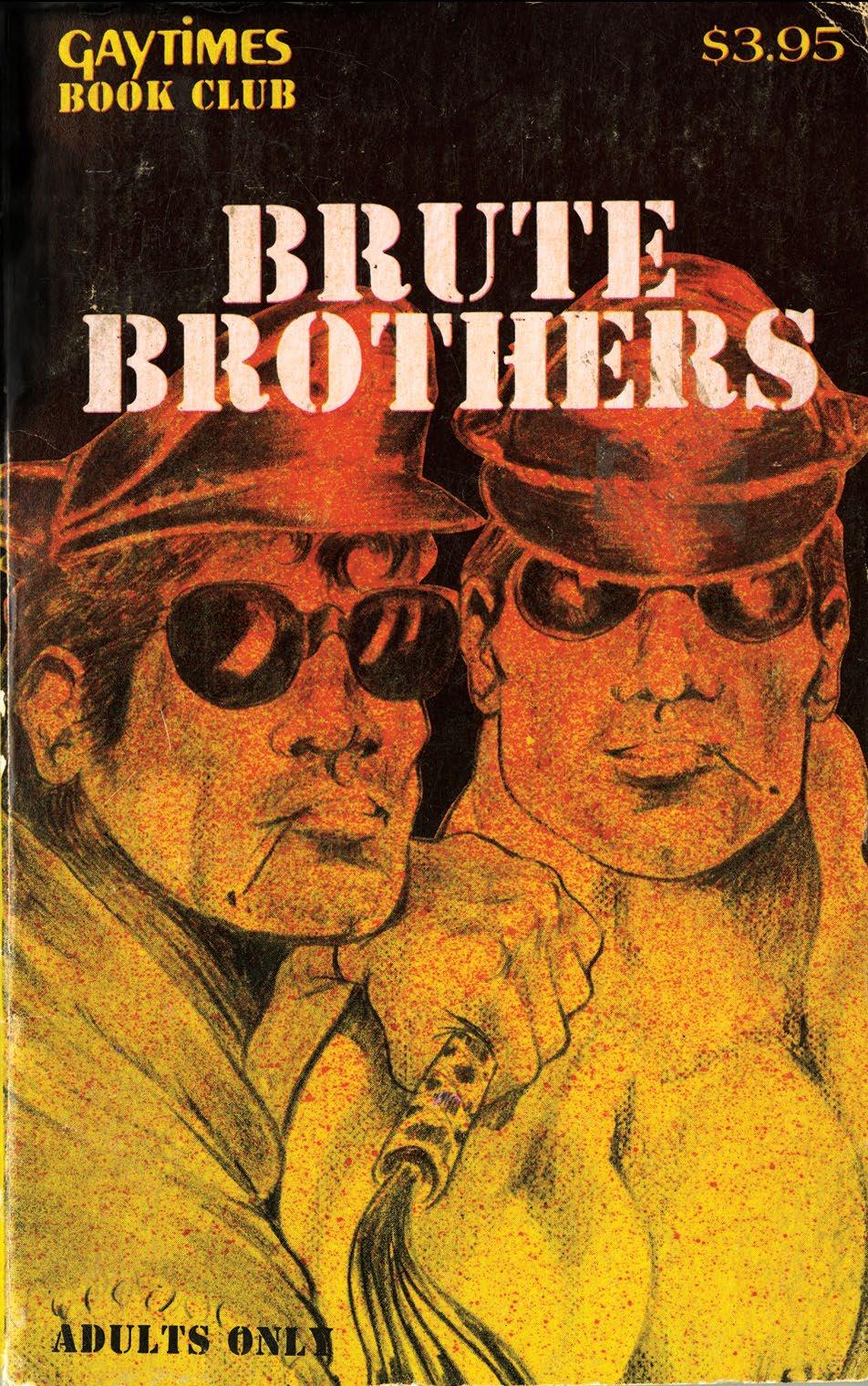
Muscle Master, NM-53, 1982
Naked Navy, NM-48, 1982
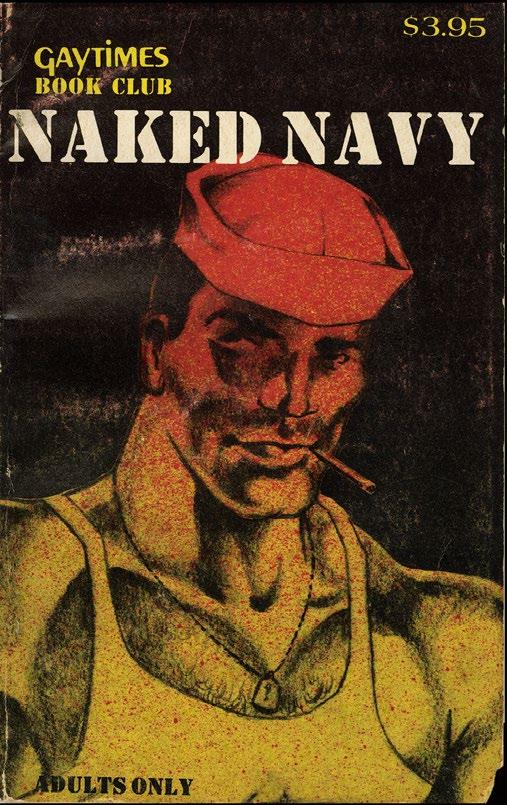
Gay Times Book Club
Star Distributors, Ltd.
New York, NY
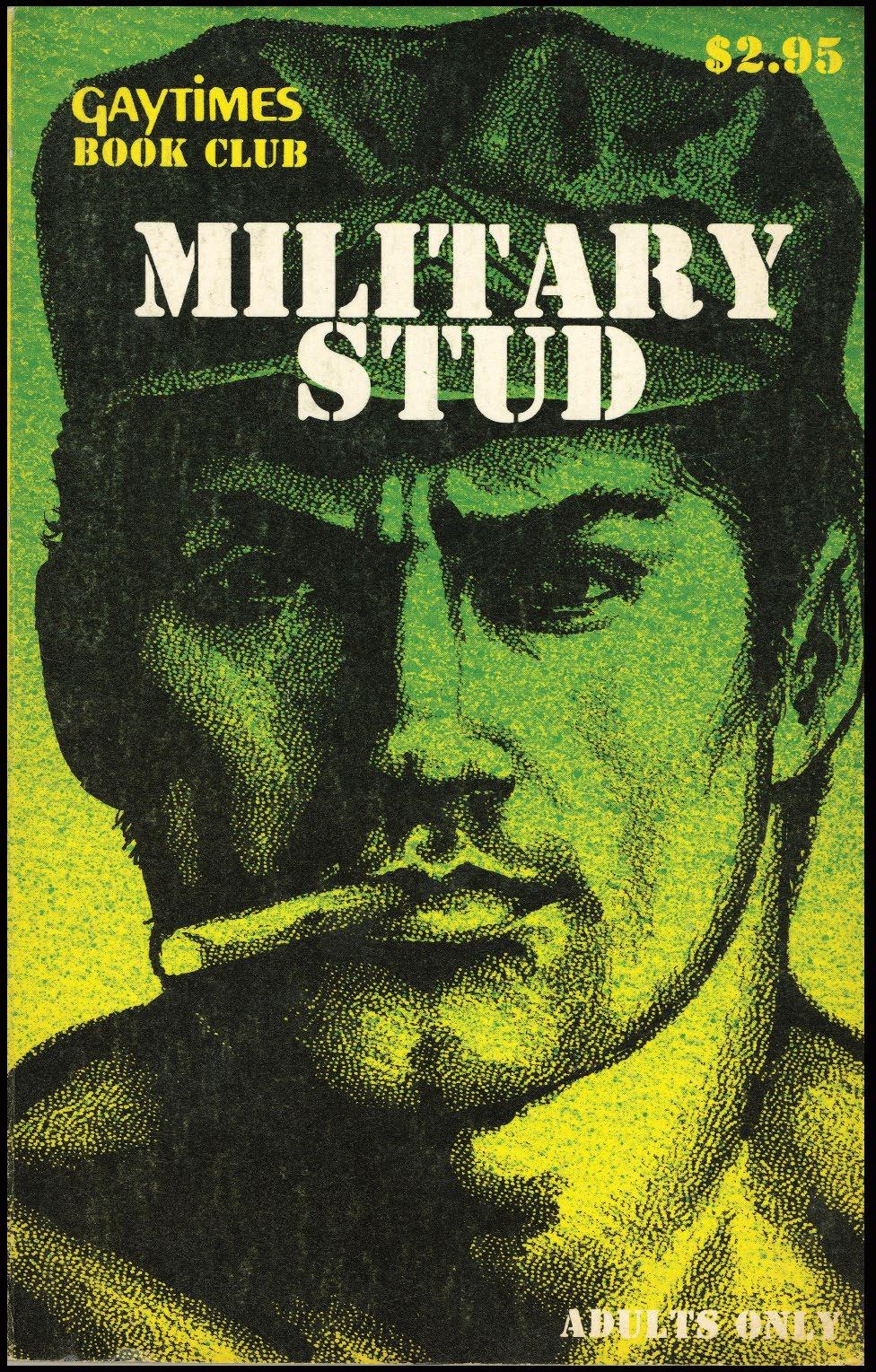
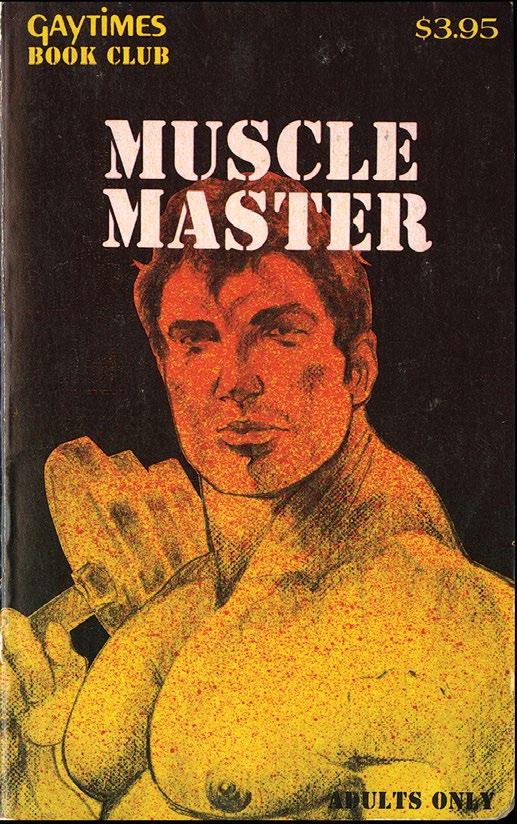

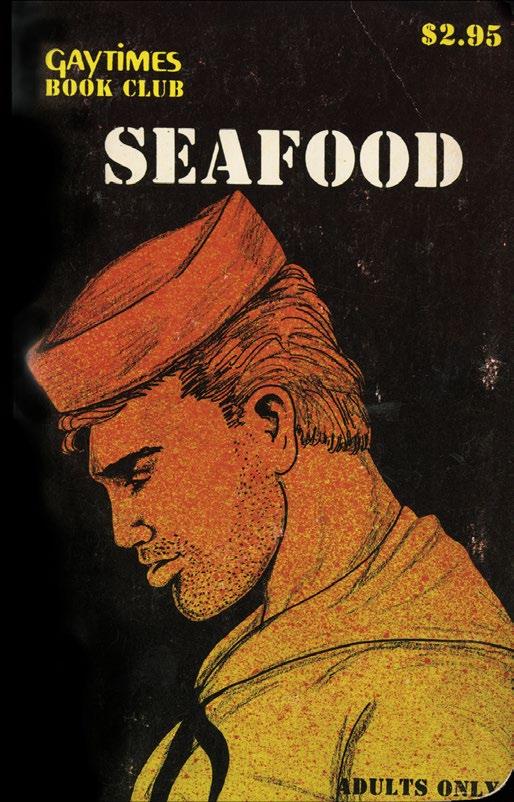
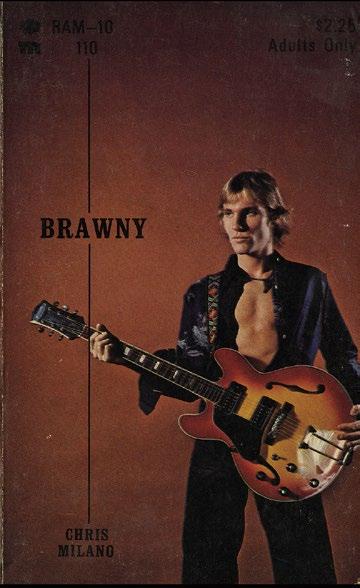
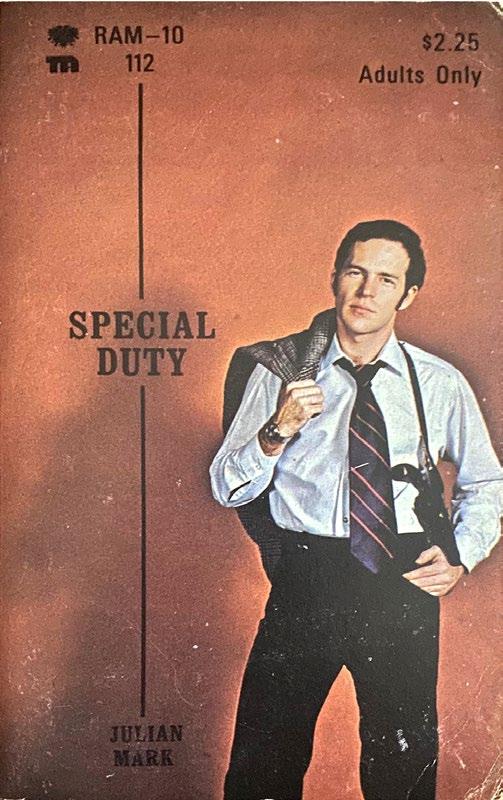
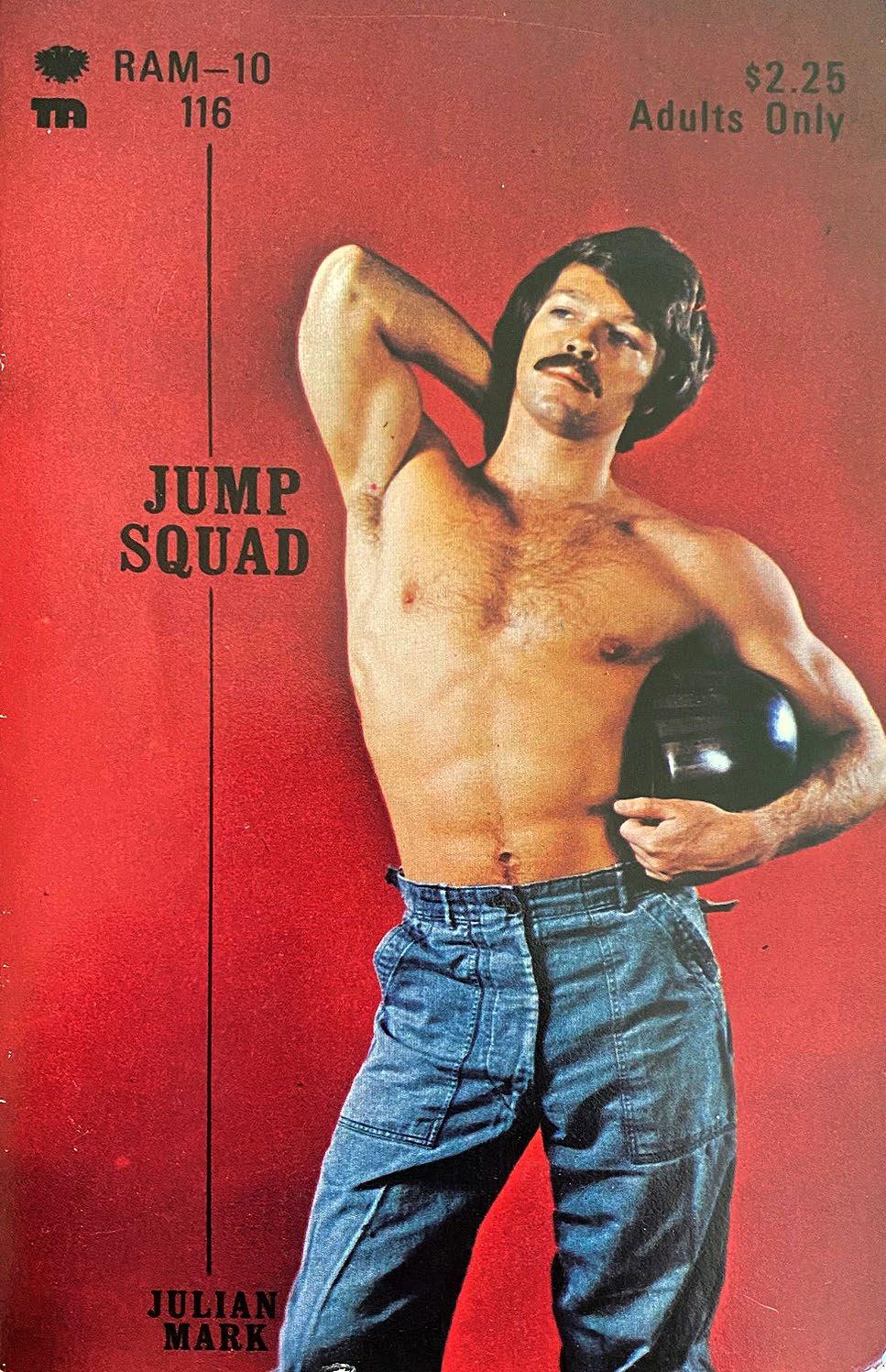
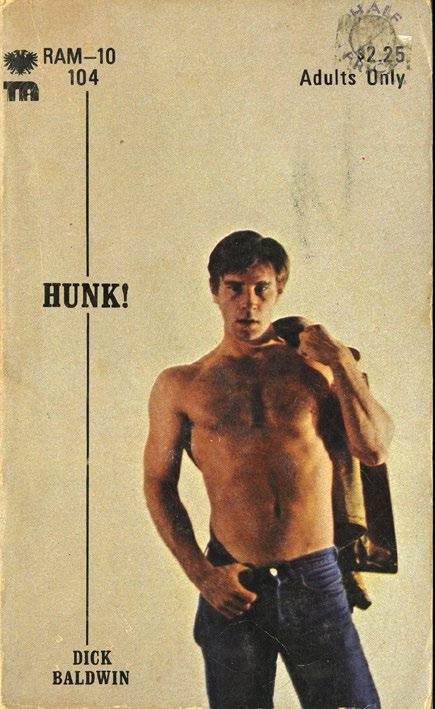
 Chris Milano Brawny, no. 110, 1975
Chad Stuart Buck, no. 113, 1975
Julian Mark Special Duty, no. 112, 1975
Julian Mark The Jump Squad, no. 116, 1975
Dick Baldwin Hunk!, no. 104, 1974
RAM-10 Series Hamilton House Publishing San Francisco, CA
Chris Milano Brawny, no. 110, 1975
Chad Stuart Buck, no. 113, 1975
Julian Mark Special Duty, no. 112, 1975
Julian Mark The Jump Squad, no. 116, 1975
Dick Baldwin Hunk!, no. 104, 1974
RAM-10 Series Hamilton House Publishing San Francisco, CA
Bearing a striking resemblance to Hal Fischer's Gay Semiotics of 1977, these covers are different than the typical pulp cover. The RAM-10 series uses documentarystyle photographic portraits of men dressed up as gay archetypes before a field of either light blue or blood red, while a vertical line pierces the book’s title and author in a stately serif font.
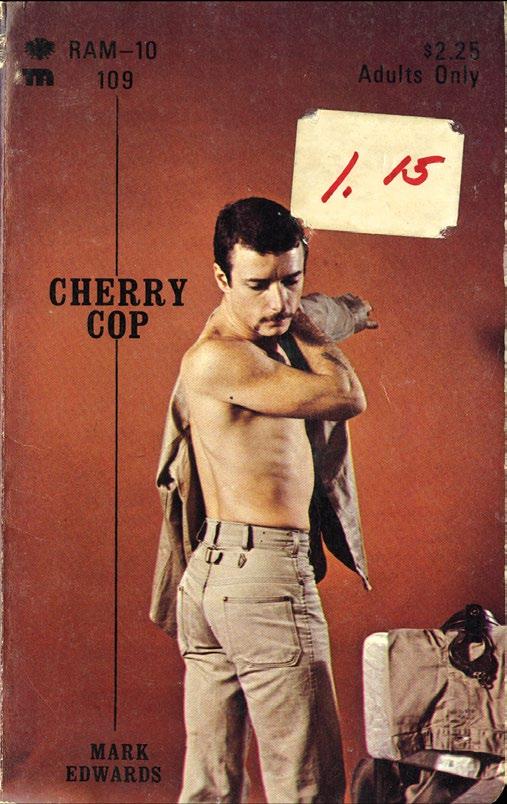

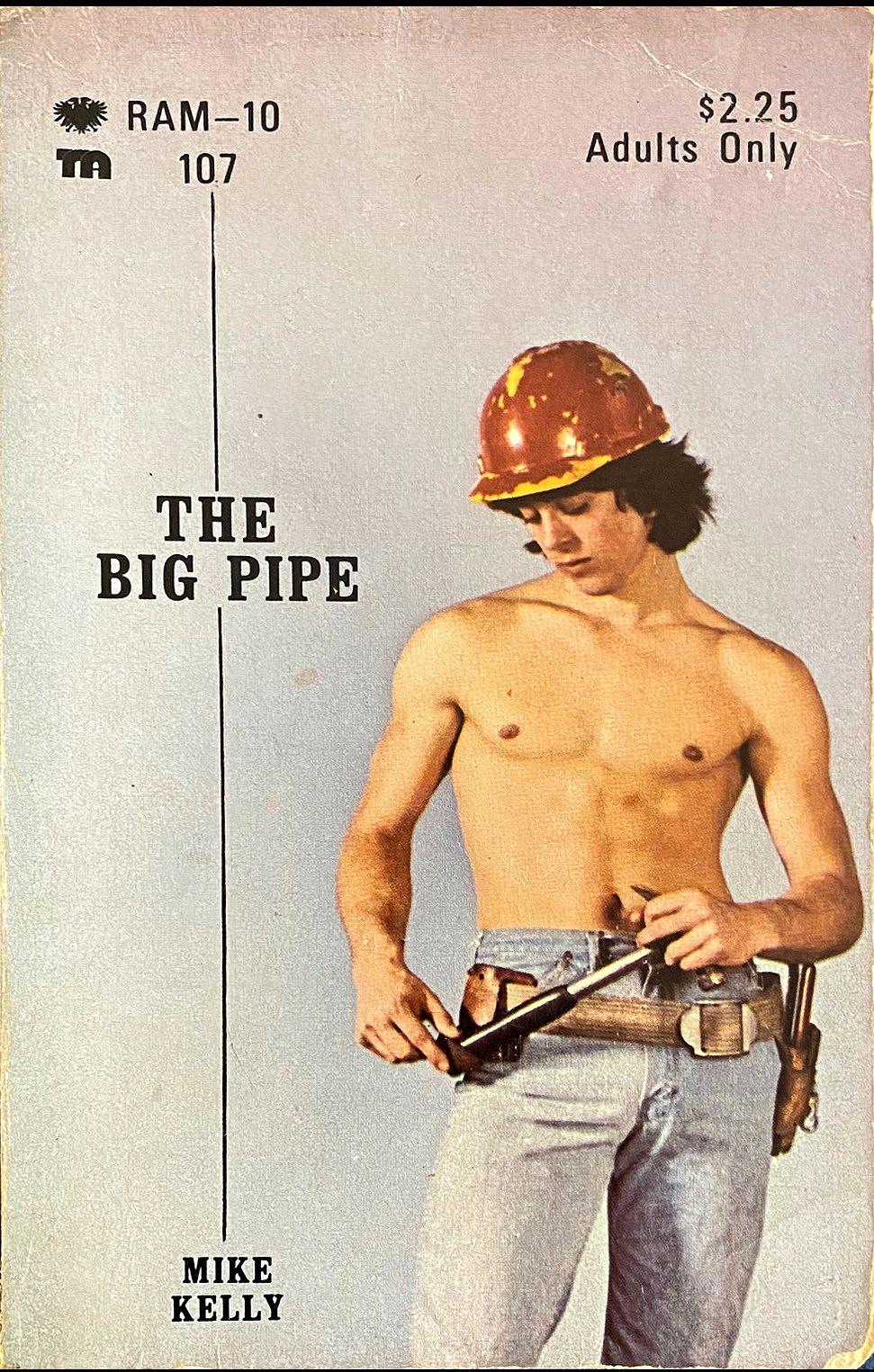
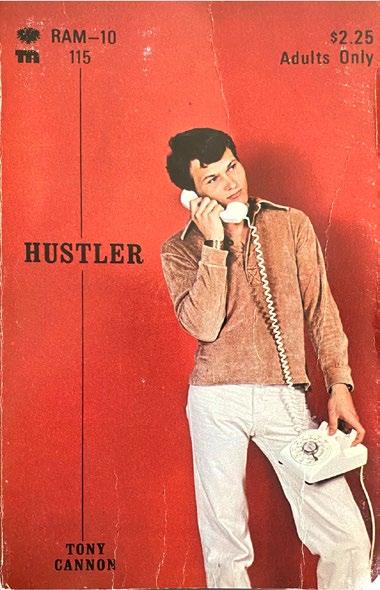 Kirk Randall Shore Leave, no. 106, 1974
Tony Cannon Hustler, no. 115, 1975
Mark Edwards Cherry Cop, no. 109, 1975
Mike Kelly The Big Pipe, no. 107, 1974
Kirk Randall Shore Leave, no. 106, 1974
Tony Cannon Hustler, no. 115, 1975
Mark Edwards Cherry Cop, no. 109, 1975
Mike Kelly The Big Pipe, no. 107, 1974
Author Unknown
Renegade, 1989
Star Distributors, Ltd.
New York, NY
Author Unknown
Ricky, 1990
Corinth Publications, Inc.
San Diego, CA
Chuck Brett Roughneck Rimmer, 1979
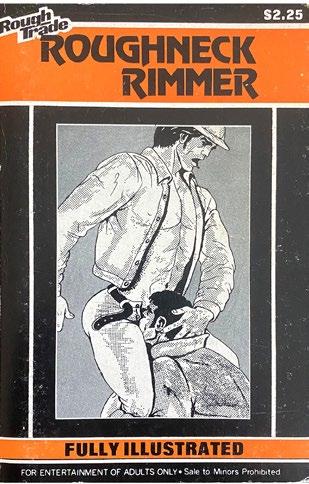
Rough Trade Series
Star Distributors, Ltd.
New York, NY
Lou Rand Rough Trade, 1964
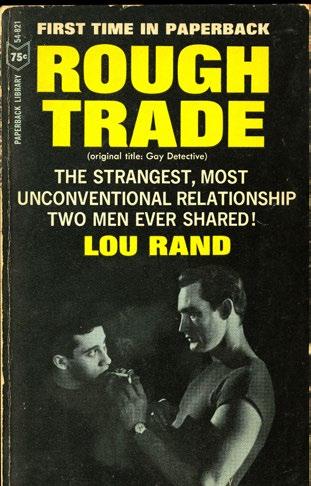
Argyle Book Company
New York, NY
Dan Breaker
Sadist Overseer, date unknown
Grand Prix Classics
Author Unknown
Sailor Stud, 1988
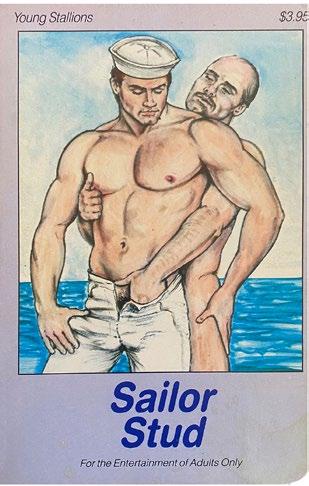
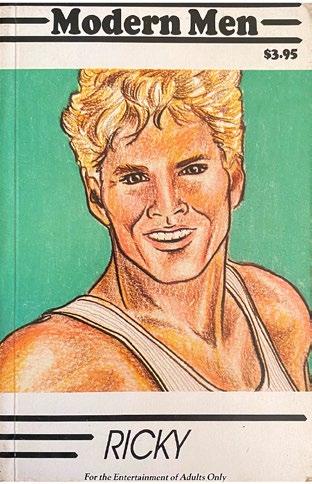
Star Distributors, Ltd.
New York, NY
Jack Sharpe School Boy Suckers, 1975 Star Distributors, Ltd. New York, NY
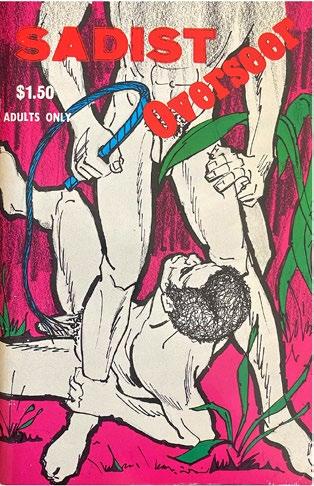
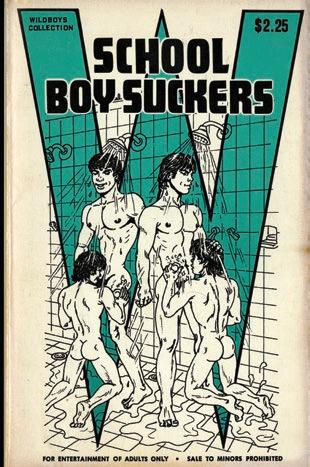
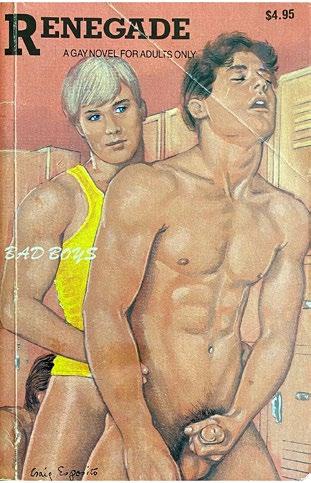
Art Smith
Share the Rod, 1973
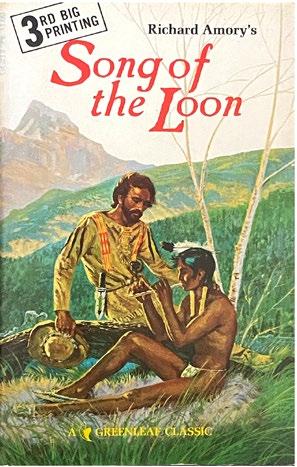
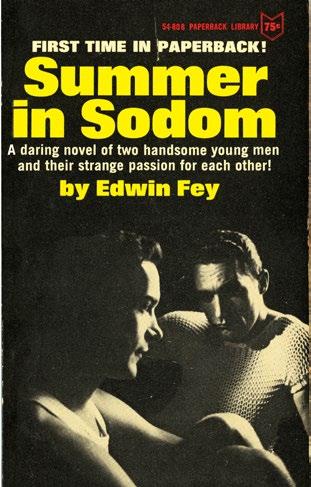
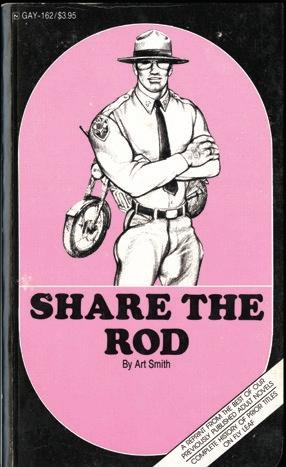
Surrey House, Inc.
San Diego, CA
Richmond Amory Song of the Loon, 1966
Greenleaf Classics, Inc.
San Diego, CA
Carl Corley
Star Light Star Bright, 1967
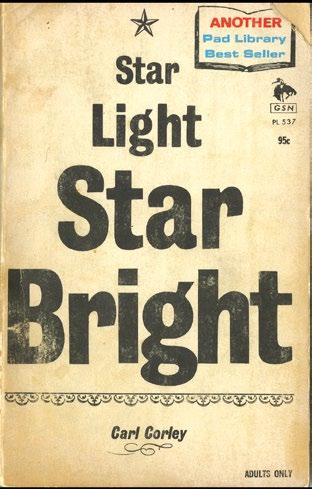
Pad Library
Agoura, CA
Edwin Fey Summer in Sodom, 1964
Argyle Book Company
New York, NY
Rod Sawyers
Sundays Child, 1973
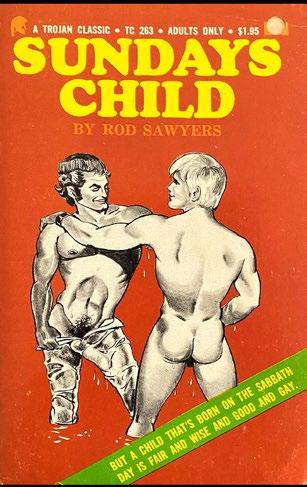
GX, Inc.
Chatsworth, CA
Chris Davidson
The Gay Gods, 1968
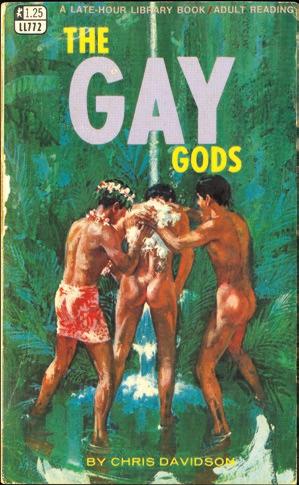
Phenix Publishers, Ltd.
San Diego, CA
Duane Davis
The Gay Sound, 1967
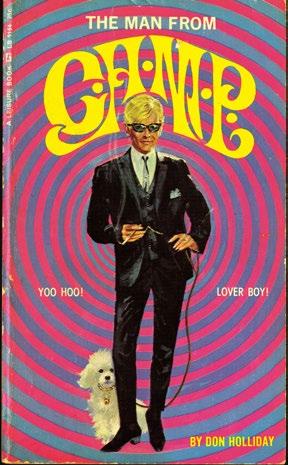
First Niter Books, Inc.
Buffalo, NY
Rick Raymond
The Gay Swinger, 1966
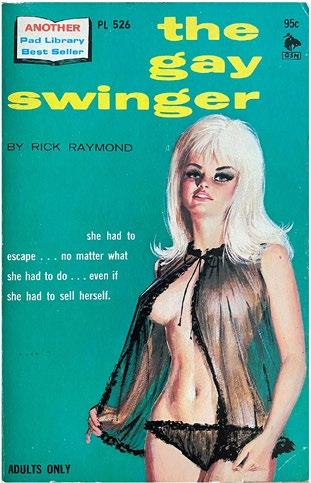
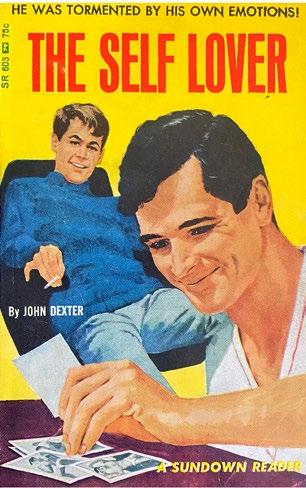
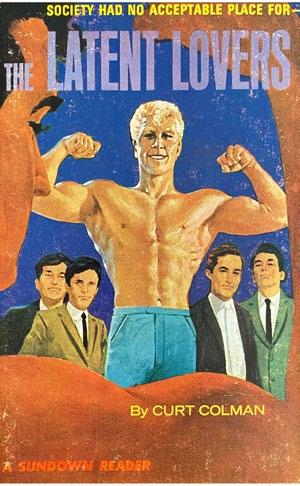
Pad Library Agoura, CA
Curt Colman
The Latent Lovers, 1966
Corinth Publictions, Inc.
San Diego, CA
Larry Townsend
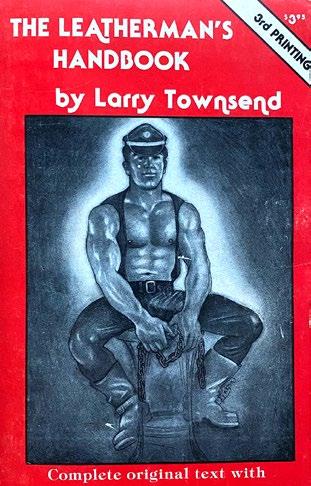
The Leatherman's Handbook, 1977
Le Salon San Francisco, CA
Andre Dubus
The Lieutenant, 1967

Dell Publishing Company
New York, NY
Connie Johnson
The Magic Touch, 1989
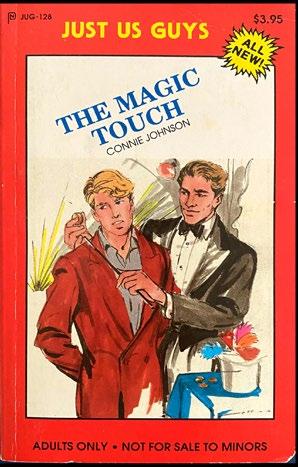
American Art Enterprises, Inc.
Hollywood, CA
Don Holliday
The Man From C.A.M.P., 1966
Corinth Publications, Inc.
San Diego, CA
Marcus Miller
The Mother Truckers, 1968
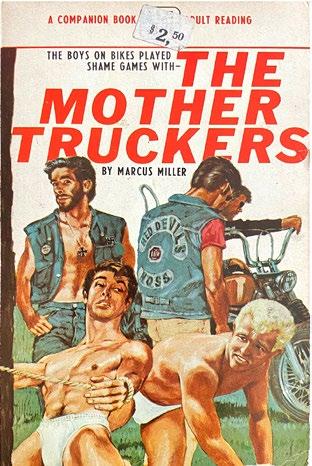
Phenix Publishers, Ltd.
San Diego, CA
John Dexter
The Self Lover, 1966
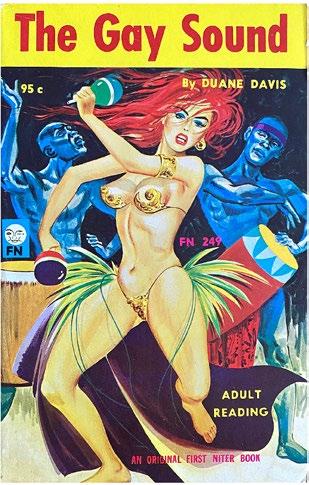
Corinth Publications, Inc.
San Diego, CA
Bob Cochran Swim Meat, 1971
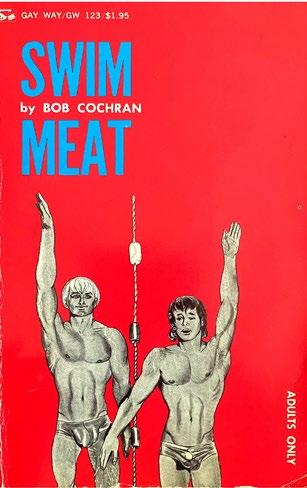
Gay Way Chatsworth, CA
Madison Hughes
These Wounded Pleasures, 1973
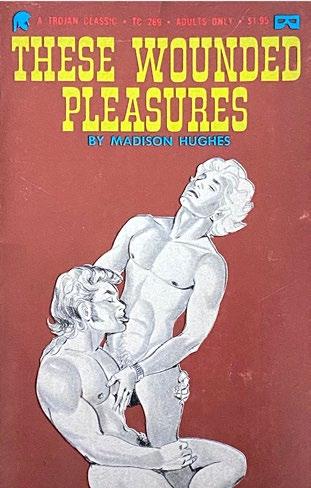
GX, Inc.
Chatsworth, CA
I had made it through the fall 2022 residency— only one more to go! After taking down my pin-up (used to showcase the work I had done for the semester), and knowing I had a few hours before my flight, I needed to find something to pass the time. I slipped one of my pulp books into my backpack. Obsessed with collecting pulp fiction (mostly for the cover art, I admit), it would have been hypocritical of me if I didn't read at least one from my growing collection of more than one hundred titles.
I arrived early at my gate. No one else was around, so I whipped it out of my bag. Right from the start, I was hooked. As the gate filled up with passengers, I tried to be more discreet as to what I was reading. (I'm fifty-five years old, but I felt like a teenager who had stolen his first porno.) I gently bent the cover back to make it less obvious—even going as far as to hide the pulp within my notebook, while simultaneously trying to adjust my chubby. Yes, it was that good!
Chapter one begins:
"It must have been close to midnight and the monotony of the engine's roar was making my head begin to nod and my eyelids droop. I had the big Kenworth down to compound for over a half an hour but now I could see the top of the mountain up ahead. That's when I saw him. I've never minded picking up hitchhikers. At night, especially, they can help keep a trucker awake."
You know where this is going, right? Here's the gist . . .
Meet Bert: a brawny trucker and father of two, who’s enduring a sexless relationship with his wife, Martha. He hits the road to avoid his sexually barren life.
I reached over and fondled the forbidden fruit.”
and though I felt a revulsion at my own desperate desires,
slid them down. He was small but he too was cocked,
“With his free hand, he loosened his own pants and then
Living out one of every gay man's most potent fantasies, Bert picks up a young hitchhiker, Bob, who’s headed to Los Angeles to become a big star. On the road, Bert starts to mentally strip the young man, leading to a rock-hard boner Bob is only happy to help out with.
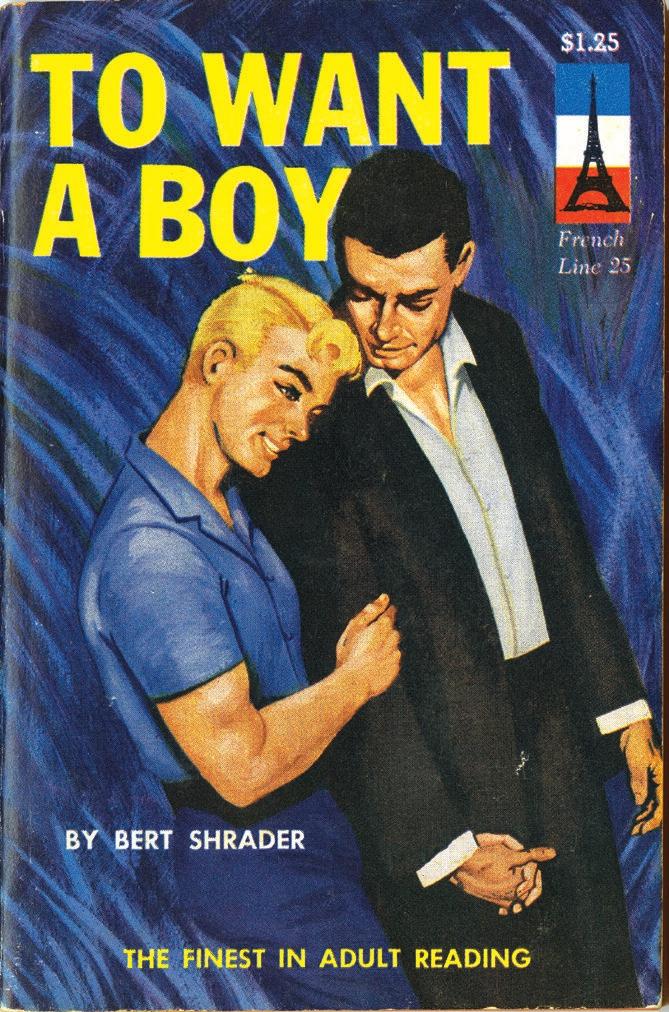
The heat of their passion is downright scalding.
As Bert begins to discover his true sexual identity, he seeks out loads in California just to see Bob. (Did I mention the boy reminds Bert of his son?) But Bob is a hustler, and a new client wants him full time, therefore eliminating Bob’s availability for hook-ups with his gas-guzzling, truck-driving lover. Although they never wanted anything emotional from their trysts, Bert is devastated.
Back home in New York, Bert hits the bars and hears some of the guys talking about the Kitten Club. It’s there that Bert meets Ivan, a businessman and tailor. They hook up, even though Ivan is married to another man, Karl.
Ivan and Karl introduce Bert to Manhattan’s Greenwich Village. They go to a party, where a sweaty orgy breaks out that would have made Caligula blush. Bert freaks out, and after returning home to see his kids, Bert and Martha decide to split up.
"As I thought about it, it seemed different somehow. I had been through so much since then. Why the hell couldn't I admit . . . at least to myself . . . that I was queer? It's better to be homosexual than sexless."
Women lusted after this handsome, virle jazzman...It took him years of agony to relize he wanted a man.
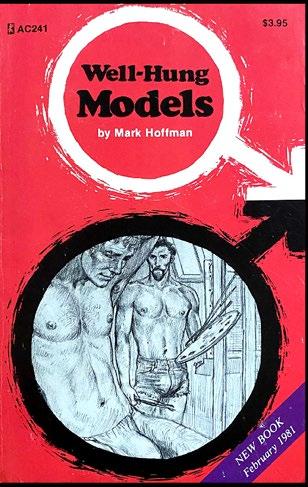

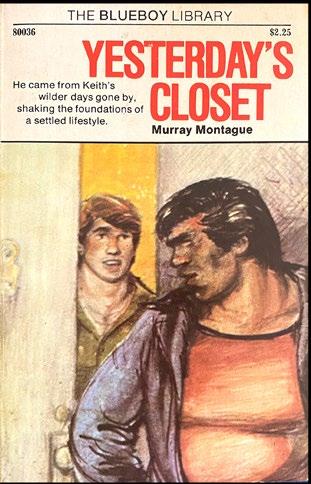
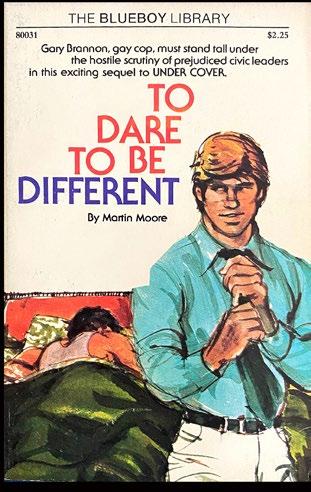
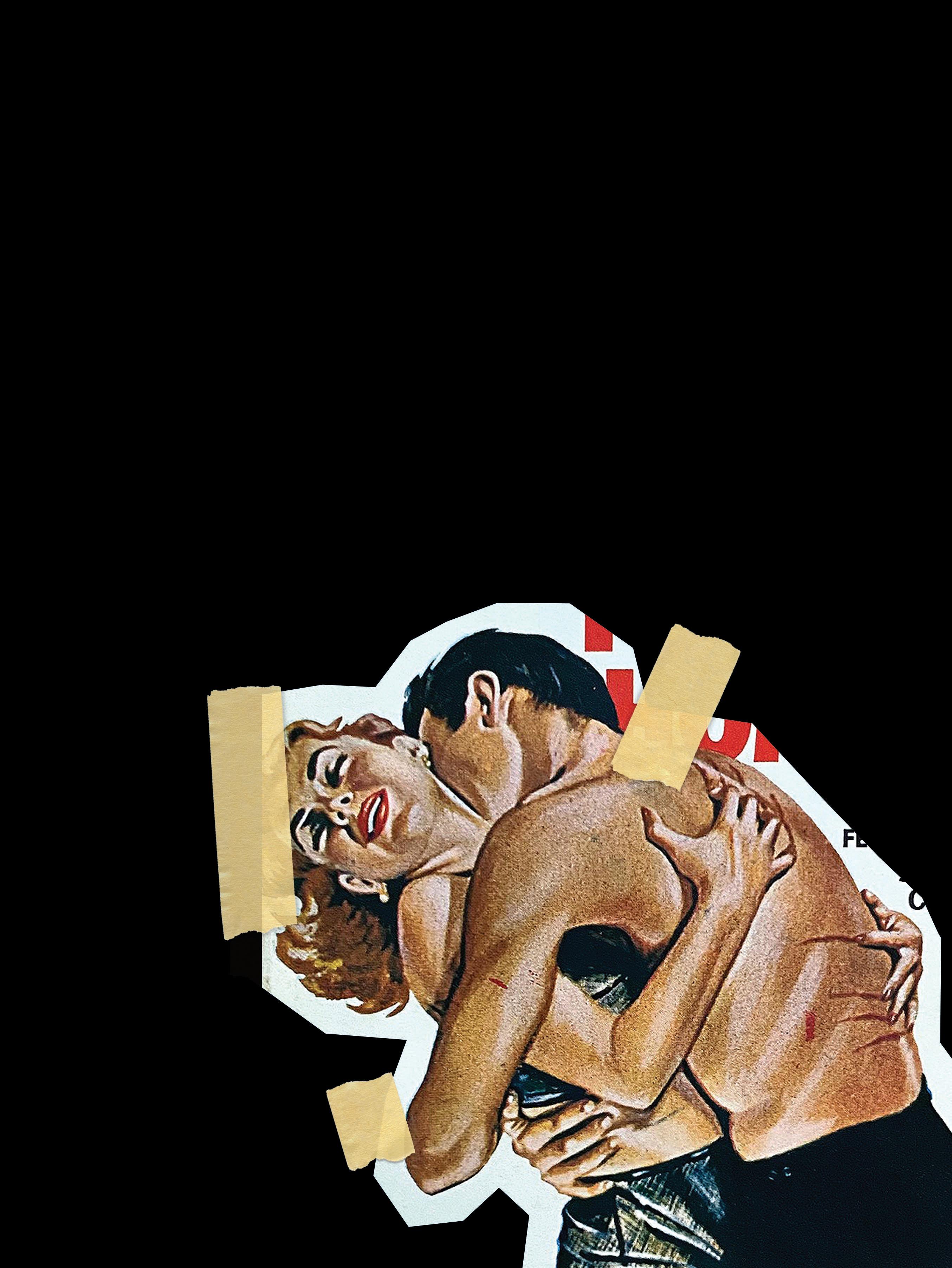
Authors Unknown
Sailor Beware, MM-111
Bobby, MM-110
Ricky, MM-109
Modern Men Series, 1990

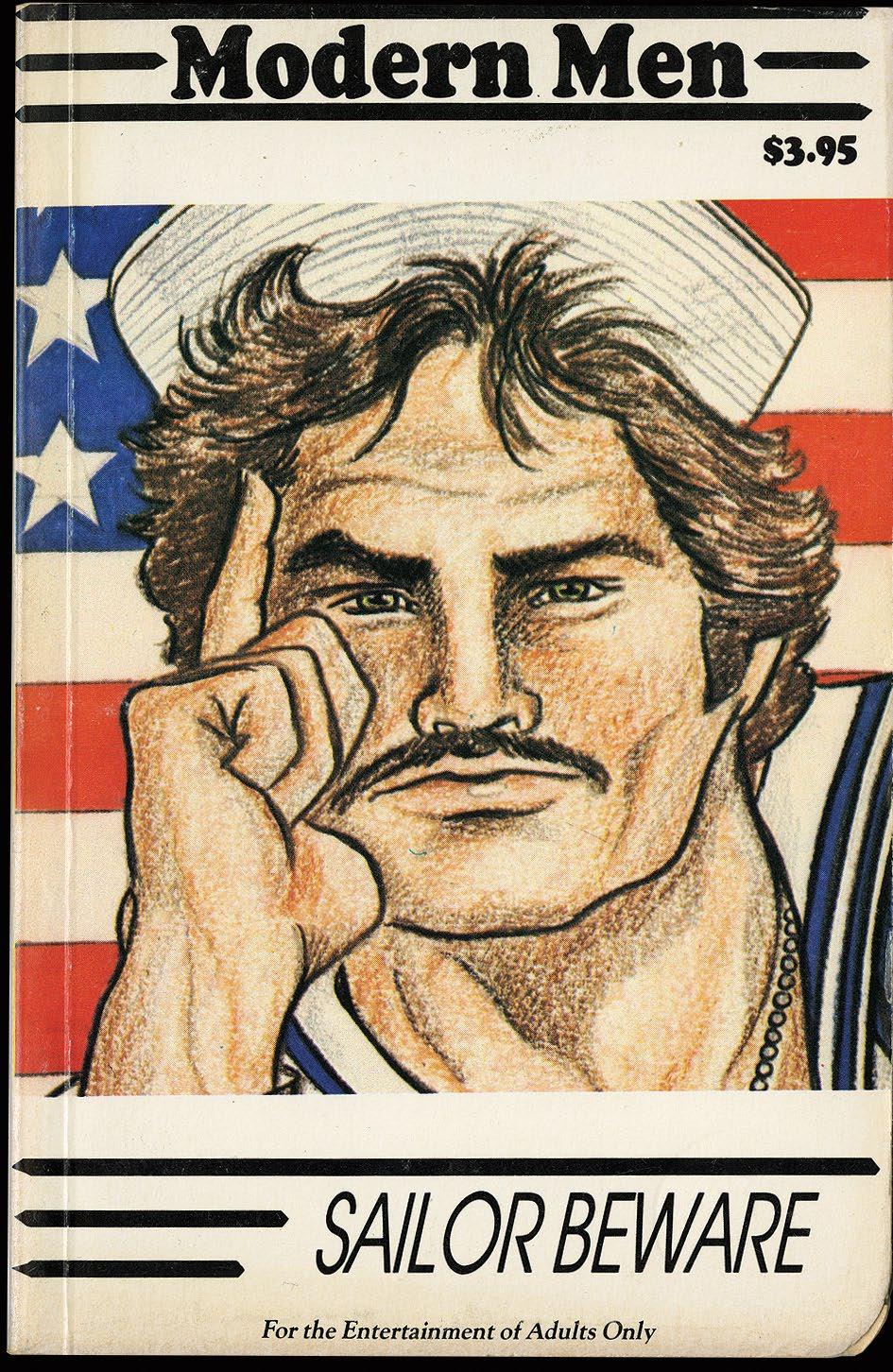
Star Distributors, Ltd.
New York, NY

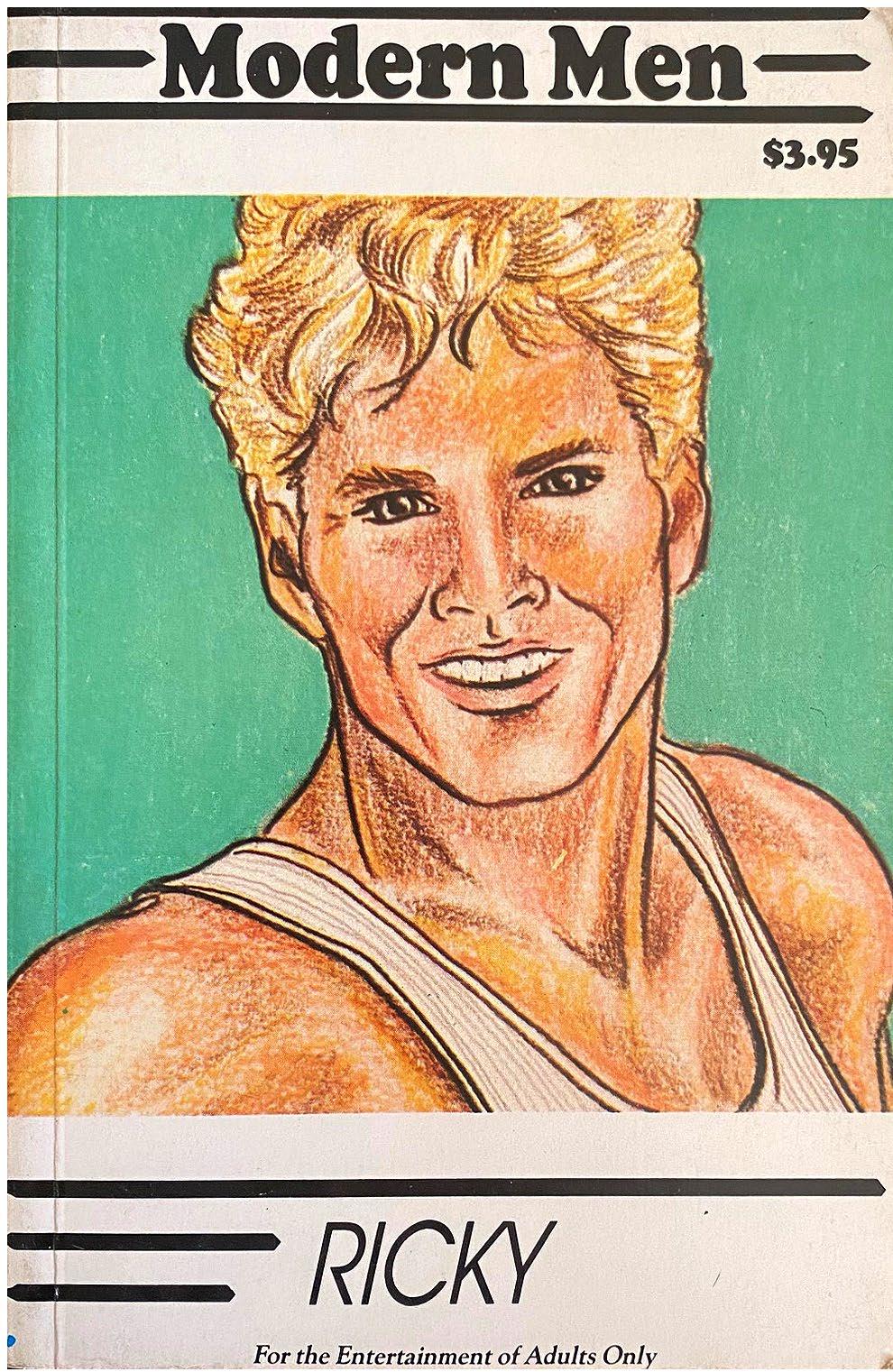
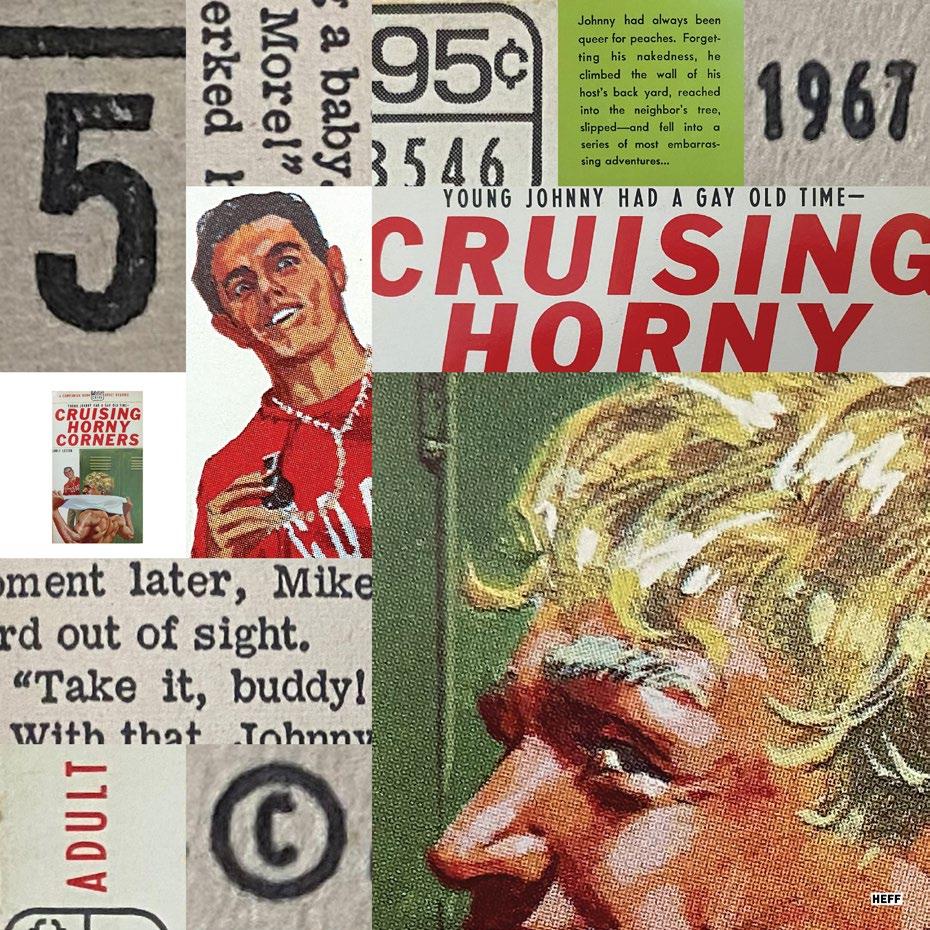
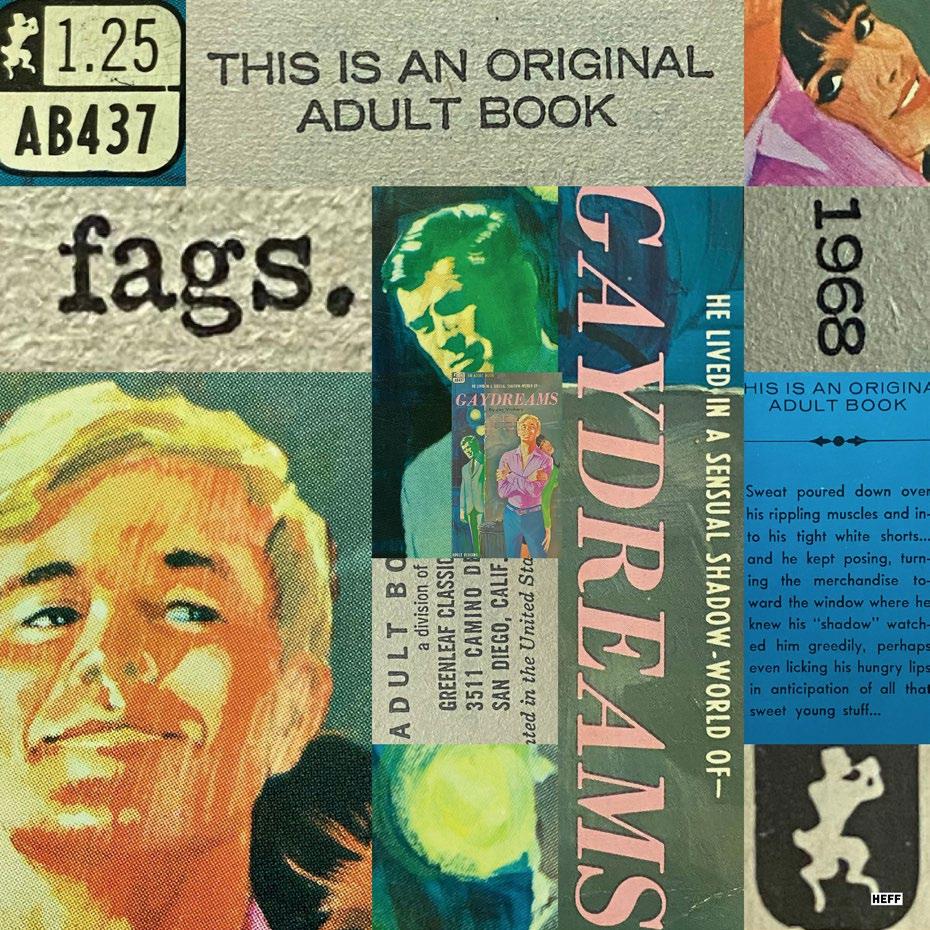
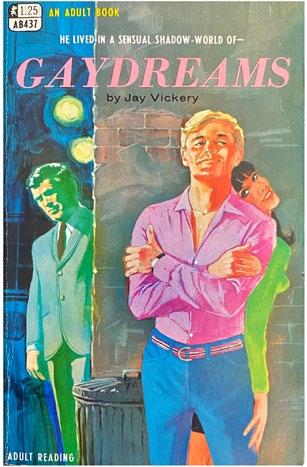
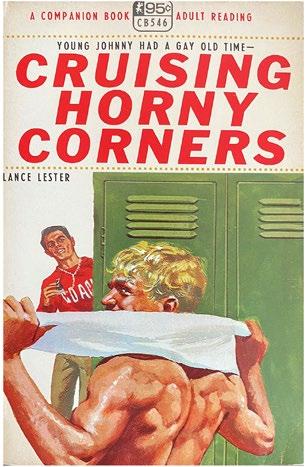
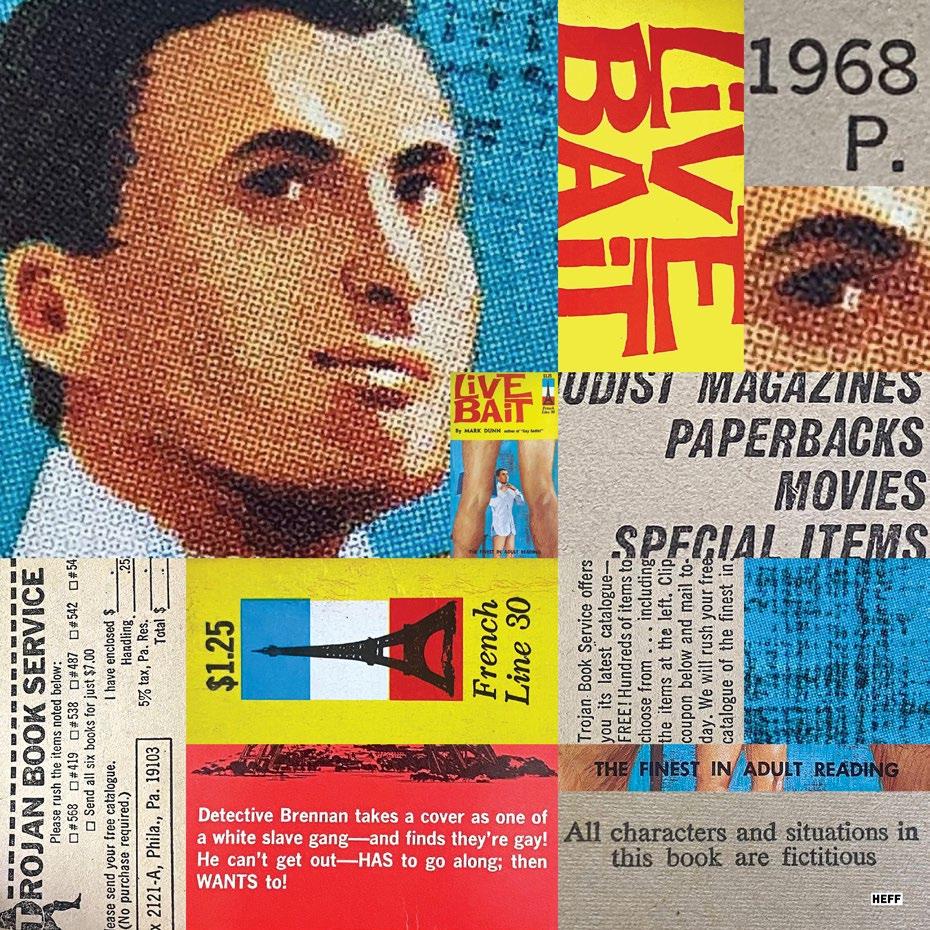
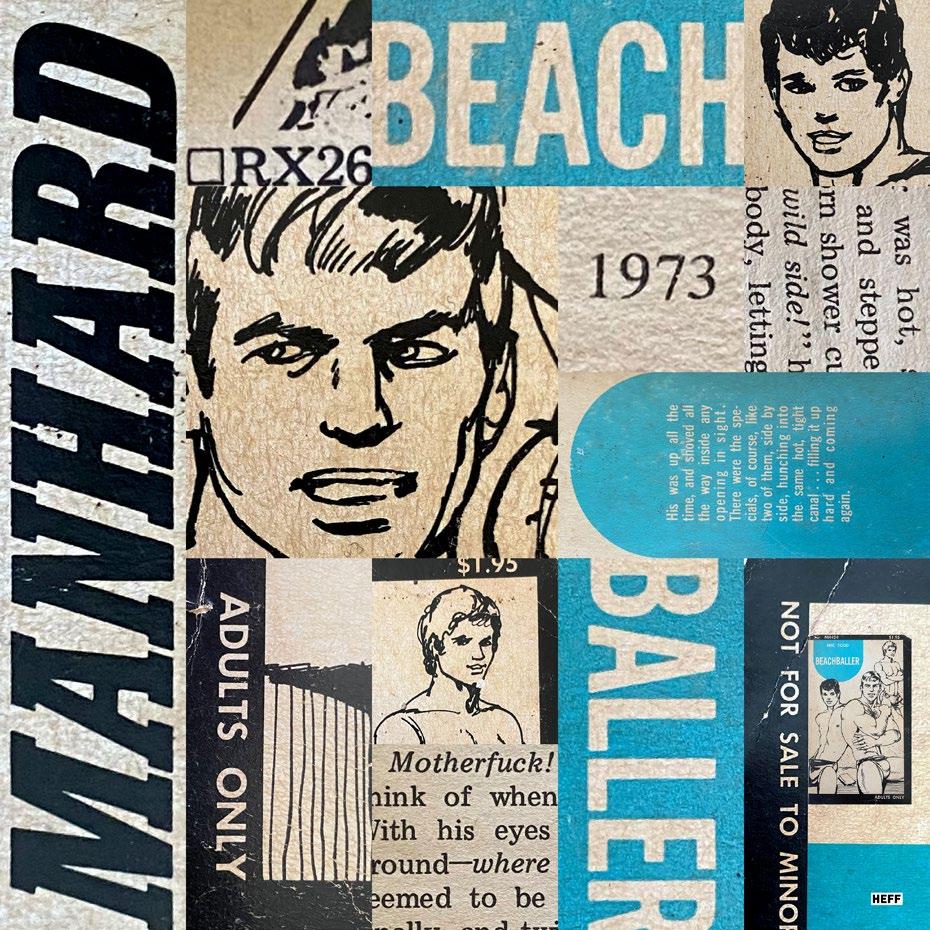
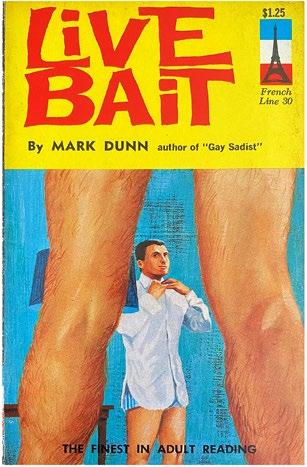
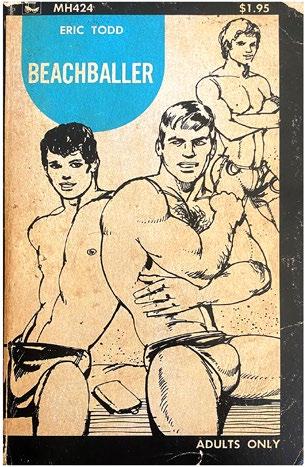
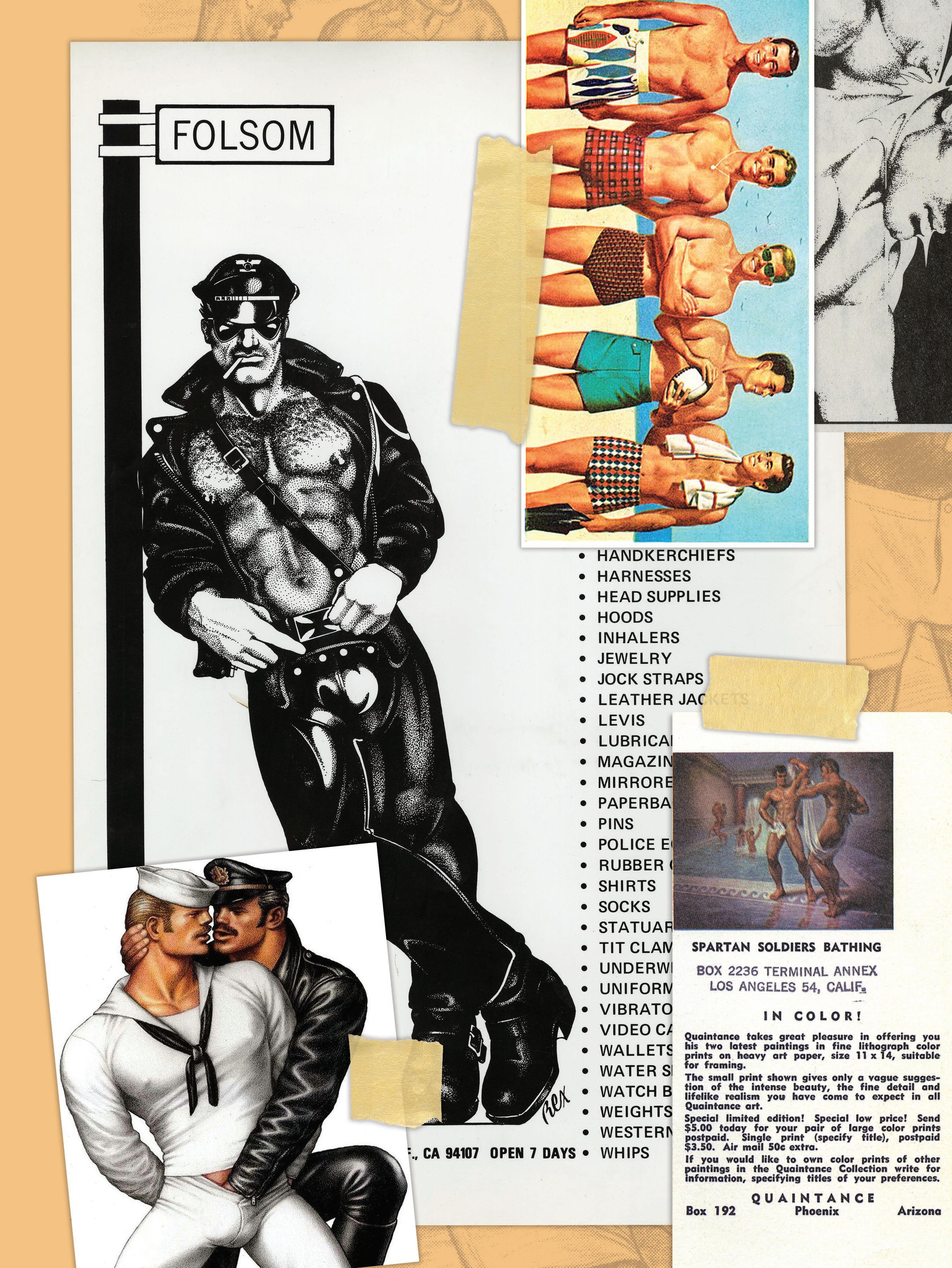
When we think of gay homoerotic illustrators from the 1950s, the first who comes to mind is Tom of Finland, with his precision pencil style and muscly, leather-clad daddies.
But, oh man, were there plenty of other artists taking pen to paper to illustrate gay desire in the mid-twentieth century. At first glance, they may appear to have been copying each other—but if you compare their mediums, styles, and the fetish scenes each chose to portray, they were all very distinct indeed.
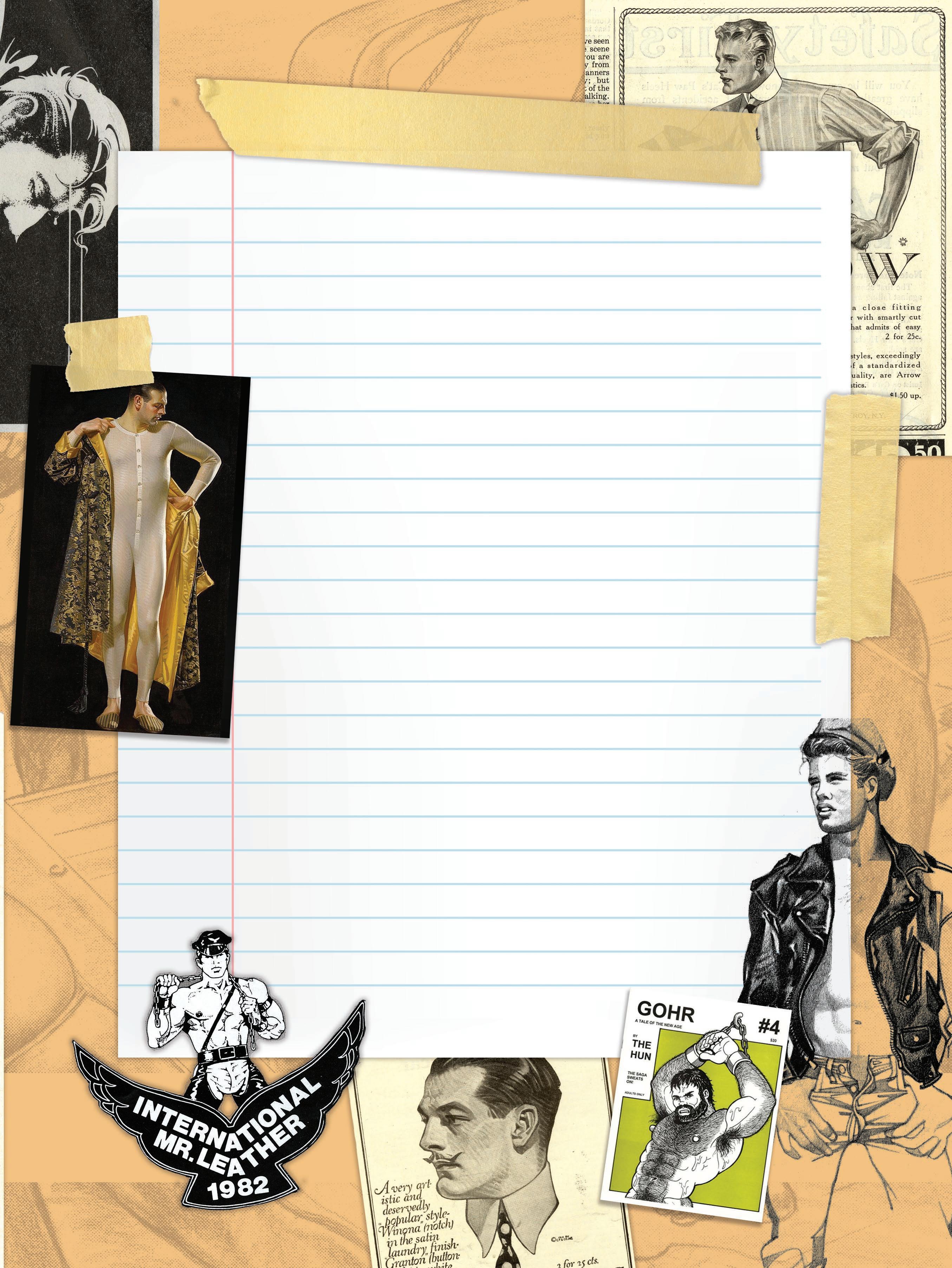
George Quaintance’s paintings of near-nude, oiled-up figures with the chiseled forms of mythological gods helped establish the macho motif now ubiquitous in gay imagery. Etienne’s pen-and-ink work was featured in advertising and branding, his drawings embodying every gay man’s fantasies— from the sexual exploits of corrupt, horny cops to deliverymen, frat boys, and soldiers, whose animalistic sex takes place in settings ranging from a parking lot to exotic Middle Eastern locales. And Harry Bush’s photorealistic graphite drawings were ubiquitous thanks to their innocent boy-next-door subjects, with their perfect hair and an anatomical perfection that brings to mind
Michelangelo’s David.
Whether these artists were depicting fantasies or real-life experiences, you could tell what each artist was into, and the banquet of carnal visual delights they created meant there was certainly something for everyone to feast on.
Rick Heffner Artists Collage, 2022 Digital collage © Rick Heffner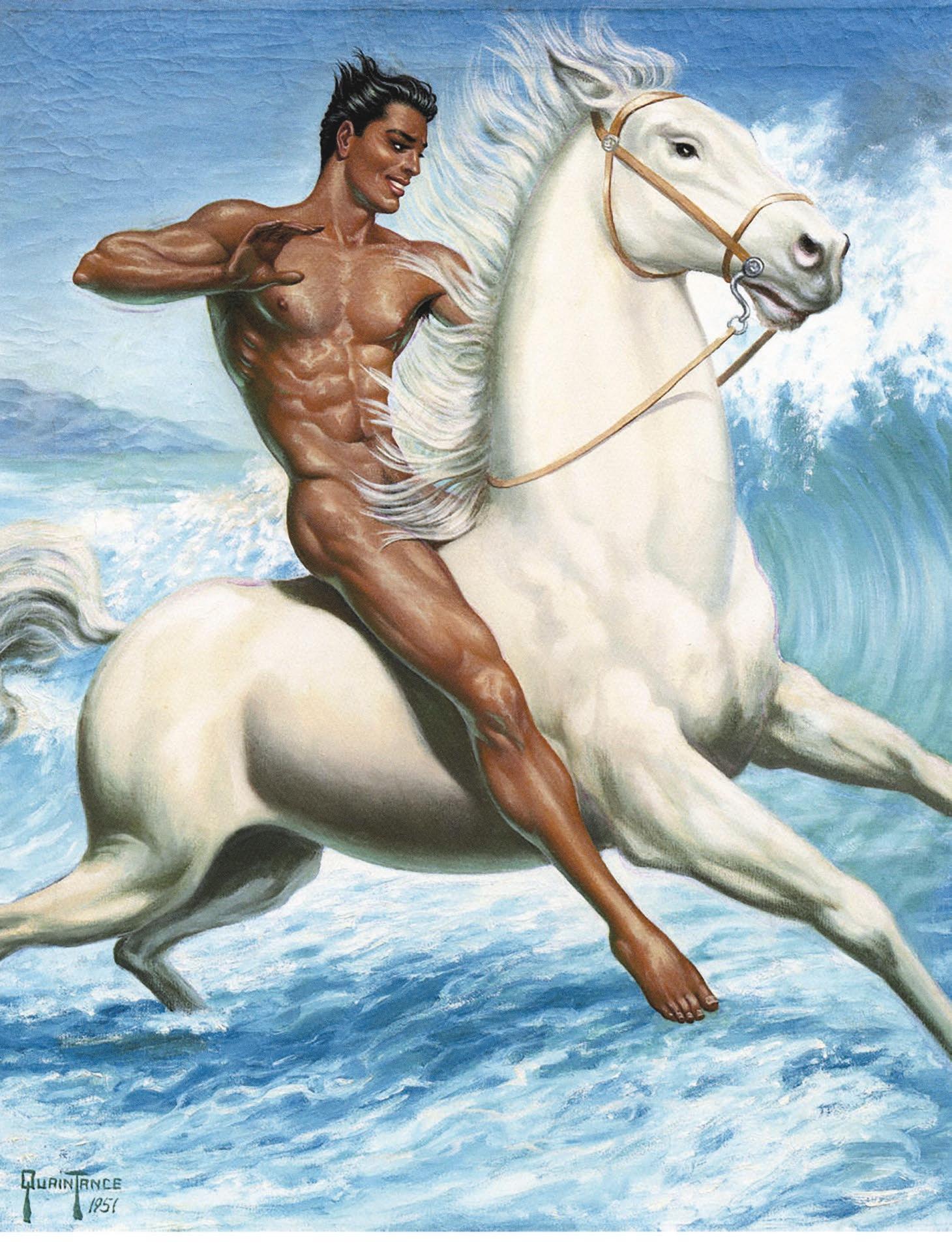
EORGE QUAINTANCE ’s homoerotic paintings, drawings, and prints of idealized male bodies shaped the queer camp aesthetic that would later inspire artists like Tom of Finland. His trailblazing images of chiseled Greek gods, as well as amorous cowboys and other denim-clad Southwestern characters, turned a queer gaze on traditionally heteronormative subject matter and helped establish the archetype of the ultra-macho gay god. Openly gay decades before the first rumblings of the gay liberation movement, Quaintance trod a fine line between acceptability and noncompliance in early twentieth century America. Best known for illustrating the covers of dozens of pulp magazines and paperbacks, Quaintance also holds the honor of supplying cover art for the 1951 inaugural issue of Bob Mizer’s beefcake magazine, Physique Pictorial
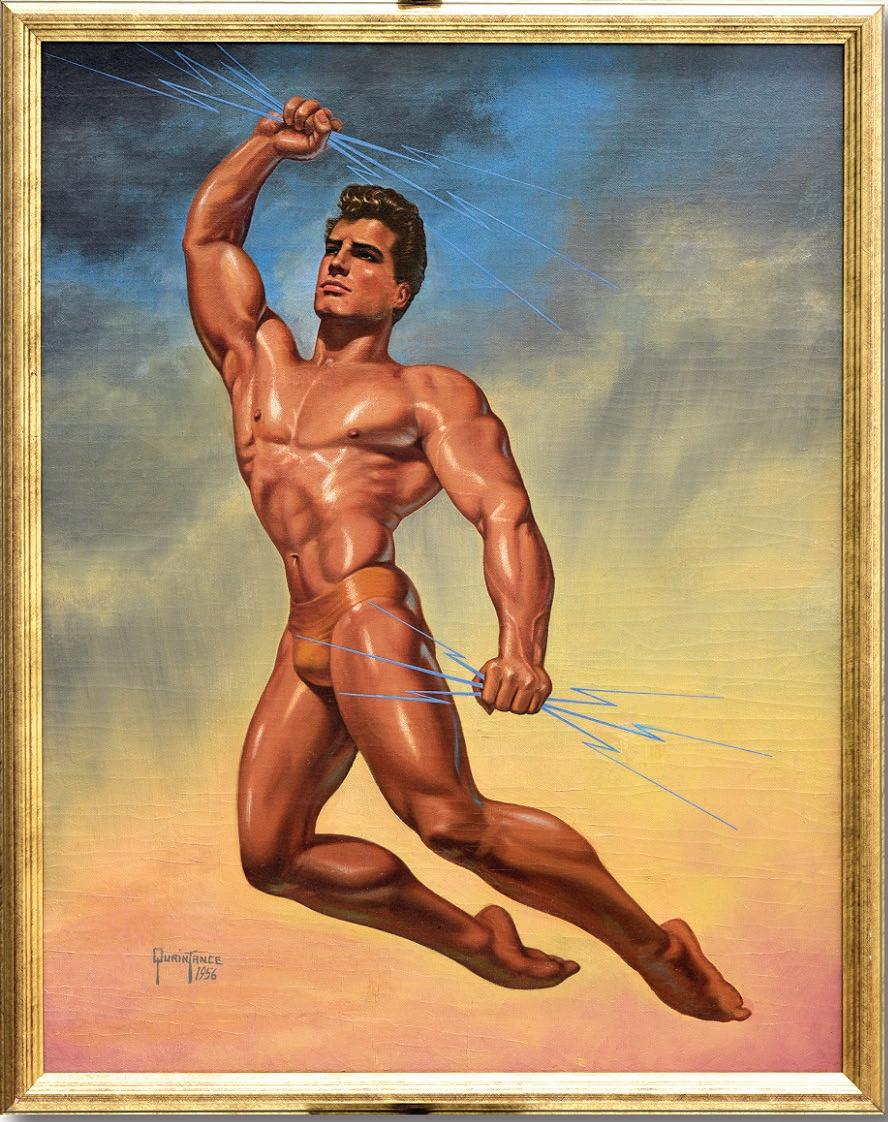
 George Quaintance Spartan Soldiers Bathing, 1956 Oil on canvas 32" x 40"
George Quaintance Spartan Soldiers Bathing, 1956 Oil on canvas 32" x 40"
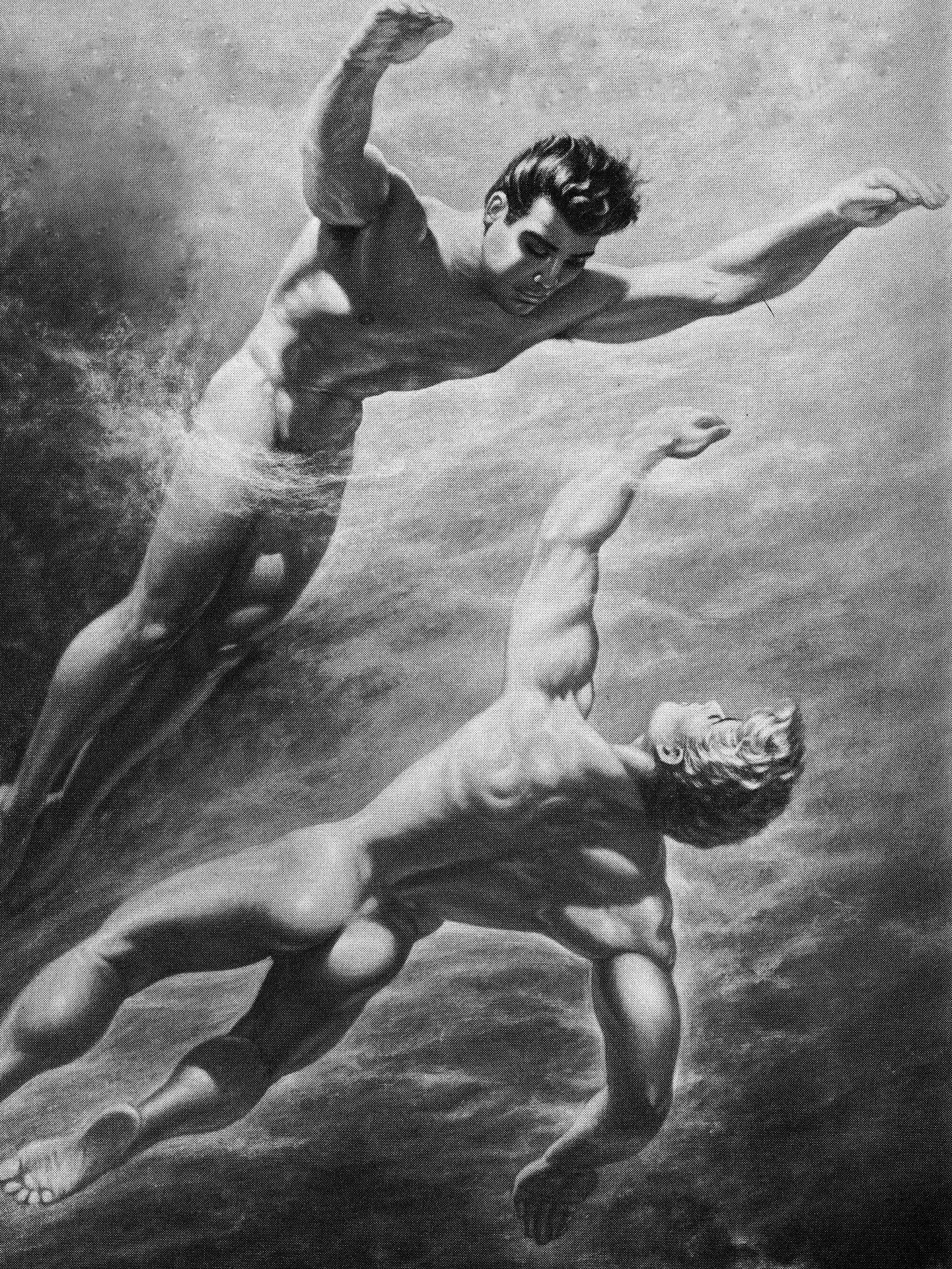 George Quaintance
Coral Reef Featured in Physique Pictorial, vol. 9, no. 3 (January 1960) Athletic Model Guild Los Angeles, CA
George Quaintance
Coral Reef Featured in Physique Pictorial, vol. 9, no. 3 (January 1960) Athletic Model Guild Los Angeles, CA
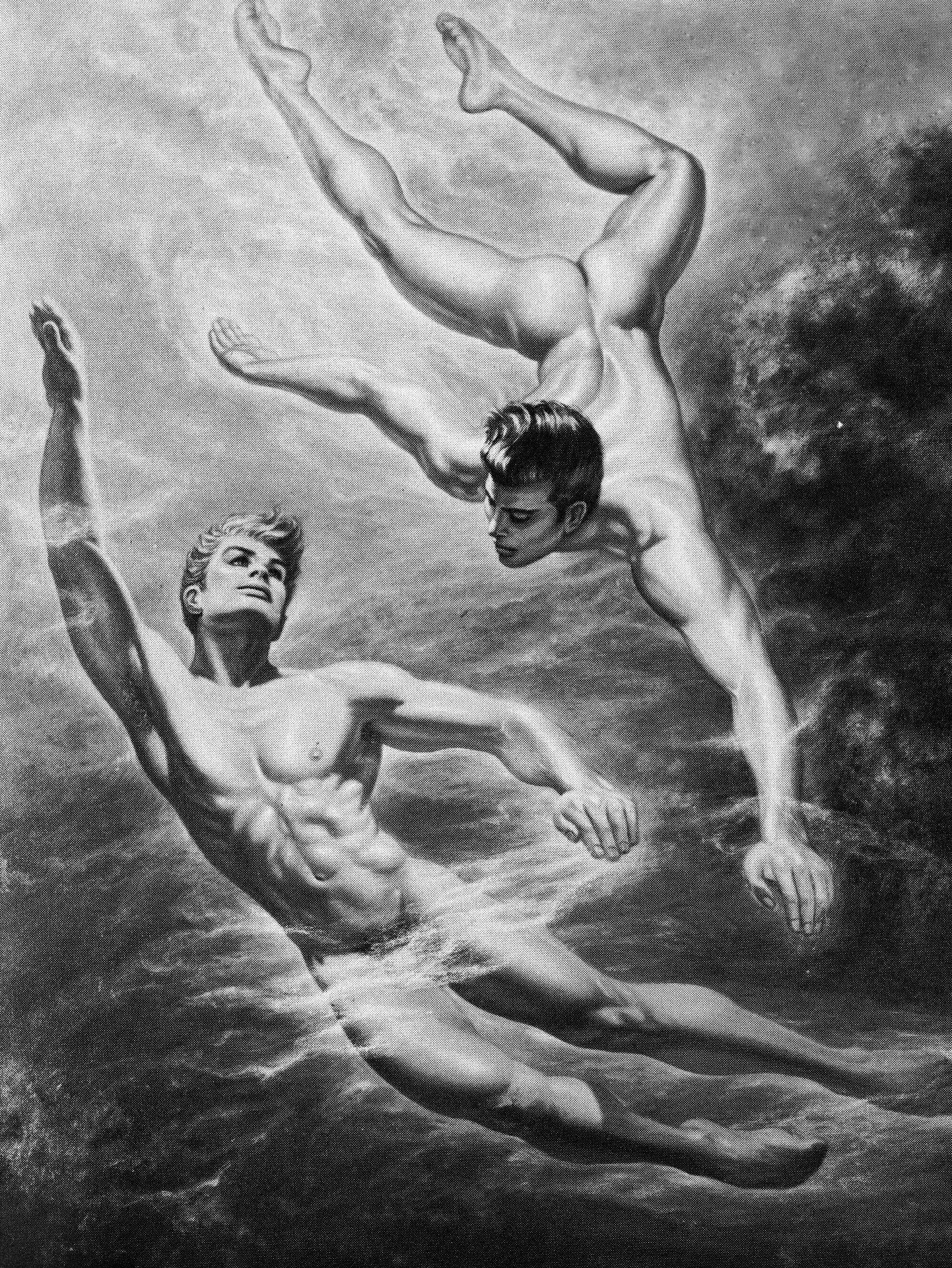
ORN AND RAISED in southern Mississippi, Carl Vernon Corley served in World War II as a member of the United States Marine Corps stationed in the South Pacific. After the war, he moved to Jackson, Mississippi, and worked as an illustrator and staff artist for the Mississippi State Highway Department and, later, the Louisiana Highway Department, where he designed tourist guides, manuals, pamphlets, road maps, and traffic surveys.
In the 1950s and ‘60s, Corley entered the flourishing field of male erotica by producing drawings and paintings of beefcakes for leading physique magazines before turning his focus to writing gay pulp fiction. Between 1966 and 1971, he wrote twenty-two erotic novels for a raft of pulp publishers, including the French Line by Publishers Export Company of San Diego and the Pad Library of Agoura, California. Illustrating his own cover art in his distinctive campy-kitschy style, Corley also had the books published under his name—a rarity for most writers at the time.

Autobiographical elements are laced throughout much of Corley’s work. His early novels take place in rural Mississippi— including his hometown of Florence. Most plots deal with smooth young Southern farm boys exploring gay sex, sometimes crossing racial or class lines in their search for cock and companionship. Some novels even took place in urban settings such as Baton Rouge and New Orleans, whose cramped, sweaty streets Corley frequented after his move to Louisiana in 1961.
In stark contrast to the muscle men depicted on many gay pulp covers, Corley’s protagonists are physically small and mannequin-like men who prefer to be the submissive partner and even express desires to be the “wives” keeping house for their partners. For most of Corley’s main characters, receptive anal sex seems to be the most natural thing in the world. These attributes—applied to both his writing and cover art—position Corley and his work as unique examples of out-and-proud gay expression in a rural, Southern setting in pre-Stonewall America.
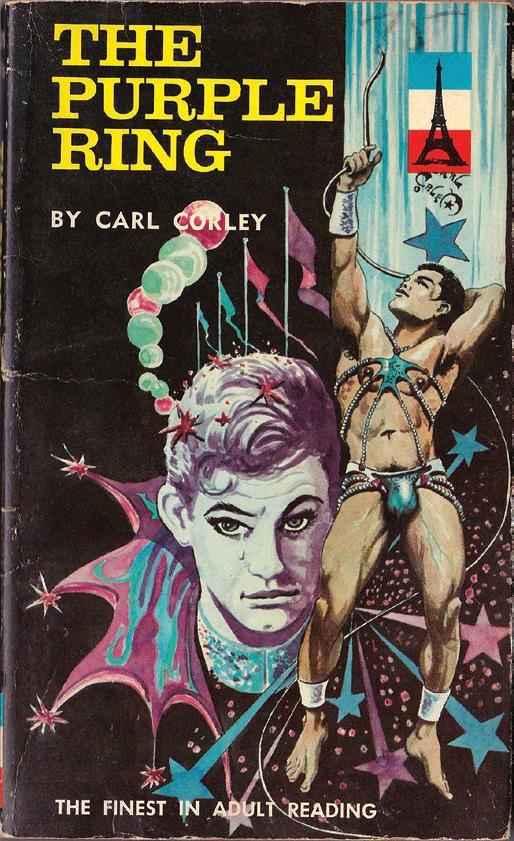
LEFT: Carl Corley
The Purple Ring, 1968
P.E.C. French Line Novel, FL-39 Publishers Export Co., Inc. San Diego, CA
RIGHT: Carl Corley
Jesse: Man of the Streets, 1968
P.E.C. French Line Novel, FL-33 Publishers Export Co., Inc. San Diego, CA
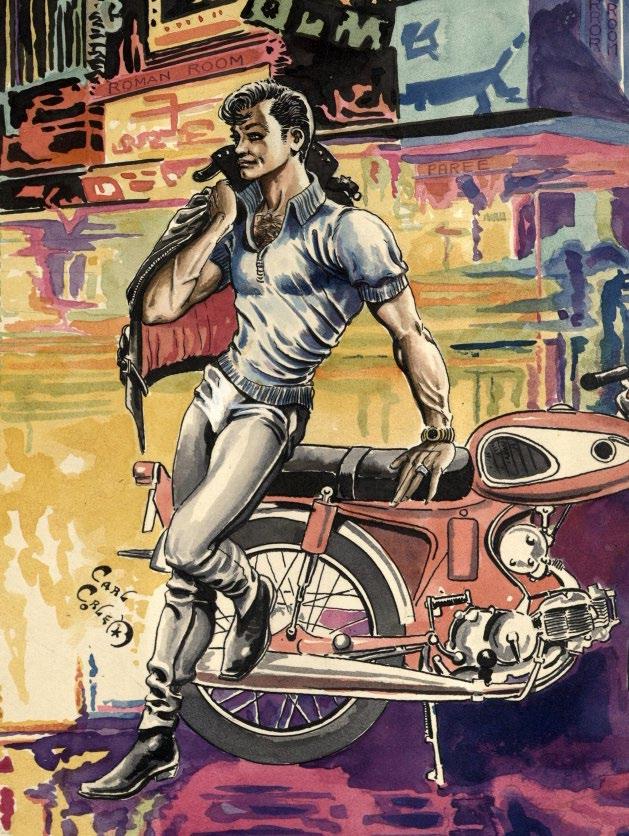
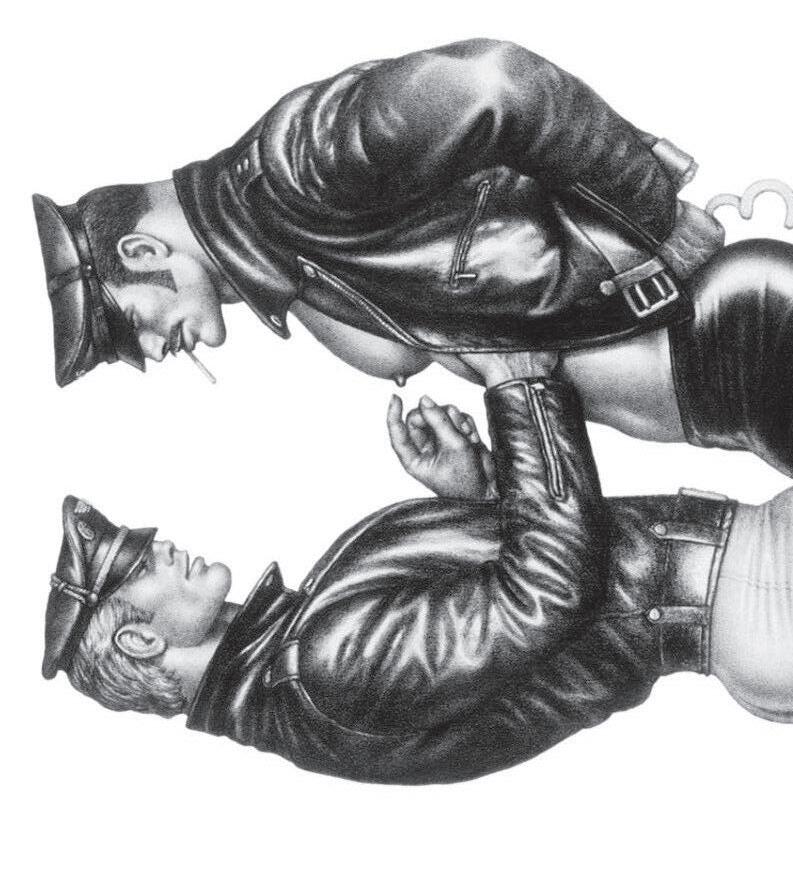
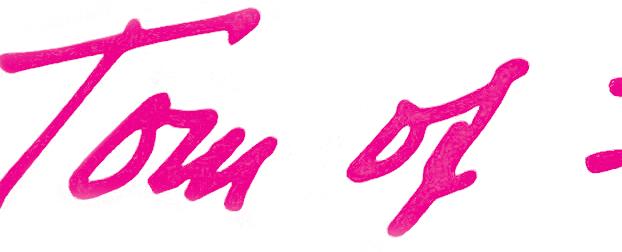
— TOM OF FINLAND
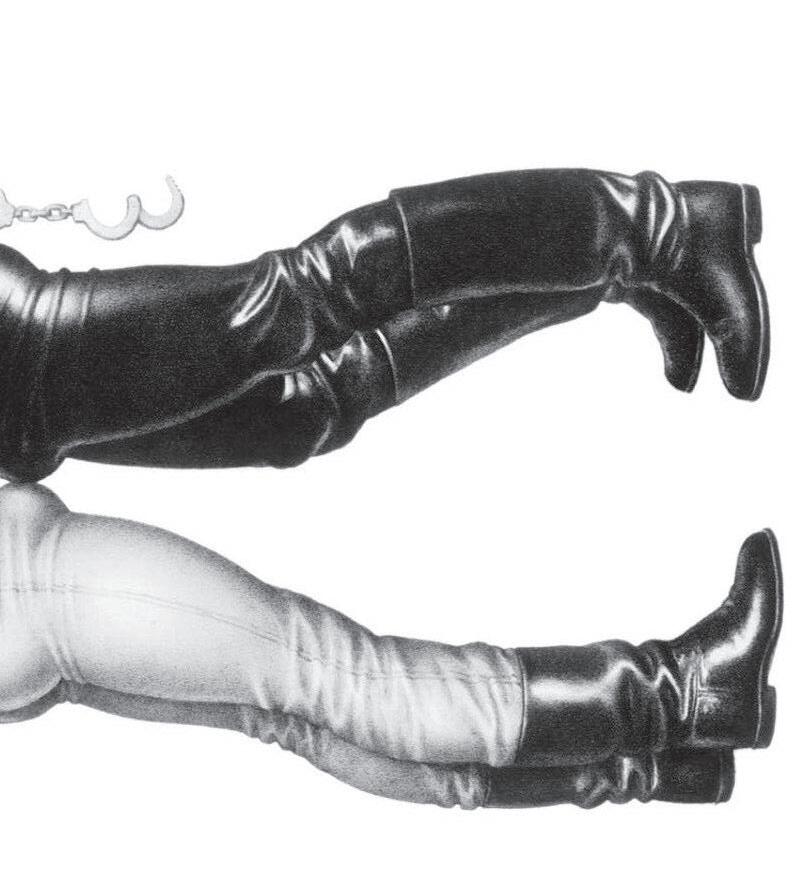
(1920–1991)

“If I don’t have an erection when I’m doing a drawing, I know it’s not good.”
HROUGH THOUSANDS OF IMMACULATE drawings of leathermen—prime-beef examples of sailors and cops, war heroes and motorcycle mavens, replete with nipple rings, boots, and bulges—the Finnish artist Touko Valio Laaksonen established a new visual vocabulary for presenting gay hyper-masculinity.
The frontiersmen of Laaksonen’s homeland were as fierce and rugged as the Finnish landscape was rough and wild. But little Laaksonen was not like them. His parents were school teachers who raised their son in a home filled with art, literature, and music. By age five, Laaksonen was playing the piano and drawing. As he came of age, his love for the arts was eclipsed only by his deep fascination and fondness of those burly outdoorsmen.
He developed a crush on a neighbor, a muscular farm boy whose name was Urho, meaning “hero.” But Urho was only one of many boys Laaksonen fantasized about— memorizing every flex of their slender muscles, every twist of their full, pouty lips.
In 1939, Laaksonen began correspondence courses at a marketing and advertising school before joining the Finnish military as an anti-aircraft officer in World War II. He was especially fascinated by the German soldiers, as well as the sexy trade he encountered at city ports—including construction workers, sailors, and police officers. Too afraid to approach any of them, Laaksonen found his first taste of sexual ecstasy in blacked-out city streets during the war. In this no man’s land, similar to today’s version of a bar backroom, Laaksonen unleashed the sexual cravings he had fantasized about with his primary objects of lust: uniformed men standing tall in their slick, svelte jackboots.
After the war, Laaksonen studied music at Helsinki’s famed Sibelius Academy. Without the anonymous carnal delights taking place in the city’s streets, his sexual menu turned to stroking himself with one hand while the other conceived on paper the actions he could no longer find in pitch-dark alleys.
By day, Laaksonen freelanced in advertising, window displays, and fashion design. In the evenings, he played piano gigs, largely avoiding the gay scene’s “artistic” bars, which were dominated by dazzling, loose-wristed dandies. During his travels, Laaksonen frequented gay cruising areas— one of which introduced him to Veli “Nipa” Mäkinen, who would become his partner for the next twenty-eight years.
BACKGROUND:
Tom of Finland (Touko Laaksonen)
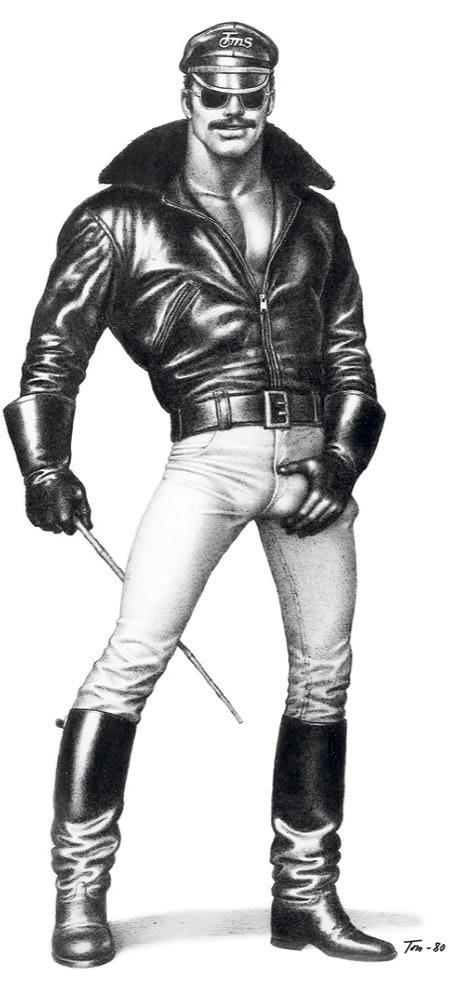
Untitled (From Beach Boy 2), 1971
Pen and ink, gouache on paper 8.25" x 5.25"
Tom of Finland Foundation
Permanent Collection #71.61
© 1971 Tom of Finland Foundation
Source: artblart.com/tag/tom-of-finland/
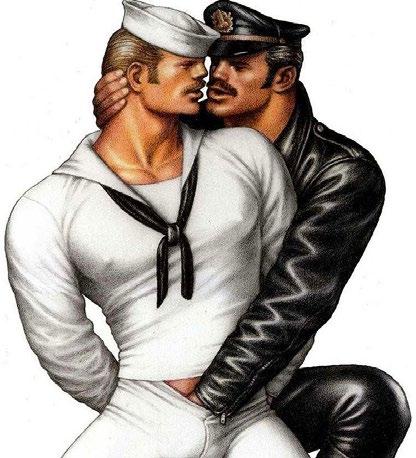
“To me, a fully dressed man is more erotic than a naked one.”
OF FINLAND
There might have been no “ Tom of Finland” if it hadn’t been for Bob Mizer. Laaksonen’s work first appeared on the cover of Physique Pictorial in 1957, depicting two young lads logging down a river. Since Mizer couldn’t pronounce Laaksonen’s name, he christened the young artist “Tom of Finland,” in keeping with the moniker style adopted by other photographers and artists such as Lon of New York and Bruce of Los Angeles. The demand for Tom’s “ dirty drawings” multiplied, but not enough to support him. He soon stopped playing the piano to focus exclusively on drawing, but it would be the early 1970s before Tom made enough money to quit his advertising job.

Now able to devote full-time efforts to his drawings, Tom merged his hyperphotorealistic technique with his wildest sexual fantasies to produce a portfolio of work that will probably never be outdone.
Following the first exhibition of his art in Hamburg, Germany, in 1976, Tom embarked on numerous trips to the United States for exhibitions in Los Angeles, San Francisco, and New York. This period of travel and exposure turned the introverted Helsinki artist into an international gay celebrity, becoming fast friends with other artists like Etienne and Robert Mapplethorpe. With Durk Dehner overseeing the business side of his career, Tom’s artistic career was, for the first time, financially in the black.
Tom’s lover Veli passed away from throat cancer in 1981, just as the AIDS epidemic began to devastate the cities and the friends he had come to love. Still, Tom’s trips to America continued throughout the ‘80s, and eventually he began to formally split his time between Los Angeles and Helsinki. In 1988, Tom was diagnosed with emphysema, which forced him to stop traveling but thankfully didn’t impact his ability—or desire—to draw. His energy reserves weakened by his cancer treatments, Tom switched to his favorite medium as a child, pastel, working almost exclusively with the medium’s muted tones until his death from a stroke in 1991.
The Rebel action figure stands 13" high (so size queens will be happy) and comes with three interchangeable penises. (Yes, yes, I know...but it’s almost too easy!) The figure has the Tom bod, the cocky smile, and the leather getup. Yum.
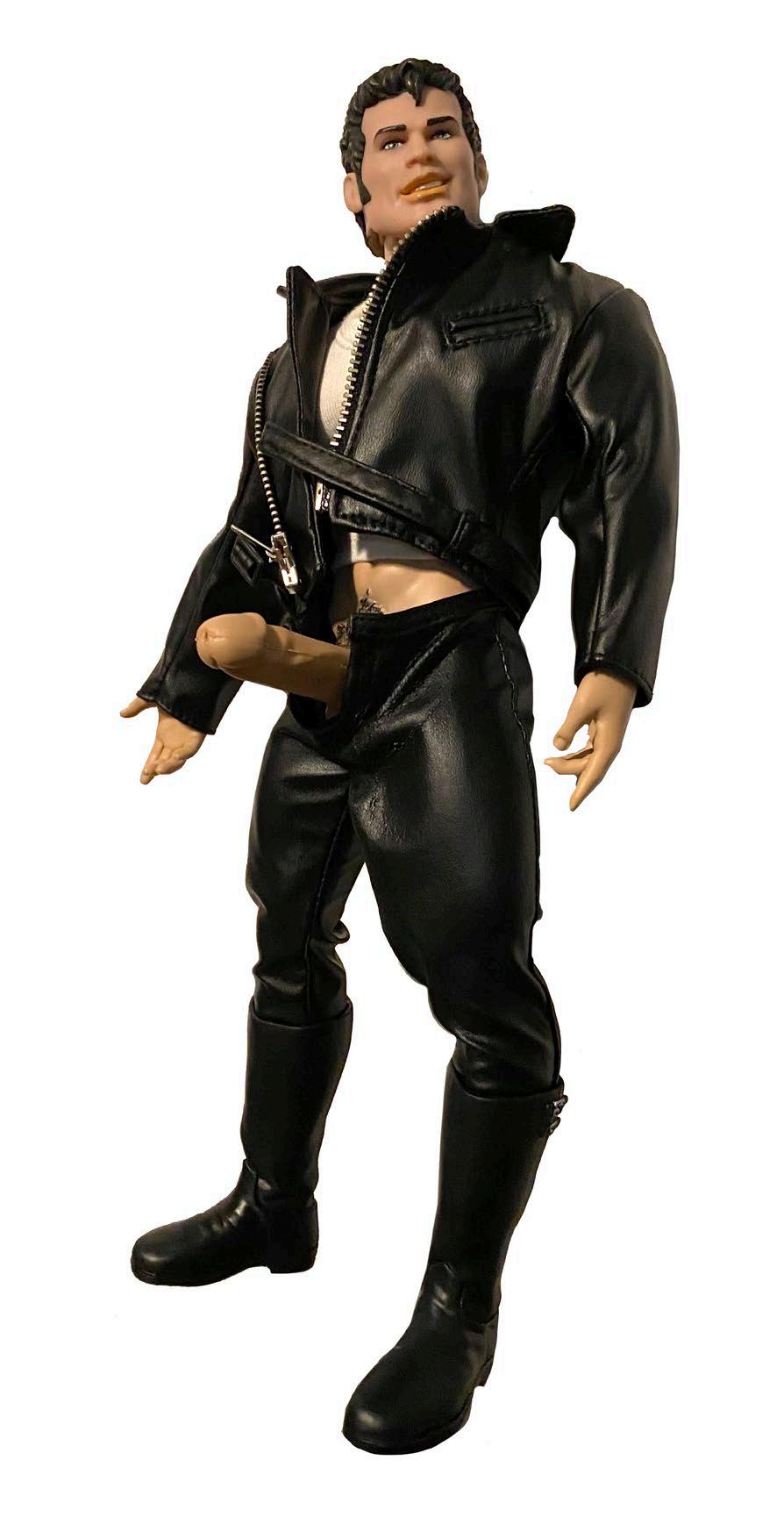
RIGHT:
At
the urging of a friend, Touko sent his secret artwork to a popular American muscle magazine at the end of 1956. The editor, Bob Mizer, loved them, but couldn't pronounce his name.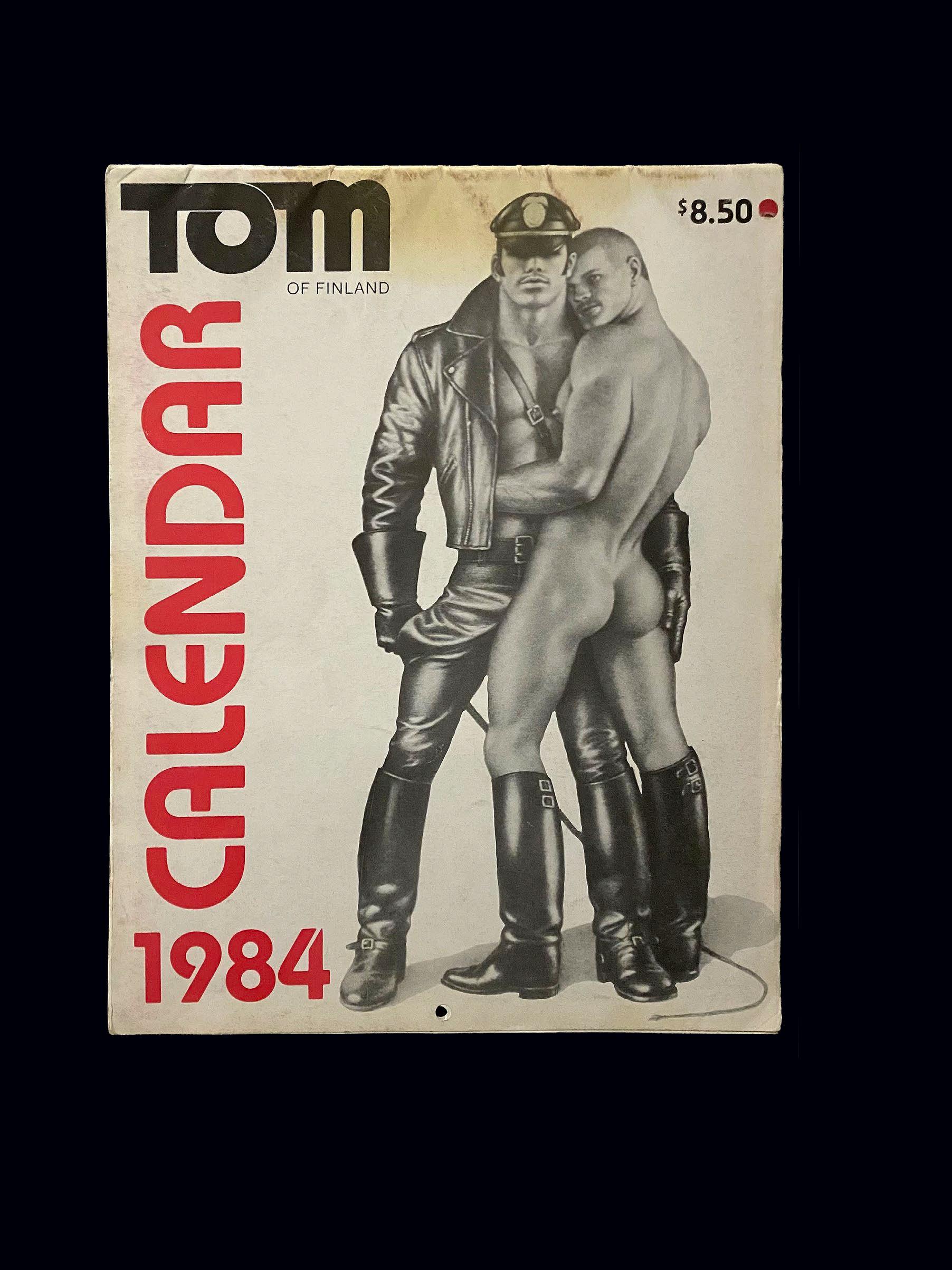
These stamps were designed by graphic artist Timo Berry, who said at the time that the images he chose “represent strong and confident male figures typical of their designer,” and that the sheet “portrays a sensual life force and being proud of oneself. There is never too much of that in this northern country.”
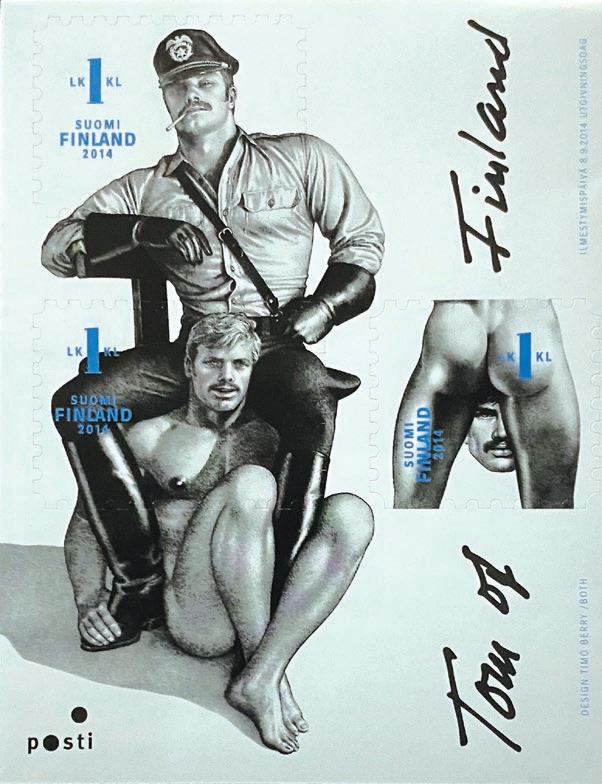 2014 Finnish postal stamp
2014 Finnish postal stamp
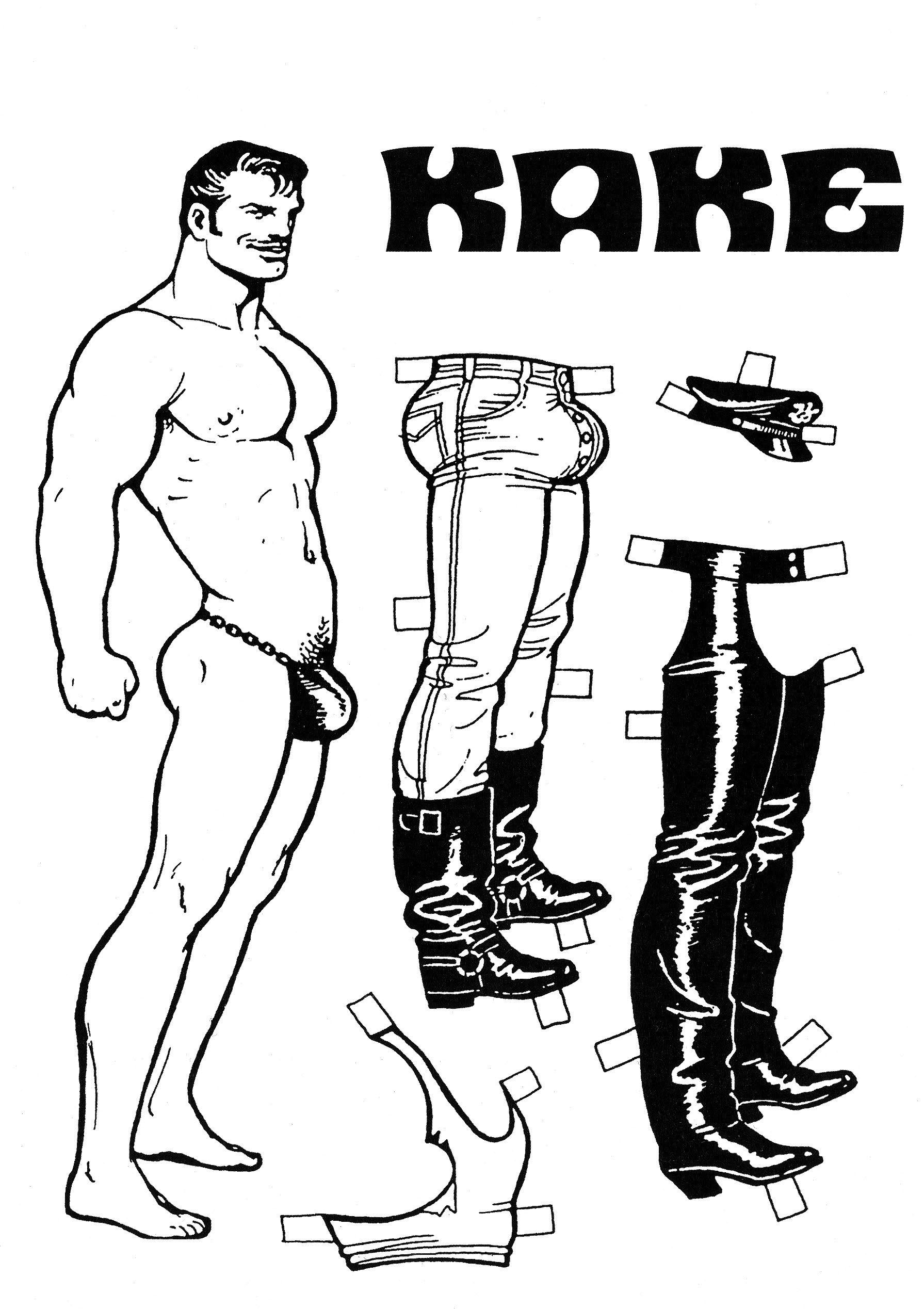
Called "the gay world's most familiar pin-up icon," Kake (pronounced KAH-key, or cocky), was the title character of a twenty-six-issue series of erotic comic books created by Tom of Finland and published from 1968 to 1986. As exemplified by Kake’s supermasculine physical characteristics and frequent sexual encounters, the world of Tom's comic book illustrations significantly influenced the aesthetics of the gay leather subculture.
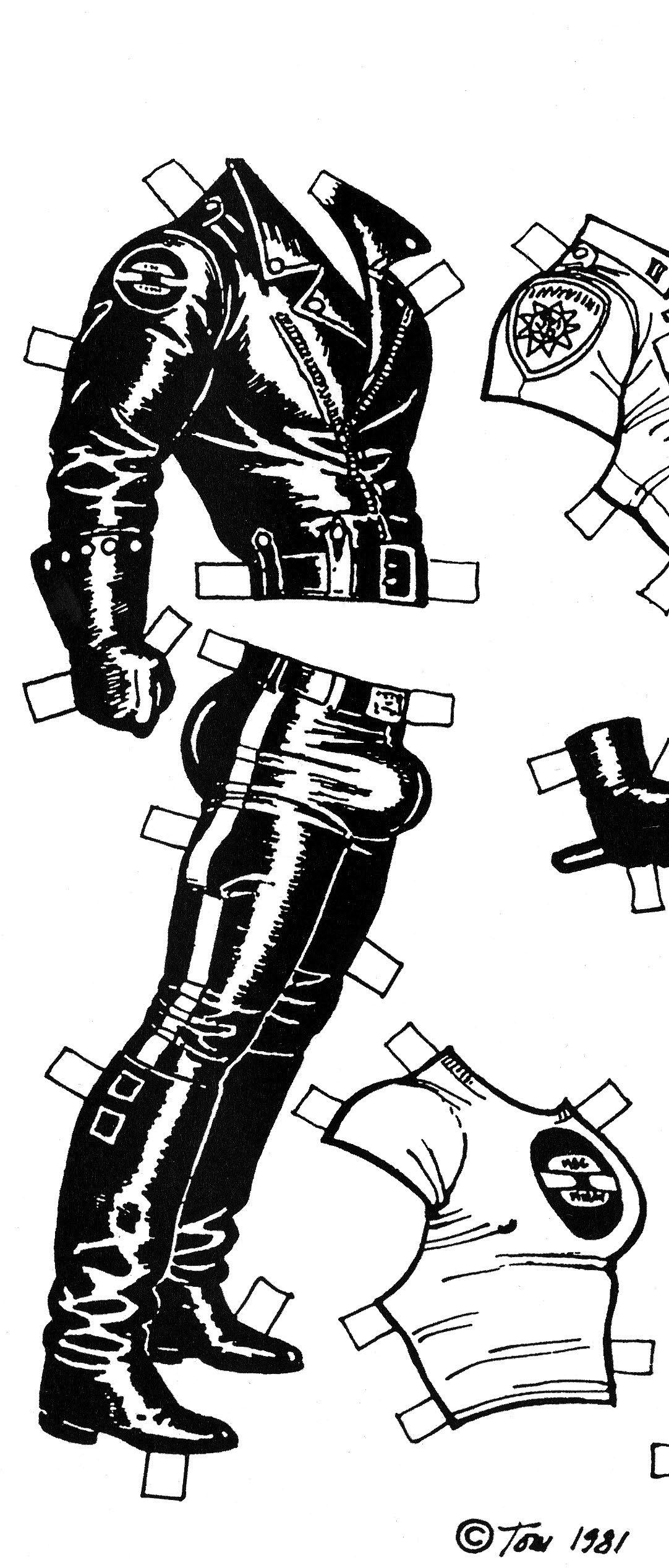
Kake is a highly sexualized character distinguished by his bulging muscles, huge nipples, and massive member. Depicted as a mustachioed leatherman, Kake’s outfits are typically associated with the look of biker culture: a leather jacket, leather pants, knee-high leather riding boots, and a leather peaked Muir cap. (That, of course, is when the character isn’t appearing in other fetishized attire, such as the form-fitting uniforms of policemen or mechanics.)
Tom’s beloved character had a friendly and easygoing personality, providing intentional contrast with typical portrayals of leathermen in heterosexual culture, which presented the archetype as dangerous. His promiscuity reflected the sexual liberation movement of the 1960s, depicted in Kake’s seemingly endless string of sexual encounters with similarly masculine, muscular, and hung men or groups of men such as sailors, police officers, lumberjacks, businessmen, and cowboys, which typically took place in public restrooms and parks.
Tom based Kake’s look and machismo swagger on one of his regular references, a man from northern Finland named Eero. Throughout the 1960s and ‘70s, Eero regularly visited Tom’s studio in Helsinki to pose. Kake, a Finnish nickname that roughly translates to "Butch," was also the name of one of Tom's friends.
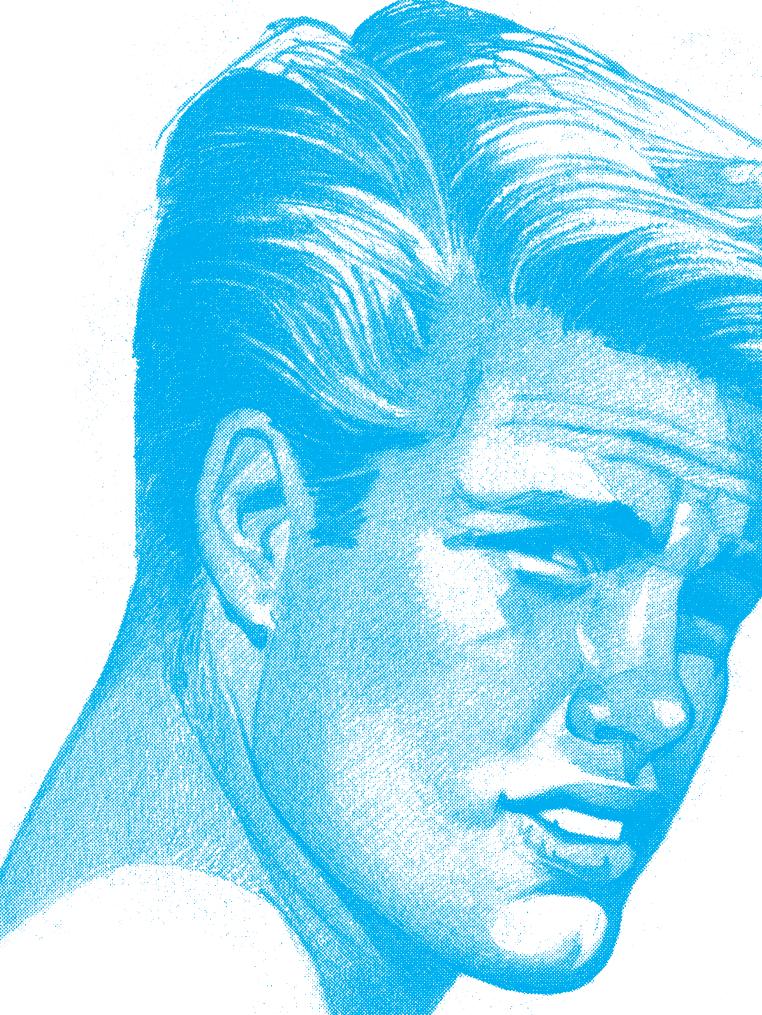
NE OF THE MOST NOTABLE ARTISTS of the beefcake magazine era, Harry Bush— (Yes, that was his real name, folks!) —was known for his homoerotic, meticulously detailed boy-next-door depictions of men.
His energetic collection of crisp graphite drawings celebrates the sexy, laid-back lives of the innocent, fresh-faced allAmerican male. Mixing anatomical accuracy with brilliantly bold, almost cartoony touches, Bush’s masterful rendering skills chisel each individual muscle into being. He obsessively etched and shaded biceps, deltoids, six-packs, and obliques to sheer perfection, as if he were making love with every stroke of his pencil.
Bush served in the U.S. Air Force during World War II, where he had his first homosexual experience while deployed in Europe. Illustration was only a hobby for him during the war; a self-trained artist, Bush had taken only one drawing class, at a local community college.
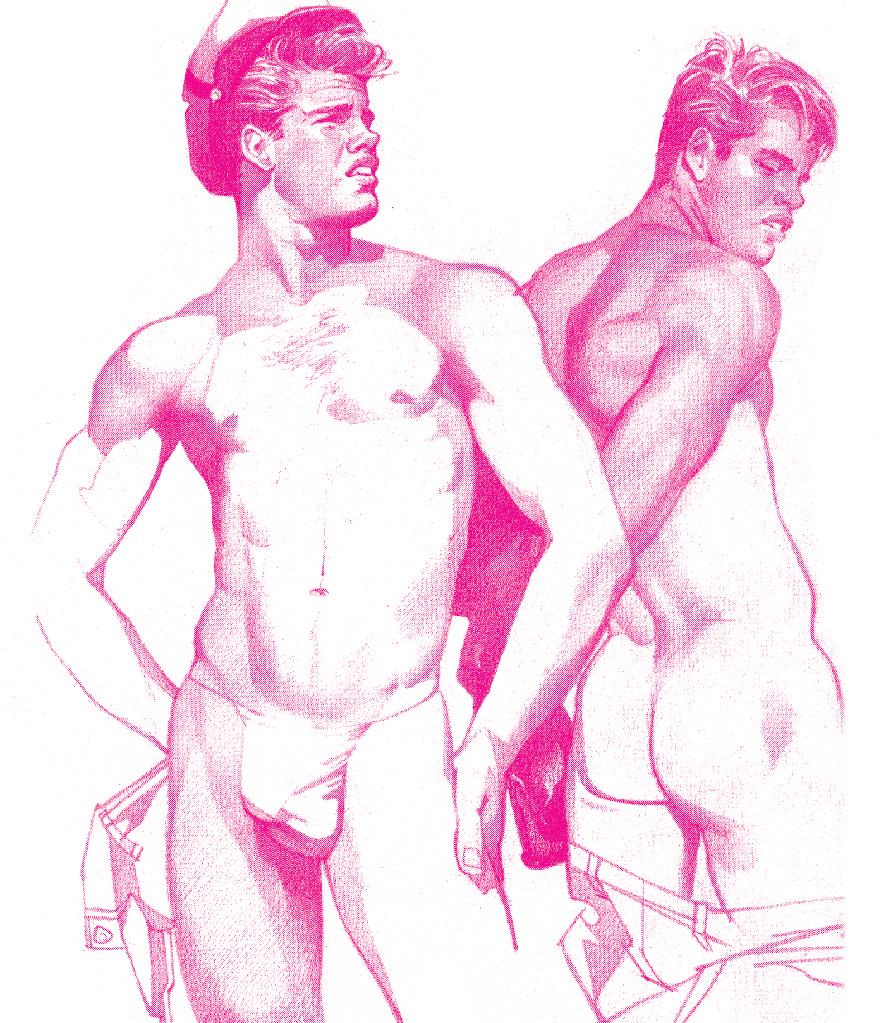
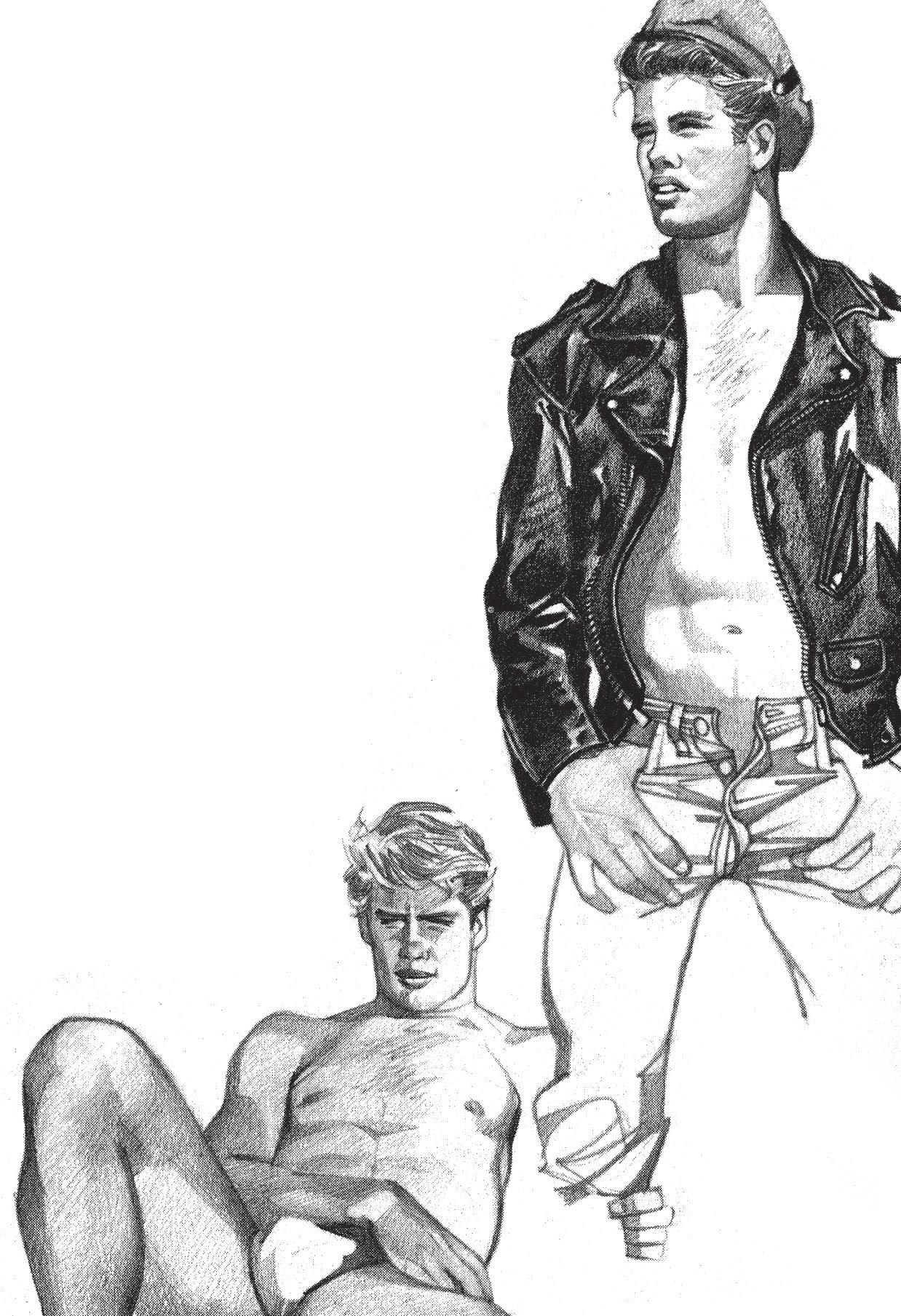
(1925–1994)

In California, Bush's artwork was discovered by Bob Mizer, the founder of the Athletic Model Guild. Mizer published Bush's work for the first time in 1966 in his Physique Pictorial, making Bush the second artist— after George Quaintance—to be featured in the magazine. Works by Bush were additionally published in other gay publications such as Mr. Sun, In Touch, Stroke, and Drummer. Among the last of the gay artists whose work originated in beefcake magazines, Bush’s drawings would continue to be published in the openly gay periodicals of the 1970s and ‘80s that emerged following the erosion of obscenity laws in the 1960s.
Even though Bush was a gay man who drew multitudes of male nudes for hardcore magazines, he wanted nothing to do with the scene. A frail hermit who spent many of his days attached to an oxygen tank as a result of years of chain smoking, Bush was critical of what he perceived as the superficiality of the gay community.
That deep well of isolation, combined with ever-present worries of copyright infringement, led Bush to destroy much of his original artwork. Closeted for the majority of his life due to the fear that he would be outed and subsequently lose the veteran's pension he so desperately relied on, it’s surprising that Bush never worked under a pseudonym, and chose to sign all of his art with his own name. Bush died in 1994 due to complications from emphysema—the end of a lonely life that lies in stark contrast with the bright and optimistic mood of his artistic output.
Harry Bush Illustrations as shown in Physique Pictorial, vol. 14, no. 4 (June 1965) Athletic Model Guild Los Angeles, CA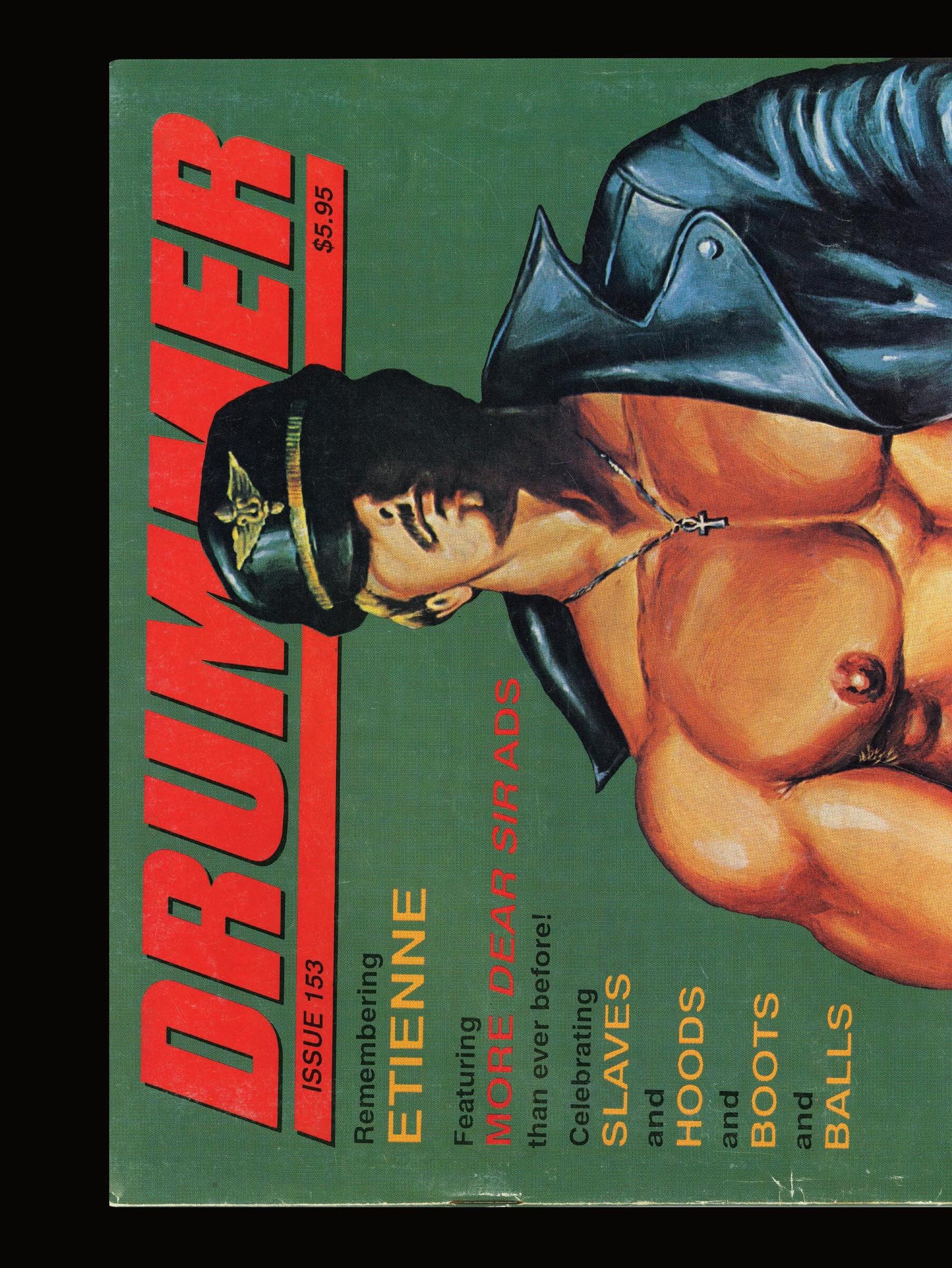
Dom's exaggerated muscular imagery was easily recognizable and featured in dozens of magazines, including Drummer . His art has also appeared as club logos and in print ads.
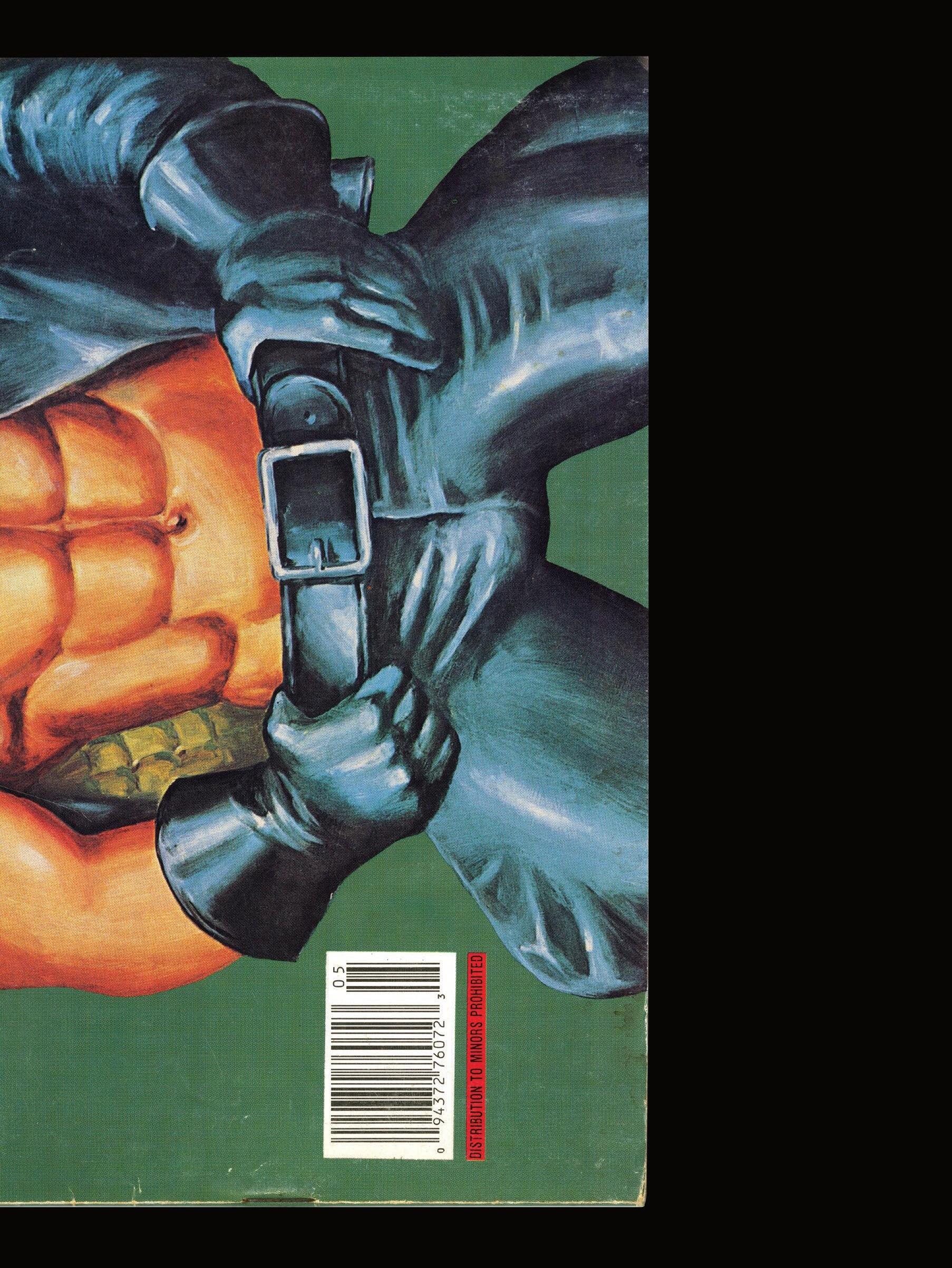
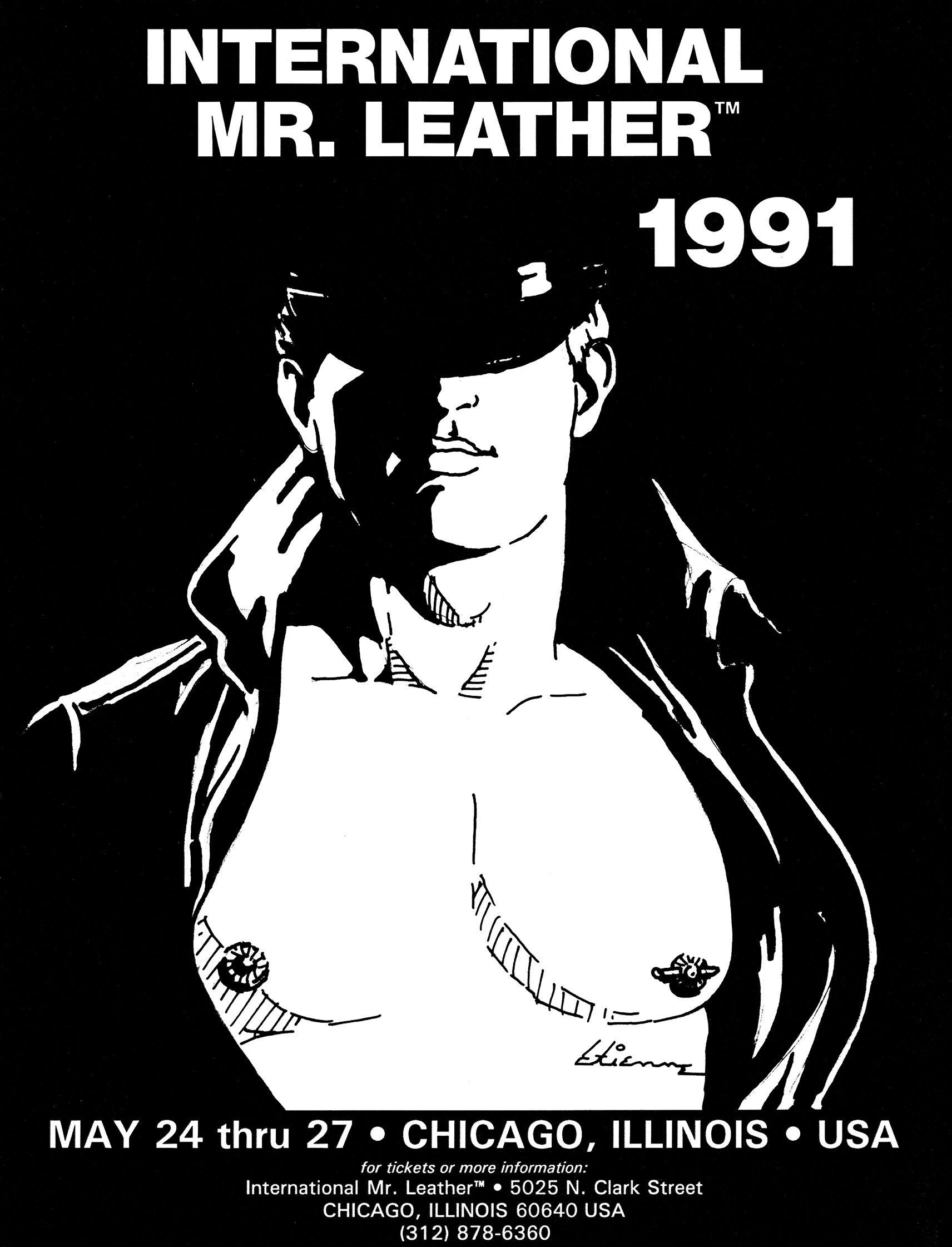
Dom Orejudos drew and licensed a body of gay erotica that sexualized muscular, sharp-jawed, hyper-masculine men. At the time, Orejudos’s sexy illustrations were considered revolutionary—challenging the universal link between heterosexuality and masculinity and flipping stereotypes of what being “gay” should look like.
Orejudos’s work in pen and ink was bold, disruptive, and partially responsible for the creation of leather culture at large. He was close friends with Tom of Finland, whose artworks were similarly rooted in the queering of macho masculinity.
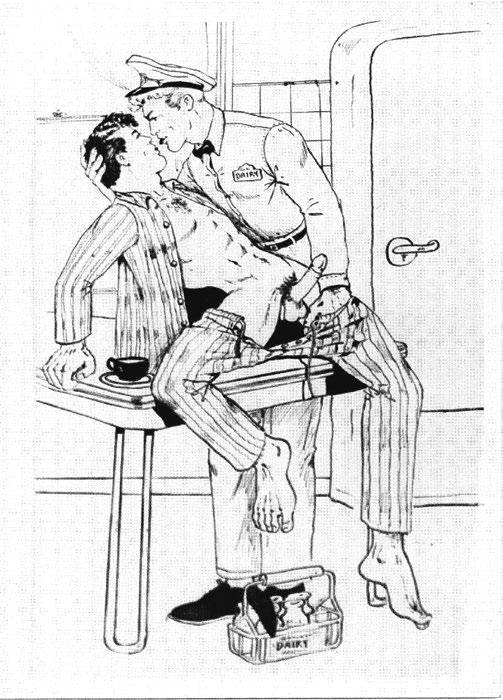
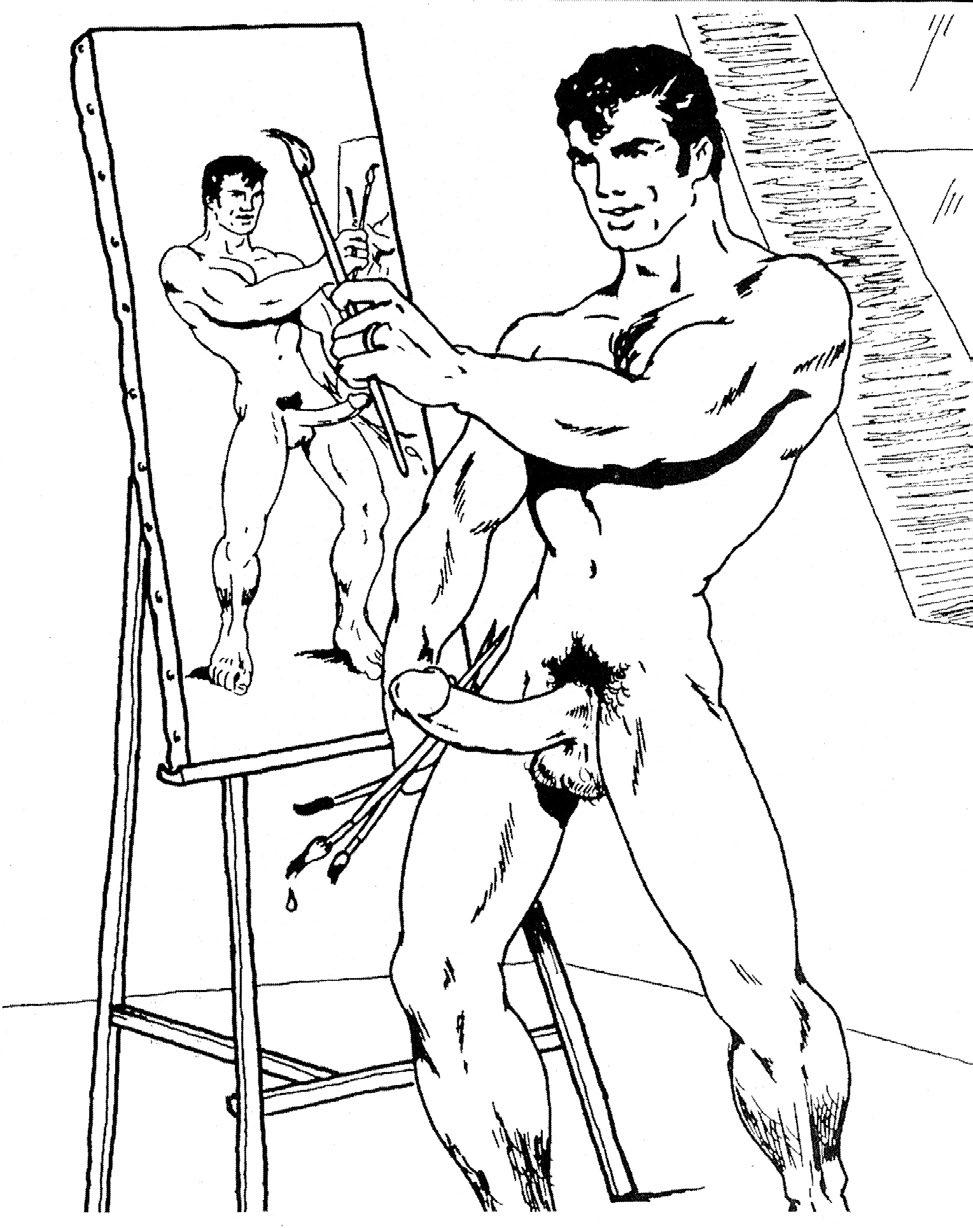
Although Orejudos eventually became best known for his filthy, brilliant works of gay erotica, he actually began his career as a ballet dancer. He received a slew of scholarships and, after completing his training, became resident choreographer at the Illinois Ballet Company while working for dozens of other clients. He became a rising star in the ballet world, staging work in Chicago that landed him three Emmy Awards and bolstering the production of new works by successfully landing grants from governmental arts organizations.
This glittering ballet career is reportedly the reason Orejudos created his pair of pen names—“Stephen,” his middle name, and “Étienne,” its French equivalent—to shield him from controversy.
Orejudos’s entry into the world of physique culture and bodybuilder magazines began when the owner of his regular gym allowed Orejudos to contribute drawings to his physique magazine, Tomorrow’s Man. The artist quickly developed an aesthetic signature rooted in tight leather stretched over rippling muscles, usually paired with a policeman’s helmet or a sailor cap.
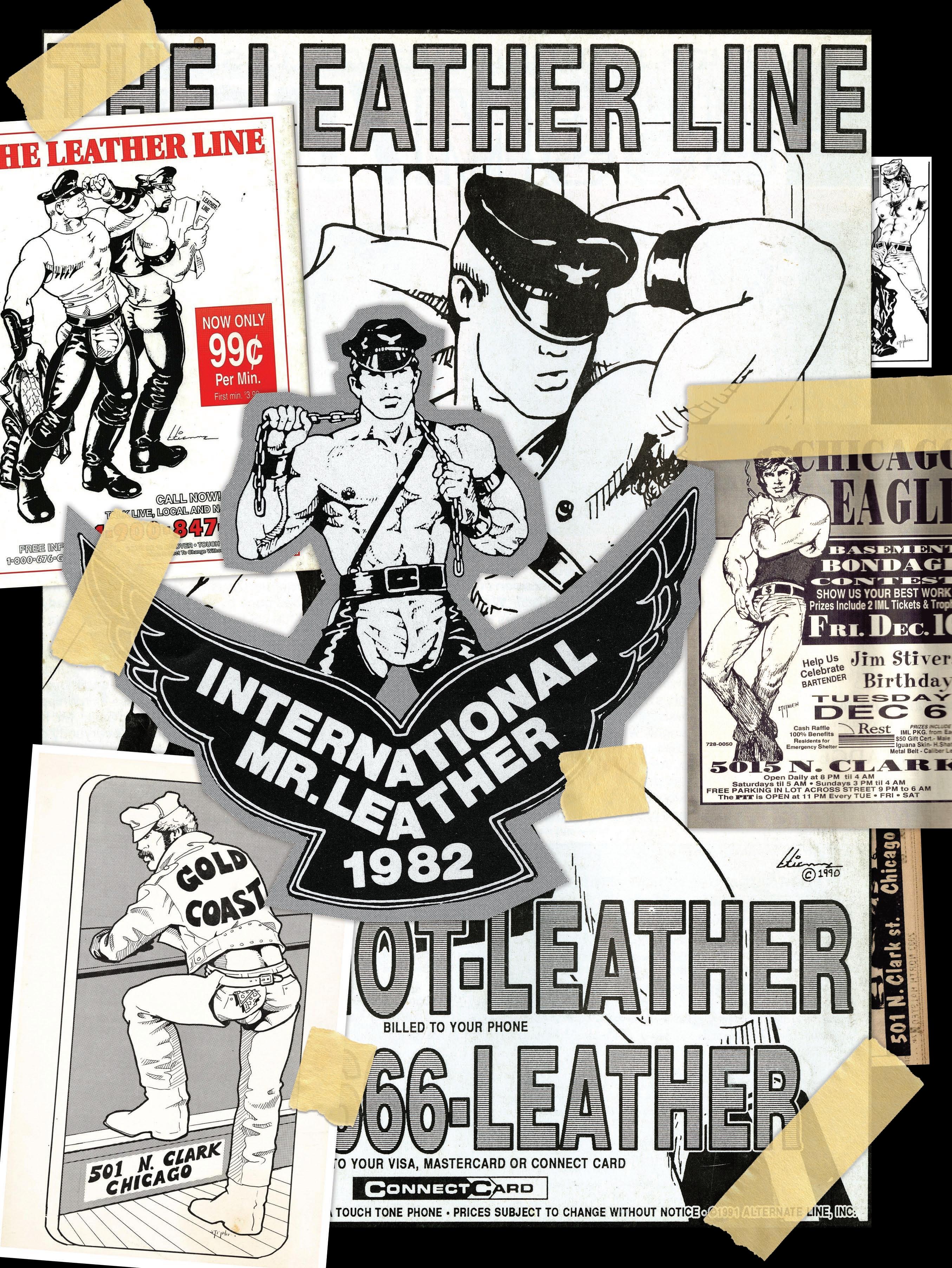
The entrepreneurial partnership forged with his lover and business partner, Chuck Renslow, helped Orejudos build the leather scene through his involvement with the Gold Coast, a leather and S&M bar that offered gay men a space to come together and bond. The institution also hosted the annual “Mr. Gold Coast” leather contest, which gained in popularity and ultimately became an international event. Orejudos and Renslow also founded Kris Studios, which published a slew of leather magazines.
The importance of leather bars stemmed from more than mere fetish; LGBTQ+ communities have always had their sex and social lives heavily policed and often criminalized. That meant rare spaces like the Gold Coast weren’t just about licking leather boots or backroom fucking—in a pre-Stonewall age, they were about freedom.
Orejudos’s sexed-up leather boys are still popular today because they flipped the assumption that heterosexuality and masculinity are always linked. The men in his illustrations are hyper-muscular, their arms inflated to gigantic proportions and their dicks big enough to bulldoze even the most experienced—and limber—sexual partners. These were parodies of masculinity with a sexy, tongue-in-cheek twist, a uniquely disruptive attitude that earned the artist a reputation as a true queer trailblazer.
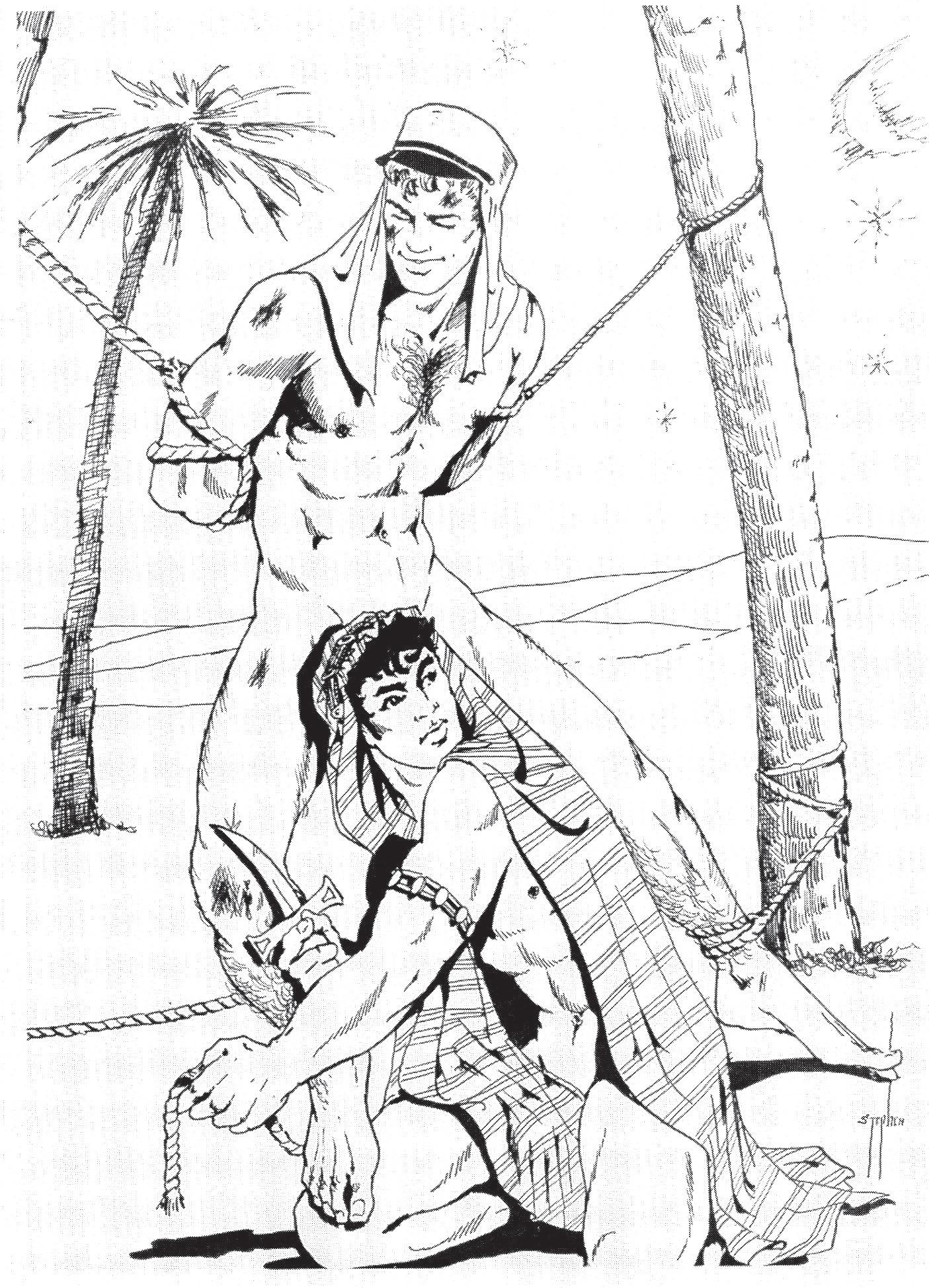
ABOVE: Etienne
Tender Arab Rescuer, 1960
Image courtesy of Charles Renslow
Felix Lance Falkon Collection
BELOW: Etienne
Fratboys Parking, 1960
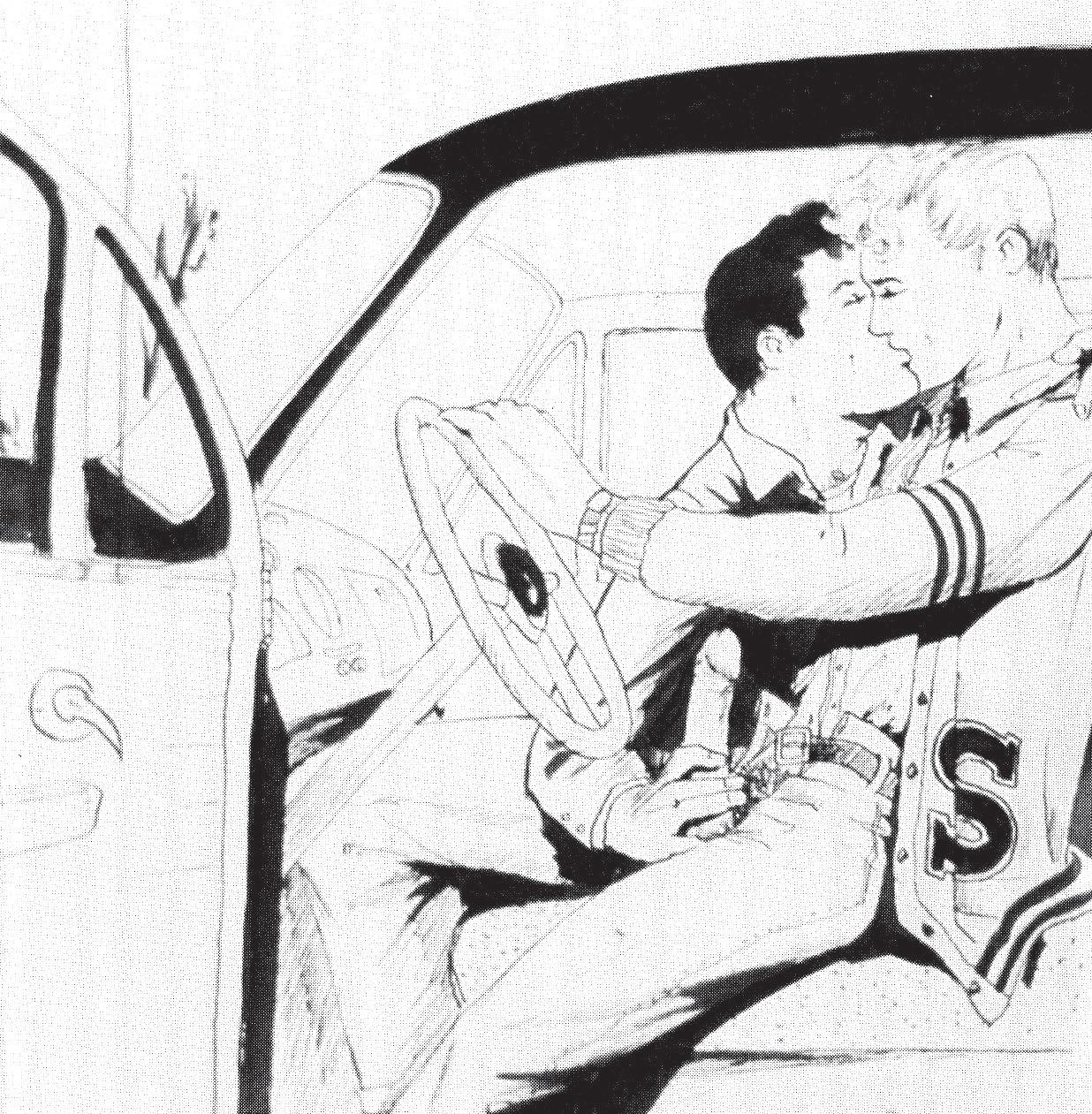
Image courtesy of Charles Renslow
Felix Lance Falkon Collection
FAR LEFT: Rick Heffner
Etienne Collage (various ads and logos by the artist)
Digital collage
© Rick Heffner
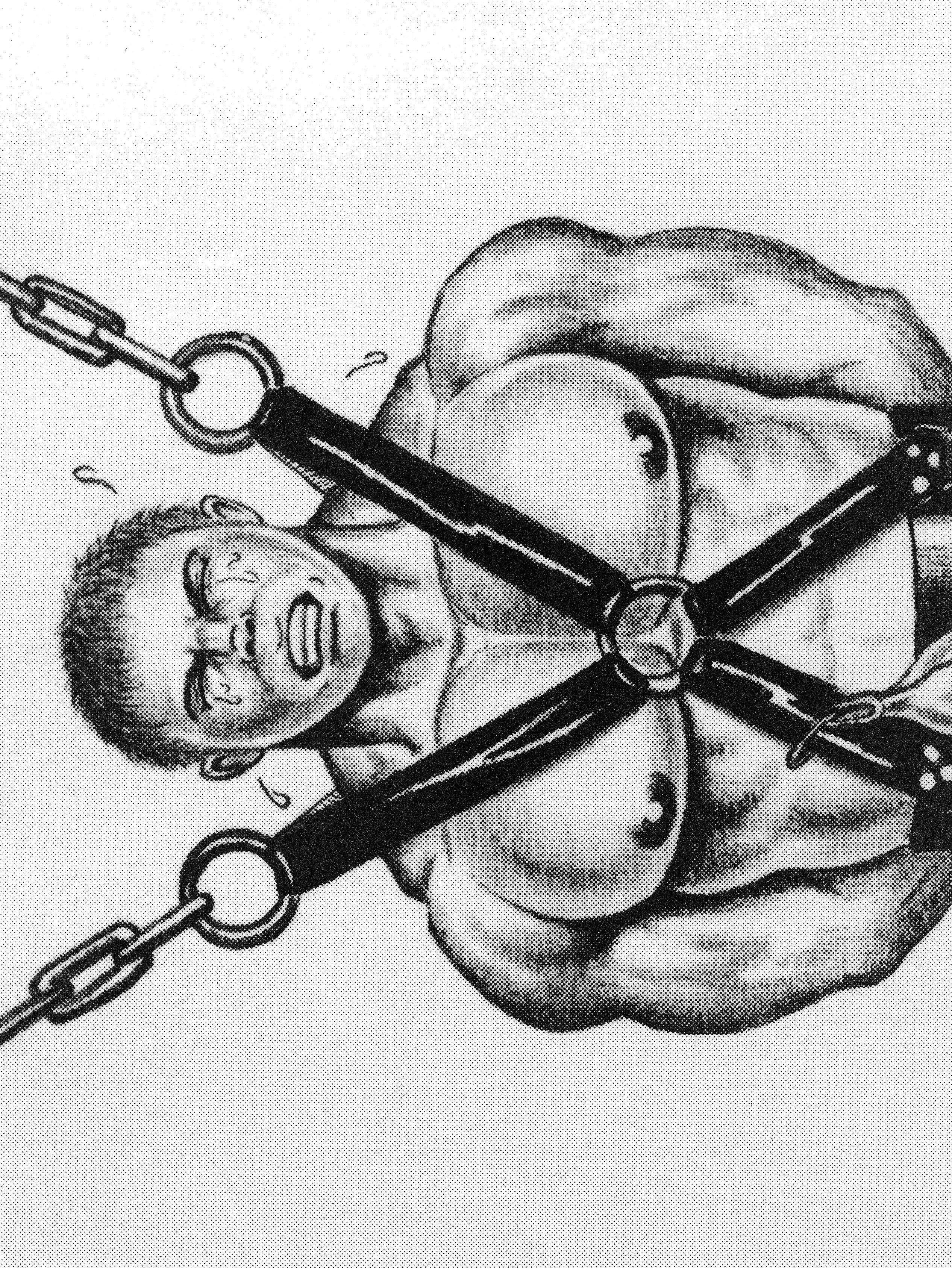
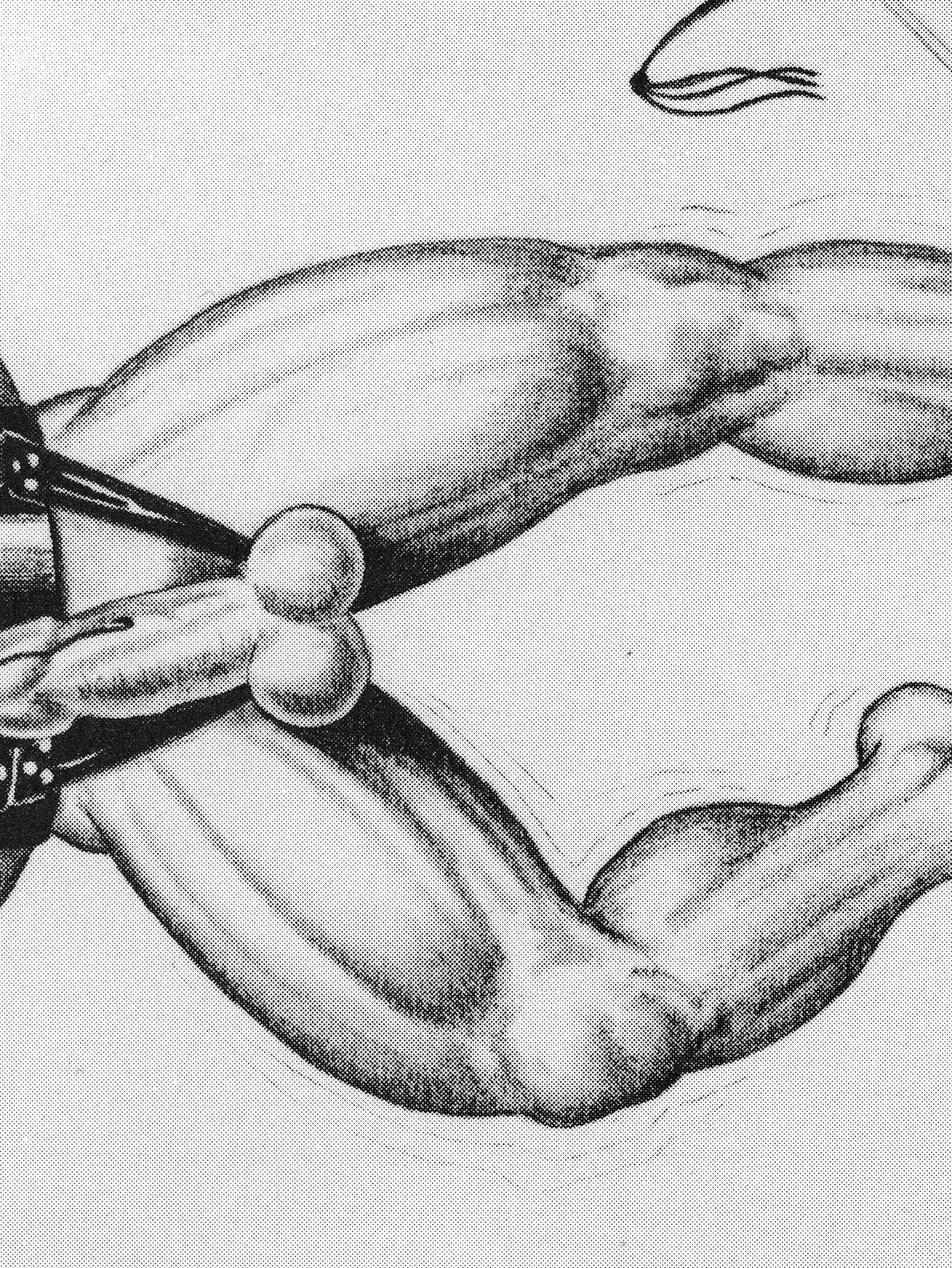 Bill Schmeling / The Hun Reward and Punishment, 1989
Comic Gay no.4
© The Hun Portland, OR
Bill Schmeling / The Hun Reward and Punishment, 1989
Comic Gay no.4
© The Hun Portland, OR
F YOU’RE AT ALL SQUEAMISH, Bill the Hun’s art is not for you. However, if you’re into herculean muscles, pinky-sized nipples, and forearm-sized cocks, this will make you drool (and maybe faint in ecstasy).
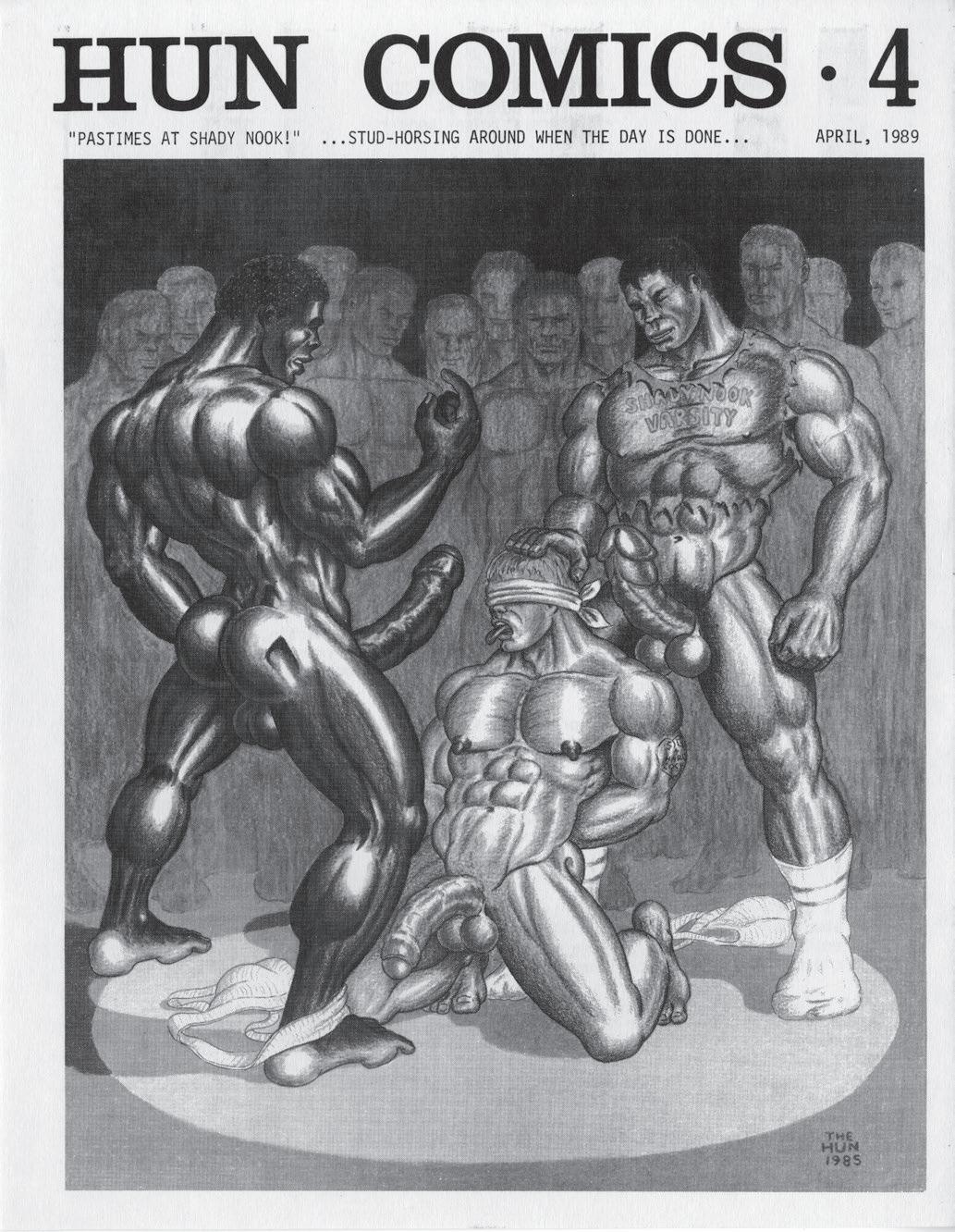
Bill Schmeling, a.k.a. Bill the Hun, began creating erotic art in the 1960s, contributing to beefcake magazines under the pseudonym Torro. He also produced a series of comics— Hun Comics and Gohr featuring fantastical sexual adventures of gay men. Among the many stories Schmeling wrote, which were regular
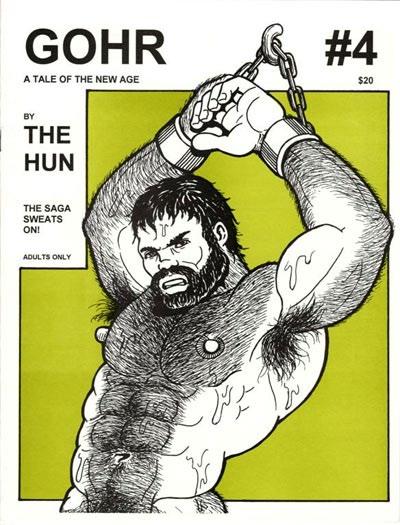
features in Meatmen magazine, two major characters tower above them all: Big Sig, a naive young man caught up in prison and other secured camp scenes; and Gohr, a barbarian living in a brutal and hypersexual society.
Schmeling was one of the first gay artists to focus on human fluids in scenes of extreme sexuality and brutality—including sadomasochism (I admit, I had to look that one up), prison rape, and scatology. (I don’t recommend looking that one up!)
Calling it quits, Schmeling donated all his artwork, notes, and other materials to Chicago’s Leather Archives and Museum in 2019.
(1938-2019)
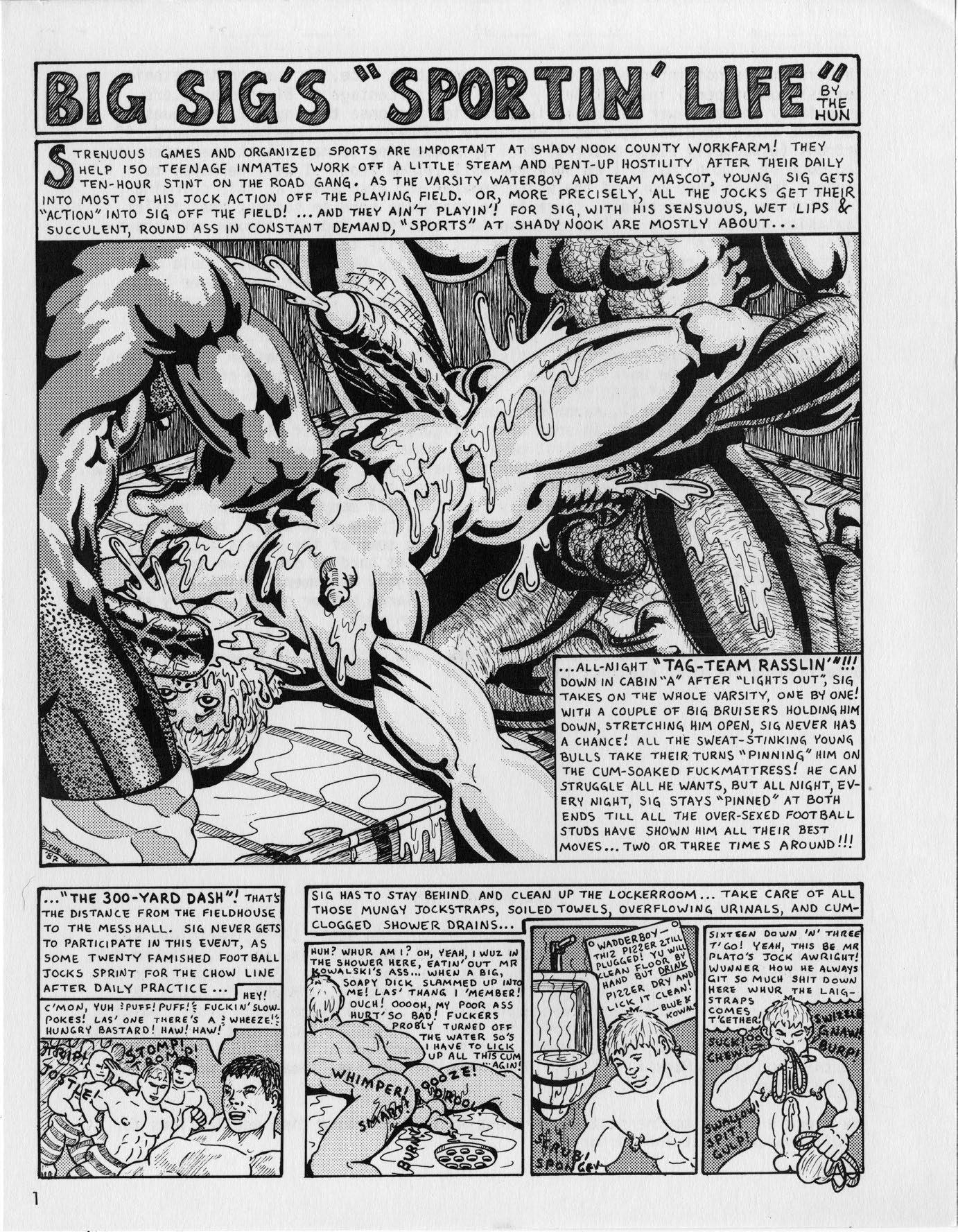
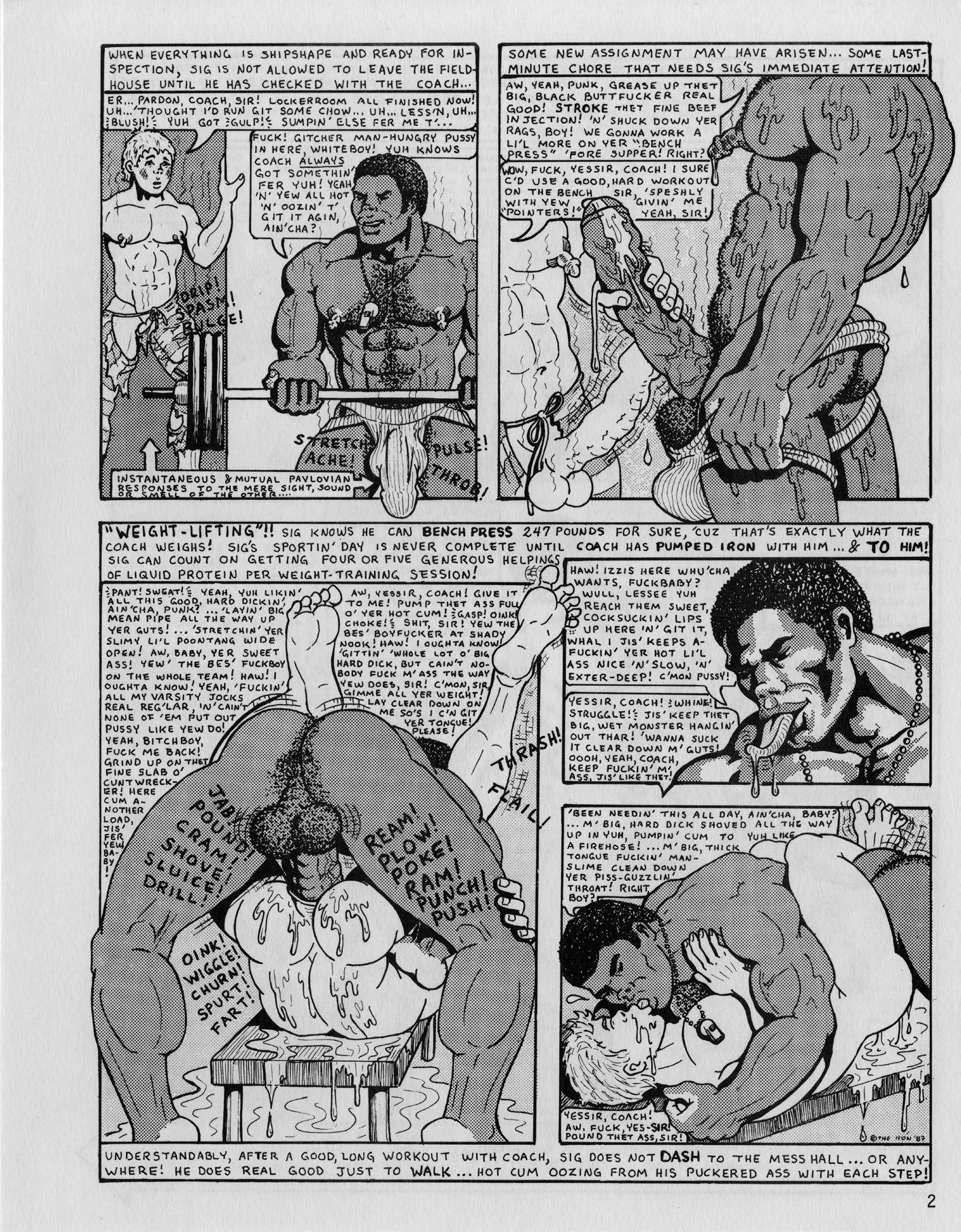
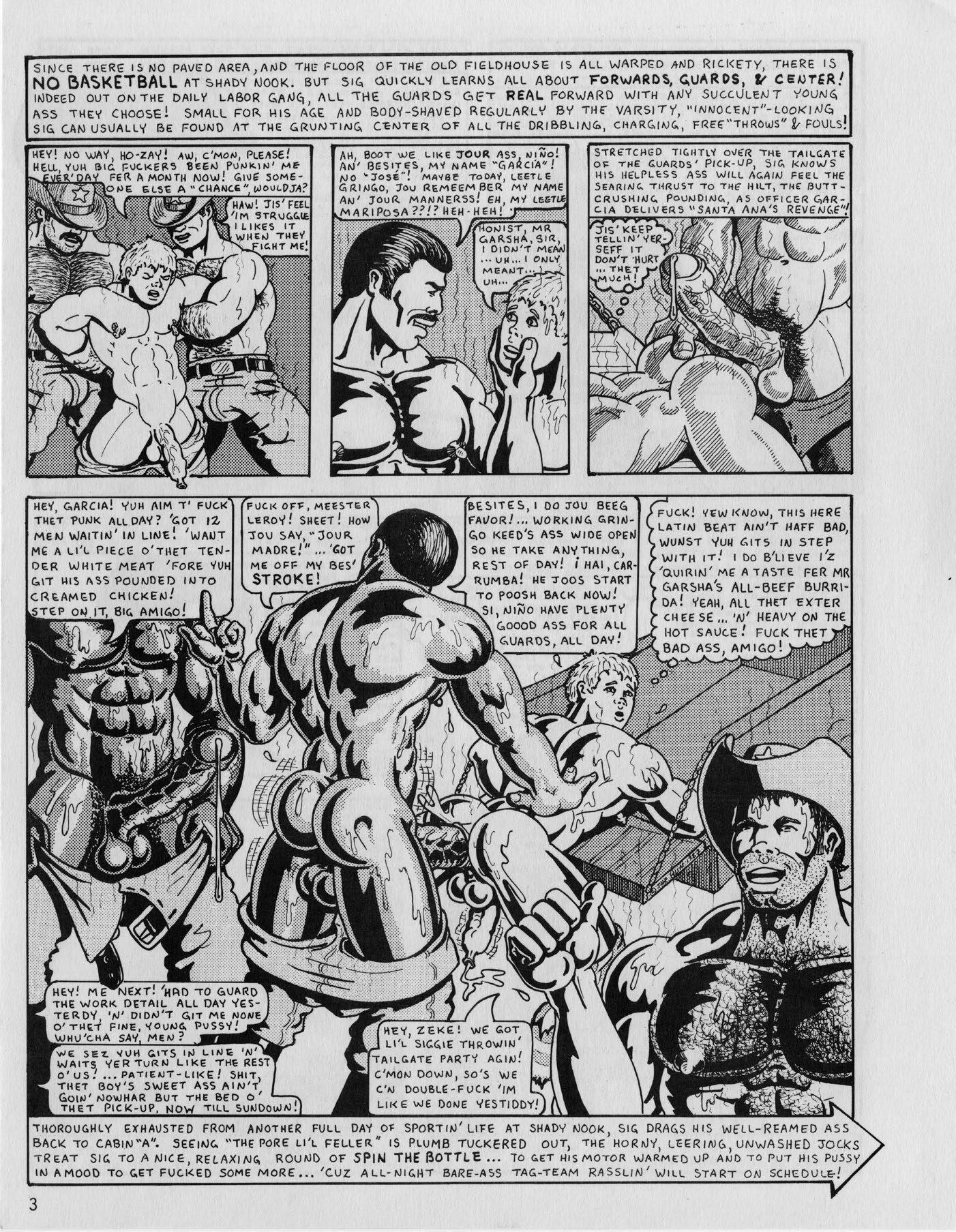
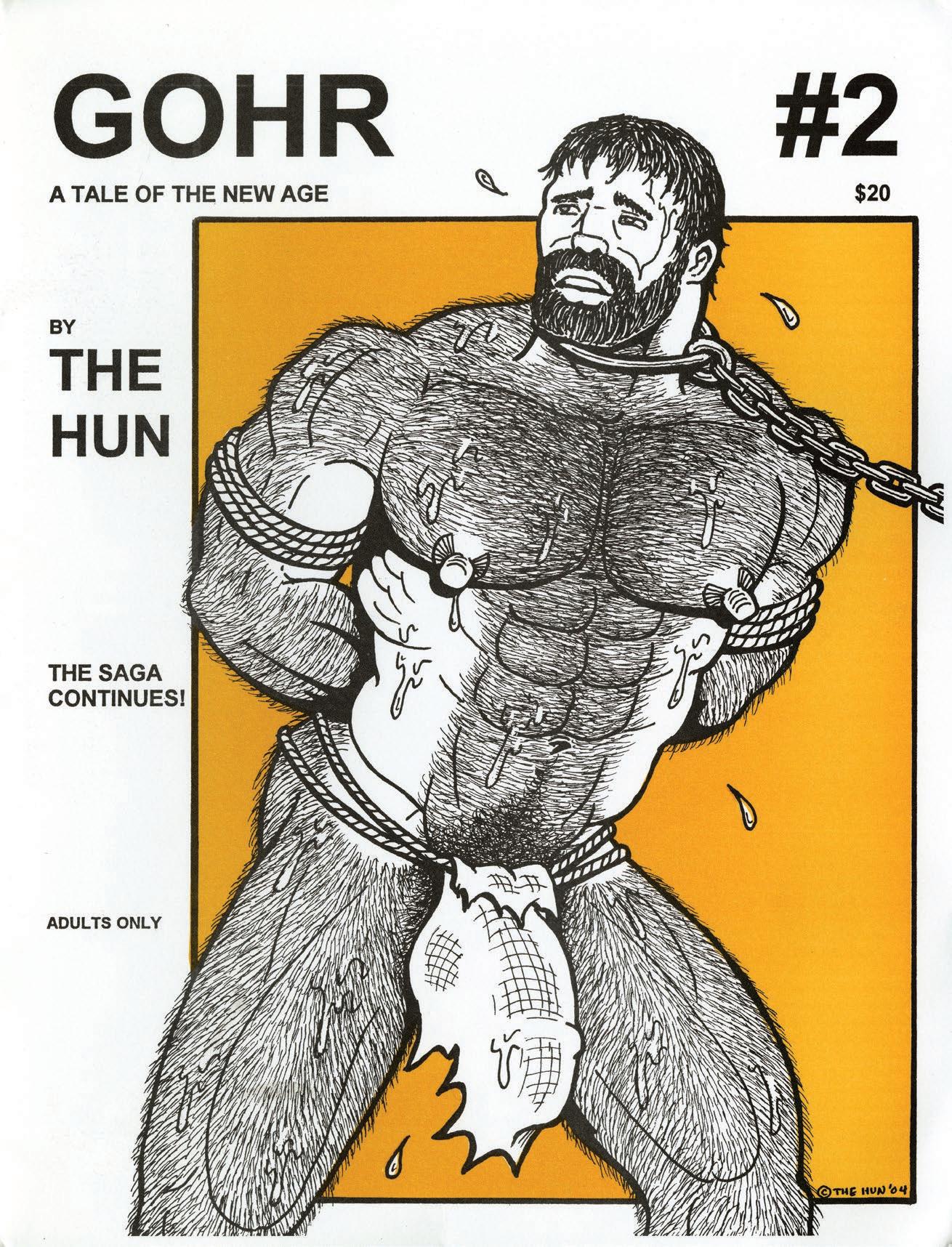
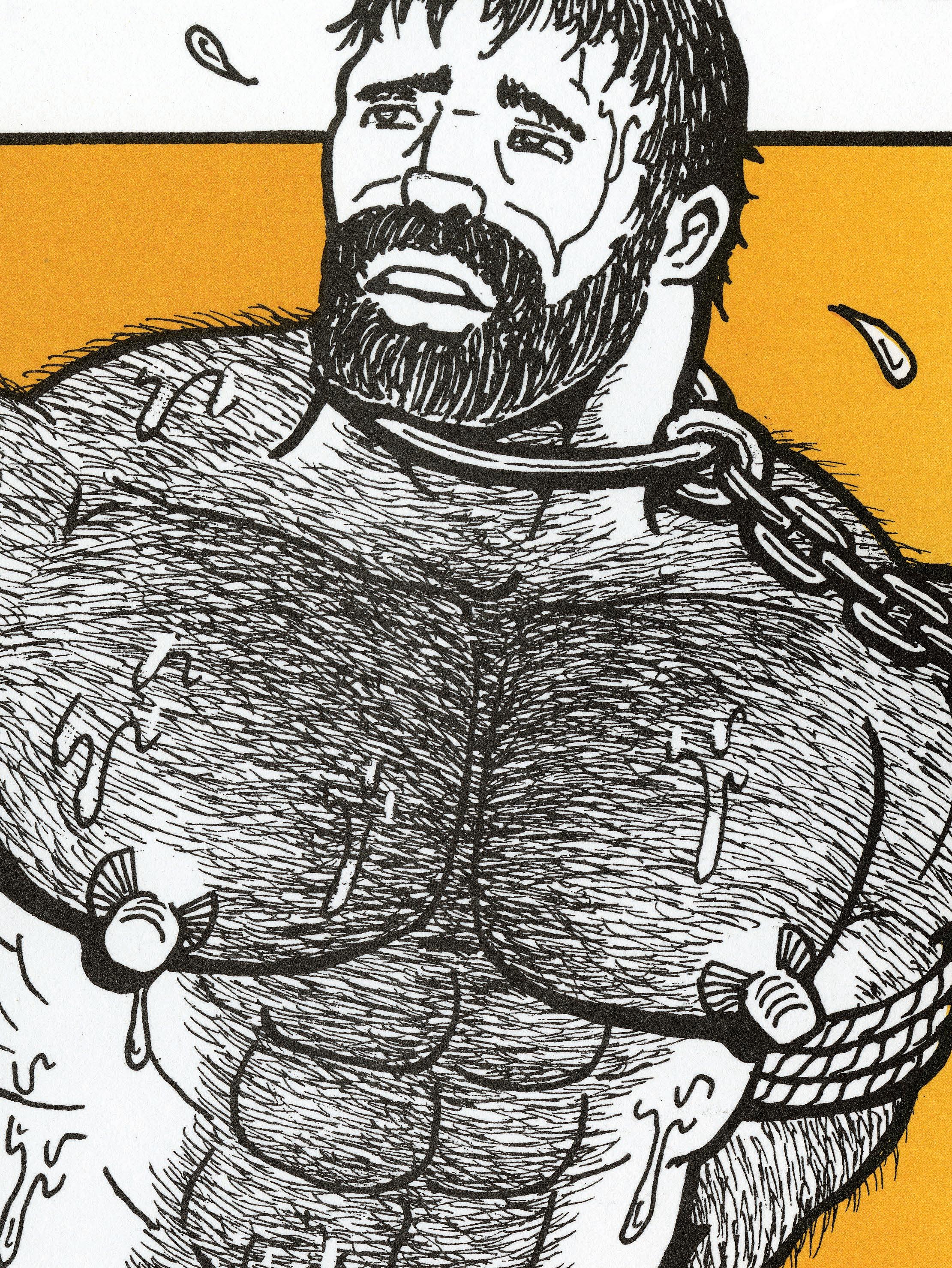

Drummer is an American magazine that focuses on leathersex, leatherwear, leather and rubber gear, S&M, bondage and discipline, and erotic styles and techniques. It was launched in 1975 and ceased publication in April 1999 with issue no. 214, but was resurrected twenty years later by new publisher Jack MacCullum and editor Mike Miksche.
During the late twentieth century, Drummer was the most successful of the American leather magazines, and even found an audience overseas. The publication was hugely impactful, spreading awareness of both the gay leather lifestyle and masculinity as a gay ideal. The magazine was originally focused on quality writing about leather, but gradually changed into a photo magazine.
“Rex is artist of urban toilets, blue-collar hotels, filthy construction workers, greasy gas jockeys, muscled bikers, tattooed fighters, beautiful young homeless bums, ex-cons, armpit-sweaty beautiful studs needing head—all these unshaved “lone wolves” in jockstraps, leather, boots, and torn tank tops . . . who pay per night in sleaze-bag hotels where sailors, Marines, cops, and drifters lie back on stained mattresses, the smoke of their cigarettes drifting out the crack of their rooms, down to the toilet where the cracked urinal drips beer piss, and the graffiti-covered stall is drilled with gloryholes.”

EX IS A VERY PRIVATE American artist and illustrator known for the homosexual art he produced in the 1970s and ‘80s. His drawings profoundly influenced the development of gay culture at the time thanks to the graphics he made for many of the U.S.’s famous nightclubs, including New York City’s iconic Mineshaft. Having faced frequent censorship throughout his career, Rex remains a shadowy figure, saying that his drawings “defined who I became” and that there are “no other ‘truths’ out there.”
Abandoned at birth and adopted at a young age, Rex’s real name and exact birthday are unknown. As a teenager in the 1960s, he lived among beatniks on the streets of Greenwich Village before becoming the protégé of a fashion designer, which connected Rex to work in London and Paris as a fashion illustrator and commercial artist. During his time in Europe, he found his sexual identity among the “cottages,” t-rooms, the public pissoirs—pheromone-fueled experiences that would directly inspire his work.
Fed up with commercial art, he disappeared for a while, but remerged in the 1970s as one of the leading artists in the S&M subculture scenes in New York and San Francisco. He was heavily influenced by the work of Tom of Finland, whom Rex said had “irrevocably changed my life.” The depiction of men “having sex with men, passionately and enthusiastically, spoke to me in a way no lover or a nonymous stranger ever had.”
(BIRTH DATE UNKNOWN)
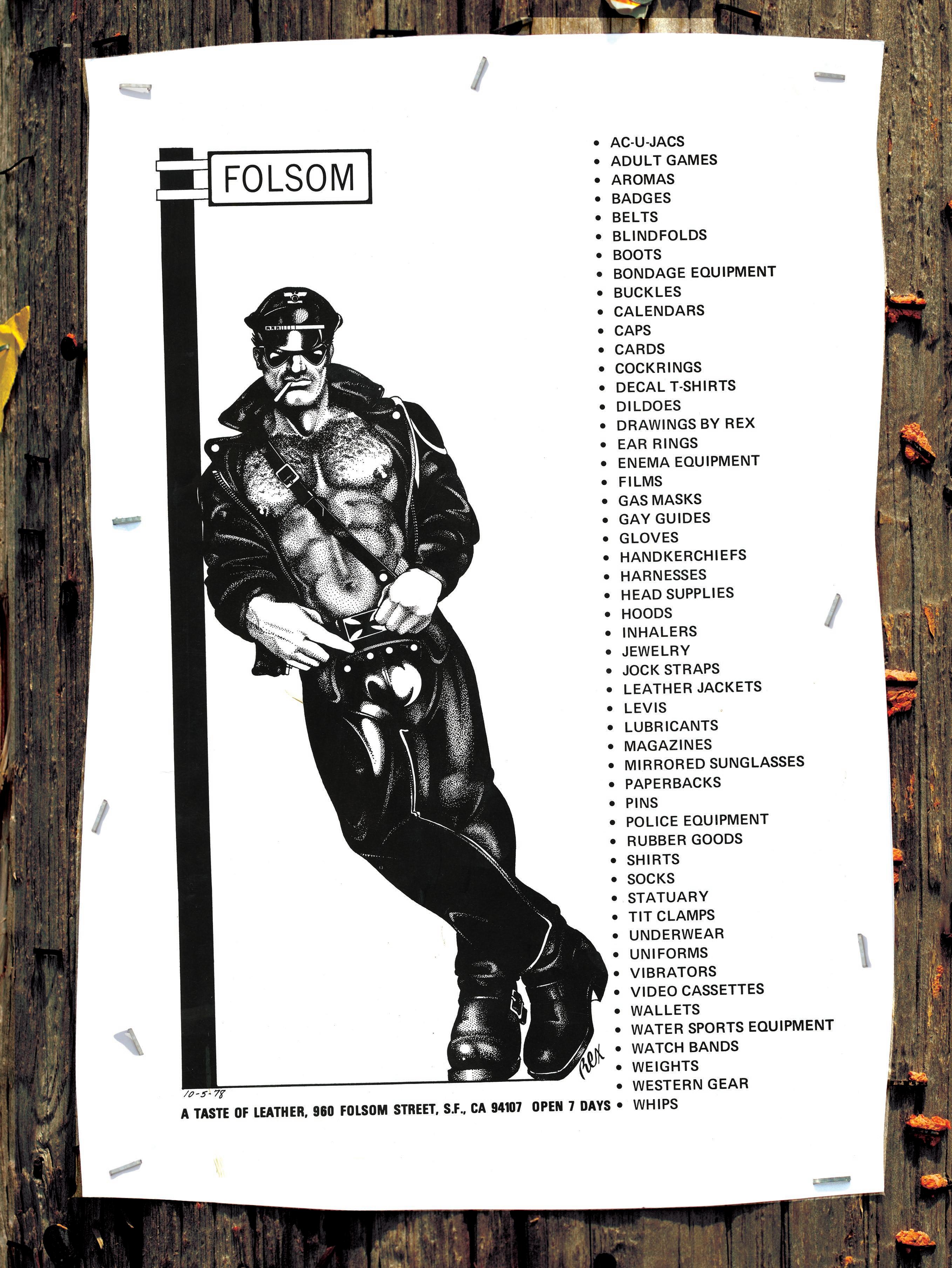
Rex created his steamy scenes in the pointillist style (most designers probably remember the Rapidiograph pen), which uses countless small dots to form larger forms, similar to Georges Seurat’s famous 1884 painting, A Sunday on La Grande Jatte. With his dot-strewn detail work, Rex showcased his favorite subjects—including hot cops and prisoners, masters and slaves. His sex scenes routinely involve BDSM (bondage, discipline, dominance, submission, and sadomasochism), spewing fountains of body fluids, and interracial sex.
He signed all of his work "REX," because it was covert and untraceable by the cops and other authorities. And although censorship laws began to change during Rex’s career, the conservative and homophobic social culture found in much of America still meant his artistic association with gay porn could have provoked serious consequences.
As a freelancer, he worked on a series of Rough Trade pulp fiction books, and poster graphics for leather shops and gay bars around the U.S. Although best known for his work for the notorious New York sex club Mineshaft, Rex’s work appeared on wildly popular posters and T-shirts that sold in the thousands. His illustrations depicted, blatantly and unapologetically, the sexual activities and extreme scenes from the gay bathhouse culture. Other work included posters for the pioneering sex boutique the Pleasure Chest; covers for the new S&M–themed Drummer magazine; ads for BOLT poppers; as well as posters, catalogs, and calendars for The Trading Post, which was considered the first gay department store.
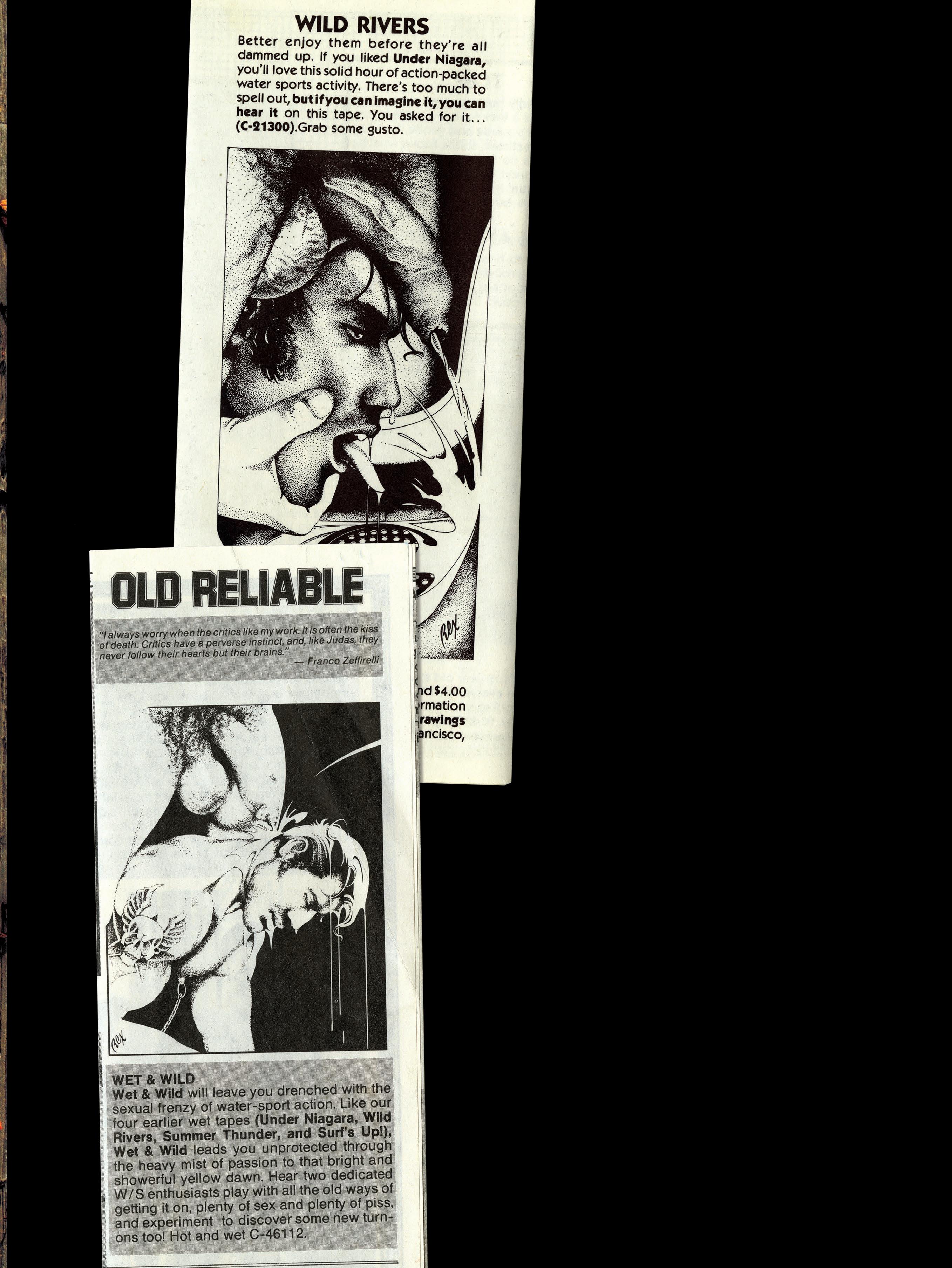
REX
Old Reliable brochures, 1981
8.5” x 11”
Running his enterprise from a private mailbox in Hollywood, California, David Hurles worked primarily in the 1970s and 1980s, beginning as a photographer before branching out into audio and videotape production. Hurles’s models were typically ex-convicts, hustlers, drifters, and lowlifes. Pictured here is a two-sided black and white pamphlet featuring artwork by Rex to sell audio cassettes, photo sets, and slides.
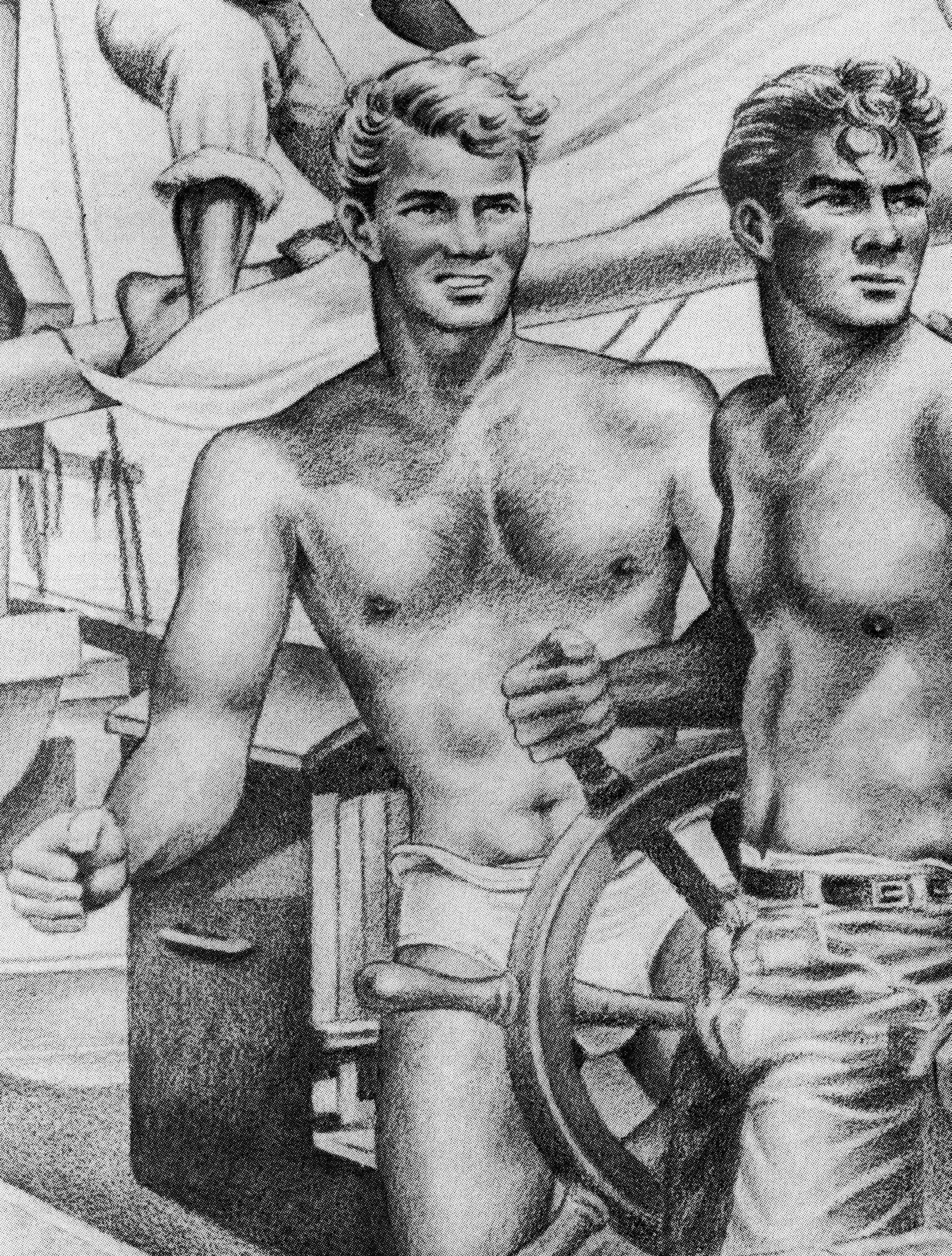
LEFT PAGE: Bill Mac Lane
"Master and Mate"
Illustration in Physique Pictorial, vol. 6, no. 2 (1956) Athletic Model Guild Los Angeles, CA

THIS PAGE: WM. Mac Lane Studios, ca. 1950 Catalog card 3.25" x 8"
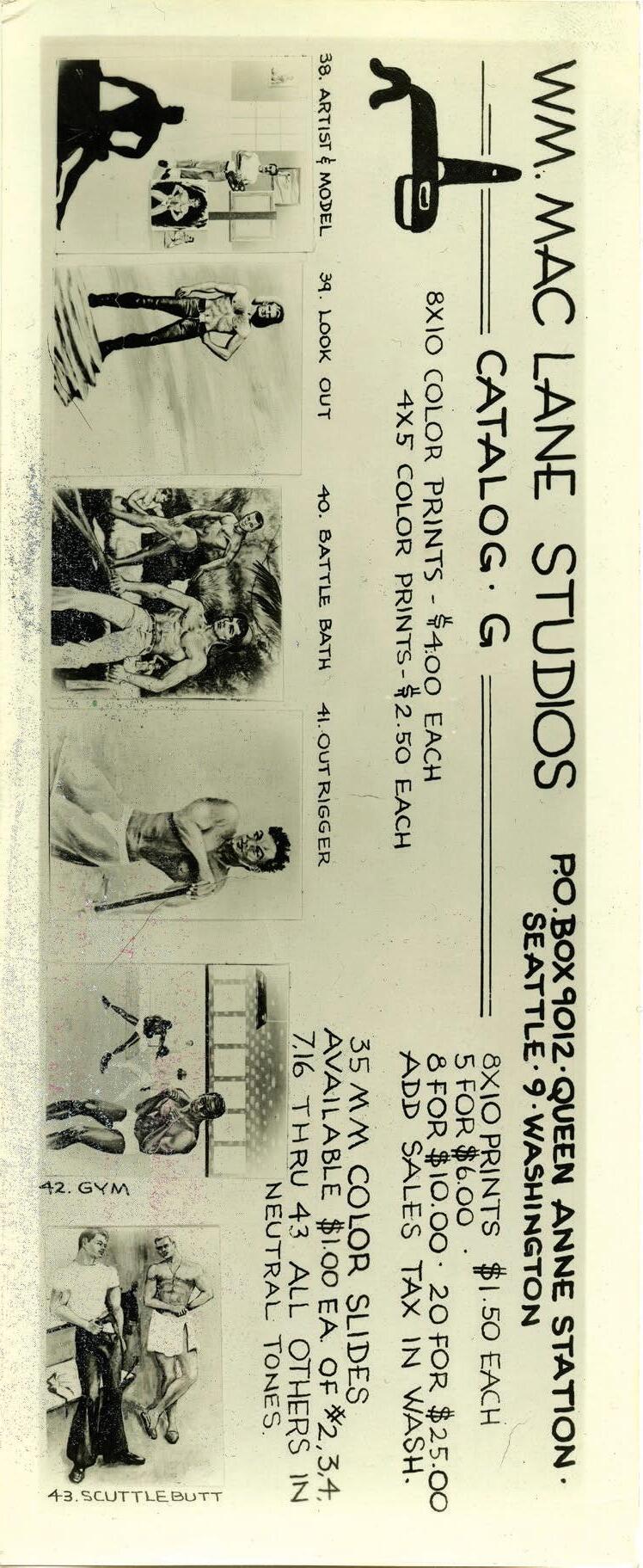
Featuring iconic beefcake illustration art and themed sketches and pictures by Bill Mac Lane, this catalog card was originally printed and offered by WM. Mac Lane Studios of Seattle, Washington.
(1924–2000)
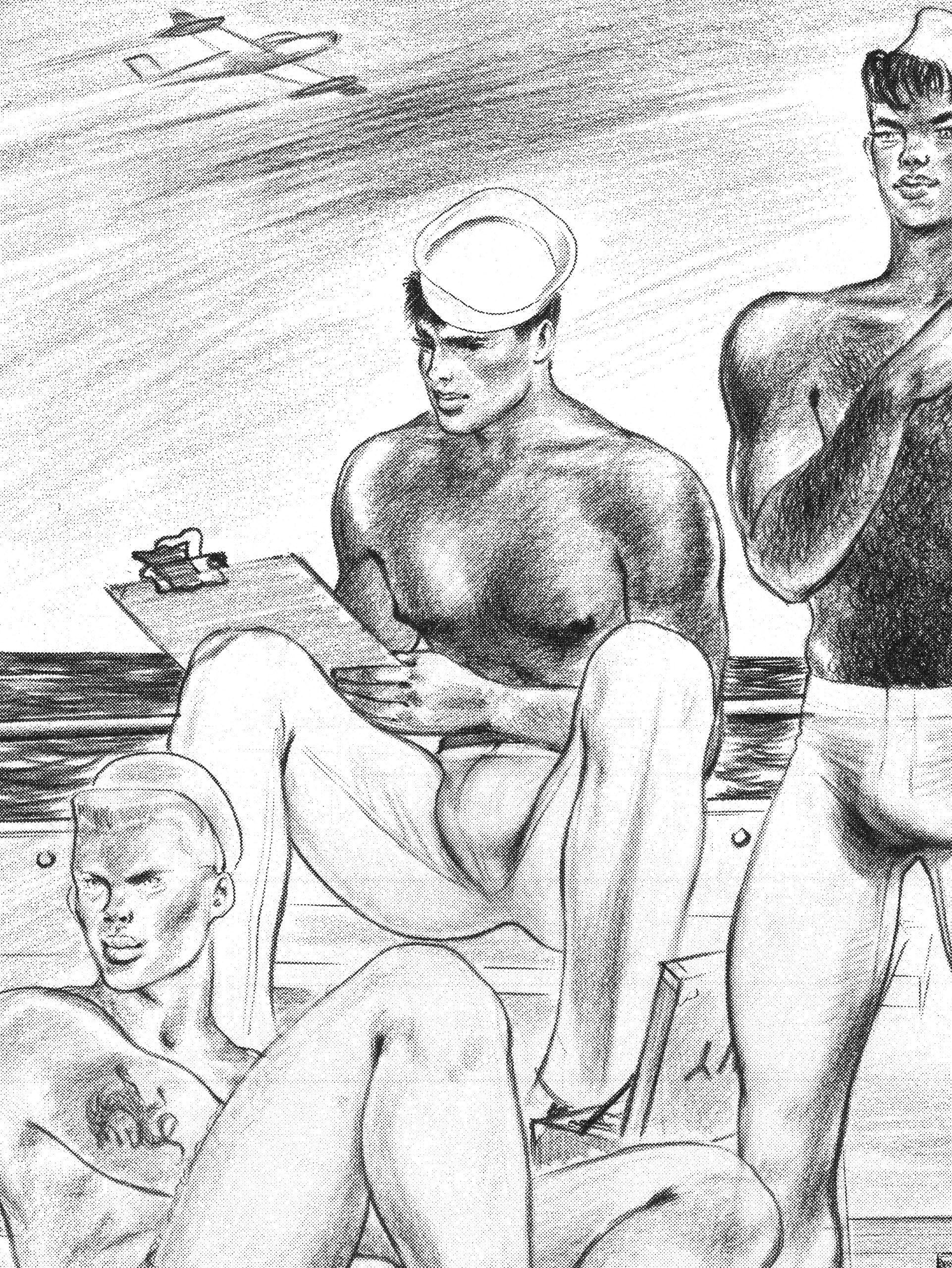
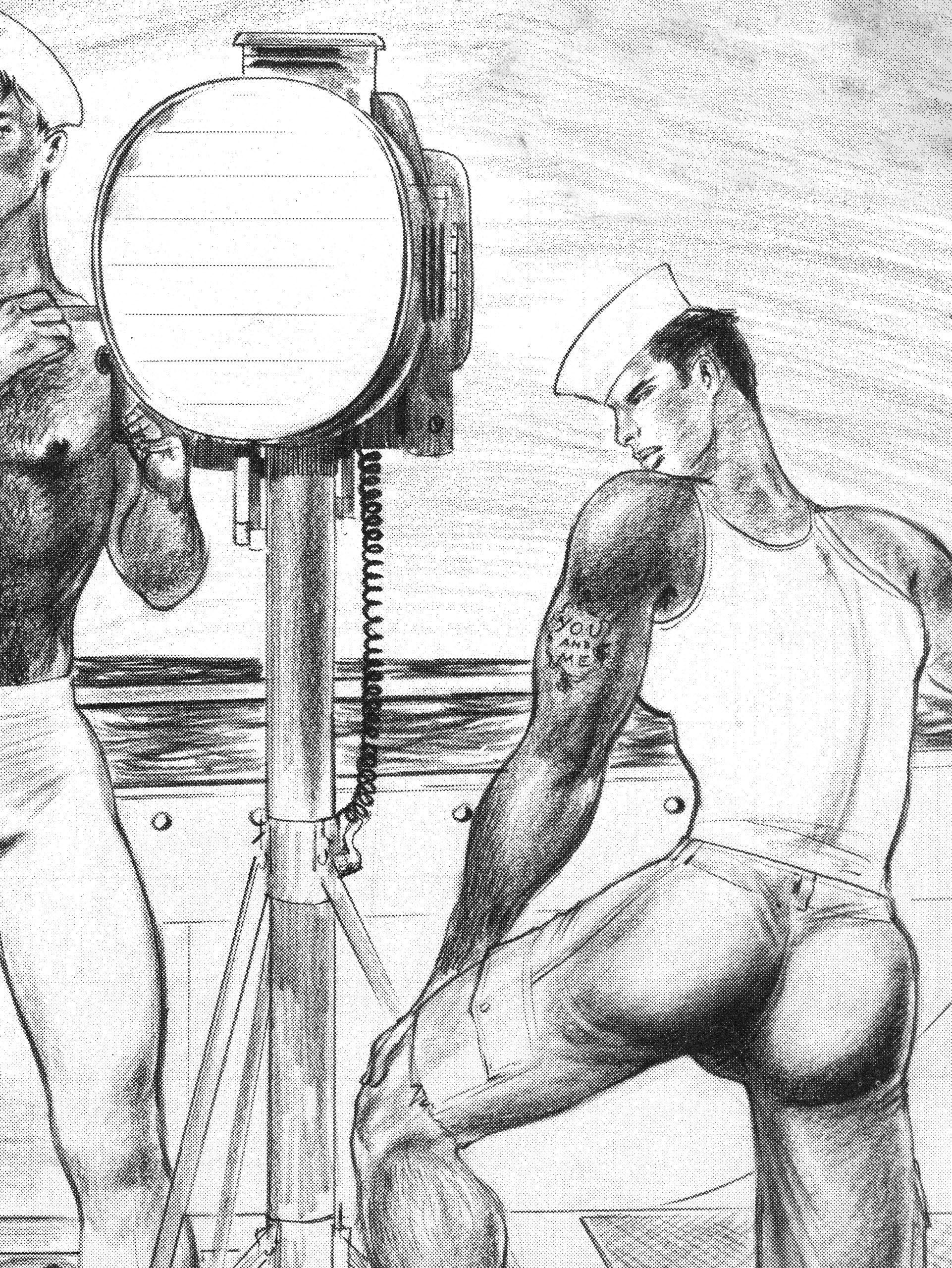
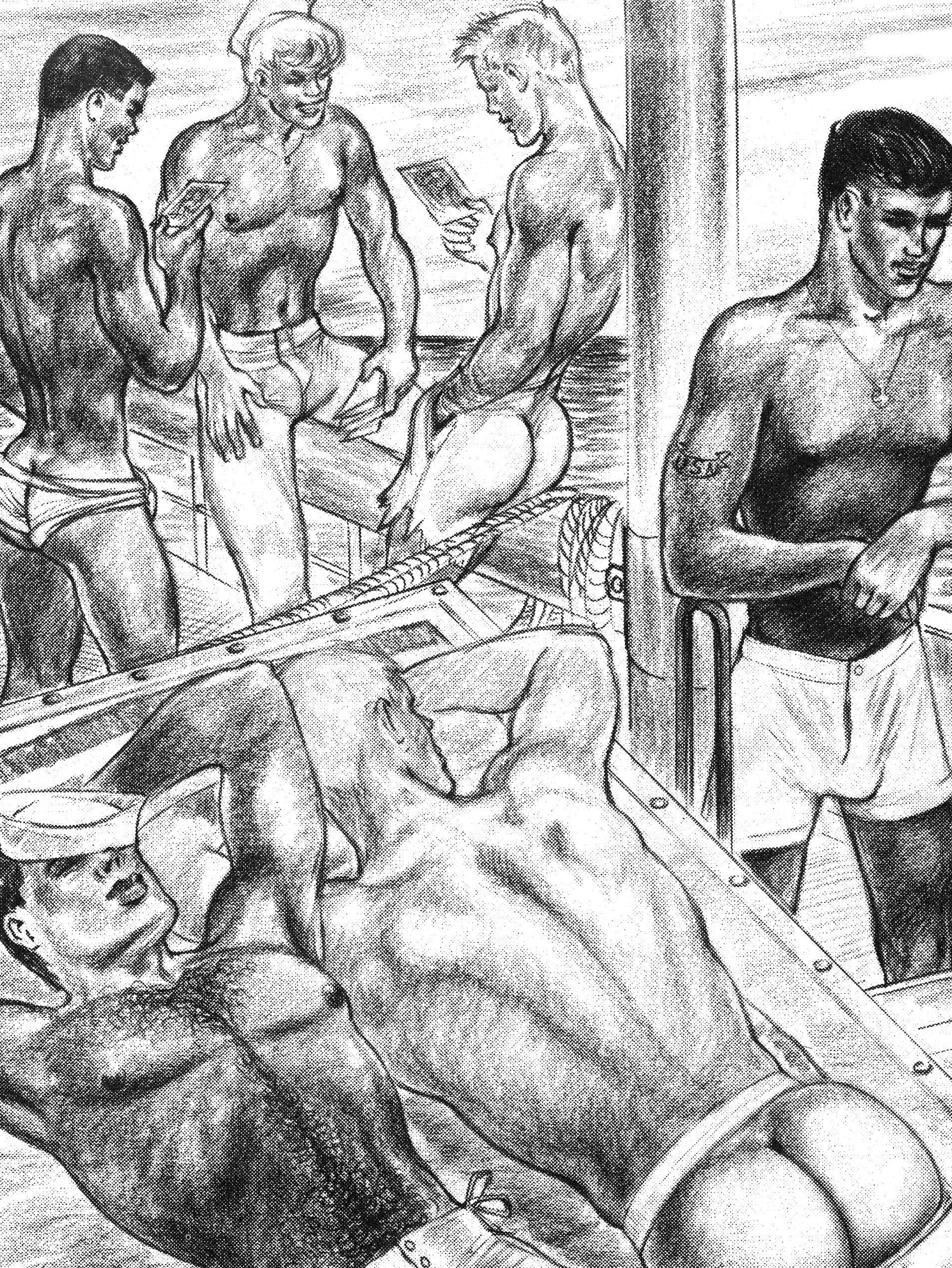
 Spartacus Illustration in Physique Pictorial, vol. 12, no. 1 (July 1962) Athletic Model Guild Los Angeles, CA
Spartacus Illustration in Physique Pictorial, vol. 12, no. 1 (July 1962) Athletic Model Guild Los Angeles, CA
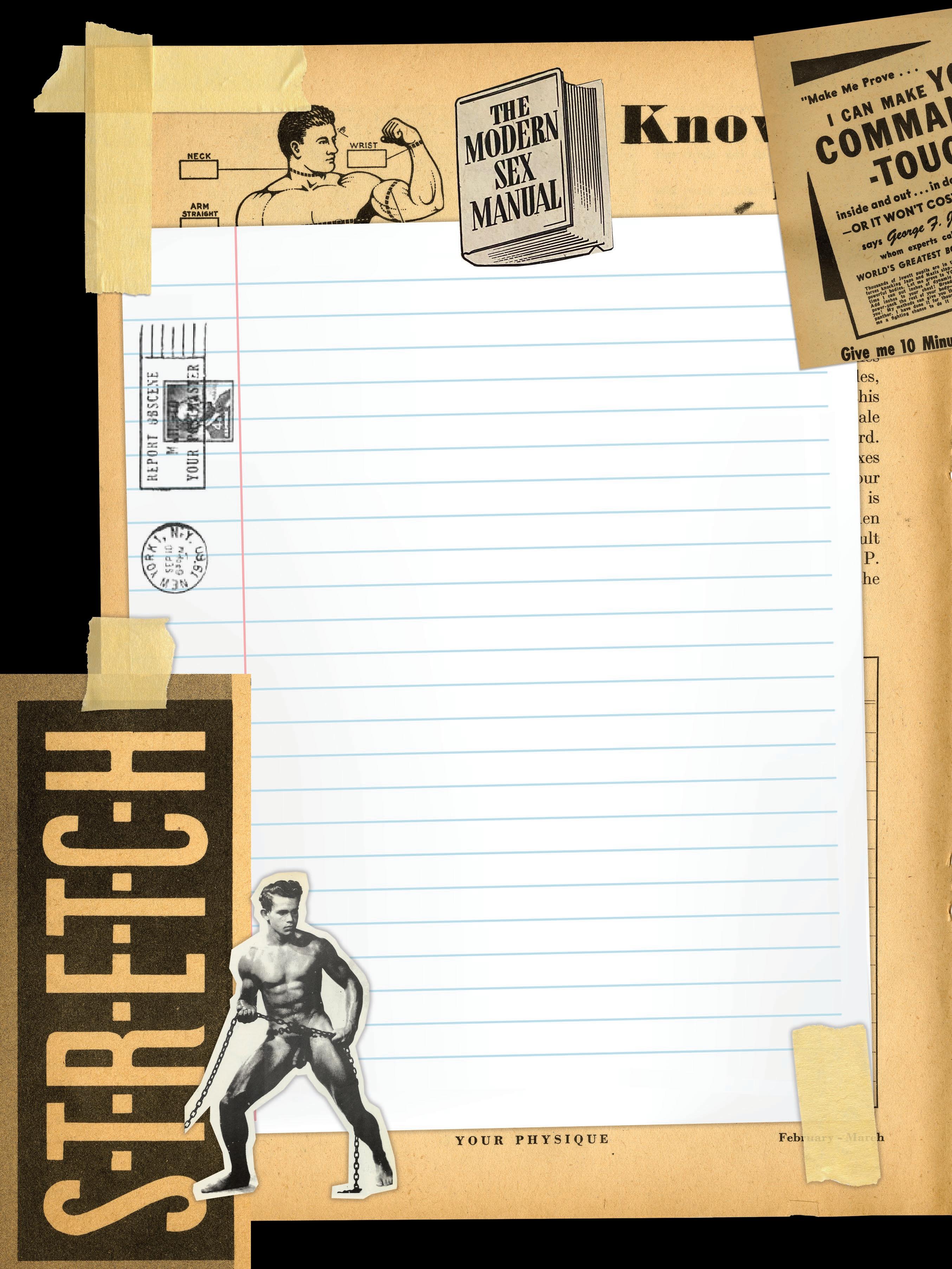
In the years following World War II, Southern California beach culture emerged as a celebration of tan, muscular, oiled-up bodies. Centered on the archetypal figures of the bathing beauty, the bodybuilder, and the surfer, beach culture emphasized physical fitness as much as it did sensuality. A new lifestyle materialized from this physiquefocused culture, which became wildly popular through songs, films, magazines, and advertising.
Beach life was seen as the perfect metaphor for the “good life.” With its aweinspiring sunsets and miles of sandy shores, the Southern California coast was undeniably a great place to escape the unnerving news of the time—the threats of nuclear annihilation prompted by the U.S.’s Cold War with the Soviet Union, and the racial tensions brewing in the early days of the civil rights movement. Muscle mobs turned a local attraction into a national phenomenon. Journalists swarmed to the area’s beaches to report on the fitness habits, lingo, and showmanship of these enigmatic beefcakes.
Not only did women feel the erotic appeal of glistening muscle gods—many men did as well. The SoCal beach scene drew the interest of gay photographers like Bob Mizer, Bruce Bellas, and Lon of New York. With Santa Monica’s iconic Muscle Beach located just a few yards from Crystal Beach, the area’s unofficial gay beach (also known as Ginger Rogers Beach), it was no secret that gay men were flocking to the muscle shows in droves.
As the popularity of beach culture grew, it’s unsurprising that Muscle Beach became a prevalent target for narrow-minded conservatives, who deemed it an immoral environment and a haven for Southern Californian queers. (Jealous much?)
Despite the backlash, the sand and sea of beach culture proved fertile ground for a new mode of homoerotic photography.
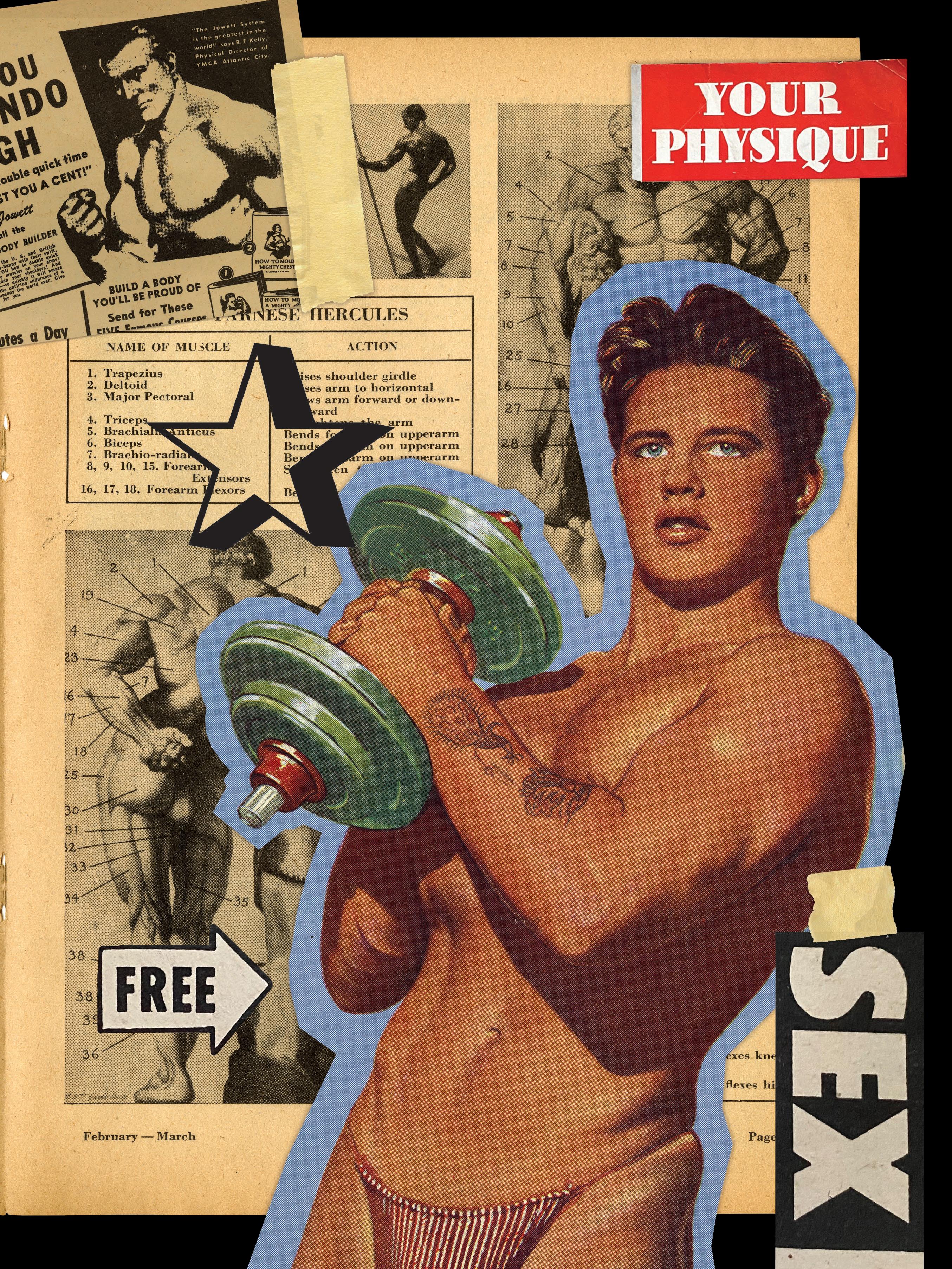
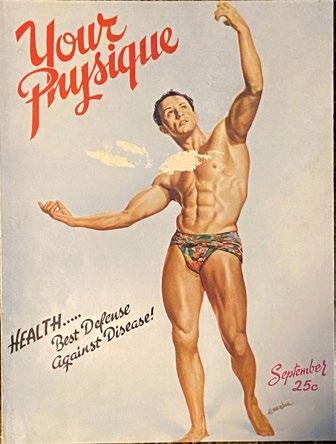
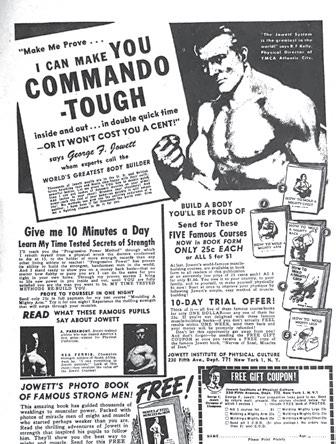
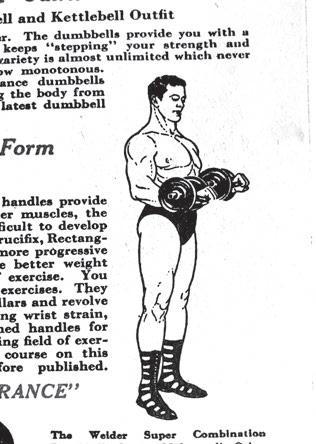
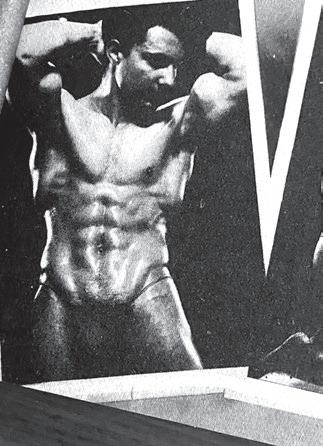
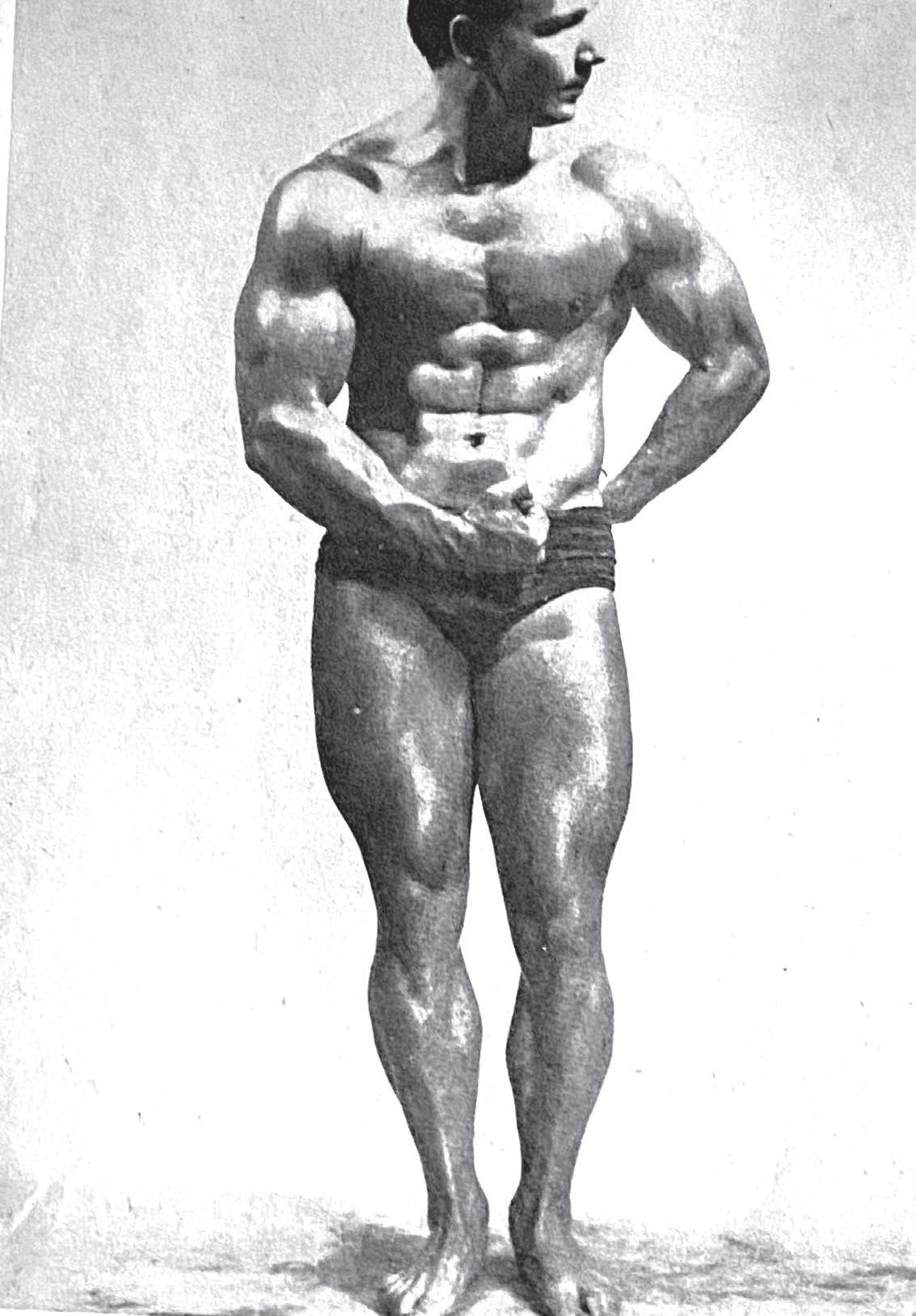
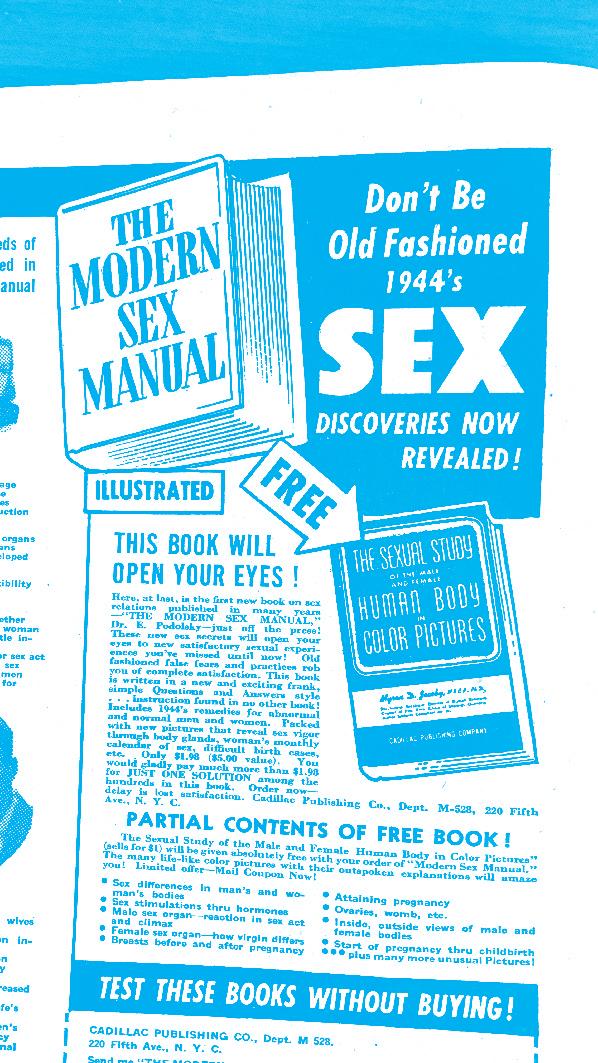
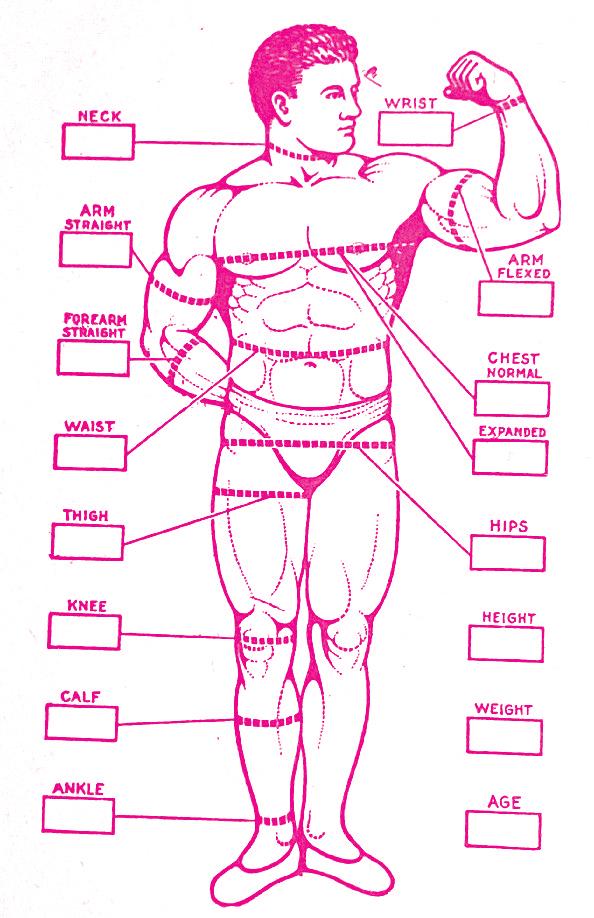
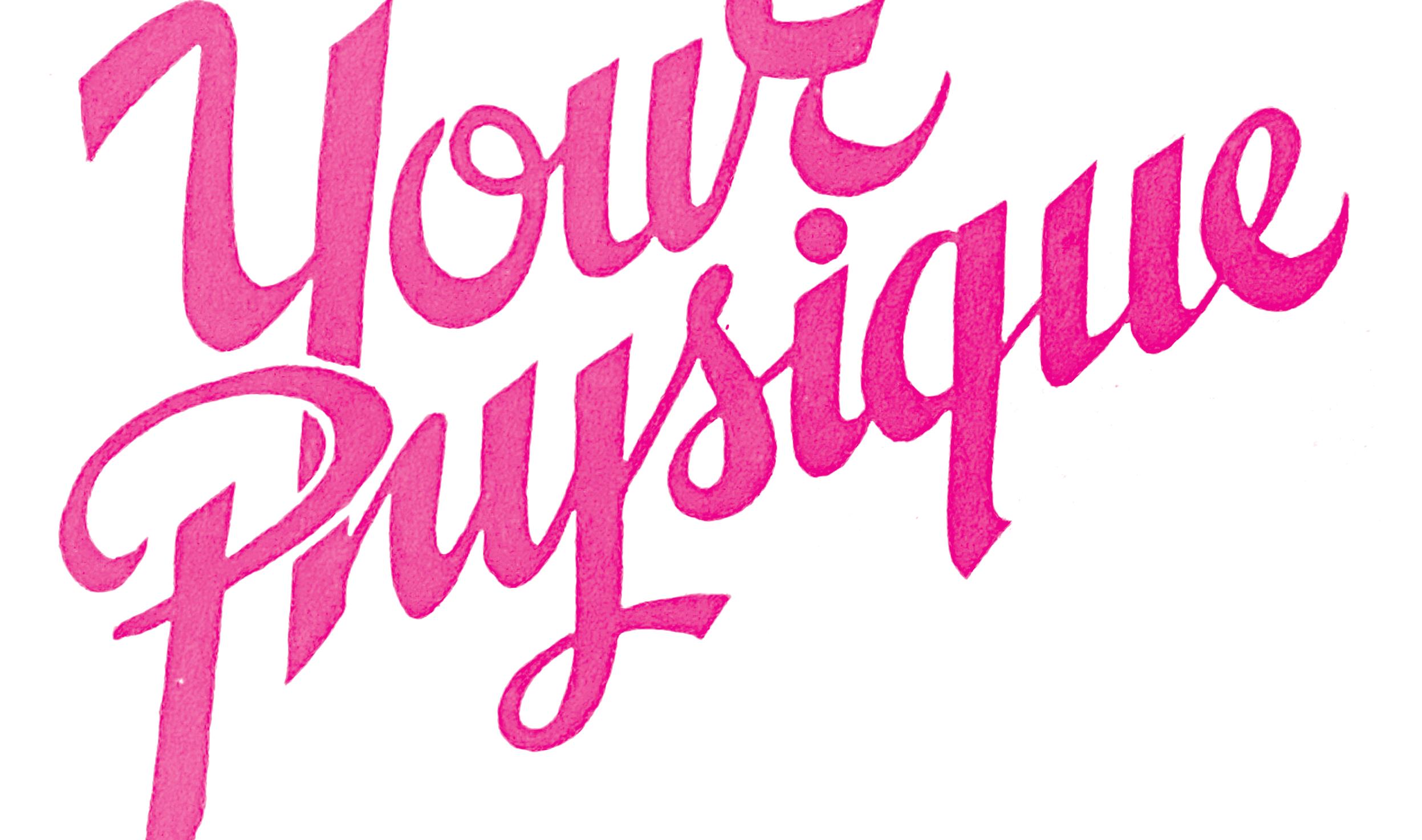

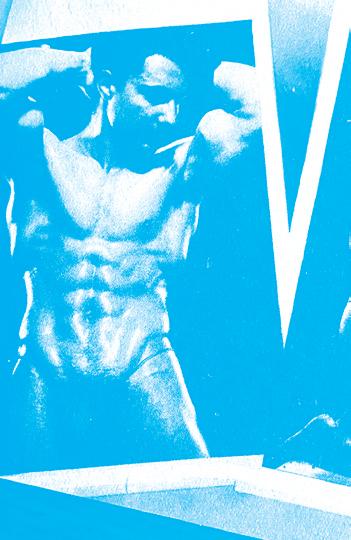
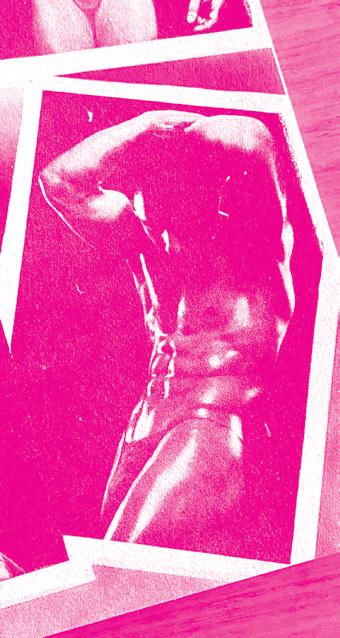
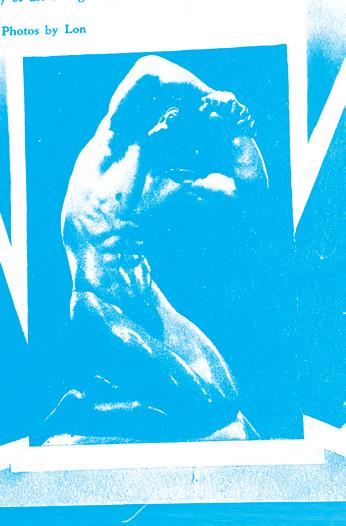
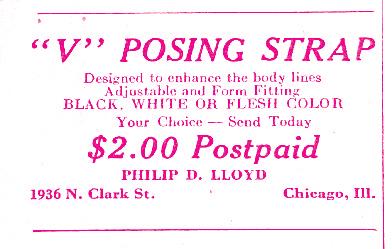

Rick Heffner
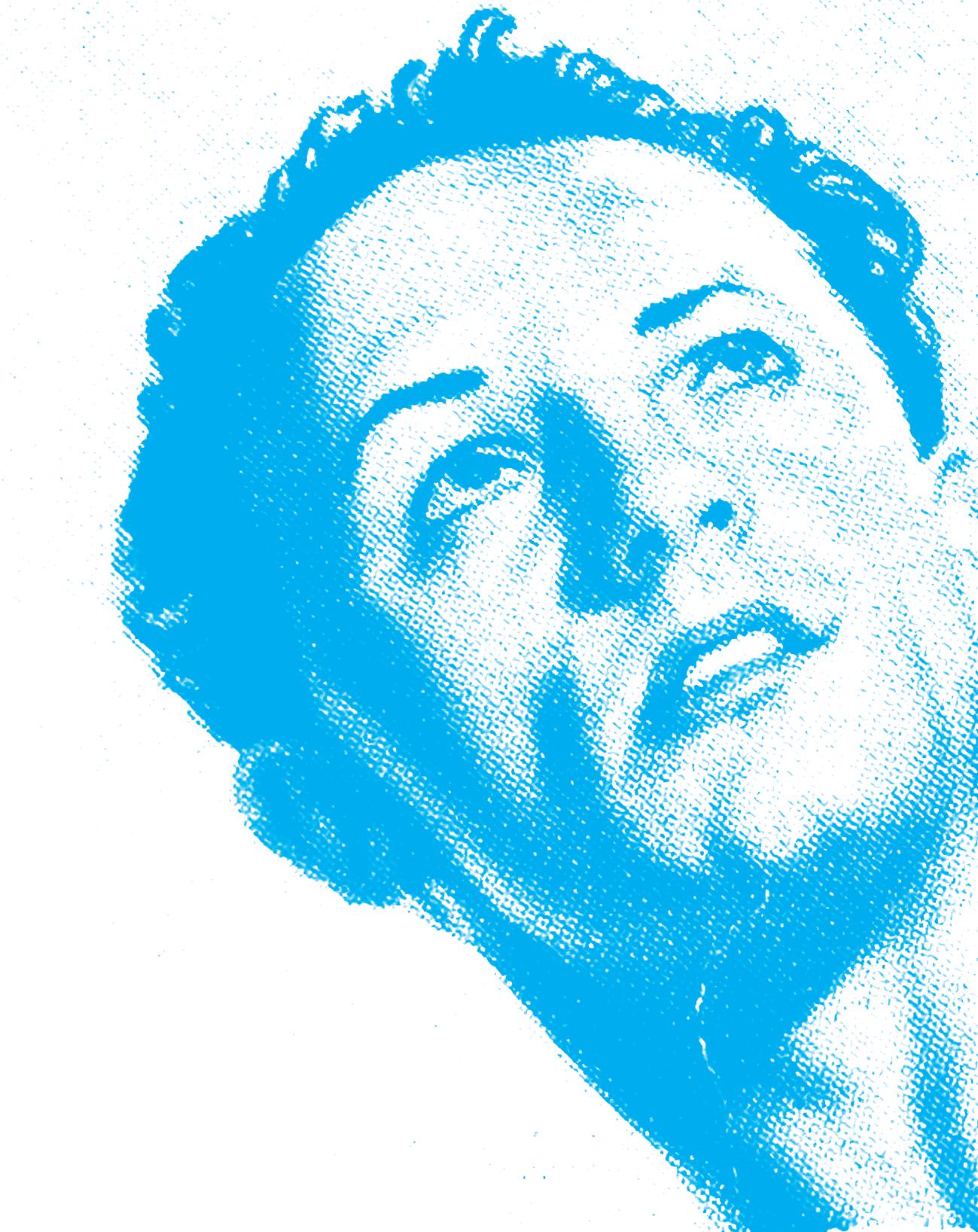

Your Physique, 2022 Digital collage
© Rick Heffner

All images and graphics are from this 1946 issue of Your Physique magazine


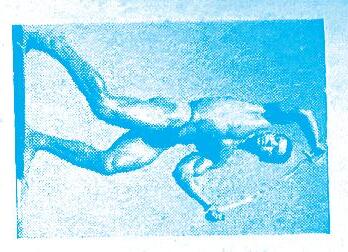
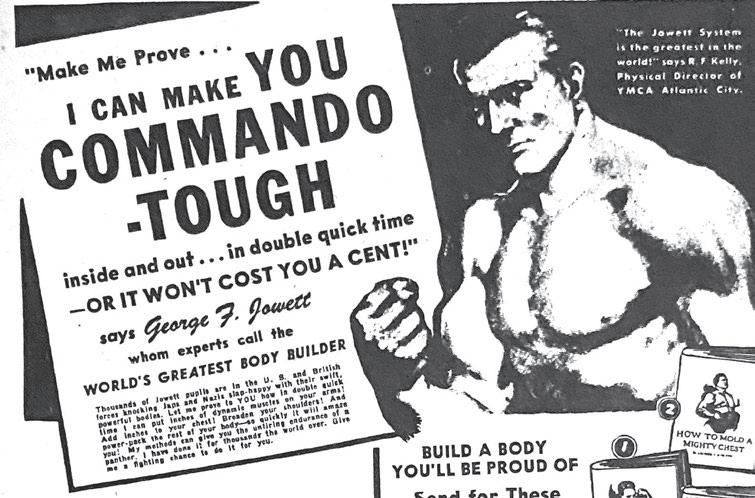
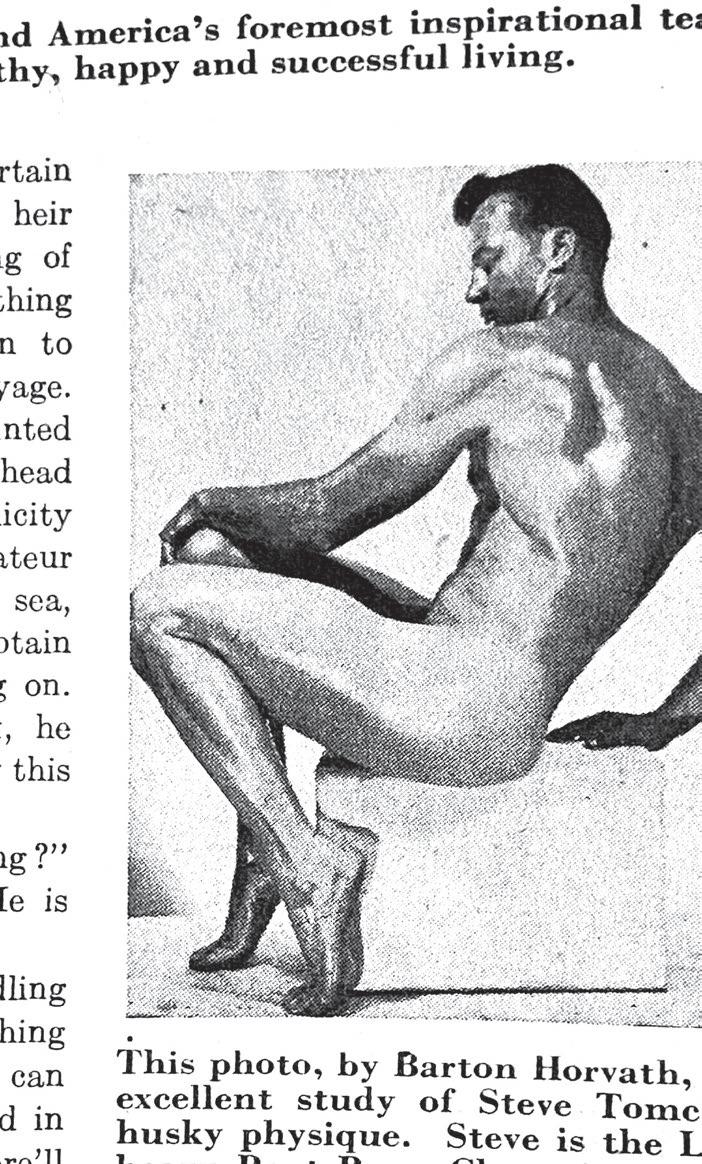

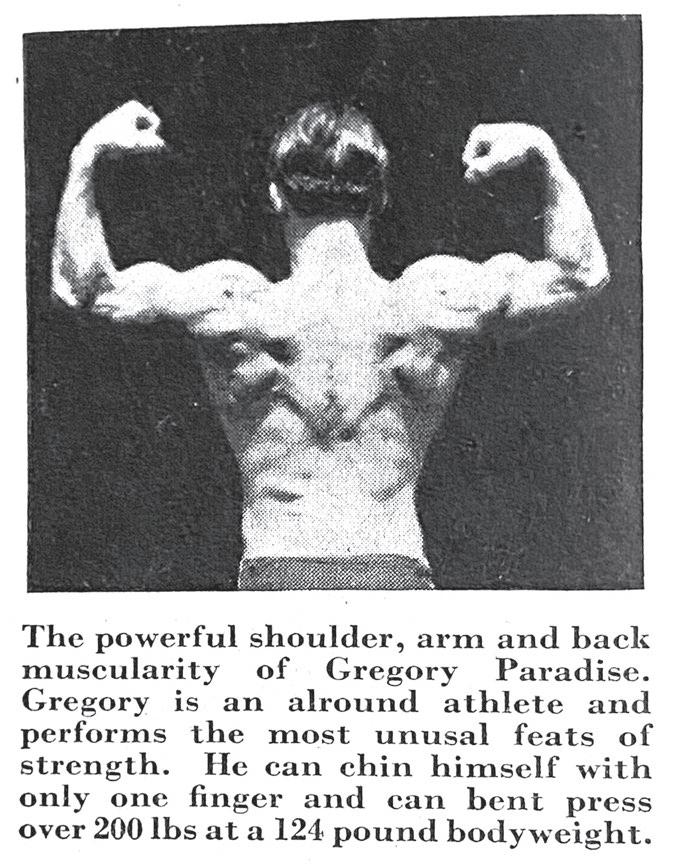

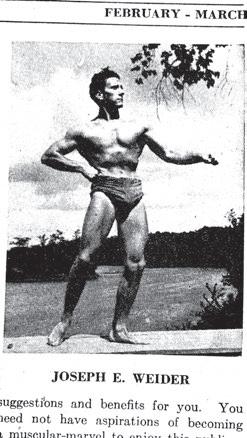
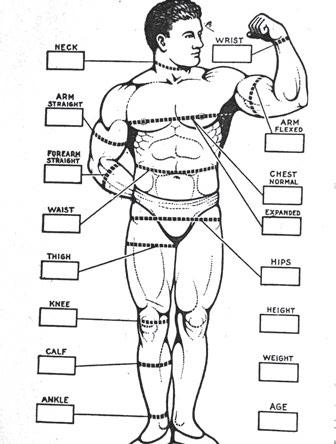
Joseph E. Weider, Publisher and Editor-in-Chief

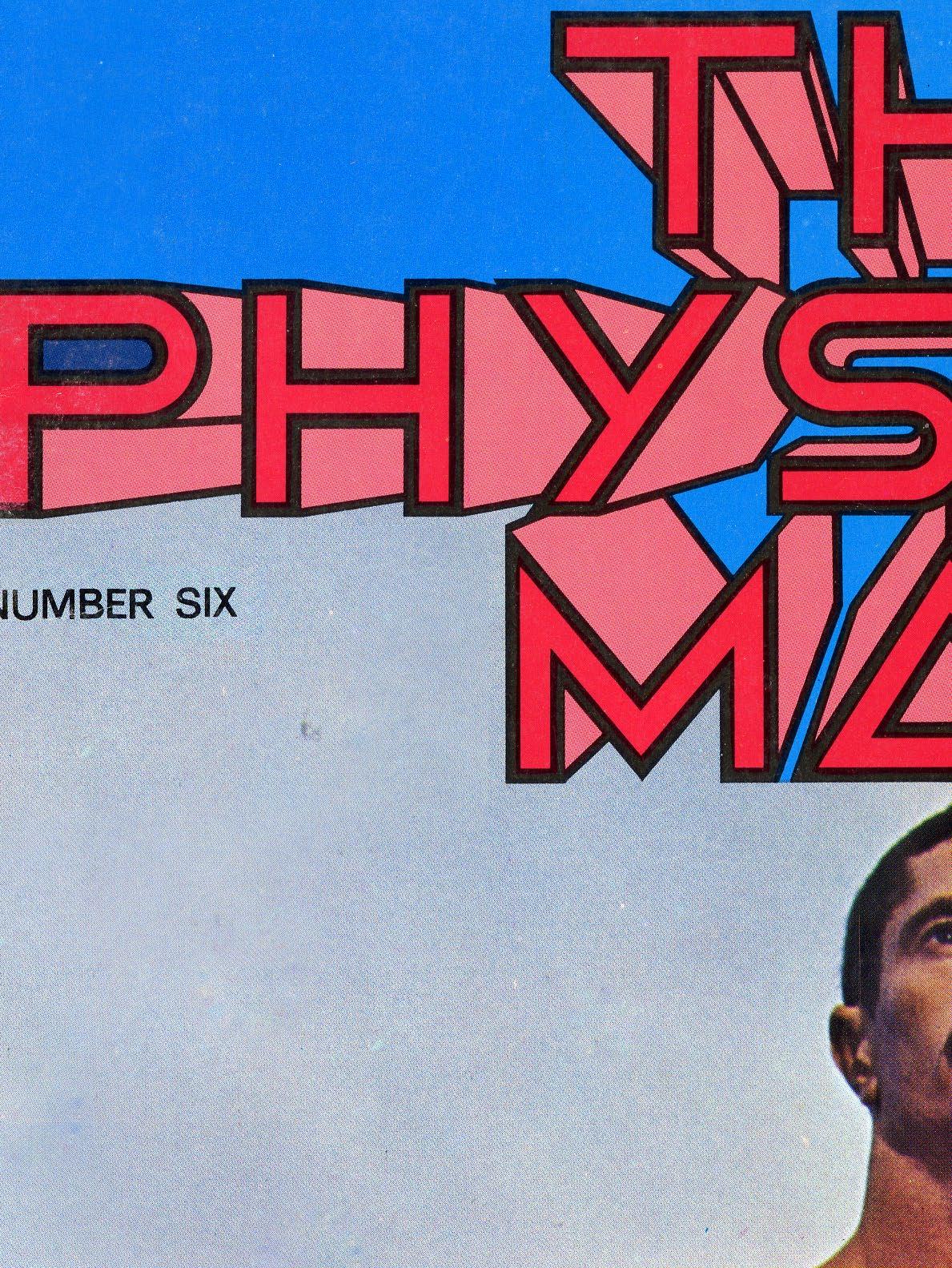

 The Physical Man, no. 6 (cover) From the brawny lumberjack to the boy-next-door with a bulge in his jeans.
The Physical Man, no. 6 (cover) From the brawny lumberjack to the boy-next-door with a bulge in his jeans.
LEADING BLACK-AND-WHITE BEEFCAKE
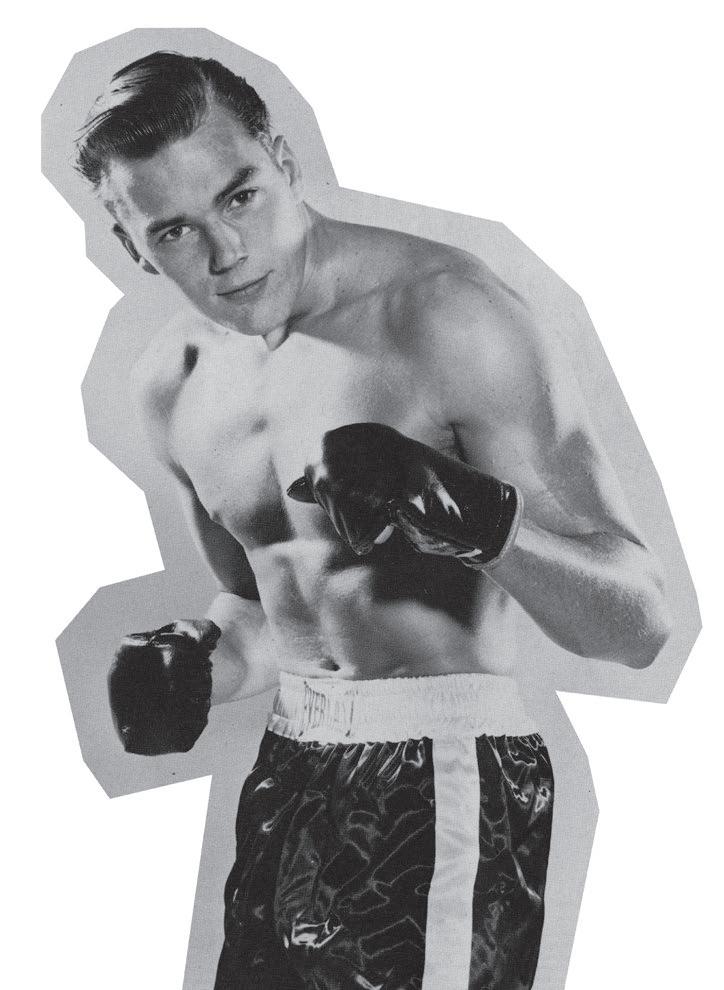
quarterly magazine that ran from 1951 to 1990, Physique Pictorial successfully evaded charges of obscenity by leveraging the popularity of bodybuilding culture and the formal techniques of Classical art as a cover-up for the wildly homoerotic images contained in each issue.

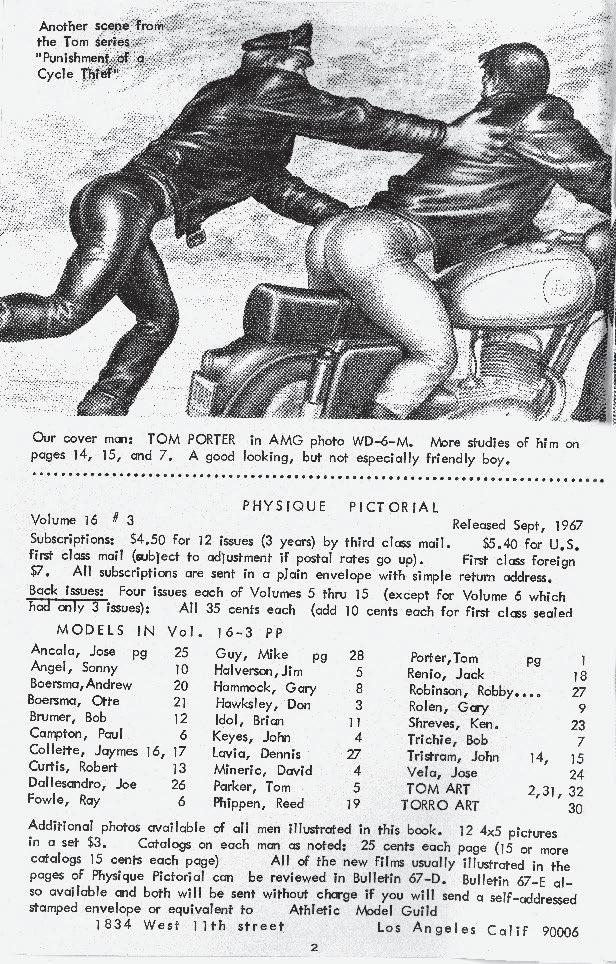
Although the magazine mainly featured the photography of its publisher and editor, Bob Mizer, the magazine also showcased other homoerotic artists, including Tom of Finland, George Quaintance, and Etienne.
Mizer’s bogus modeling agency, the Athletic Model Guild, acted as Physique Pictorial ’s beard, allowing Mizer not only to distribute the magazine, but also to sell mail-order photographs and film strips through the magazine.
Not content to just make readers salivate as they turned his magazine’s pages, Mizer also used Physique Pictorial to advocate for political causes—from his opposition to government censorship to shining a light on the struggles of other beefcake publications convicted of obscenityrelated charges.
The popularity of physique magazines began to wane in the 1960s, due to a new legal precedent that allowed magazines to print full-frontal nudity. Under a ruling from the U.S. Supreme Court, magazines consisting mainly of photographs of nude or semi-nude male models were no longer considered pornographic. It was the first case in which the high court challenged the U.S. Postal Service’s mandate that obscene matter was a “nonmailable” entity. Eager to remove the shackles that had constrained the magazine’s style, Mizer updated the Physique Pictorial identity in 1969 to focus on presenting fully nude men.
Luckily for me—and my ability to include his work in this thesis—Mizer did not include copyright notices in issues published between 1951 and the late 1970s, likely because the contents would have been deemed obscene by the U.S. Copyright Office. Issues published before 1978 that lacked copyright notices as required by U.S. copyright law at the time immediately entered the public domain when published.

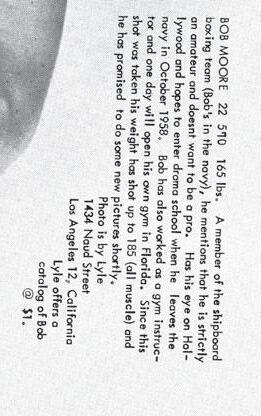
Physique Pictorial, vol. 10, no.1
(July 1964)
Athletic Model Guild
Los Angeles, CA
Physique Pictorial, vol. 7, no.4
(Winter 1957)
Athletic Model Guild
Los Angeles, CA
Physique Pictorial, vol. 9, no.3
(January 1960)
Athletic Model Guild Los Angeles, CA
Physique Pictorial, vol. 10, no.1
(June 1960)
Athletic Model Guild Los Angeles, CA
Physique Pictorial, vol. 10, no.2
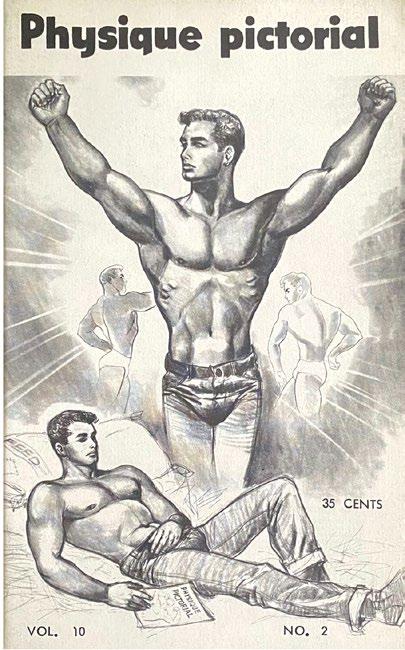
(August 1960)
Athletic Model Guild Los Angeles, CA
Physique Pictorial, vol. 10, no.3
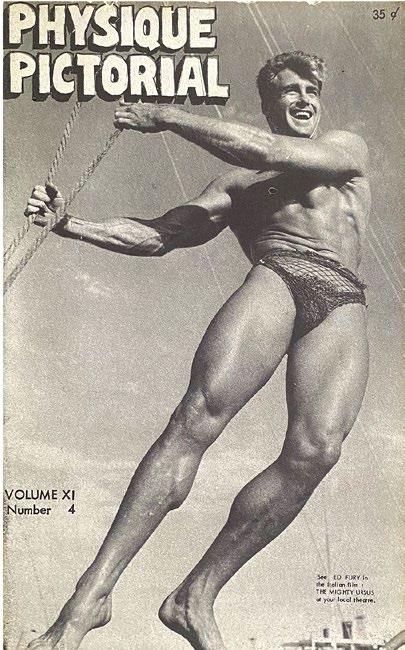
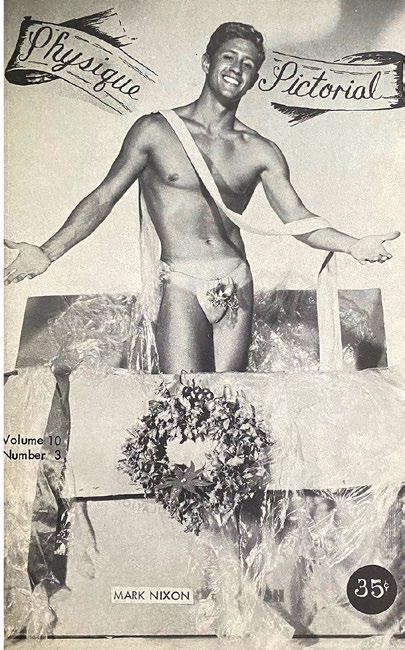
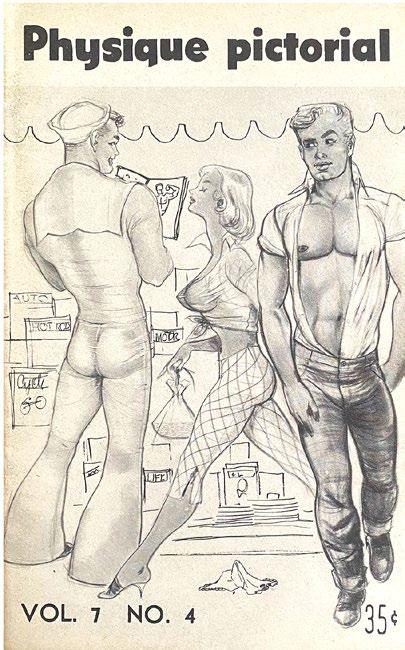
(January 1961)
Athletic Model Guild Los Angeles, CA
Physique Pictorial, vol. 10, no.1
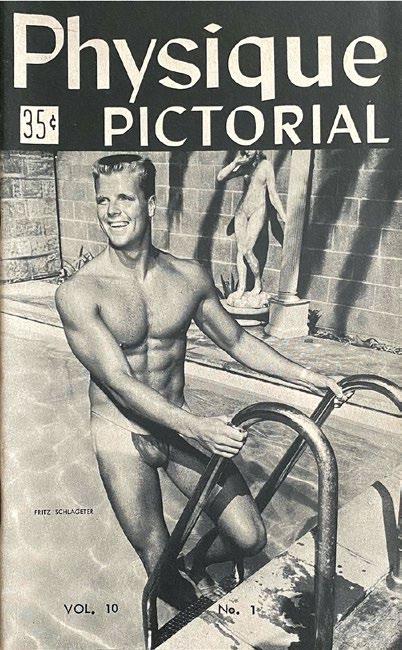
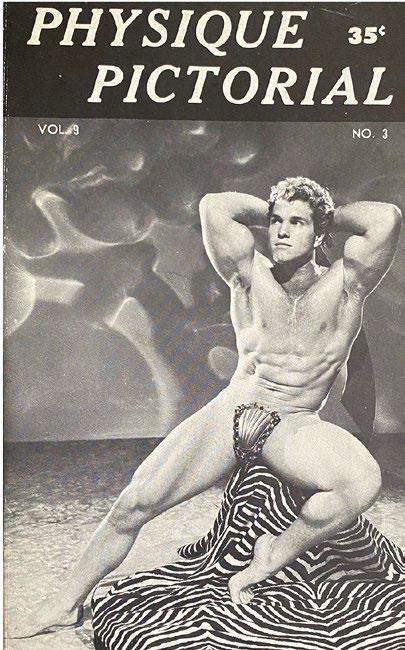
(July 1964)
Athletic Model Guild
Los Angeles, CA
Physique Pictorial, vol. 11, no.4
(May 1962)
Athletic Model Guild
Los Angeles, CA
Physique Pictorial, vol. 12, no.1
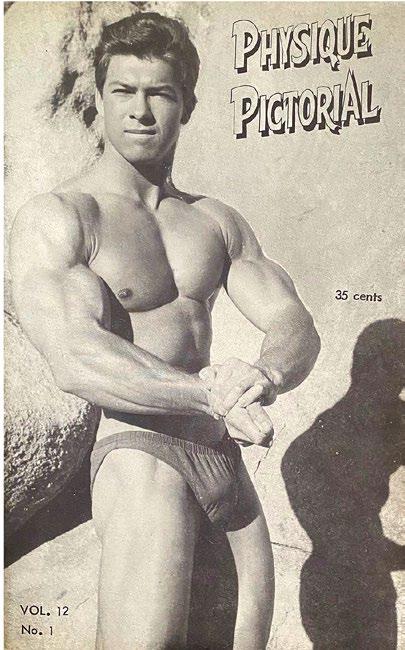
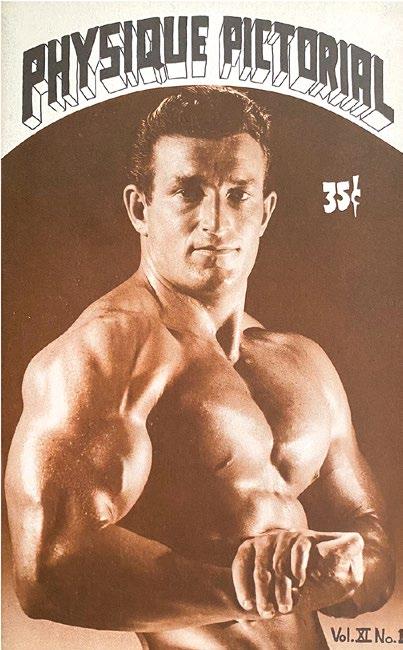
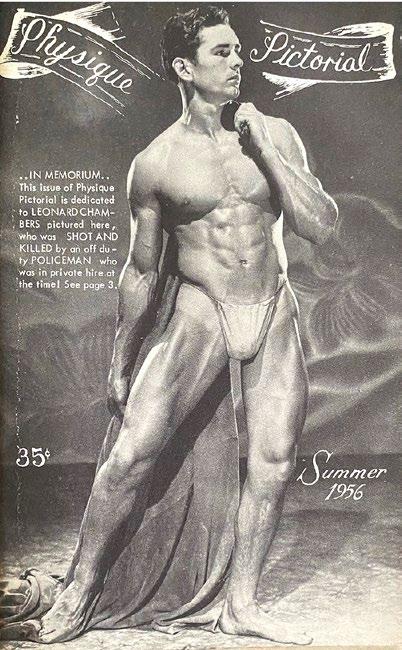
(July 1962)
Athletic Model Guild Los Angeles, CA
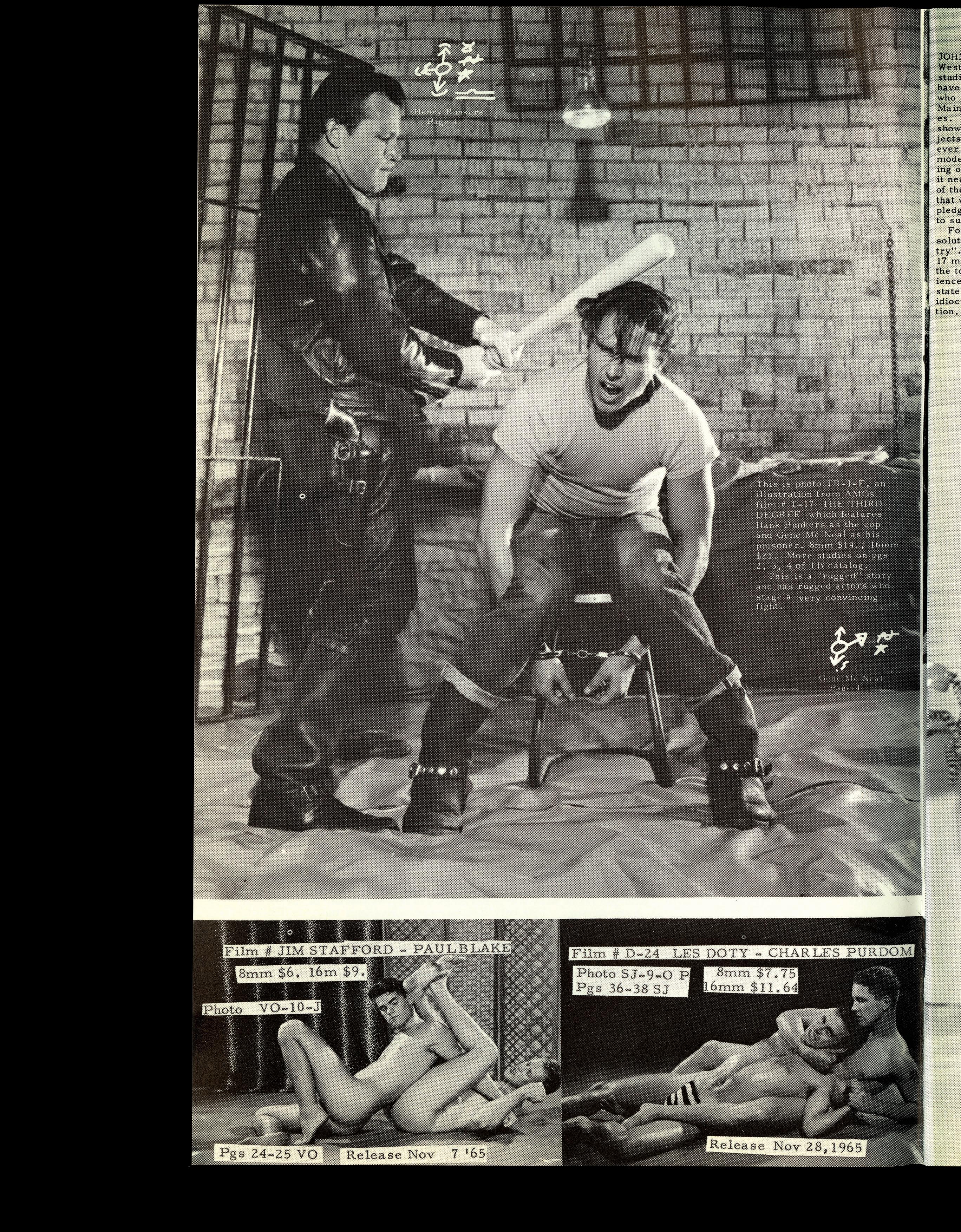
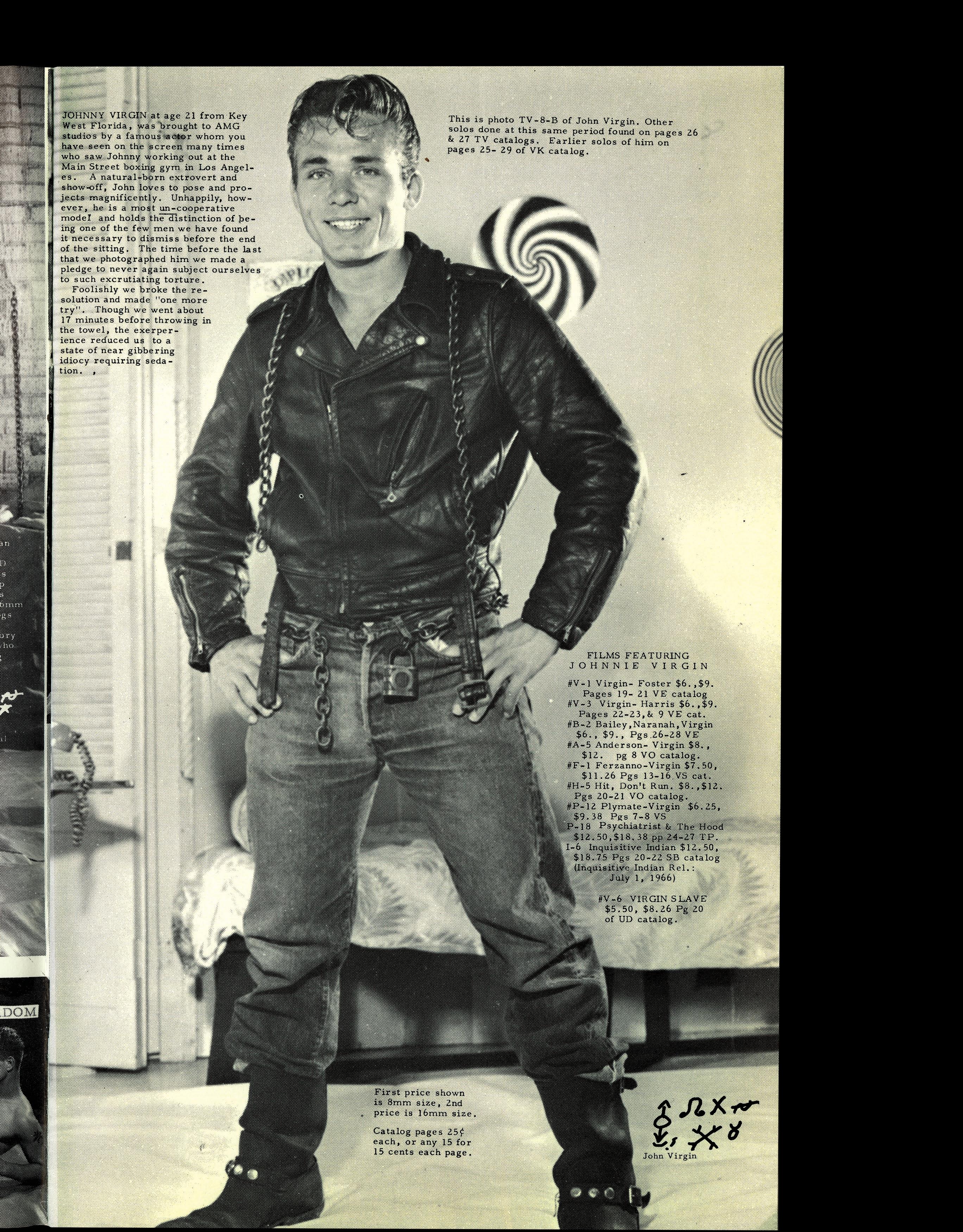
Physique Pictorial, vol. 12, no.2
(November 1962)
Athletic Model Guild Los Angeles, CA
Physique Pictorial, vol. 12, no.4
(May 1963)
Athletic Model Guild Los Angeles, CA
Physique Pictorial, vol. 13, no.1 (August 1963)
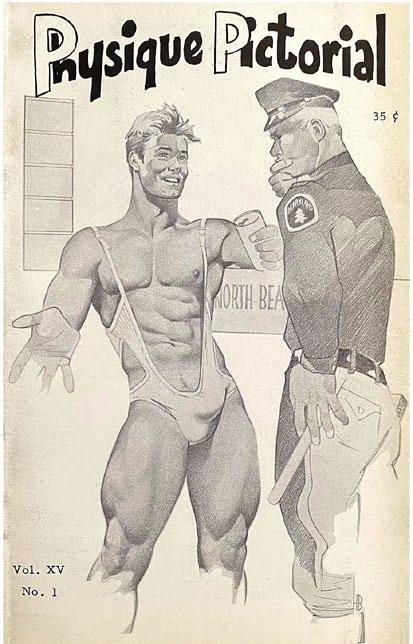
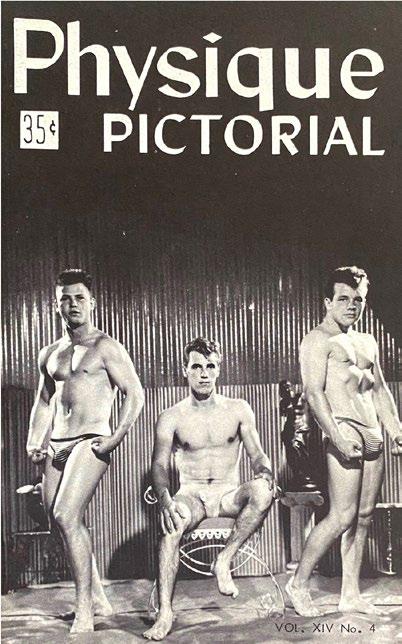
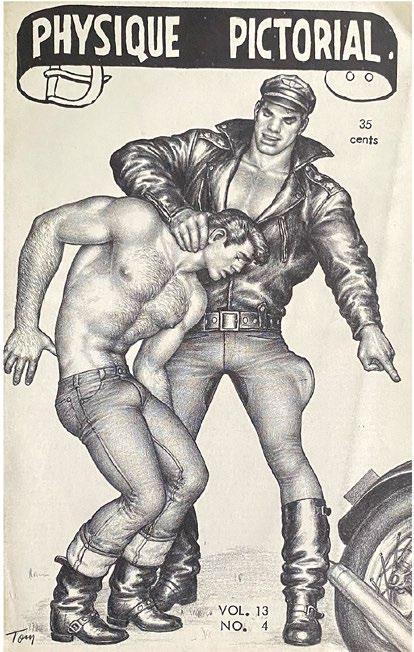
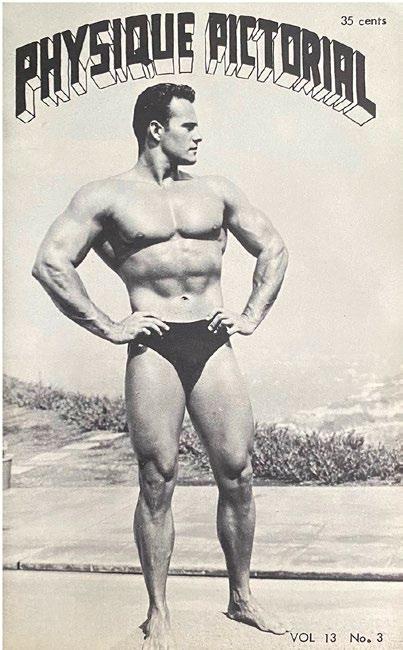
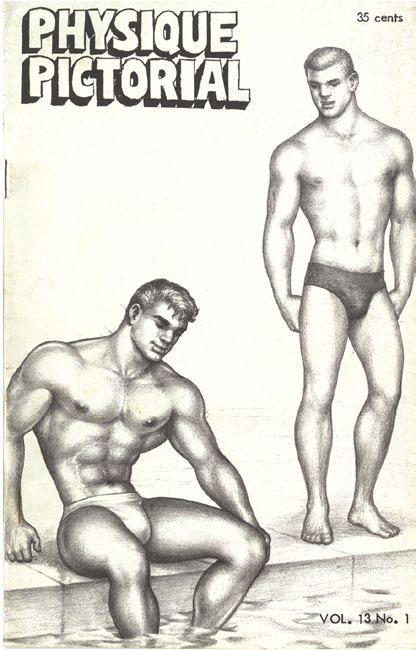
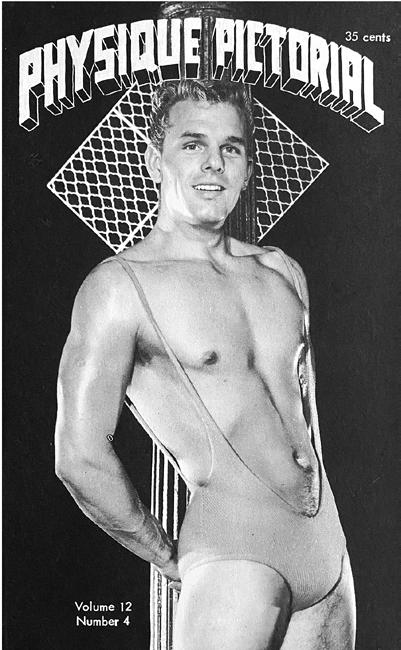
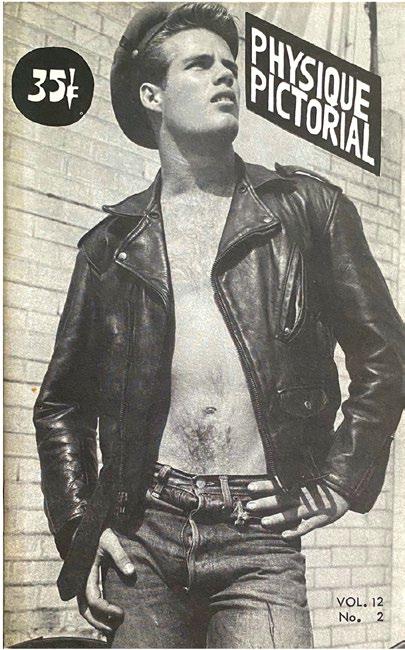
Athletic Model Guild Los Angeles, CA
Physique Pictorial, vol. 13, no.2
(October 1963)
Athletic Model Guild Los Angeles, CA
Physique Pictorial, vol. 13, no.3
(February 1963)
Athletic Model Guild Los Angeles, CA
Physique Pictorial, vol. 13, no.4
(May 1964)
Athletic Model Guild Los Angeles, CA
Physique Pictorial, vol. 14, no.1 (July 1964)
Athletic Model Guild Los Angeles, CA
Physique Pictorial, vol. 14, no.4 (June 1965)
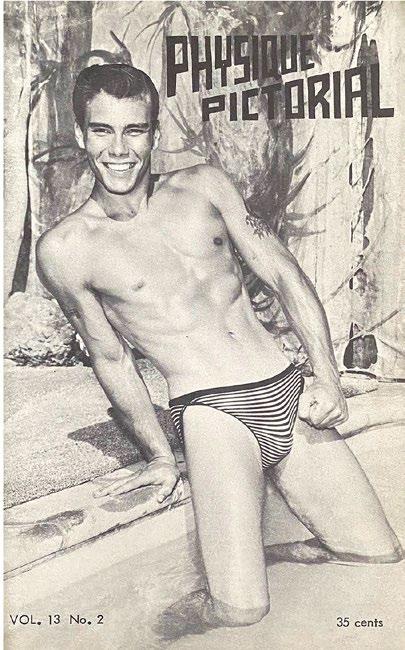
Athletic Model Guild Los Angeles, CA
Physique Pictorial, vol. 15, no.1
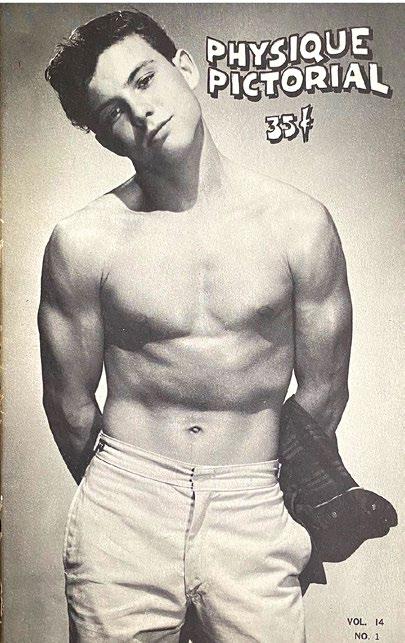
(October 1965)
Athletic Model Guild Los Angeles, CA
Physique Pictorial, vol. 15, no.2
(January 1966)
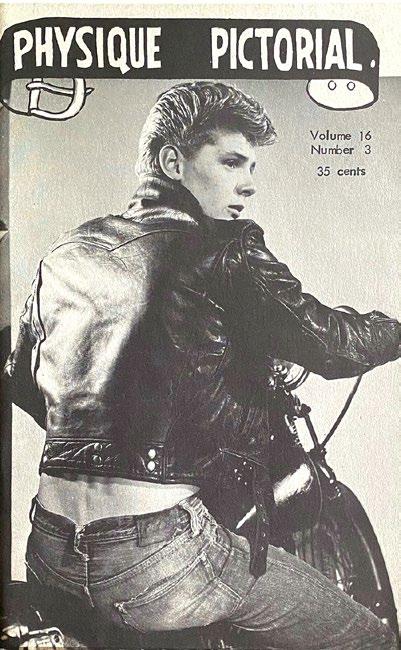
Athletic Model Guild
Los Angeles, CA
Physique Pictorial, vol. 15, no.4 (September 1966)
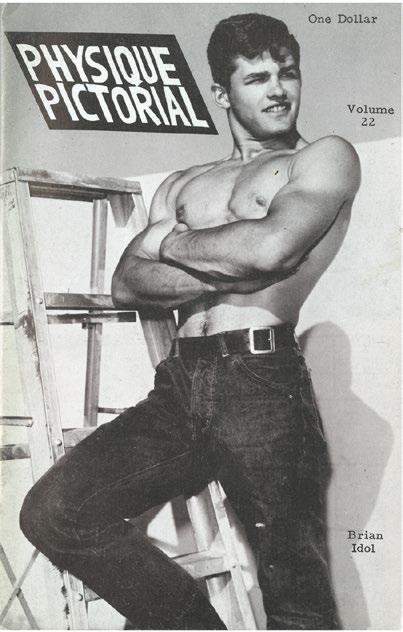
Athletic Model Guild
Los Angeles, CA
Physique Pictorial, vol. 16, no.1 (December 1966)
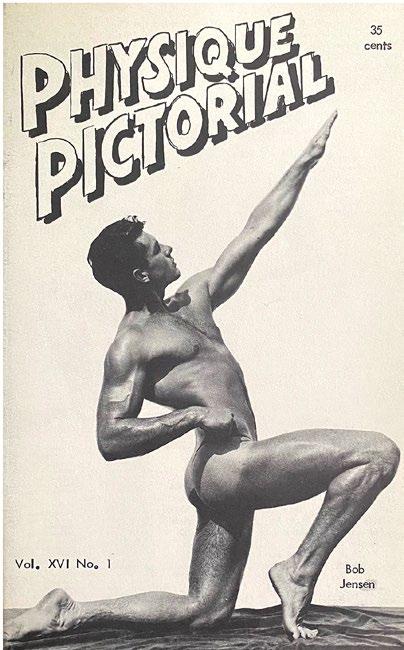
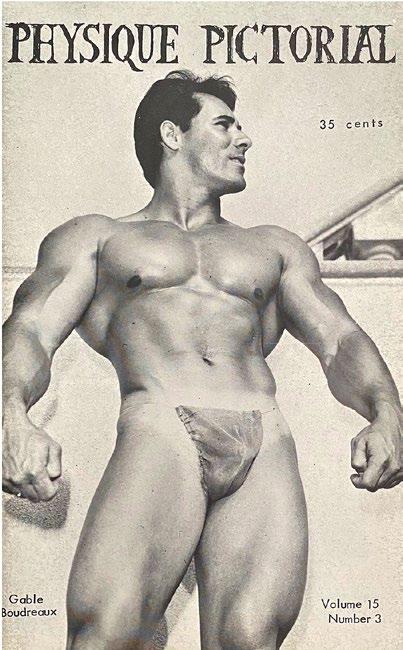

Athletic Model Guild Los Angeles, CA
Physique Pictorial, vol. 16, no.3 (September 1967)
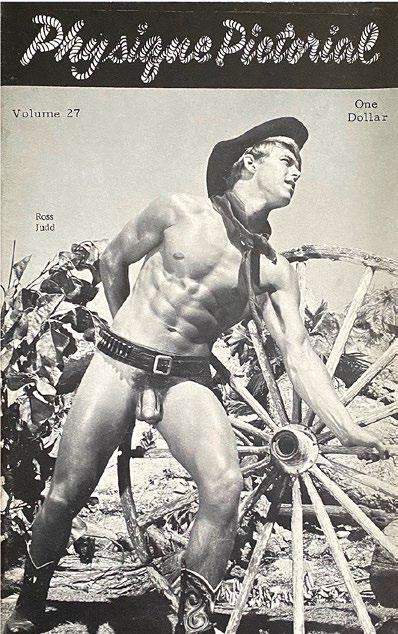
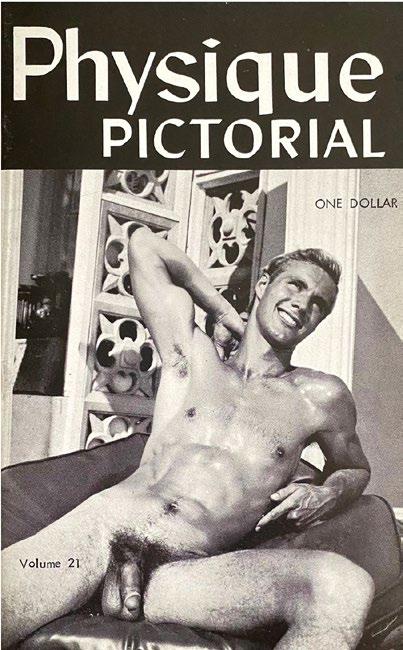
Athletic Model Guild Los Angeles, CA
Physique Pictorial, vol. 17, no.1 (July 1968)
Athletic Model Guild Los Angeles, CA
Physique Pictorial vol. 21 (July 1972)
Athletic Model Guild Los Angeles, CA
Physique Pictorial, vol. 22 (April 1973)
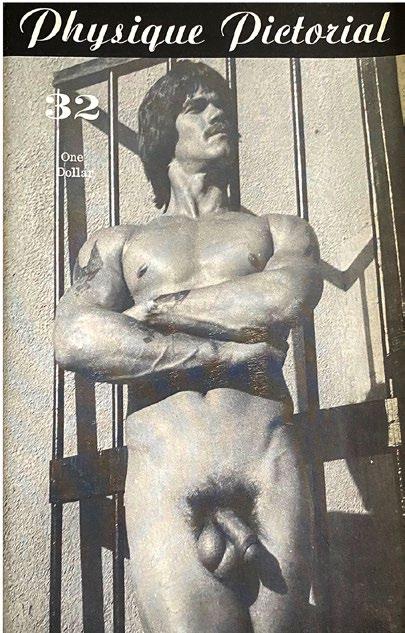
Athletic Model Guild Los Angeles, CA
Physique Pictorial, vol. 27, no.4 (July 1975)
Athletic Model Guild Los Angeles, CA
Physique Pictorial, vol. 32, no.1 (May 1979)
Athletic Model Guild Los Angeles, CA
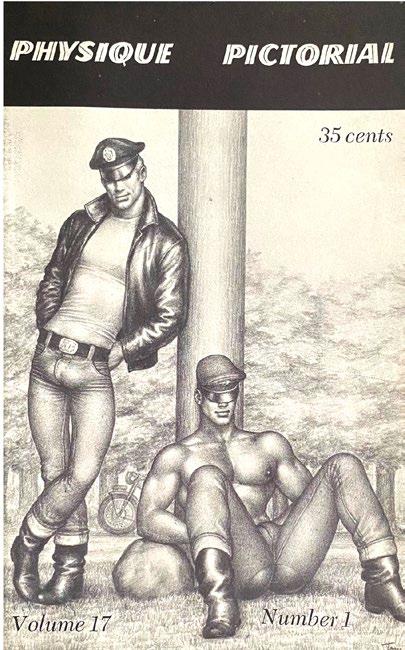









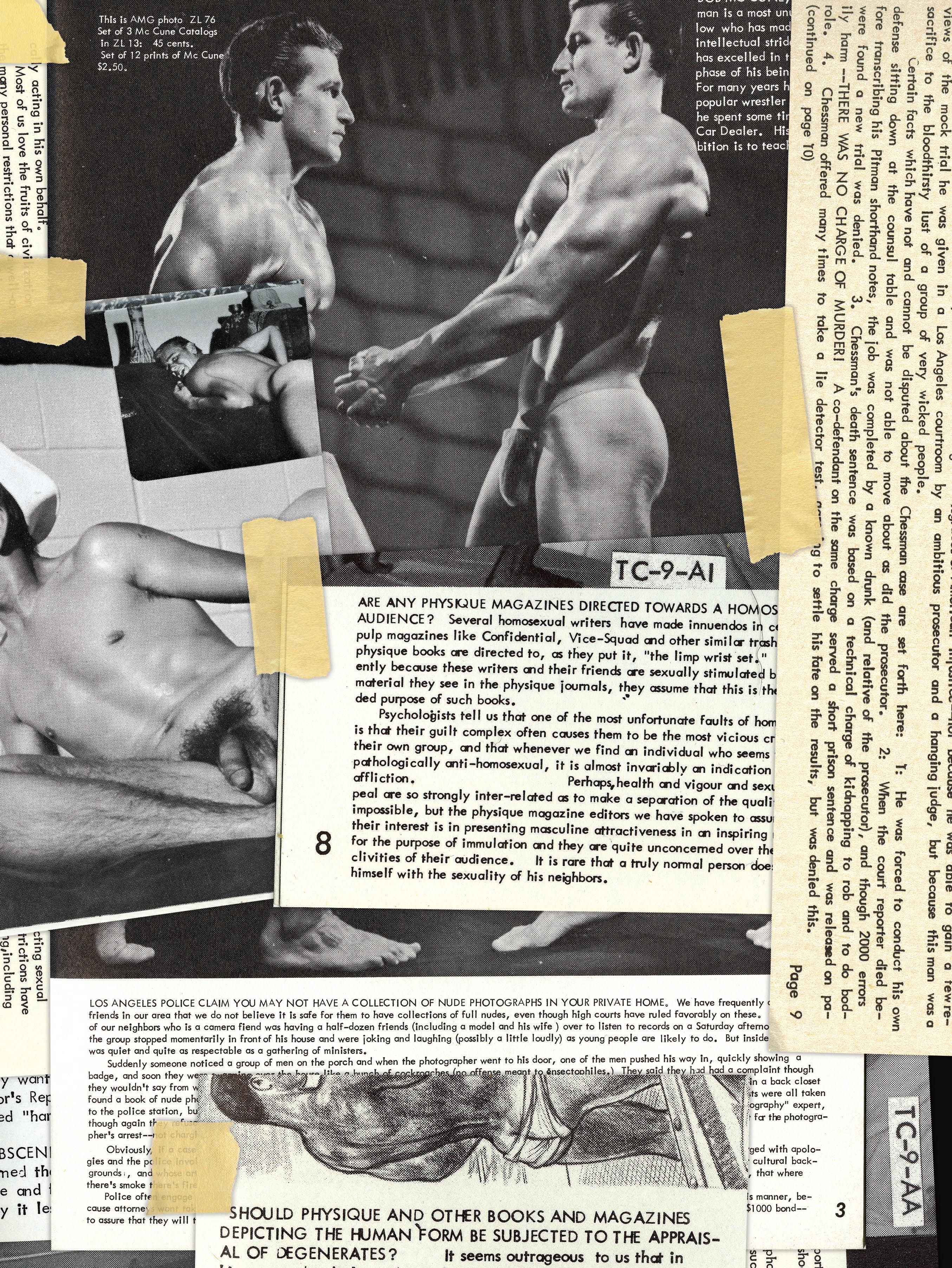



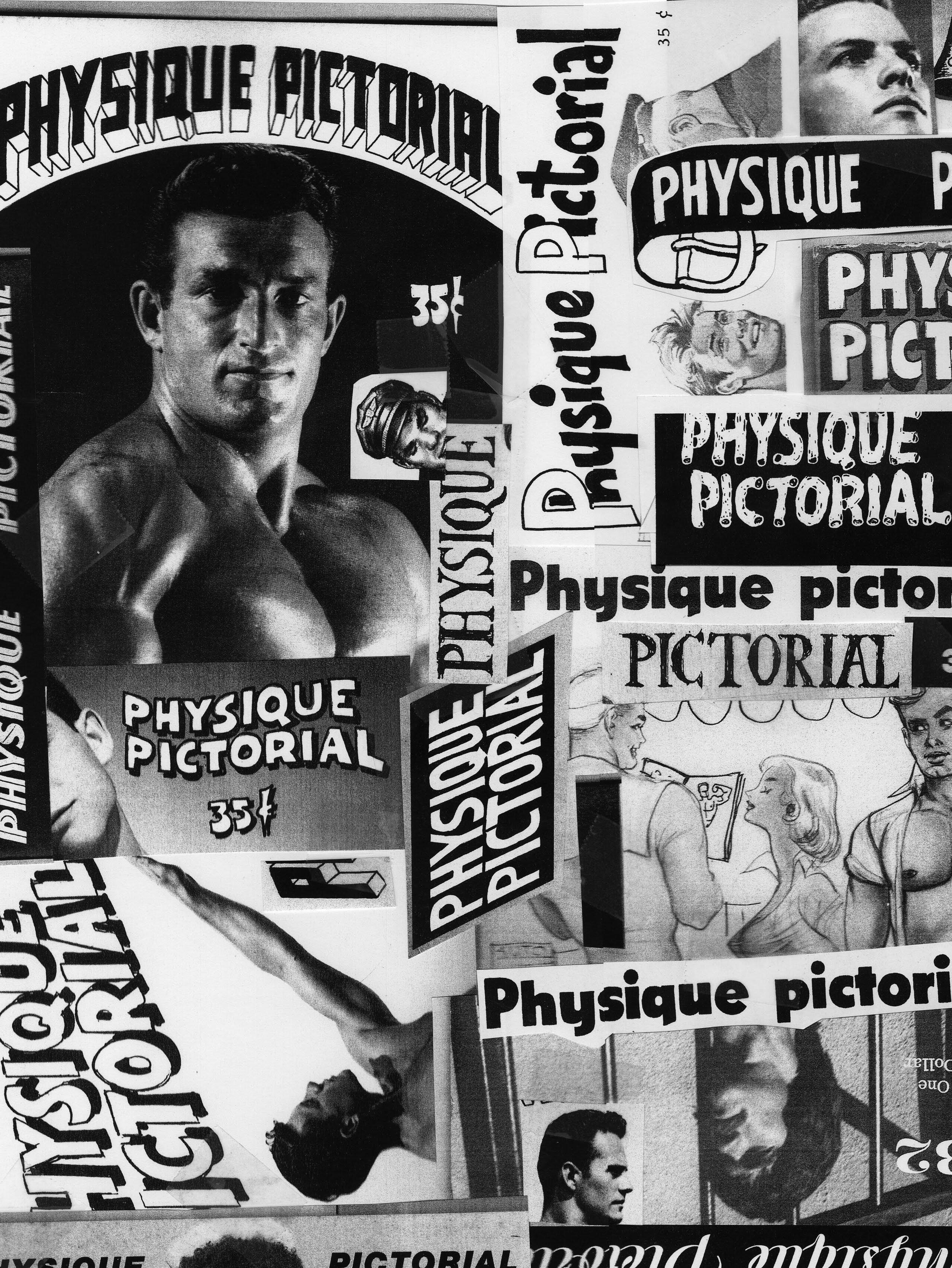
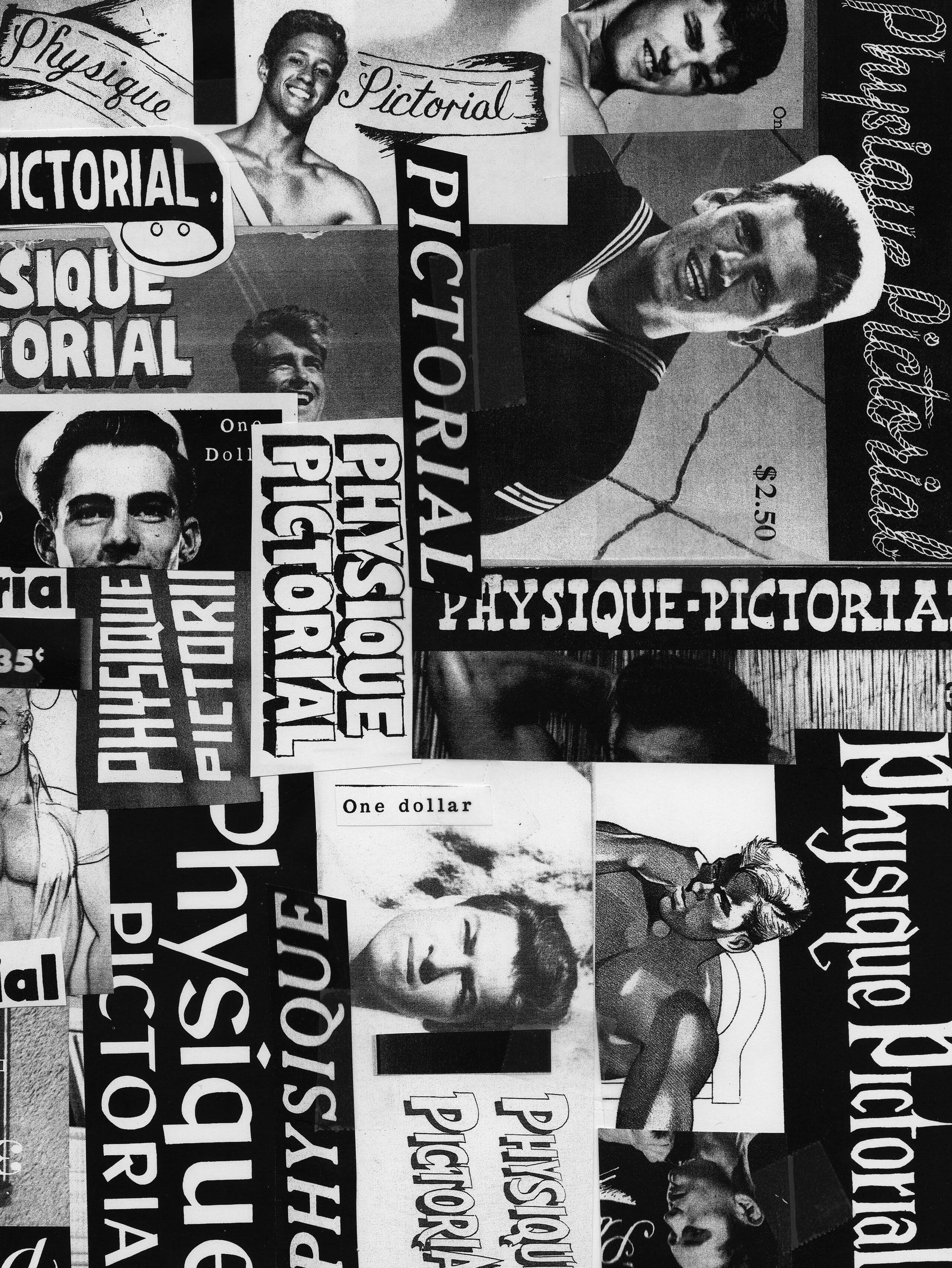
PREVIOUS PAGE:
A collection of Physique Pictorial nameplates. No two were the same, as some were drawn by hand, while others were crudely typeset.
Physique Pictorial, vol. 37, no.2 (November 1983)
Athletic Model Guild Los Angeles, CA
Physique Pictorial, vol. 39, no.4 (January 1986)
Athletic Model Guild Los Angeles, CA
Physique Pictorial, vol. 11, no.3 (March 1962)
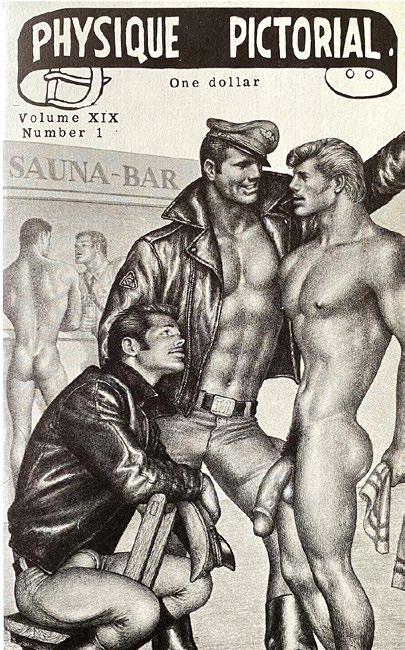
Athletic Model Guild Los Angeles, CA
Physique Pictorial, vol. 139, no.1 (June 1971)
Athletic Model Guild Los Angeles, CA
Physique Pictorial, vol. 16, no.2 (April 1967)
Athletic Model Guild Los Angeles, CA
Physique Pictorial, vol. 6, no.1 (Spring 1956)
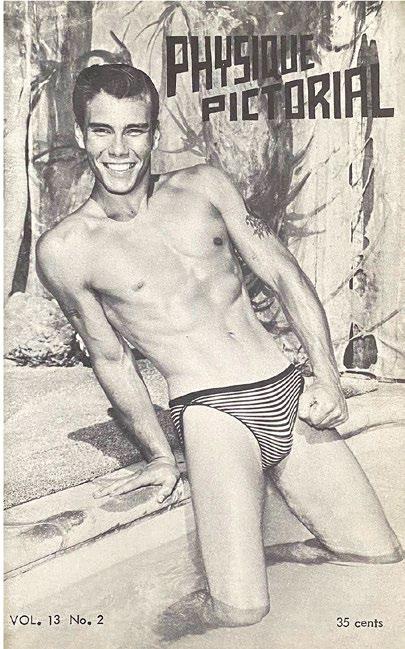
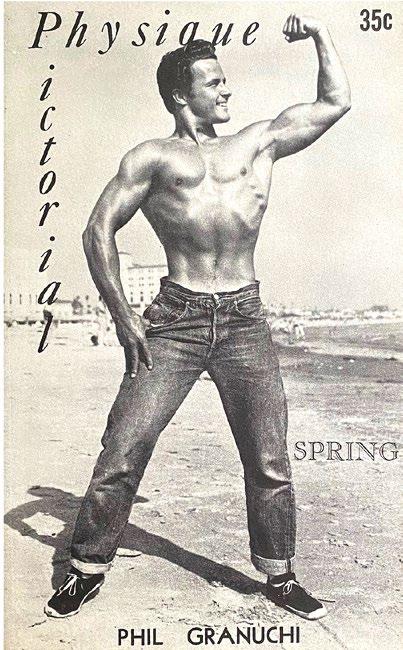
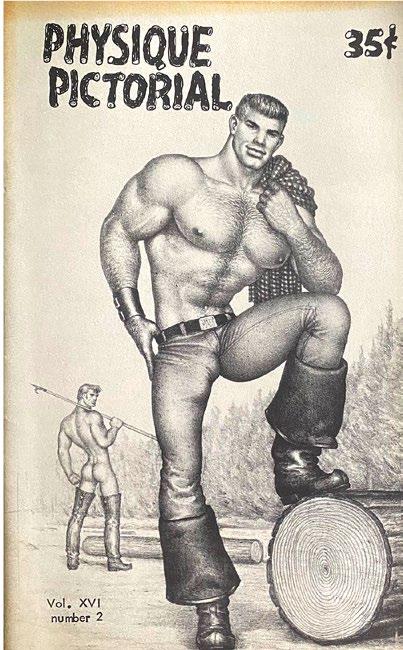
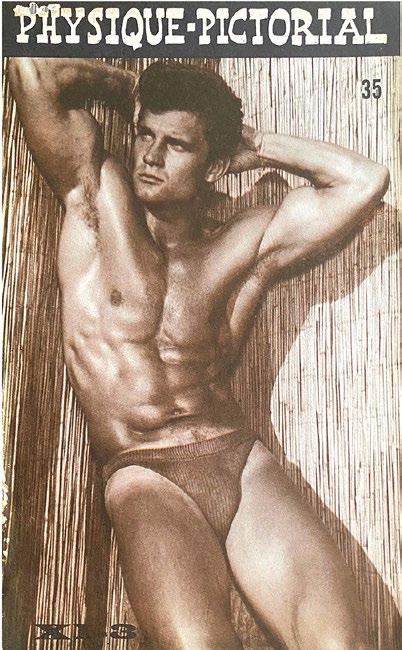
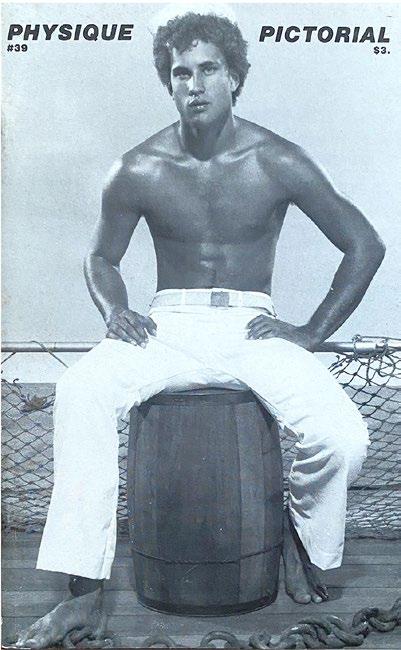
Athletic Model Guild Los Angeles, CA
Physique Pictorial, vol. 13, no.2 (October 1963)
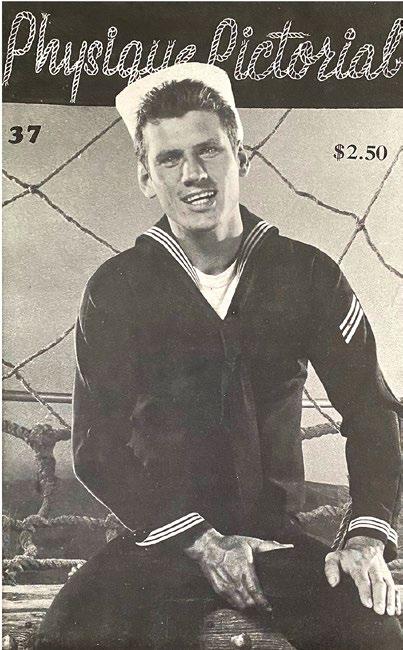
Athletic Model Guild Los Angeles, CA
Physique Pictorial, vol. 14, no.2 (October 1964)
Athletic Model Guild Los Angeles, CA
RIGHT:
Athletic Model Guild
Thousand Model Directory (September 1957)
Athletic Model Guild Los Angeles, CA
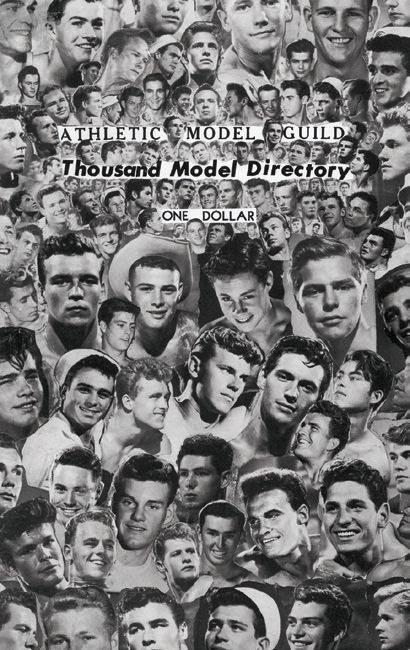
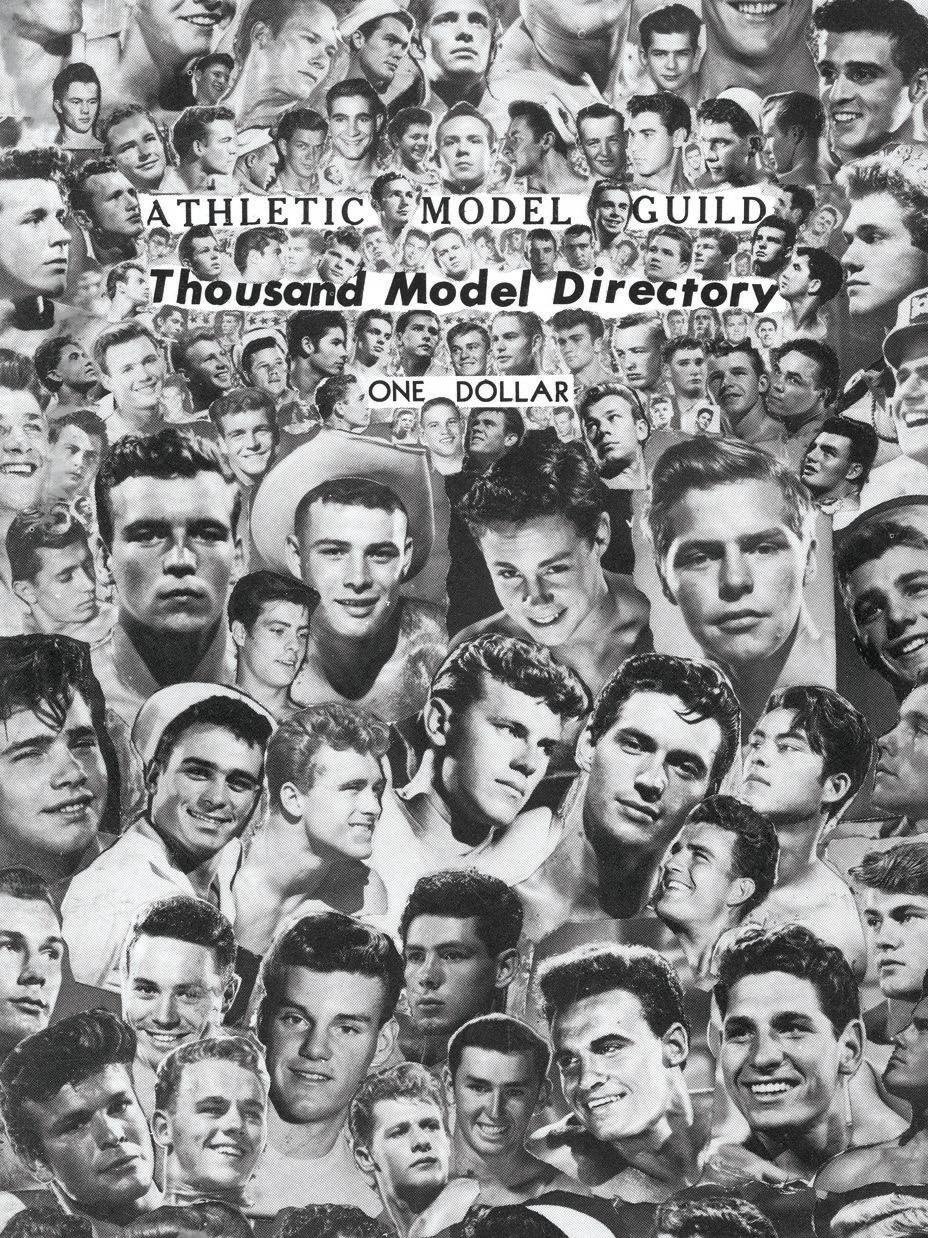

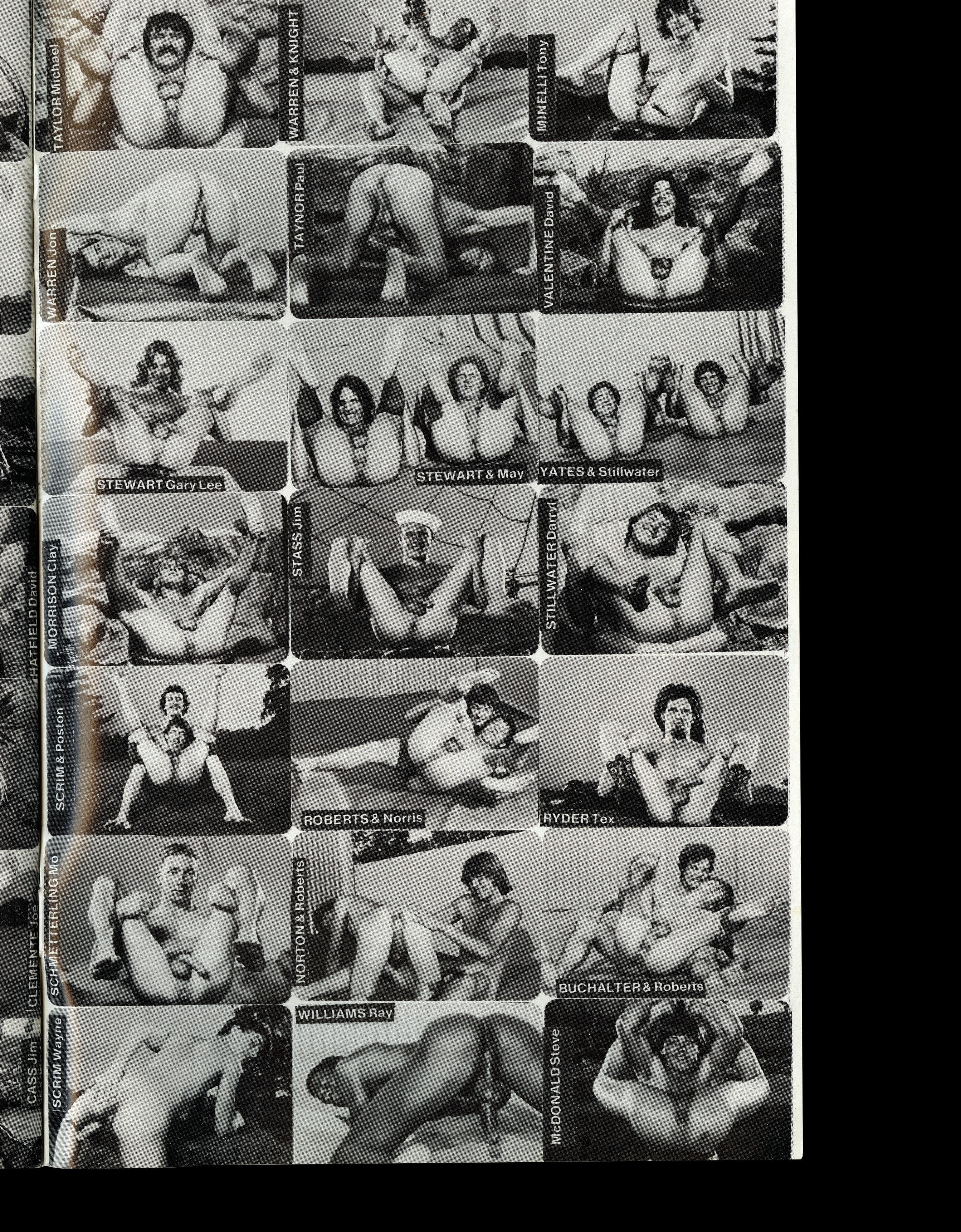
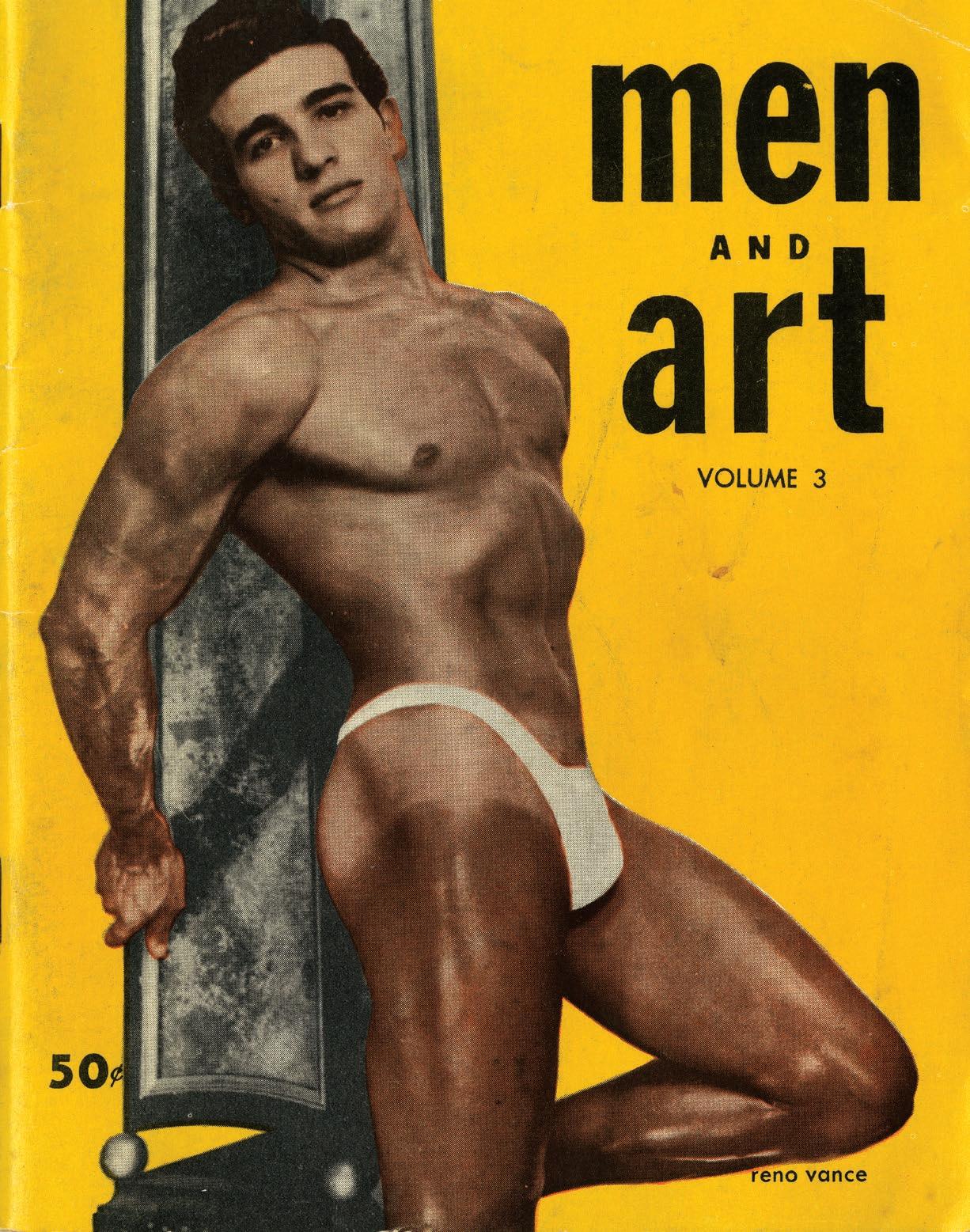
Adonis, 1967
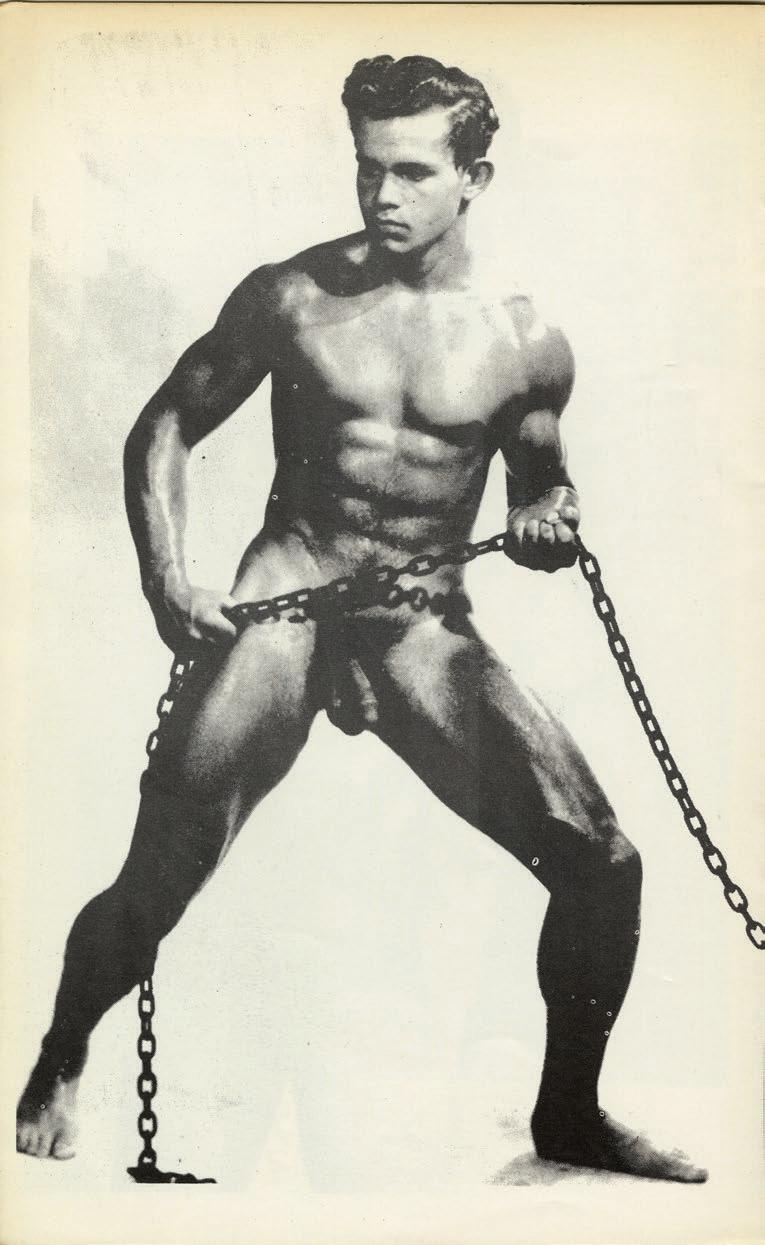
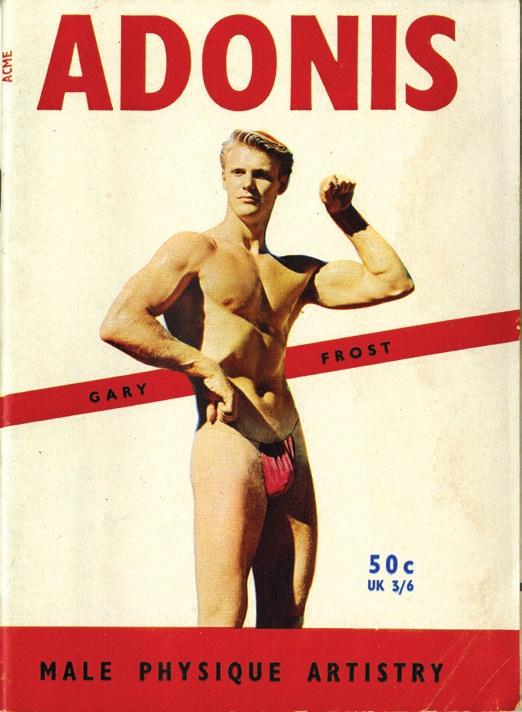
Trojan Book Service
Philadelphia, PA 5.5” x 8.5”
Tomorrow's Man, vol. 2, no. 9 (September 1954)

Irvin Johnson Health Studios
Chicago, IL 4.125” x 5.9375”
Subscription rate was $2.50 per year for 12 issues
Male Nudist Review, no. 6 [ca. 1940]
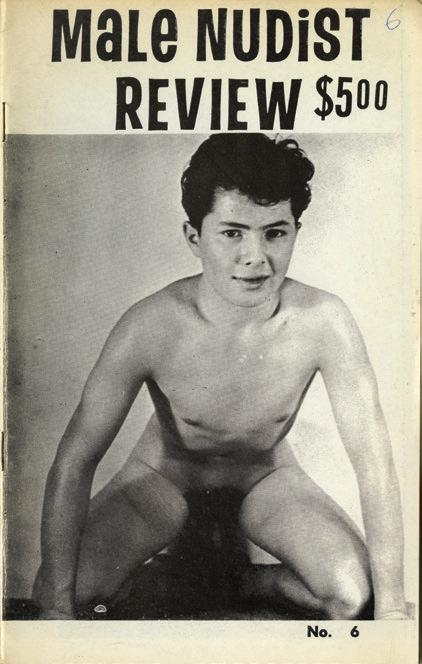
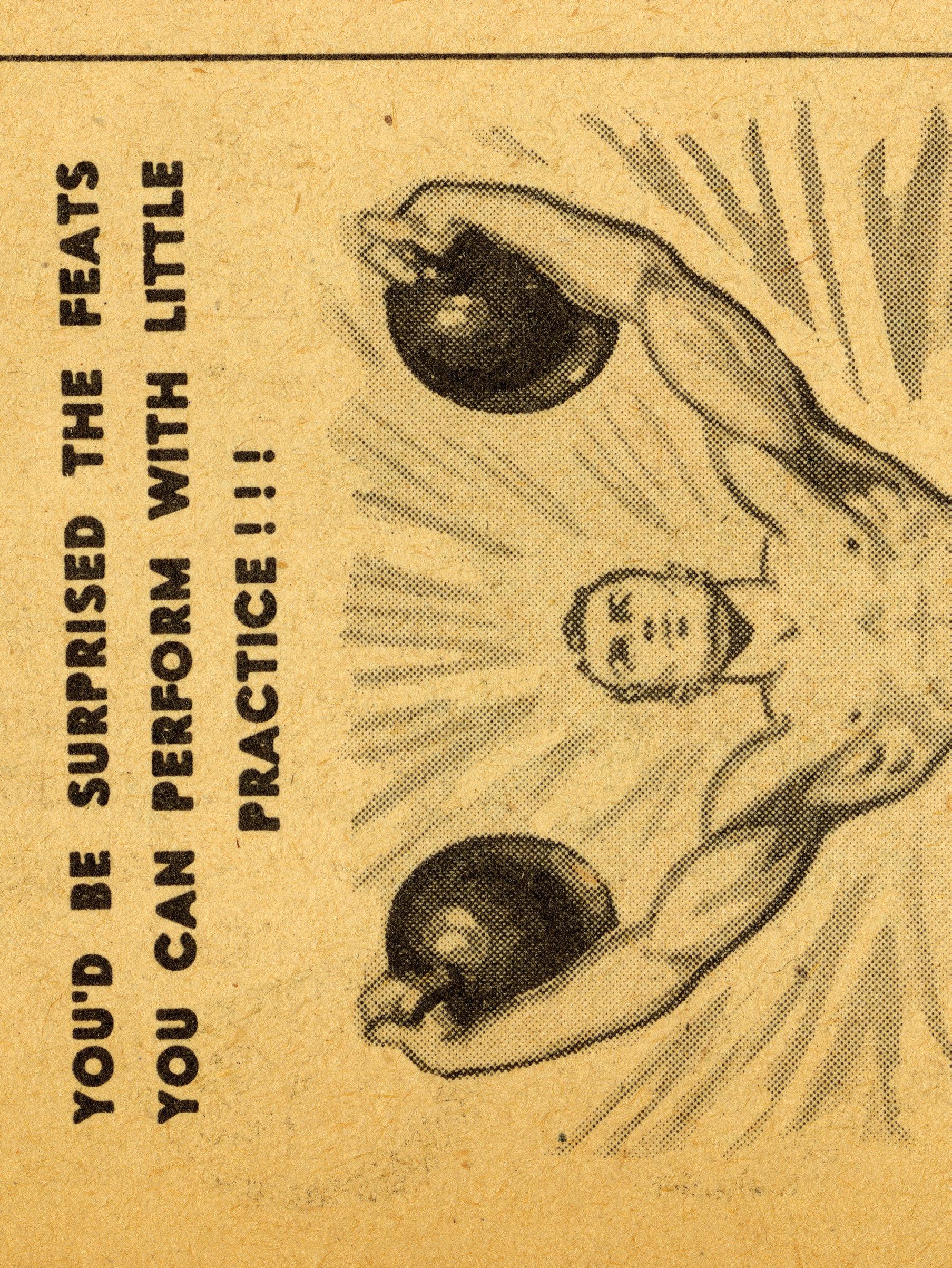
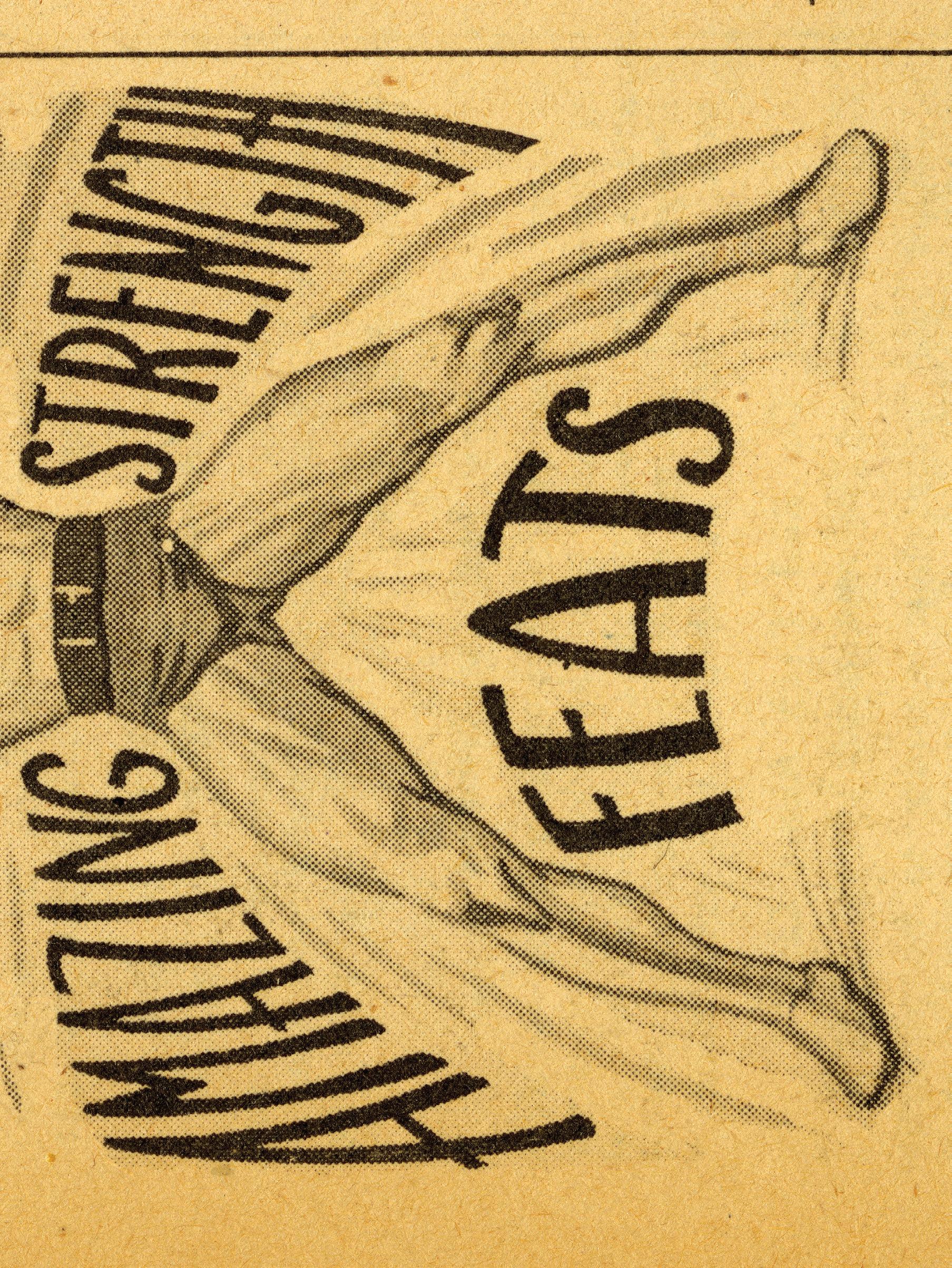
Henri Garsou, whose favorite motto was "the happy man does not wear a shirt," ran the magazine Muscles from his home in the sleepy Belgian village of Andrimont from 1946 to 1969. The magazine purported to encourage muscle building, but there was little doubt that its true target audience was a postwar subculture of men hungry for physique photos.
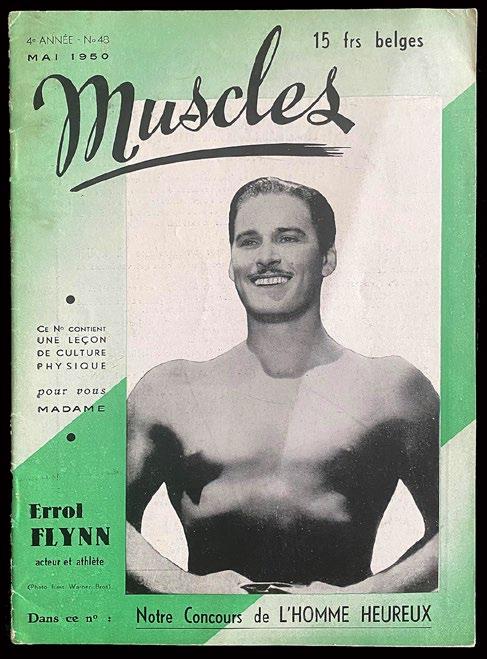
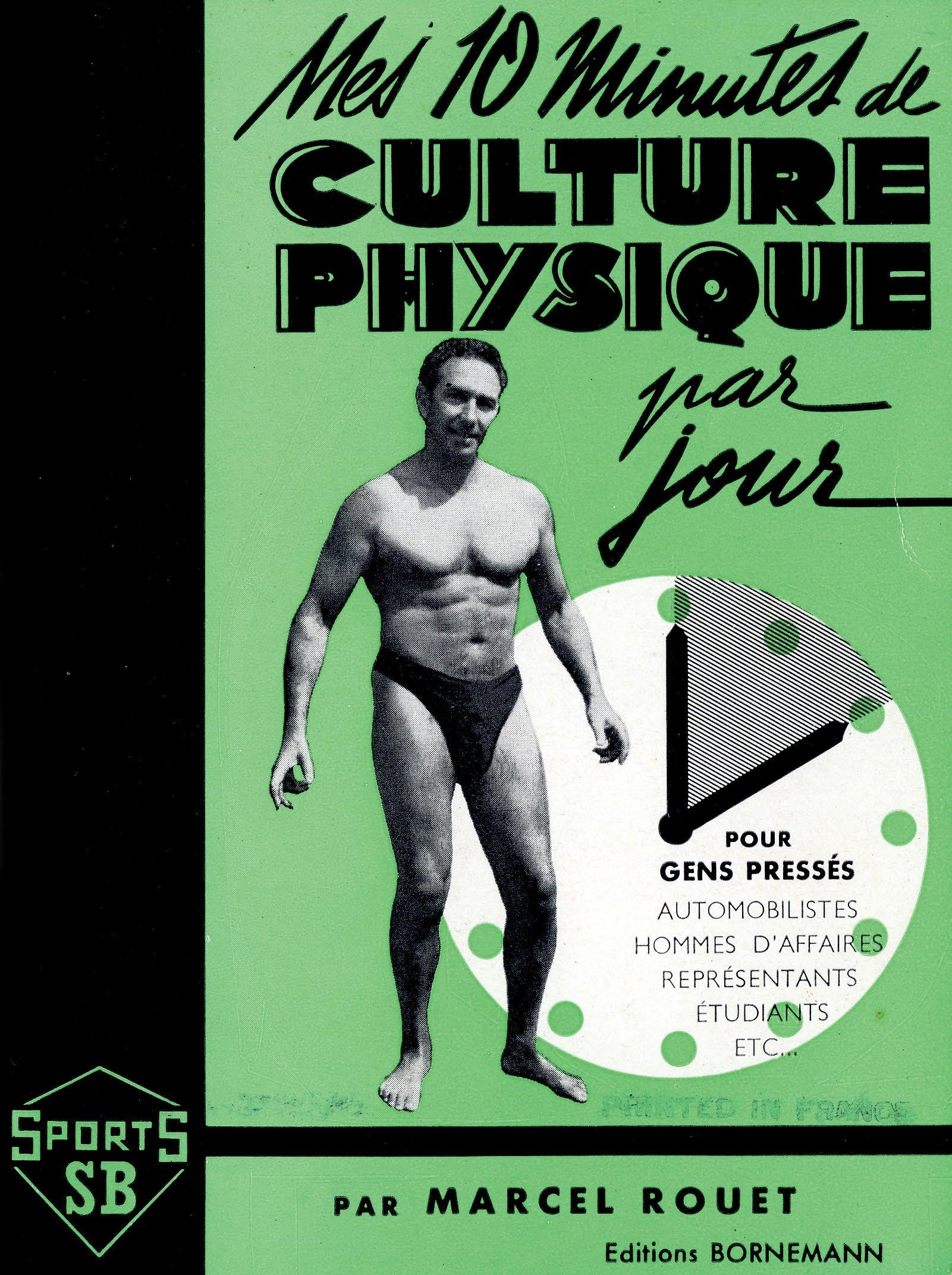
“The happy man does not wear a shirt.”
—HENRY GARSOU
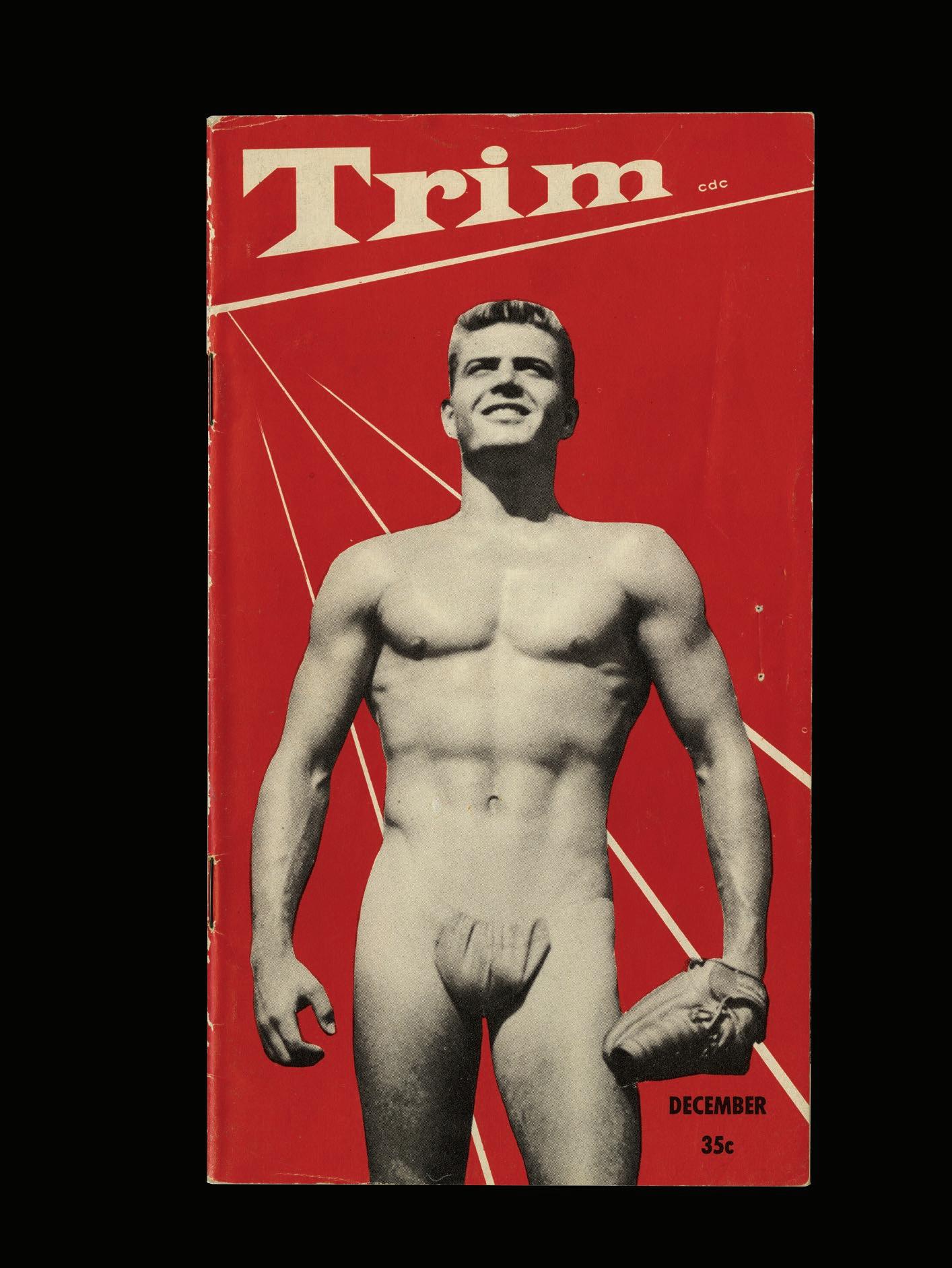
CLOCKWISE:
Your Physique, vol. 6, no. 2 (1946)
Your Physique Publishing, Co.
Montreal, Que.
Your Physique, vol. 4, no. 6 (1945)

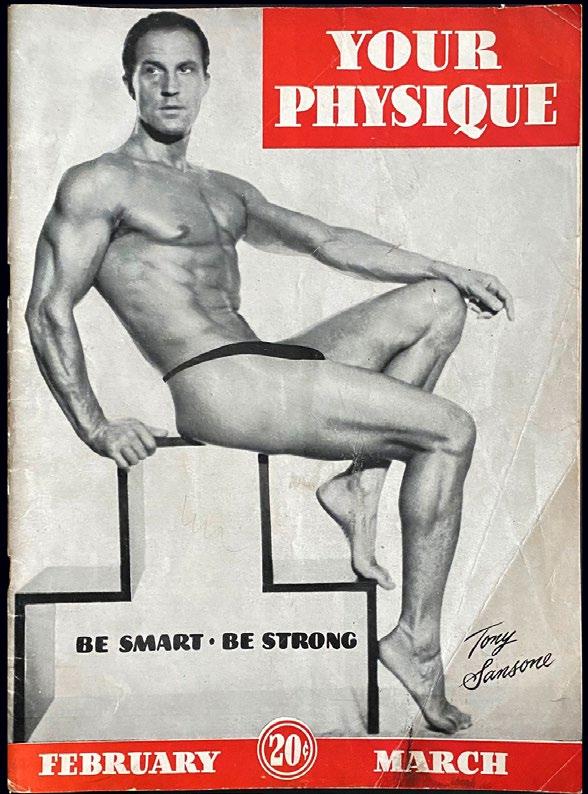

Your Physique Publishing, Co.
Montreal, Que.
Your Physique, vol. 14, no. 6 (1951)
Your Physique Publishing, Co. Montreal, Que.
Your Physique, vol. 7, no. 4 (1947)
Your Physique Publishing, Co. Montreal, Que.
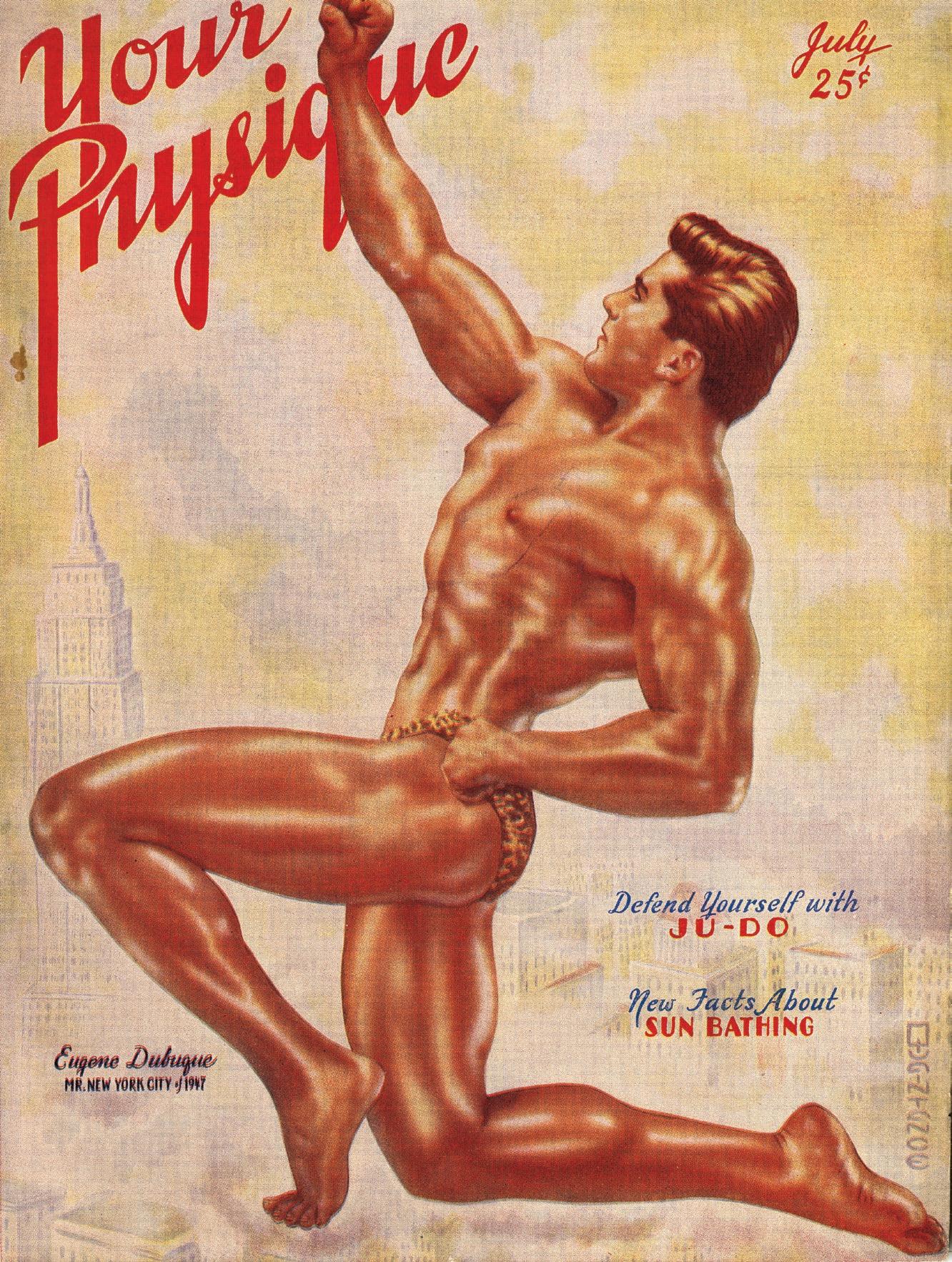
Man's World (February 1958)
Man's World Publishing Co., Ltd. Surrey, England
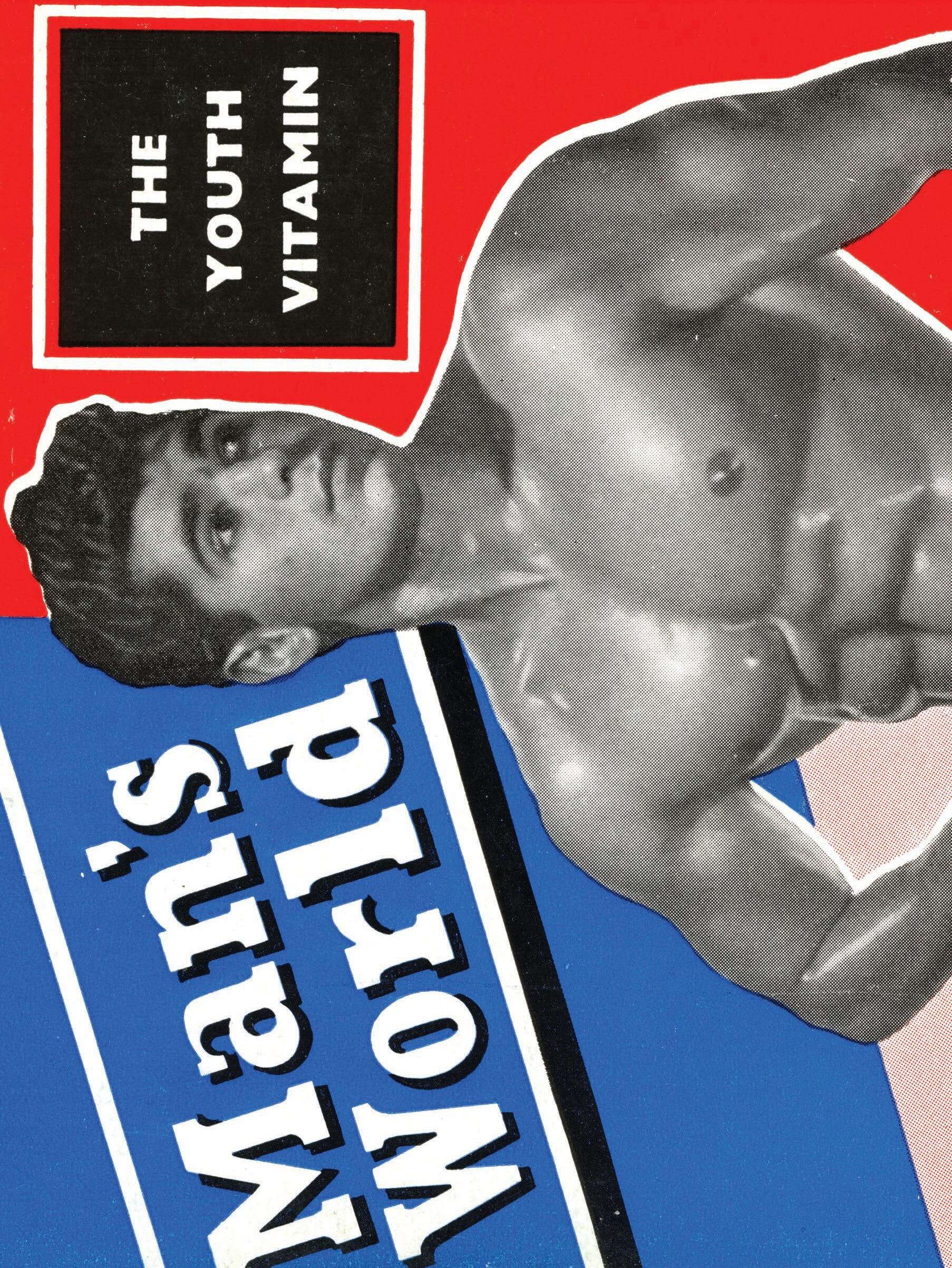
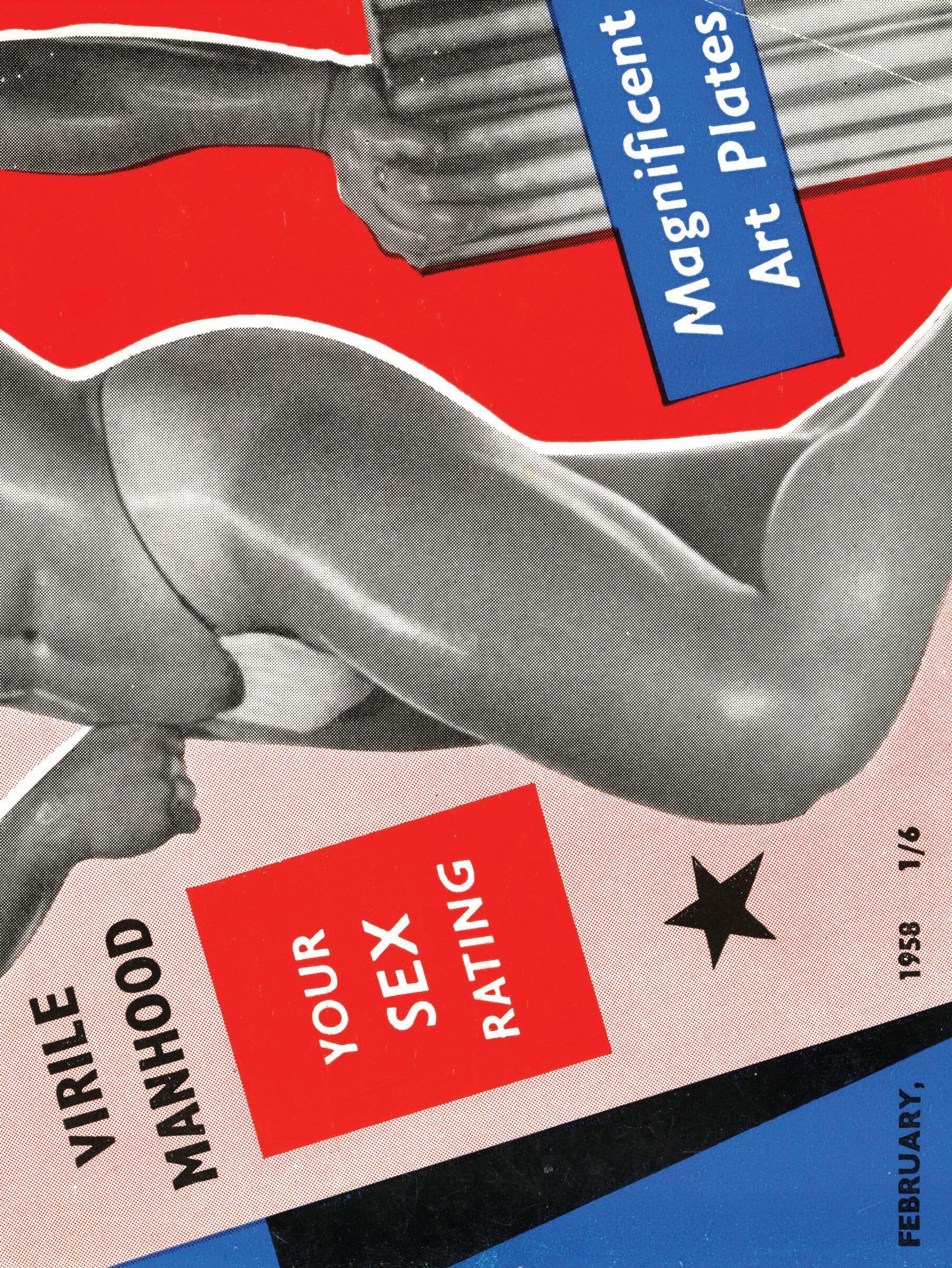
The Male Figure was a physique magazine illustrated mostly with his photographs and models, but also featured the work of other professionals and amateurs. Order forms were included, and early issues were clearly marked with the season and year of publication. Later issues omitted the dates and were identified instead by volume number.
Beefcake magazines were presented as publications dedicated to fitness, health, and bodybuilding. Their unstated primary purpose, however, was to present erotic imagery to gay and bisexual men and straight women. These magazines skirted mid-twentieth century cultural taboos against homosexuality and censorship laws, which prohibited depictions of full nudity.
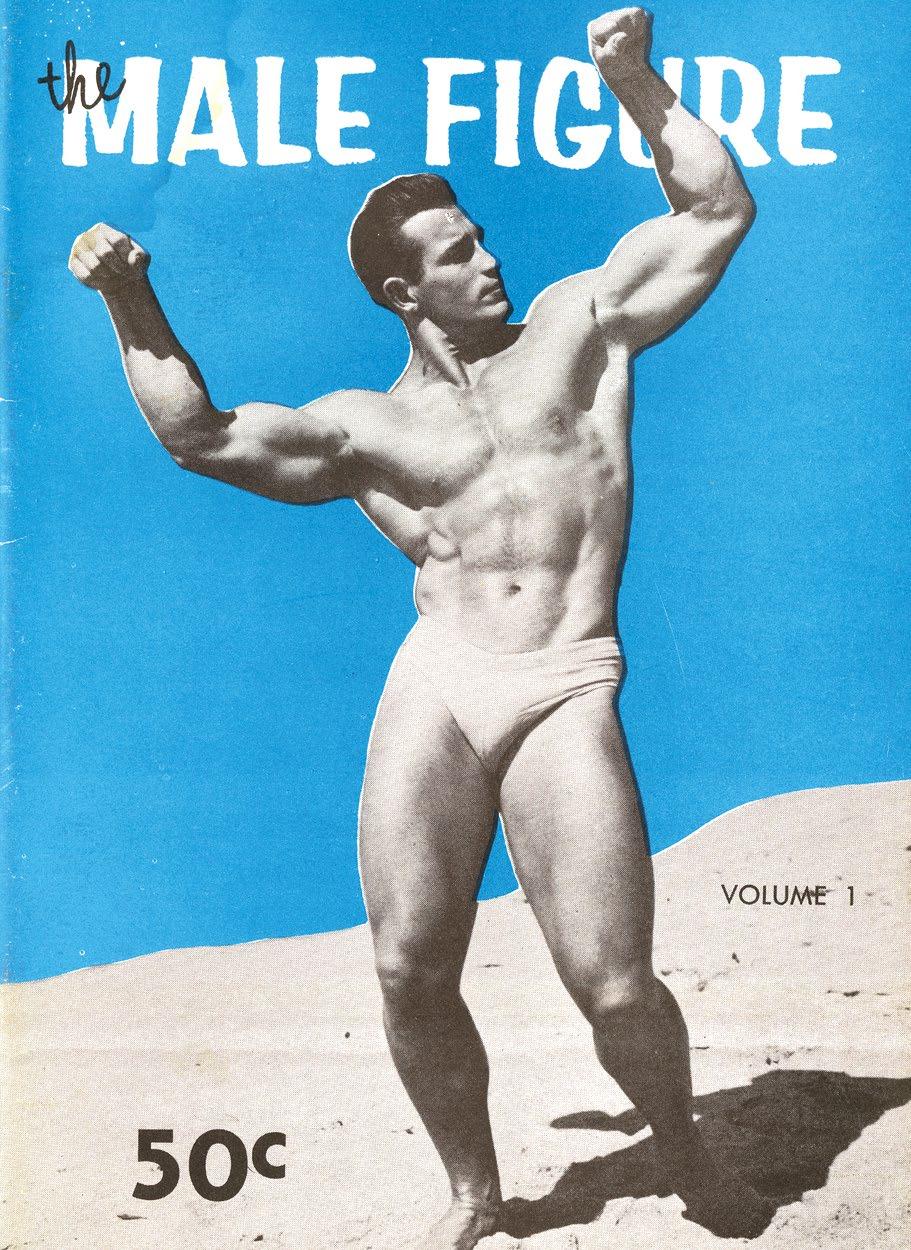
The Male Figure, vol. 2 (1956)
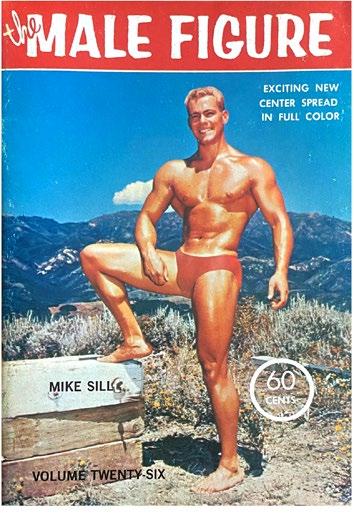
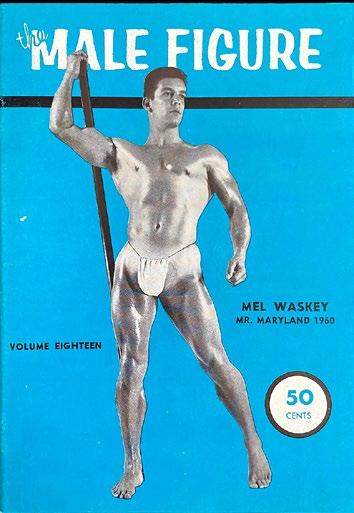
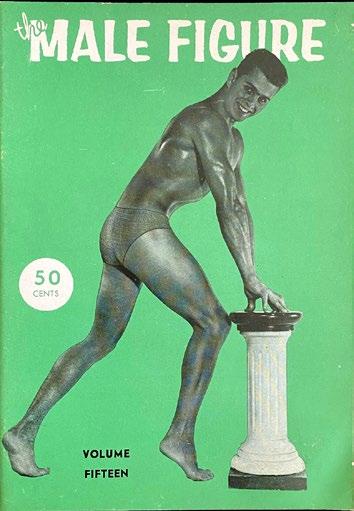
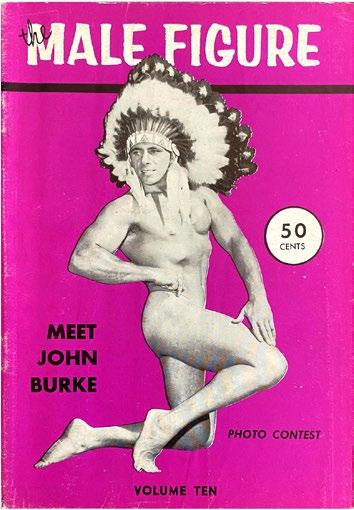
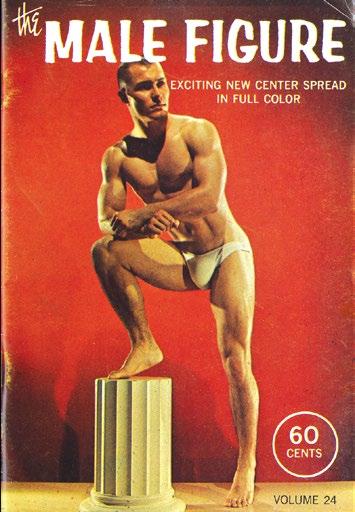
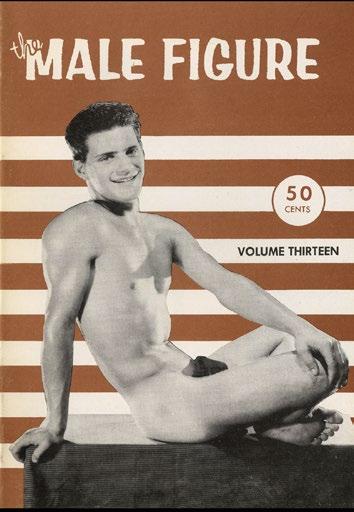
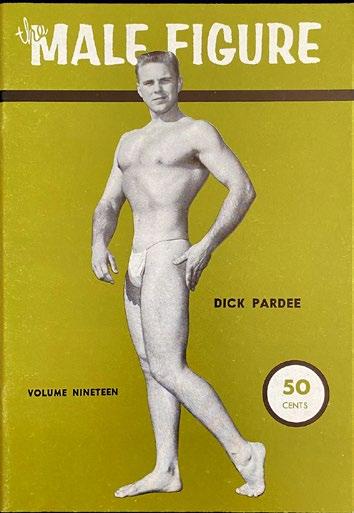
Bruce of Los Angeles Los Alamitos, CA
The Male Figure, vol. 9 (1957)
Bruce of Los Angeles Los Alamitos, CA
The Male Figure, vol. 10 (1957)
Bruce of Los Angeles Los Alamitos, CA
The Male Figure, vol. 12 (1959)
Bruce of Los Angeles Los Alamitos, CA
The Male Figure, vol. 13 (1959)
Bruce of Los Angeles Los Alamitos, CA
The Male Figure, vol. 15 (1960)
Bruce of Los Angeles Los Alamitos, CA
The Male Figure, vol. 16 (1959)
Bruce of Los Angeles Los Alamitos, CA
The Male Figure, vol. 17 (1960)
Bruce of Los Angeles Los Alamitos, CA
The Male Figure, vol. 18 (1960)
Bruce of Los Angeles Los Alamitos, CA
The Male Figure vol. 19 (1961)
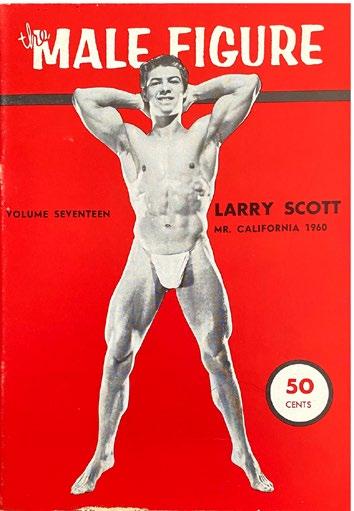
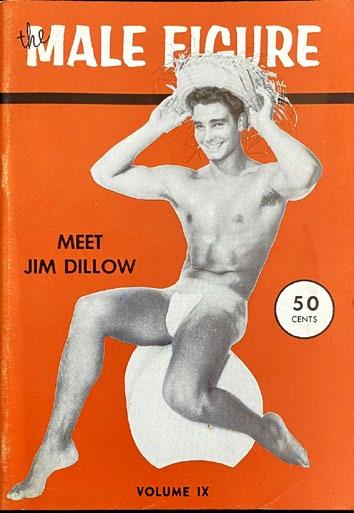
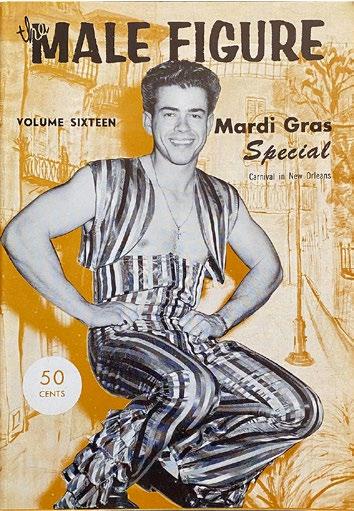
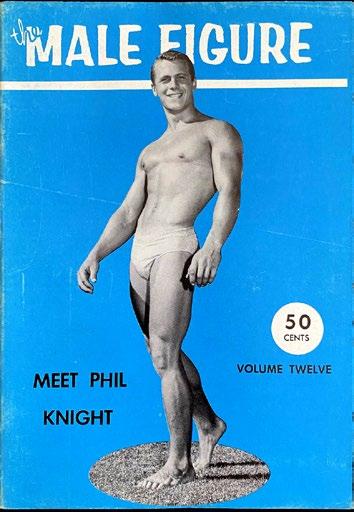
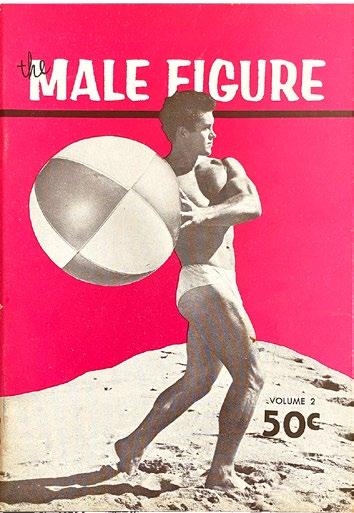
Bruce of Los Angeles Los Alamitos, CA
The Male Figure, vol. 124 (1962)
Bruce of Los Angeles Los Alamitos, CA
The Male Figure, vol. 26 (1962)
Bruce of Los Angeles Los Alamitos, CA
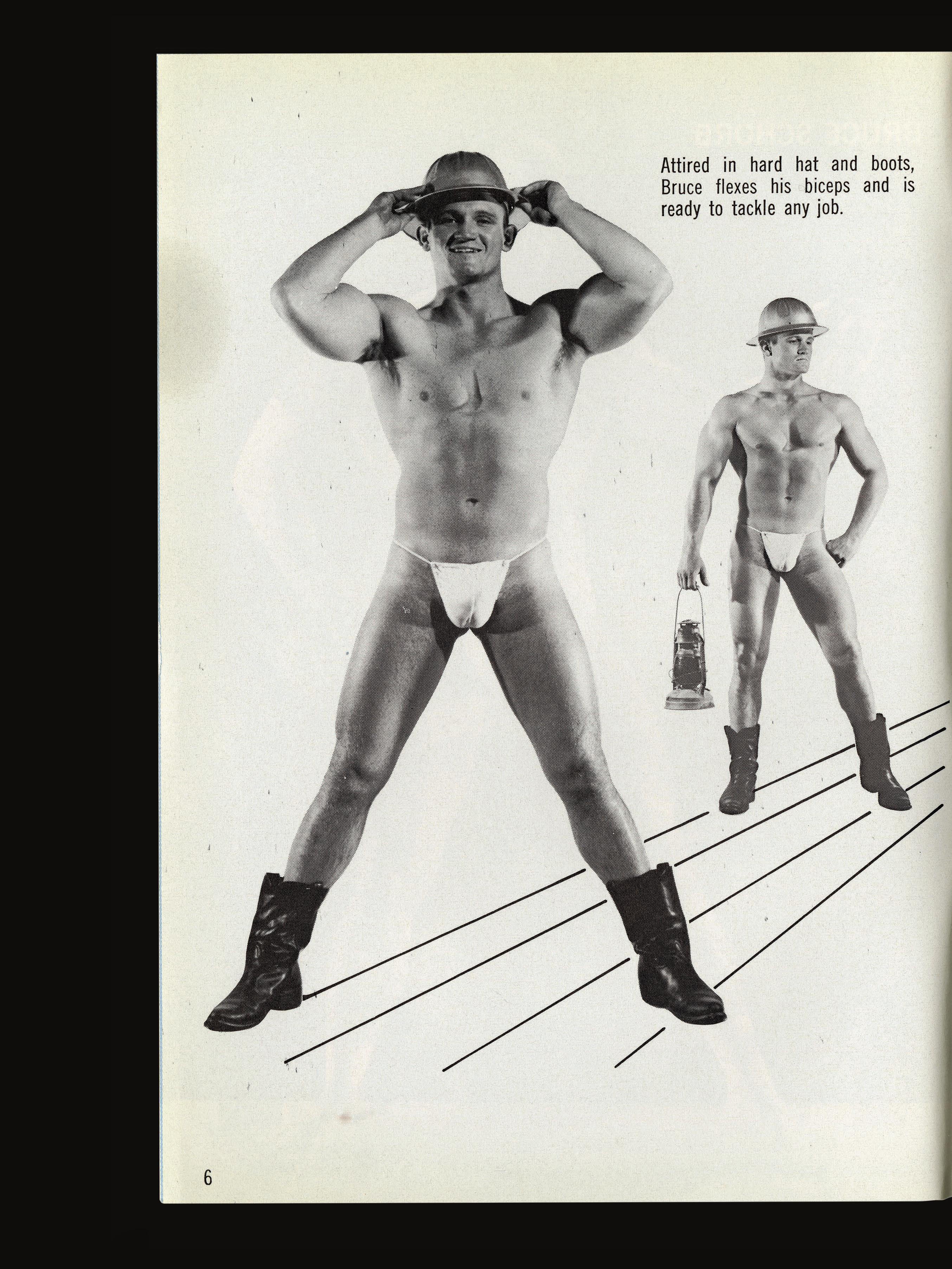
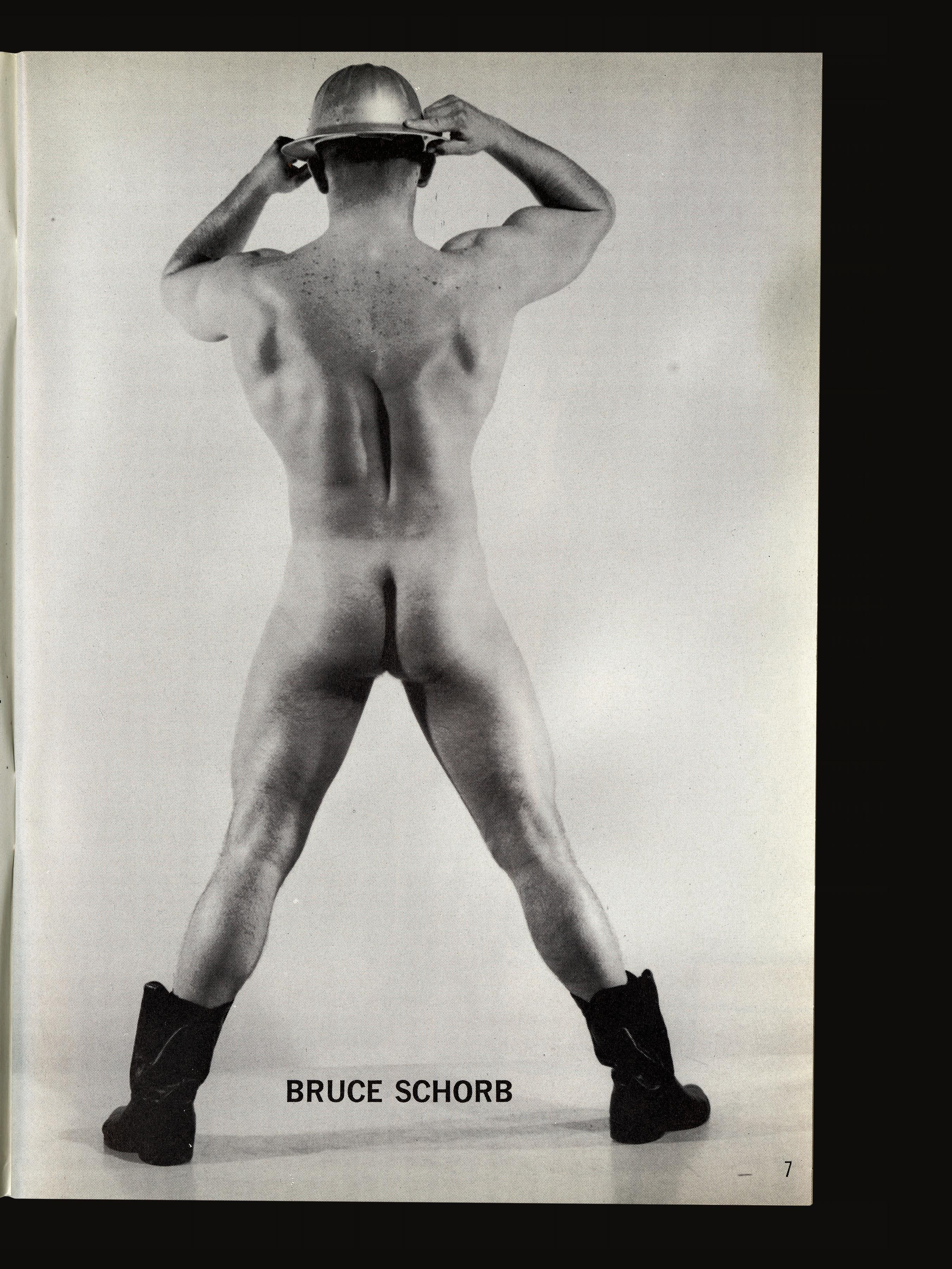
The Male Figure, vol. 30 (1964)
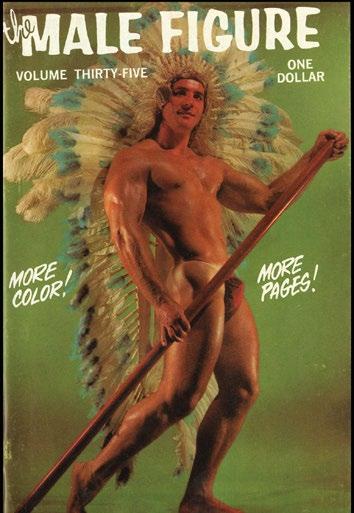
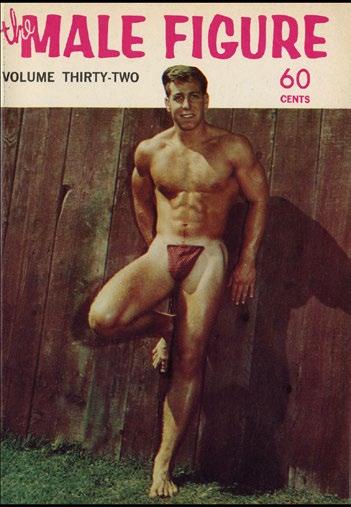
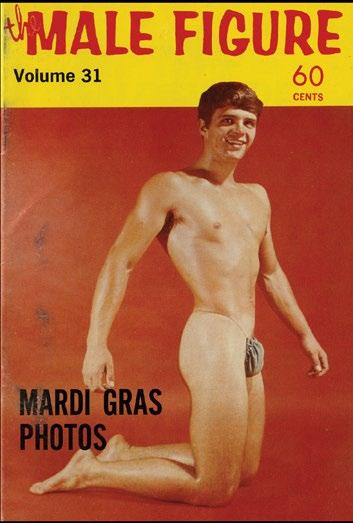
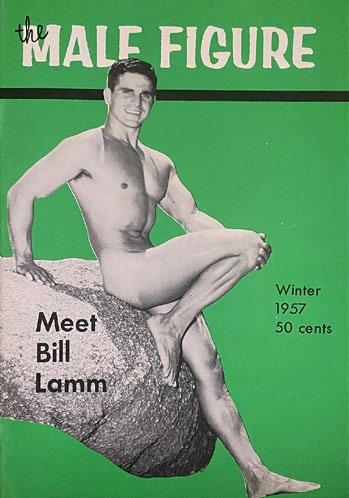
Bruce of Los Angeles
Los Alamitos, CA
The Male Figure, vol. 31 (1964)
Bruce of Los Angeles
Los Alamitos, CA
The Male Figure, vol. 33 (1965)
Bruce of Los Angeles Los Alamitos, CA
The Male Figure, vol. 134 (1965)
Bruce of Los Angeles
Los Alamitos, CA
The Male Figure, vol. 36 (1966)
Bruce of Los Angeles Los Alamitos, CA
The Male Figure, vol. 8 (1958)
Bruce of Los Angeles
Los Alamitos, CA
The Male Figure, vol. 3 (1956)
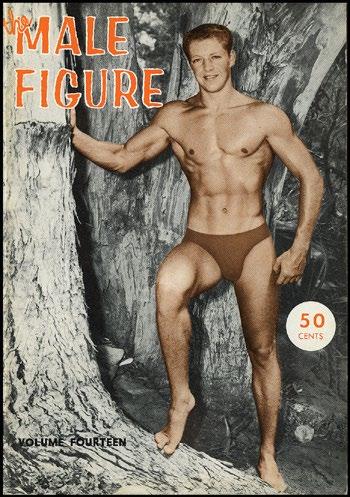
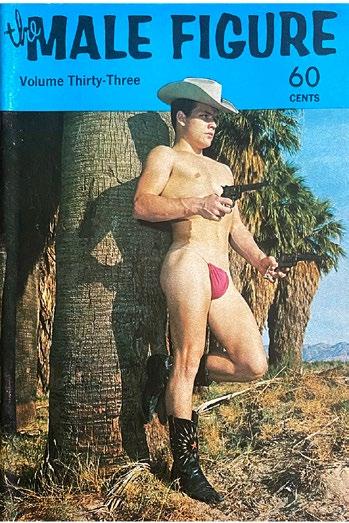

Bruce of Los Angeles
Los Alamitos, CA
The Male Figure, vol. 35 (1966)
Bruce of Los Angeles Los Alamitos, CA
The Male Figure, vol. 32 (1964)
Bruce of Los Angeles Los Alamitos, CA
The Male Figure, vol. 7 (1957)
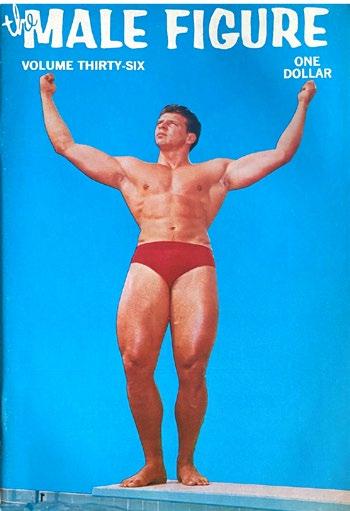
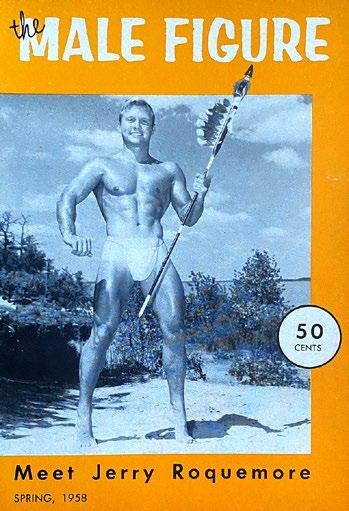
Bruce of Los Angeles
Los Alamitos, CA
The Male Figure, vol. 14 (1959)
Bruce of Los Angeles Los Alamitos, CA
The Male Figure, vol. 25 (1962)

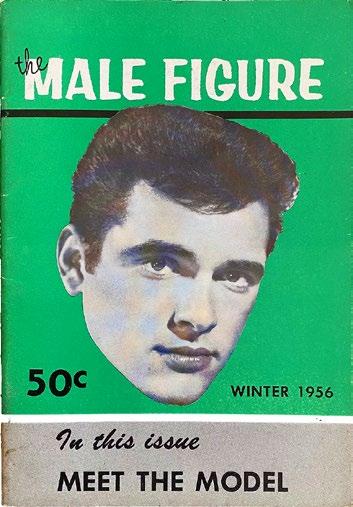
Bruce of Los Angeles Los Alamitos, CA

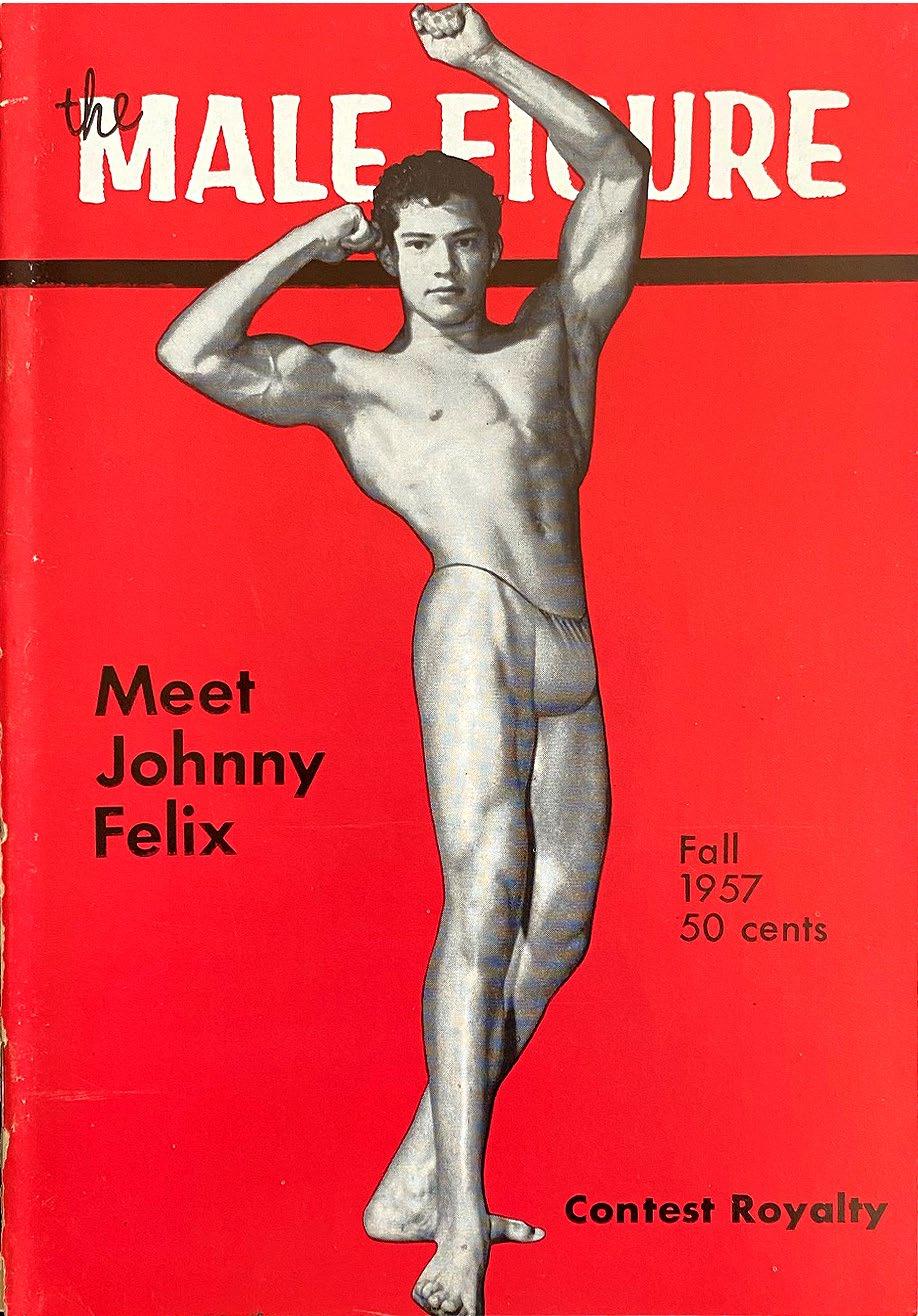
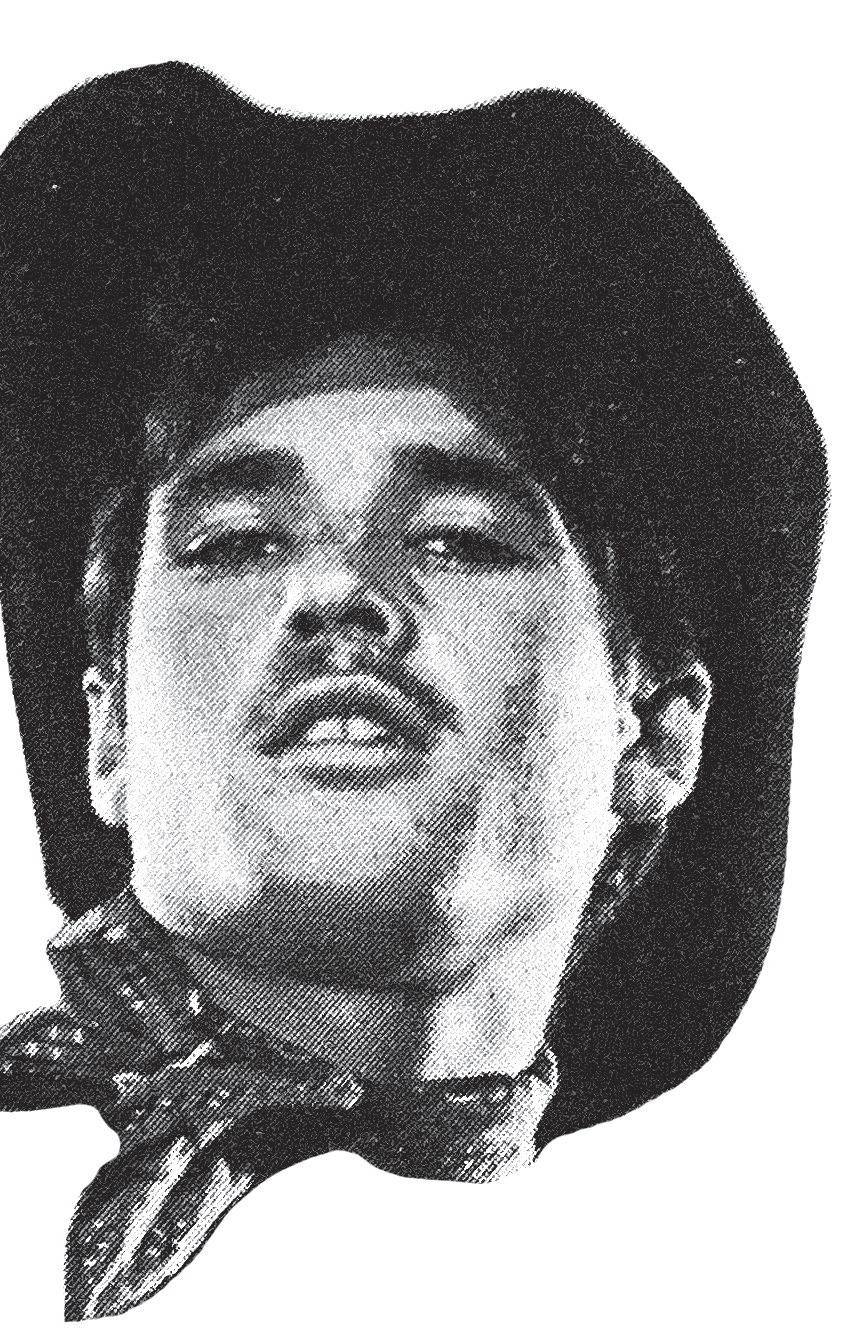
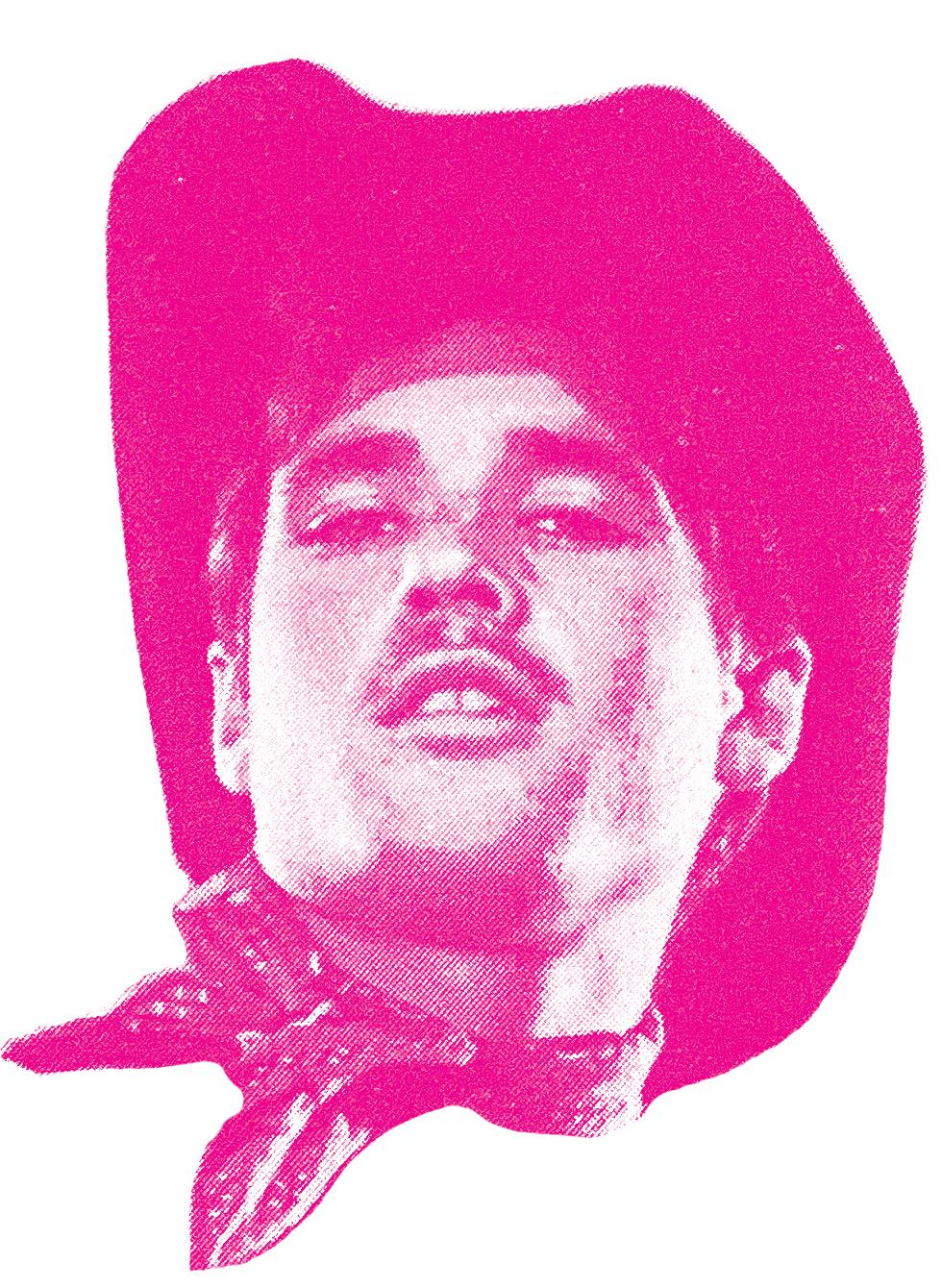
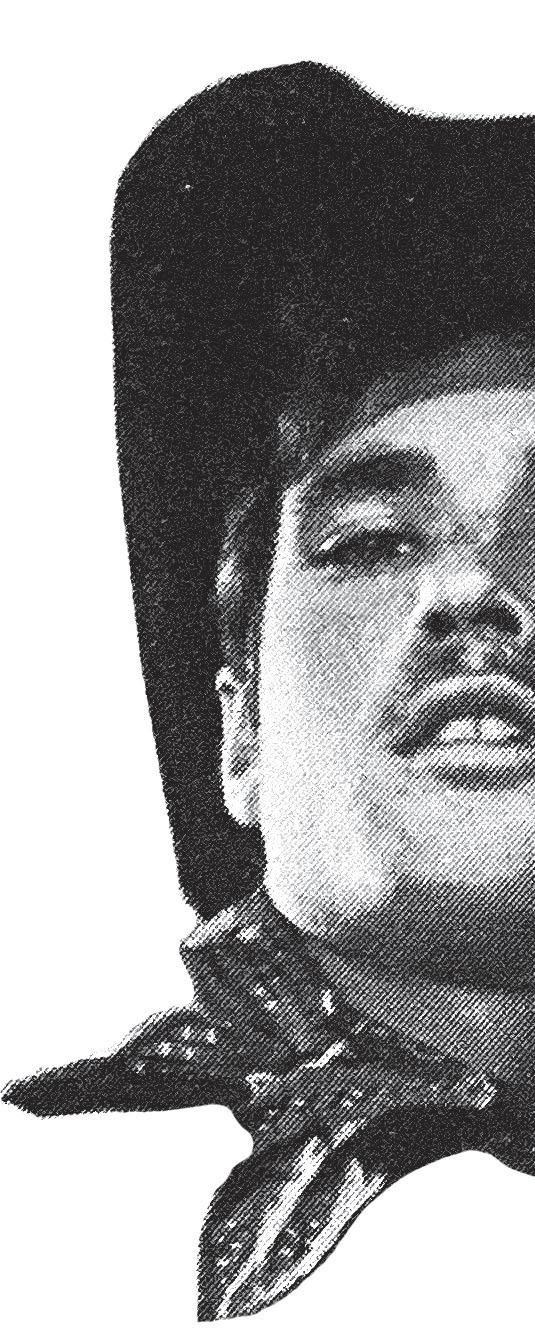
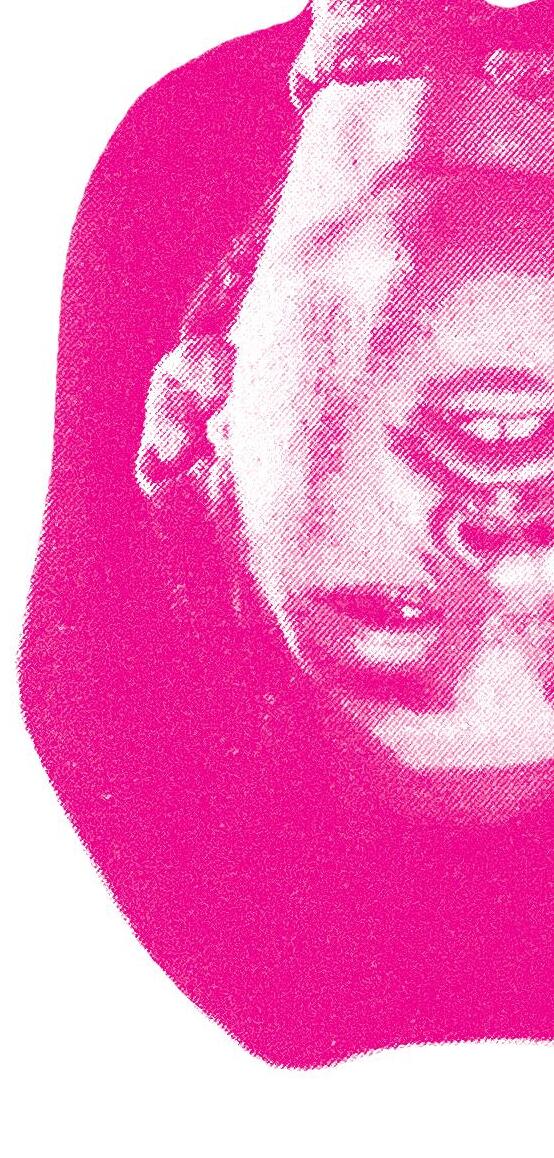
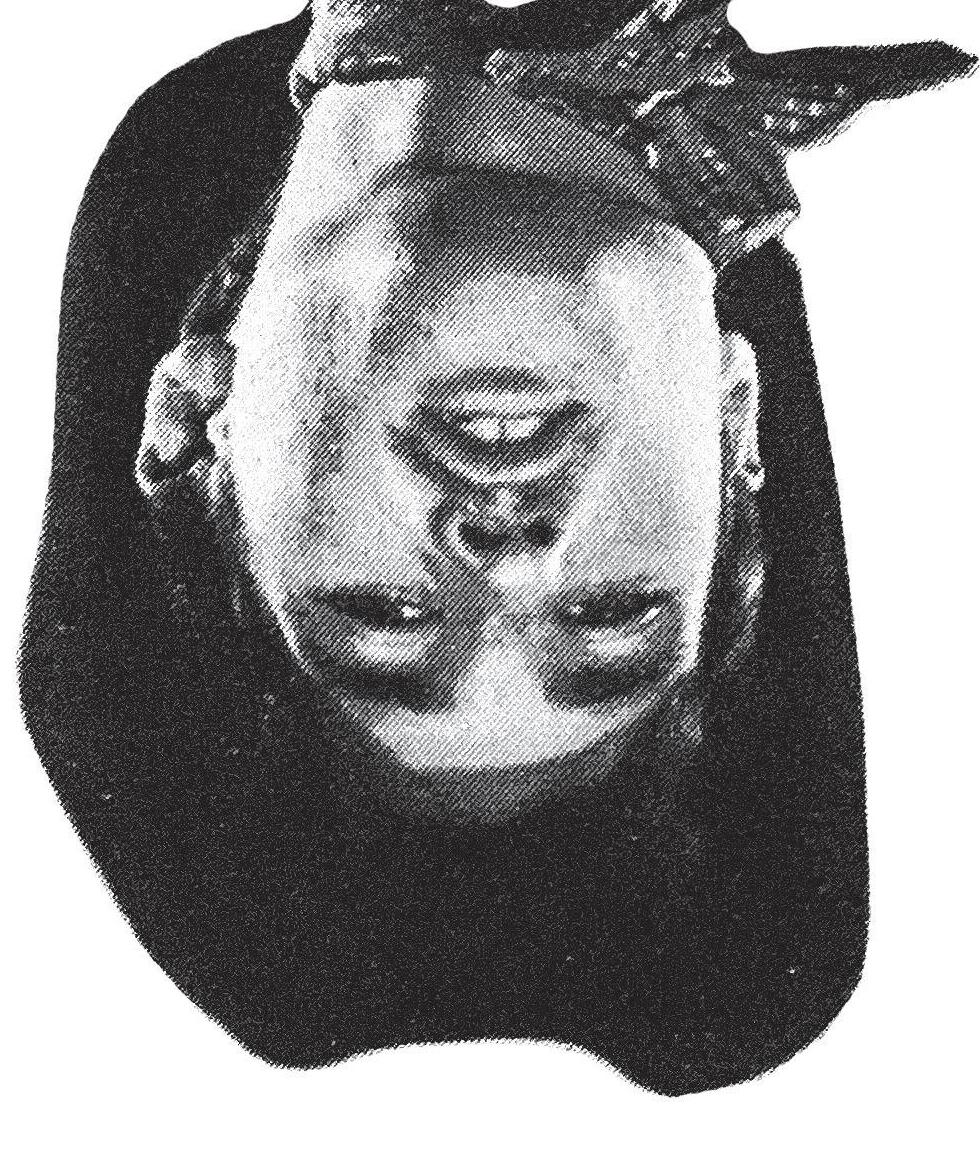
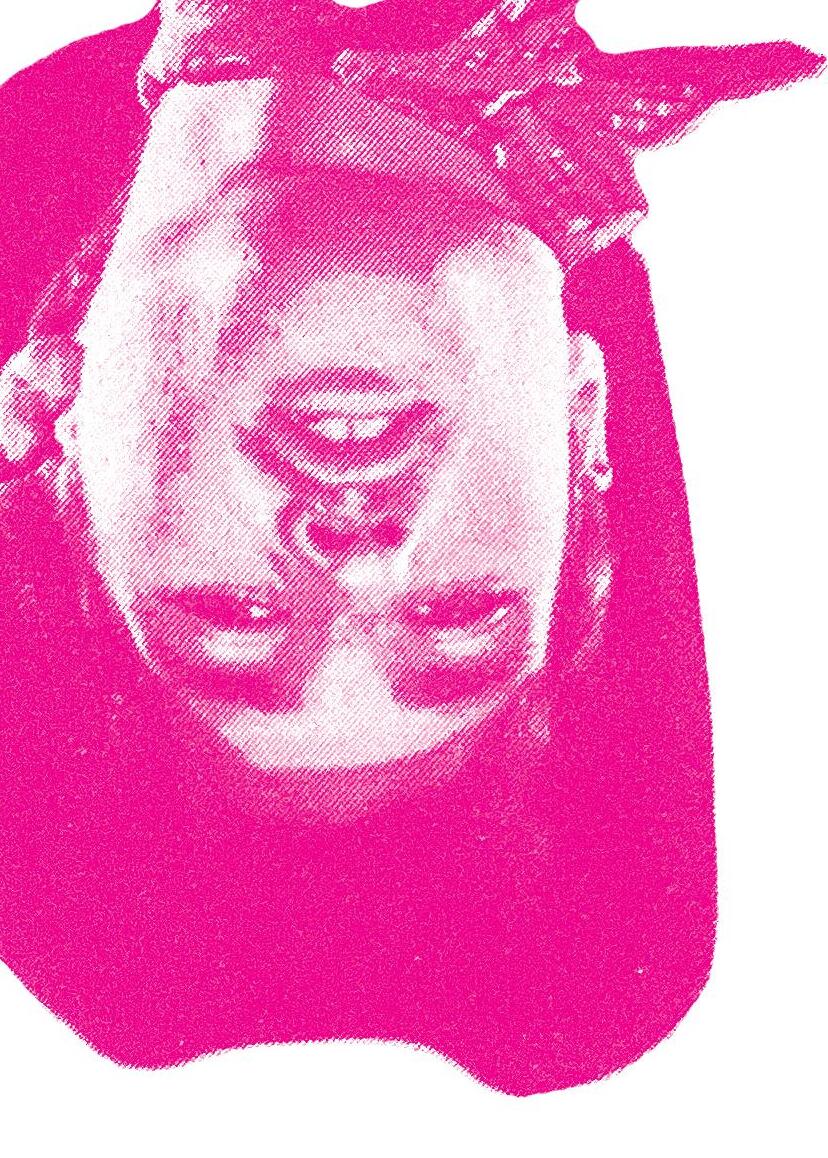
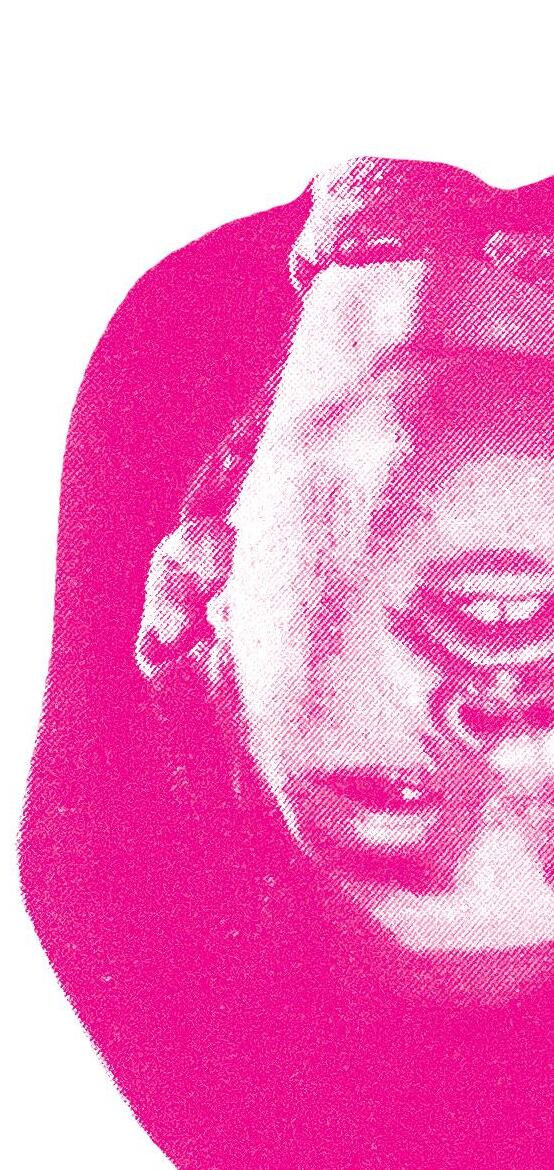
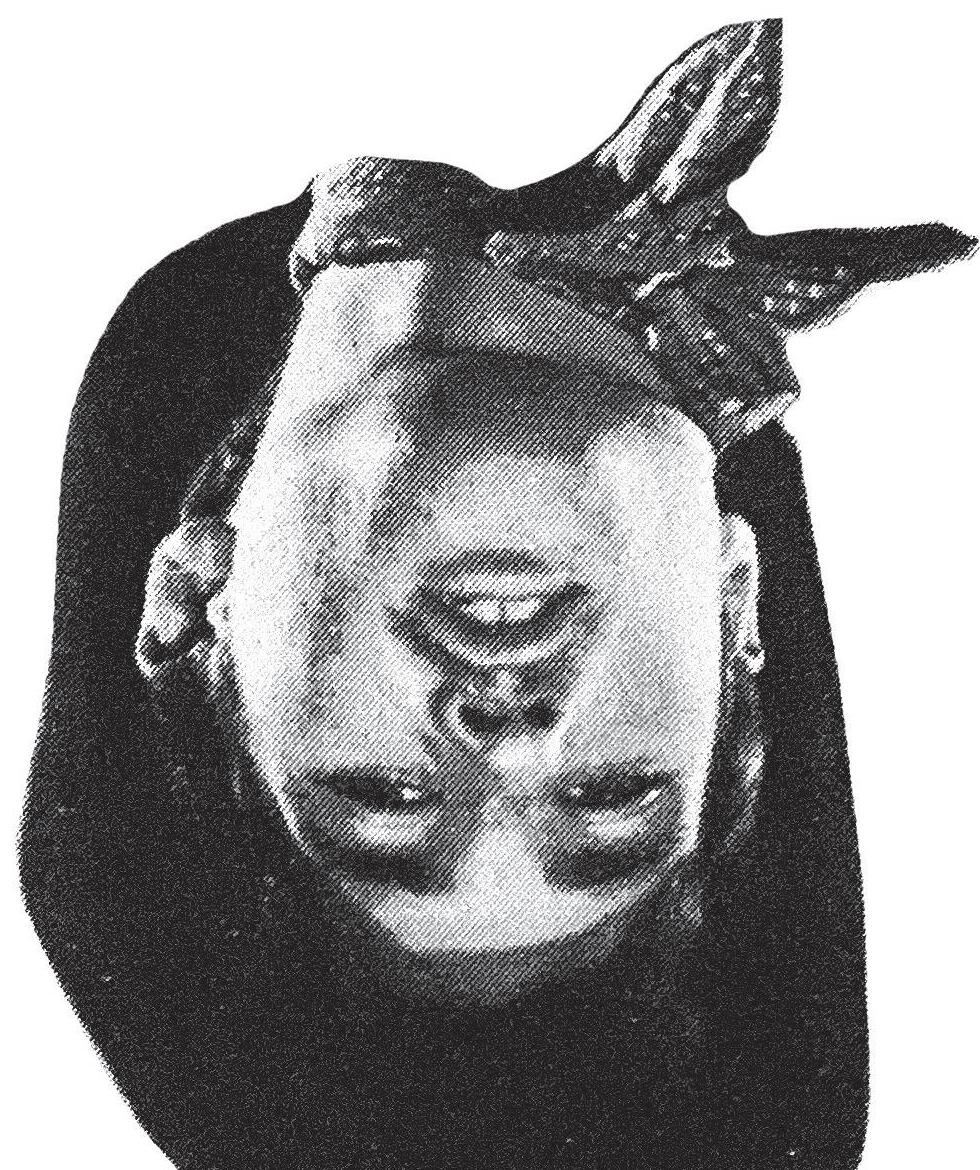
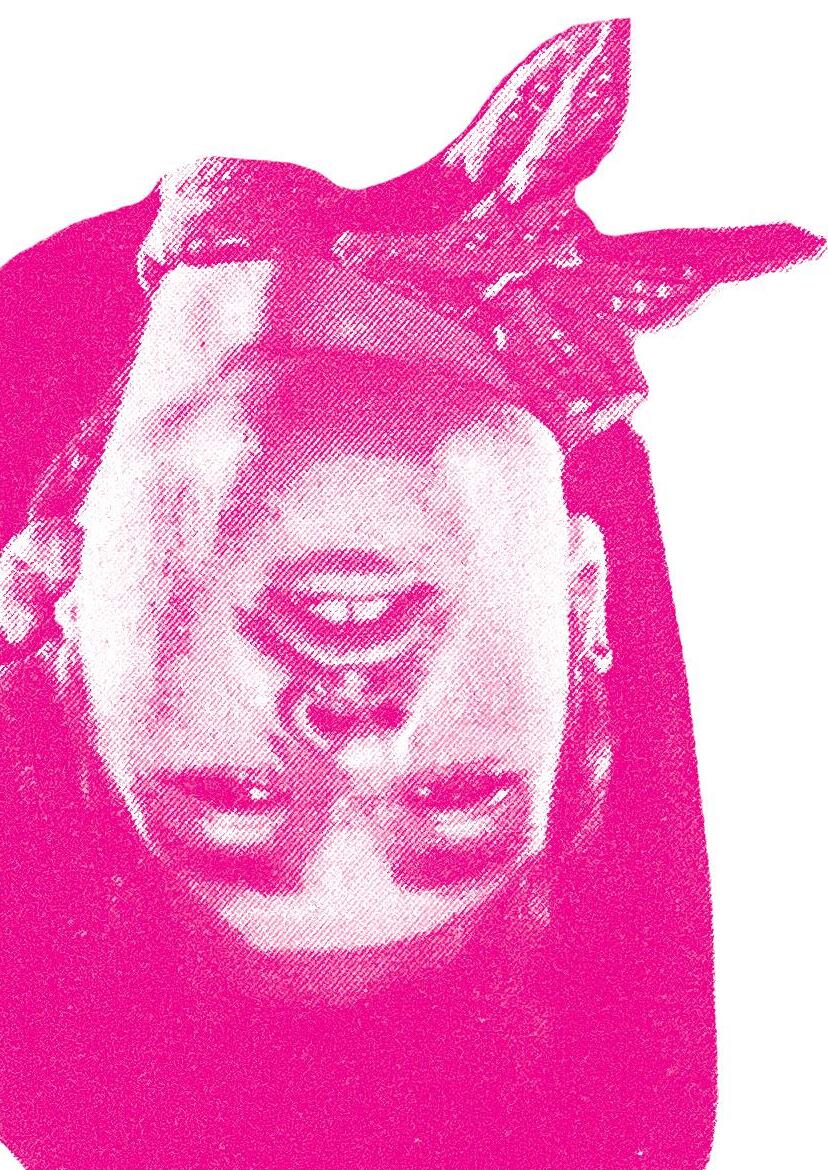


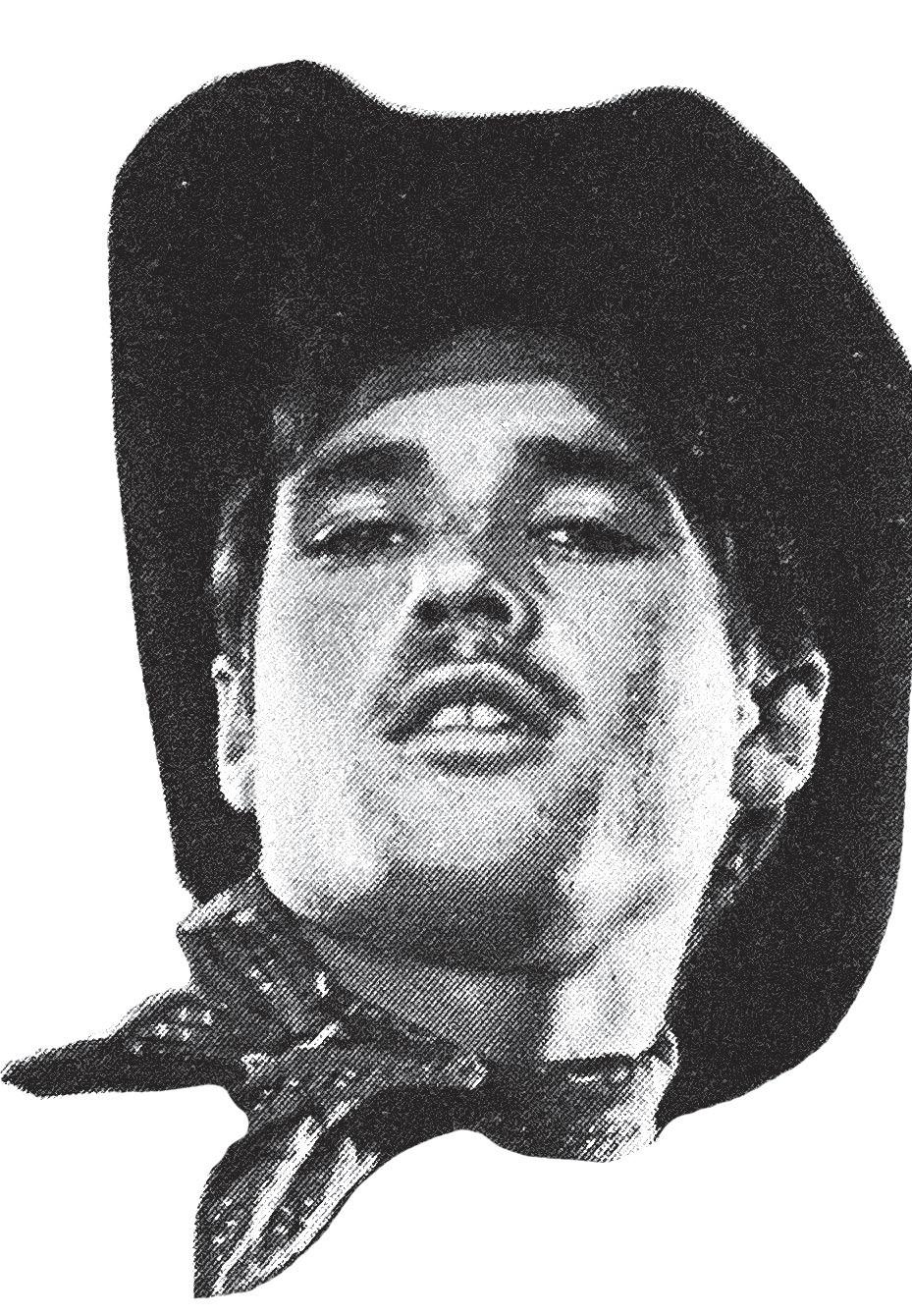
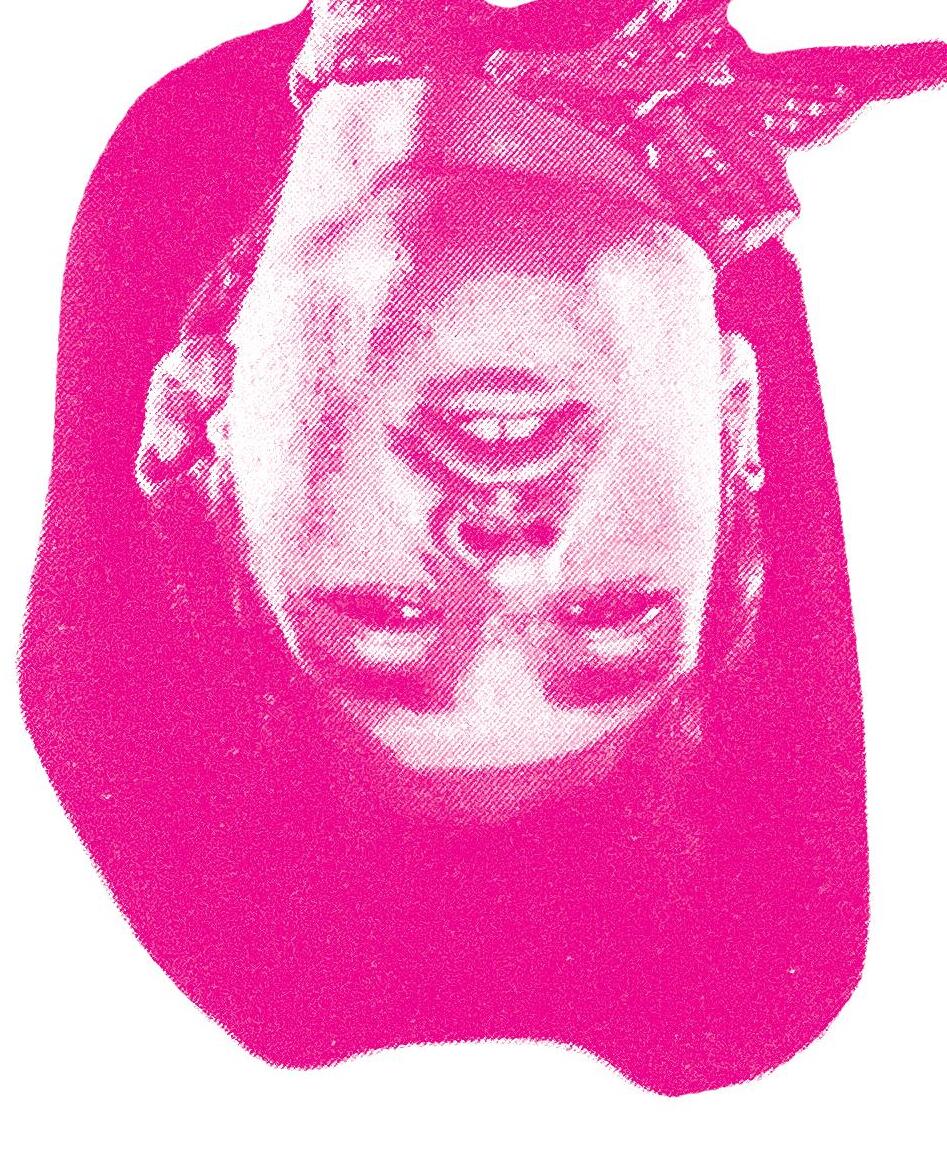

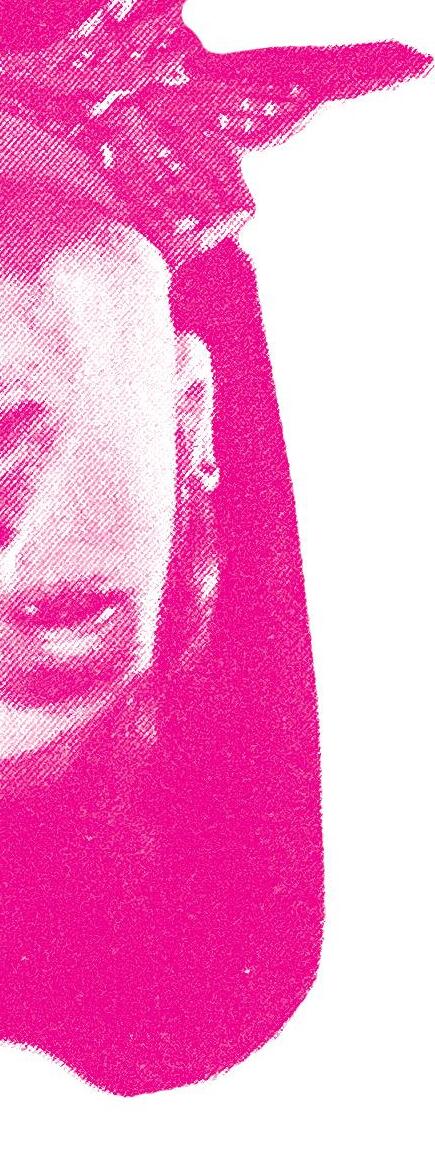
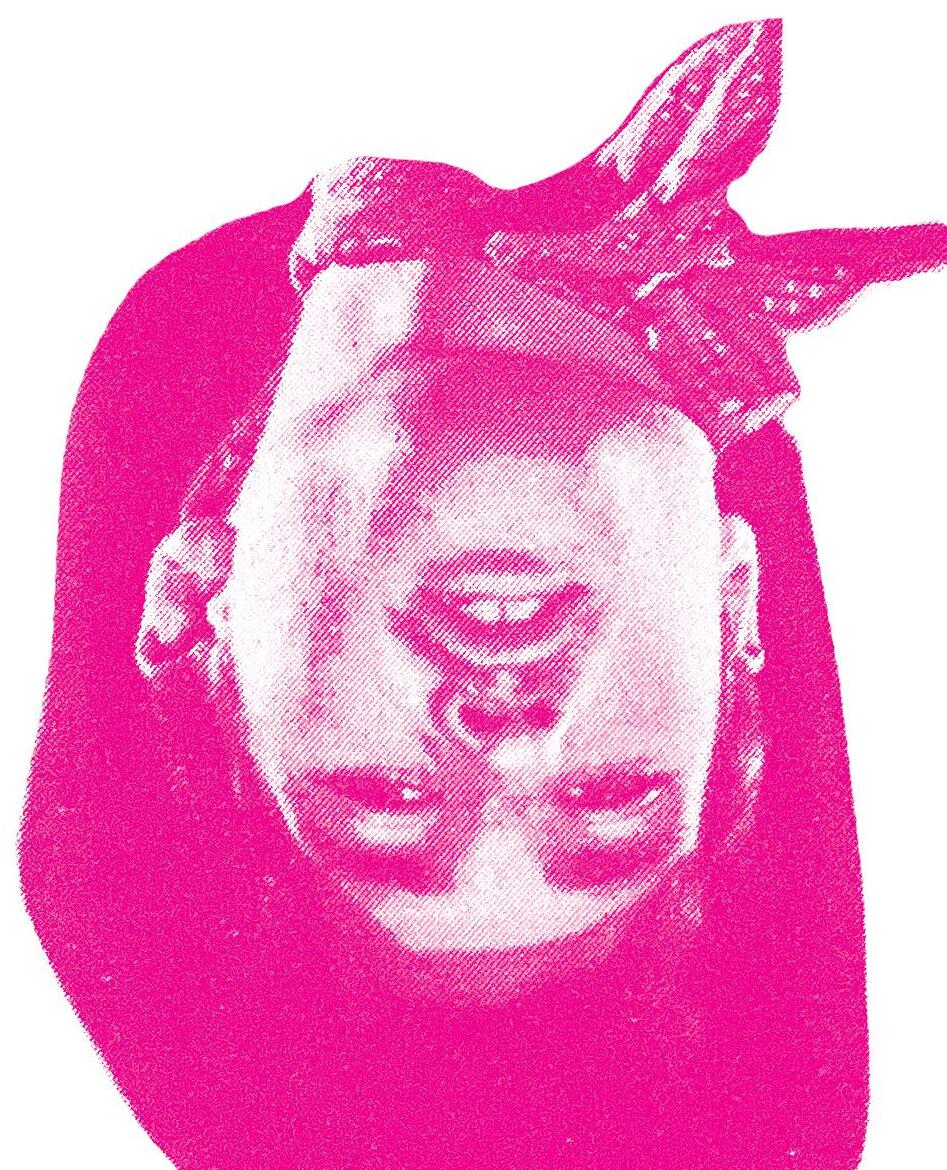

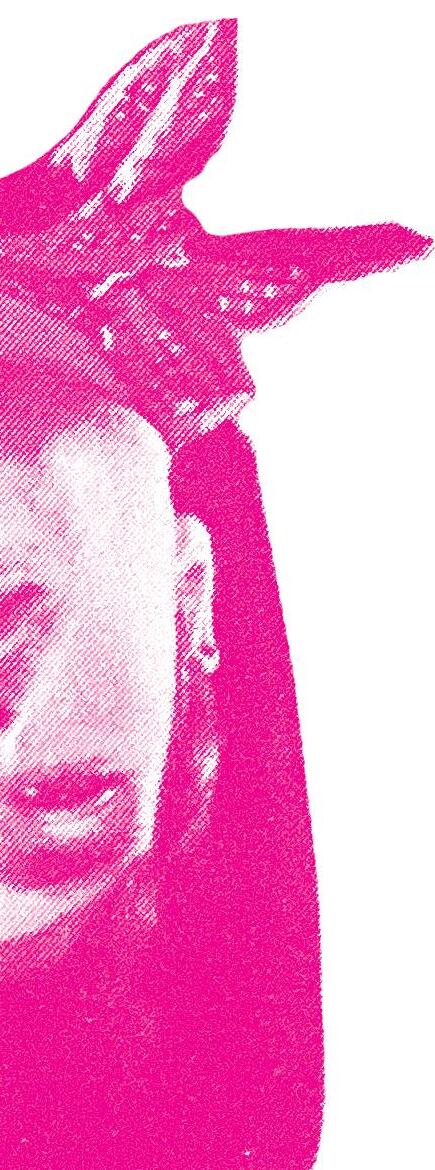
Long before the Sears catalog—(gay guys will know exactly what I mean)—and countless billboards and magazine spreads featuring sumptuous spread-eagle poses from Calvin Klein models Mark Wahlberg and Antonio Sabàto Jr., the image of the male body as pin-up was limited mainly to ads featuring the Italian-American bodybuilder Charles Atlas. Clad only in a pair of revealingly tight briefs, the bare-chested Atlas depicted in these ads promised to turn skinny lads into swaggering muscle men. But just as beach culture was making Americans across the country hot under the collar, the homoerotic culture of the male pin-up was also finding its legs. Years before homosexual men largely adopted the term "gay" as a descriptor, admirers of the pumped-up male body were discreetly snapping up copies of Physique Pictorial—the L.A. beefcake magazine founded by Bob Mizer, who served as the publication’s publisher, editor, and principal photographer.
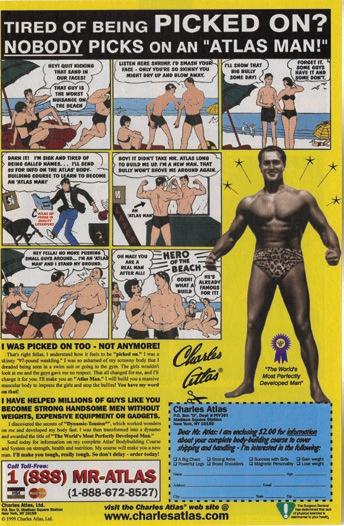
Mizer wasn’t working in a vacuum, however. Several photographers who worked under pseudonyms tied to their locations—Bruce of Los Angeles, Douglas of Detroit, and Lon of New York—were also blazing trails in photographing the male nude and, alongside Mizer, proving instrumental in establishing the field of physique photography. The advent of physique culture and muscle magazines, from the 1950s through the ‘70s, allowed these photographers to build a vast mail-order enterprise that mainly catered to a gay audience. Soon, the catalogs evolved into digest-sized magazines—complete with editorials, letter columns, and feature articles alongside advertisements, illustrations, and photo series that amplified muscular beauty. It was in this format that the physique magazines reached their widest circulation. They were campy, shameless—and utterly delicious.
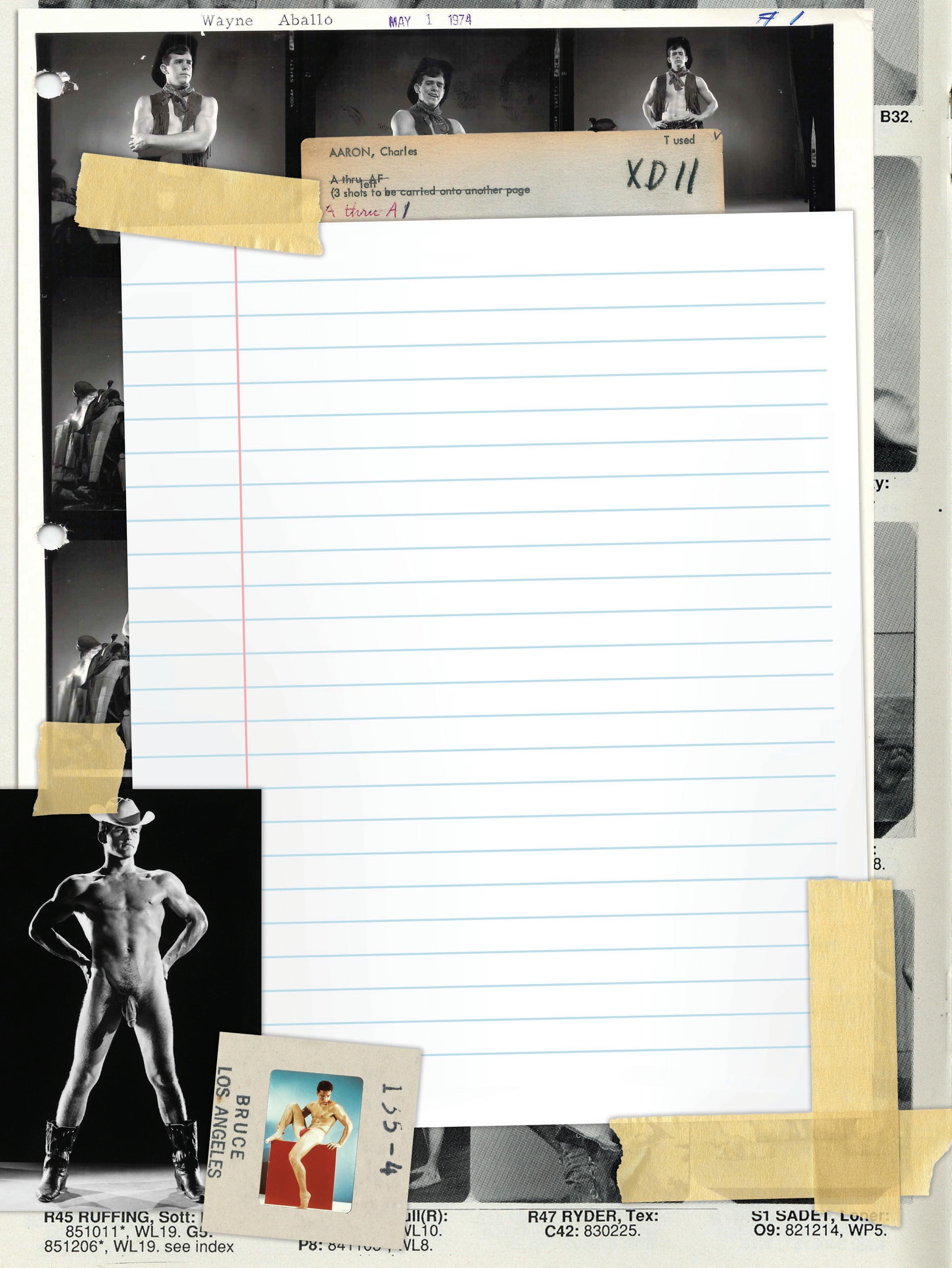 ABOVE: Charles Atlas is a trademark owned by Charles Atlas, Ltd.
ABOVE: Charles Atlas is a trademark owned by Charles Atlas, Ltd.
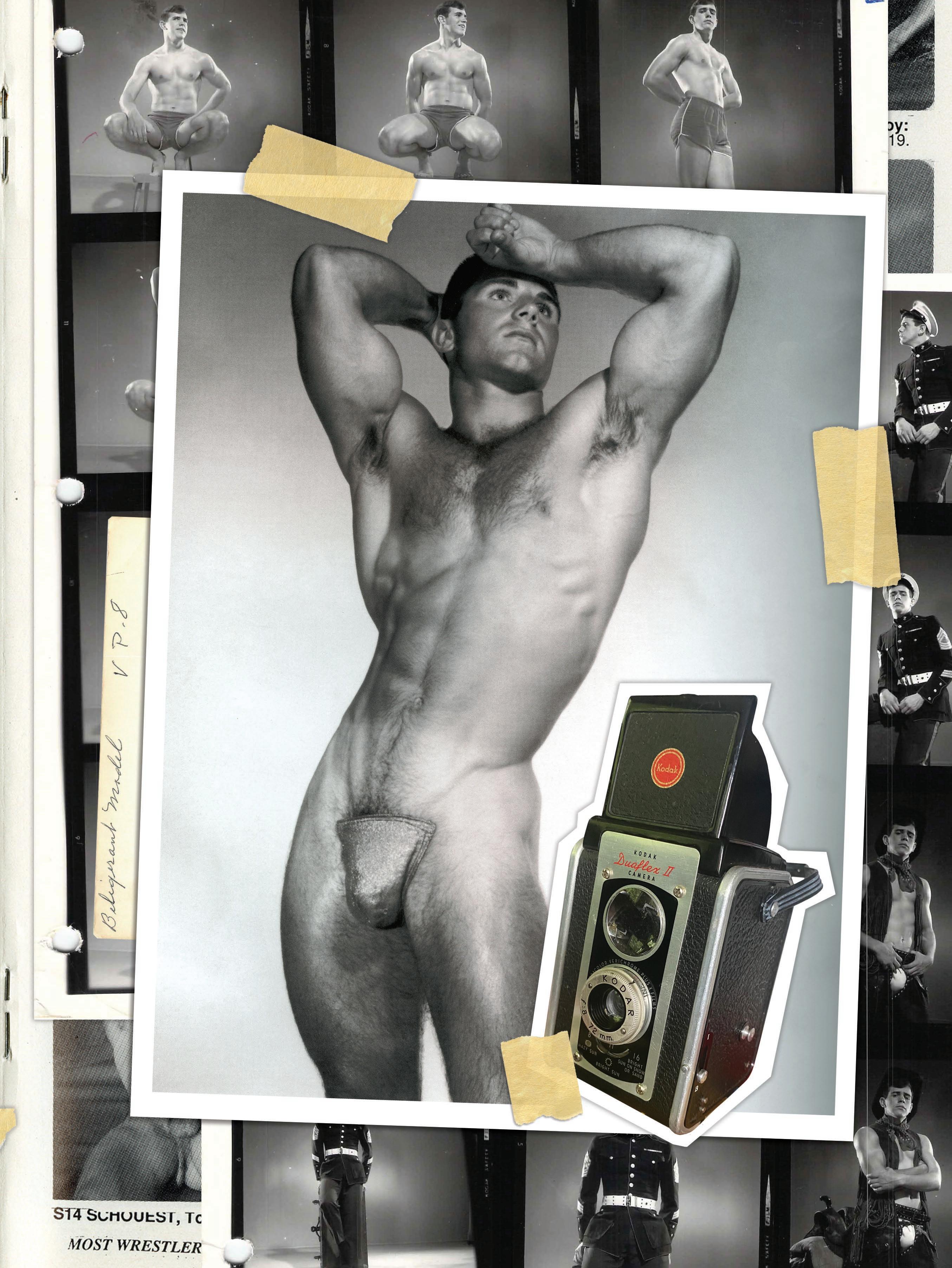 Rick Heffner Photographers, 2022 Digital collage © Rick Heffner
Source (background images): Bob Mizer Foundation Archives
Rick Heffner Photographers, 2022 Digital collage © Rick Heffner
Source (background images): Bob Mizer Foundation Archives
Mizer and his colleagues began photographing strapping young men (who weren’t all bodybuilders) in settings considered distinctly American. The well-groomed white men (a byproduct of the rampant segregation and racism of the time) featured in these publications appear to be athletes, military recruits, and aspiring actors. And while many of the models were these characters in real life, others were hustlers, or strapping men who needed a little extra cash. Models were posed in a variety of ways that evoked the Classical sculptures of ancient Greece and Rome, while props were used to amplify a subject’s “role” as cowboy, bandit, or wrestler. Dramatic lighting heavy on chiaroscuro imbued these studio works with the aura of Hollywood glamour.
At the height of their popularity, there were more than one hundred muscle magazines on the market, all showcasing representations of an erotic male body that would largely escape obscenity charges. Since it was illegal in America to show full frontal nudity until 1962, models were photographed wearing posing straps, which allowed the photographs to be considered athletically or artistically inspired material—and, therefore, not subject to censorship. (Though some publishers stealthily hand-inked posing straps onto their pages, which the reader could easily wipe off to reveal what was behind the bulge.)
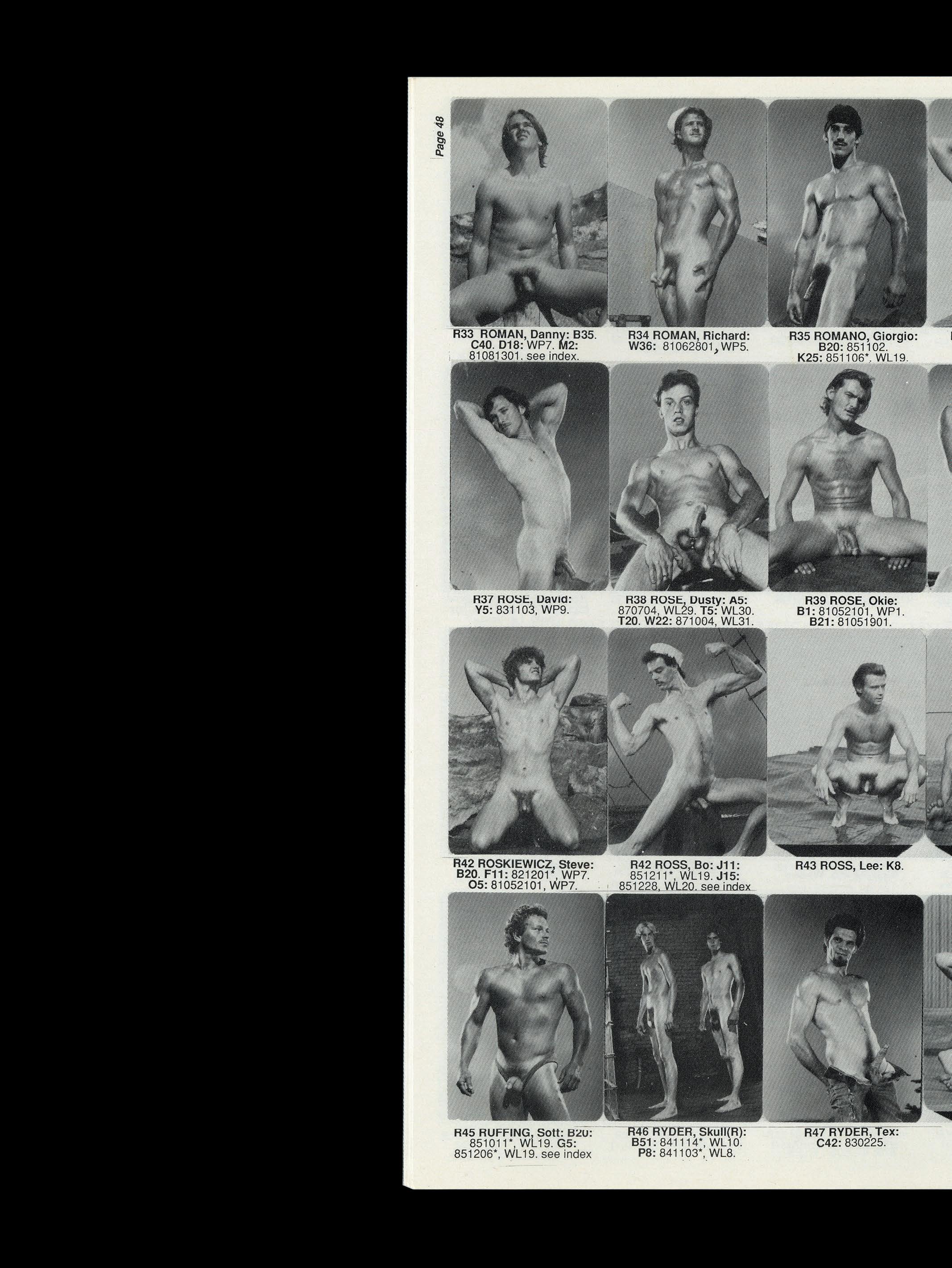
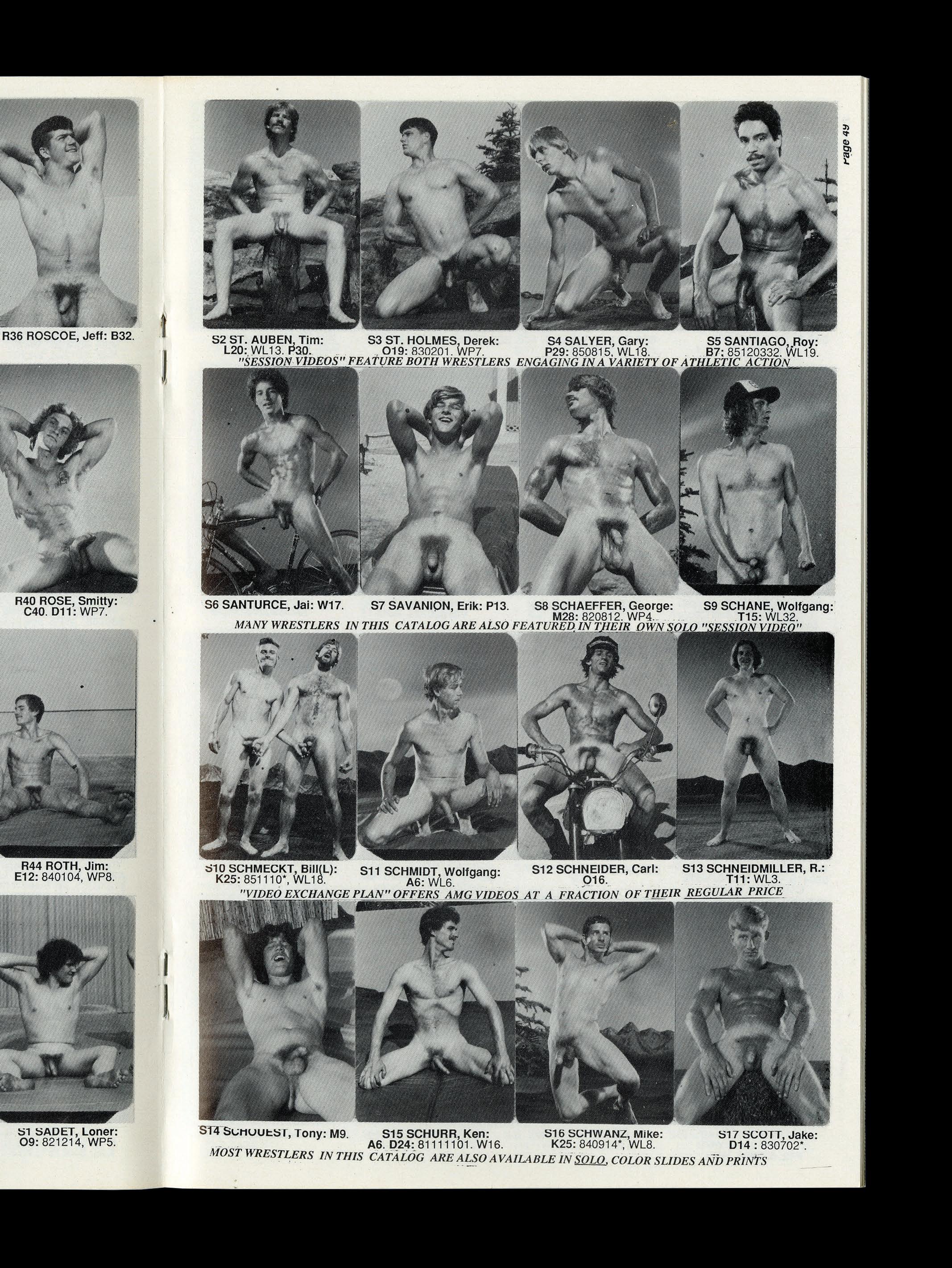
LEFT: Physique Pictorial, vol. 14, no. 1 (July 1964) Los Angeles, CA Model: Jim Paris
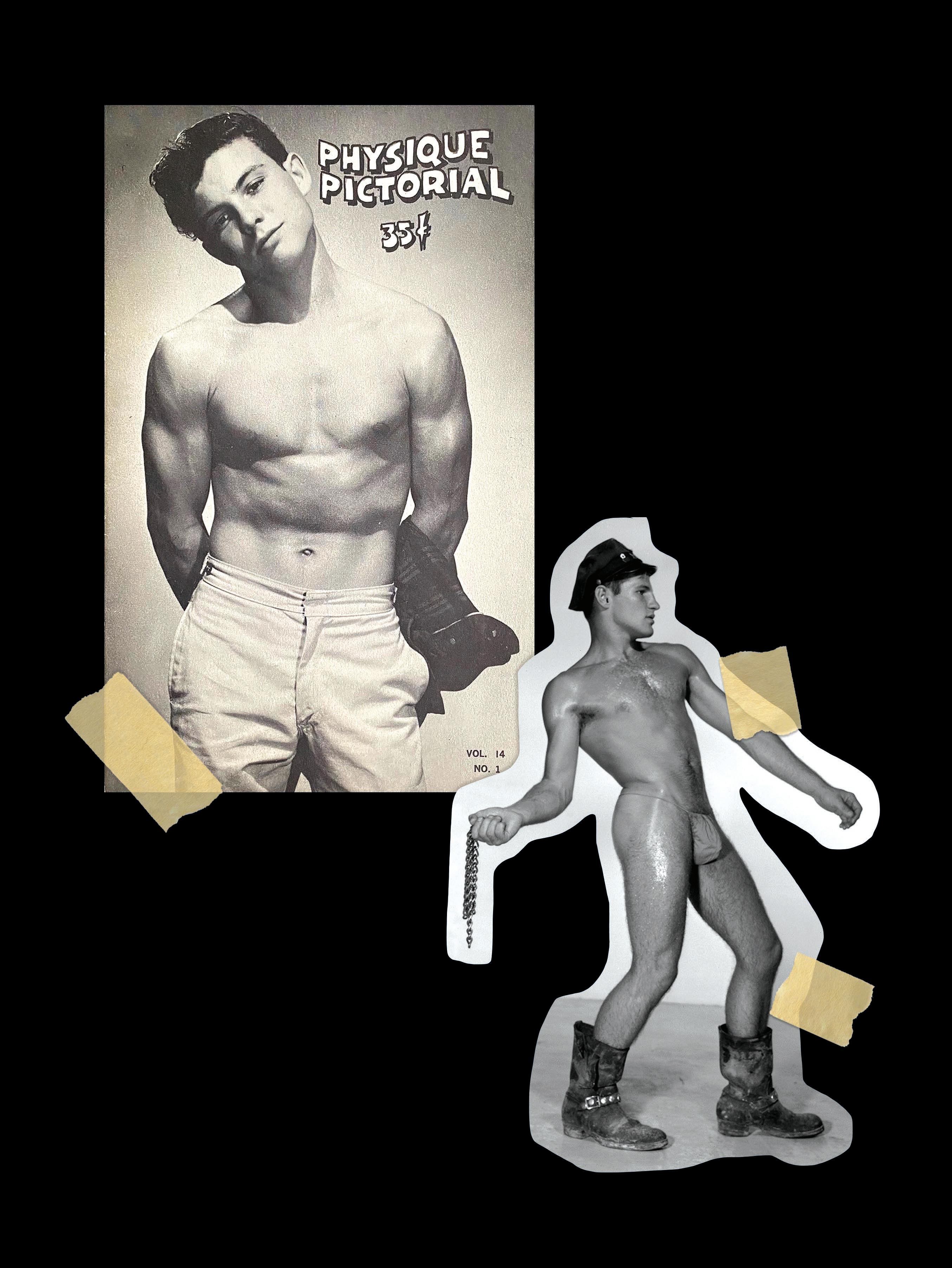
BELOW: Bob Mizer Profile with Chains, ca. 1959 Athletic Model Guild Los Angeles, CA Model: Larry Lamb
Mizer photographed thousands of men, a mass collection including nearly two million images and thousands of films and VHS videotapes.
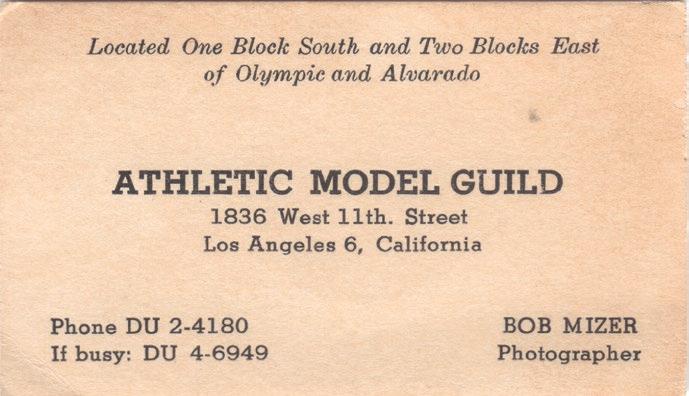
OB MIZER was an American photographer, publisher, artist, agent, filmmaker (and possibly a pimp). He was known for pushing the boundaries of sexuality by showing male homoerotic content with his photographs and films in the mid-20th century.
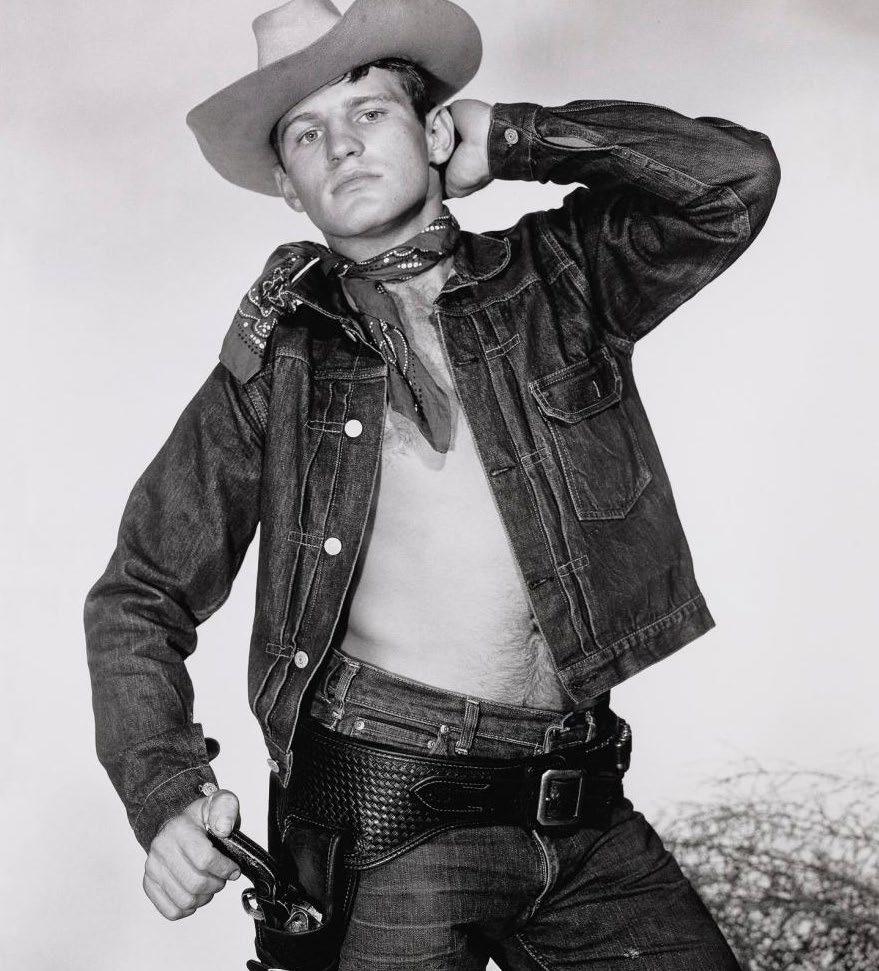
Mizer began his photography career as an apprentice for Frederick Kovert, a silent film star, female impersonator, and drag queen who operated a physique studio in Hollywood. His earliest photographs appeared in 1942, featuring friends and shots of bodybuilding competitions on Santa Monica's Muscle Beach.
Despite society's sexual repression and unrelenting pressure from law enforcement, Mizer built a beefcake empire from his many creative endeavors. He established the Athletic Model Guild (AMG) in 1945, operating the studio out of the Los Angeles home he
shared with his mother (who also made the posing straps worn by Mizer's models). There he photographed thousands of men, a mass collection composed of nearly two million images and more than 7,500 hours of film.
Authorities constantly harassed Mizer for his trade in photographs and film. In 1945 he was paid a visit by U.S. postal inspectors, who ransacked his room and found "dirty pictures," but avoided arresting Mizer. He was investigated again two years later after a young man told police that Mizer had sold him nude photographs. Although some sources claim the L.A.P.D. faked the complaint, the police force nonetheless seized $100,000 and Mizer’s customer mailing list. He was later arrested for contributing to the delinquency of a minor after police discovered one of his models was seventeen years old. Mizer was found guilty and sentenced to six months at a prison farm in Saugus, California.
What set Mizer apart from other beefcake photographers of his day was his eye for composition and lighting. Wanting to move on from standard beefcake subjects— oiled-up bodybuilders, construction workers, sailors—Mizer turned to more elaborate set dressings, including fabric backdrops with faux Roman columns, Western desert scenes, auto repair shops, and corny cinematic shots that would include anything from ducks and roosters to ropes, snakes, and swords.
Despite his groundbreaking impact on queer visual culture, Mizer was never considered a great artist. Nonetheless, he was a pioneer and an extremely successful commercial photographer— one who, considering his subject matter, knew exactly what his customers wanted to lay eyes on. (1922–1992)
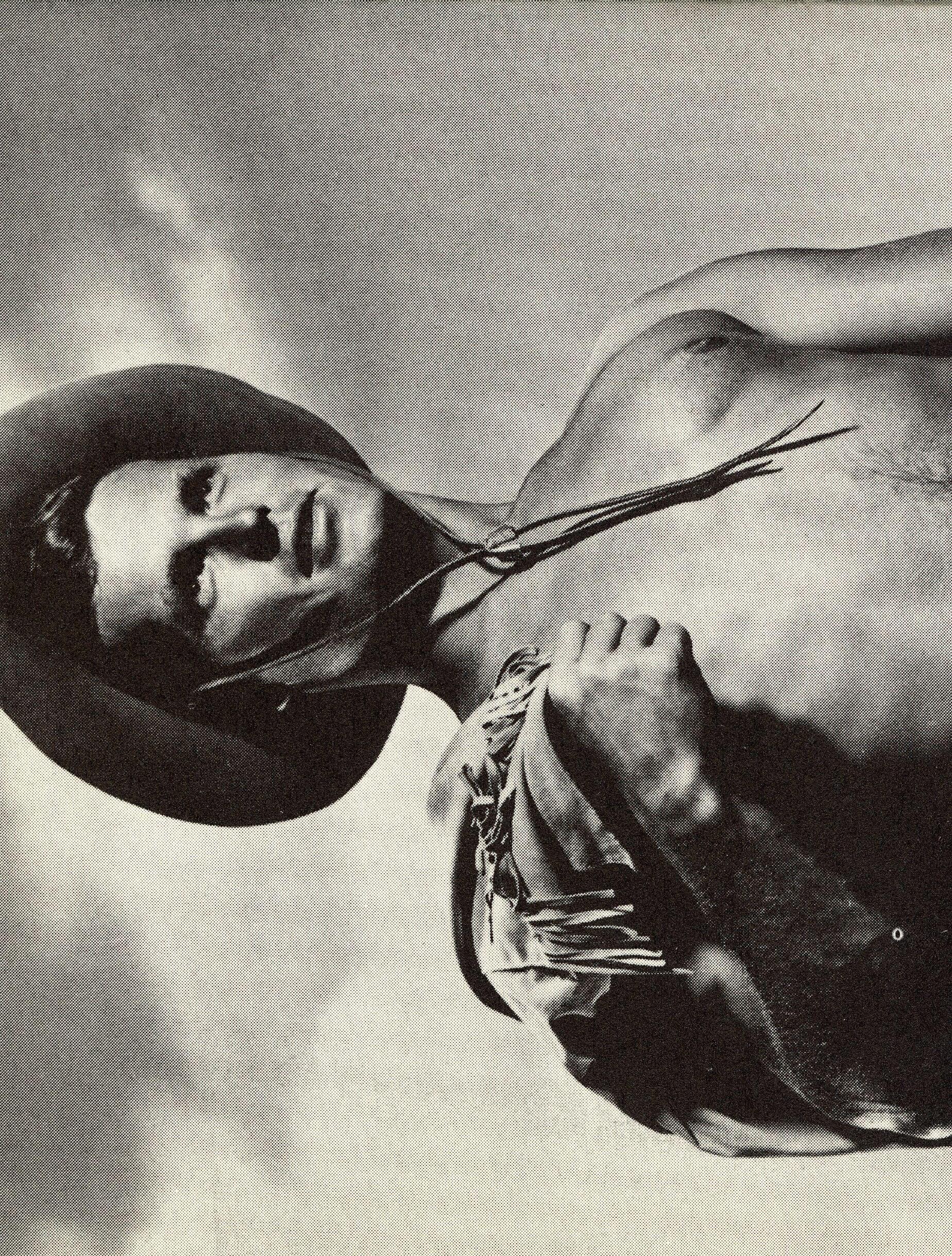
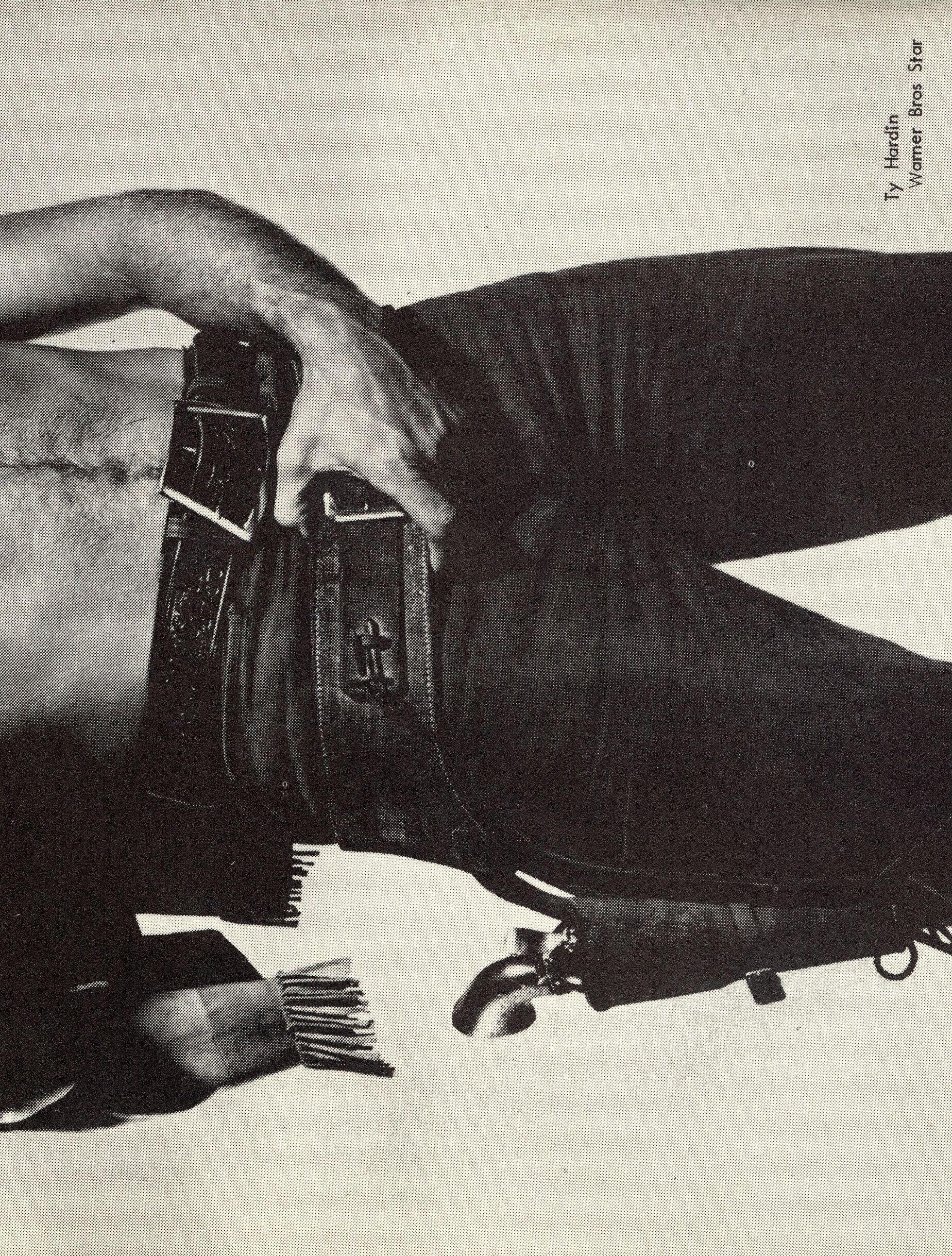 Featured in Physique Pictorial, vol. 14, no. 4 (June 1965)
Model: Ty Hardin
Featured in Physique Pictorial, vol. 14, no. 4 (June 1965)
Model: Ty Hardin
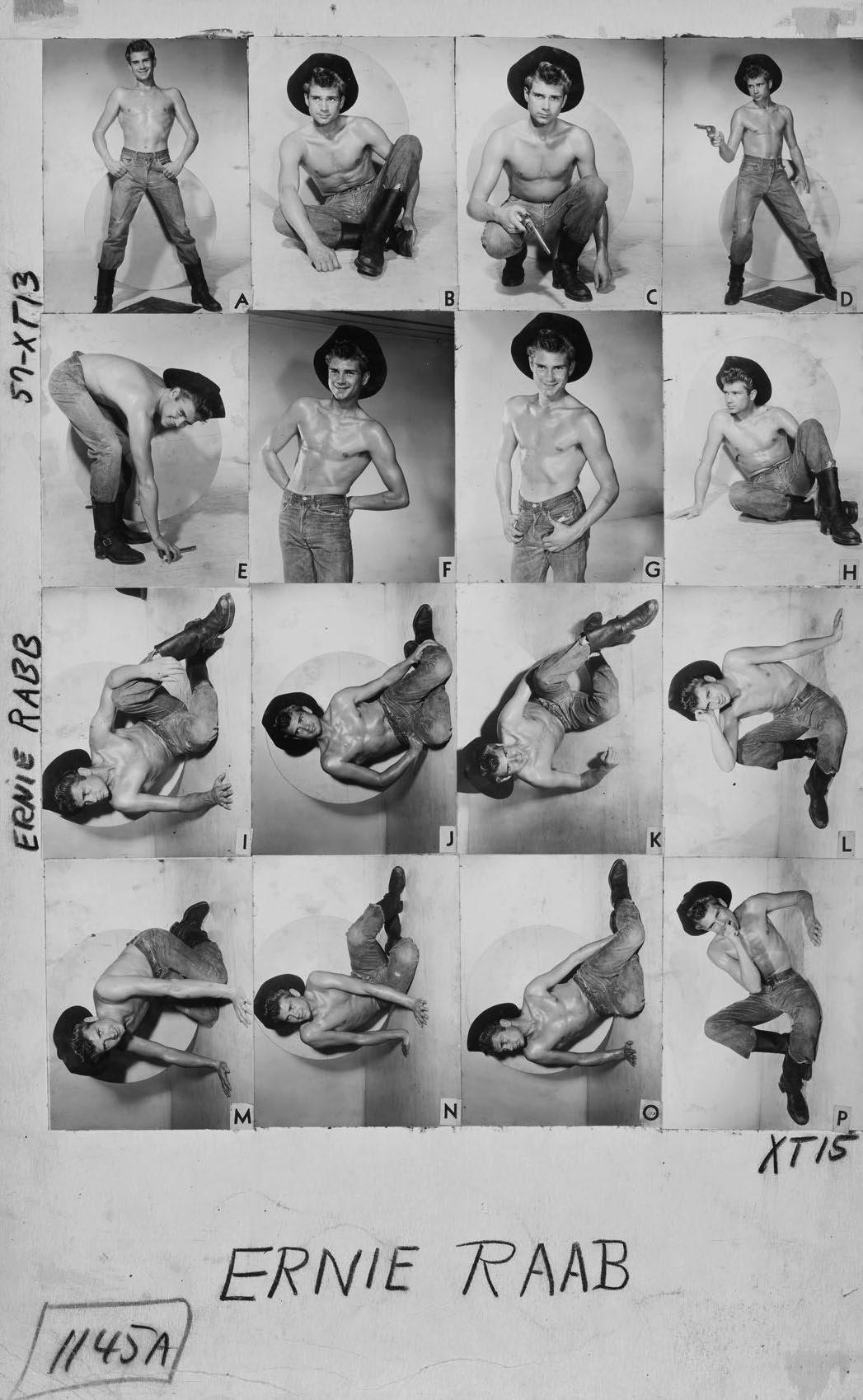
LEFT: Bob Mizer
Athletic Model Guild catalog board, ca. 1957
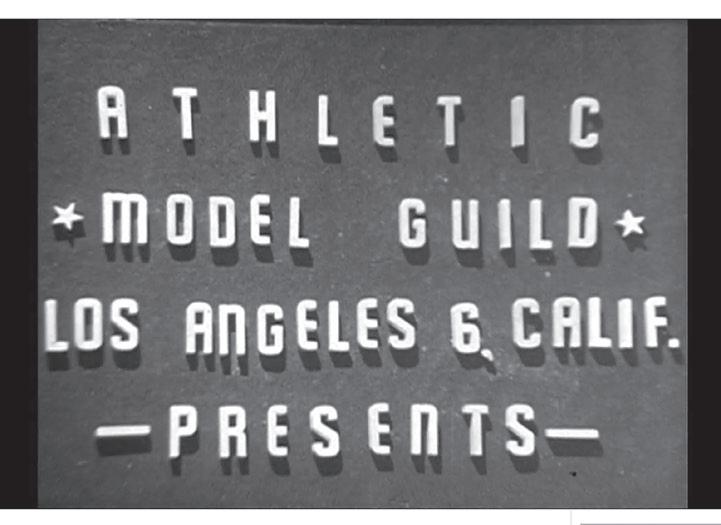
Model: Ernie Rabb
RIGHT: Photo enlargement of Frame "D"
Bob Mizer Pointed Pistol, ca. 1959
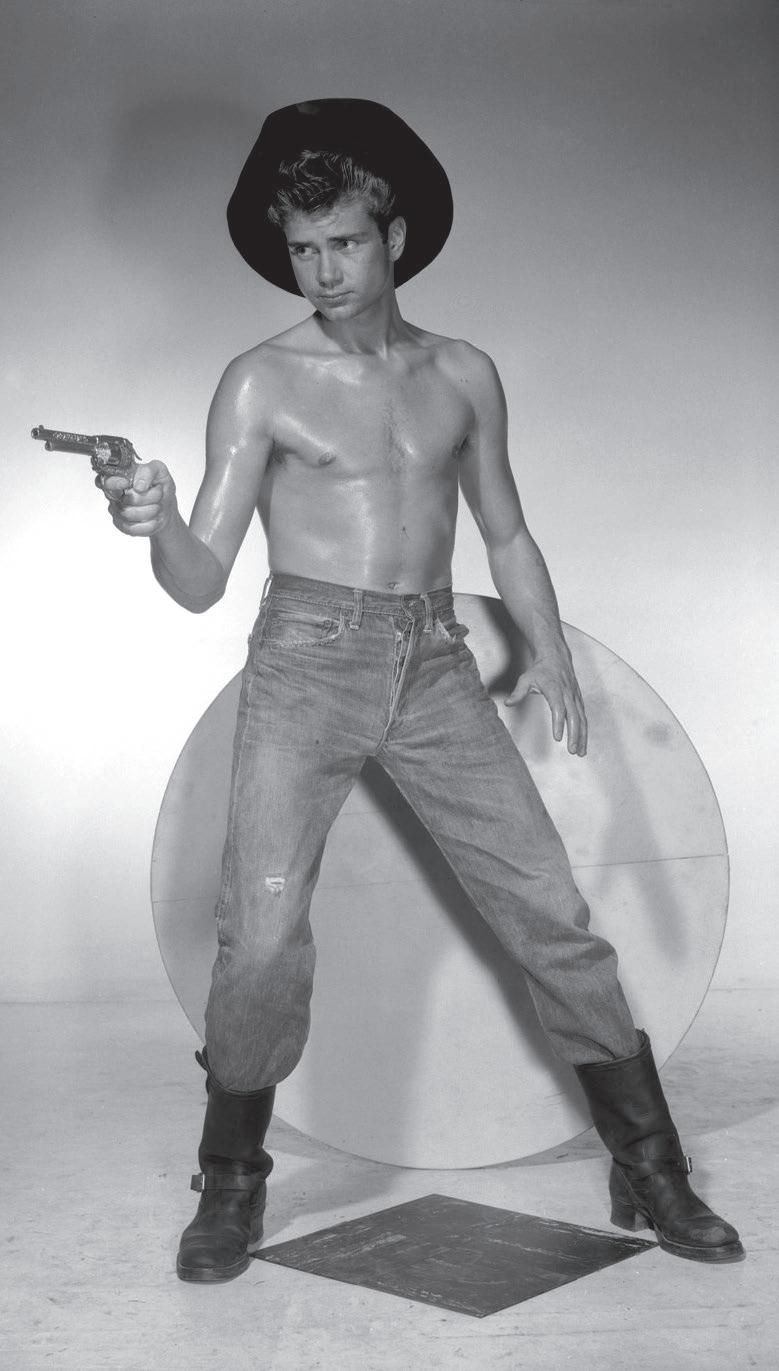
Vintage large-format black and white negative; silver gelatin print
8" x 10"
Athletic Model Guild Los Angeles, CA
Model: Larry Lamb
© Bob Mizer Foundation, Inc.
BELOW: Film capture of an Athletic Model Guild production
RUCE BELLAS , better known as Bruce of Los Angeles, was a chemistry teacher in Nebraska until 1947, when he (like Mizer) began taking pictures of bodybuilding competitions while working for one of the many muscle magazines produced by the Canadian bodybuilder Joe Weider, co-founder of the International Federation of BodyBuilders (IFBB).
In 1956, Bellas launched his own beefcake magazine, The Male Figure A discreet vehicle for sensual photos of muscular guys with hardly any clothes on, the magazine followed an aesthetic of midcentury simplicity—a sparse layout that usually included just one color photo among the pages of black-and-whites.
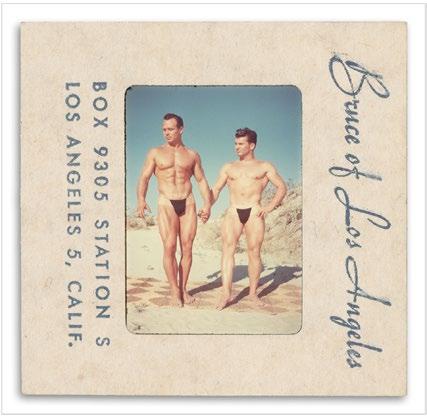
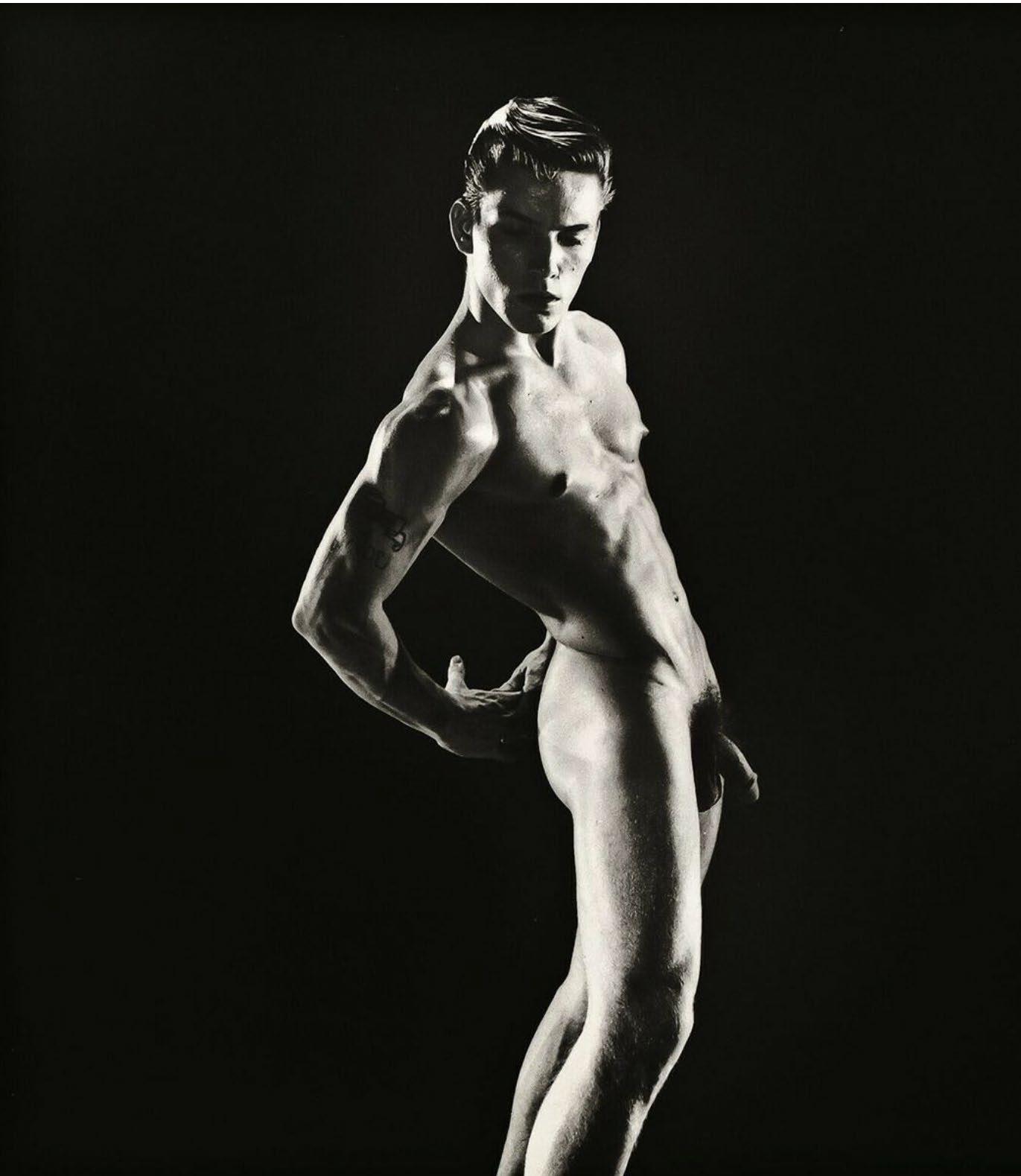
Bellas was a significant pioneer in the development of the American gay aesthetic, and the legacy of his impact on physique photography resonated throughout the twentieth century. Robert Mapplethorpe, Herb Ritts, and Bruce Weber stand among the many gay male artists who were influenced by the pioneering style Bellas developed under the ever-present conditions of danger and secrecy.
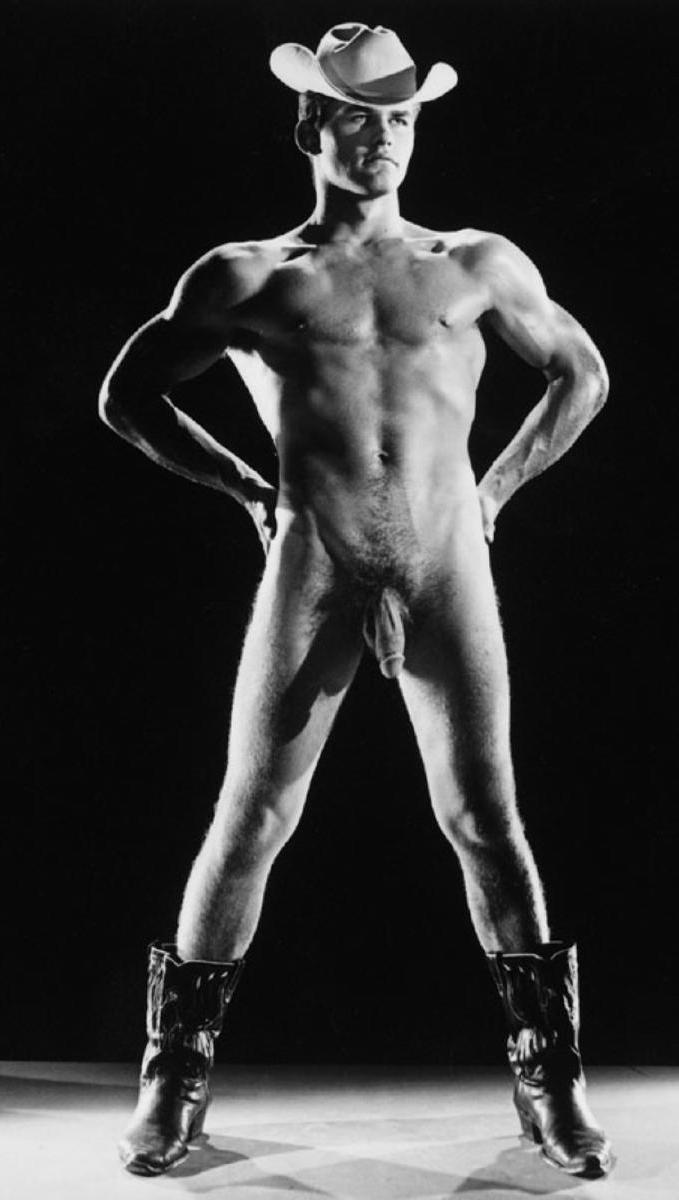
ABOVE:
Bruce Bellas, ca. 1960
Model: Steve Reeves
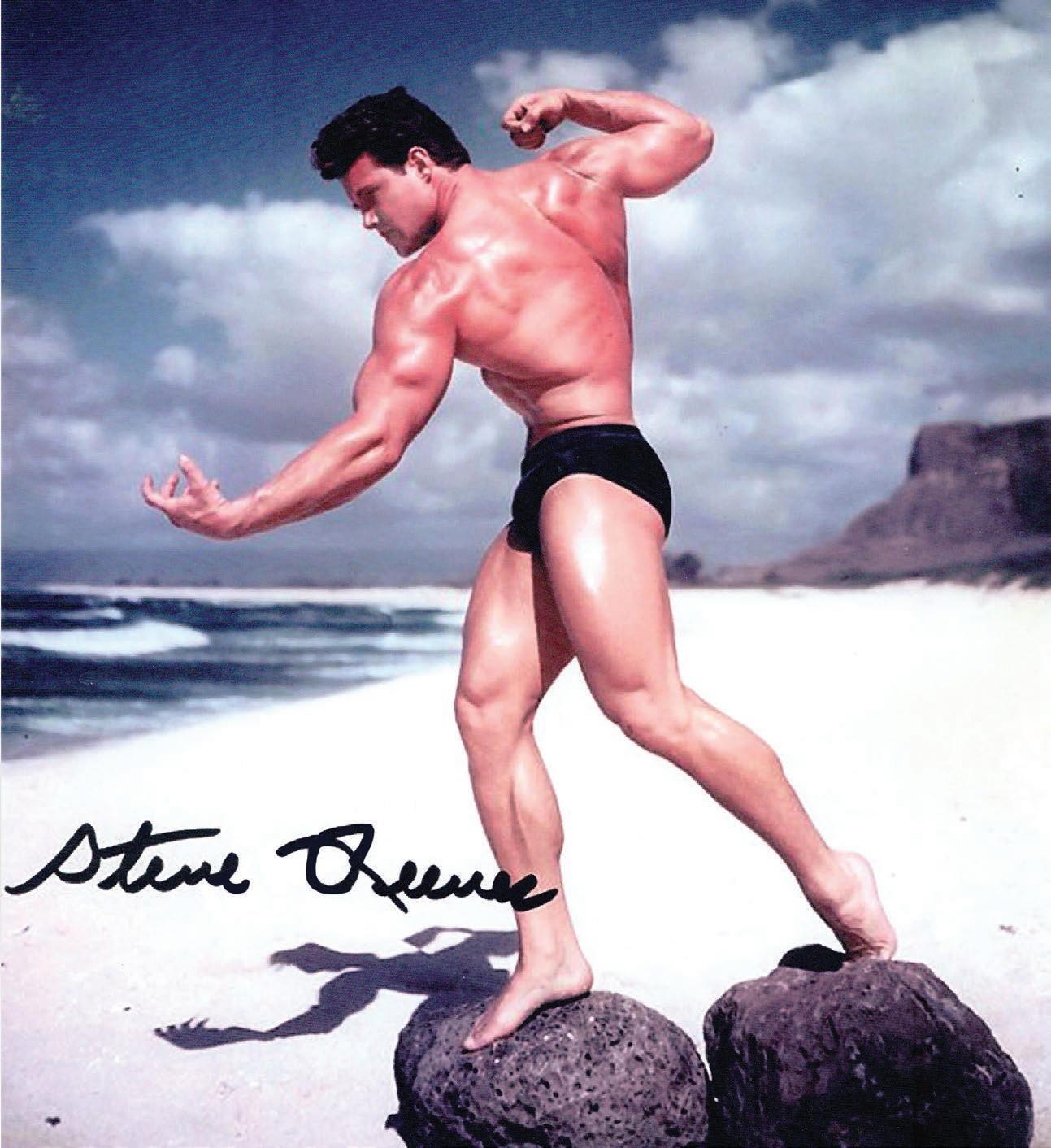
BELOW:
Bruce Bellas, ca. 1960
Model: Unknown ★
[1911–1969)
OR JAMES PATRICK , better known as Pat Milo, an interest in photography during his teenage years indulged his curiosity in the male form. Growing up in a conservative Irish-Catholic household, Milo was thrown out of his family home when his father found some of his photographs. To survive on his own, Milo worked as a short-order cook, where he met Lyle Frisby, a Mizer protégé.
In the early 1950s, Milo and Frisby opened a photography studio that quickly proved a spectacular failure. Undeterred, the pair sought the advice of Bruce of Los Angeles, whose work Frisby admired and wanted to emulate. Bruce's advice: Move to Los Angeles, which the pair did in 1953. In L.A., Milo and Frisby opened a storefront and commercial photography studio called Lyle Studio. The store, of course, was a front—Milo and Frisby’s primary venture was photographing male models for physique magazines.
They sold nude photos of physique models both through mail- order and in person at their store, but it was only a matter of time before the jig was up. Frisby was arrested for obscenity and experienced a rapid decline in health while in prison, dying soon after his release. During Frisby’s incarceration, Milo began taking photography classes at the University of California, Los Angeles (UCLA), where he met Hollywood glamour photographer George Hurrell, who inspired new developments in Milo’s photographic technique.
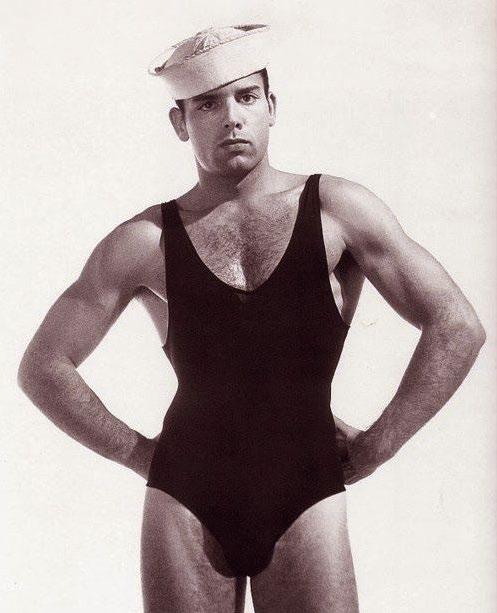
On his own, Milo opened a studio in downtown Los Angeles and photographed male models using the “Milo” moniker. After his photos first appeared in physique magazines beginning in 1959, he continued selling erotic photographs using Frisby's mailing list while gaining new clients through advertising. Over the next decade, he photographed many models, garnering respect from many of the men he shot, who were surprised by his unusual “hands-off” approach during their photo sessions. In terms of lighting and quality, Milo's work is often compared to Bruce of Los Angeles, and the two often photographed the same models, honing their artistic eye to capture the rugged, edgy quality of young street trade.
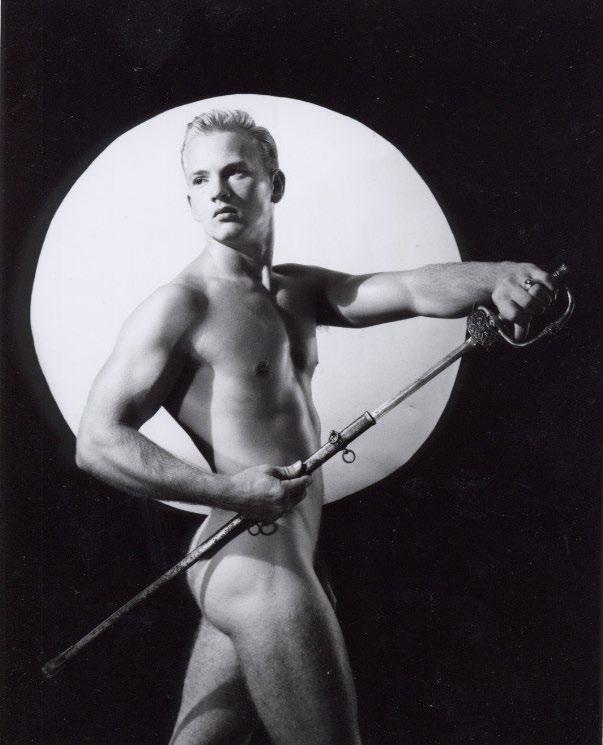
★ ★
LEFT: Pat Milo
Untitled photograph, 1950
Model: Murray Barnett
RIGHT: Pat Milo
Untitled photograph, 1950
Model: Mike White
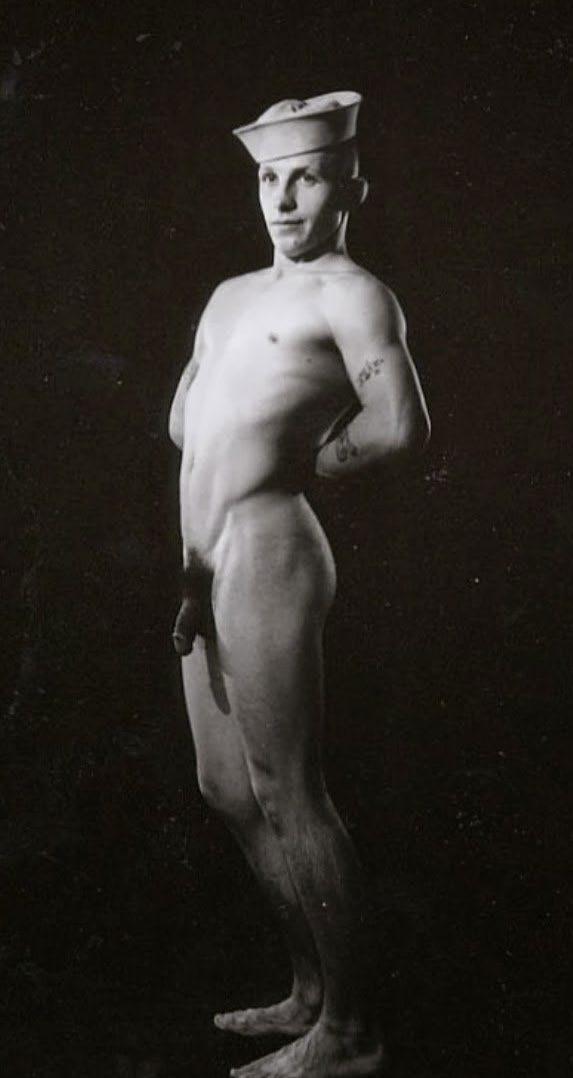
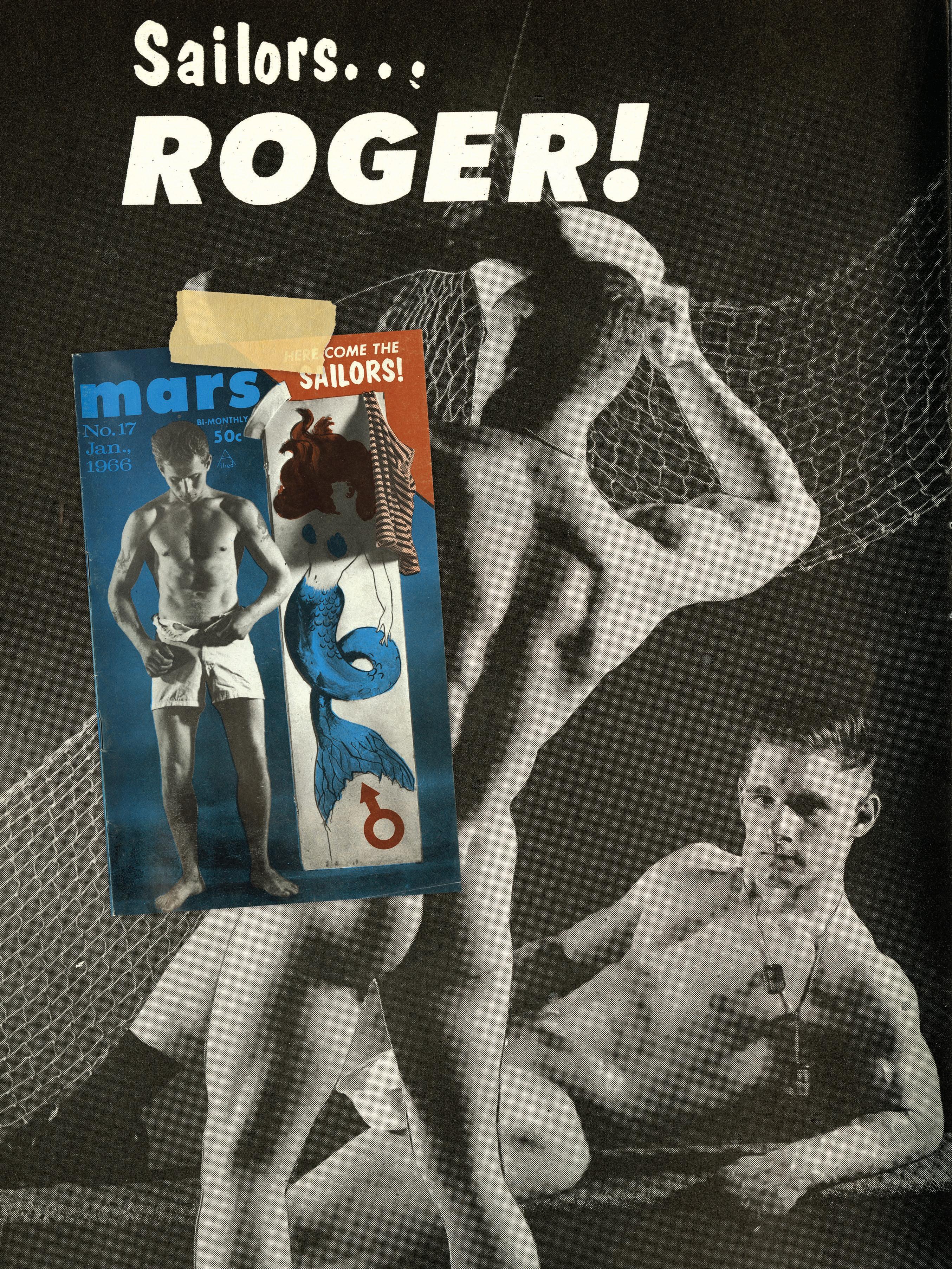
HUCK RENSLOW was much more than a pioneering physique photographer. He was a publisher, entrepreneur, leatherman, and political activist. Living openly as a gay man in an era when most were confined to their shadowy closets, Renslow was also a fixture of the gay liberation movement in Chicago.
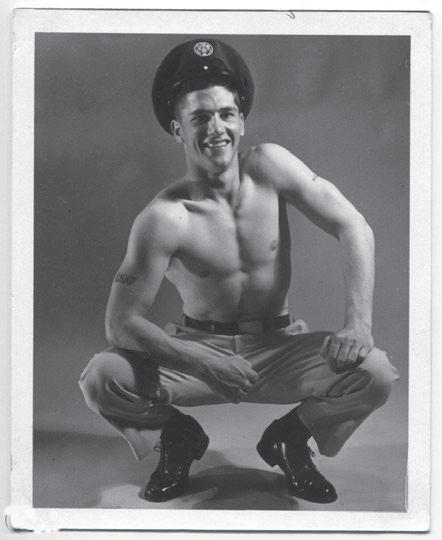
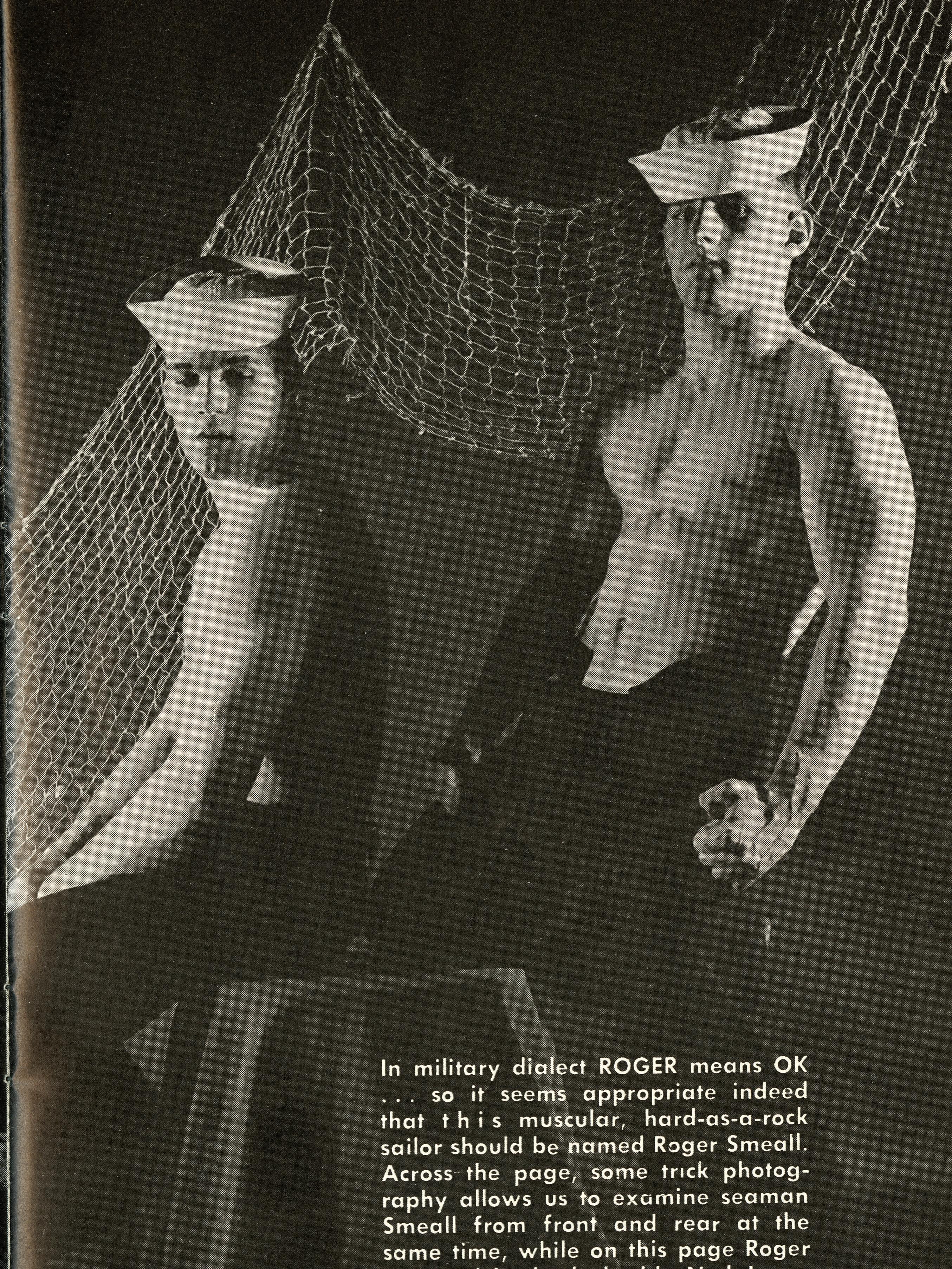
In the early 1950s, he founded or acquired at least two dozen businesses: Kris Studio, numerous bars and discos, a health club and bathhouse, magazines and newspapers, hotels, restaurants, and bookstores. He was also the founder of International Mr. Leather in Chicago— an annual conference and competition celebrating all things leatherman.
Renslow first pursued photography solely as a hobby, opening a photo studio to supplement earnings from his day job at a drugstore. That initial venture evolved into Kris Studio (named partially after the transgender pioneer Christine Jorgensen), which published catalogs and a trio of physique magazines—Triumph, Mars, and The Rawhide Male —that featured Renslow’s photography alongside the drawings of his partner, Dom Orejudos, better known to readers as “Etienne.”
Chuck and Dom proved to be a great team. Chuck managed the lighting and photography, Dom arranged the sets and poses, and they both relished the pleasure of selecting the models. In 1958, Renslow
and Orejudos became owners of Triumph Gym, which provided a steady supply of muscular models who eagerly donned posing straps for the duo. (Many eagerly took them off as well.)
The same year, Kris Studio was raided. Renslow was charged with sending obscene materials through the mail, a charge that stemmed from his photos containing “excessive genital delineation,” today referred to as VPL, or visible penis lines. (He later admitted to sometimes dousing the posing straps with water to accentuate the genitals they were intended to conceal.) In a bold move, Renslow fought the charges and was ultimately acquitted. He was arrested again in 1966 on obscenity charges, but the case was ultimately dismissed.
Renslow and Orejudos remained together for forty-three years, until Dom’s death in 1991 from complications from AIDS. Renslow died in 2017.
ABOVE:
Models: Rodger and Ned Jaros
LEFT: Chuck Renslow
Untitled photograph, ca. 1960
4" x 5" black and white double-weight gelatin silver print
Model: Dave Allen
Image: worthpoint.com
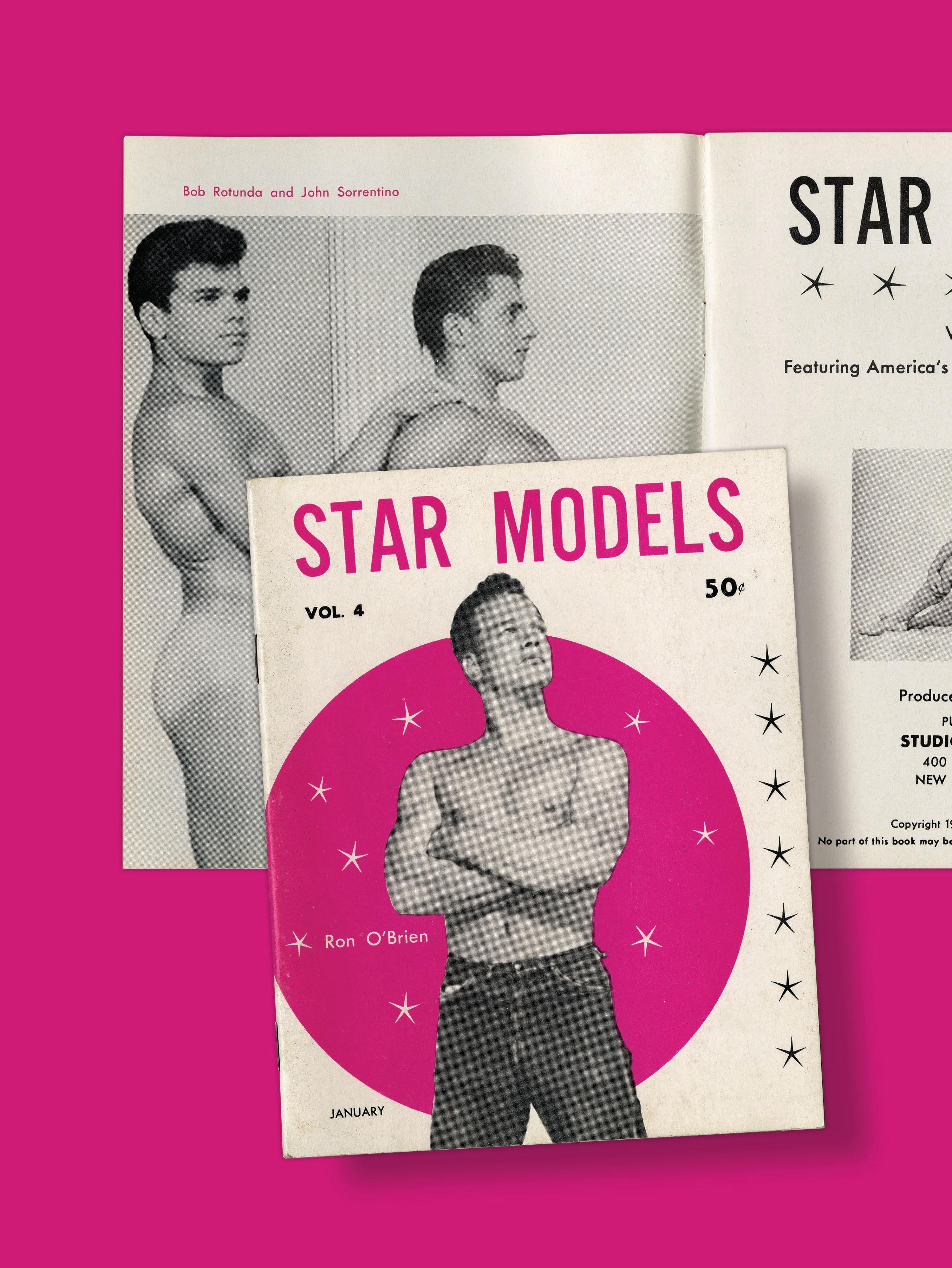
LONZO JAMES "LON" HANAGAN was an American physique photographer during the 1940s and 1950s who produced erotic images of men under the alias "Lon of New York," or simply "Lon."
Lon was raised in a very religious family— and although they were very close, it was nonetheless a strict household. The family piano first inspired Lon’s creativity. He eventually started playing piano and organ on a weekly radio program in addition to performing in local churches.
After graduating from high school Lon worked as an organist at movie theaters. It was around this time he met Ralph Ehmke, who became his first boyfriend. To support Lon’s budding interest in photography, his parents gifted him a Kodak box camera, which Lon used to produce images of family, friends—and endless snapshots of Ralph. He learned darkroom skills while at Boy Scout camp, where he also made his first series of male nudes, including a cheeky shot of one of his counselors fresh from the shower.
In 1936, he moved to New York City, where he studied music at the Juilliard School and worked as an organist at Radio City Music Hall. It was in New York that Lon met several beefcake photographers and picked up the basics of physique photography. In 1942, he released his first catalog of musclefocused work and had a series of photographs published in Strength & Health magazine.
After World War II, he began devoting his time exclusively to physique photography. Under the alias, Lon of New York, he produced physique and beefcake photography featuring Mediterranean, Latino, and African American models. Though Lon was known for a campy demeanor in private, and often photographed drag queens, his physique photography was serious, featuring highly masculine models in poses and settings inspired by Greco-Roman aesthetics.
Today Lon stands as one of the pioneers of physique photography. His photos were featured in the major physique magazines, and he published several magazines of his own: Men and Art, Male Pix, Star Models, and Male Model Parade
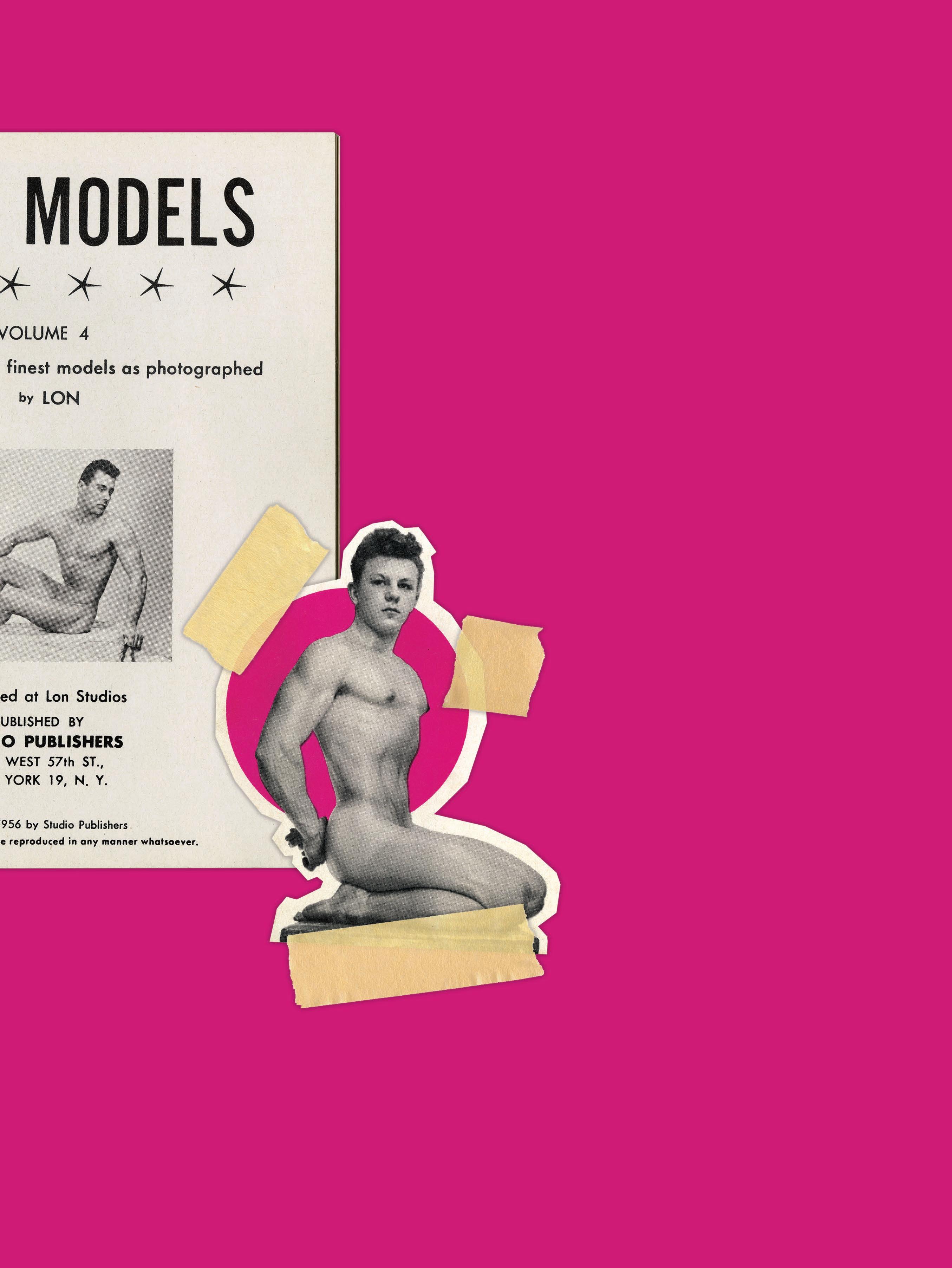
”They were going through my studio and couldn’t find anything indecent. . . . They looked at one picture and said, ‘A-ha! I see a pubic hair! You’re under arrest.’”
I can’t be the only one who idolized Scott Madsen in the early 1980s striking a pose with the Soloflex, a $450 hunk of fitness equipment that “fit conveniently in the corner of your home.” After I fell for the marketing, my Soloflex sat neglected for years in our family’s basement—the perfect shelf for housing misplaced garden tools, paint buckets, and coffee cans filled with random screws and bolts.
Nothing can get a gay man to whip out his credit card faster than a barechested, bulge-packing man. Whether pimping cologne, Speedos, or the Soloflex, homoerotic advertising images—with Adonises horsing around in their underwear, snapping each other on the ass with a towel, sharing a beer (without their female friends), or bathing together in a lagoon—always make the sale.
As censorship rules loosened in the second half of the twentieth century, and tolerance for homosexuality reached new heights, advertisers increasingly honed their eye on an untapped demographic with incredible buying power: the gay community. But the industry’s highly stylized homoeroticism—from the Arrow Collar Man to the Marlboro Man—has proved highly effective as a marketing tool not only with gay men, but also straight men and women.
Today, the presence of male sexuality in American advertising can range from quietly elusive to highly overt displays that test the boundaries between sexy and softcore porn. To trace the roots of homoeroticism in modern advertising, we must first travel back to the early decades of the twentieth century and the work of J. C. Leyendecker—who infused decades of print ads and magazine covers with his elegant, homoerotic visions of American masculine beauty.
 Rick Heffner Homoeroticism, 2022 Digital collage © Rick Heffner
Rick Heffner Homoeroticism, 2022 Digital collage © Rick Heffner
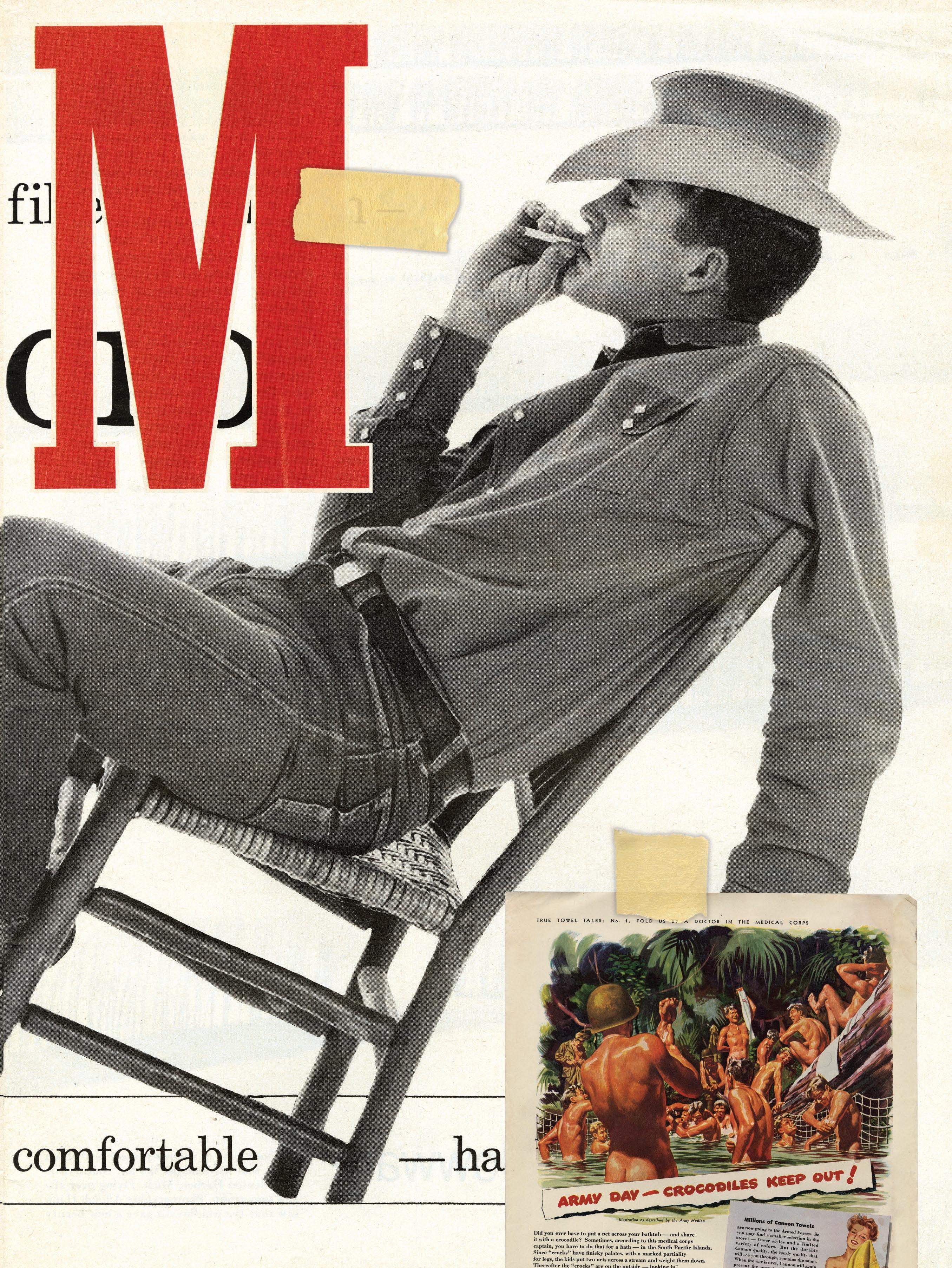
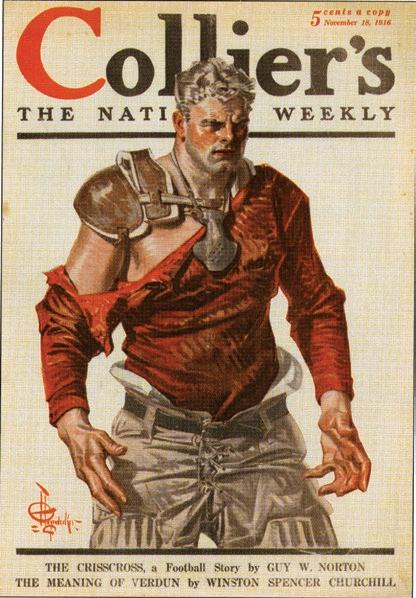
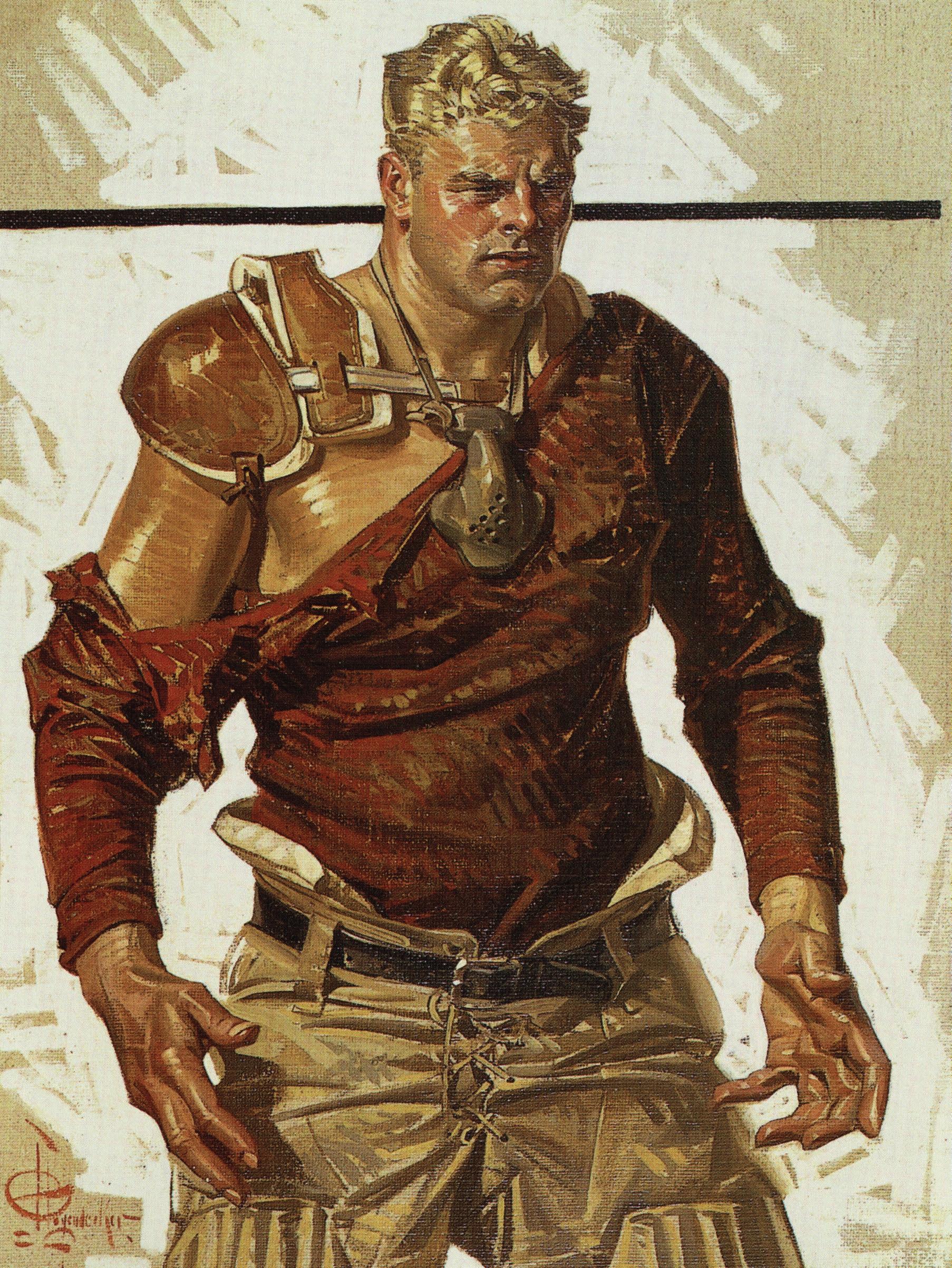
EYENDECKER, J. C., has to be one of my favorite artists of the twentieth century. As the most famous illustrator of his day, his work was published for decades in premier magazines like The Saturday Evening Post and Collier’s. “Joe” was a peculiar figure who shied away from the limelight and its consequent public scrutiny, a homosexual when living such a life openly was nearly impossible. Despite the gay subcultures that existed in New York and San Francisco at the beginning of the twentieth century, homophobia was prevalent throughout the country—a poison that would threaten not only Leyendecker’s career but his very freedom. Perhaps this explains the lack of information about one of the most significant American painters of the past hundred years.
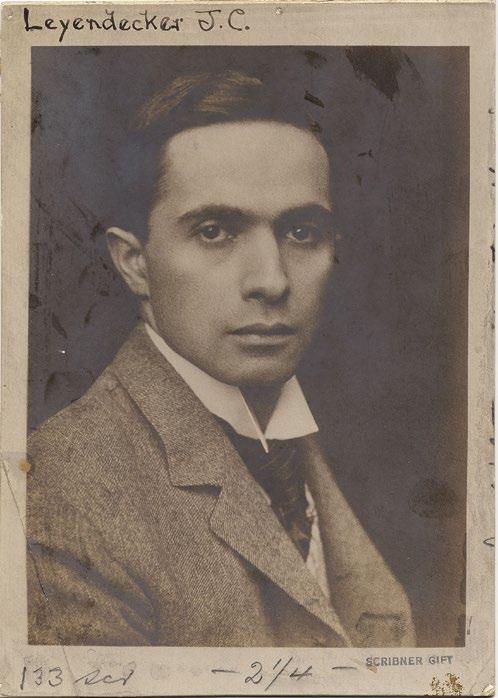
To hide his gay lifestyle, Leyendecker constantly purged his files and records of any references to his homosexuality. Only in his artwork can one find symbols of his sexuality and homoerotic impulses. His stylized figures, exaggerated in proportion, depict characters exuding masculine charms. He purposely painted smaller heads and rugged hands to give his men heroic, larger-than-life postures. Using a secret painting medium—a proprietary mix of oils and turpentine—Leyendecker imbued his art with rich, fluid, hatched brush strokes and radiant signatures.
He purposely painted smaller heads and rugged hands on his men to give them larger-than-life, heroic postures.
© The House of Kuppenheimer
Among Leyendecker’s most famous illustrations are those he created for Arrow Shirts advertisements featuring the “Arrow Collar Man.” An elegantly dapper guy who received thousands of fan letters and marriage proposals from swooning women, the Arrow Collar Man set standards for what was considered a masculine ideal at the time, becoming the male version of Charles Gibson’s famous “Gibson Girl.” Besides its devastatingly handsome leading man, the campaign was also notable as one of the first to deliberately sell a “lifestyle” instead of just a product.
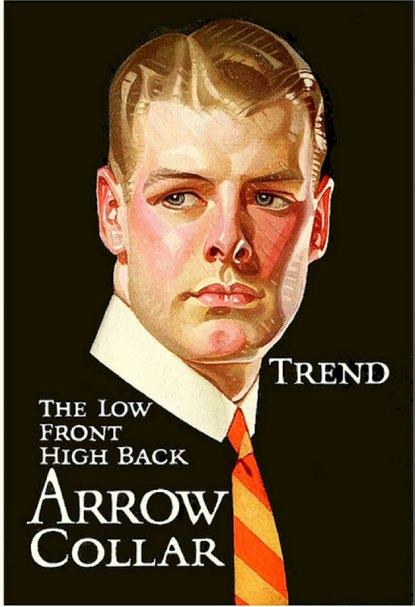
Little did many know that Leyendecker’s lifelong partner, Charles Beach, was the model for the Arrow Collar Man. Women melted when they saw Beach in these advertisements, and men wanted to be him. When Leyendecker created the Arrow Collar Man, he proposed to create a unique male [sex] symbol for Arrow products: “Not simply a man, but a manly man, a handsome man . . . an ideal American man.” (Ironically, Beach was Canadian.)
The Arrow Collar Man, who graced the pages of nearly every American publication between 1907 and 1931, not only catapulted Arrow to the top of its industry, but created an idol with a masculine beauty powerful enough to stir the imagination— and desires—of a generation. The American male stepped onto the fashion scene thanks to J. C. Leyendecker’s artistic vision and deep love for his partner.
LEYENDECKER
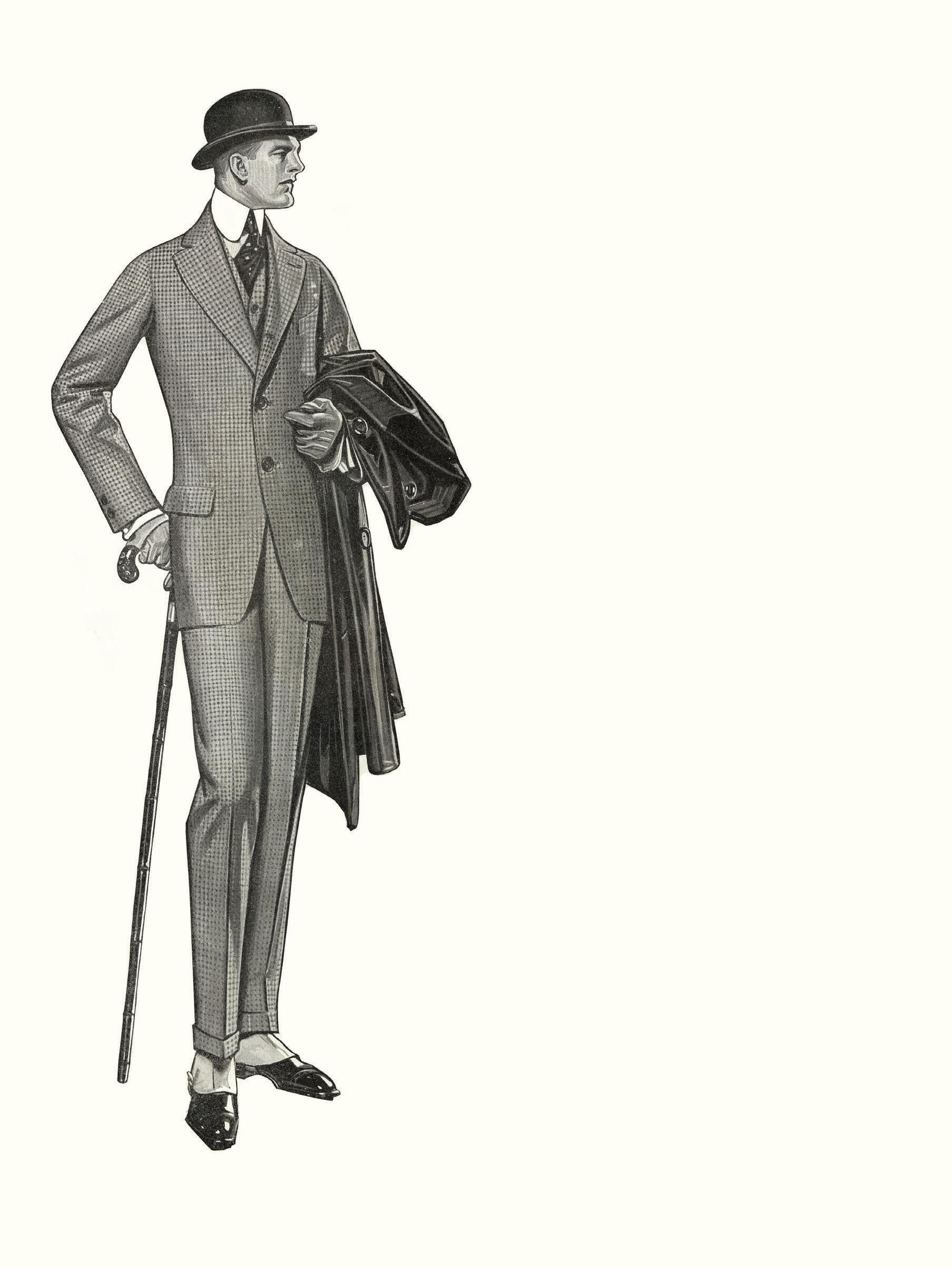
“Not simply a man, but a manly man, a handsome man... an ideal American man.”
ON CREATING A UNIQUE MALE SYMBOL, THE ARROW COLLAR MAN.
CLOCKWISE: J. C. Leyendecker
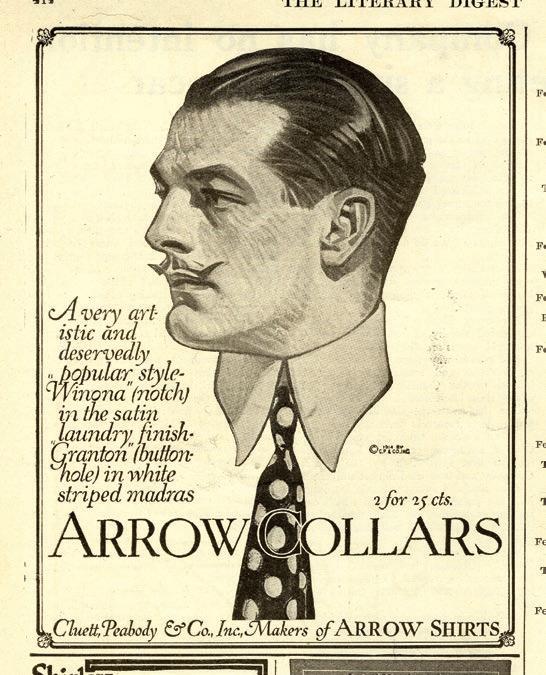
The Saturday Evening Post (July 6, 1919)
The Saturday Evening Post (July 6, 1919)
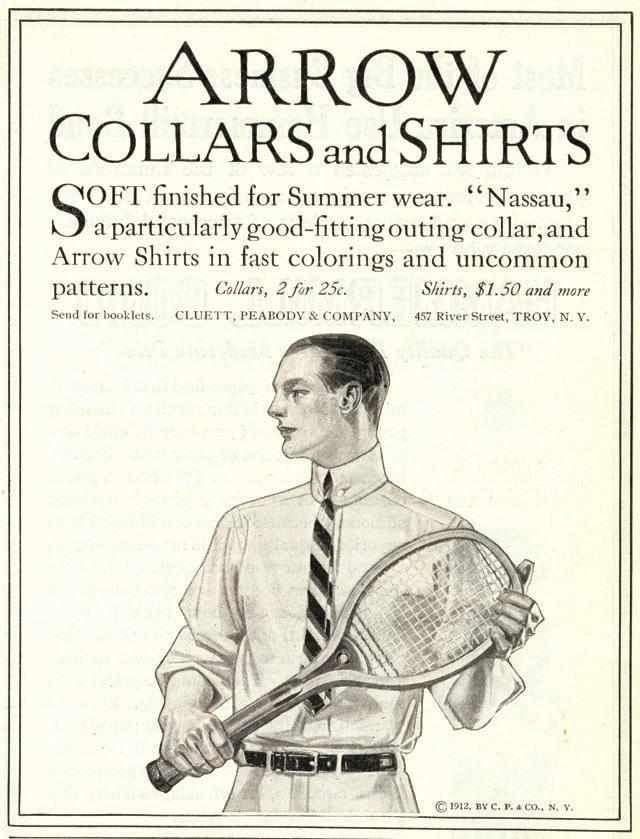
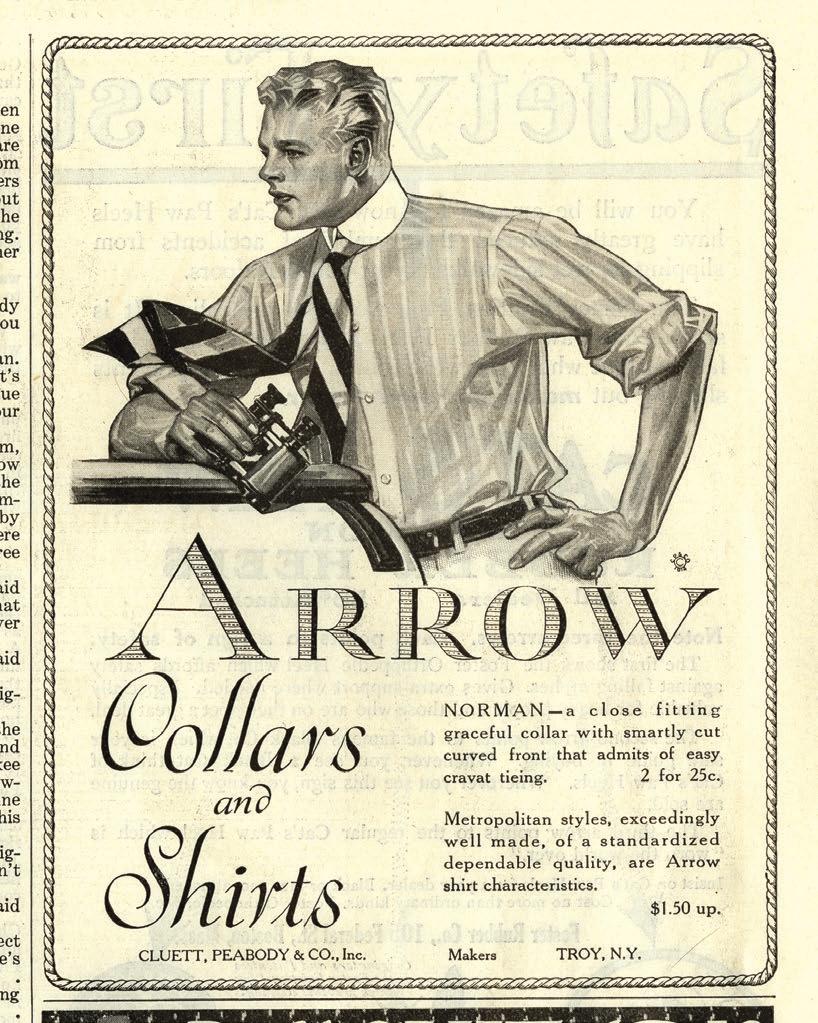
The Saturday Evening Post (September 19, 1914)
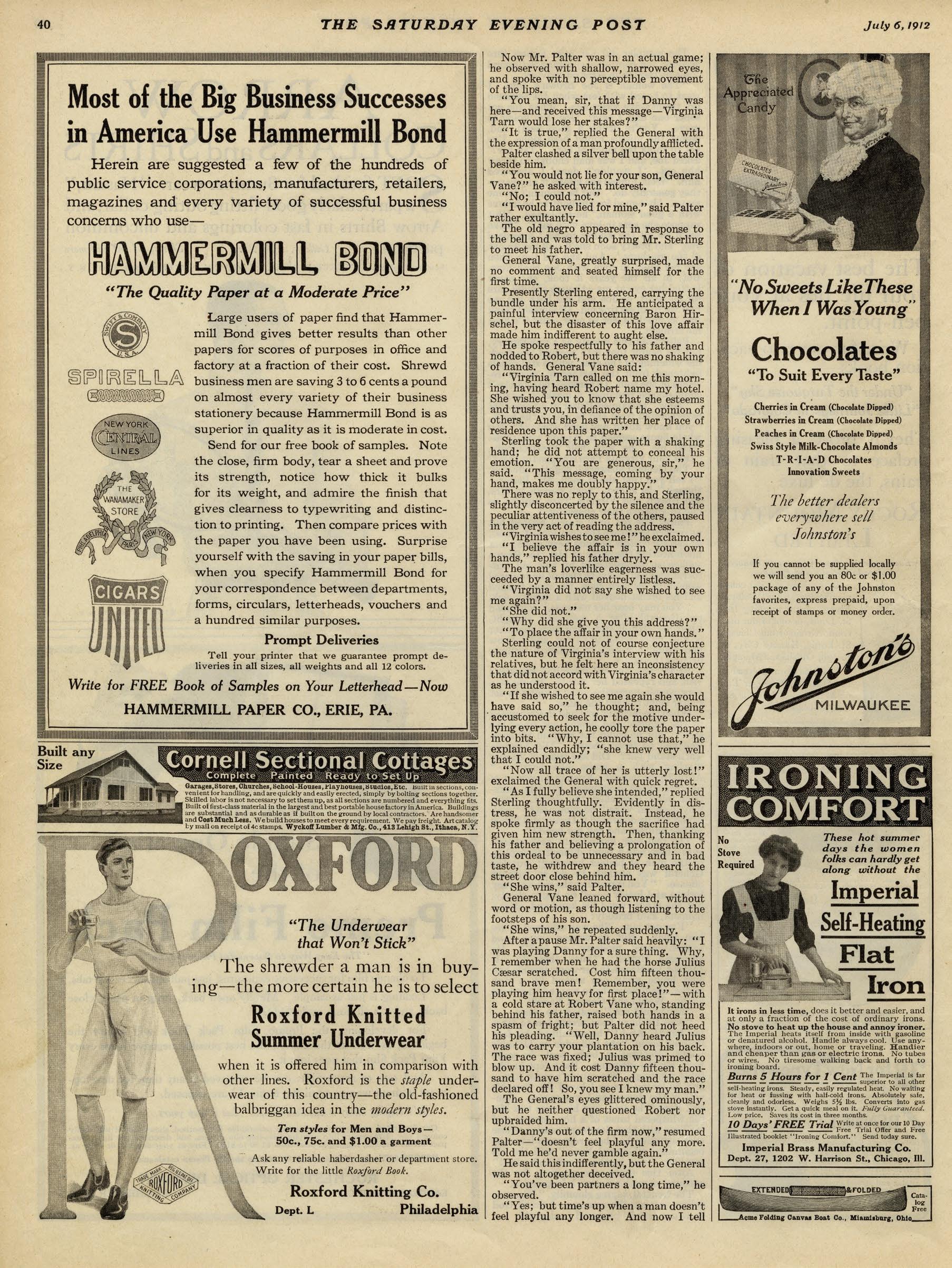
The Literary Digest (February 21, 1914)
© The House of Kuppenheimer
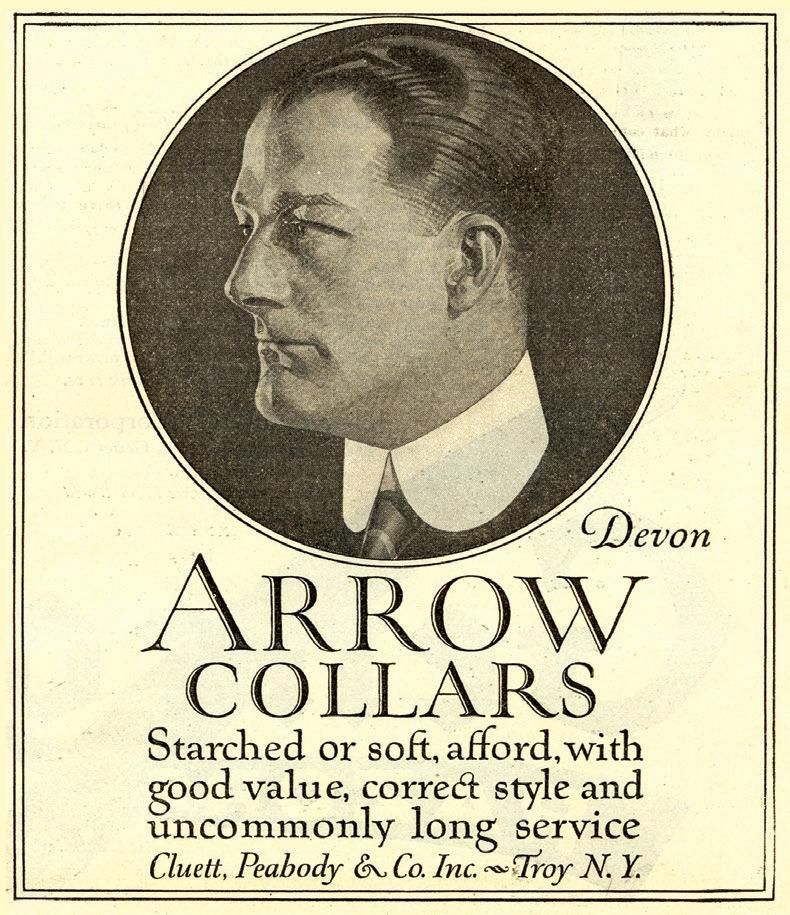
Studies for The Saturday Evening Post cover (November 24, 1928)

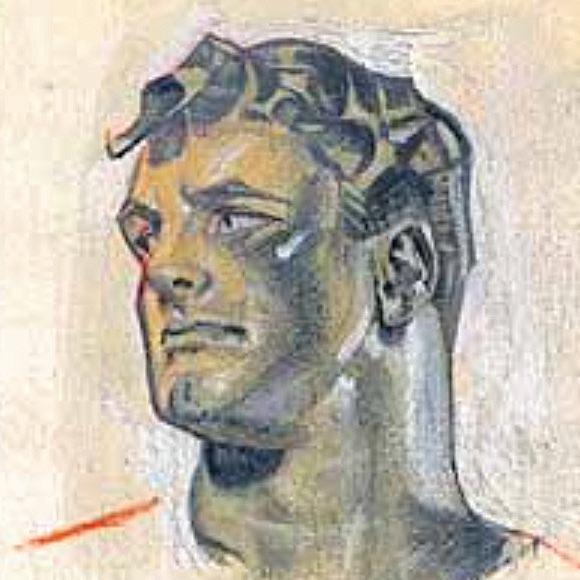
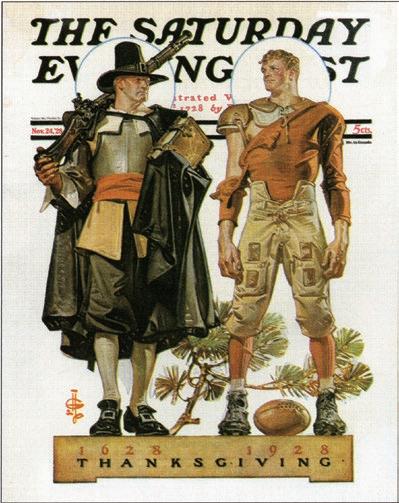
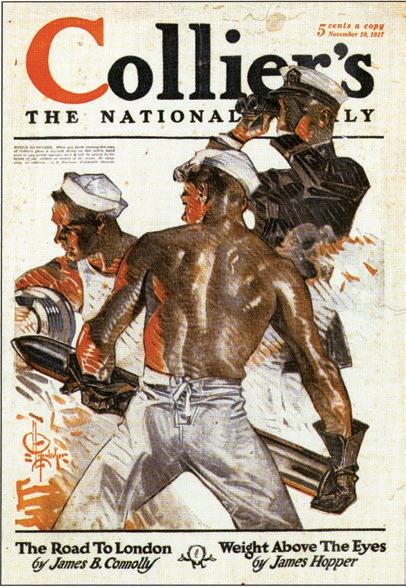
Images: americanartarchives.com/ leyendeceker,jc_studies.htm

“Charles Beach was tall, powerfully built, and extraordinarily handsome—looked like an athlete from an Ivy League college. He had a clipped British accent and was always beautifully dressed, with polished and impeccable manners... He was Joseph Leyendecker's ideal man.”
— NORMAN ROCKWELLDrawing stunningly beautiful men wasn't what set Leyendecker apart from his advertising peers—it was that he painted those men in a shockingly erotic and body-based manner, at a time when there wasn’t much of an audience for chiseled, broad-chested, shirtless men in mainstream culture.
And while his work referenced the male movie stars of this period— Cary Grant, Clark Gable, Gary Cooper, Humphrey Bogart, Marlon Brando, and James Dean— the standard ideal of male beauty owed little to Leyendecker. His greatest influence was on future generations of gay erotic artists, who were inspired by Leyendecker's impossibly square-jawed men, and the ways he paired their hairless physiques and broad shoulders with as little clothing as he could get away with.
Despite his distinct talent, Leyendecker’s work went out of fashion, money became tight, and he outlived most of his friends. His funeral in 1951 was attended by only five people, including his partner of fifty years, Beach. The four pallbearers were three of his former male models—and Norman Rockwell. Beach had been ordered to destroy all records, correspondence, and original artworks, although he did sell many of the artist's studies in a yard sale.
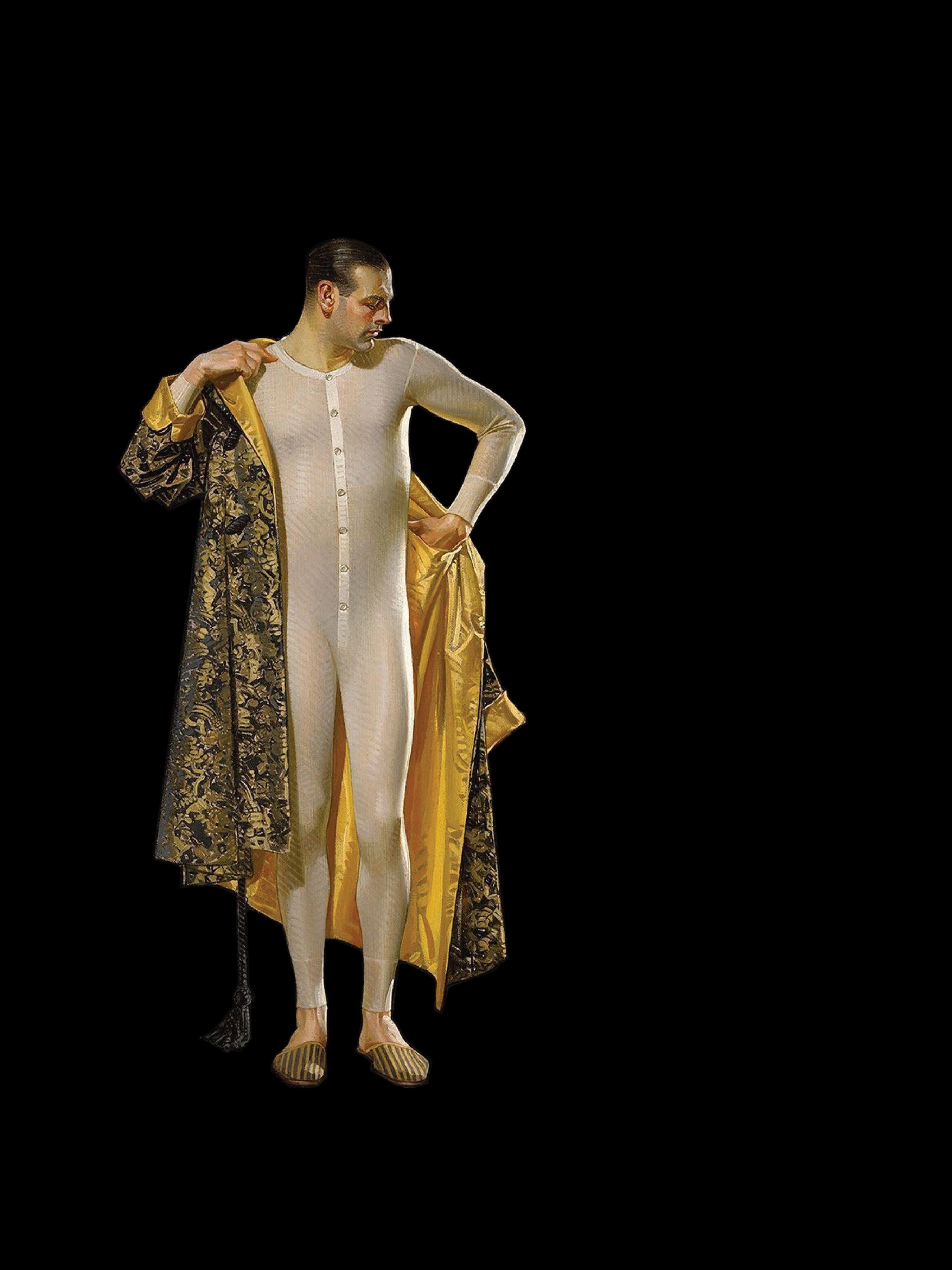
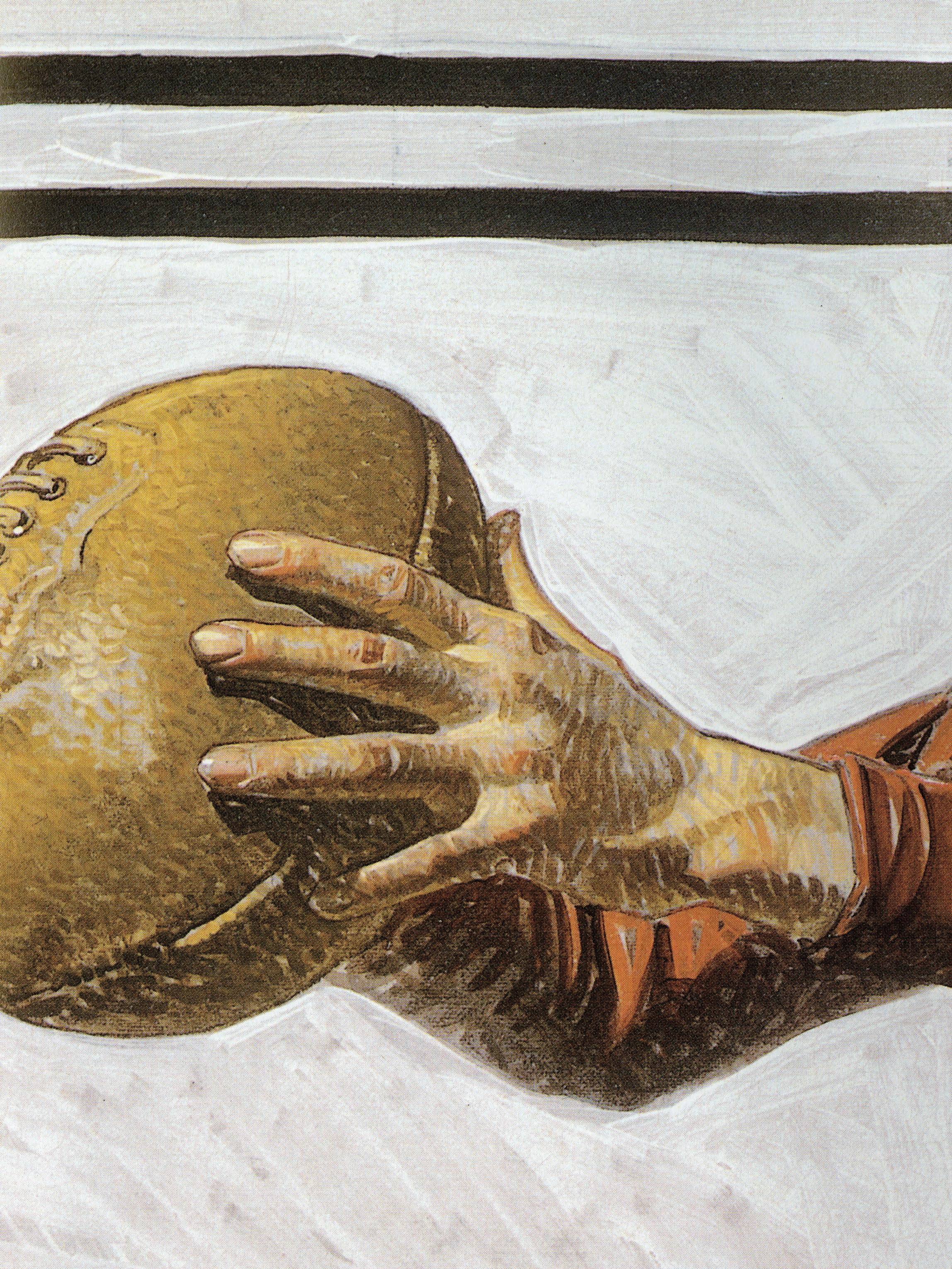
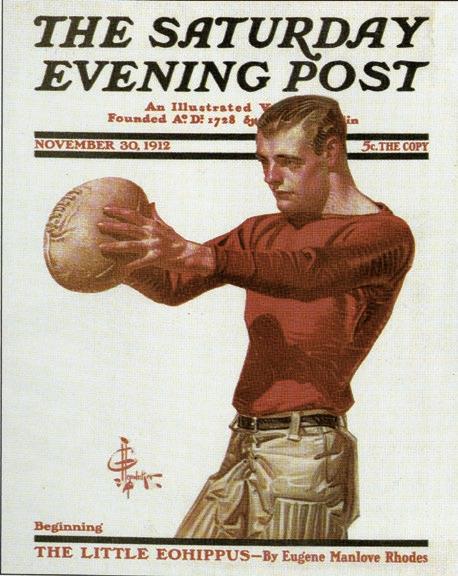 The Saturday Evening Post [November 30, 1912]
The Saturday Evening Post [November 30, 1912]

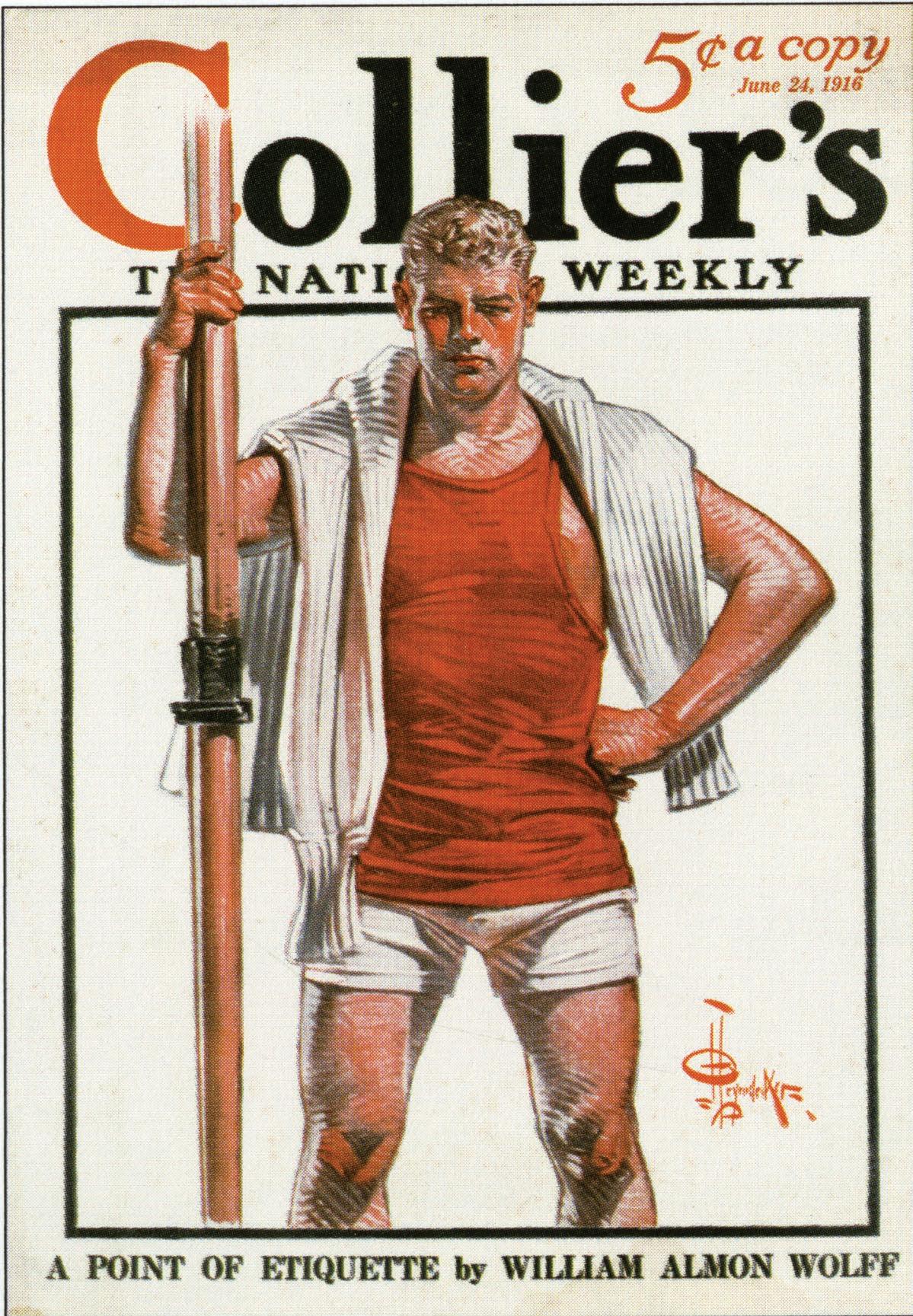
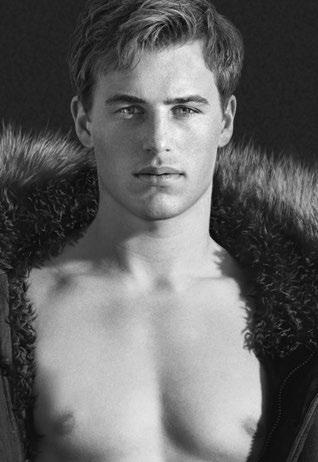
Paul Hesse’s “Swing It Brother!” poster for the U.S. Navy Industrial Incentive Division features a buff, mallet-wielding man posing in front of a drydock—an unmistakable portrayal of power. Hesse, who had a career drawing portraits of Hollywood stars after the war, endows his model with matinee-idol looks and the nonchalant expression of an ingénue waiting for a close-up shot, the arc-welding protective eyewear appearing uncannily like a pair of the teashades John Lennon would make famous two decades later.
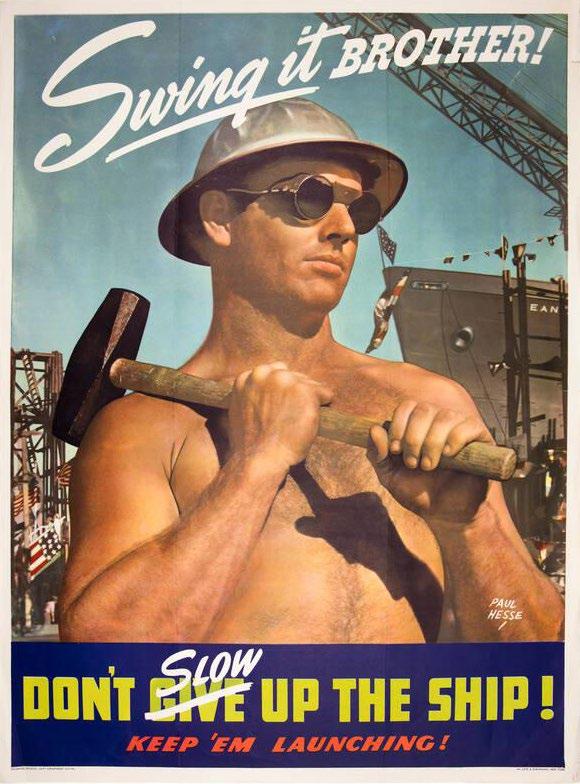
Division
ABOVE: Stephen Williams, illustrator “Ready, Join U.S. Marines” poster, 1942 28" x 40"
Image: Smithsonian National American History Museum
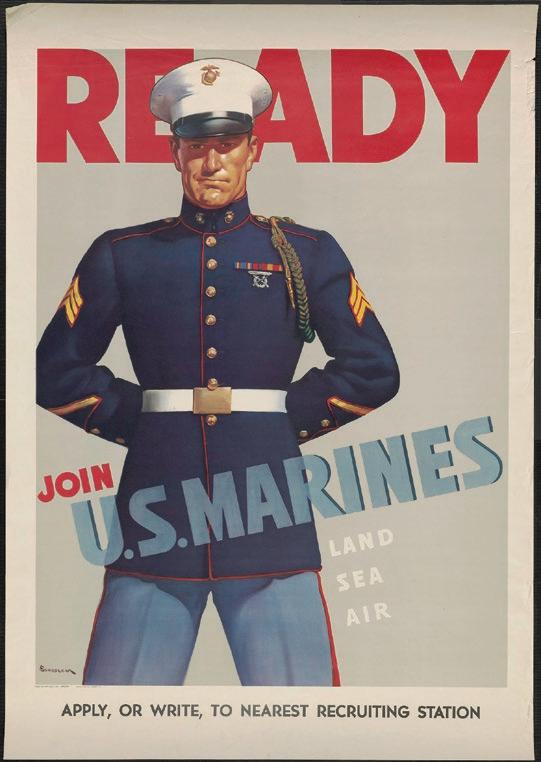
Recruitment posters for the United States Armed Forces during World War II depicted the male body as ripped, sweaty, and ready for action. Why wouldn’t gay men want to enlist?
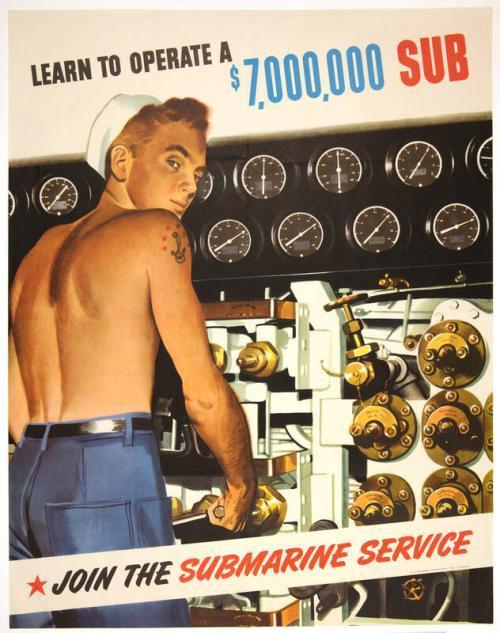
This poster art, produced between 1942 and 1945, presented hypermasculine illustrations meant to represent not only the strength and power of the American man, but also the wartime resolve of the United States itself. Despite their shared aspects of conspicuous intimacy and implied eroticism, recruitment posters from this era display a remarkable variety of styles of masculinity.
“Pour It On!,” produced by the War Production Board in 1942, is the most impressive of these examples. Standing more than six feet in height, the poster depicts a towering, shirtless, muscle-bound figure pouring a stream of fighter aircraft out of a giant ladle. With a physique and a color scheme reminiscent of a Tom of Finland portrait, the poster exhibits a perfect form of machismo imagery, one that appealed to rhetorical norms of masculine power, aggression, and domination. A similar effect is visible in the U.S. Marine Corps’ “Ready” poster, which employs a statuesque figure of manly virility to entice its viewers to join their ranks.
However, even in these traditional portrayals, there is a range of physical features and a hush-hush awareness of different ways of performing the masculine ideal.
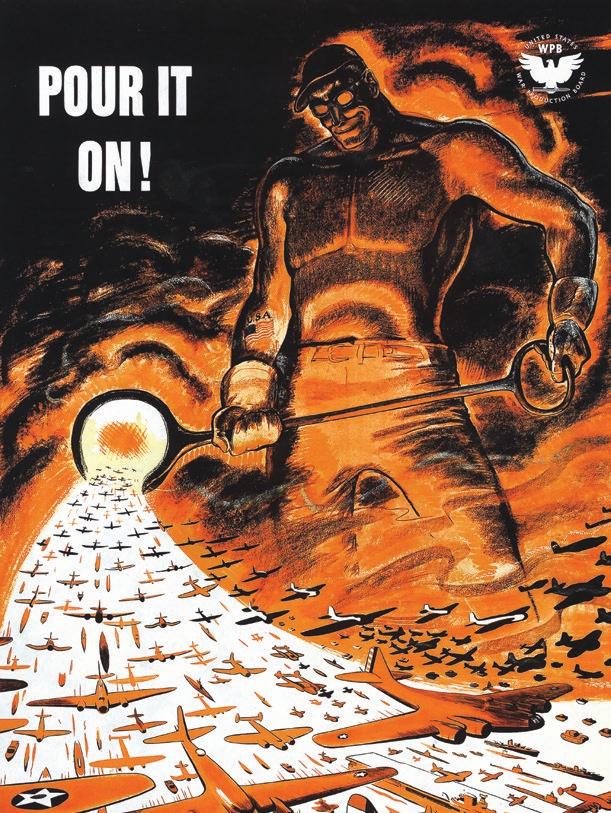
These images presented an idealized vision of commanding masculinity— butch, assertive, and productive. Yet, in their kitschy exaggeration of the male form and their susceptibility to artistic license, they nonetheless left themselves open to interpretations by both artist and viewer, which allowed a degree of queerness to slip between the cracks.
Queered depictions of masculinity were not limited to stereotypically “masc” figures, nor were they incessant appeals to brute force. A 1944 recruitment poster for the U.S. Navy, “Learn to Operate a $7,000,000 Sub,” features an overtly erotic subject. Shirtless and wearing only a sailor’s cap and tight blue trousers that accentuate every inch of his perky posterior, the figure, positioned in front of an array of knobs and dials, recalls a slender adolescent form of masculinity rather than the herculean variety seen in “Pour It On.”
With his suntanned back turned away from the viewer, the figure looks mischievously over his shoulder with a boyish countenance and a cocked eyebrow. The come-hither look further eroticizes the placement of the model’s hand as it grips an unmistakably phallic lever positioned at waist height. The poster’s queered portrayal of martial masculinity shows how subverting dominant norms of masculine behavior was used to disseminate messages of wartime recruitment just as potently as traditional appeals to virility.
Jes Wilhelm Schlaikjer’s “Service Above Self,” created for the U.S. Army Medical Department in 1942, shows a wounded soldier being tended to by an Army medic in the ruins of a smoldering battlefield. The medic—square-jawed and standing as stoically erect as the Marine in “Ready”— cradles the head of his wounded compatriot like a Renaissance depiction of the Madonna and Child as he pours the contents of his canteen toward the soldier’s mouth.
The poster is a masterpiece of juxtaposition: The tenderness between the two soldiers lies in stark contrast with the horror of the battlefield behind them, just as the reassuring command of the medic contrasts the thirsty helplessness of his patient. Though wrapped in bandages, the wounded soldier shows off a chiseled physique, eliciting a sense of masculine strength and vulnerability. The overall impression of the image is one of gentleness and intimacy while also offering a counterintuitive example of how, wittingly or not, the U.S. government’s efforts to boost the war effort fashioned an array of masculine ideals—many of them perceptibly queer— for American men to aspire to.
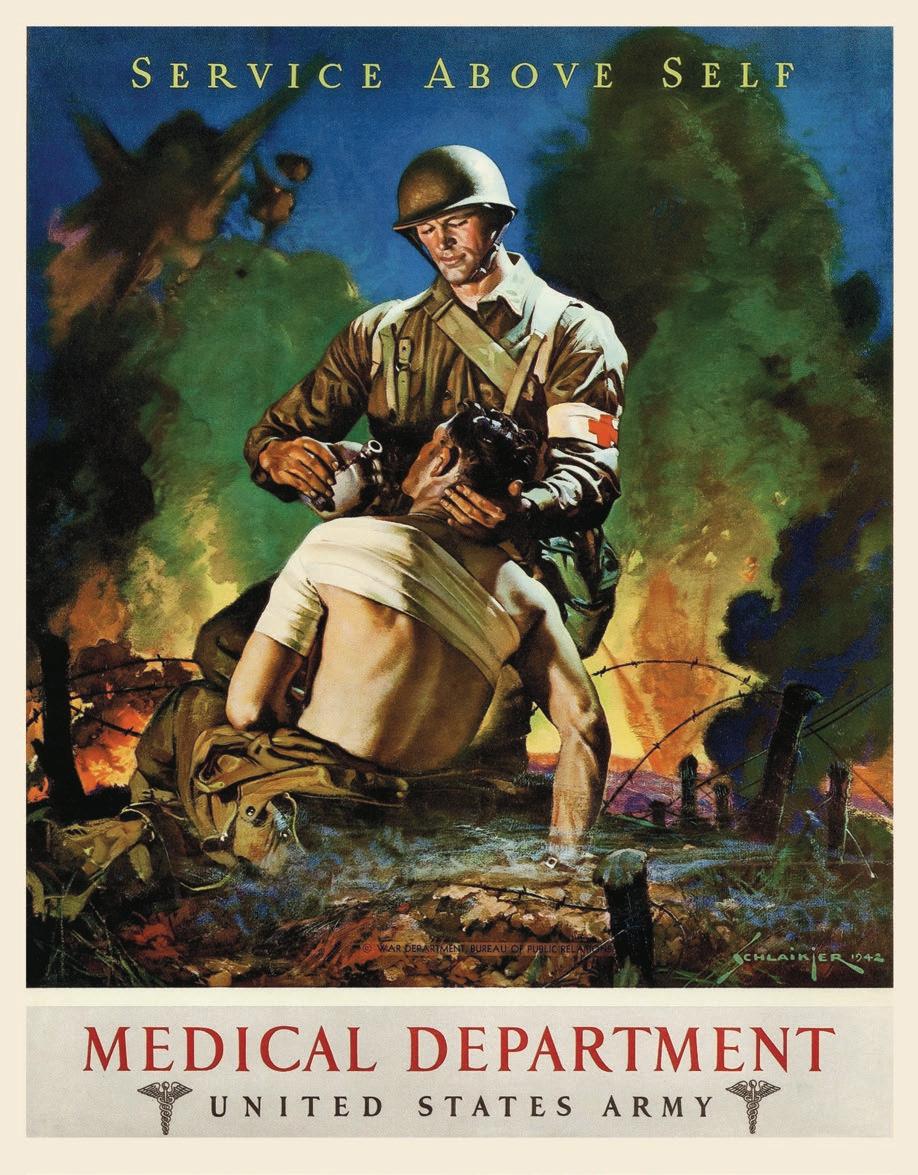
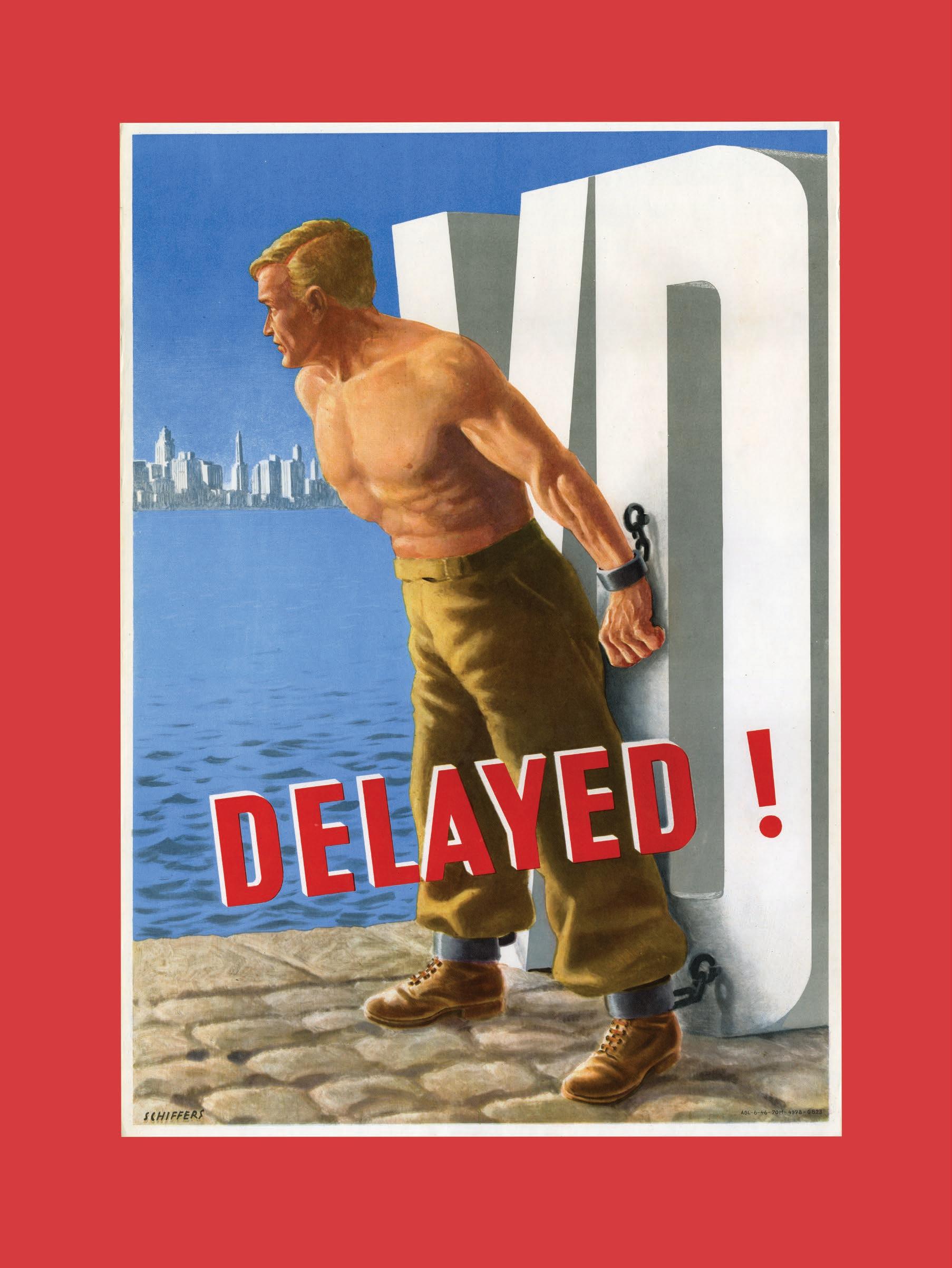
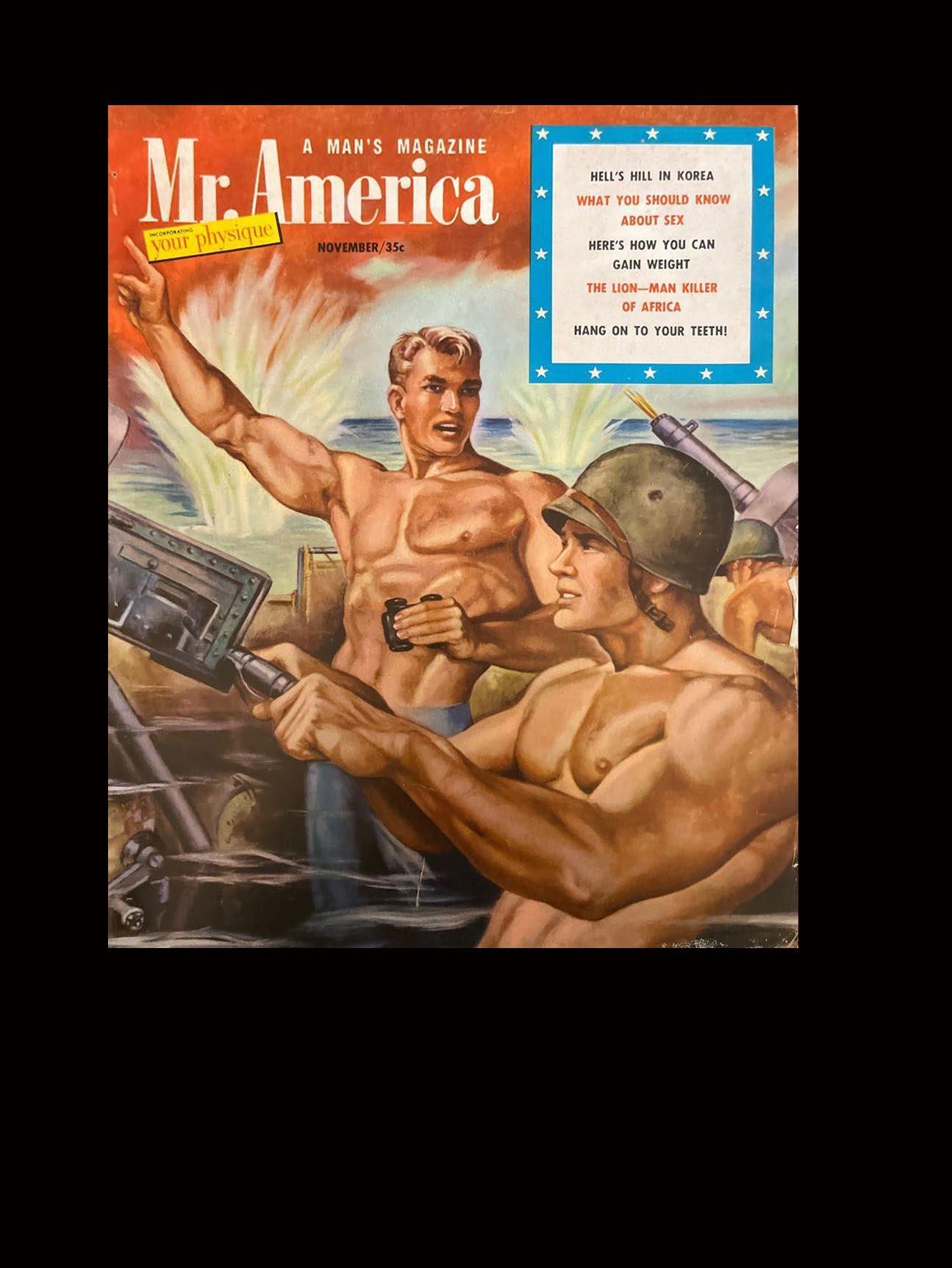 Army boys shirtless and rippled muscles off to battle.
Army boys shirtless and rippled muscles off to battle.
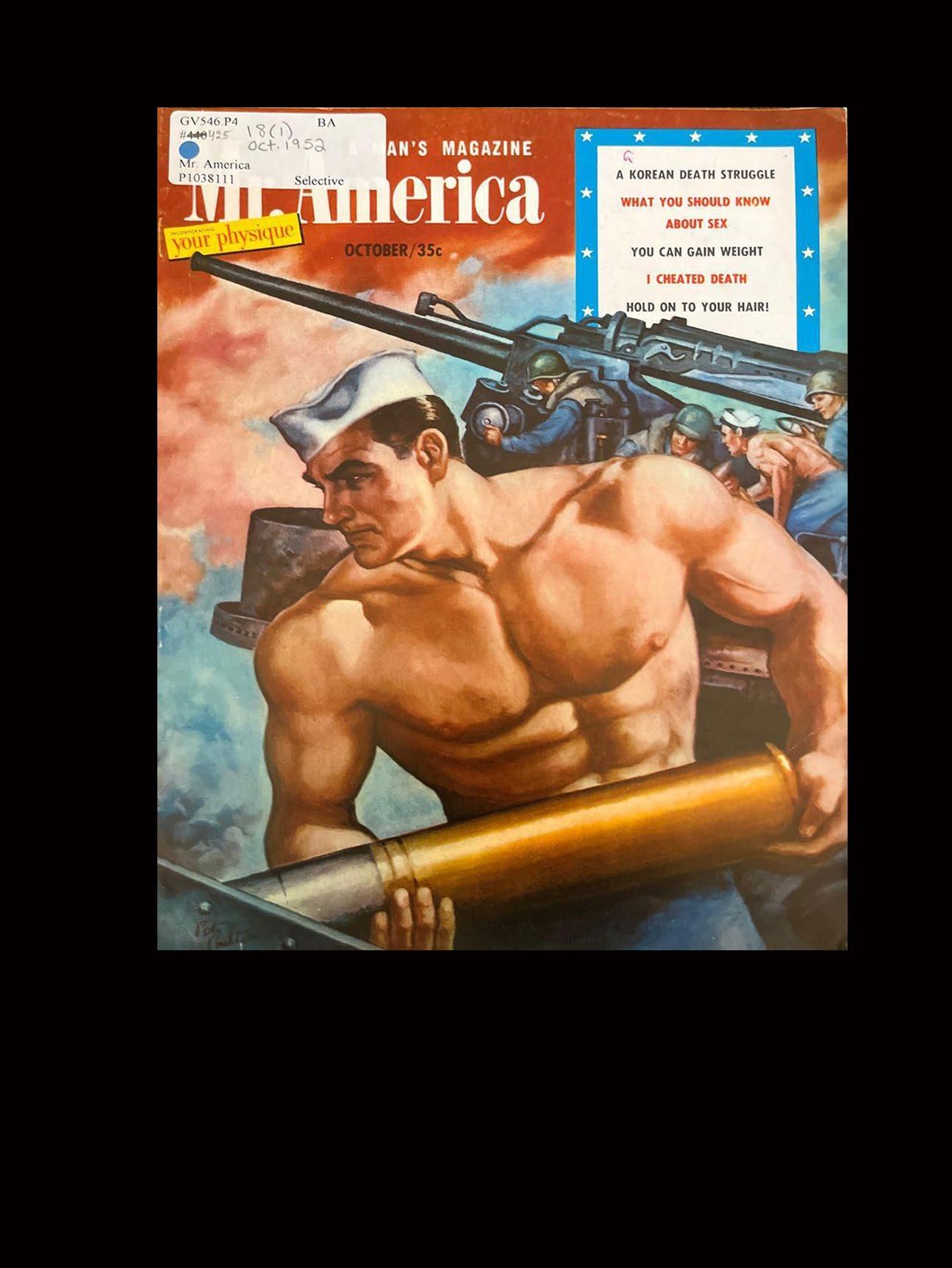
Born Nelson Poulton in Barnesville, Ohio, Peter Poulton (also known as N. Peter and Peter N. Poulton) was one of the many artists who entered the science fiction field during the boom years of the early 1950s, soon distinguishing himself as one of the very best. His father, Elmer Antone Poulton, was a painter who also worked as an interior decorator in Barnesville for many years. The elder Poulton was recognized as a master craftsman, so it is possible that Peter learned his skills from him. Poulton apparently had only one year of college before enlisting in the Army in 1942, though little else is known about his formal education or career. Poulton lived in California during the war, and left afterward to live and work in New York City. He never married, died in New York at fifty-eight, and was buried at the Long Island National Cemetery.
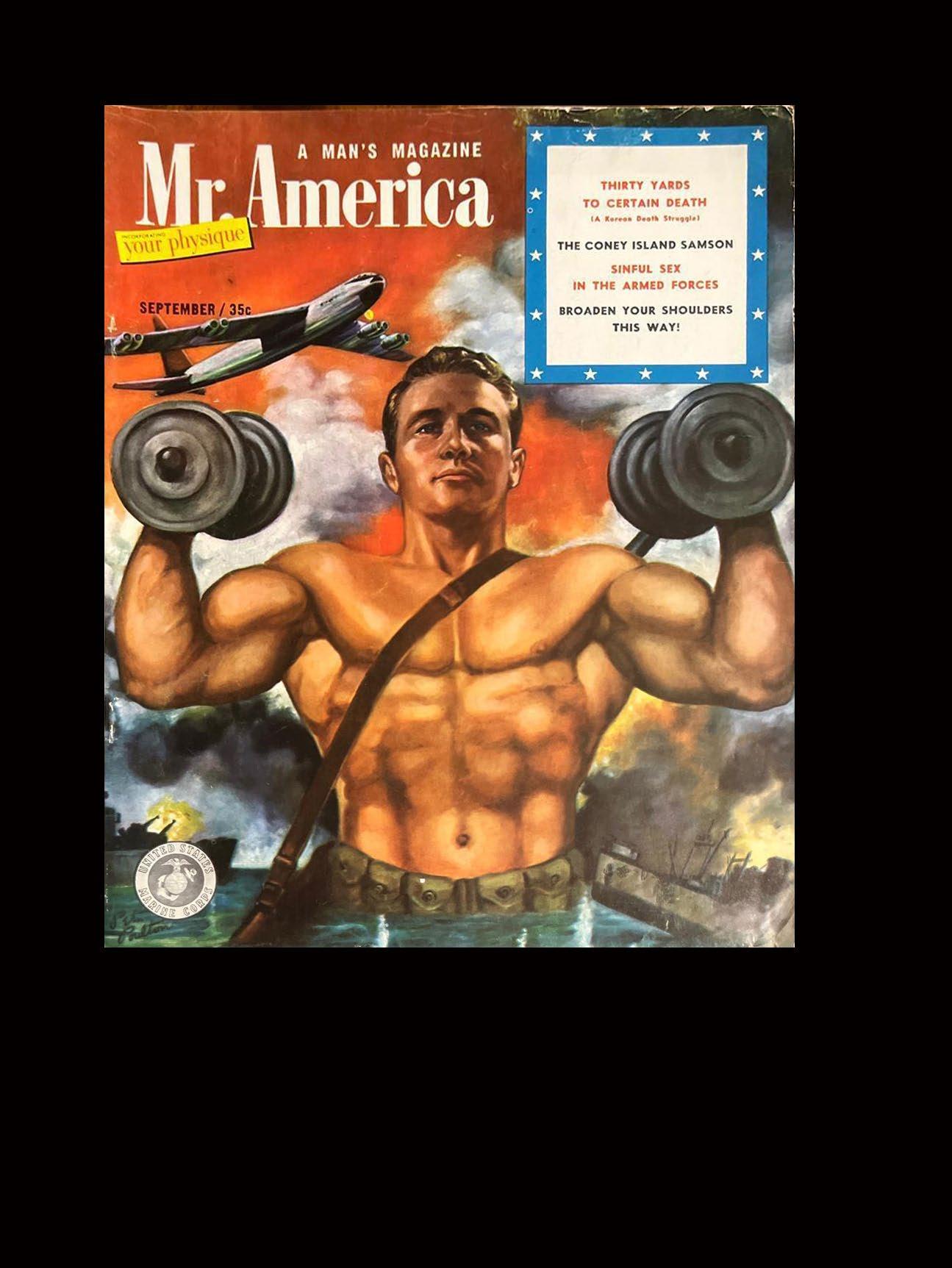 Peter Poulton Mr. America magazine covers, 1952 Oil on canvas board 18" x 23.88”
Hot belly buttoned Air Force lifting weights.
PETER POULTON
Peter Poulton Mr. America magazine covers, 1952 Oil on canvas board 18" x 23.88”
Hot belly buttoned Air Force lifting weights.
PETER POULTON
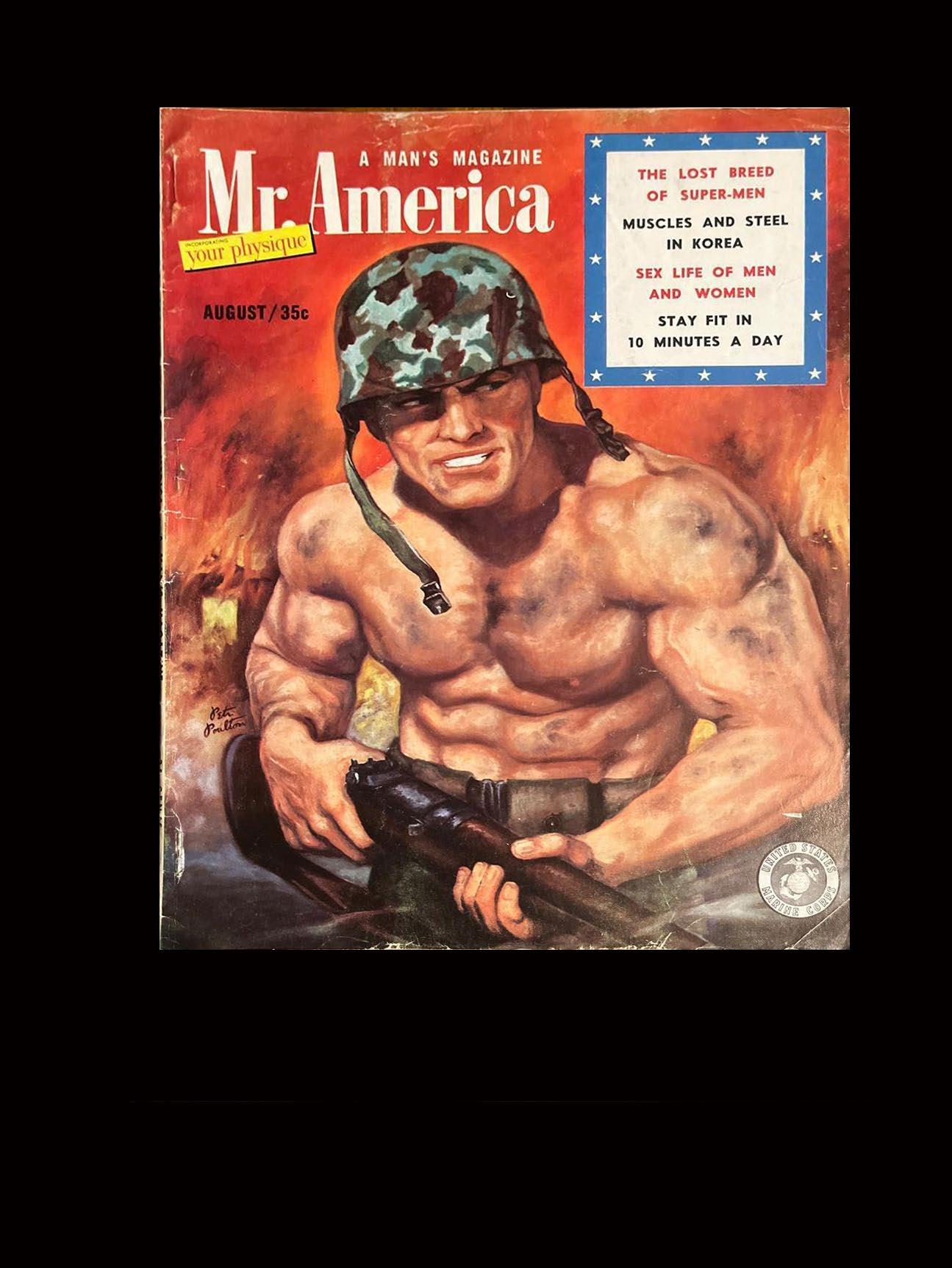 Peter Poulton
Mr. America magazine covers, 1952
Oil on canvas board 18" x 23.88”
Peter Poulton
Mr. America magazine covers, 1952
Oil on canvas board 18" x 23.88”
DON'T ASK; DON'T TELL.
Each of these six ads features muscular military men representing all branches of the armed services cavorting naked. As in many consumer advertisements of the day, the company reminds customers of possible wartime product shortages. Since women were doing most of the towel buying, it is safe to assume that the targeted audience consisted mainly of women.
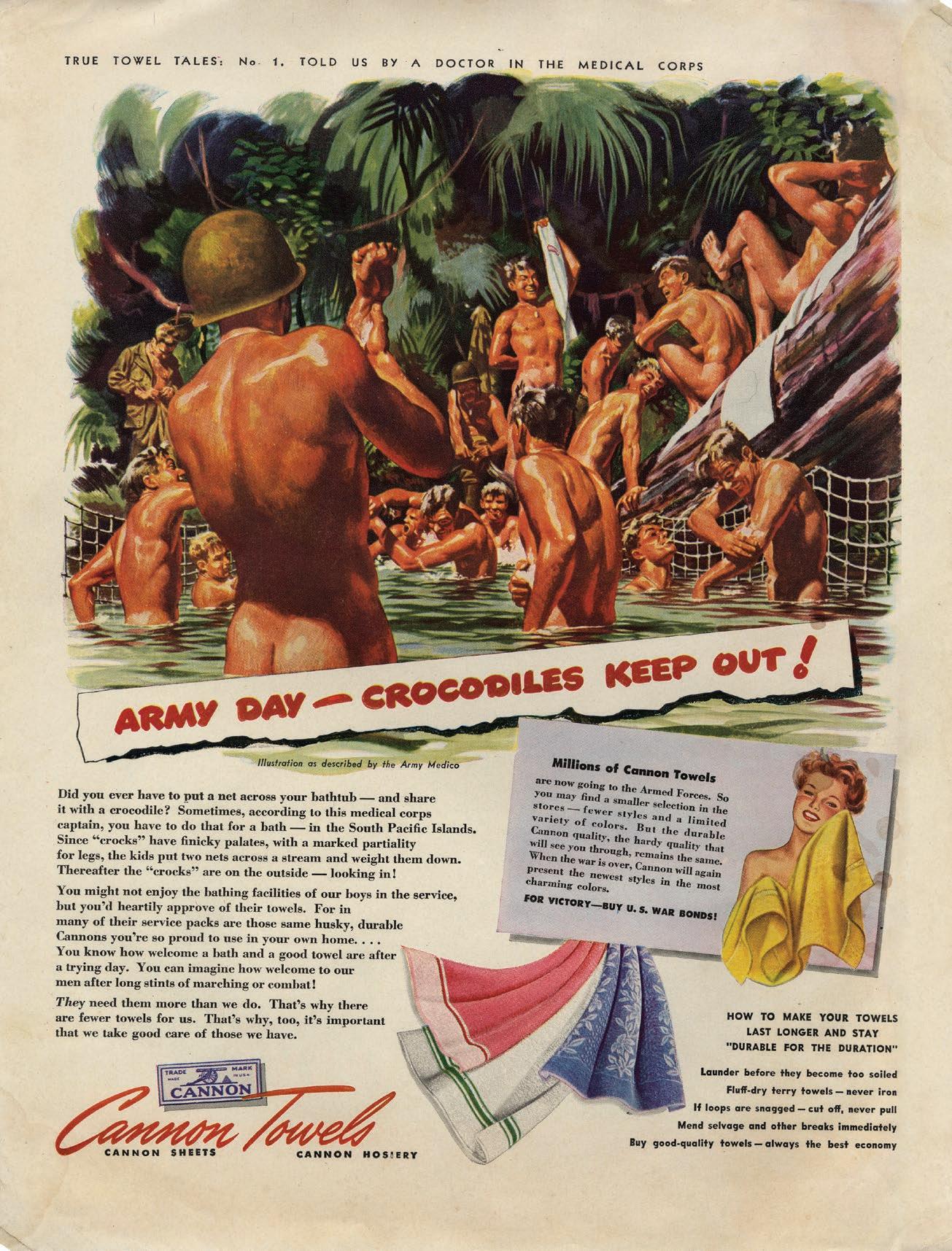
Stevan Dohanos, illustrator
True Towel Tales, 1944
Ad series commissioned by the Cannon Towel Company
LIFE magazine
10" x 14"
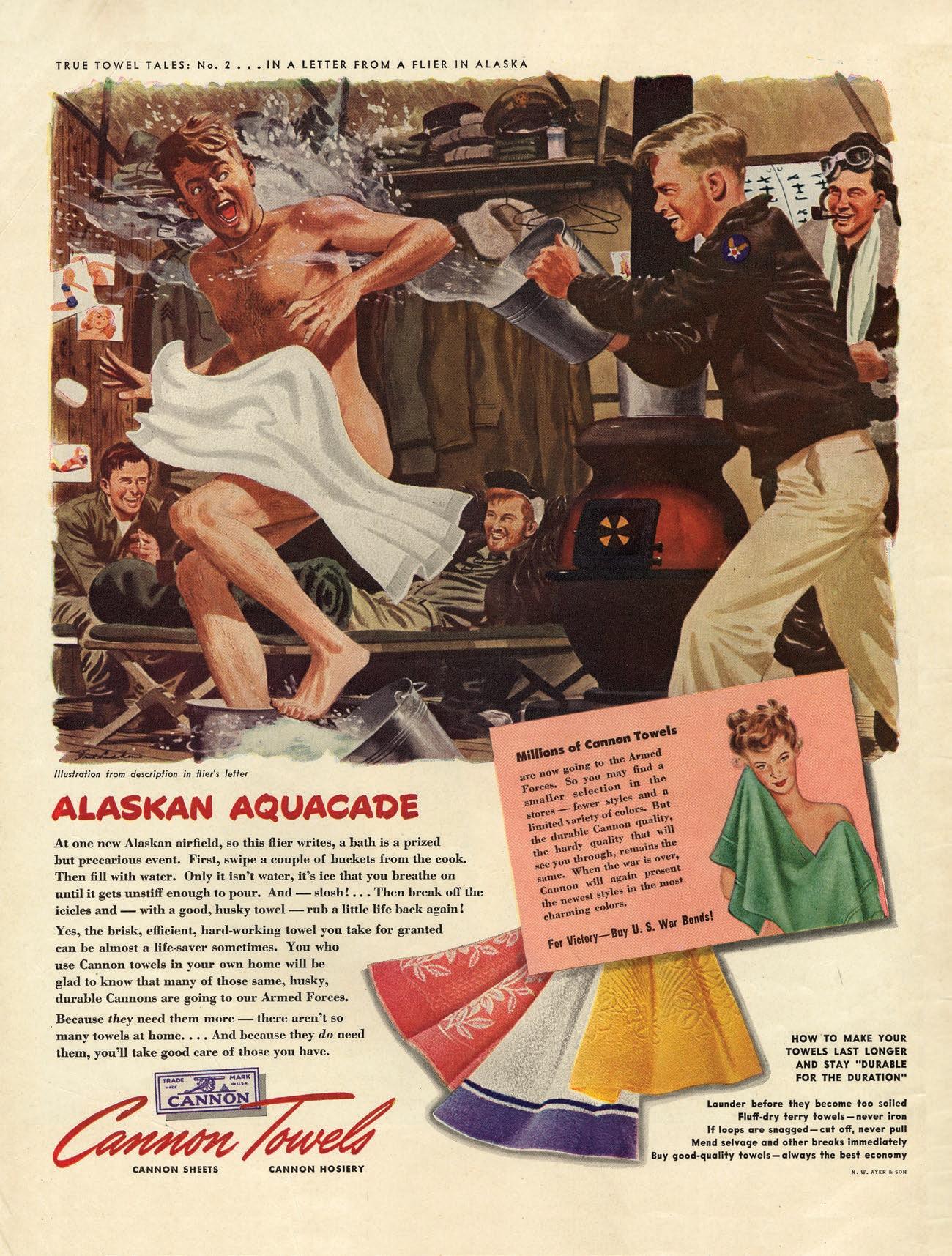
Stevan Dohanos, illustrator True Towel Tales, 1944
Ad series commissioned by the Cannon Towel Company LIFE magazine 10" x 14"
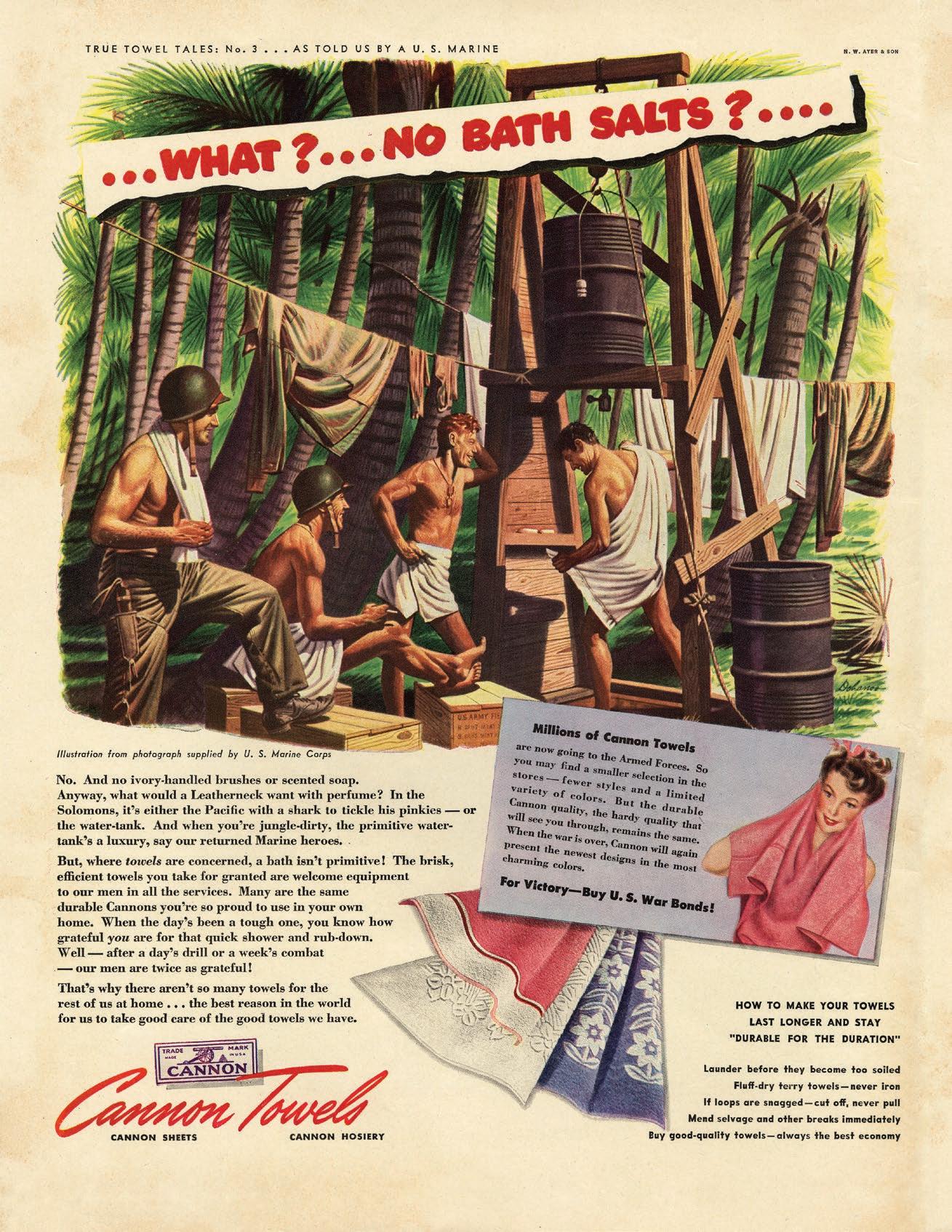
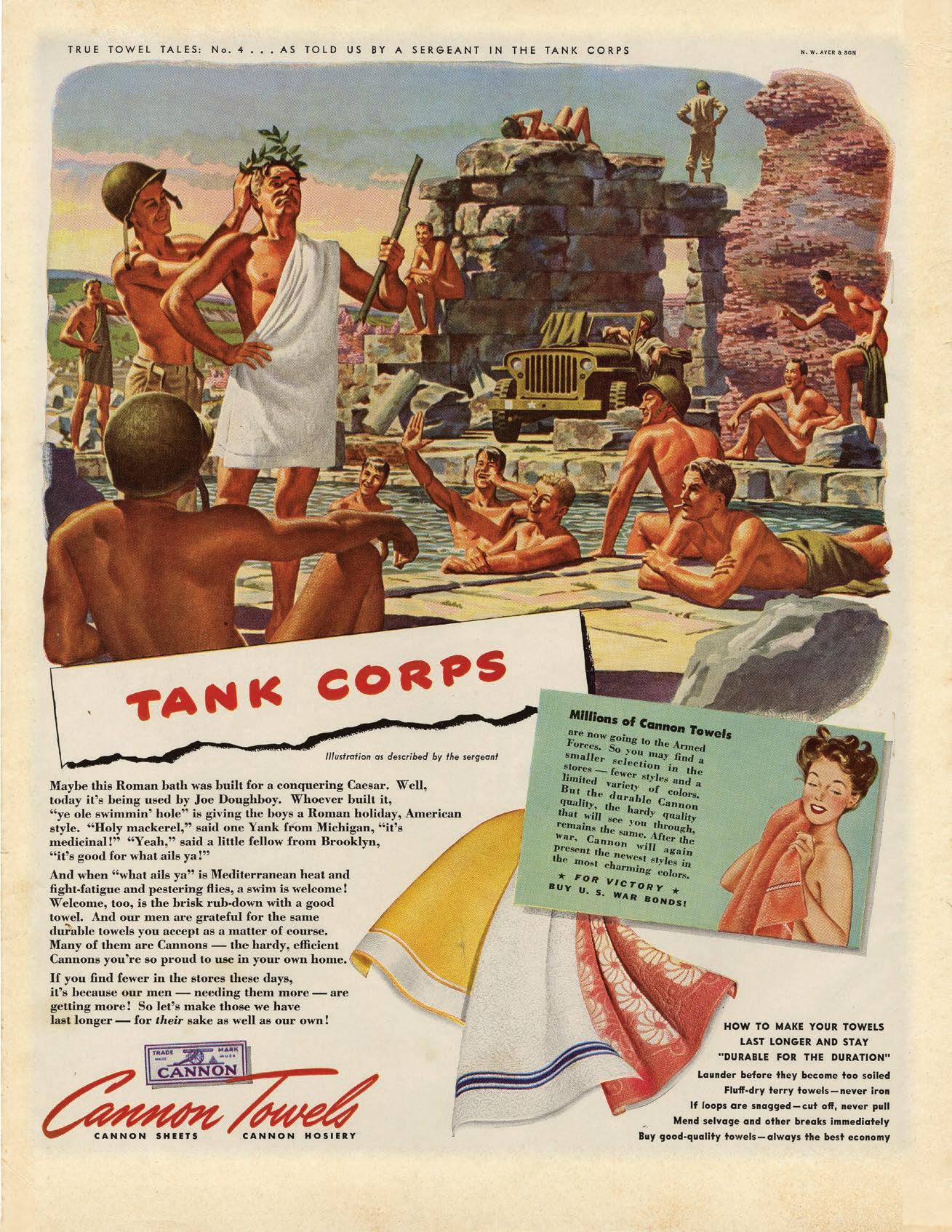
Stevan Dohanos, illustrator True Towel Tales, 1944
Ad series commissioned by the Cannon Towel Company LIFE magazine 10" x 14"
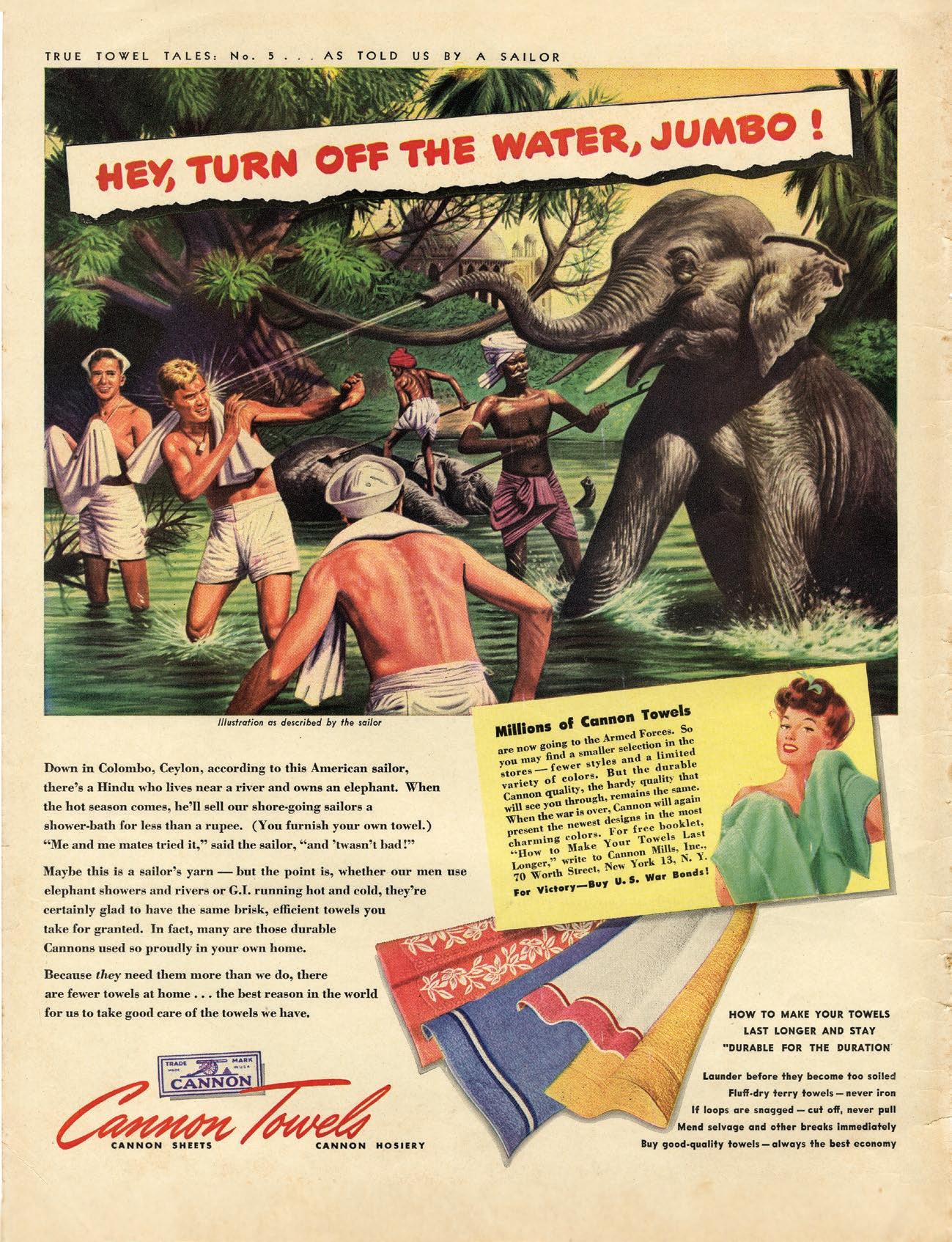
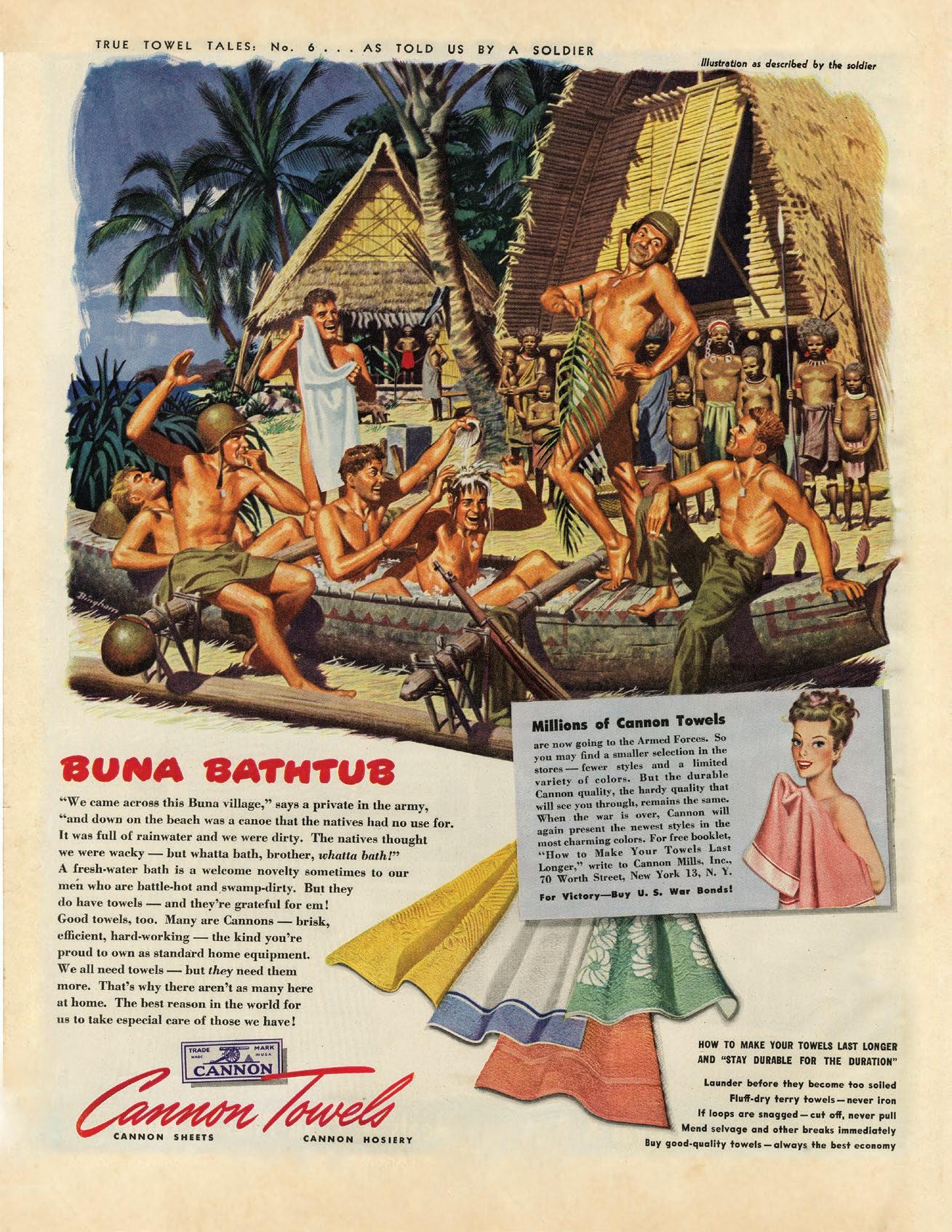
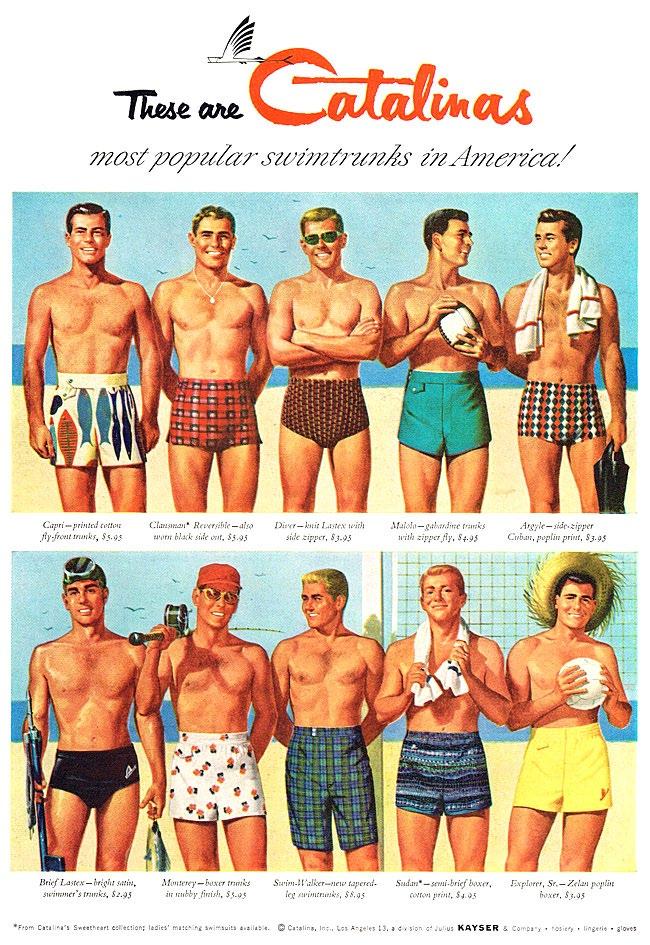
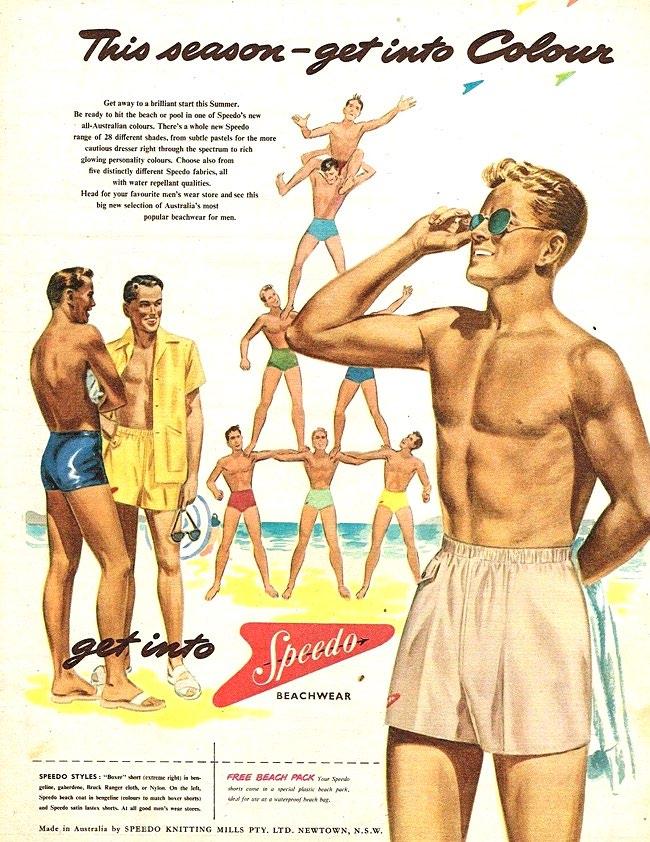
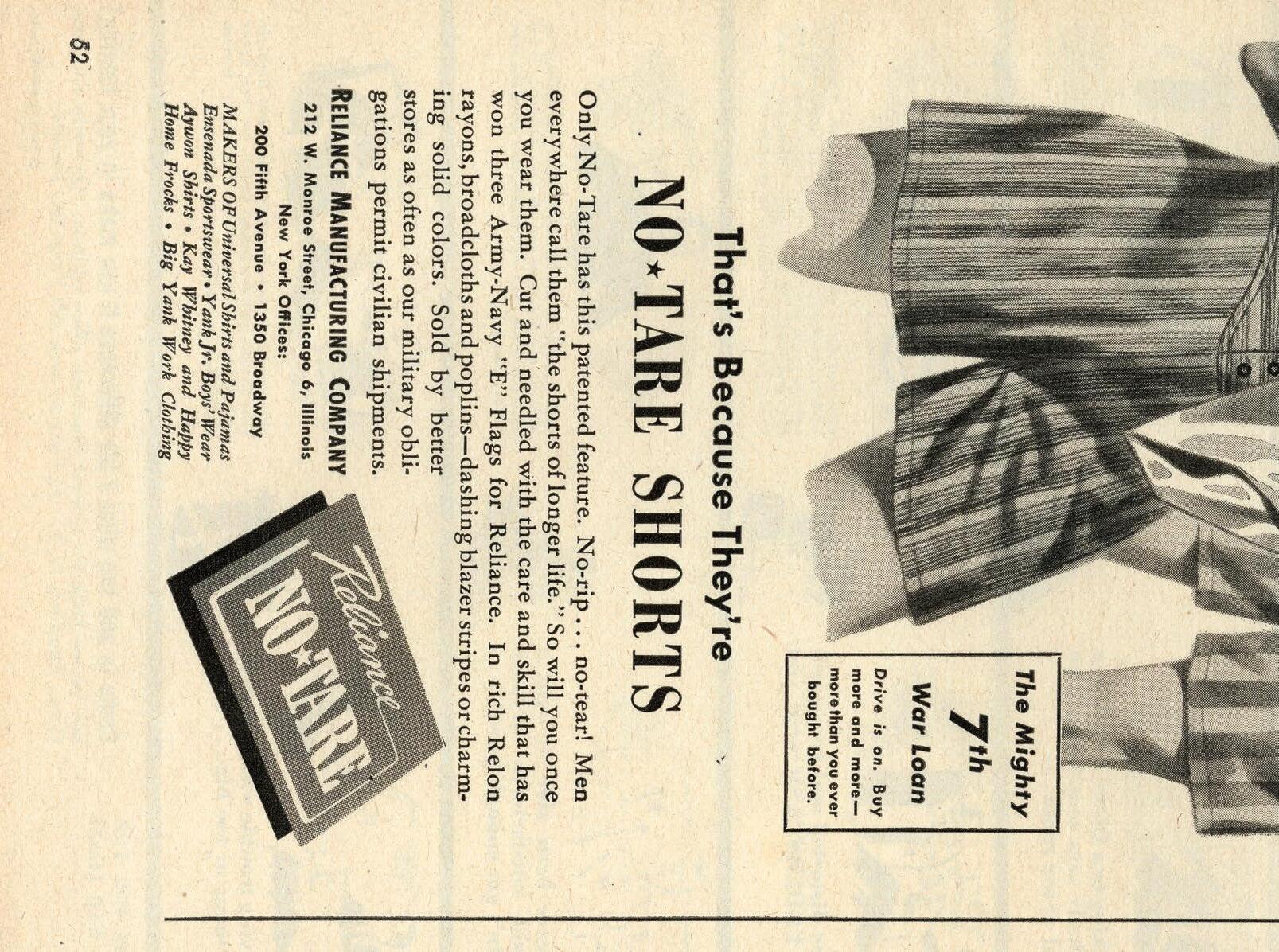
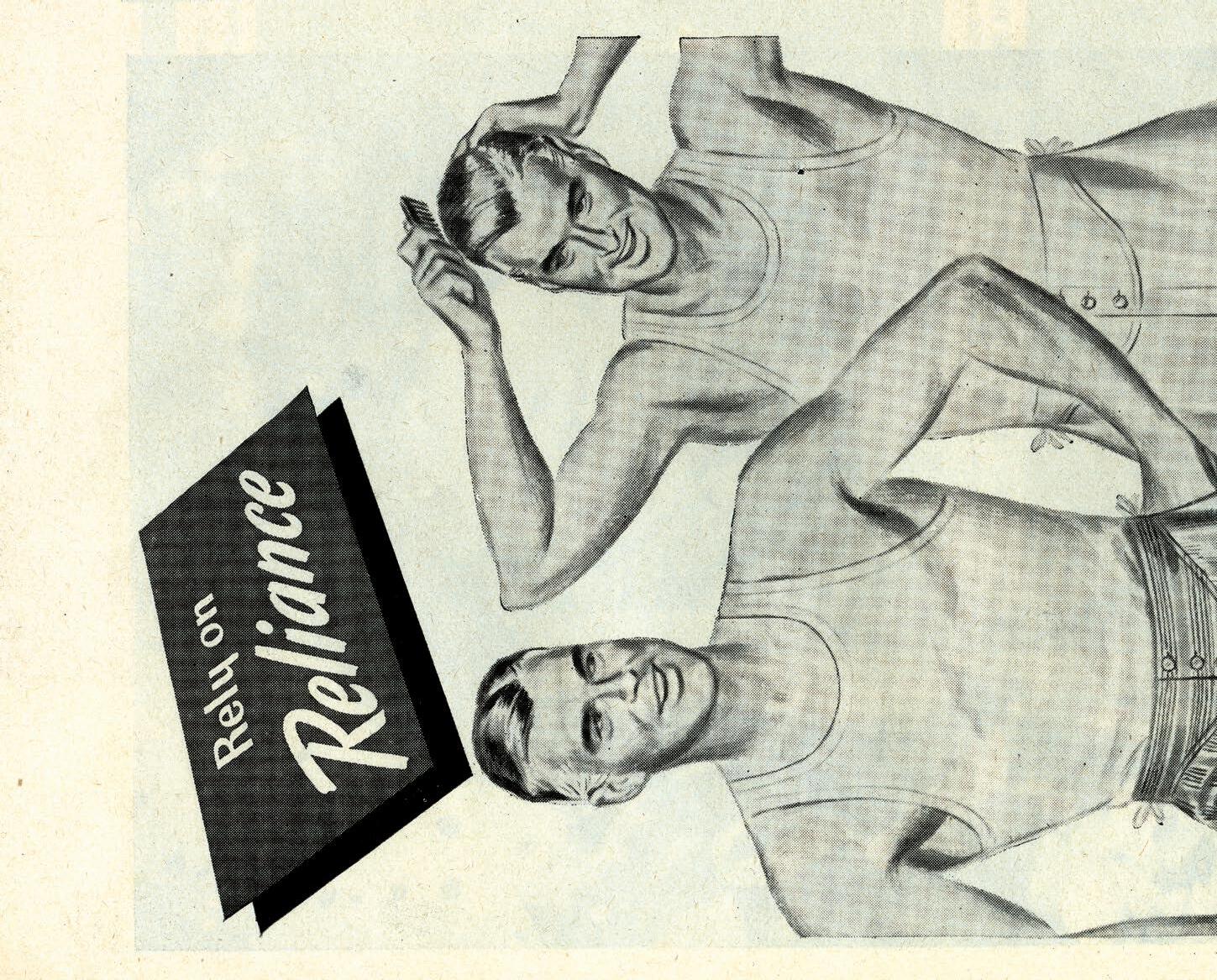
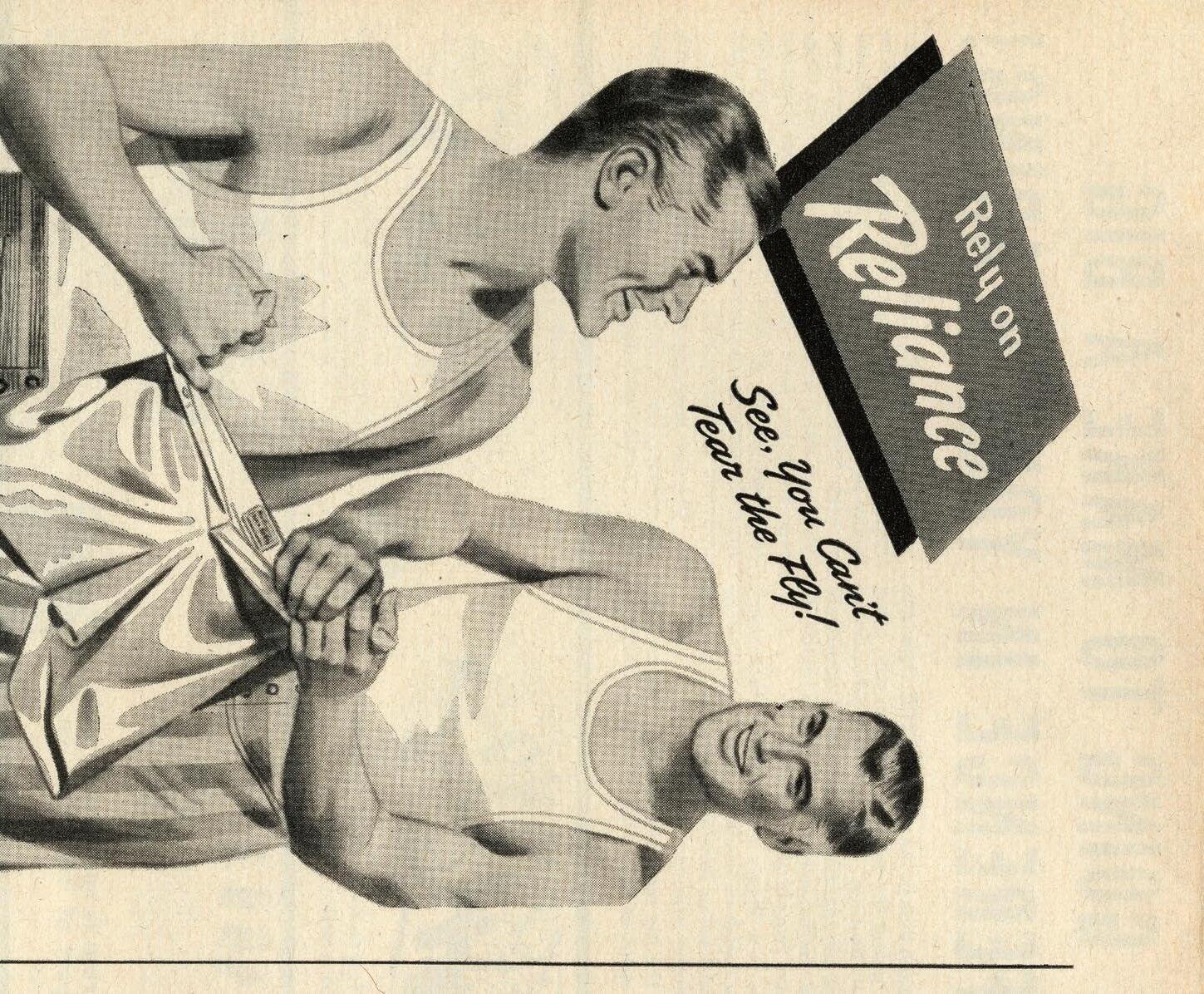
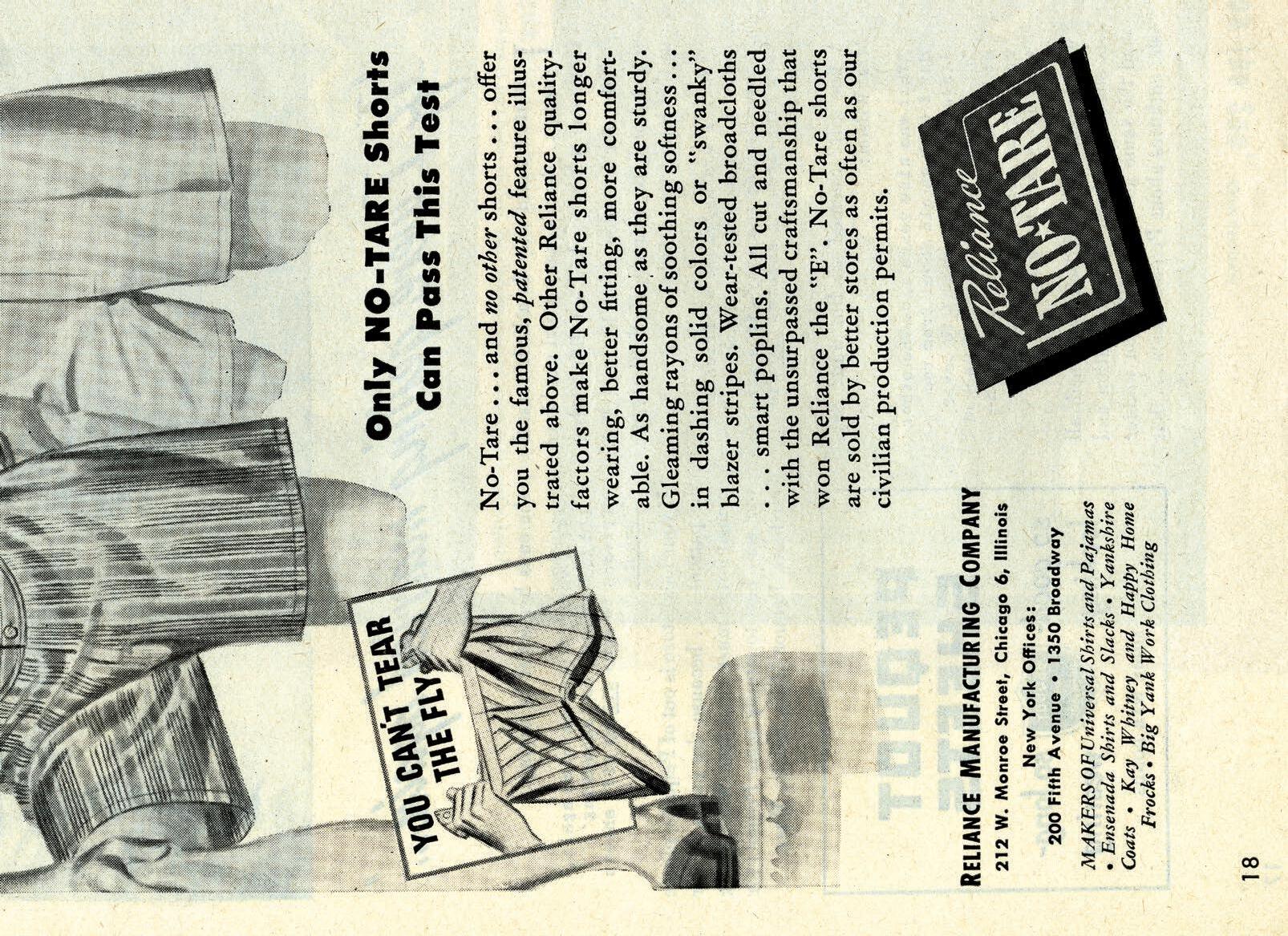
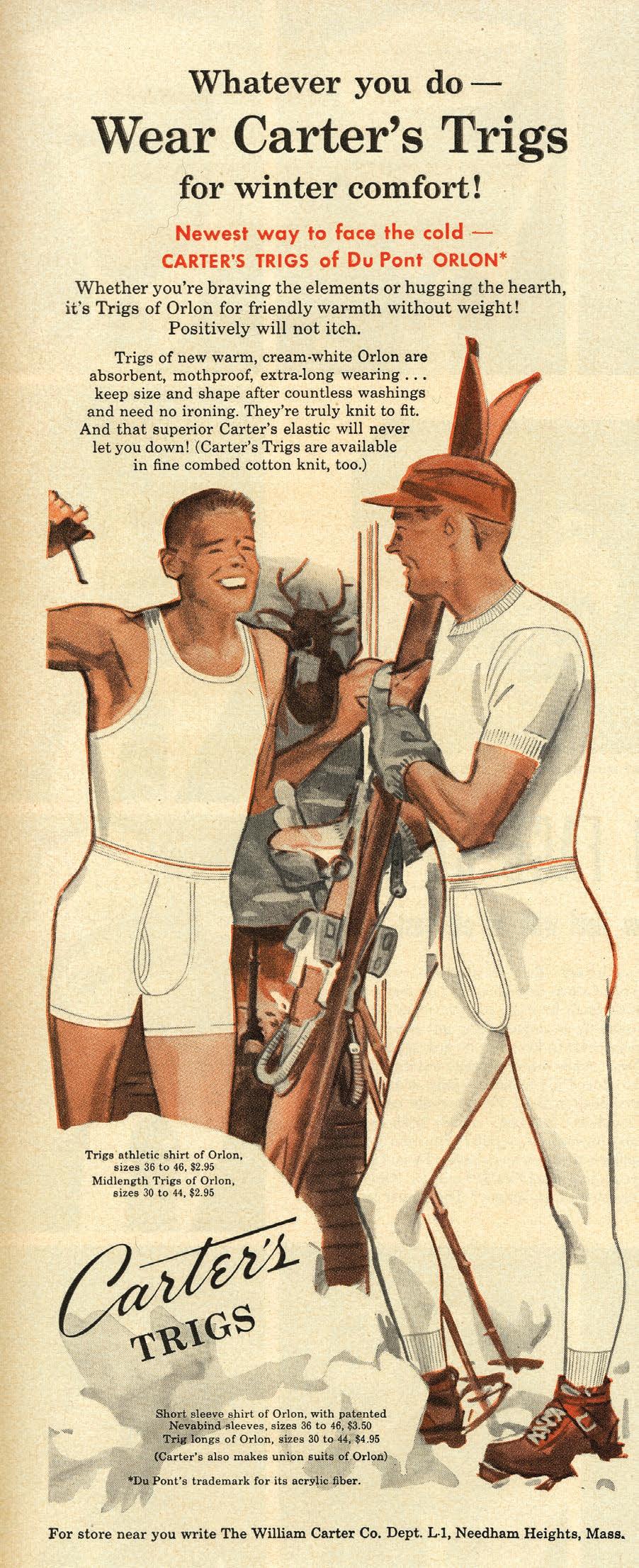

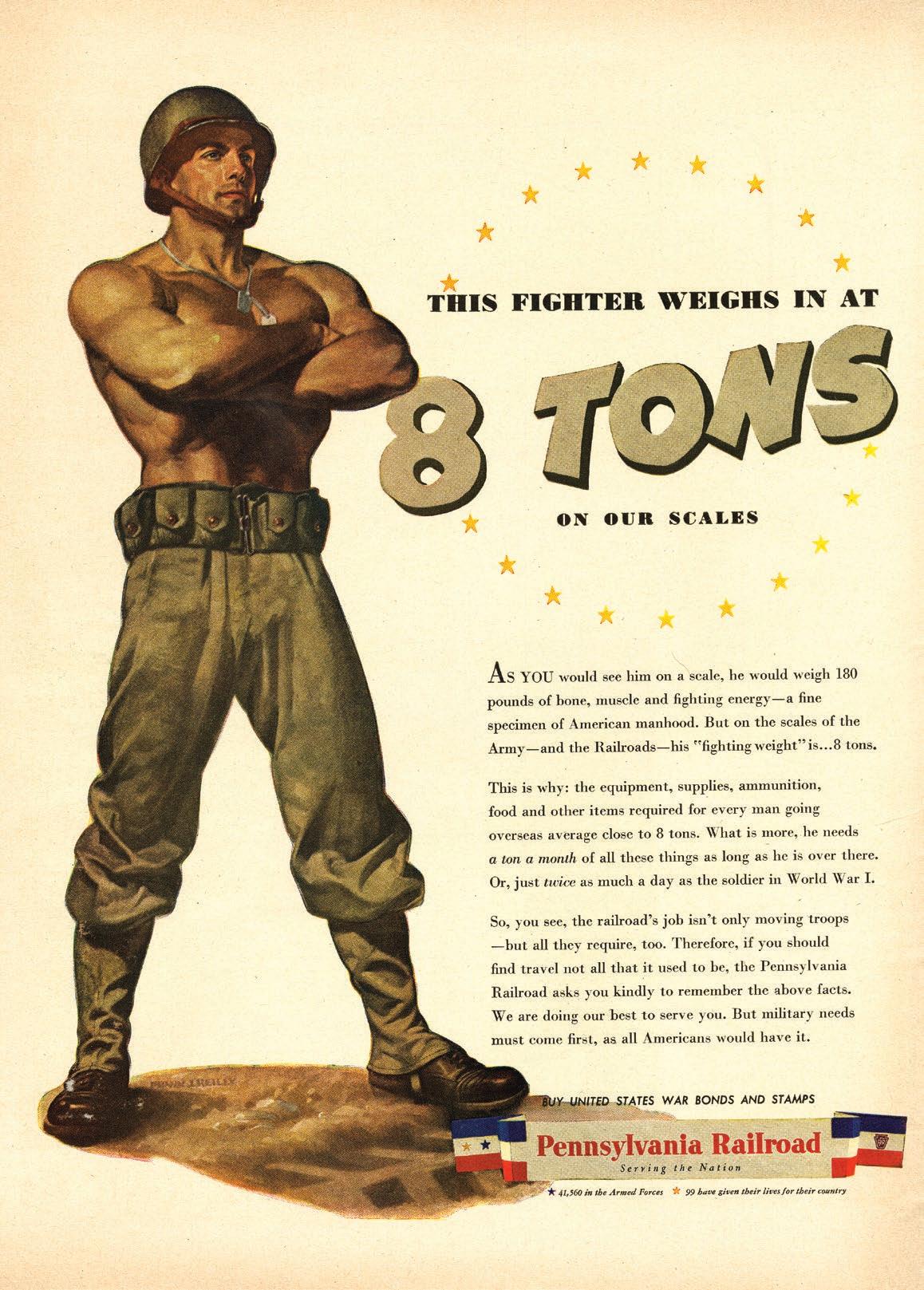
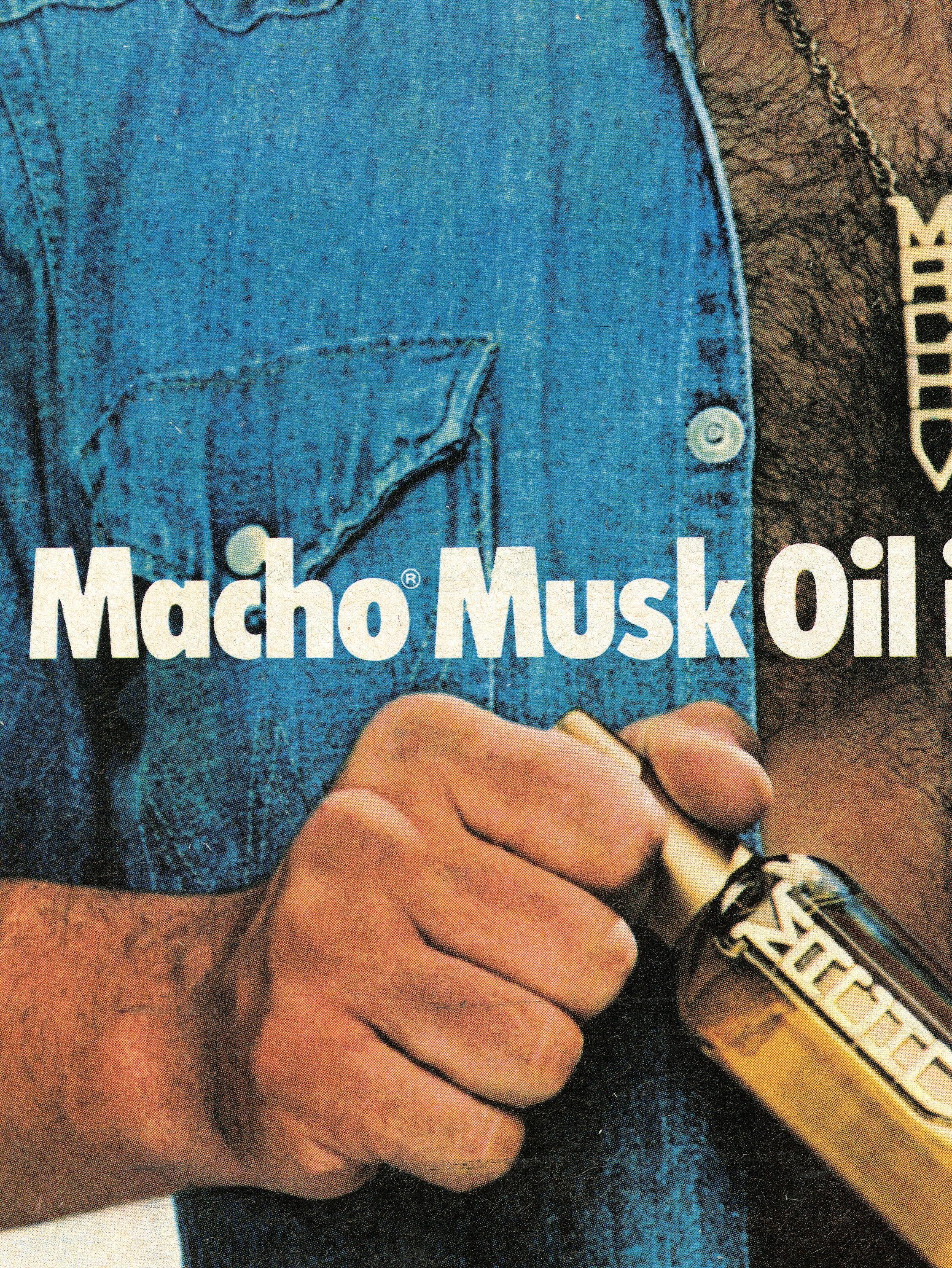
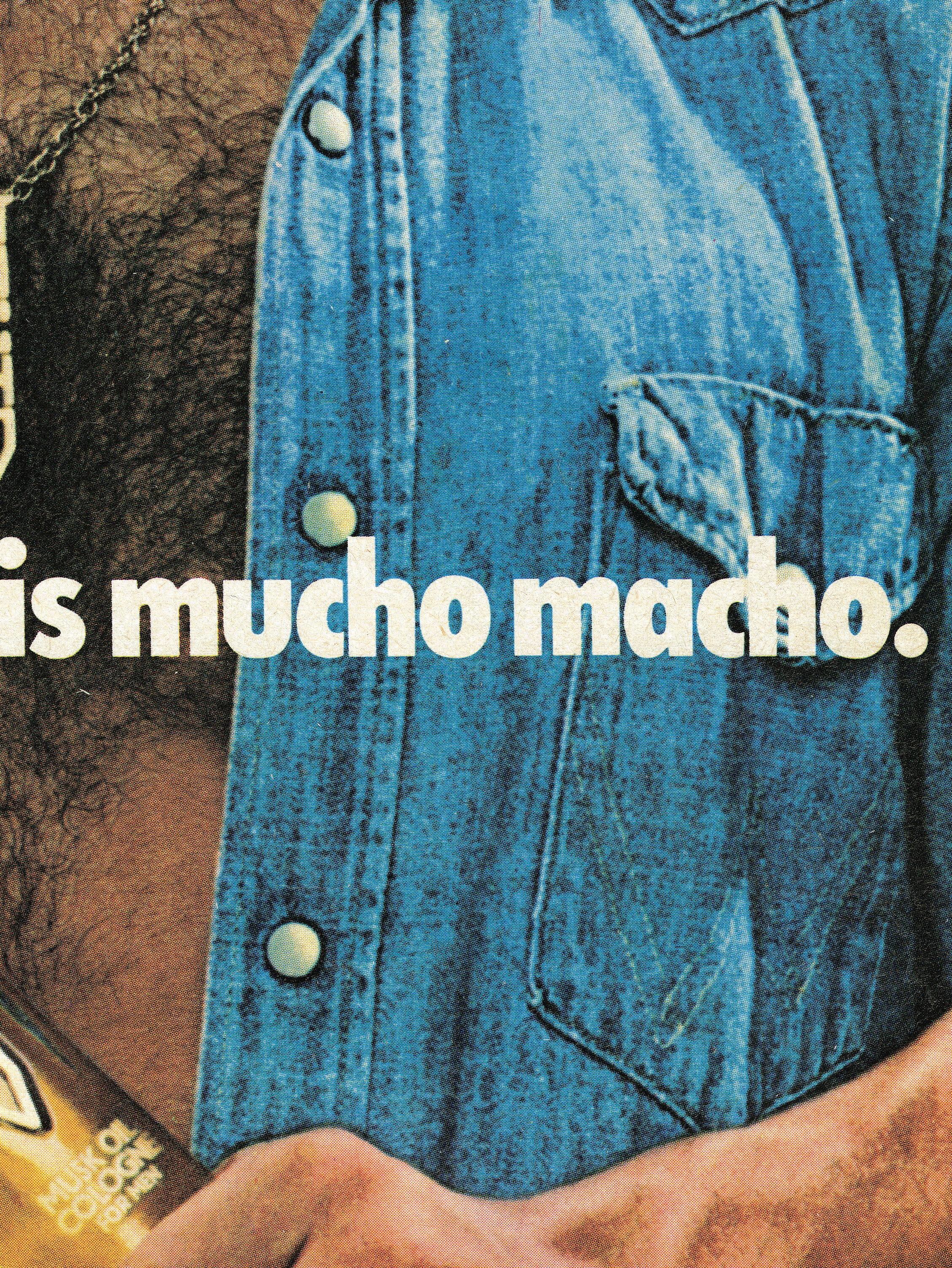
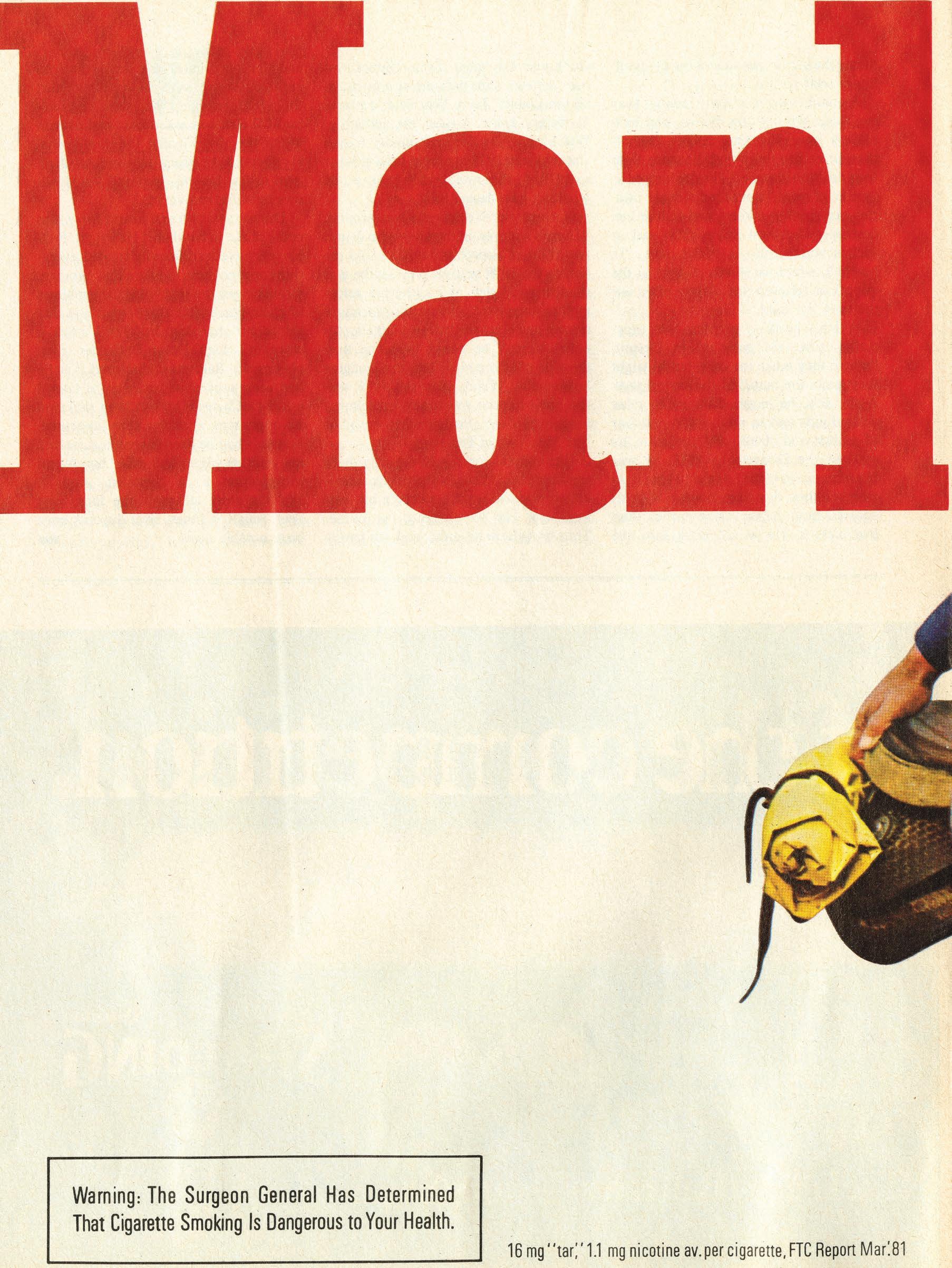
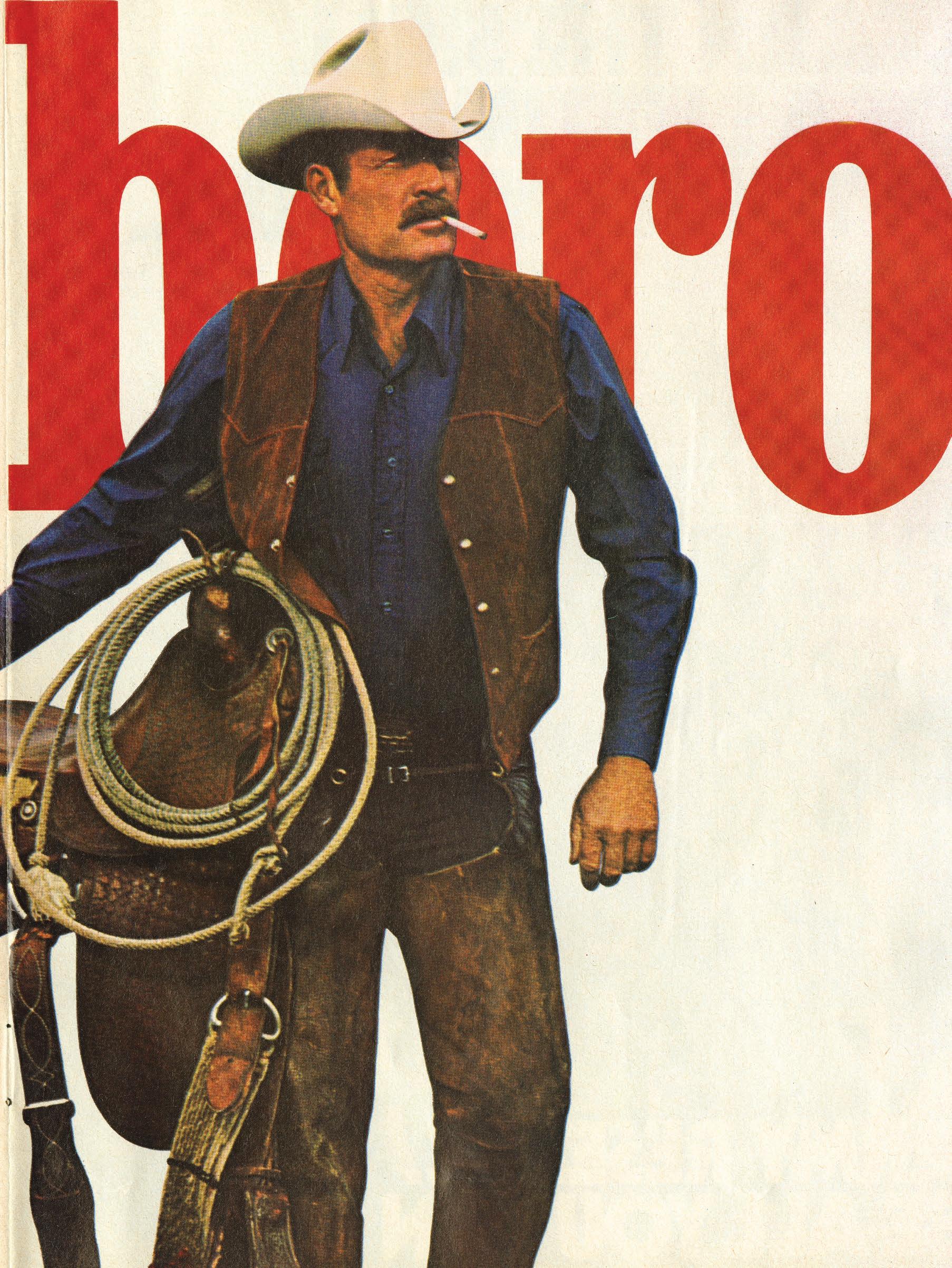
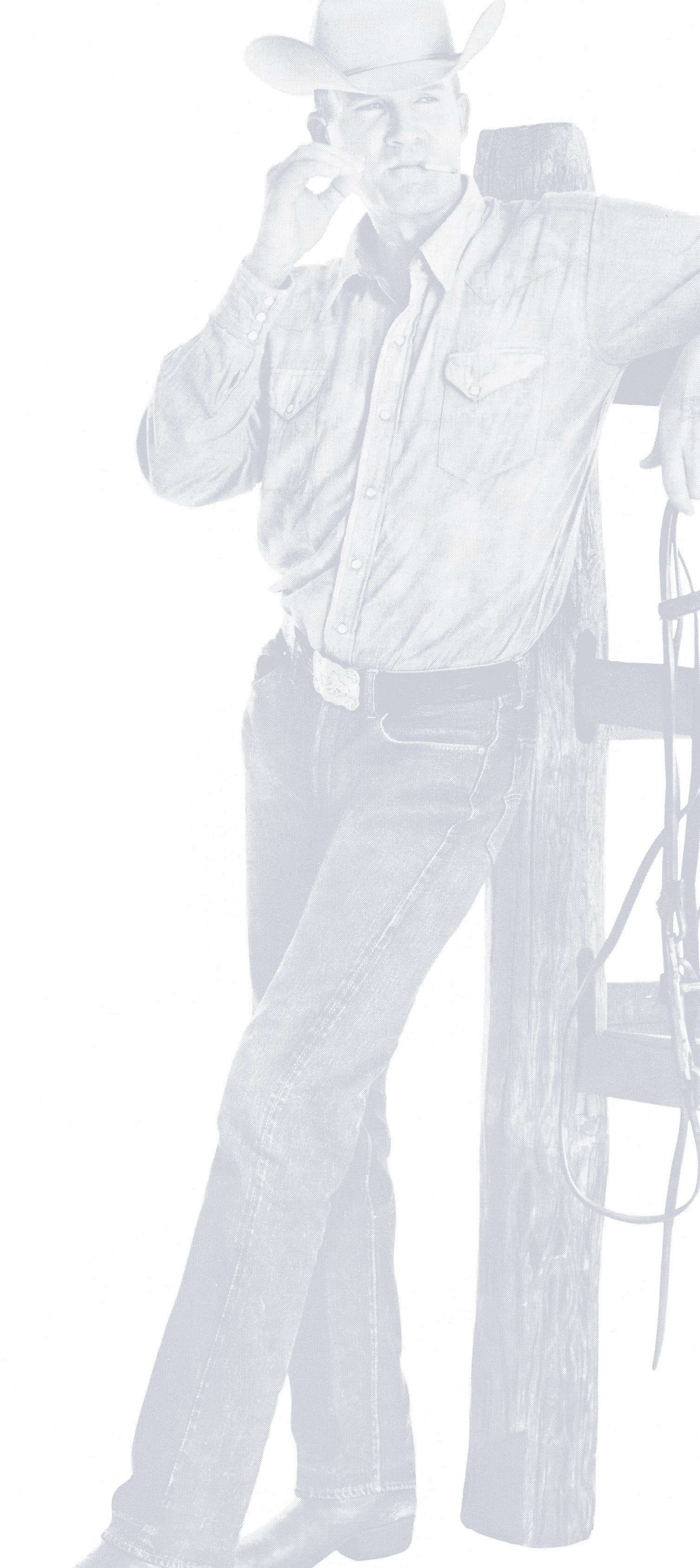
It’s hard to believe today, but Marlboro was initially marketed as a cigarette for women. The brand had targeted a high-class female audience beginning in 1924 with its "Mild as May" campaign. To strengthen its ability to compete with major brands like Lucky Strike, Camel, and Chesterfields in the 1950s, Philip Morris, with the help of the Leo Burnette advertising agency, set out to create a campaign targeted to men.
As iconic as the burly roughrider featured in its ads, Marlboro’s " flip-top-box" became a key selling point for the brand, mirroring the holster that housed a cowboy’s favorite gun. The public embraced the red box as a symbol of membership to a prestigious club, with the Marlboro Man serving as its collective spokesperson. A carrying card available to everyone, Marlboro’s singular packaging proved a visible proof of participation or appreciation for a certain idealized way of life that few get to experience.
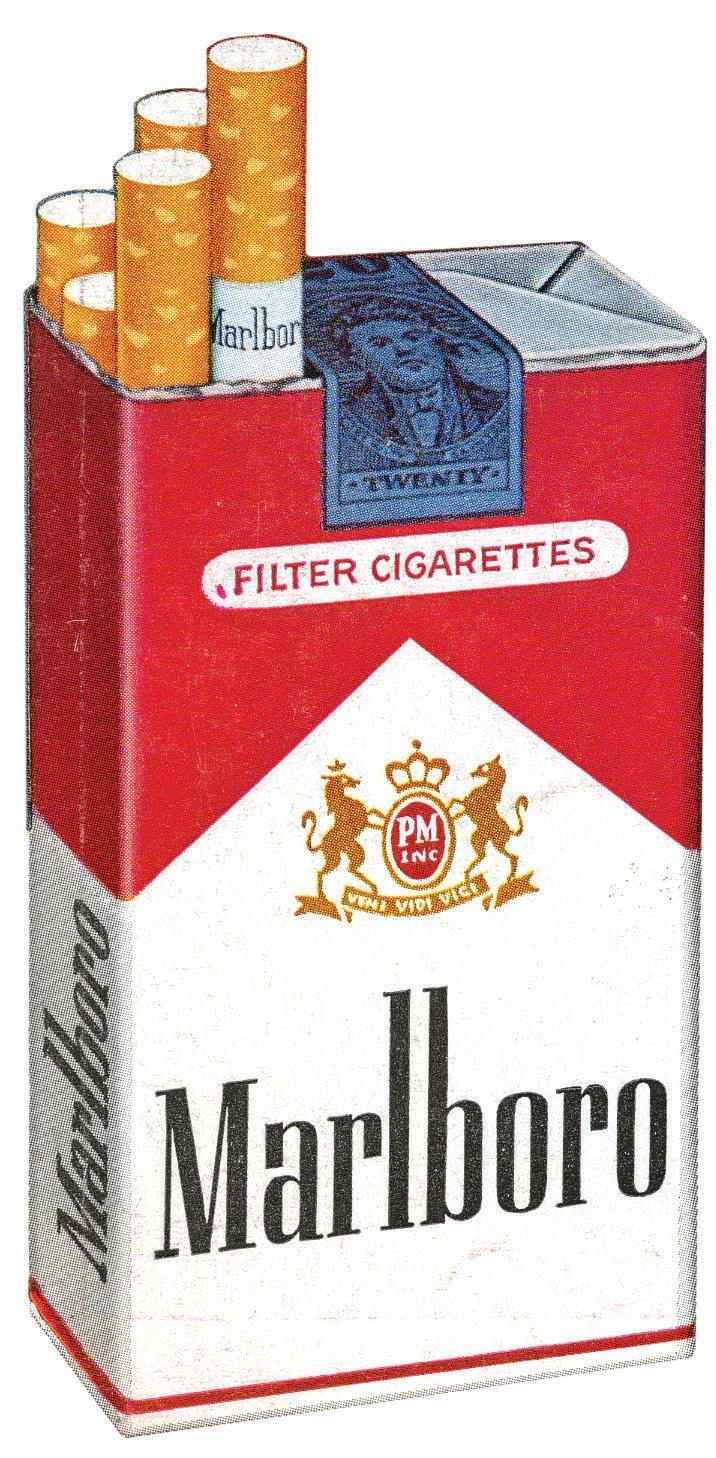

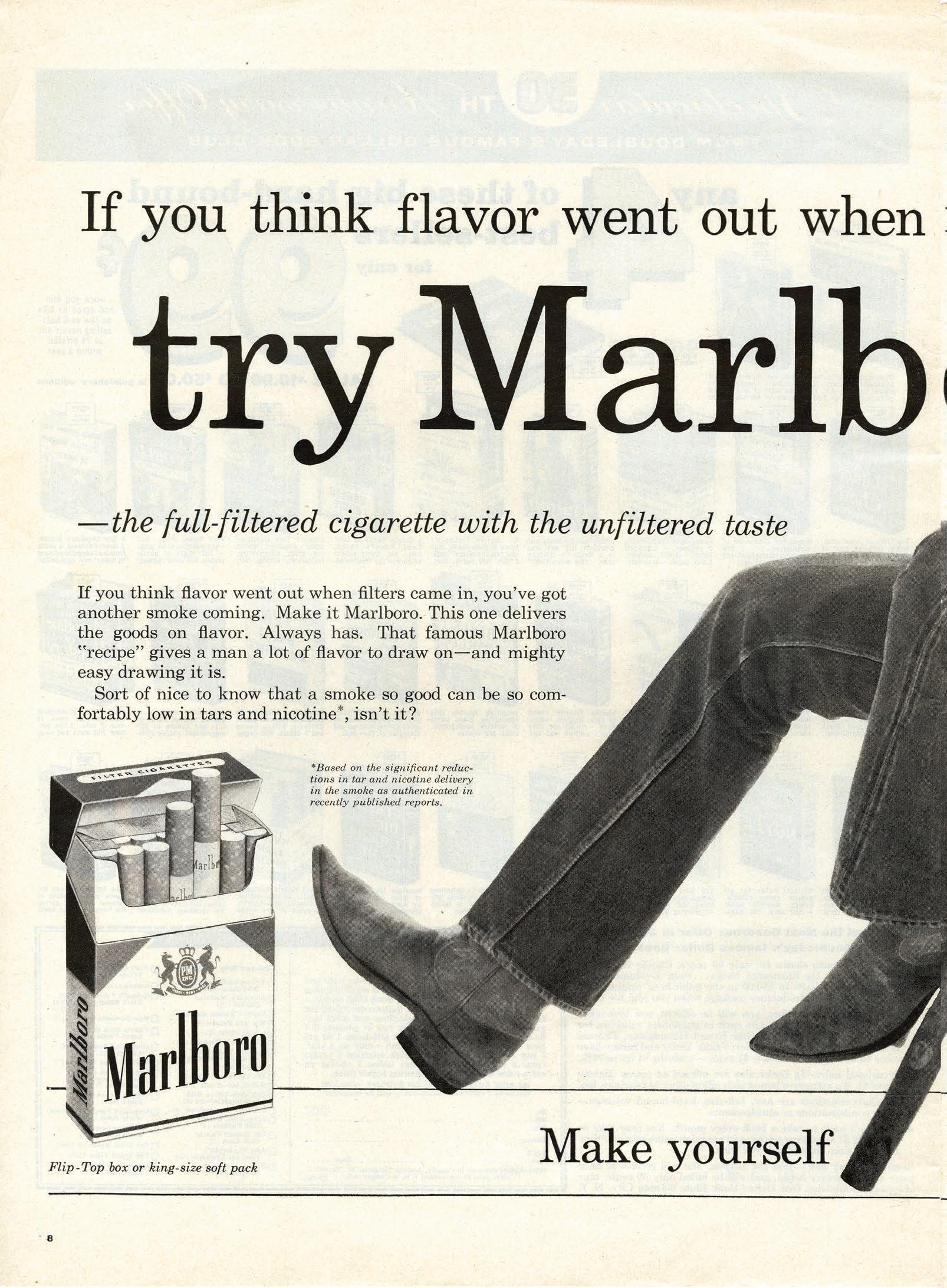
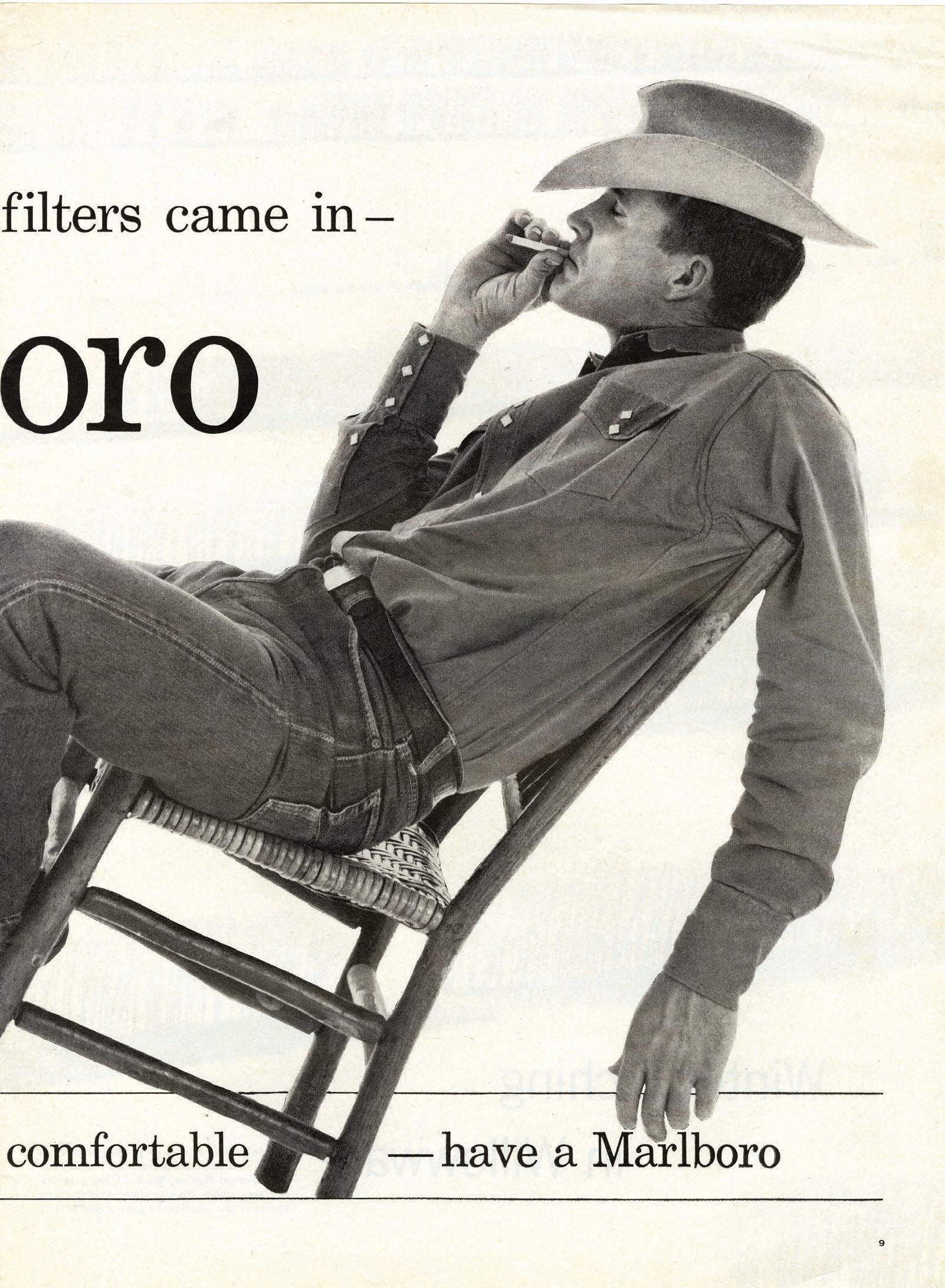
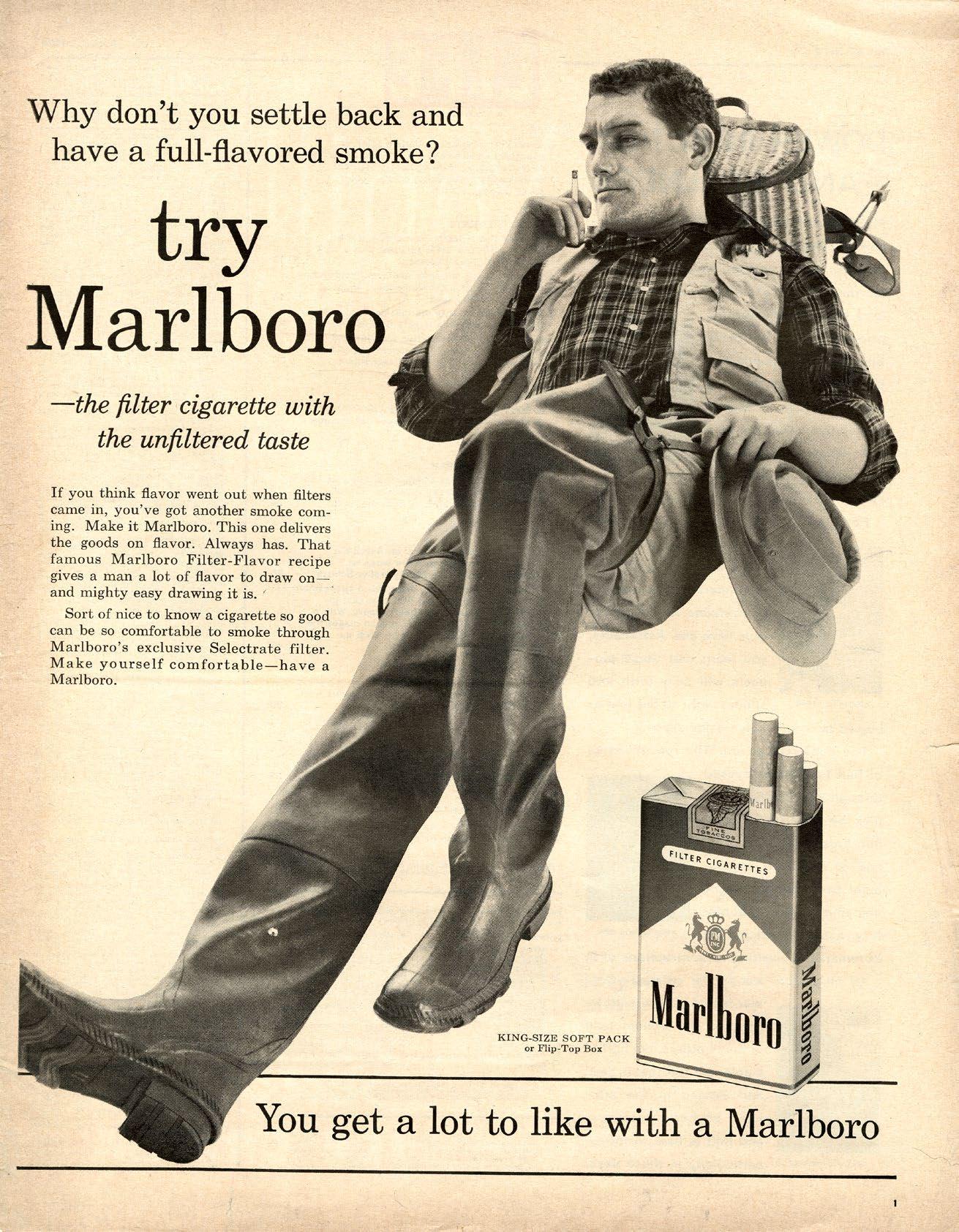
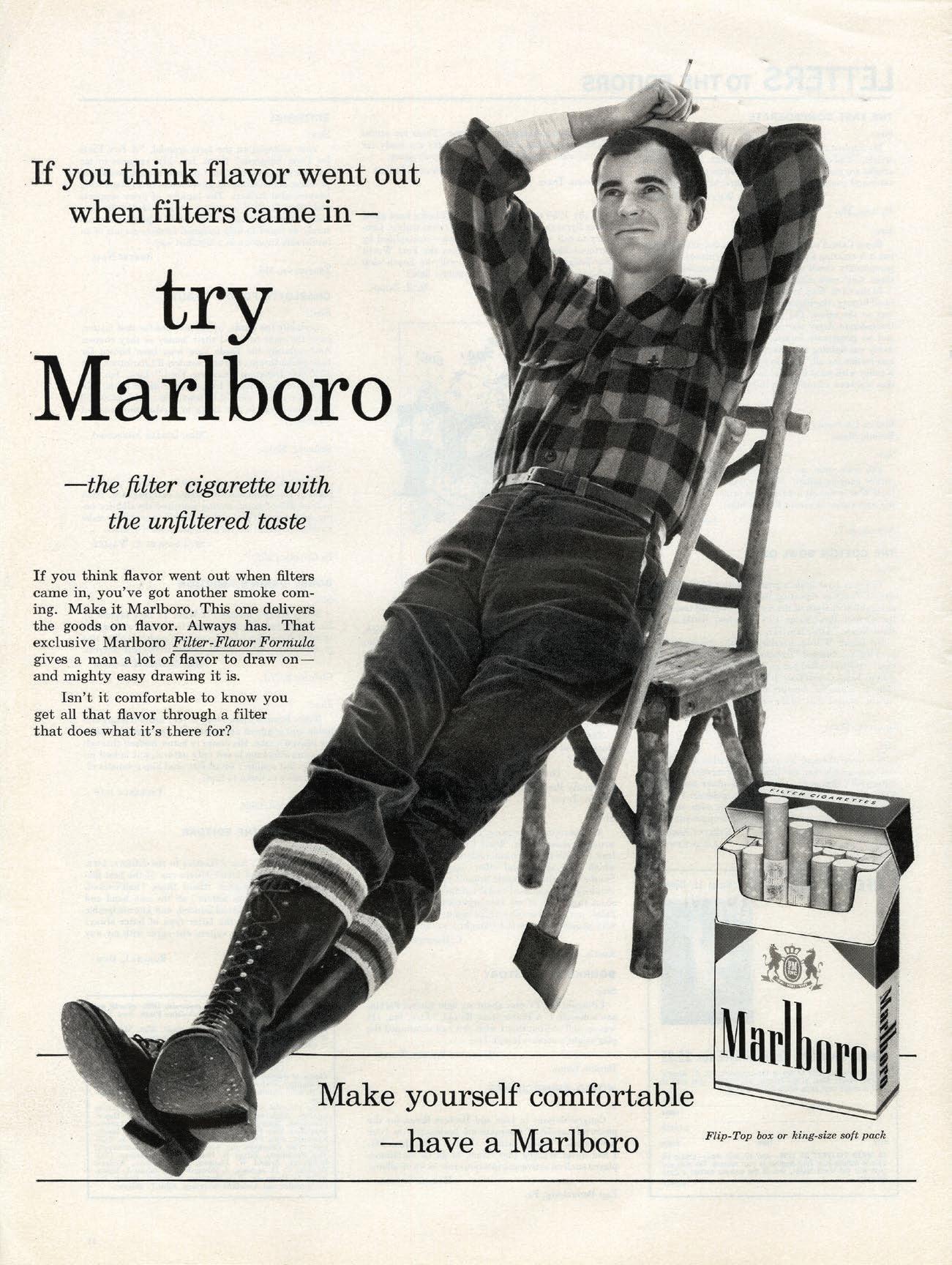
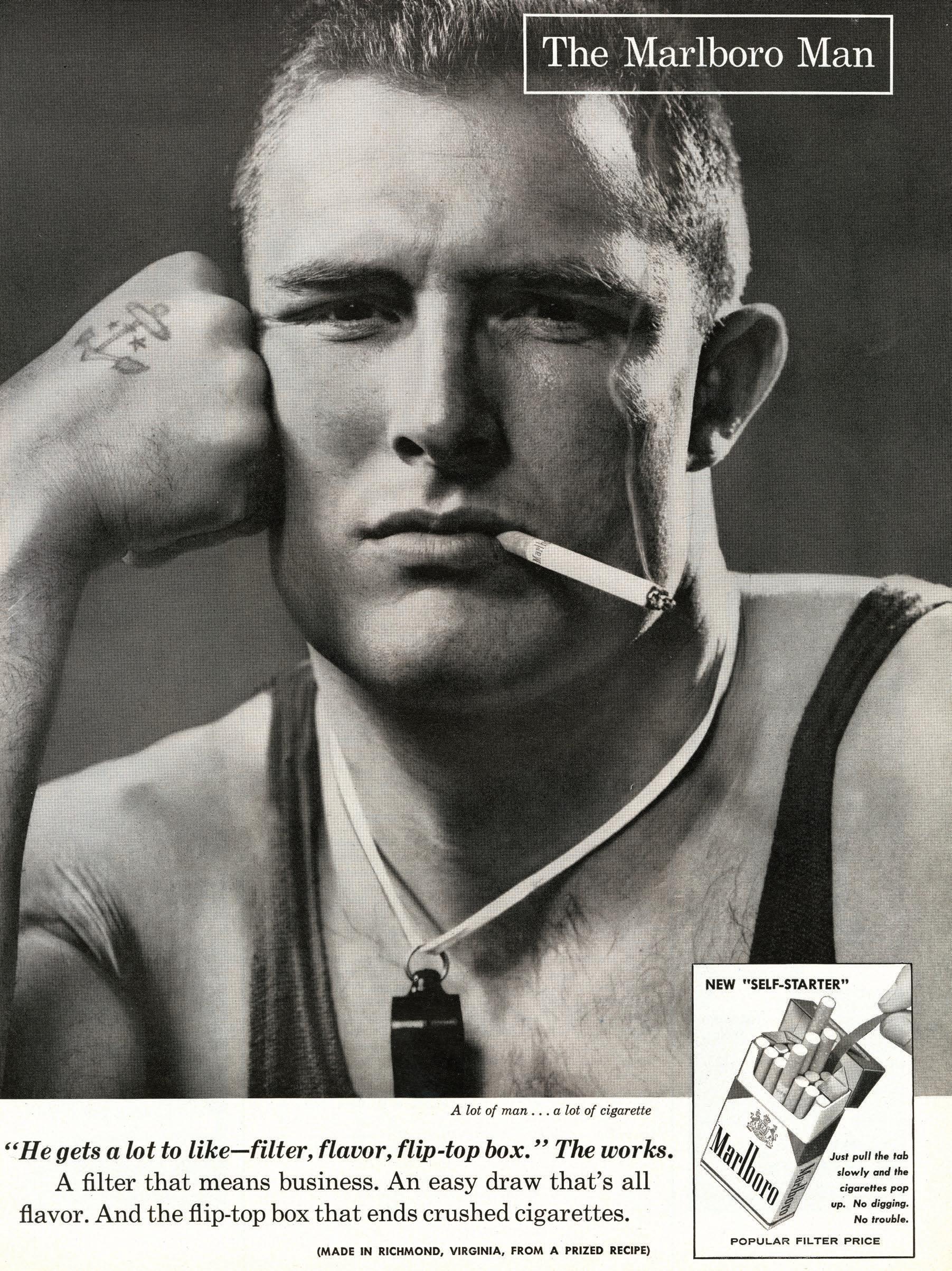
Marlboro’s " Tattooed Man" campaign, launched in 1955, reintroduced the Marlboro brand to the manliest of dudes across the nation. Advertising depicted the new Marlboro smoker as a lean, relaxed outdoorsman whose tattooed wrist suggested a romantic past, a man who had once worked with his hands. The ads focused on a close-up shot of a weathered, handsome face whose strong, veiny hand held aloft a Marlboro cigarette. Described as "virility without vulgarity, quality without the snobbery," Marlboro’s new campaign summoned a diverse pool of working men as applicants for a new Marlboro representative, from which the cowboy quickly emerged as the most popular character.
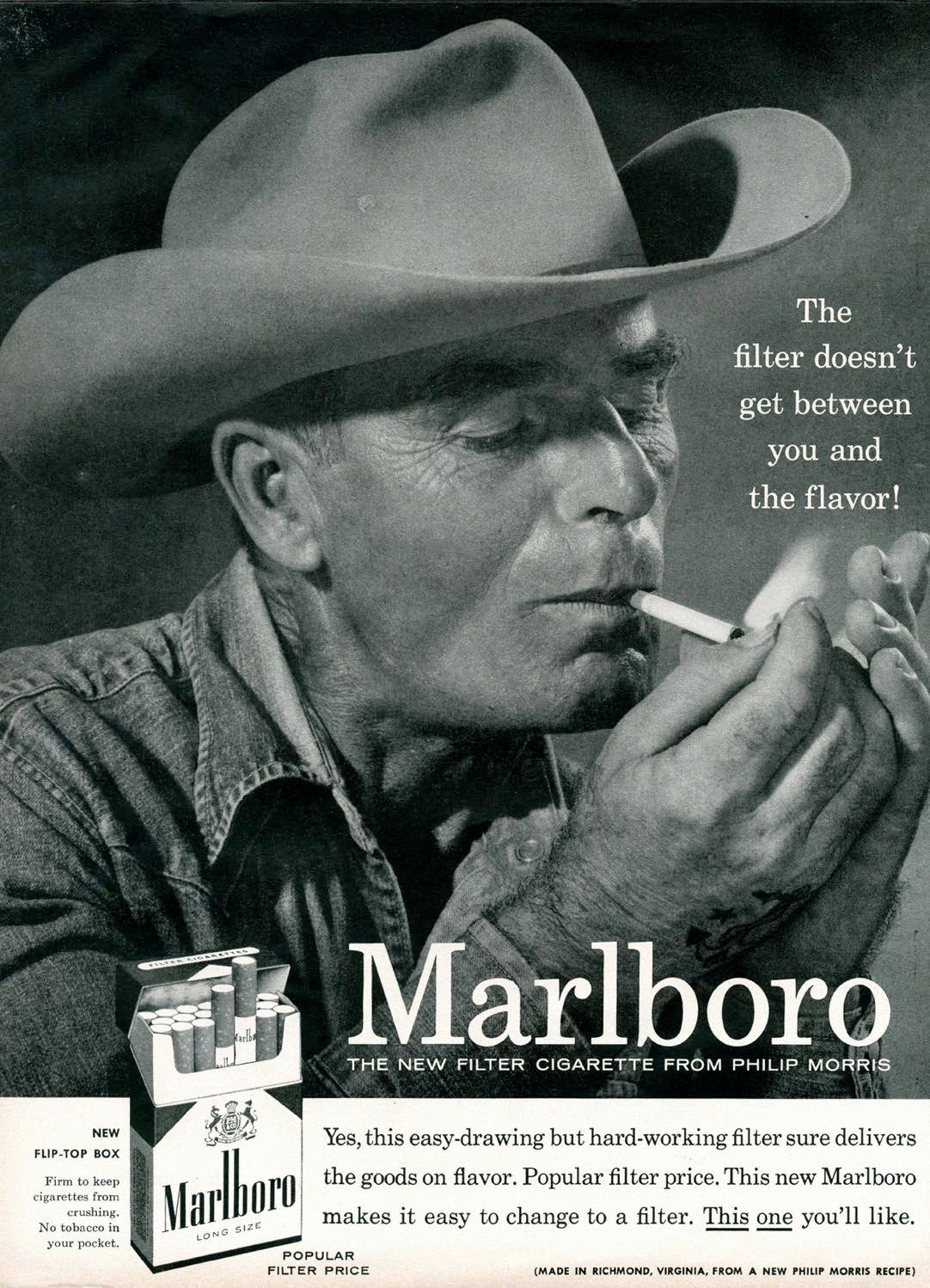

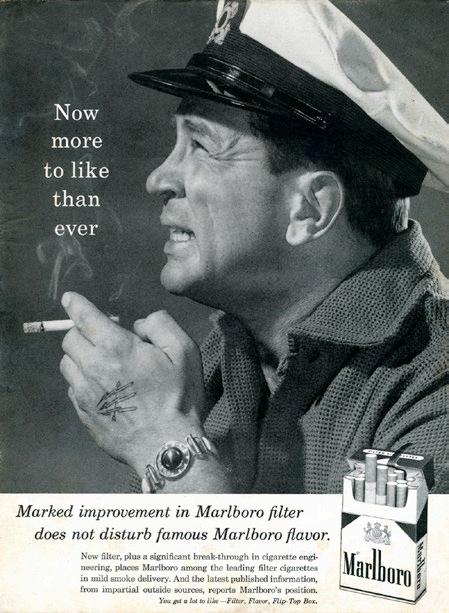
With his wide-brimmed cowboy hat, boots and spurs, unbuttoned shirt, tight jeans, and a bit of coarse facial scruff, the Marlboro Man spoke directly to the masculine ideals of American society in the 1950s and 1960s. Just as Westerns dominated television thanks to popular shows like Gunsmoke and Maverick, and American kids were playing Cowboys and Indians, so did the Marlboro Man become more than a fixture in American culture. He became an American hero who stuck a chord across gender lines. After all, the campaign wasn't just about being a man—it was about being an American.
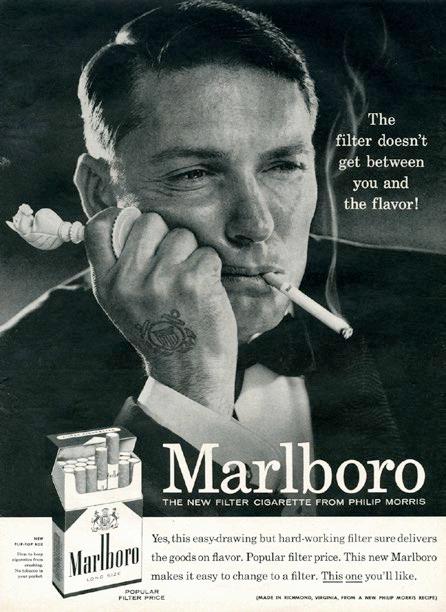
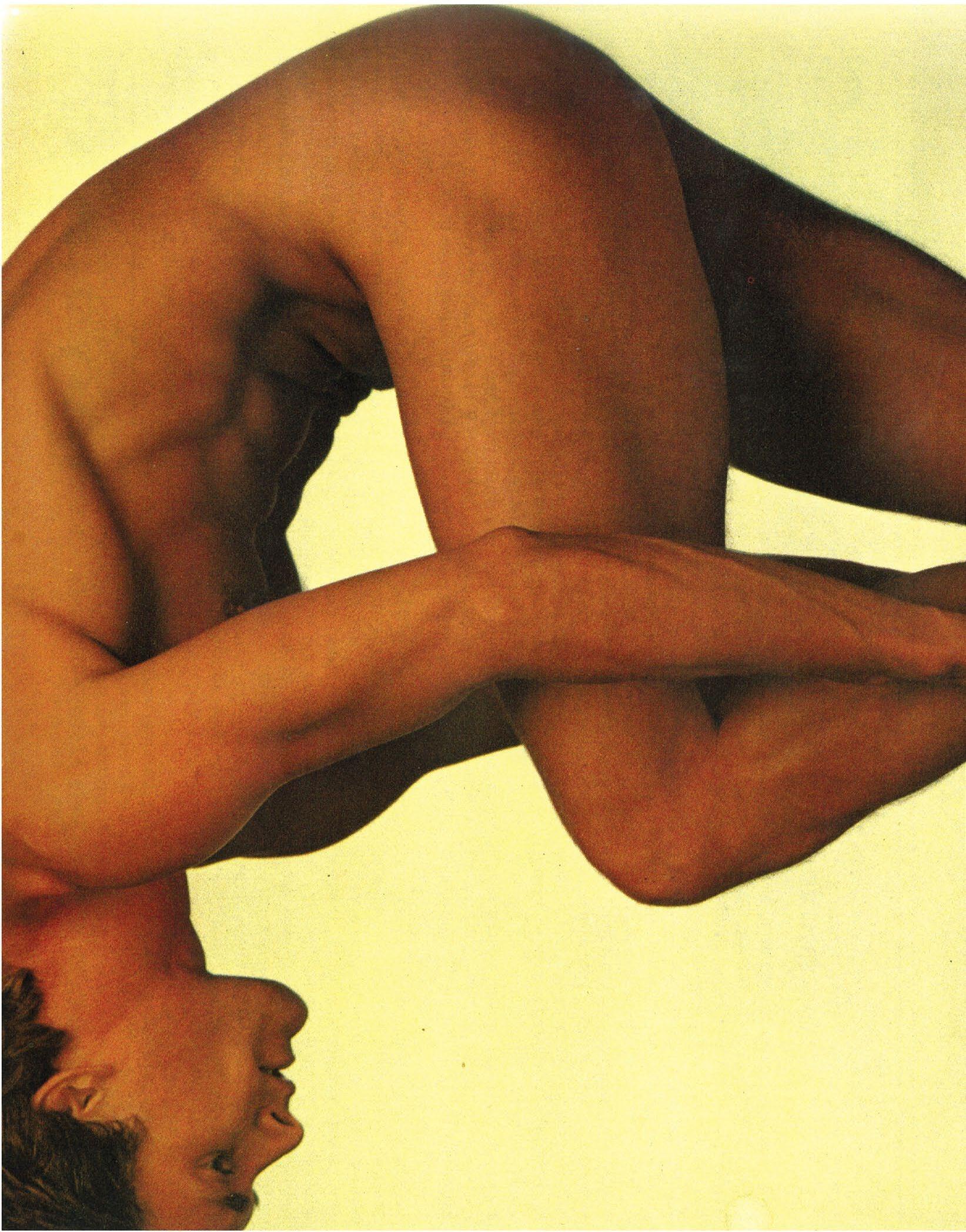
Gordon Munro, photographer; Peter Rogers, copywriter; Norma Kamali, jean designer Ad for Studio 54 Jeans
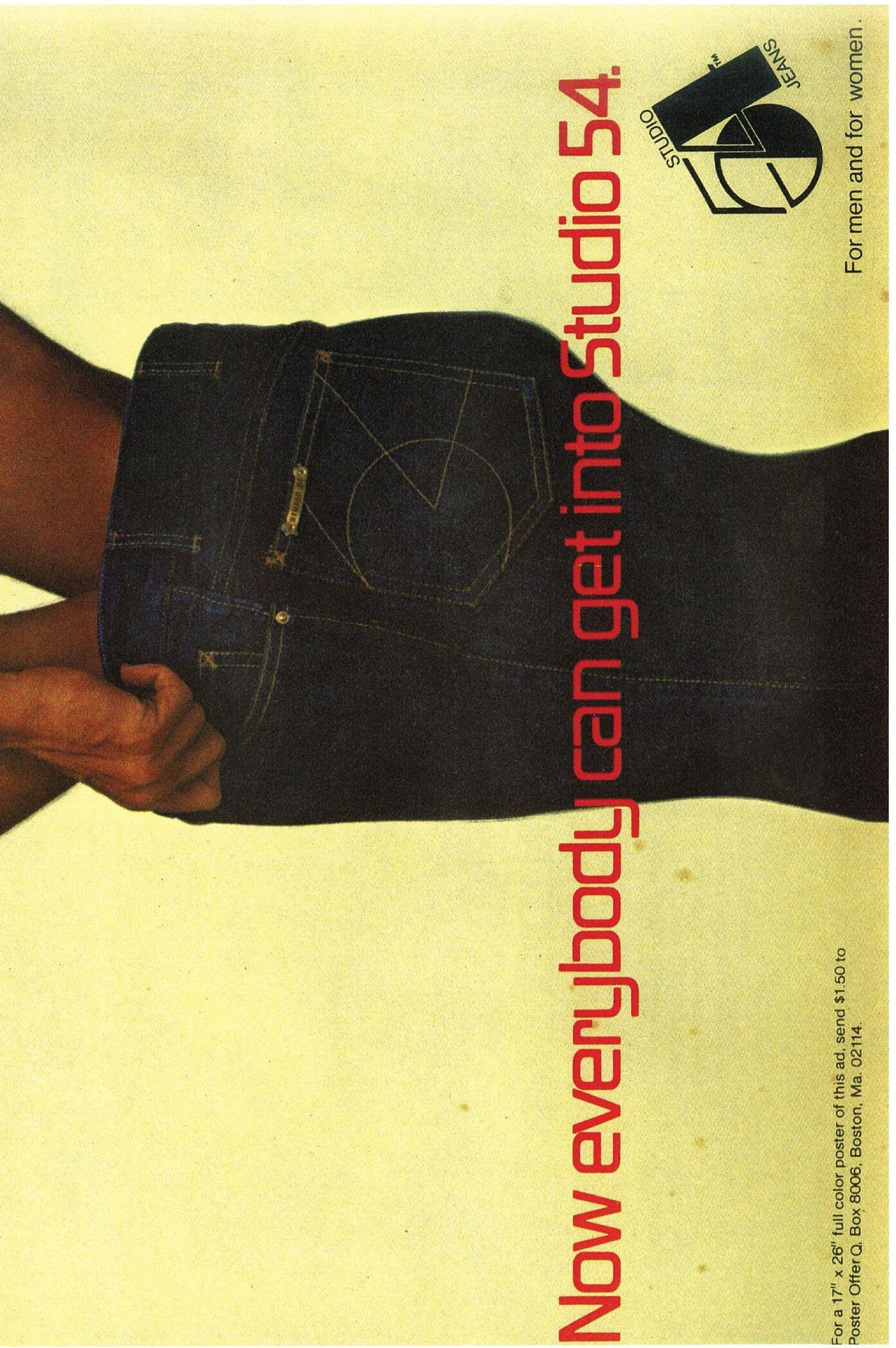
Rolling Stone magazine, 1979
© M. Hoffman & Co.
“That was during the designer jeans moment [ . . . ] Gloria Vanderbilt had her fashion show at Studio 54 for her jeans. Calvin Klein said a man came up to him at 4 a.m. in Studio 54 and said, ‘Have you ever considered designing jeans, blue jeans?’ And then Studio 54 decided that they should make Studio 54 jeans. Peter Rogers had written that great tagline, ‘What becomes a legend most’ for Backglama mink. And now for this he wrote, ‘Now everybody can get into Studio 54,’ a riff on people not being able to get past the velvet rope.”
Matthew Yokobosky, interviewed in Rolling Stone magazine (October 21, 2020) about his book and exhibition, Studio 54: Night Magic
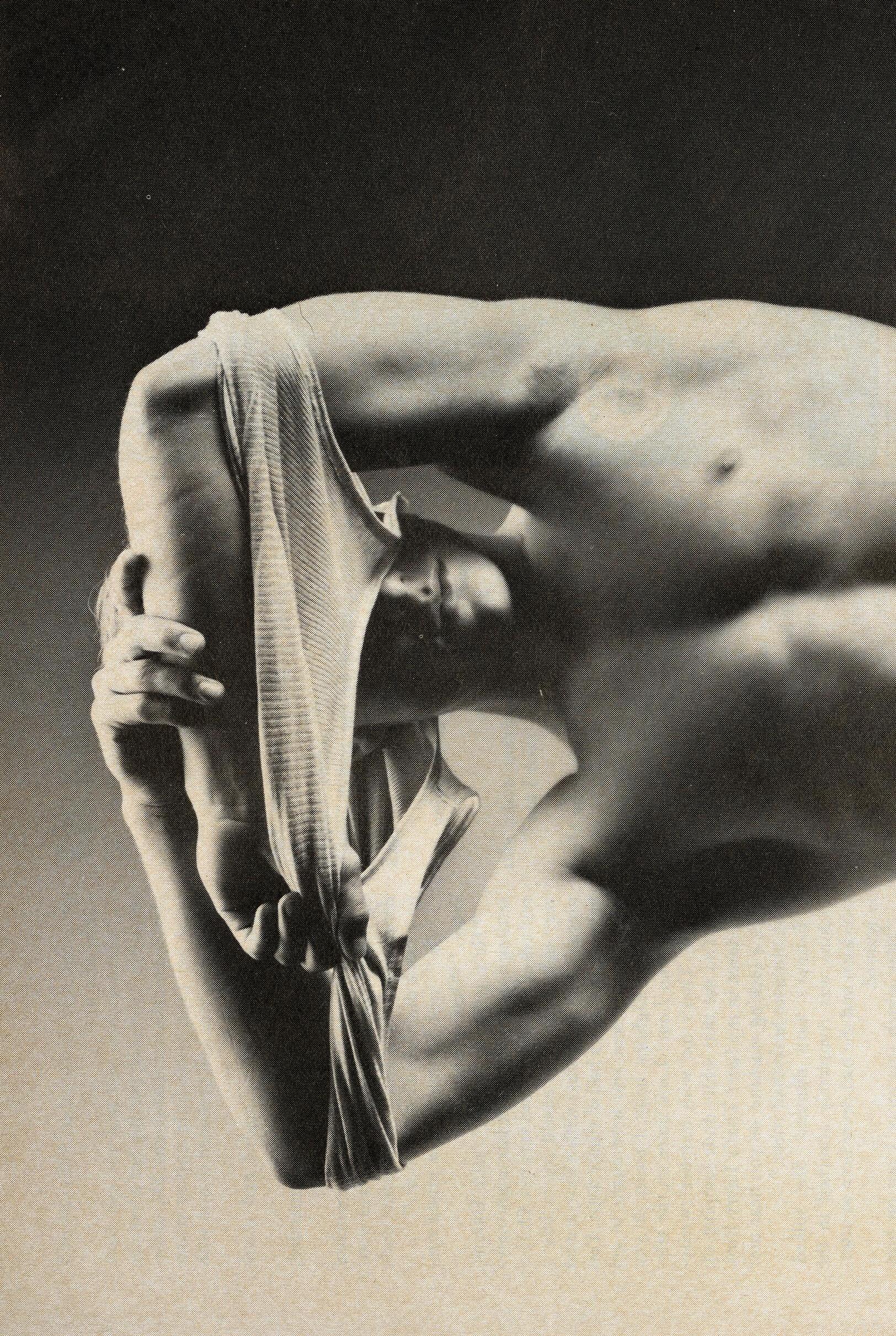
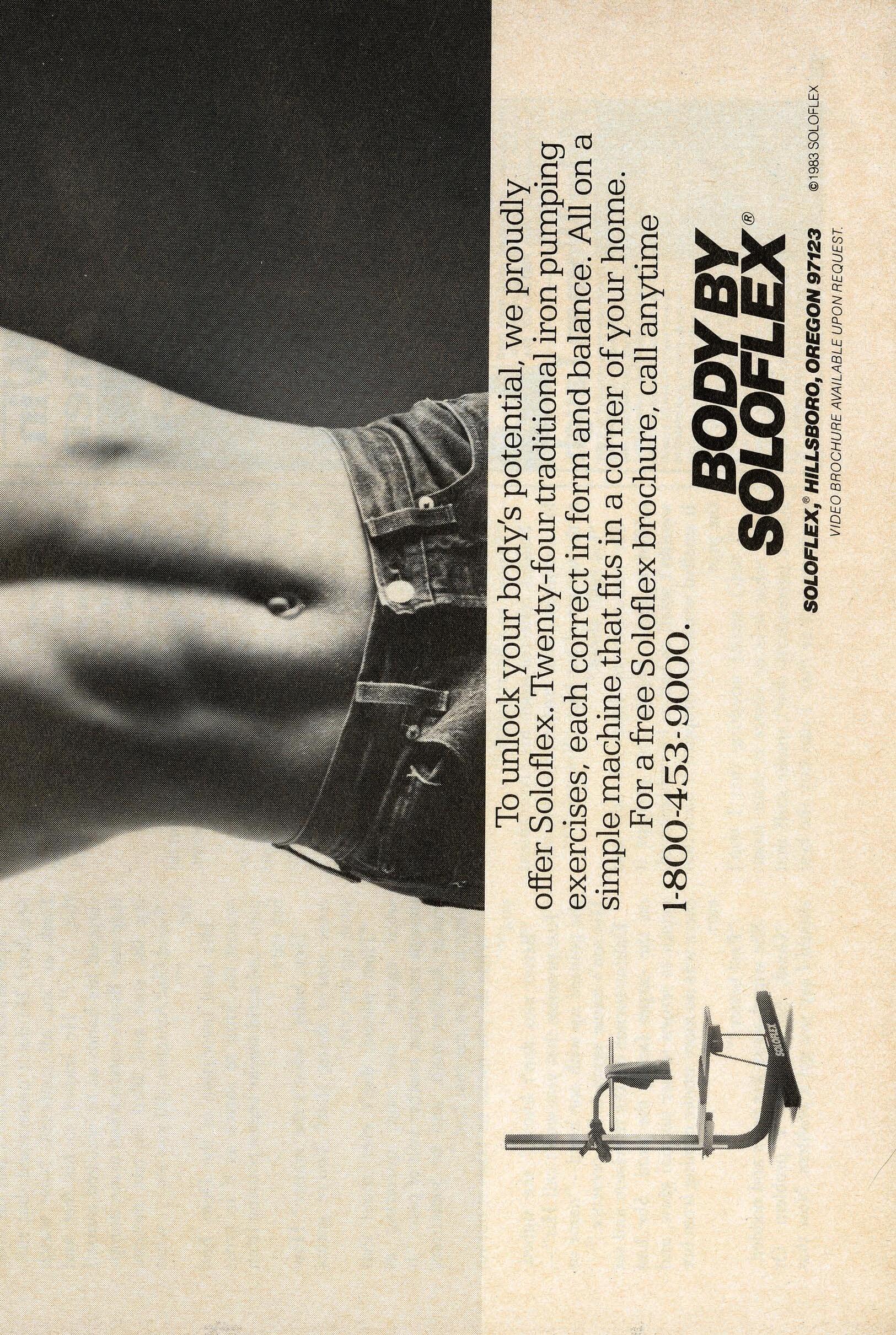
PREVIOUS PAGE
In 1984, ads starring this strapping model for Soloflex home gym equipment began to appear in magazines—there was even an infomercial playing nonstop on TV. All around the world, gay male teenagers just like me froze in their tracks. Who was this Michelangelo's David come to life?
University of Wisconsin student and former high school gymnast Scott Madsen was waiting tables at a seafood restaurant when he answered a modeling ad. Fame was instantaneous, with his poster selling some 700,000 units. He was interviewed by fitness magazines, published an exercise book (Peak Condition), and, of course, released an exercise video featuring Soloflex equipment.
Everyone thought that he was gay, but he was actually straight and a major homophobe. He was quoted as saying that he didn't want to be "chased around the room by faggots."
Scott vanished in 1986, no doubt because Soloflex figured out that he was a gay icon, and didn't want gay business. He was replaced with Mitch Gaylord and Frank Zane, with the addition of a woman's hand caressing the models’ shoulders to make sure everyone understood the target audience.
Photographer Unknown
Mark Wahlberg
Rolling Stone magazine cover, 1992
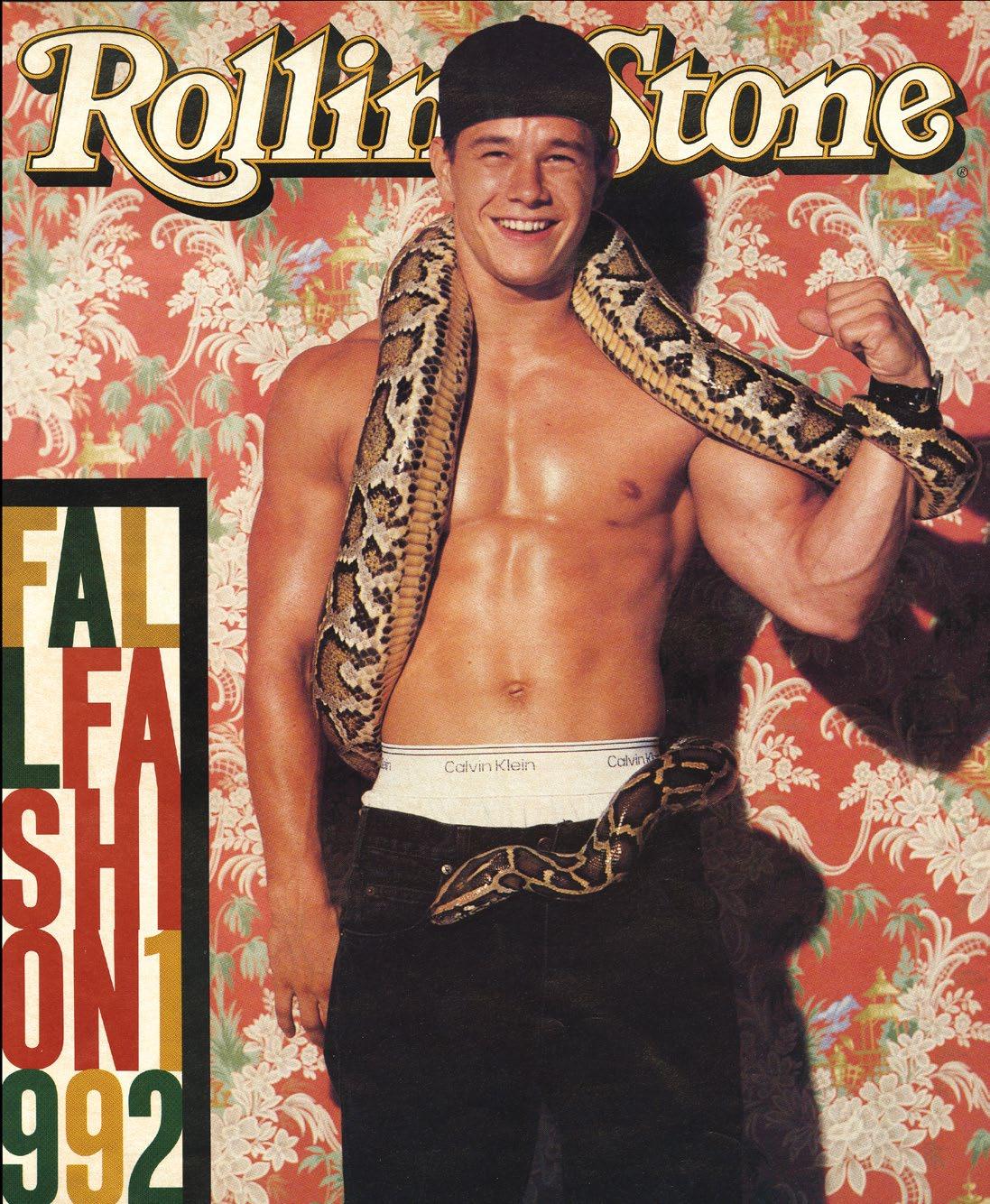
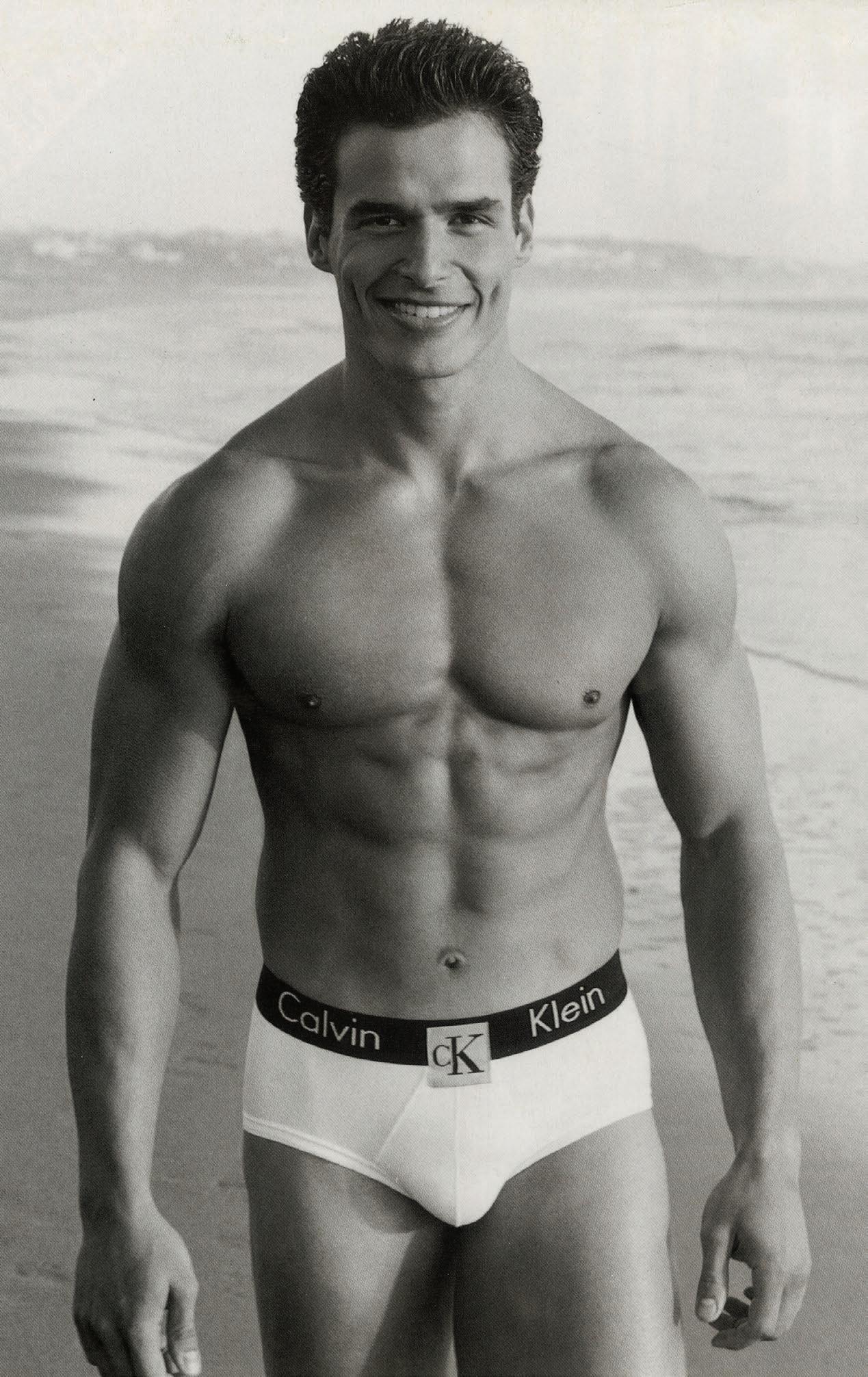
Well, hello, sailor! is a screeching catcall made to a sailor boy, presumably by a streetwalker supposing the sailor to be male and sexually frustrated after a long time at sea. This siren has become a mantra, implying that hornedup sailors are away at sea so long that they can’t discern a harlot and a man in drag or a play on the common conception that many sailors are homosexual.
Whether seen in war propaganda, film, and even cartoons, the image of the young, celibate sailor has become the archetype of sexual availability and a stable feature of popular culture, art, and contemporary fashion. It’s the cruising look of same-sex desire and affection, a rugged muscular sailor’s body brought to life in the illustrations of Tom of Finland, Spartacus, or photos of Bob Mizer. They are idealized, vigorous, masculine, brave, protective, handsome, and strong—the hypermasculine sailor is an iconic gay image.
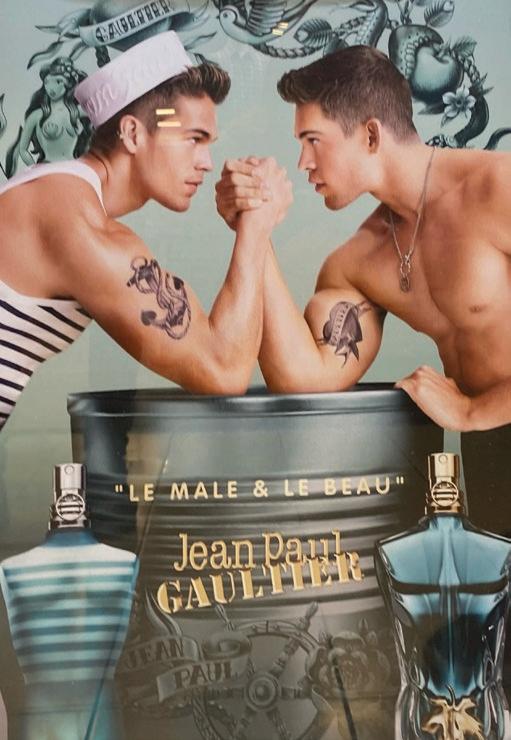
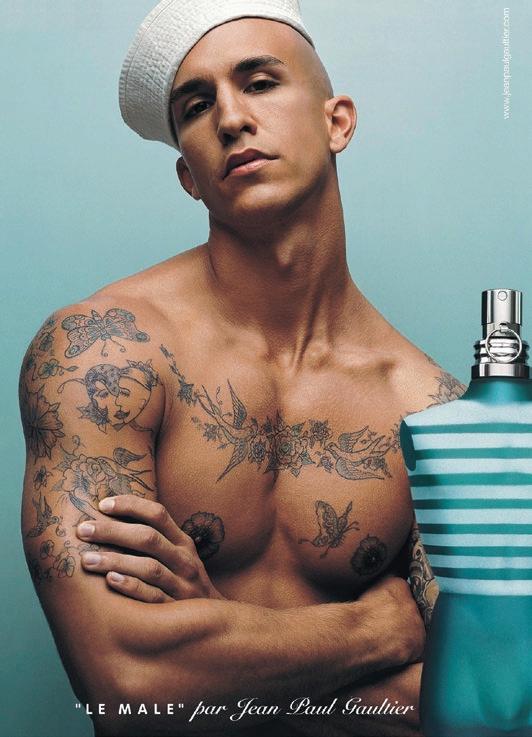
The virtuous sailor projects male glamour in contemporary fashion whose design elements—striped of blue and white, peaked cap, anchors, and brass buttons have been contemporized into nautical themes by brands such as Coco Chanel, Kenzo, and Jean Paul Gaultier. These couture collections can all be linked to queer identity and gay fantasy heroes.
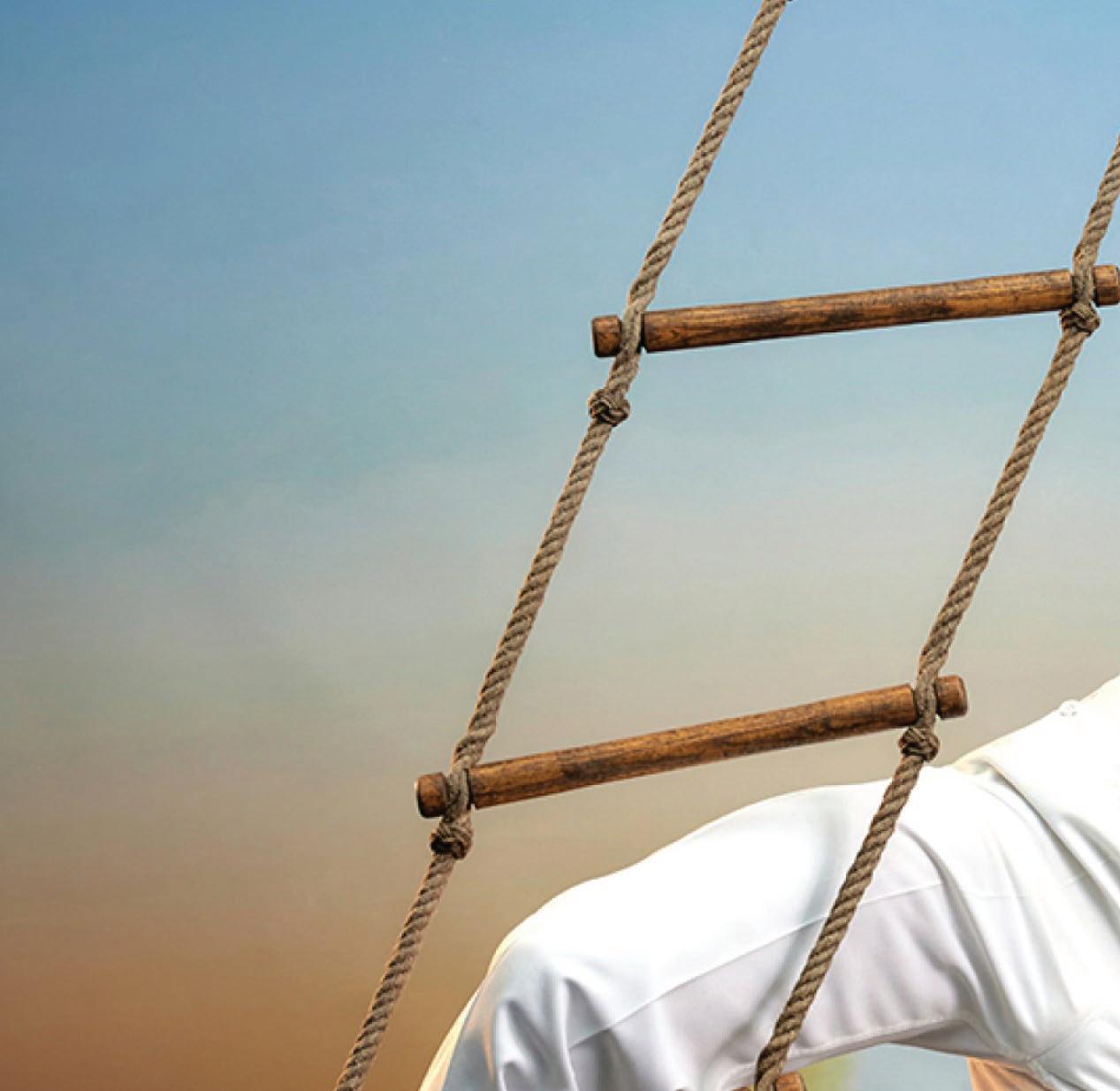
THE BOTTLE
A torso-shaped bottle with assertive masculine attributes. The transparent glass reveals the form of the emblematic garment of Jean Paul Gaultier menswear: the sailor’s shirt, a symbol of freedom and seduction.
LE MALE EAU DE TOILETTE
Le Male, as virile as it is sexy, pays tribute to the mythical figure that has forever inspired Jean Paul Gaultier: the sailor. This men's fragrance exemplifies an unconventional vision of masculinity.
Le Male and Le Beau advertisements, ca. 2020 Images: ©jeanpaulgaultier.com
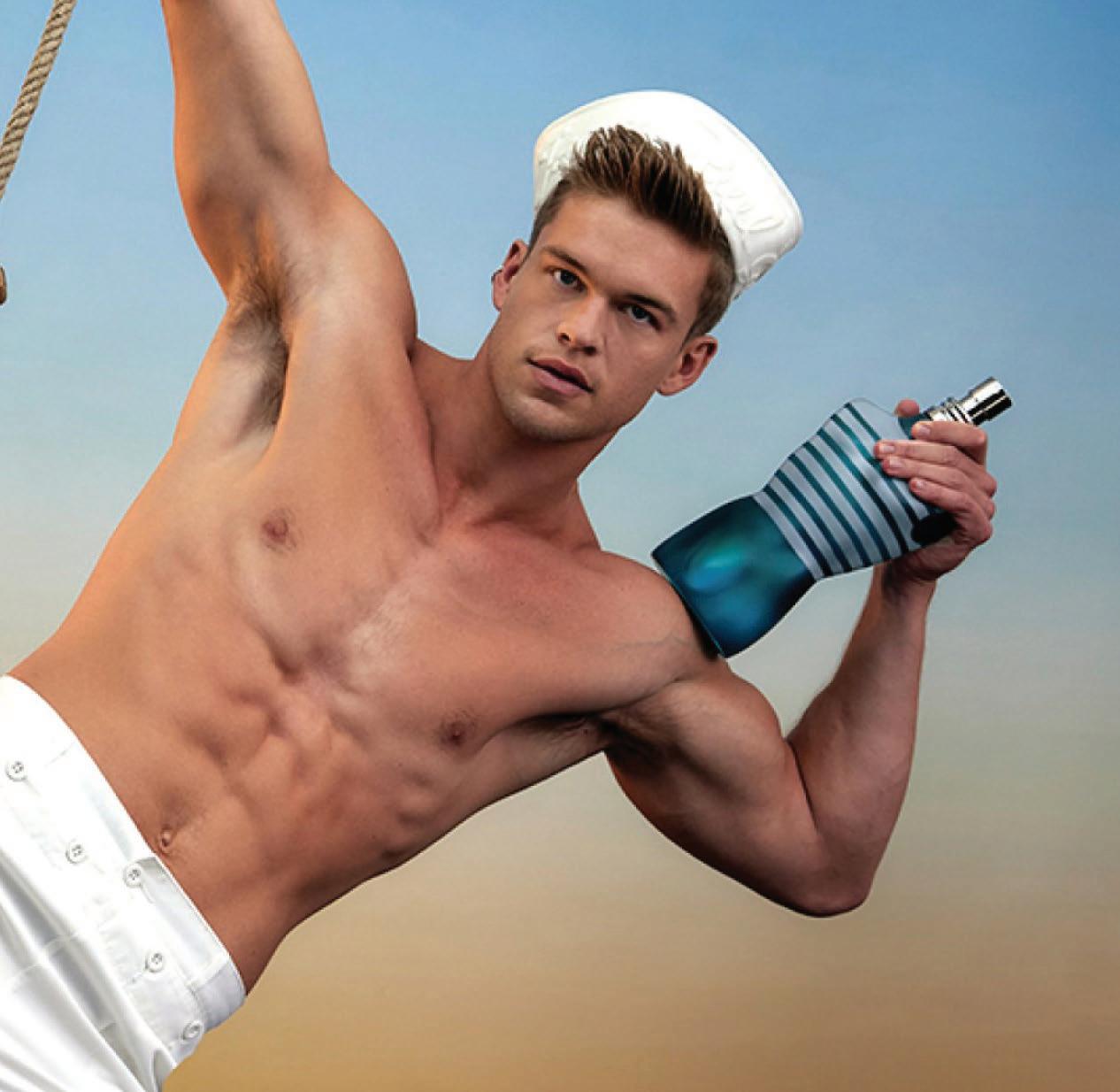
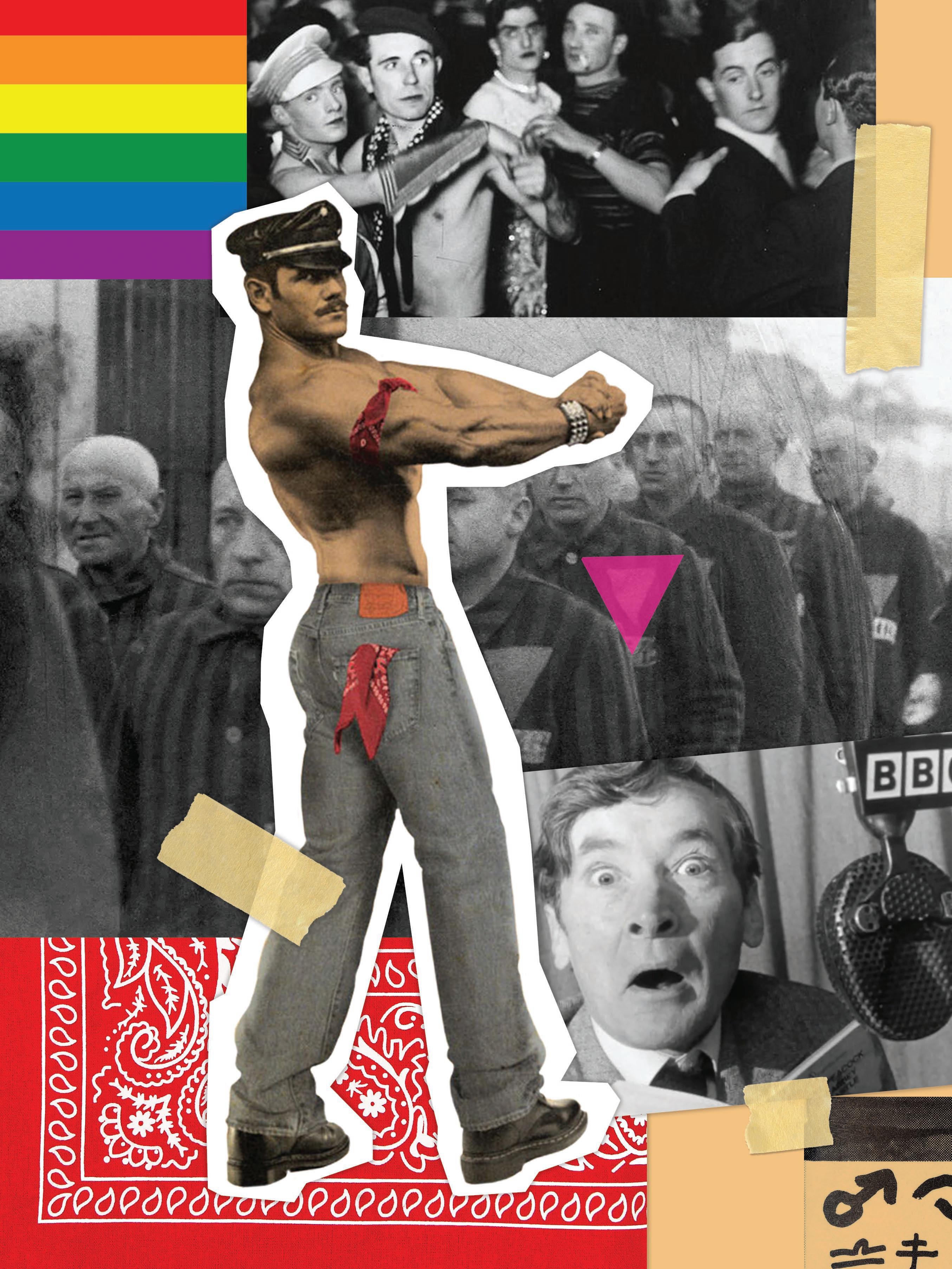
LEFT: British comedian Kenneth Williams featured two Polarispeaking characters in his famous 1960s radio series, Round the Horne.
© BBC Archive
BACKGROUND: Rick Heffner Codes, 2022
Digital collage
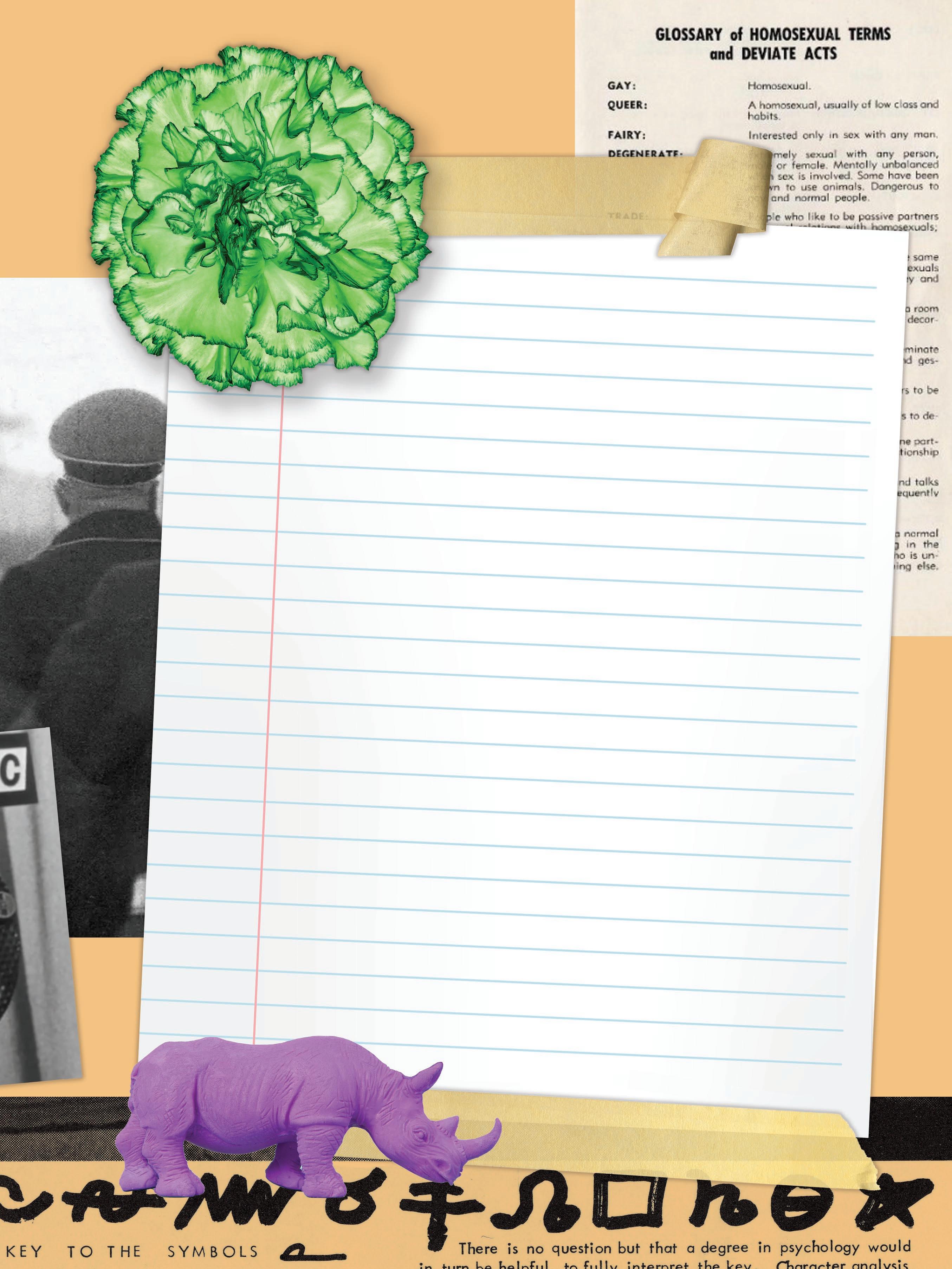
© Rick Heffner
Woven throughout history are the many covert ways queer people have used codes to act as signals that quietly revealed their secret identities. But instead of relying on complex handshakes and invisible-ink membership cards, the queer community created a variety of codes, clues, and signals to demonstrate unity, pride, shared values, camaraderie, and connection—from flowers and coded language in pre-Stonewall days, to the rainbow flag and pink triangle that accompanied decades of activism around gay liberation and the AIDS crisis.
BELOW: The lavender rhino was created as a symbol to increase awareness of the presence of gays and lesbians in society. It was created by two Boston artists, Daniel Thaxton and Bernie Toale. Its first appearance was in a series of Boston subway posters during 1974. The rhino was chosen because it is a much maligned and misunderstood animal, and that the color was a mixture of pink and blue, a symbolic merger of the masculine and feminine.
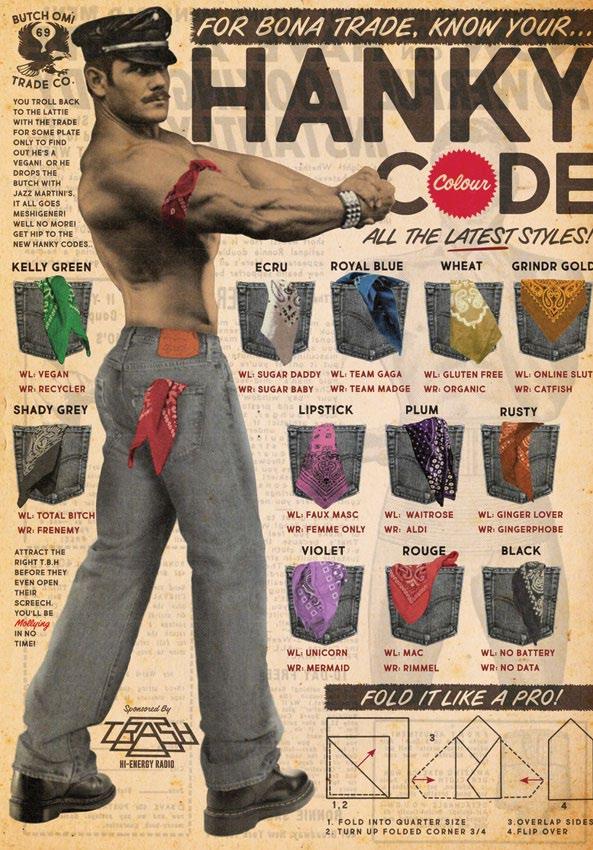
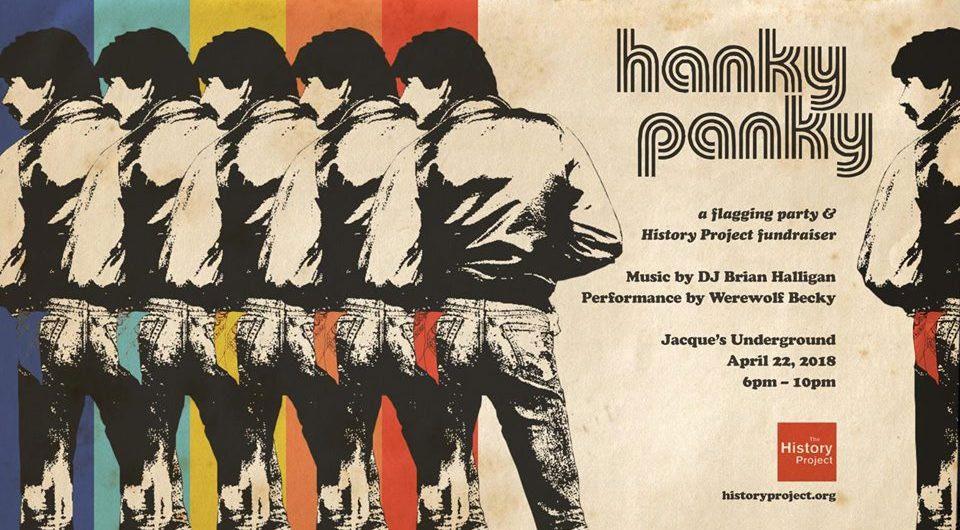
The hanky code was an encrypted means of dress used predominately by gay men beginning in the 1970s. Simply put, a man would place a colored bandana in his back pocket to signal the particular sexual activity for which he hungered.
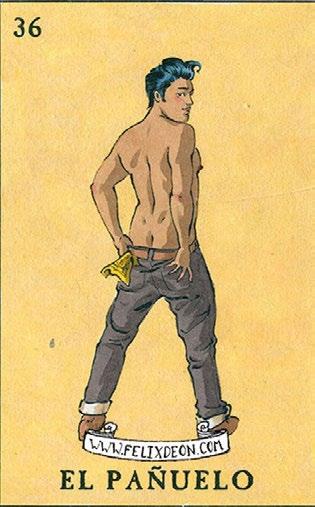
But which pocket? And which color? Before cruising, you better make sure you study the decoder first.
The color of the bandana correlated with a specific sexual action or fetish, and the choice of back pocket in which the bandana was placed defined the wearer’s sexual role. Tops: place it in your left pocket; bottoms: the right pocket.
In the hanky code’s earliest days, men exclusively used red bandanas to discreetly distinguish which potential players were into fisting. But as the code expanded to include a rainbow of additional colors, the decoder list became a critical tool. Many porn shops, gay bookstores, and mail-order catalogs provided decoder lists free with a bandana purchase, while gay bars gave away lists that included info about the bar’s location as a form of direct marketing.
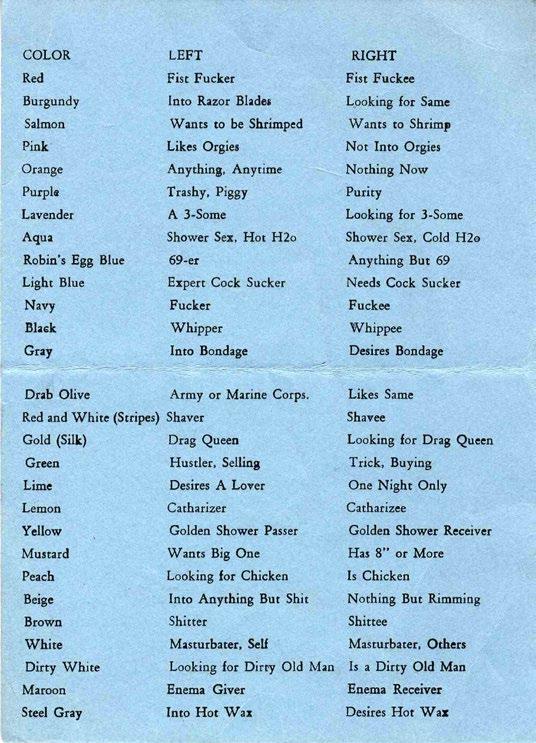
Today, there are about sixty-five color codes used to represent myriad sexual preferences, from vanilla to hardcore.
The hanky code became more prevalent throughout the mid-1970s, predominately by gay men in the bondage, discipline, and sadomasochism (BDSM) and leather scenes. But by the mid-‘80s, there was a large decrease in the code’s use, due to the large-scale restraining of anonymous sexual practices in the wake of the HIV/AIDS crisis. However, as the BDSM subculture— which practiced a variety of alternative sexual activities that carried either a low risk or no risk of infection—gained in popularity, the hanky code enjoyed a resurgence. And by the early ‘90s, wearing a black-and-white-checkered handkerchief became a dominant symbol for promoting safer-sex practices and HIV/ AIDS awareness.
Such an evolution meant the hanky code was the first dress code to concurrently communicate gay identity, sexual availability, fetish tastes, and messages of activism and empowerment.
wants head / wants to give head a bear / into bears into giving nipple torture / into receiving nipple torture into pissing on others / into being pissed on wants toes sucked / is a shrimper (likes to suck toes) wants to rim / wants to be rimmed is a voyeur / wants to put on a show has tattoos / likes tattoos
likes to cuddle as the big spoon / likes to cuddle as the little spoon is a cop / wants to suck off a cop is a sailor / exclusively looking for salty seamen★ Image: © felixdeon.com ★
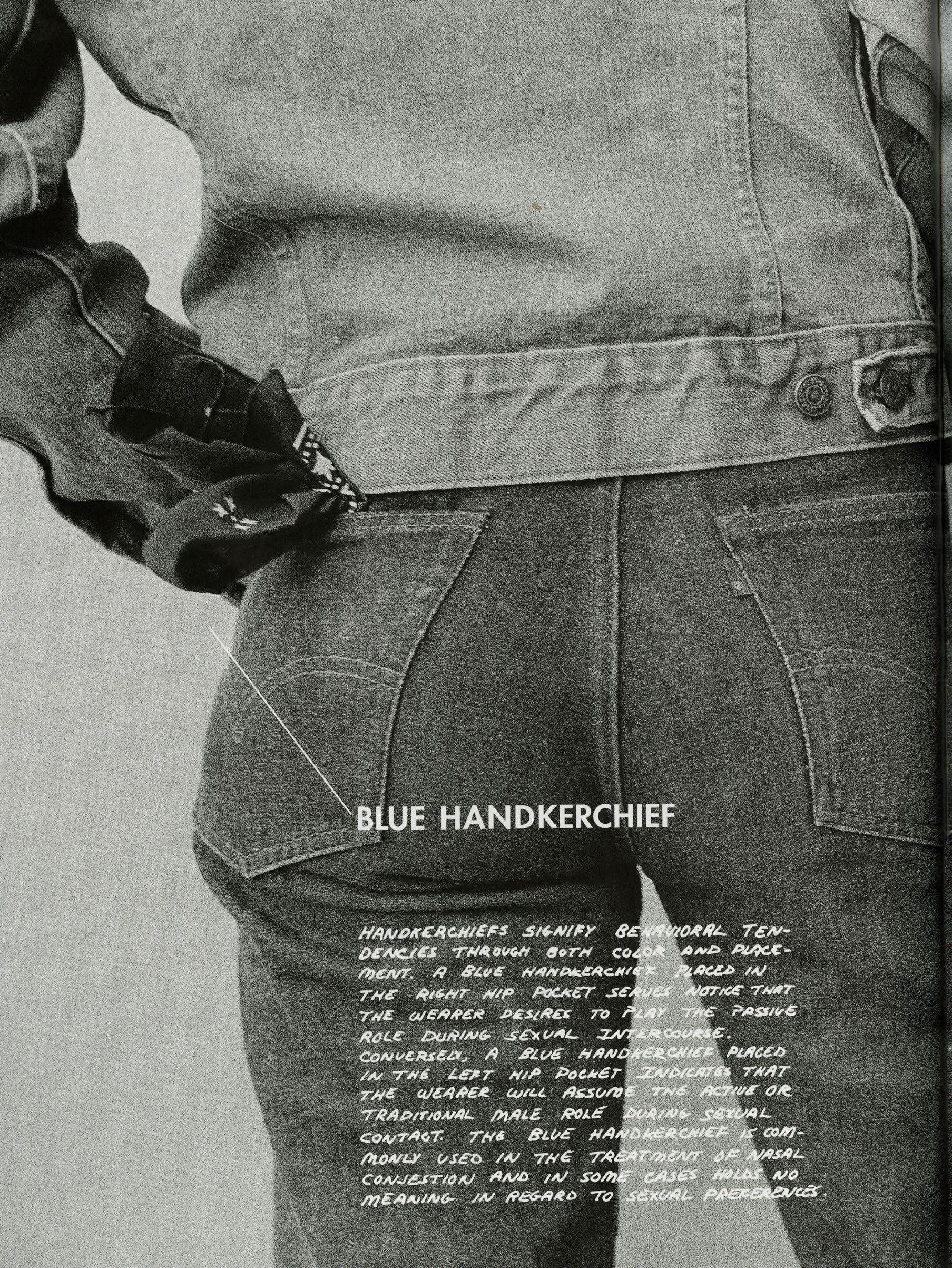
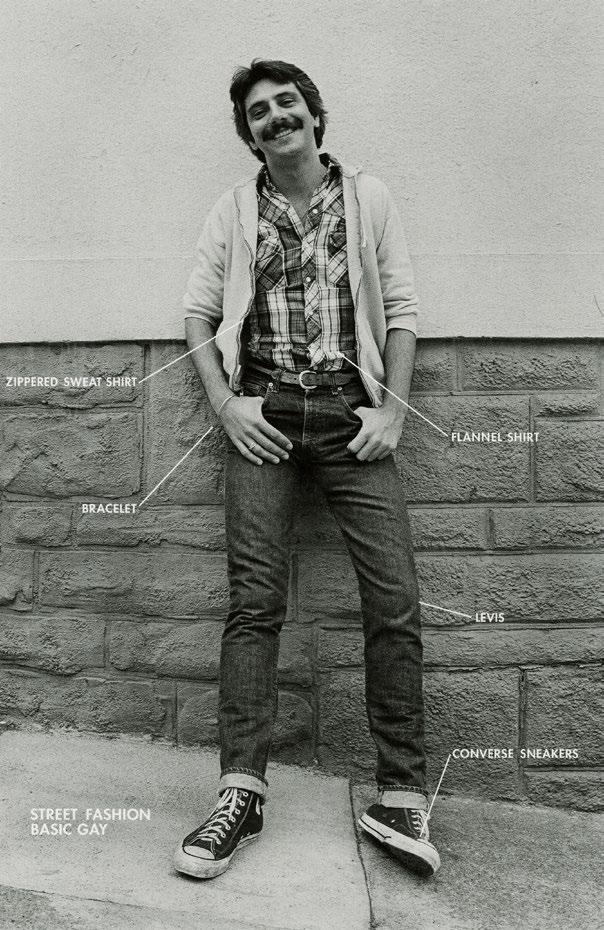
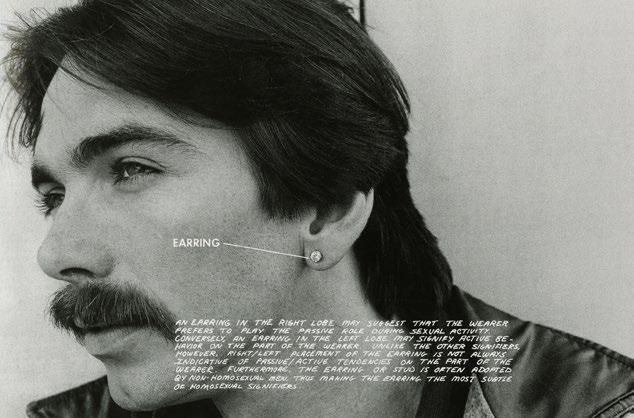
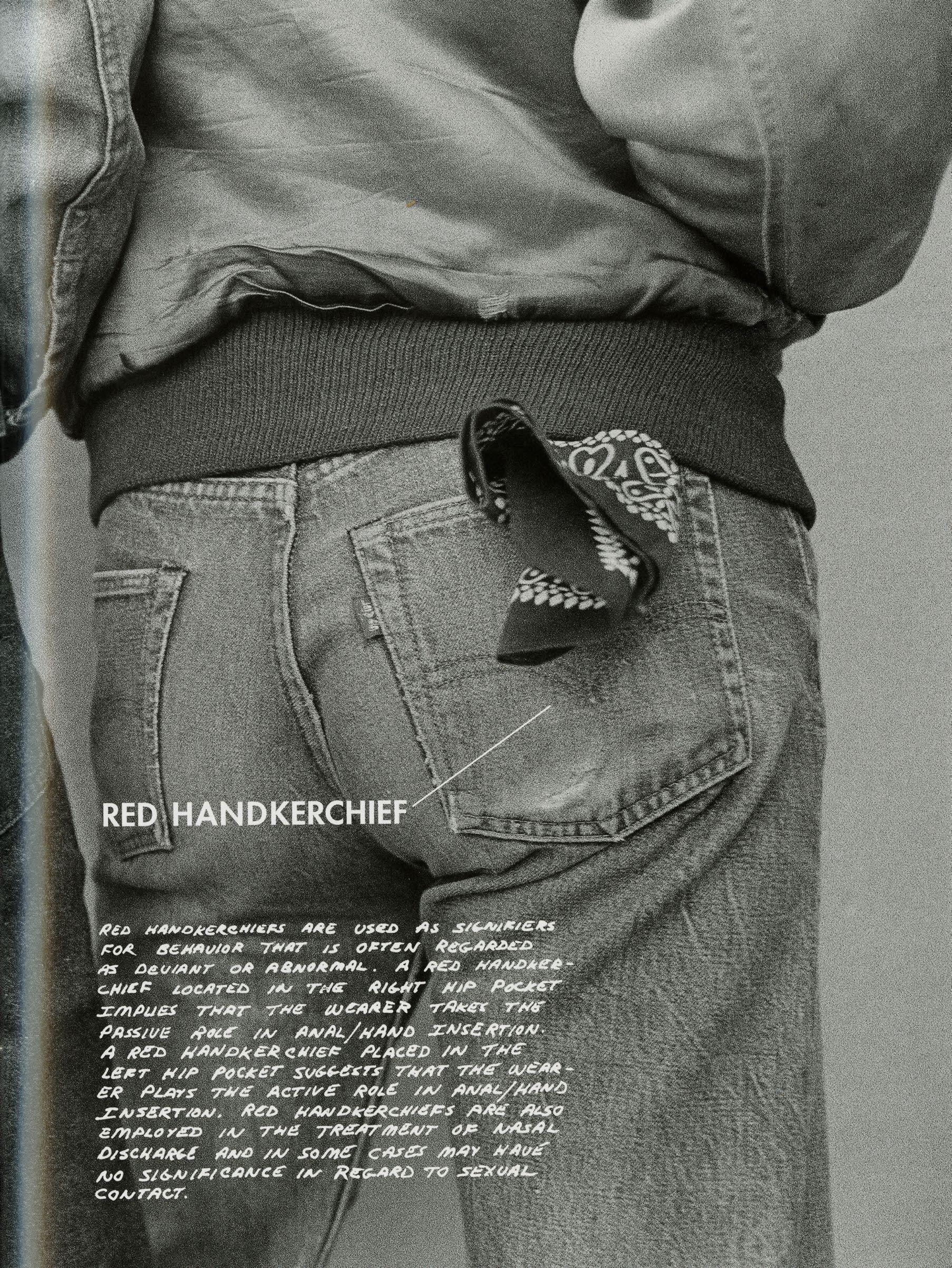
Bob Mizer’s publishing empire of beefcake magazines became an important resource to other photographers and artists, who often discovered and booked models through the pages of mags like Physique Pictorial. As interest in booking Mizer’s models grew in the early 1960s as physique culture flourished, Mizer and his colleagues began placing secret codes next to photos of their models as a means to relay additional information about these men to other photographers. Through these codes, readers could learn not only the reliability of Mizer’s models, but also their sexual preferences, history of substance abuse, emotional instability, religious zeal, and propensity for violence. Such communications meant fellow artists could choose models to book who could meet their expectations both in front of—and behind—the camera.
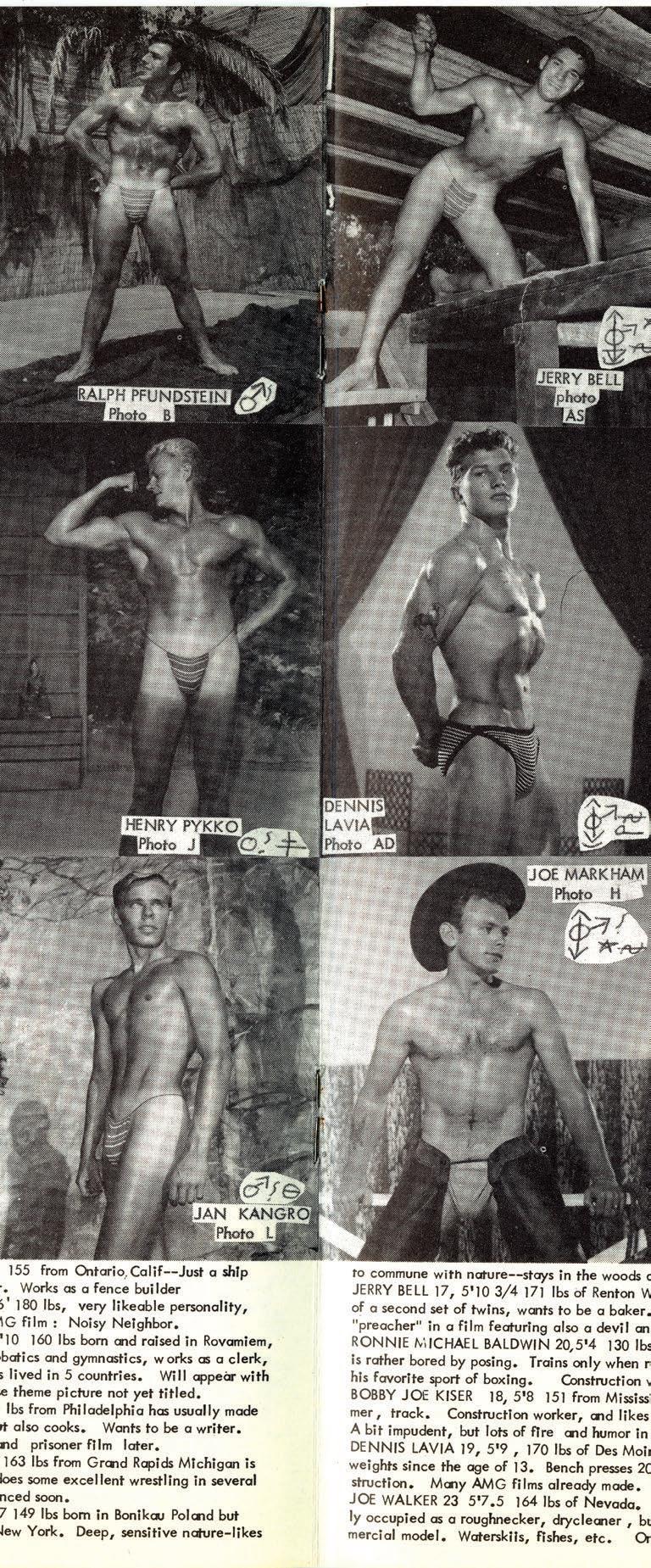
To the uninitiated, the symbols may as well have been Egyptian hieroglyphics: clusters of arrows, circles, squares, squiggly lines, and backward question marks. But to readers more familiar with Mizer’s quarterly magazine and the photographer’s “subjective character analysis” code sheet, these symbols unsealed tidbits of information about a favorite model—some of it titillating and arousing, some of it tame and muted.
For instance, a simple cross meant the model was intensely religious, while an ‘X’ with prongs on all four ends distinguished the model as having a boastful and arrogant personality. A circle with a downwardpointing arrow disclosed a dominant, forceful personality, just as an ‘X’ with a black circle above it meant the model posed a potential physical danger. Each model’s (alleged) hobbies—such as reading, music, hiking, and swimming—were also listed beside their picture, each activity a code for a specific sexual preference.
Mizer’s subjective character analysis remained peppered throughout the pages of Physique Pictorial until the last issue ran off the presses in 1990. Although Mizer had shared the key to his code with only a handful of business partners, he ultimately destroyed all information about the system as a precaution—a smart move given that the code was later used in attempts to substantiate charges of prostitution and defamation against Mizer.
Descriptions as shown in Bob’s World (2009), Dian Hanson, editor

Mizer used a set of codes to record information about the temperament, physical characteristics, and sexual proclivities of AMG models. He covertly shared this information with photographers and others to whom he would lend models. This practice led to another arrest for running a prostitution ring.
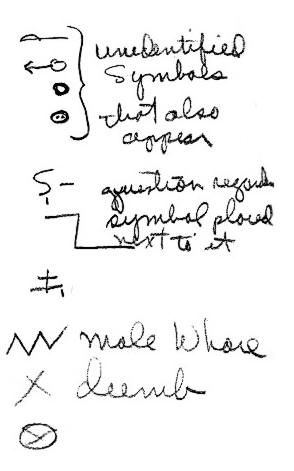
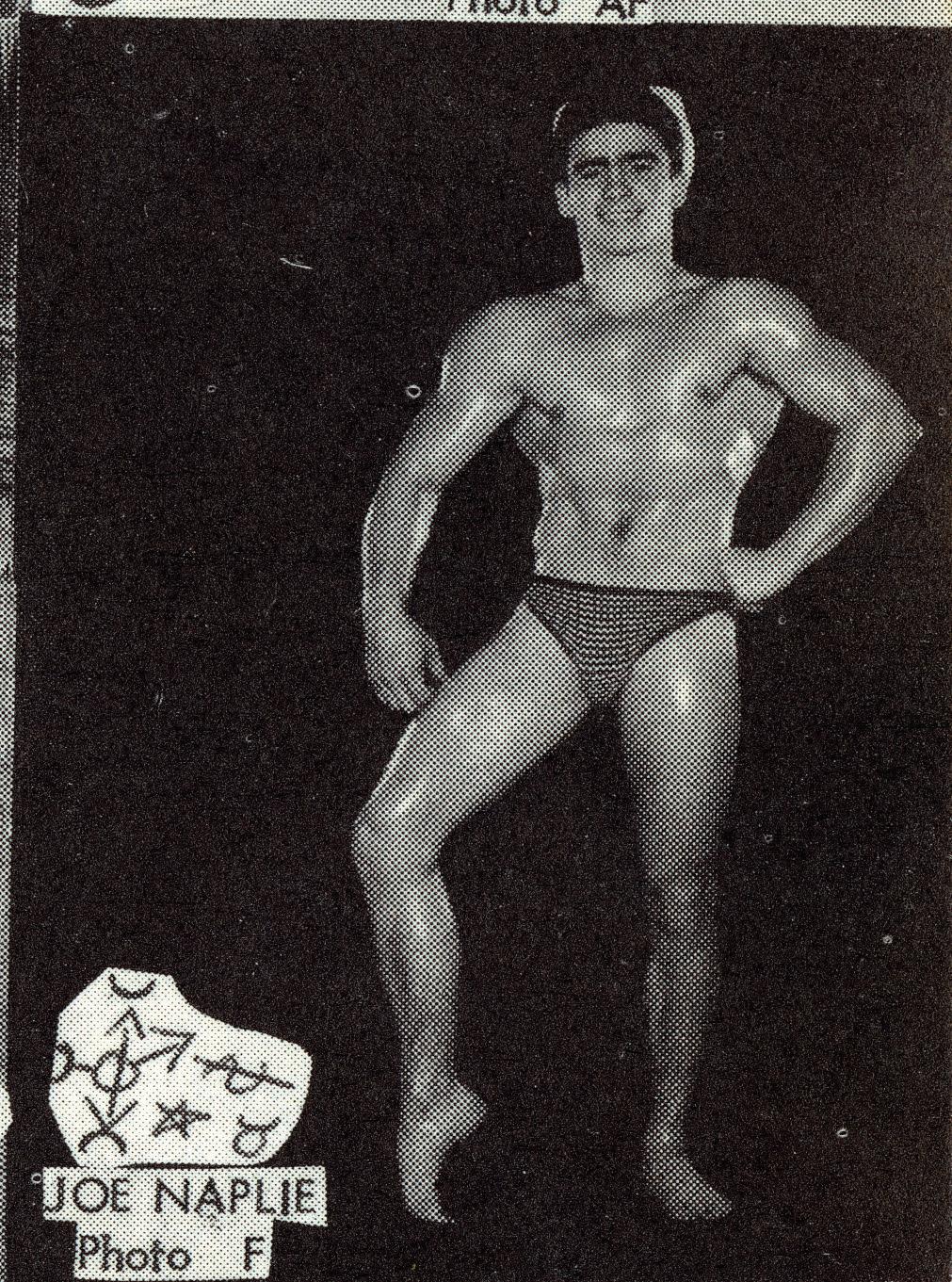
According to the subjective character analysis, model Joe Naplie is:


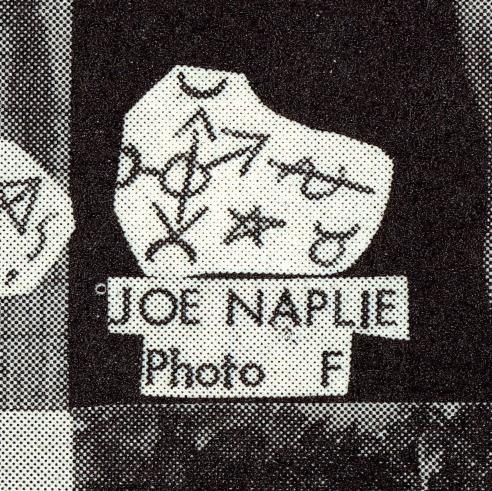
… a ball
… a lover
… an expensive hustler
… married
… will suck
… can be fucked
… can be sucked
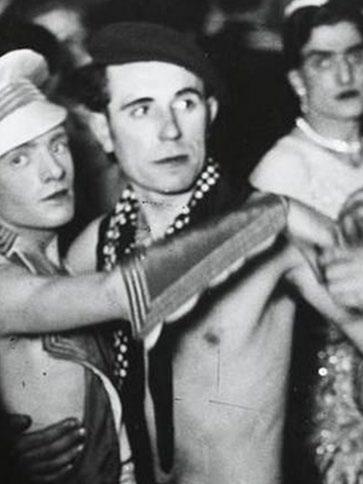
olari was an “argot”—or secret language—used by gay men in Great Britain beginning in 1910 as a means to talk openly about being gay in a time when homosexuality was considered a crime.
Early adopters of Polari would pepper a single Polari word or phrase into casual conversation to gauge a reaction from the listener—a subtle way of identifying, and coming out to, other gay men. But it wasn’t long before entire conversations in Polari flourished, allowing gay men to speak freely in public and avoid suspicion from nosy parties or nearby authority figures.
Due to Polari’s mixture of origins, the language is composed of many inventions and borrowed words. One example is the word vada, which comes from the Italian vedere, meaning “to see.” Used in a sentence, Could I vada that? means “Could I see that?” and I vadaed them yesterday means “I saw them yesterday.”
Another Polari term, riah —the word for “hair”—is simply the English word spelled backward. These playful riffs on English words were standard: “fabulous” became fantabulosa, and “eyes” became ogles. Other Polari words were totally original slang creations—like lallies, which means “legs.”
Individual words could be strung together to create an entire Polari sentence. One such well-cited phrase is quintessential Polari: How bona to vada your dolly old eek! In English: “How good to see your dear old face!” This phrase combines terms like bona and vada, both rooted in foreign languages, with original slang inventions like dolly and eek
In 2020, the writer Daniel Villarreal used Polari words to piece together inventive sentences as they would have been said in the early twentieth century. One such sentence reads: Everyone thinks that auntie is a total fruit, but her gildy clobber makes me think she’s a duchess— which Villarreal has translated to mean: “Everyone thinks that older gay man is a total old queen, but his nice clothes make me think he’s a rich gay man.”
Polari eventually fell into disuse in the late 1960s and early ‘70s due to changing tastes, dwindling secrecy, and the decriminalization of homosexuality in the U.K. through the Sexual Offences Act of 1967. And while usage of Polari was never as popular in the U.S. as it was in the U.K., a few key words such as butch, fish, and camp successfully made their way across the pond and have remained in the vocabulary of the American queer community ever since.
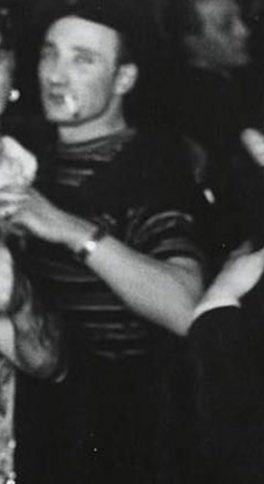
ACDC, BIBI
bisexual AJAX nearby, adjacent to ALAMO! they’re attractive!
AUNT NELL listen!
AUNT NELLS ears
AUNT NELLY FAKES earrings
AUNT NELL DANGLERS earrings
BARNEY a fight
BASKET bulge of male genitalia through clothes
BAT, BATTS, BATES shoes
BEVVY drink BITCH effeminate or passive gay man, catty gay man or to complain
BIJOU small/little
BLAG pick up
BLOW to give oral sex
BLUE homosexual BOD body
BONA good
BONA NOCHY goodnight
BONAROO wonderful, excellent
BUNGERY pub
BUTCH masculine
CARTES penis
CATS trousers
CHARPER to search or to look
CHARPERING OMI policeman
CHARVER sexual intercourse
CHICKEN young man
CLOBBER clothes
DILLY BOY a male prostitute
DINARI money
DISH buttocks, anus
DOLLY pretty, nice, DONA woman
DORCAS one who cares
GELT money
HANDBAG money
HOOFER dancer HP effeminate gay man
JARRY food
JUBES breasts
BUVARE a drink; something drinkable
CACKLE talk/gossip
CAMP effeminate, outrageous
CAMPARE exaggerate, make stand out
CAPELLO, CAPELLA hat
COD bad COTTAGE a public lavatory used for sexual encounters
COTTAGING seeking or obtaining sexual encounters in public lavatories
COVE taxi
CRIMPER hairdresser
DALLY sweet, kind
DRAG clothes, esp. women’s clothes
DOSS bed
ECAF face
EEK face
ENDS hair
ESONG, SEDON nose
FANTABULOSA fabulous, wonderful
FEELE child
FRUIT queen
FUNT pound
KAFFIES trousers
KHAZI toilet, also spelt carsey
LACODDY body
LALLIES legs, sometimes also knees (as in “get down on yer lallies”)
LALLIE TAPPERS feet
LATTY/LATTIE room, house or flat
LILLS hands
LILLY police
NAFF awful, dull, hetero
ORBS eyes OVEN mouth
PALARE PIPE telephone
SCARPER to run off
SCHLUMPH drink
SWITCH wig
LYLES legs
LUCODDY body
LUPPERS fingers
MANGARIE food
MARTINIS hands
MEASURES money
NANTI not, no, none
NATIONAL HANDBAG welfare
OGLE look, admire
PALLIASS back PARK give
PLATE FEET to fellate
PALONE woman
PALONE-OMI lesbian
POTS teeth REMOULD sex change
SCOTCH leg SCREECH mouth, speak
SHARPY policeman
SHARPY POLONE policewoman
SHUSH steal
SHUSH BAG hold-all
THEWS thighs TOBER road TODD alone
TOOTSIE TRADE sex between two passive homosexuals
TRADE sex, sex-partner
TROLL to walk about
MEESE plain, ugly
MESHIGENER nutty, crazy, mental
METZAS money
MINCE walk
OGLES eyes
OGLEFAKES glasses
OMI man
OMI-PALONE effeminate man
ONK nose
RIAH/RIHA hair
RIAH ZHOOSHER hairdresser
ROUGH TRADE a working class or blue collar sex partner or a tough, thuggish or potentially violent sex partner
SHYKER/SHYCKLE wig
SLAP makeup SO homosexual
STIMPS legs
STIMPCOVERS stockings, hosiery
STRIDES trousers
STRILLERS piano
VADA/VARDER to see
VERA gin
VOGUE cigarette
VOGUERESS female smoker
WILLETS breasts
YEWS eyes
ZHOOSH style hair
ZHOOSHY showy
BACKGROUND:
Homosexual prisoners at the concentration camp at Sachsenhausen, Germany, December 19, 1938, wearing pink triangles on their uniforms. © Corbis/Getty Images
Chart of Prisoner Markings
A chart of prisoner markings used in German concentration camps. Dachau, Germany, ca. 1938–1942. United States Holocaust Memorial Museum
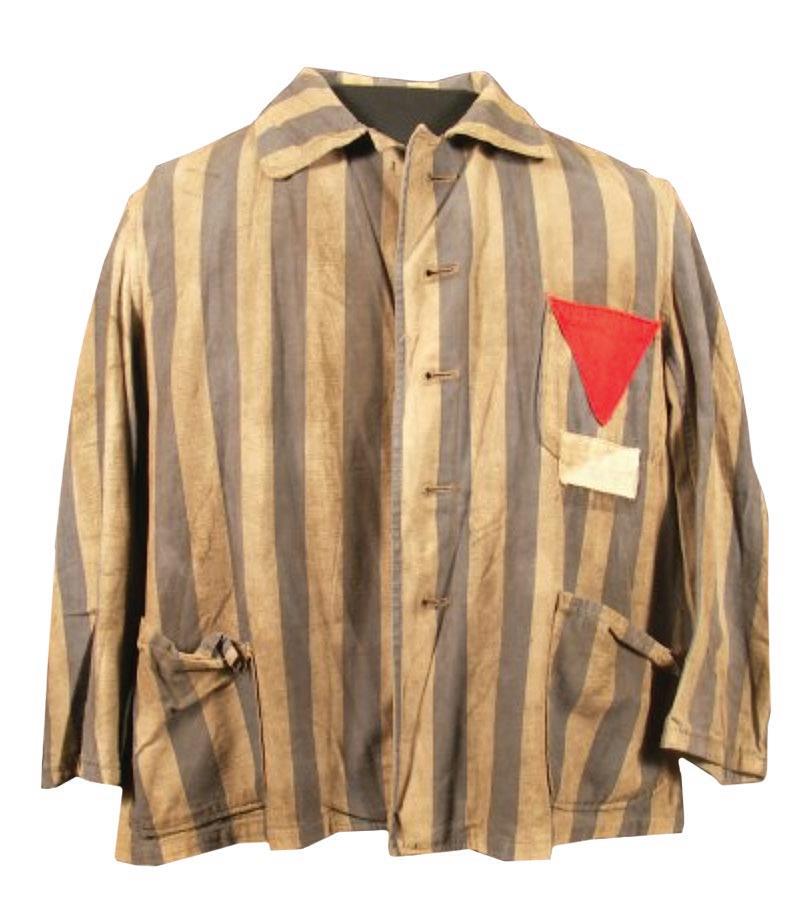
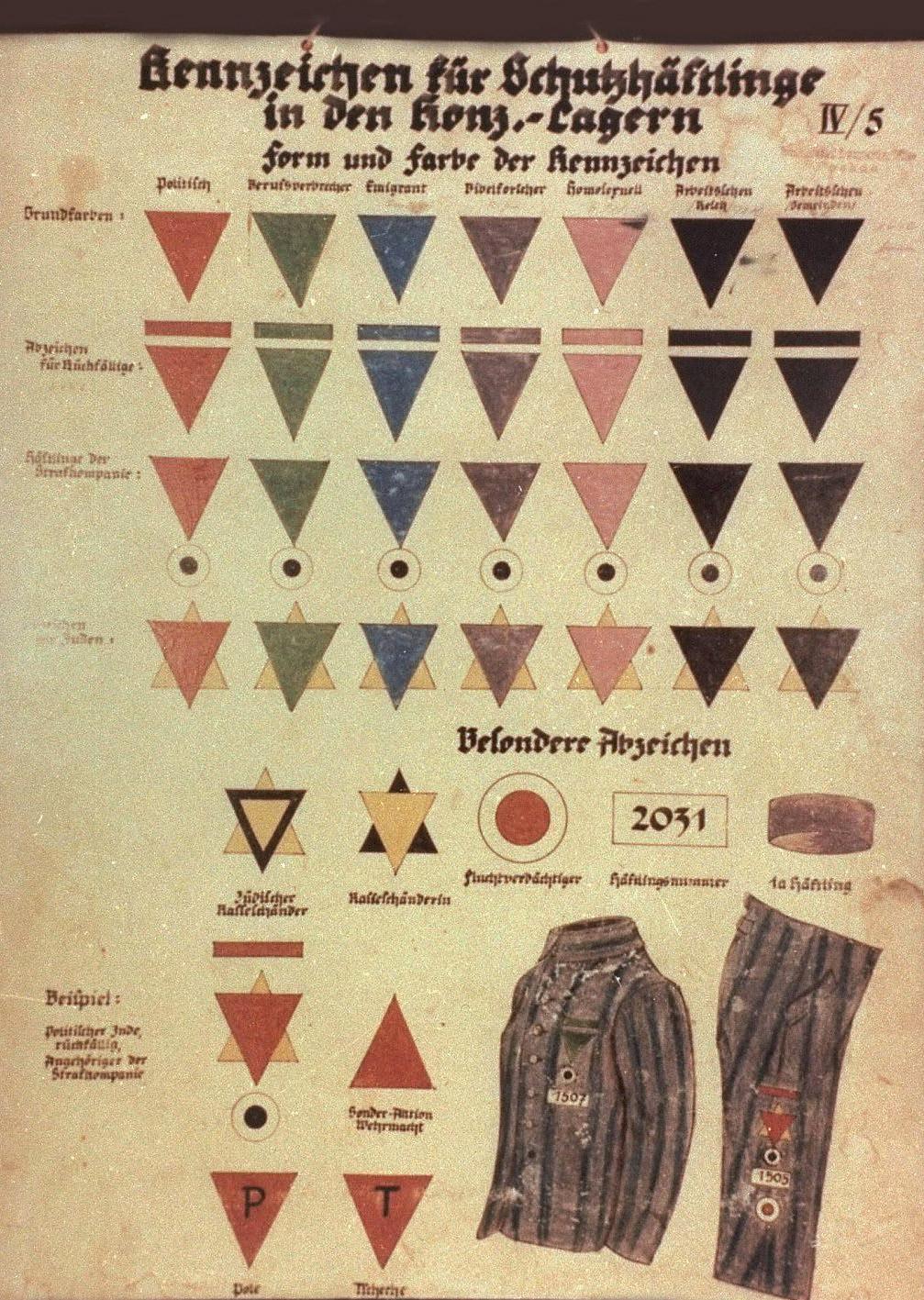
2 https://time.com/5295476/gay-pride-pink-triangle-history/
camps died between 1933 and 1945.
1
An estimated 65 percent of gay men inconcentration ★
and 5,000 to 15,000 were placed in concentration camps.
Imagine having a barcode tattooed on your forehead that, once scanned, reveals your entire life's record. In today’s age of techonological surveillance, such a thing could very likely happen.
Now how about wearing a symbol that identifies your religion, sexual orientation, political affiliation, financial status, prejudices, and IQ? That one’s not sci-fi fantasy—it absolutely happened.
Before the pink triangle became a worldwide symbol of gay power and pride, it was a badge of shame. In Nazi Germany, a downward-pointing pink triangle was sewn onto the shirts of gay men in concentration camps as a means to both identify and further dehumanize them.
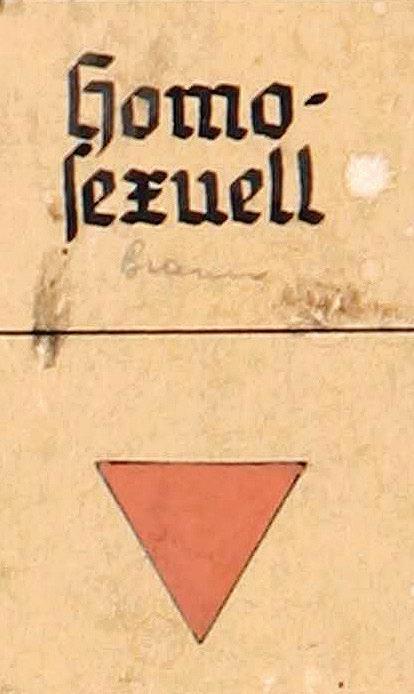
Although homosexuality was technically made illegal in Germany in 1871 with the passage of Paragraph 175, the rule was rarely enforced until the Nazi Party took power in 1933. As part of their mission to “purify” Germany, the Nazis began arresting and interrogating queer individuals across the country— primarily gay men, whom they viewed as degenerate.
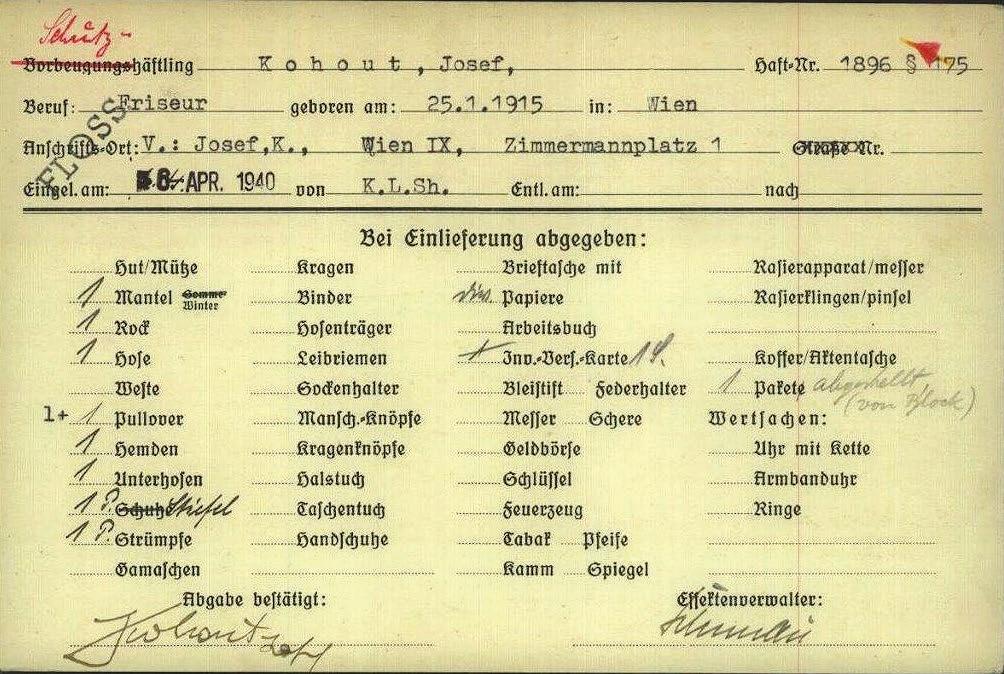
Of the 100,000 gay men the Nazis arrested, between 5,000 and 6,000 were sentenced to prison terms in concentration camps. Just as Jews were forced to identify themselves with yellow stars, gay men in concentration camps had to wear a patch in the shape of a pink triangle. Other colors of the triangle were used to mark Romani people, political prisoners, criminals, immigrants, Jehovah's Witnesses, and asocial people, a category that included lesbians and prostitutes.
An estimated sixty-five percent of the gay men held in concentration camps died between 1933 and 1945. And to add insult to already devastating injury, both East and West Germany upheld the country's anti-homosexual law long after World War II ended, which meant many gay men remained incarcerated until the early 1970s. (Paragraph 175 wasn’t officially repealed until 1994.)
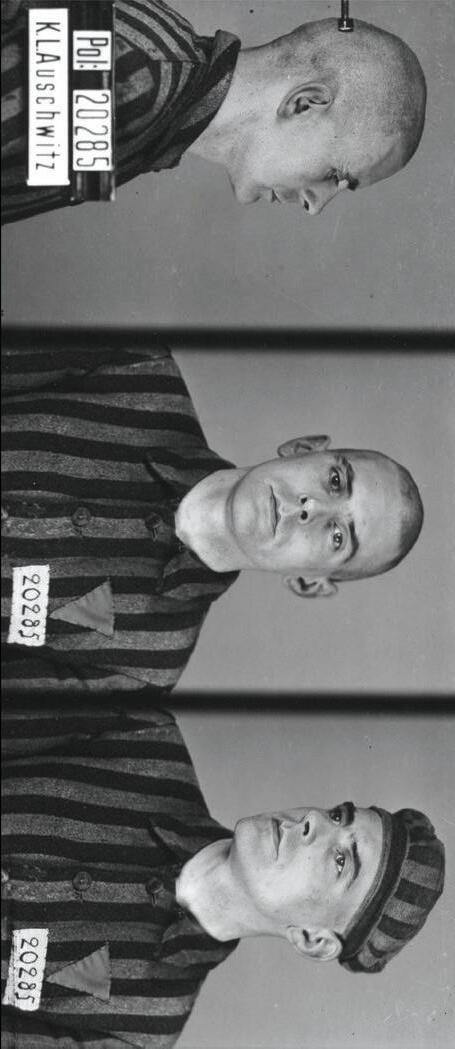
Activists began to reclaim the pink triangle as a symbol of liberation in the 1970s, but as the gay community faced an altogether new existential threat one decade later—HIV and AIDS—it took on a whole new life.
The activist organization ACT UP (AIDS Coalition to Unleash Power) used the pink triangle as a metaphor for numerous campaigns, pointing to its dark historical roots when it declared that "silence about the oppression and annihilation of gay people, then and now, must be broken as a matter of our survival." 2
Thus, reclaiming the pink triangle served as both a powerful "fuck-you" gesture to the Nazis and—thanks to Gran Fury’s iconic Silence=Death poster, created in 1987—a powerful logo of AIDS activism worldwide.
Yellow
Green
Turquoise
Indigo
Violet for spirit
Hot
In 1978, Gilbert Baker, an openly gay man and drag queen, and his friend Lynn Segerblom (also known as Faerie Argyle Rainbow), designed the first iteration of the rainbow-striped flag with eight vibrant colors. Baker later revealed that Harvey Milk asked him to create a symbol of pride for the gay community.
The first rainbow flags were handmade by volunteers for the Gay Freedom Day parade that took place in San Francisco on June 25, 1978, sparking a new tradition of hoisting the flag during annual pride marches. An awe-inspiring mile-long version of the flag was made for the twenty-fifth anniversary of the Stonewall riots in 1994.
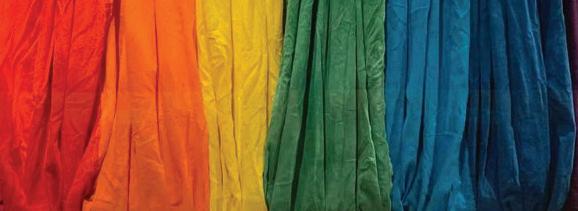
Updated iterations of the flag soon followed as the rainbow flag became the international symbol of LGBTQ+ pride. In 2017, the Philadelphia Office of LGBT Affairs released its version of the flag to include black and brown stripes, representing people of color. In 2018, a “progress pride flag,” designed by Portland artist Daniel Quasar, made its way into the mix, incorporating black and brown stripes alongside pink, white, and blue stripes that represented the transgender community. And in 2021, an intersex-inclusive flag followed, designed by Valentino Vecchietti. It includes a purple circle over a yellow triangle—two colors chosen for their intentional contrast with blue and pink, which are typically considered gendered colors.
RIGHT:
RIGHT:
Robert Pruzan, photographer
Contact sheet with various 1990 International Lesbian and Gay Freedom Day Parade images

Robert Pruzan Papers (1998-36)
GLBT Historical Society
“Our job as gay people was to come out, to be visible, to live in the truth,
as I say, to get out of the lie. A flag fits tha mission because that’s a way of
proclaiming your visibility or saying, ‘This is who I am!’”
–GILBERT BAKER, CREATOR OF THE RAINBOW FLAG
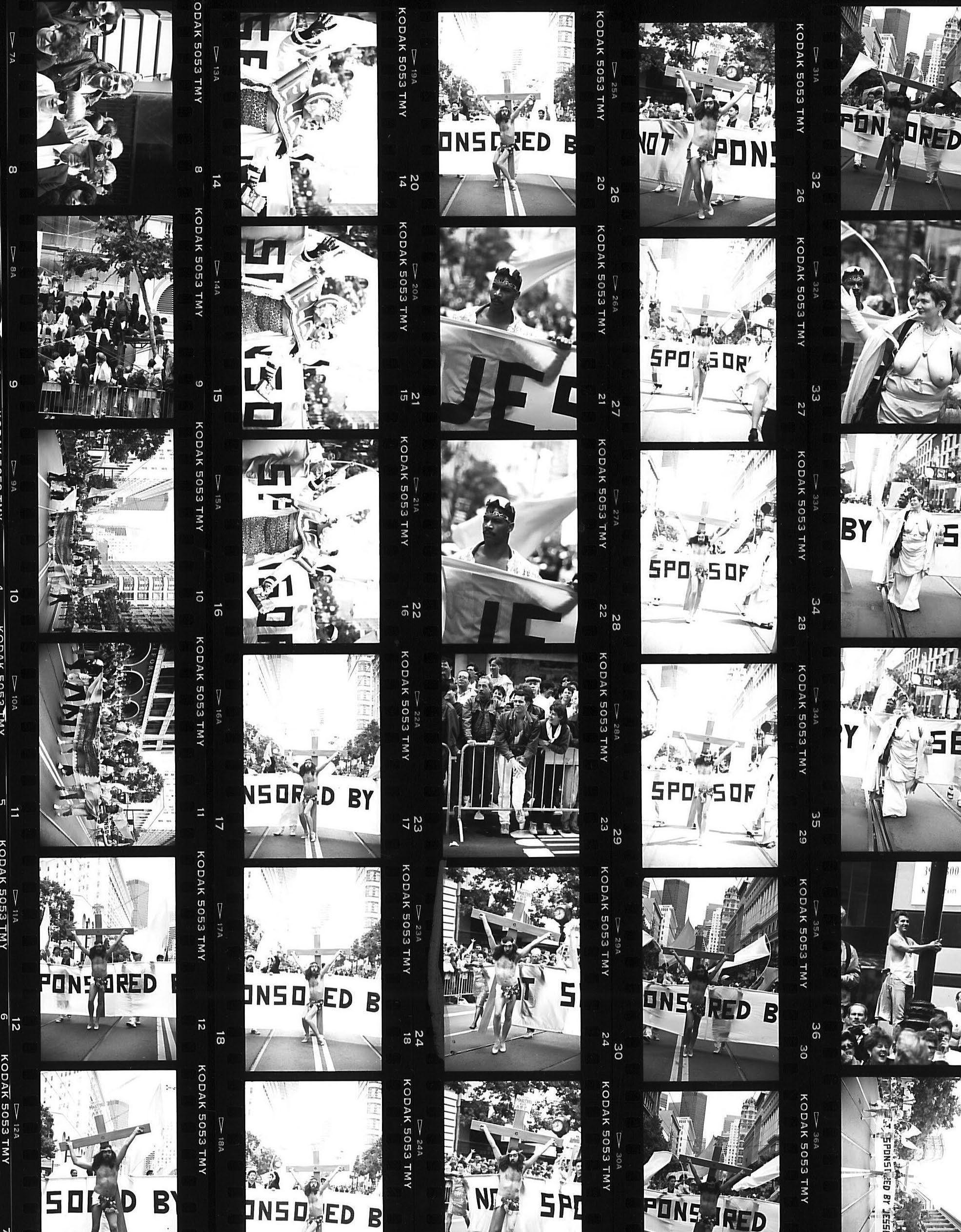
Floriography is a fancy term for the coded language of flowers, which has been practiced for thousands of years in Europe, Asia, and Africa. Depending on where you’re from, a bouquet could express anything from friendship or romantic love to a detailed declaration of dislike. Many flowers have been associated with LGBTQ+ movements; most famously the green carnation. Gay writer Oscar Wilde popularized the symbol when he asked his friends to wear them on their lapels to a showing of his play Lady Windermere’s Fan in 1892. It then became a light-hearted code for men who were attracted to other men.
W. & D. Downey
Oscar Wilde, 1889
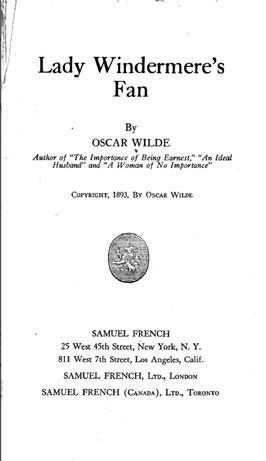

Carbon print, published 1891
NPG x27397
© National Portrait Gallery, London
I dreamed I stood upon a little hill, And at my feet there lay a ground, that seemed Like a waste garden, flowering at its will
With buds and blossoms. There were pools that dreamed
Black and unruffled; there were white lilies
A few, and crocuses, and violets
Purple or pale, snake-like fritillaries
Scarce seen for the rank grass, and through green nets
Blue eyes of shy peryenche winked in the sun. And there were curious flowers, before unknown, Flowers that were stained with moonlight, or with shades
Of Nature's willful moods; and here a one
That had drunk in the transitory tone
Of one brief moment in a sunset; blades
Of grass that in an hundred springs had been
Slowly but exquisitely nurtured by the stars, And watered with the scented dew long cupped In lilies, that for rays of sun had seen
Only God's glory, for never a sunrise mars
The luminous air of Heaven. Beyond, abrupt,
A grey stone wall. o'ergrown with velvet moss
Uprose; and gazing I stood long, all mazed
To see a place so strange, so sweet, so fair.
And as I stood and marvelled, lo! across
The garden came a youth; one hand he raised
To shield him from the sun, his wind-tossed hair
Was twined with flowers, and in his hand he bore
A purple bunch of bursting grapes, his eyes
Were clear as crystal, naked all was he, White as the snow on pathless mountains frore, Red were his lips as red wine-spilith that dyes
A marble floor, his brow chalcedony.
And he came near me, with his lips uncurled
And kind, and caught my hand and kissed my mouth,
And gave me grapes to eat, and said, 'Sweet friend,
Come I will show thee shadows of the world
And images of life. See from the South
Comes the pale pageant that hath never an end.'
And lo! within the garden of my dream
I saw two walking on a shining plain
Of golden light. The one did joyous seem
And fair and blooming, and a sweet refrain
Came from his lips; he sang of pretty maids
And joyous love of comely girl and boy,
His eyes were bright, and 'mid the dancing blades
Of golden grass his feet did trip for joy; And in his hand he held an ivory lute
With strings of gold that were as maidens' hair, And sang with voice as tuneful as a flute, And round his neck three chains of roses were. But he that was his comrade walked aside; He was full sad and sweet, and his large eyes Were strange with wondrous brightness, staring wide
With gazing; and he sighed with many sighs That moved me, and his cheeks were wan and white
Like pallid lilies, and his lips were red
Like poppies, and his hands he clenched tight, And yet again unclenched, and his head Was wreathed with moon-flowers pale as lips of death.
A purple robe he wore, o'erwrought in gold
With the device of a great snake, whose breath
Was fiery flame: which when I did behold I fell a-weeping, and I cried, 'Sweet youth, Tell me why, sad and sighing, thou dost rove These pleasent realms? I pray thee speak me sooth
What is thy name?' He said, 'My name is Love.' Then straight the first did turn himself to me And cried, 'He lieth, for his name is Shame, But I am Love, and I was wont to be Alone in this fair garden, till he came Unasked by night; I am true Love, I fill The hearts of boy and girl with mutual flame.' Then sighing, said the other, 'Have thy will,
I am the love that dare not speak its name.'
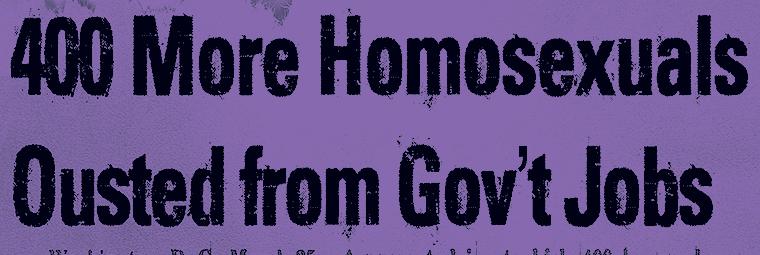
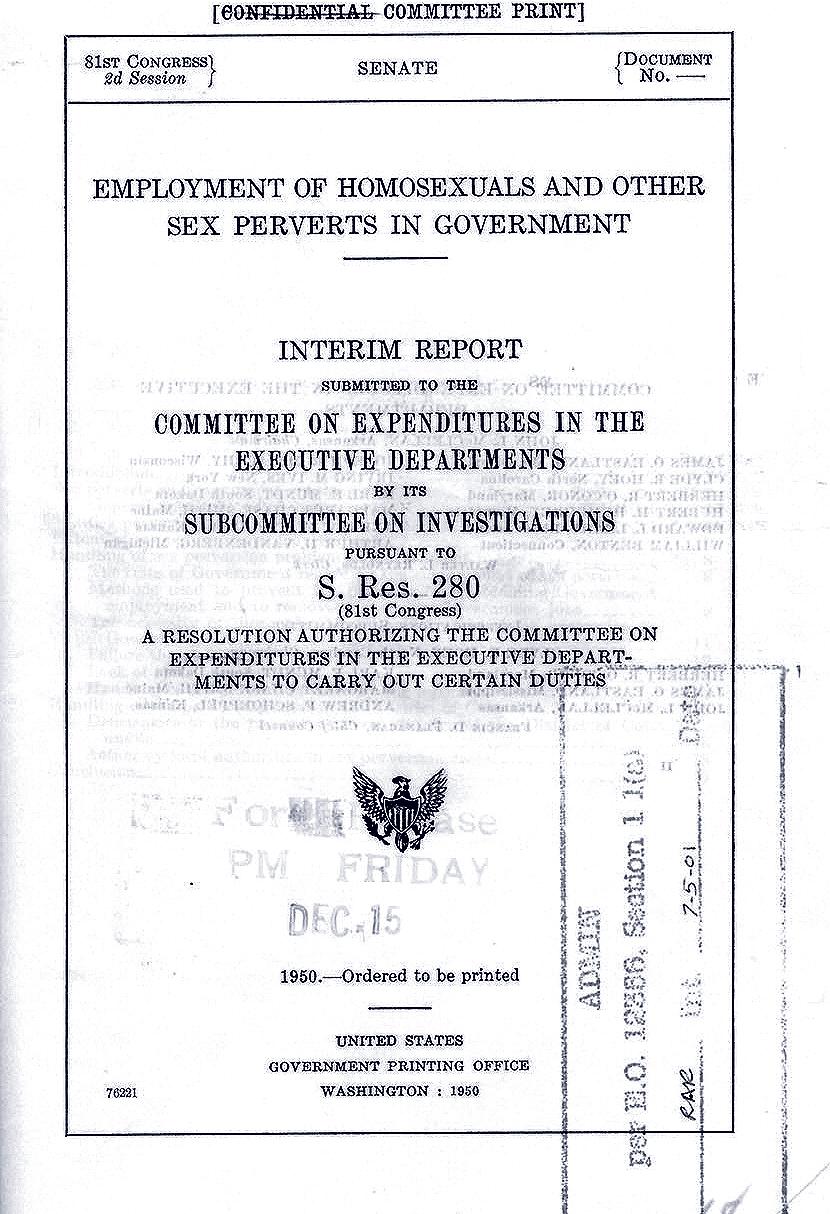

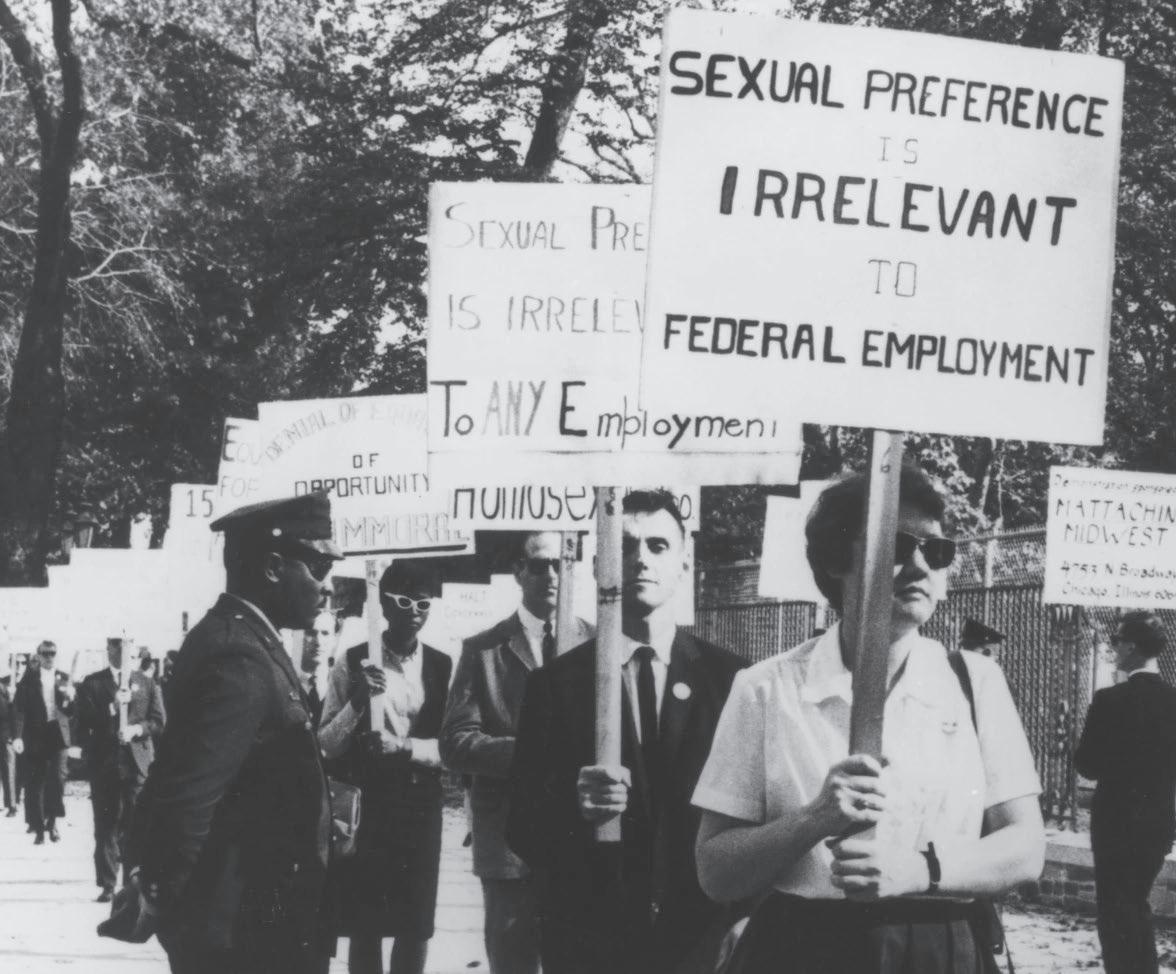
On April 27, 1953, President Dwight D. Eisenhower (with the help of his henchmen, lawyer Roy Cohn and Wisconsin Senator Joseph McCarthy) approved Executive Order 10450, which authorized broad categories of American citizens identified as threats to national security—including those with histories of committing crimes, drug addiction, and “sexual perversion”—to be terminated from federal employment.
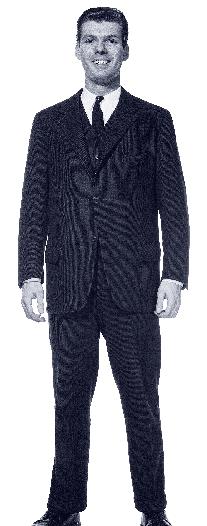



Under the order, the investigation, interrogation, and organized removal of queer people from all areas of the federal government— including the armed services— became law. Often referred to as the “Lavender Scare,” Eisenhower’s edict was grounded in the baseless belief that queer people posed a threat to national security, either because they were vulnerable to blackmail or were considered to have “evil” characteristics. It’s estimated that more than five thousand homosexual employees lost their jobs, with thousands more barred from obtaining government jobs in the first place.
The political and moral fears about gays and lesbians working in government were part of a larger-scale backlash against homosexuality, which aimed to minimize the queer culture that had grown in visibility during the postwar years. The Lavender Scare associated queer people with communism, alleging these employees were security risks who could not be trusted with government secrets.
Frank Kameny, an astronomer in the U.S. Army's Army Map Service, was fired from his position in 1957 because of his sexuality. He decided to fight the decision, framing the discrimination against him as an issue of civil rights rather than national security. Although Kameny lost his lawsuit, by 1965, he and other gay men and lesbians were picketing outside the White House and helping other employees who had been terminated with their legal cases. In 1975, the Civil Service Commission announced new rules stating gay people could no longer be barred or fired from federal employment because of their sexuality. However, discrimination continued in other agencies where employees were required to maintain security clearances— such as the National Security Agency, where Jamie Shoemaker worked as a linguist.
Shoemaker turned to Kameny for advice when he was told he was at risk of losing his job. With the civil rights activist’s help, Shoemaker became the first gay employee at the NSA to keep both their job and their security clearance after such an investigation—although the decision came with one mandate: Shoemaker had to tell his family he was gay.
Avenues for discrimination against queer people remained open in the federal government for decades, until President Bill Clinton signed an executive order in 1995 outlawing discrimination based on sexual orientation in the granting of security clearances, followed by another order in 1998 that comprehensively banned such discrimination in government employment. (The “Don’t Ask, Don’t Tell” policy that kept queer members of the U.S. military in the closet, signed by Clinton in 1993, remained on the books until 2011.)
is perfectly legal to fire people simply
because they are LGBTQ+—a direct
result of our government’s homophobic CRUIS’N | UNCOVERING GAY DESIGN HISTORY THROUGH COLLECTING 209 1 https://www.glaad.org/reference/nondiscrimination
policies that were put in place in the 1950s.
1
In 1966 three men walked into a bar, stated that they were gay, and ordered drinks. When they were denied service, a movement began.
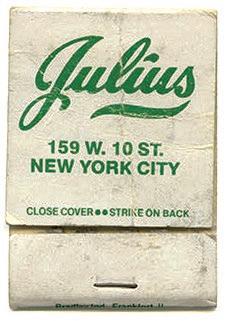
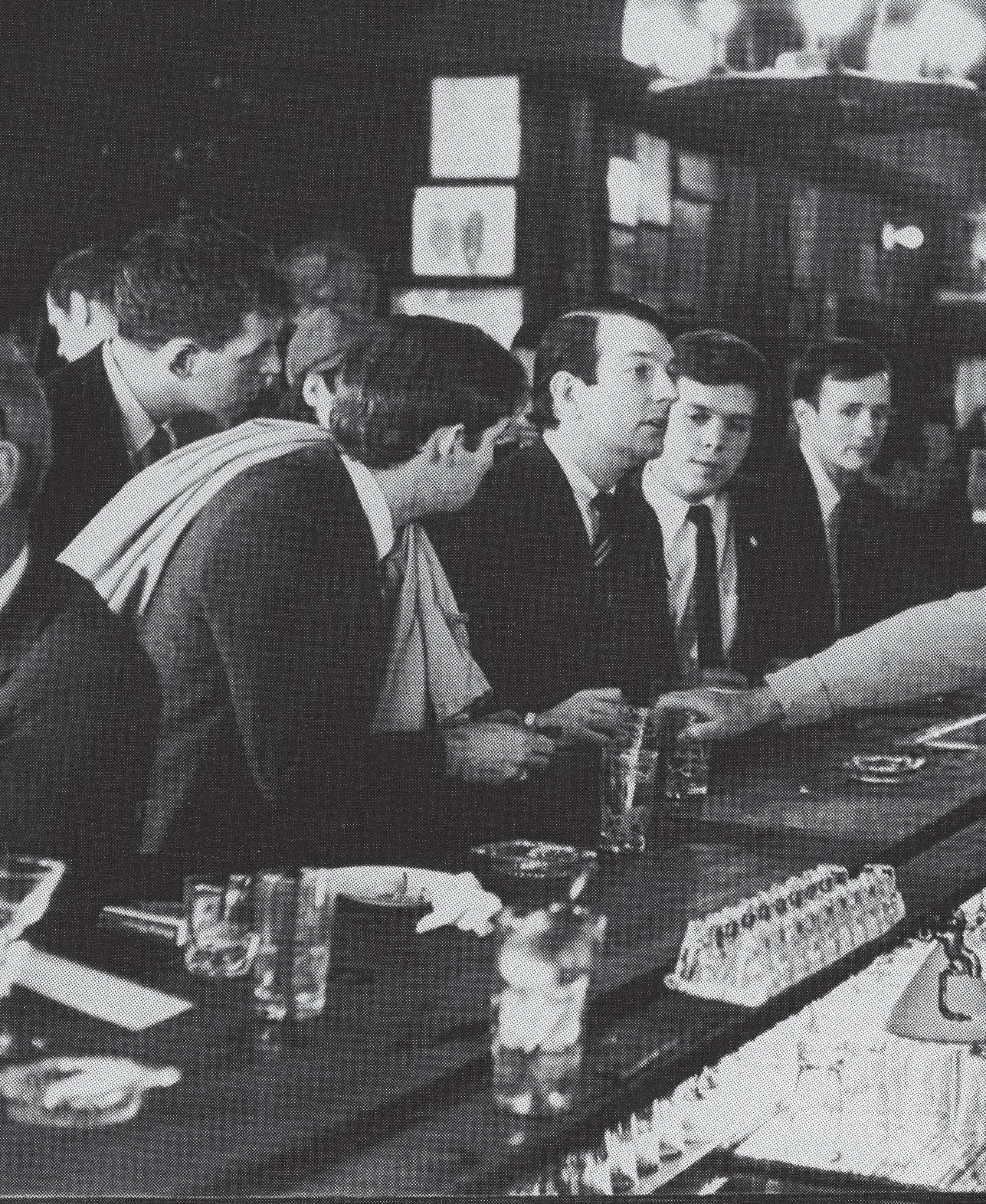
The Homophile Movement refers to the local, national, and international social-political movement for gay and lesbian rights that emerged following World War II.
April 21, 1966, Julius' Greenwich Village, NY
A gaggle of gay men set out to f*ck the political and social climate of New York City. Bar-hopping, the men reached Julius’. They approached the bartender, identified themselves as gay, and requested a drink. They were promptly denied service, and the “Sip-In,” and a movement had begun. The sip-in was a variation of civil rights lunch-counter sit-ins then held at places that segregated black patrons.
The men were part of the Mattachine Society—one of the original organizations dedicated to fighting for gay rights—and wanted to demonstrate that bars in the city discriminated against homosexuals. Because a person’s sexual orientation couldn’t be perceived as easily as a person’s sex or race, the New York State Liquor Authority instead based requirements for service on what was deemed as “orderly conduct.” Intimate encounters between two men were seen as “disorderly,” so gay men were often refused service at bars. The bars that served gay people ran the risk of having their liquor licenses revoked and were often targets of police raids.
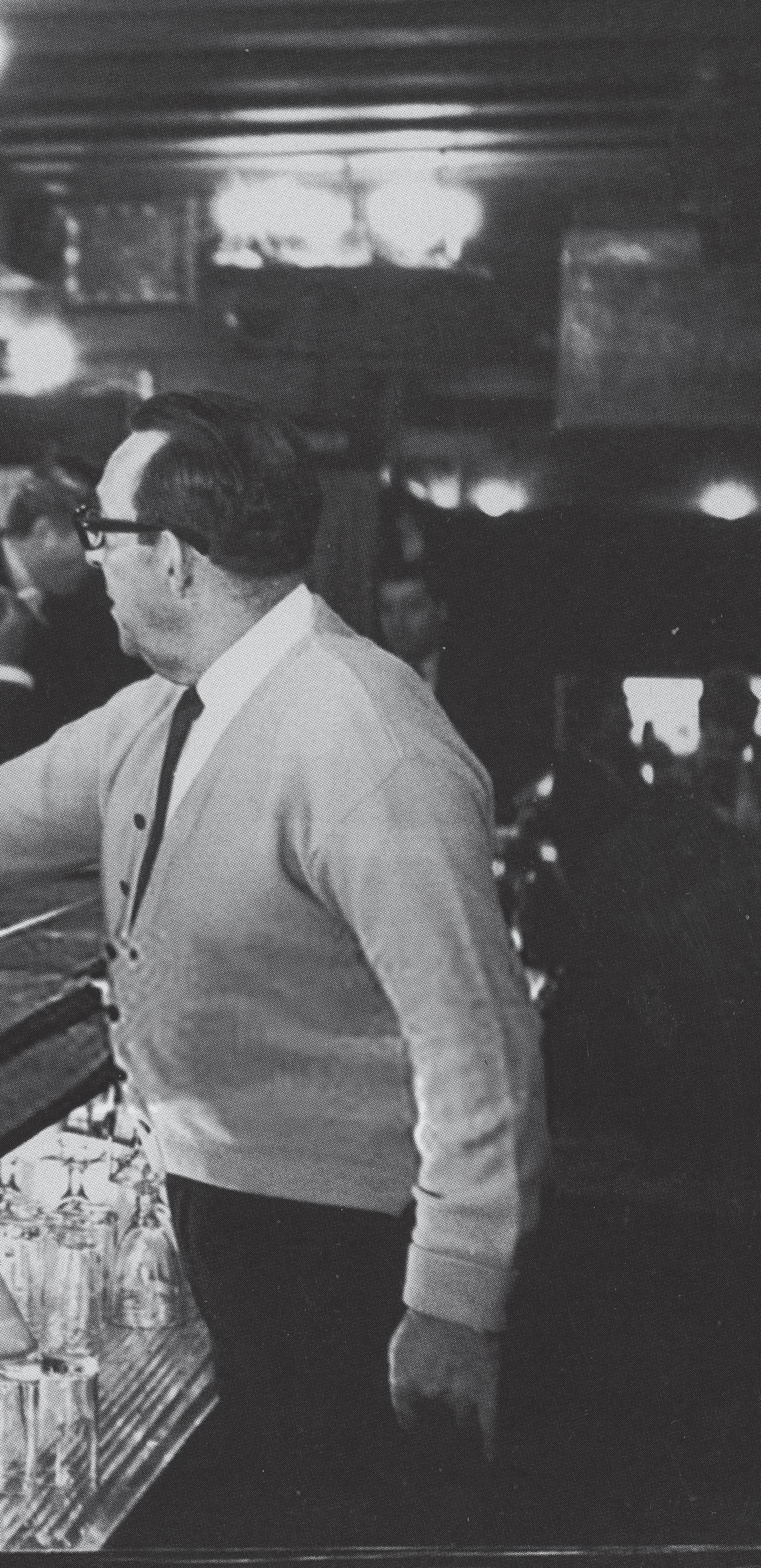
Their plan involved revealing to a bartender that he and his friends were gay and then being denied service. Once that happened, the Mattachine Society—with the support of the ACLU in New York—could act against the State Liquor Authority.
After pouring their drinks, the bartender refused to continue to serve the men after they told him they were gay. The bartender placed his hand over one of their glasses.
Source: history.com/news/gay-rights-sip-in-julius-bar
ABOVE:
Louis Liotta, photographer
Dick Leitsch, president of the Mattachine Society of New York, at Mattachine’s office, 1133 Broadway off Madison Square Park, December 30, 1965 New York Post Archives
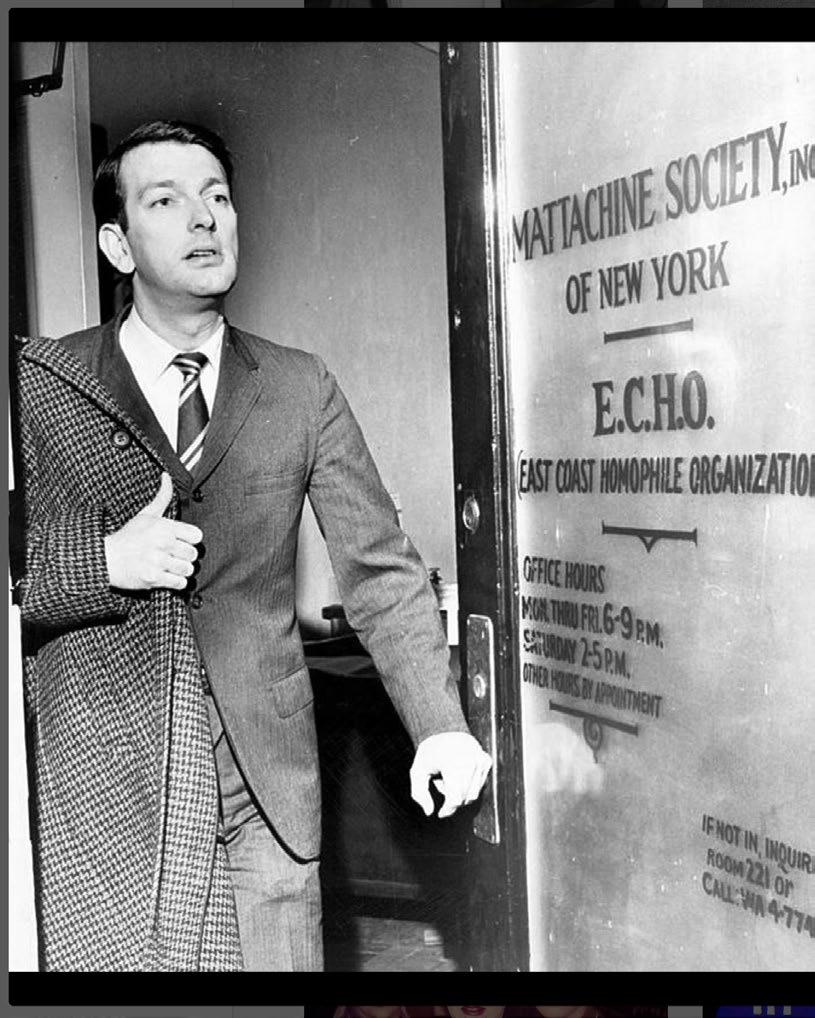
© NYP Holdings, Inc., via Getty Images
LEFT:
Fred W. McDarrah, photographer
The Sip-In protest at Julius’ bar in Greenwich Village, April 21, 1966, led by Dick Leitsch (staring at bartender), president of the Mattachine Society of New York, with three other Mattachine activists. From left, John Timmins (turned away from the camera), Dick Leitsch, Craig Rodwell, and Randy Wicker. The photo captures the moment when the bartender refused service after the four announced that they were homosexuals.
© Fred W. McDarrah, courtesy of his estate
DESIGNING QUEER HISTORY, 1950–2000
Mattachine Review, vol. V, no. 11 (November 1959)
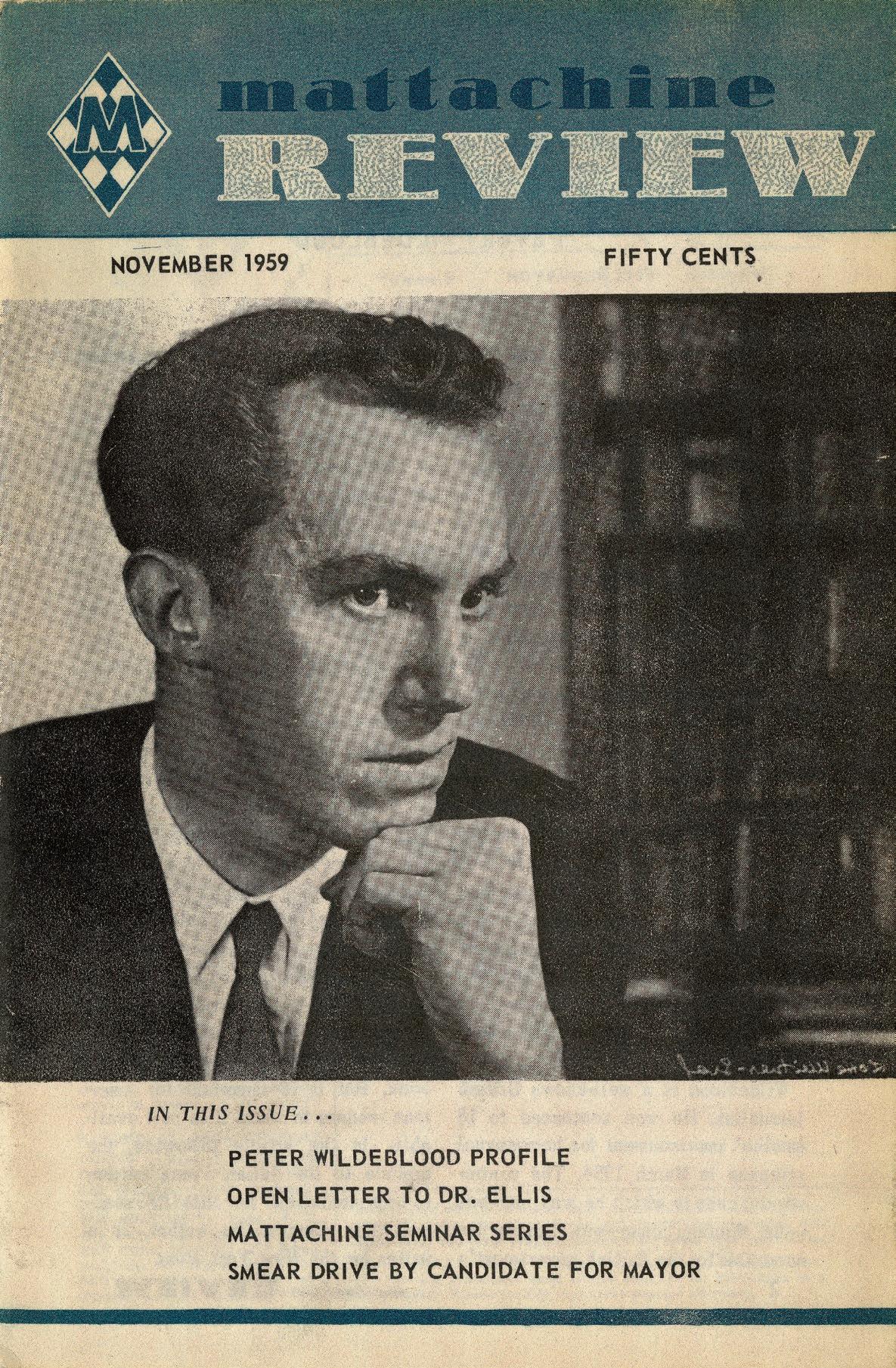
Mattachine Society, Inc. San Francisco, CA.
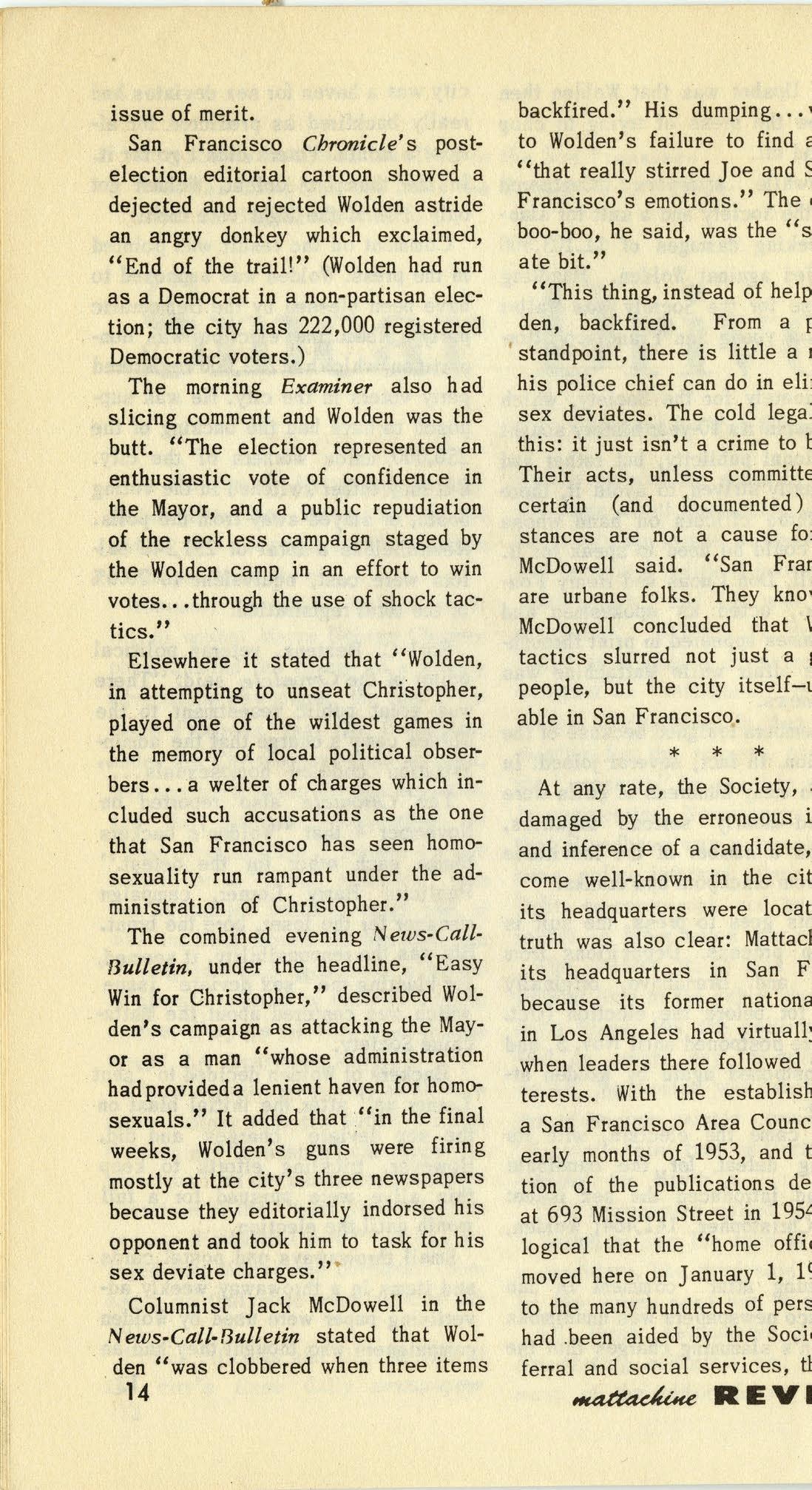

Beginning in 1953, One Incorporated—a subgroup of the Mattachine Society—produced a monthly periodical, ONE magazine, which reached a peak circulation of five thousand copies. In 1954, the Los Angeles Postmaster deemed the publication “obscene, lewd, and smutty” and seized all copies that came through the city’s postal service—a provocation that led to a lengthy court battle waged by One Incorporated with significant consequences for the gay and lesbian movement. In 1958, the United States Supreme Court unanimously ruled in One Incorporated’s favor, citing in their ruling that discussing homosexuality was not obscene. Free from the encroachment of censorship and obscenity laws, the publication continued to produce new issues until December 1969.

NE OF THE EARLIEST AMERICAN GAY rights organizations, the Mattachine Society (initially called the Mattachine Foundation) was founded in Los Angeles in 1950 by communist organizer Harry Hay alongside a group of leftist activists, including Bob Hull, Chuck Rowland, Dale Jennings, Konrad Stevens, James Gruber, and Rudi Gernreich. The Mattachine Society became one of several prominent groups organizing during the earliest days of LGBTQ+ activism, which was then known as the homophile movement.
The Society adopted its mission calling for a grassroots movement of gay and lesbian people to challenge discrimination and to build a community around their activism. By sharing their personal experiences and analyzing homosexuals in the context of an oppressed cultural minority, Mattachine’s founders attempted to redefine the meaning of being homosexual and devised a comprehensive program for obtaining cultural and political liberation.
The Society began holding discussion groups in 1951. These were frequently emotional and cathartic forums, providing lesbian women and gay men opportunities to share openly—often for the first time in a communal setting—their personal experiences and feelings about their sexuality. Over the next few years, awareness of the Mattachine Society began to proliferate, and soon discussion groups were meeting throughout the United States, with new branches of the Society working together to sponsor social events, raise funds, and produce newsletters and publications.
ONE, The Homosexual Magazine, vol. 3, no. 4 (November 1955) One Inc. Los Angeles, CASome of Mattachine's more political actions put the organization under considerable pressure and public scrutiny during the anti-communist era of McCarthyism in the 1950s. A newspaper columnist called the Society "sexual deviants" and "security risks" who were covertly joining forces to gain political power. The article set off alarms among Mattachine members, and a strong coalition of the group’s conservative delegates began questioning the organization's goals and challenging the idea that queer people were a legitimate minority group.
Mattachine’s board members feared the possible consequences of a government investigation into the group's activities. Deadlocked with the conservative delegates on the function and future of the group, the founders resigned in May 1953 and the organization was turned over to the conservatives, who began to restructure it.

The Mattachine Society takes its name from the Société Mattachine, a French medieval masked group that traveled through villages using ballads and dramas to call out social injustice. The name was used to symbolize homosexuals as masked people who moved through society, unknown and anonymous.
Unfortunately, the changes had a devastating effect, and the Society swiftly declined. Attendance fell at discussion groups, many chapters folded, and at the group’s 1954 convention, only forty-two members attended. The Society dissolved its national structure in 1961, and although the New York, Los Angeles, and San Francisco chapters remained active for several more years, the Society's influence gave way to other organizations, including the San Francisco Society for Individual Rights, the Gay Liberation Front, and the Gay Activists Alliance, which became increasingly dominant forces in the budding gay liberation movement.

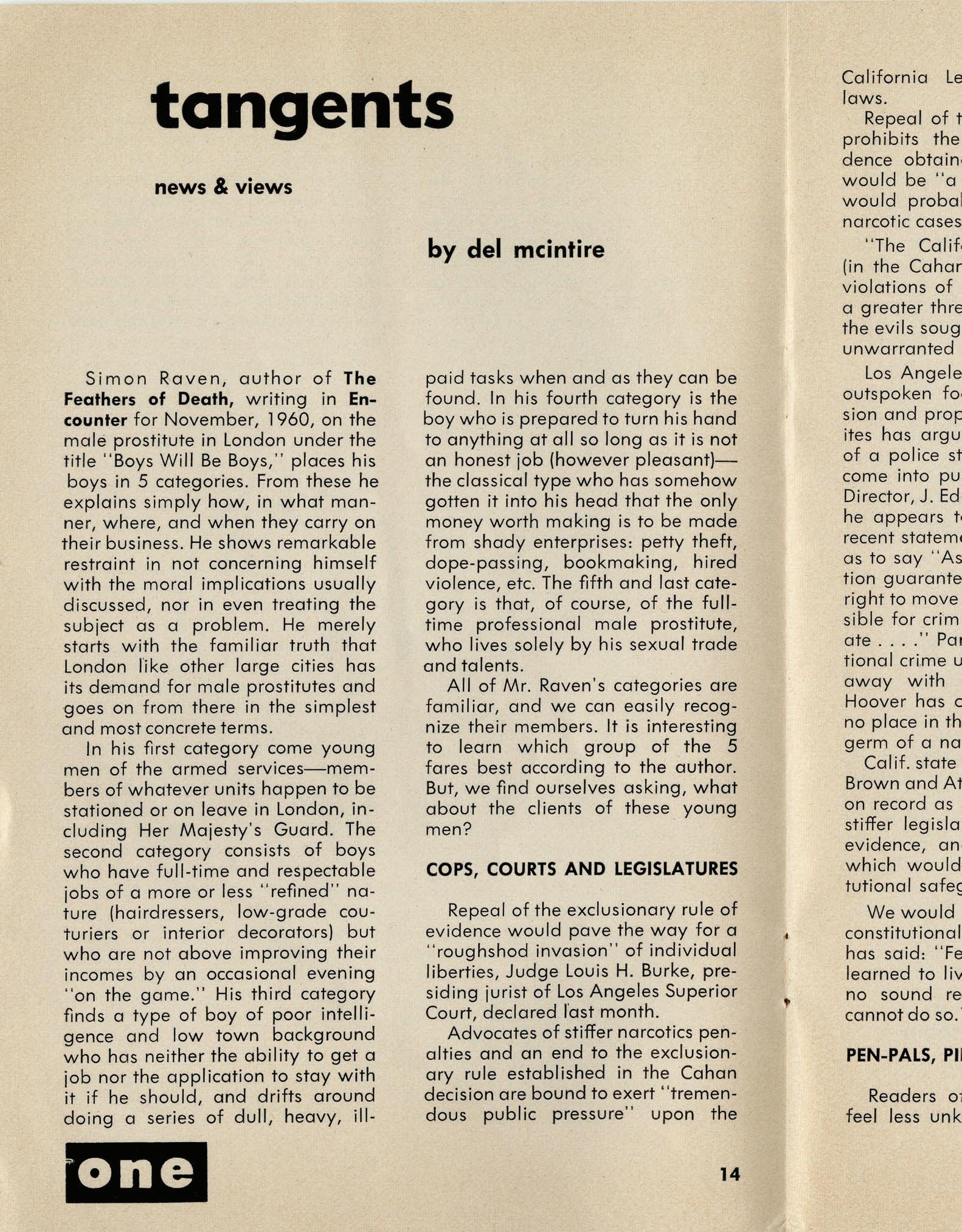
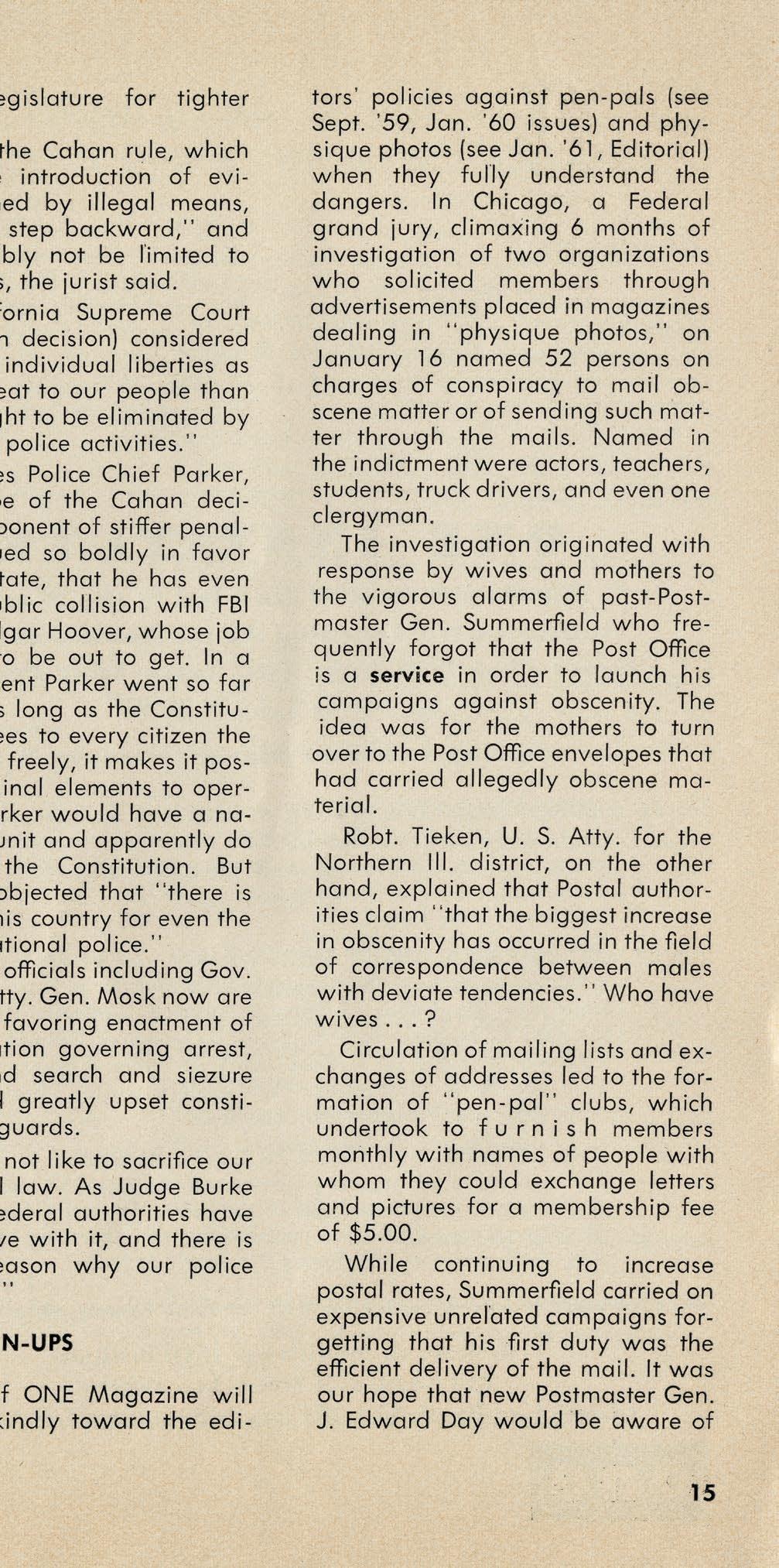
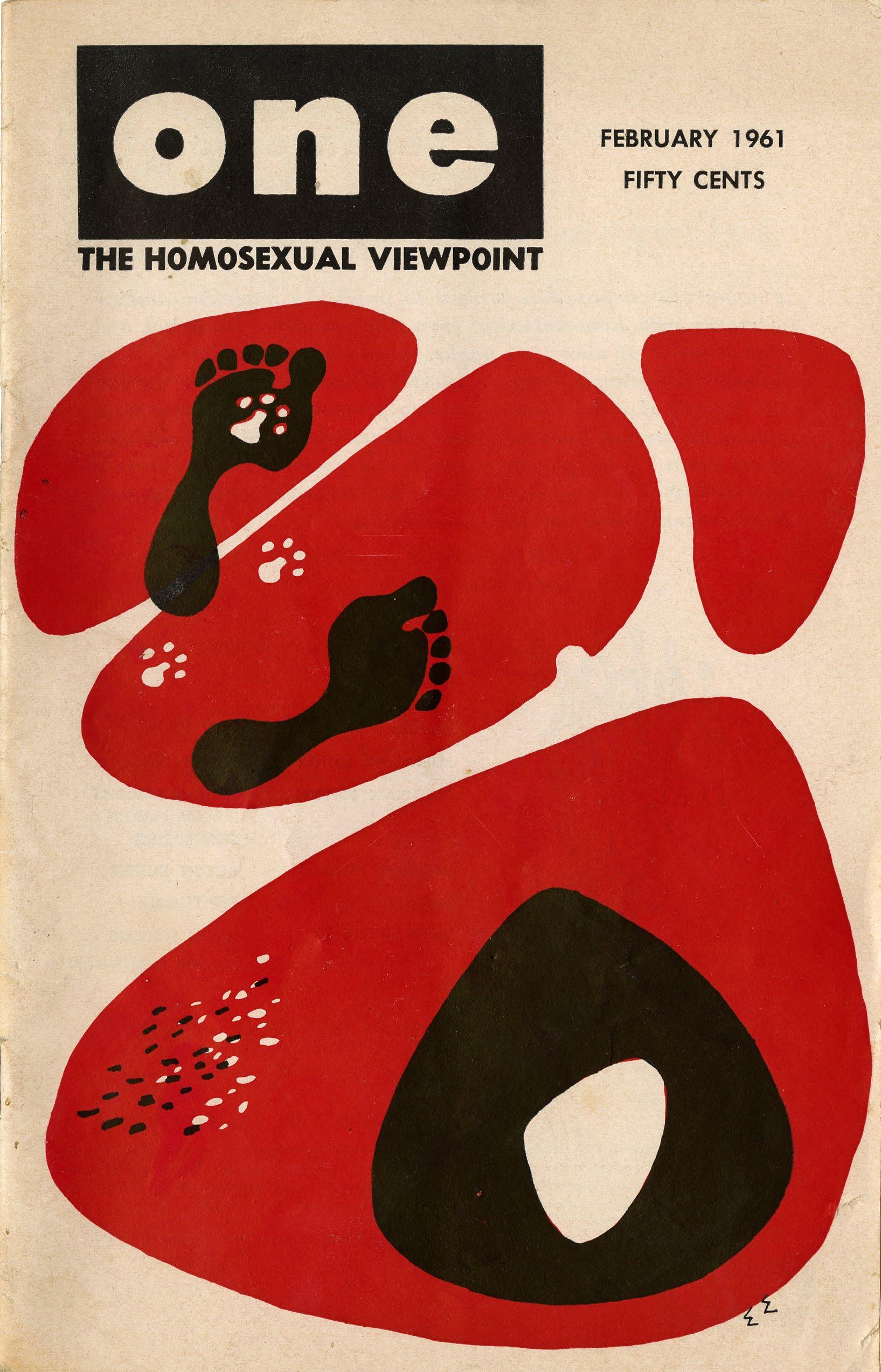
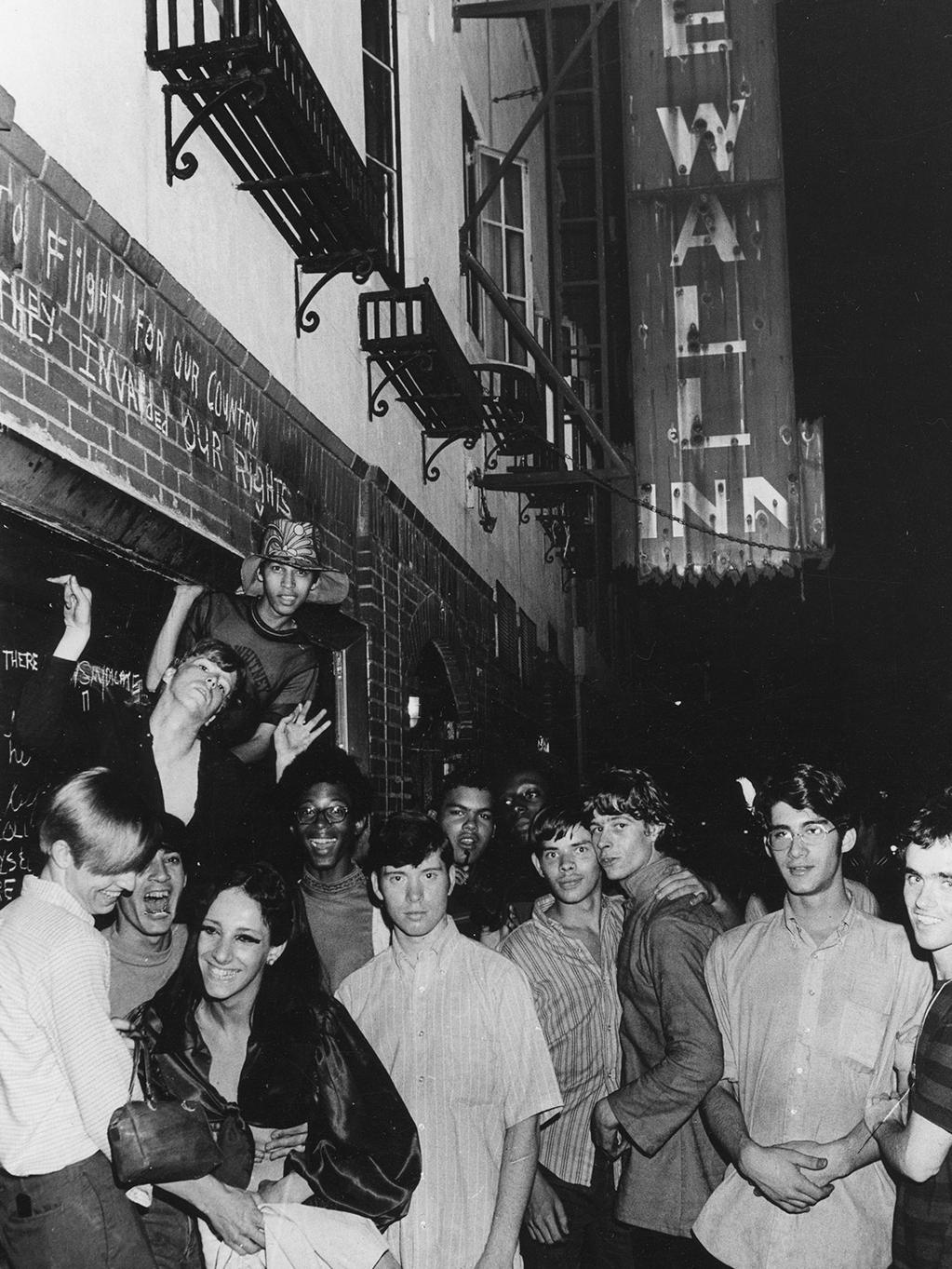
AAMERICA, IN 1969 , was still undergoing concurrent storms of social turbulence, much of which revolved around the civil rights movement and large-scale protests against the Vietnam War. In the midst of this turbulent period in American history, one event made national headlines and forever changed the trajectory of queer rights: The Stonewall uprising in New York City’s Greenwich Village.
Given the rampant discrimination queer people had endured for decades, many gay people tried to build a sense of community by meeting in secret gay bars. And although it was common for police to try and disrupt such gatherings, on the night of June 28, 1969, the patrons at the Stonewall Inn had had enough.
A popular gay bar located on Christopher Street in Greenwich Village, the Stonewall Inn served as ground zero for homosexuals in the Village who wanted nothing but a private place to gather, drink, and dance. Owned by a Mafia family who regularly bribed members of the New York Police Department to look the other way, the Stonewall Inn was the only gay bar in the city that allowed dancing—an illegal act for homosexuals at the time. However, its owners maintained a code of conduct all the regulars knew: If the police were suspected to be nearby, the lights on the dance floor changed color, letting everyone know they should immediately separate.
On this particular night, there was no warning on the dance floor. Plain-clothes officers had already slithered into the bar collecting evidence they could use against Stonewall patrons. Two hundred people were trapped like hostages inside, waiting to be “processed.” But with only two patrolmen, two detectives, and two policewomen at the scene to control the crowd, anger and rebellion quickly grew both inside and outside the Stonewall.
LEFT: An unidentified group of young people celebrate outside the boarded-up Stonewall Inn after riots over the weekend of June 28, 1969.
© Fred W. McDarrah/Getty Images
Shit began to hit the fan when the police had difficulty keeping a lesbian patron in a patrol car. She tried to break free multiple times, which increased the intensity of the police force’s aggression. A growing crowd of queers that had formed on the street started yelling, “Police brutality!” and “Pigs!” Assessing the situation, the NYPD’s inspector ordered the officers inside. While barricaded inside, the interrogation of patrons and employees continued. Those with IDs were slowly released into the crowd outside, while others were detained inside the bar ahead of their arrest. The Stonewall’s employees and those “crossdressing” were the most visible lawbreakers and, therefore, the most vulnerable to arrest. The police inspector ordered all “cross-dressers” detained, and while a few escaped in the commotion, several were arrested.
The crowd grew outside, and no one was allowed in or out. The police decided to take everyone into custody, but suddenly realized they were outnumbered. Beer cans and bottles were heaved at the windows, and a rain of coins descended on the cops.
authorizing them to investigate the illegal sale of alcohol.“
New York Police Department arrived at the Stonewall Inn.
The police justified the raid with a search warrant, CRUIS’N | UNCOVERING GAY DESIGN HISTORY THROUGH COLLECTING 219
The uprising was just getting started. Word of the raid spread quickly, and by the evening of June 28—more than fifteen hours after the police raid began—thousands of protesters had gathered at the Stonewall and the surrounding area, with crowds growing in every direction. Cops charged at protesters and smashed heads with clubs. More cops arrived—this time it was a tactical police force who, with their dark uniforms and plastic shields, marched for hours down Christopher Street as pandemonium quickly broke out.
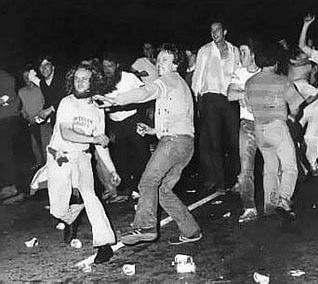
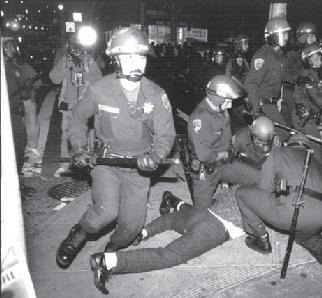
According to the police, they weren’t picking on homosexuals, insisting that their only motive for the raid was to arrest those working there. (Sure, Jan.)

Since the Stonewall was an unlicensed private club, the NYPD said, they made their attack with a warrant after undercover agents inside observed the illegal sale of alcohol.
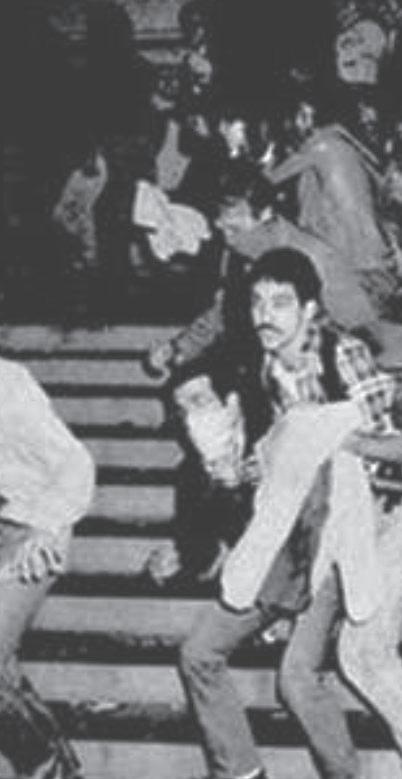
By the time the last officer pulled away at 4:00 a.m. on Sunday, June 29, there were thirteen people in jail and several in the hospital, including four police officers. The Stonewall Inn reopened for business that night.
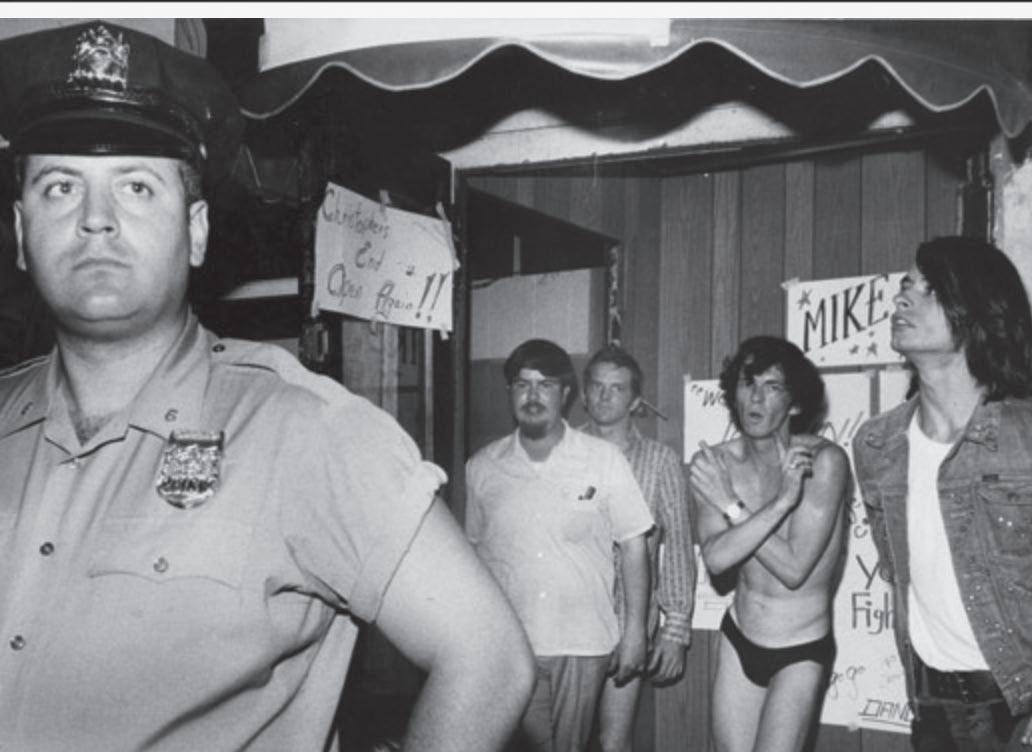
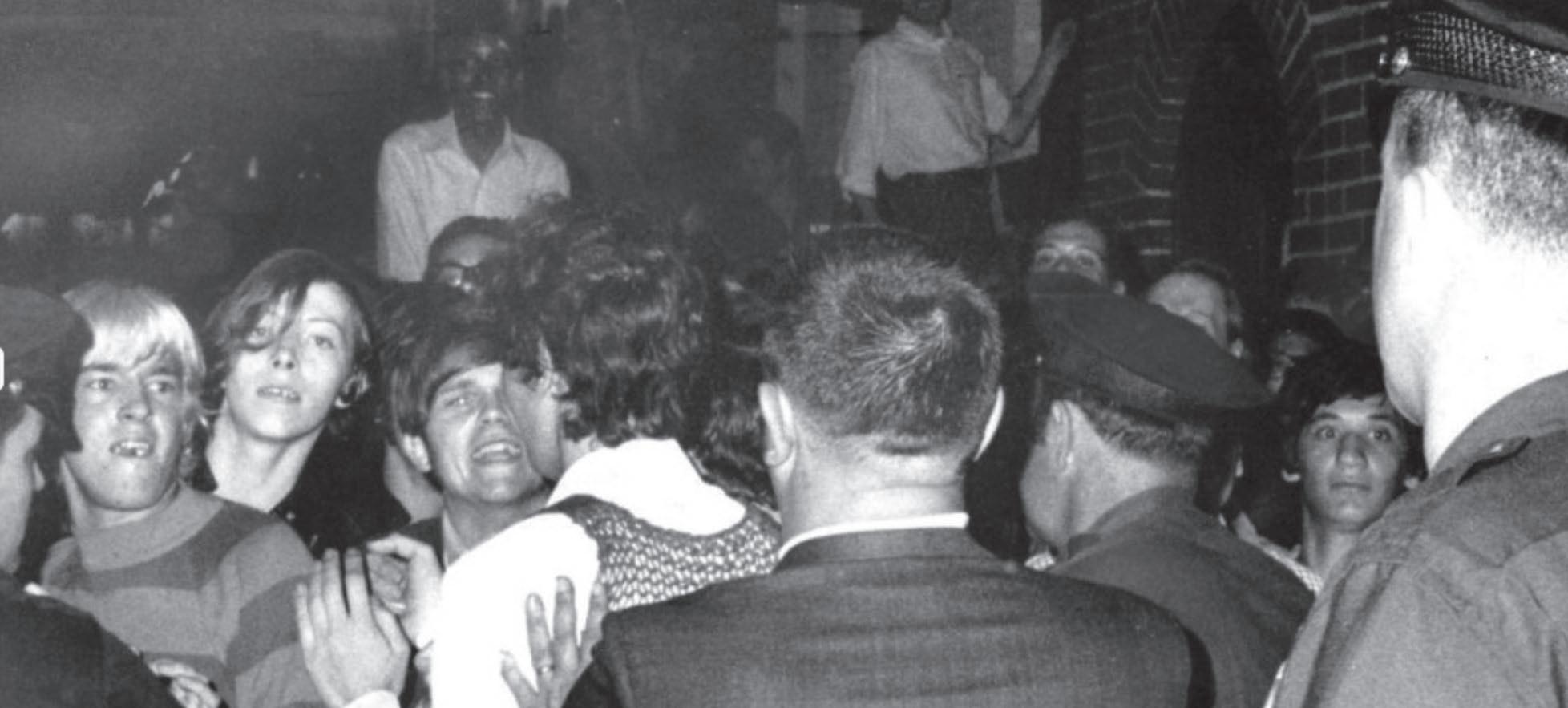
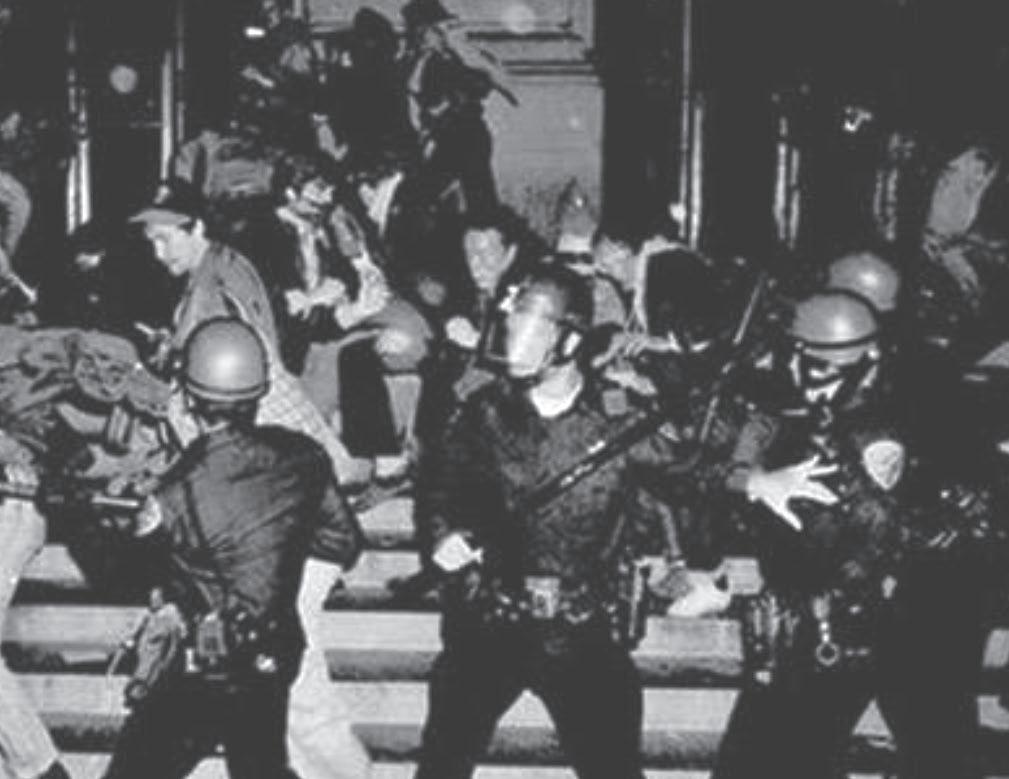

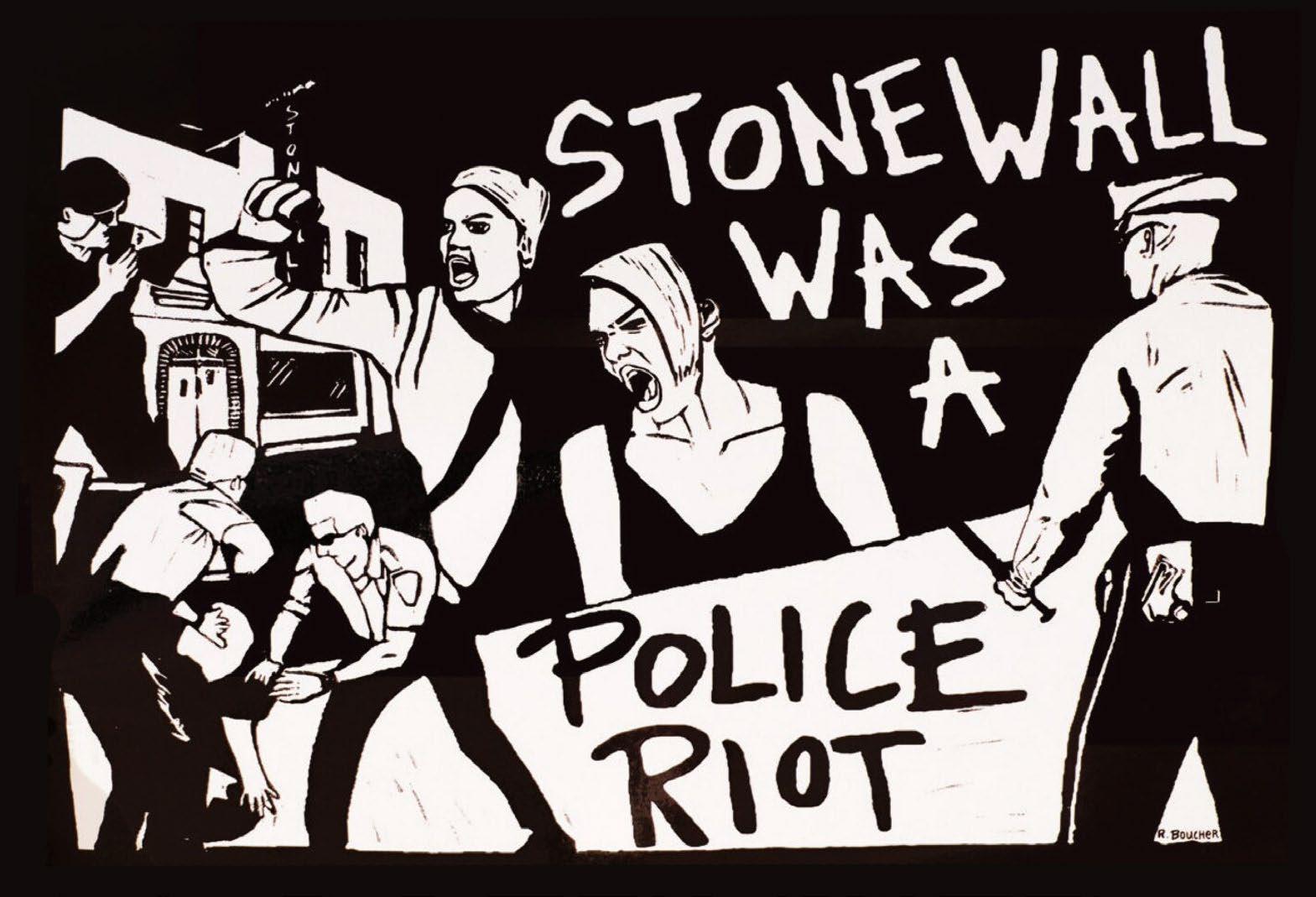
“We are the Village girls; we wear our hair in curls, we wear our dungarees above our nellie knees.”— Martin Boyce, 21 at the time, he and other men joined in a kickline and started singing. The Stonewall Riots: The History and Legacy of the Protests That Helped Spark the Mordern Gay Movement by Charles River Editors
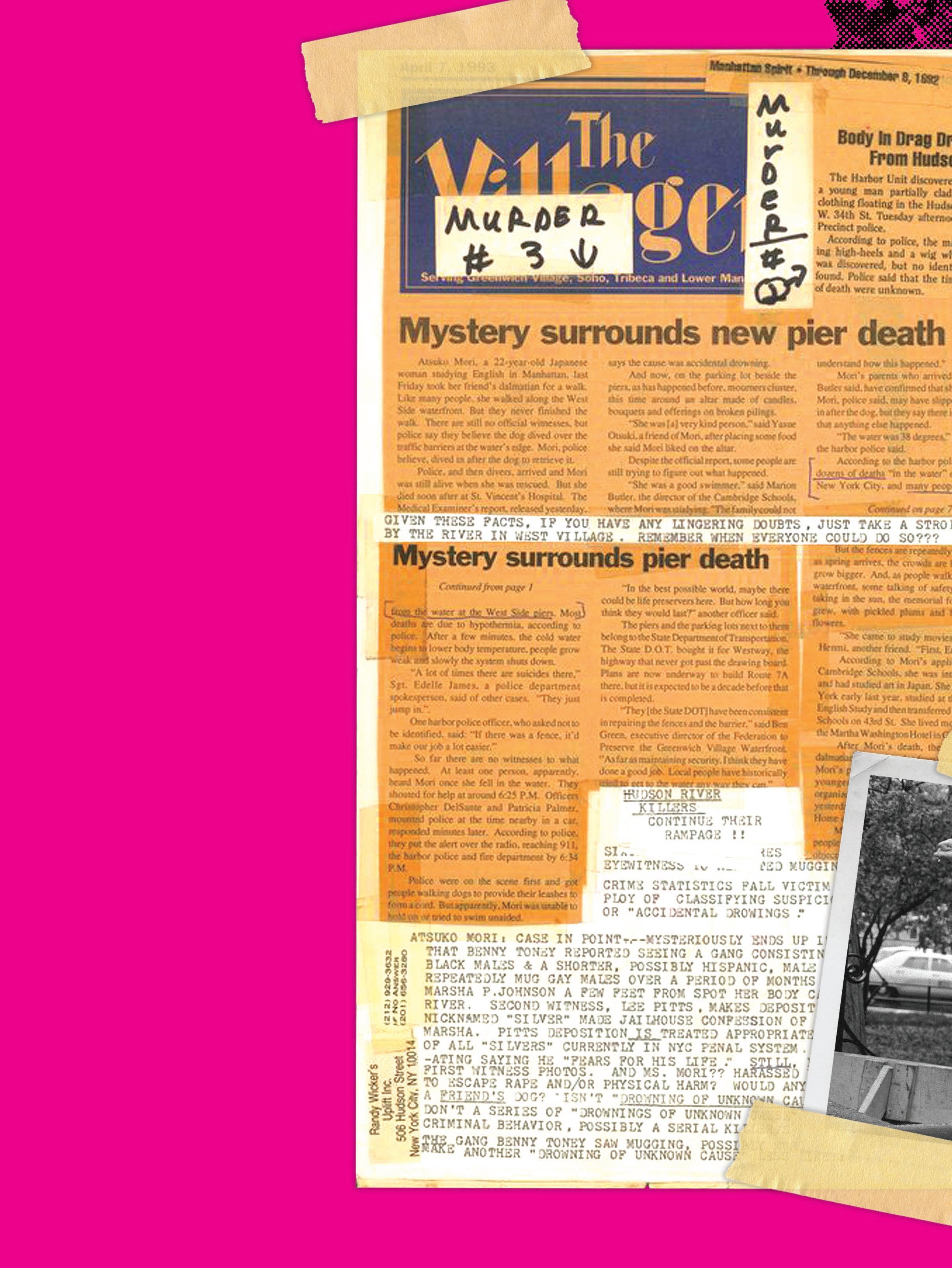 MARSHA P. JOHNSON 1945-1992
MARSHA P. JOHNSON 1945-1992
Marsha P. Johnson (the “P” stood for pay it no mind ) was one of the most vocal and beloved figures of New York City’s gay rights movement of the 1960s and 1970s. Always sporting a smile, she was an influential advocate for homeless LGBTQ+ youth, those affected by HIV and AIDS, and gay and transgender rights.
Born Malcolm Michaels Jr., Johnson began wearing women’s clothing at the age of five. Immediately after graduating high school, she moved to New York City and became instant friends with eleven-year-old Sylvia Rivera, a Puerto Rican transgender woman. Adopting the full name Marsha P. Johnson, she used she/her pronouns and described herself alternately as a gay person, a transvestite, and a drag queen. (The term transgender only became commonly used after her death.) Johnson adored wearing colorful, breezy outfits made from clothing she found at thrift stores and the trash, and she was often seen wearing a crown of flowers, her signature accessory.
In 1970, Johnson and Rivera founded the Street Transvestite Action Revolutionaries (STAR), an organization dedicated to sheltering young transgender individuals. The two also opened STAR House, where transgender youth could find safe lodging.
Johnson became a more visible and prominent member of the gay rights movement throughout the ‘70s. She attracted the attention of many, including Andy Warhol, who included her in a series of prints in 1975 entitled Ladies and Gentlemen. In another interview, she said, “As long as gay people don’t have their rights all across America . . . there is no reason for celebration.”
Johnson’s health rapidly declined after she was diagnosed with HIV in 1990. And on July 6, 1992, when Johnson was only fortysix years old, her body was discovered in the Hudson River. Initially ruled a suicide, many friends and queer activists suspected foul play. It took ten years for the police to reclassify the case as death resulting from an “undetermined cause”–rather than suicide— and yet another ten years for the NYPD to reopen their investigation into her death.
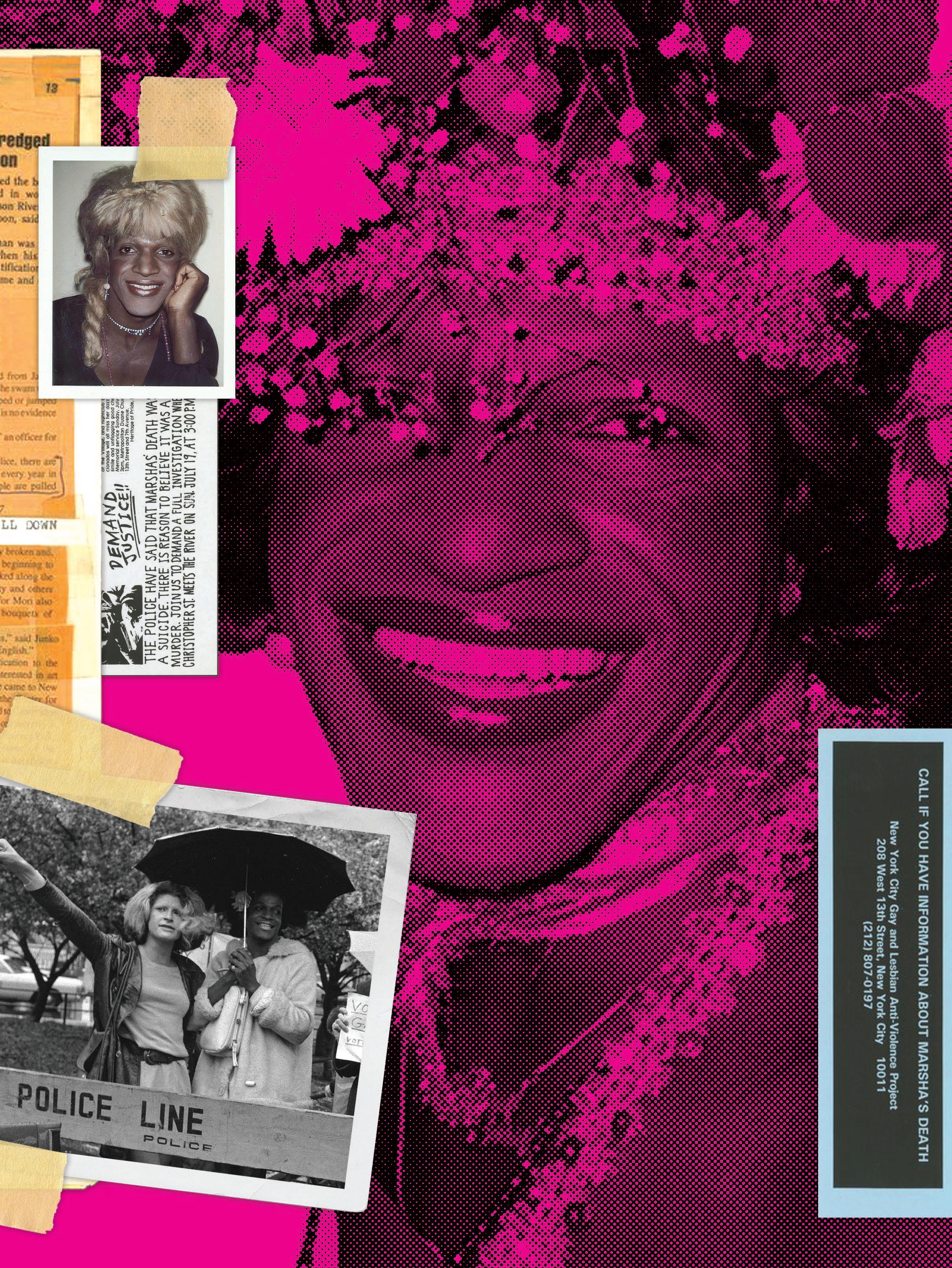 LEFT:
Marsha P. Johnson and her good friend Silvia Rivera became one of the most radical gay and transgender activists of the 1960s and '70s.
Diana Davies/Manuscripts and Archives Division, The New York Public Library
Rick Heffner
M.P. Johnson, 2022 Digital collage © Rick Heffner
LEFT:
Marsha P. Johnson and her good friend Silvia Rivera became one of the most radical gay and transgender activists of the 1960s and '70s.
Diana Davies/Manuscripts and Archives Division, The New York Public Library
Rick Heffner
M.P. Johnson, 2022 Digital collage © Rick Heffner
“I was nobody from Nowheresville until I became a drag queen.”
—MARSHA P. JOHNSONAndy Warhol Ladies and Gentlemen, 1974 Polaroid portrait of Marsha P. Johnson
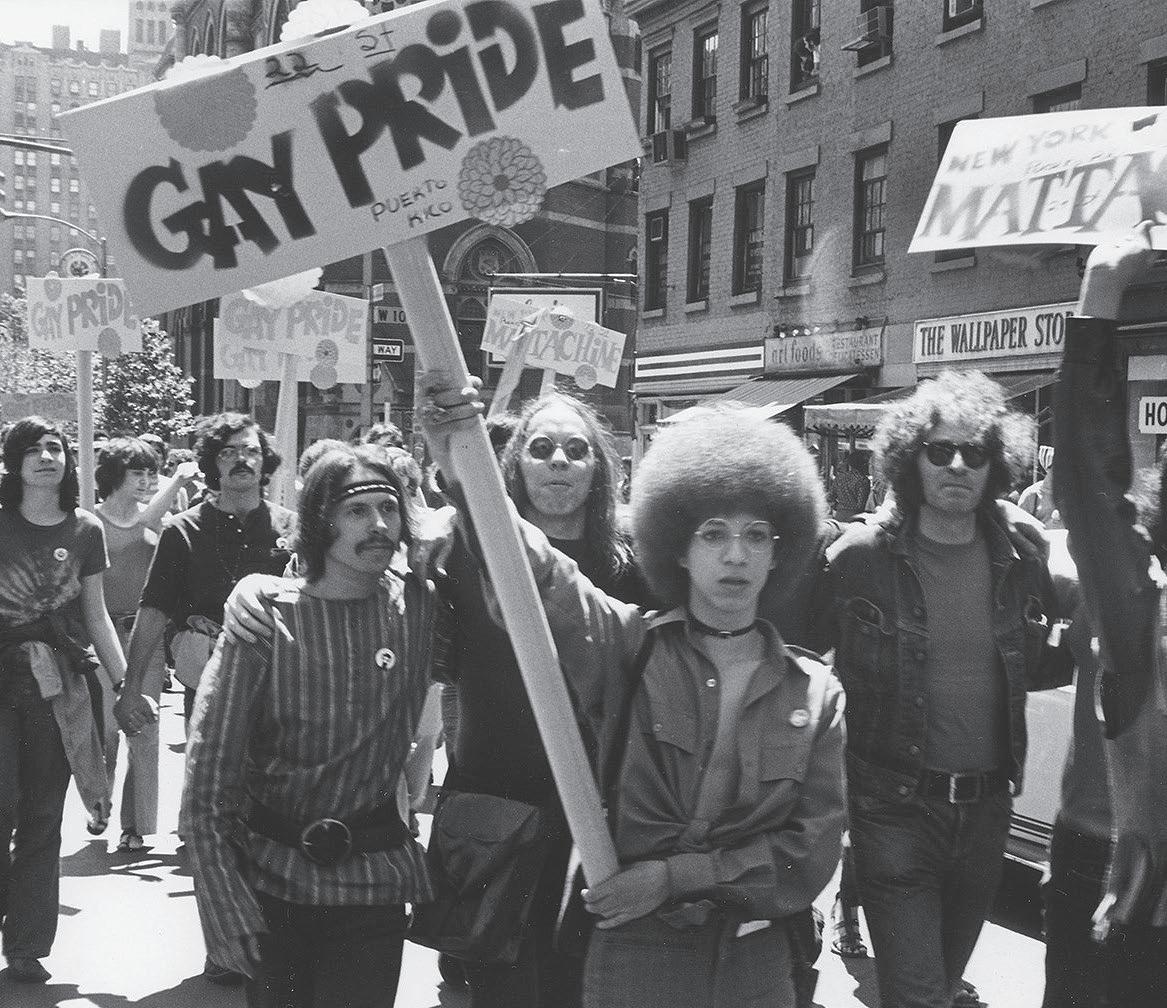
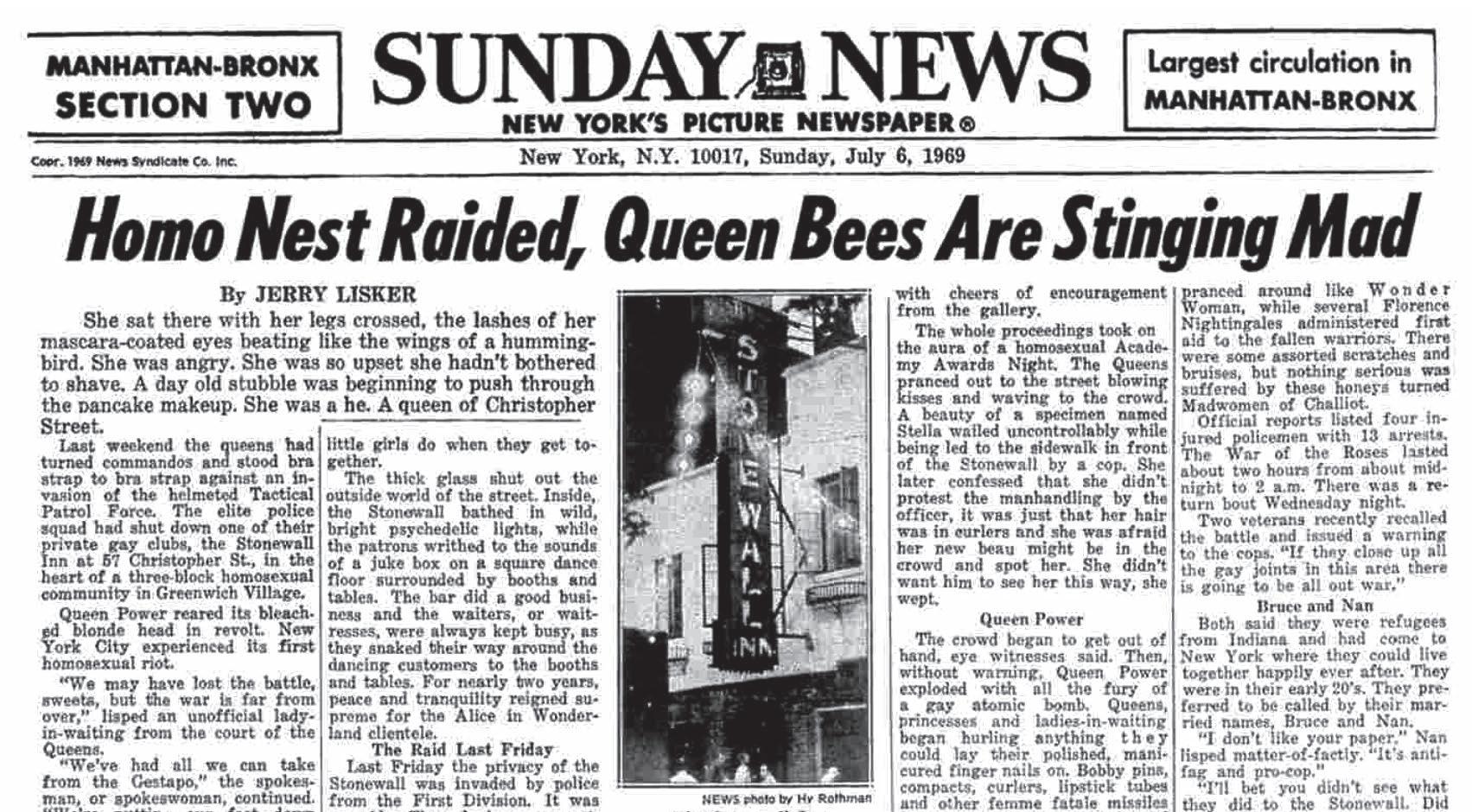 Photos: © Fred W. McDarrah/Getty Images
Photos: © Fred W. McDarrah/Getty Images
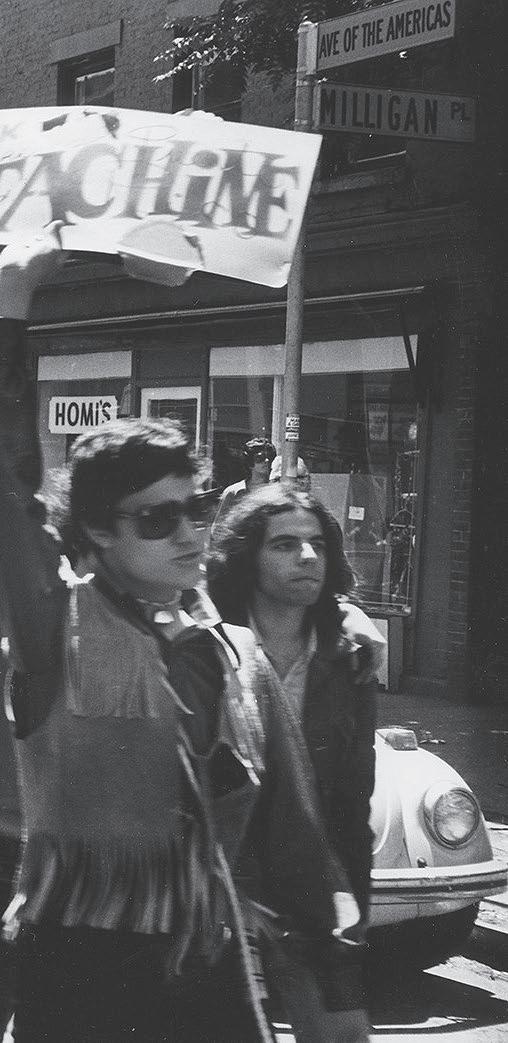
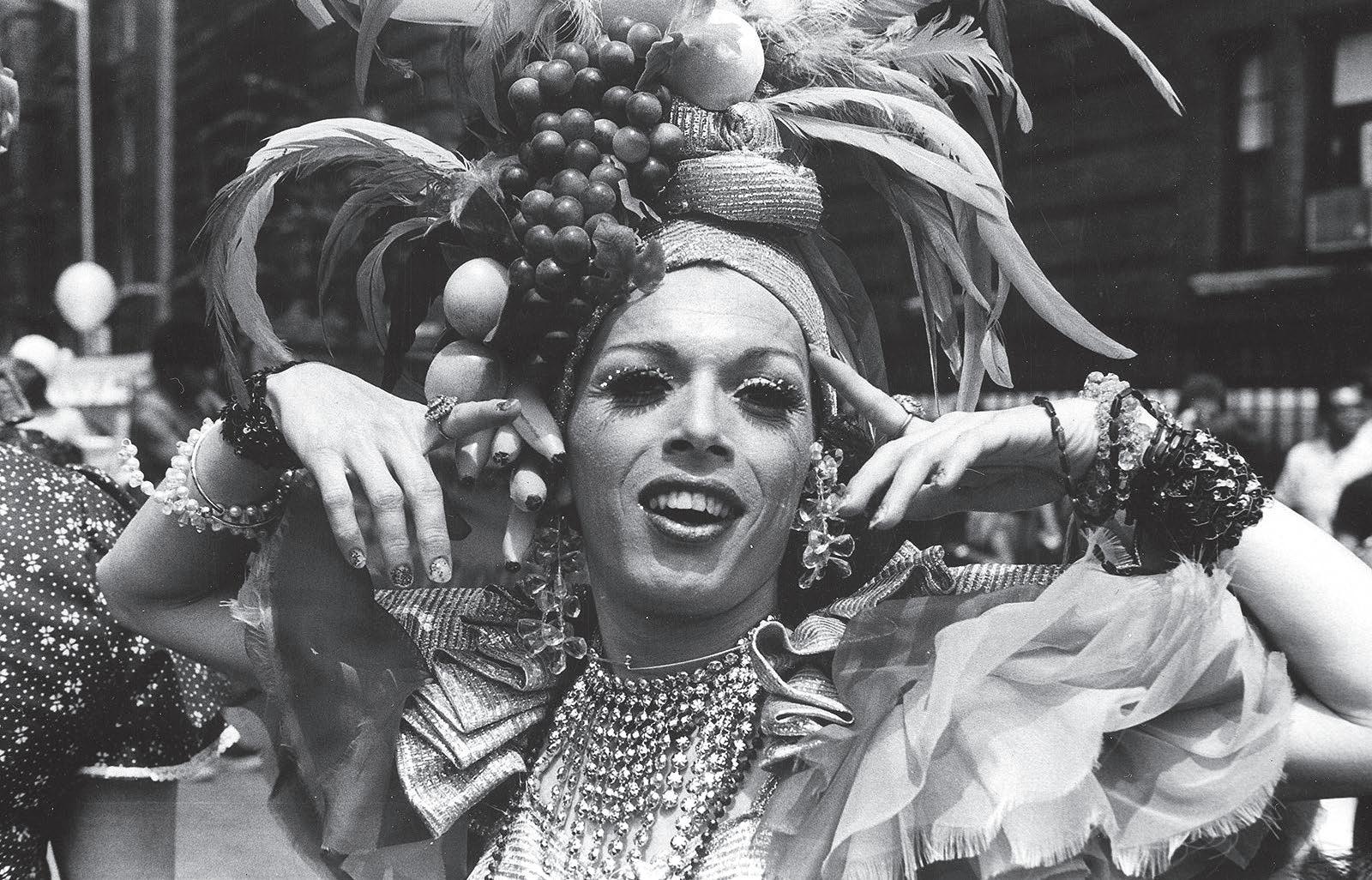
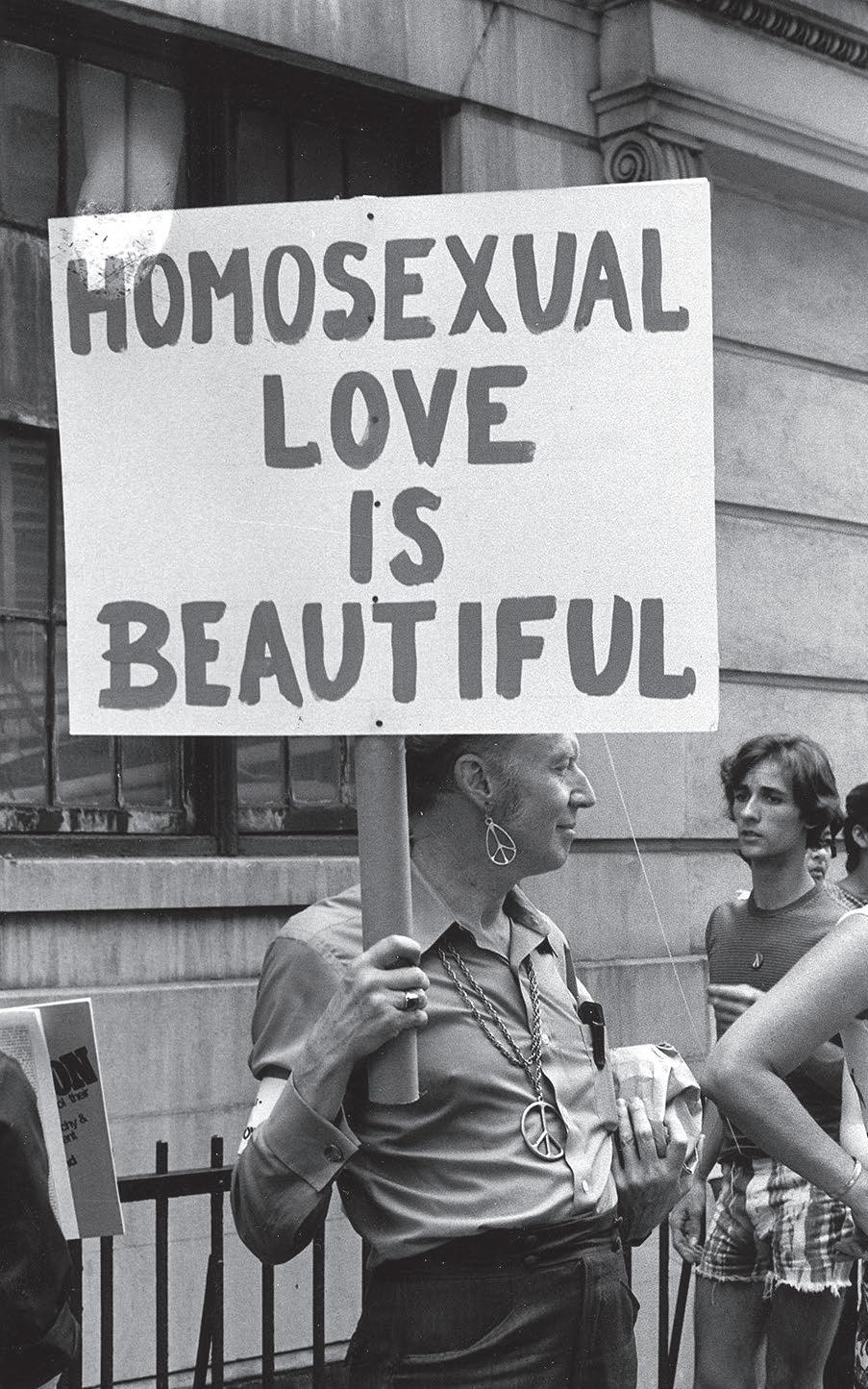

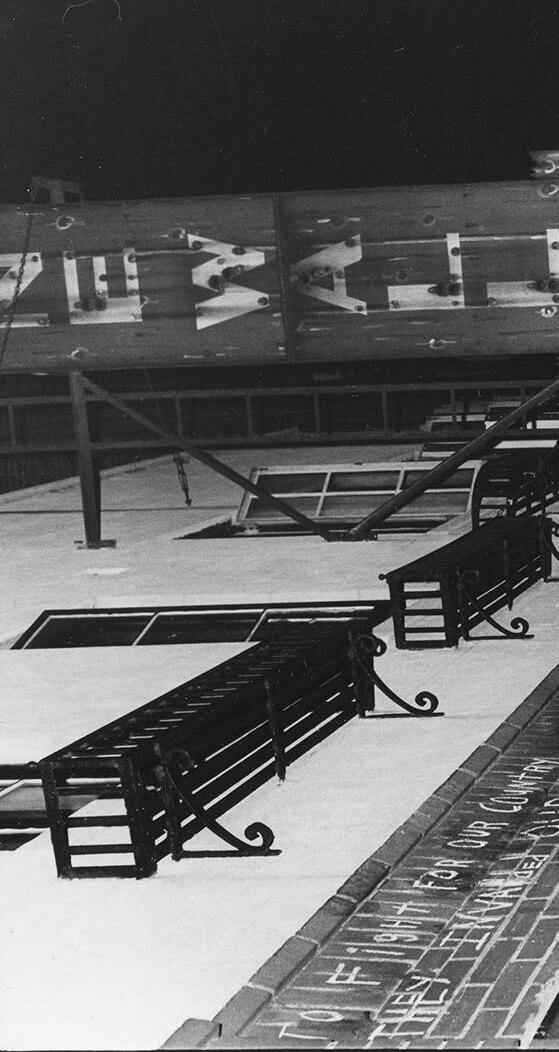
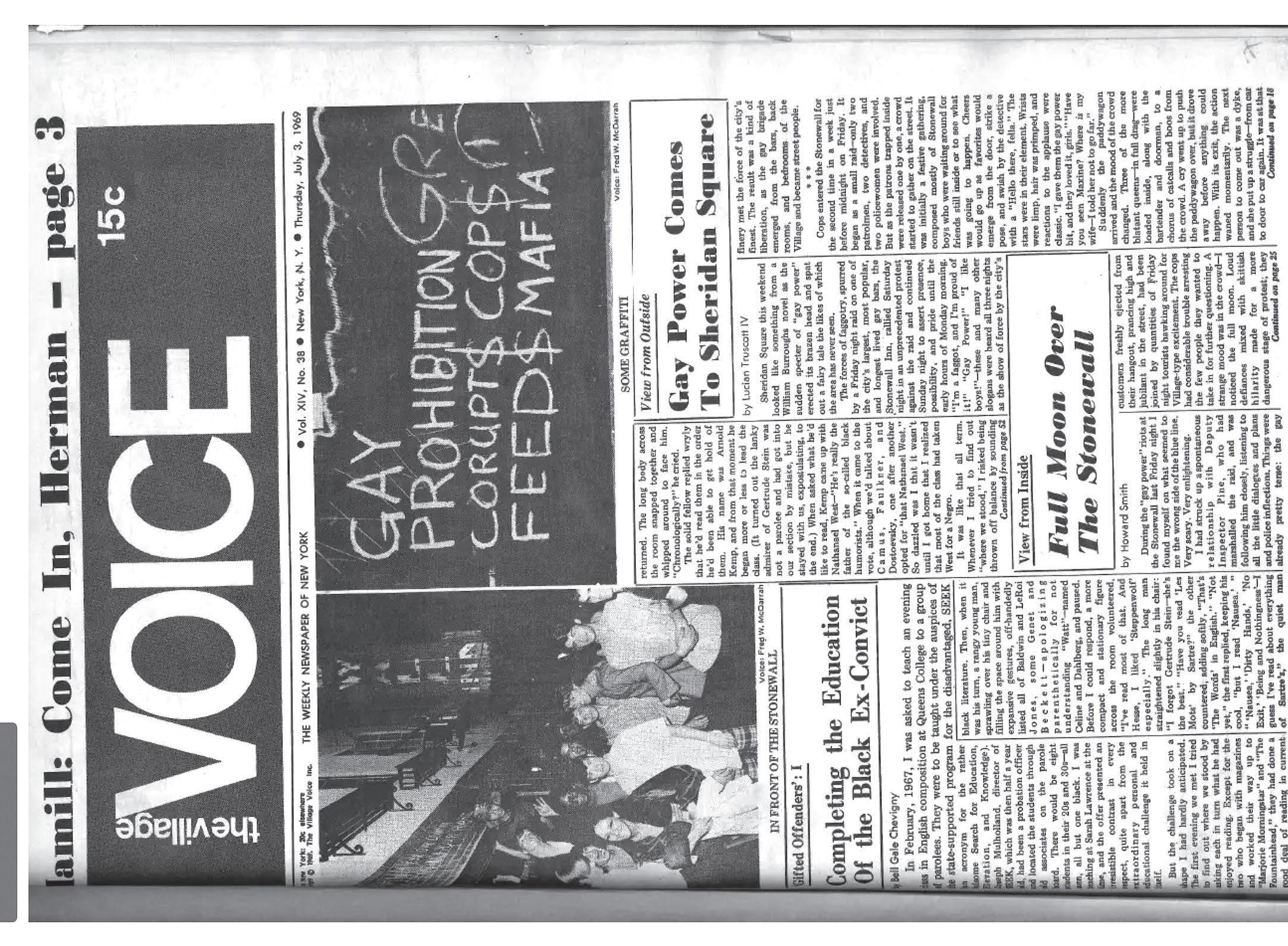
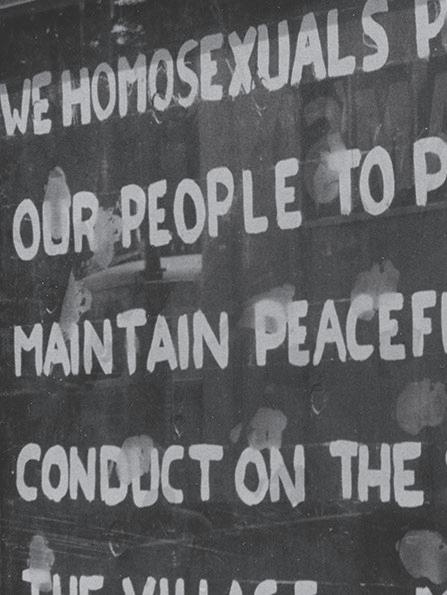
The Stonewall Inn was more than just a dance bar or a gay gathering place. Its patrons included many who weren’t welcome or couldn’t afford other places for homosexual social gatherings. Drag queens and transgender women, two groups that would find a chilly reception or a barred door at most other gay bars and clubs, were regulars at the Stonewall. Even more dependent on the Inn were queer youths who had been exiled from their family home and lived on the streets. Gay life at the time revolved around bars, but patrons had to be at least eighteen to buy a drink in a bar. So where does one go if you are underage and queer, with limited or no financial resources? Since the “legitimate” bars barred entry, Stonewall became a safe space for these kids to get off the street and find community. So when their home was raided, they fought like hell for it.
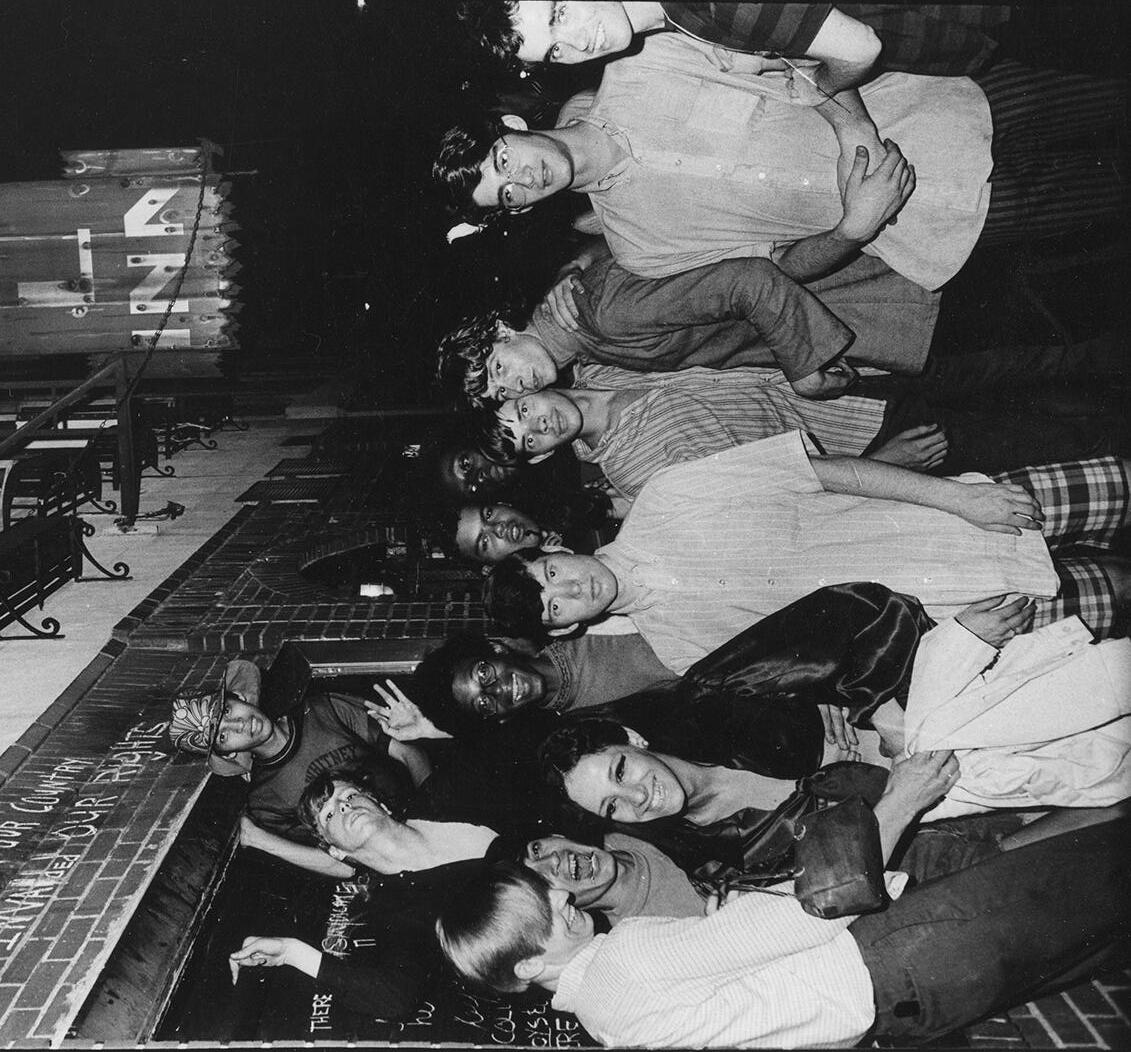
Adding fuel to the fire was the publication of that week’s Village Voice , which featured front-page articles by Howard Smith, who embedded himself with police on the first night of the riots, and Lucian Truscott IV, who had been with the rioters throughout the uprising. Despite generally good reporting and relative objectivity from both reporters, “the tone of Truscott’s article . . . was at times one of ridicule and insensitivity, with phrases like ‘limp wrists,’ ‘the Sunday fag follies,’ and ‘gay cheerleaders.’”
Source: The Village Voice, July 3, 1969


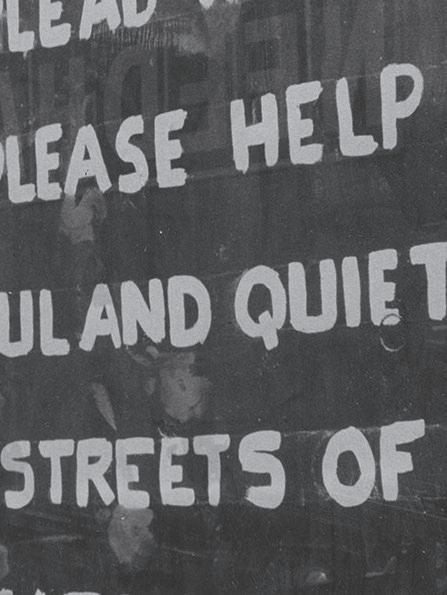
(1930–1978)
Given the hatred directed at gay people in general and Milk in particular—he received daily death threats— Harvey was aware of the likelihood he may be assassinated. Milk recorded several versions of his will “to be read in the event of my assassination”— one which contained the now-famous statement:
“If a bullet should enter my brain, let that bullet destroy every closet door.”

HARVEY MILK became the United States’ first openly gay man elected to a high-profile public office when he was elected to the San Francisco Board of Supervisors.
Milk’s love affair with San Francisco began when he moved to the city in 1972 and opened a camera store in The Castro, a neighborhood that was experiencing mass immigration of gays and lesbians in the years following World War II. The major port city became home to many gay soldiers who had received a blue discharge that deemed them as “undesirable,” thus dismissing them from the armed services.
Milk ran for city supervisor in 1973, but encountered great resistance from the gay political establishment. They felt his campaign was theatrical, arrogant, blunt, fiery, and outrageous, garnering him media attention and votes but not enough to be elected. He persisted and campaigned again in the next two elections, labeling himself the Mayor of Castro Street.
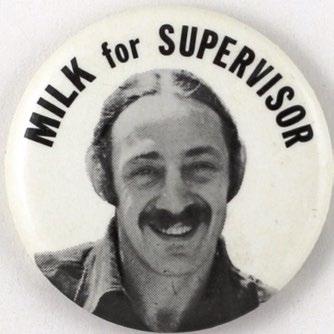
Voter response was positive enough to justify Milk’s running for the California State Assembly. He became more popular and led the gay political movement in fierce battles against a number of anti-gay initiatives. Finally, in 1977, Milk was successfully elected city supervisor.
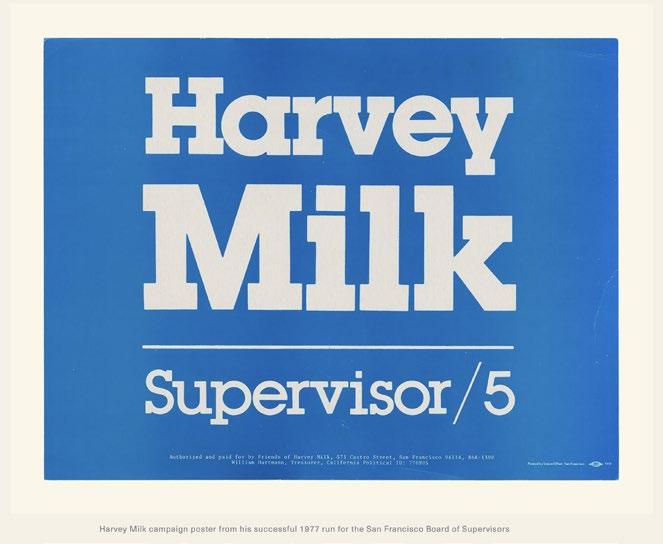
LEFT: Donald Eckert, photographer “HE SORT OF SMIRKED AT ME,” August 1979 Courtesy of @sfpubliclibrary
Harvey Milk sticks his tongue out above a quote from Dan White’s confession

His first endeavor was working on a city code that required dog owners to scoop their pet’s poop—nicknamed the pooper scooper law. Although Milk’s time in office was short, he was mostly known for his bill banning discrimination in public accommodations, housing, and employment based on sexual orientation. This bill was passed by an 11–1 vote and was signed into law by Mayor George Moscone.
On November 27, 1978—only ten months after Milk was sworn into office—both he and Moscone were assassinated inside City Hall by Dan White, a resentful former city supervisor who had voted against Milk’s anti-discrimination bill.
White was acquitted of murder charges and given a mild sentence for manslaughter, due in part to the claim of severe depression White's legal team argued in court. In a move that became widely known as the Twinkie defense, White’s attorney claimed that White had eaten too much junk food on the day of the killings and thus could not be held accountable for his crimes. The judge’s lenient voluntary manslaughter verdict ignited the White Night riots outside City Hall, during which irate protesters set police cars on fire. Shortly after his release from prison—having served only five years—White committed suicide by carbon monoxide poisoning in his ex-wife’s garage.
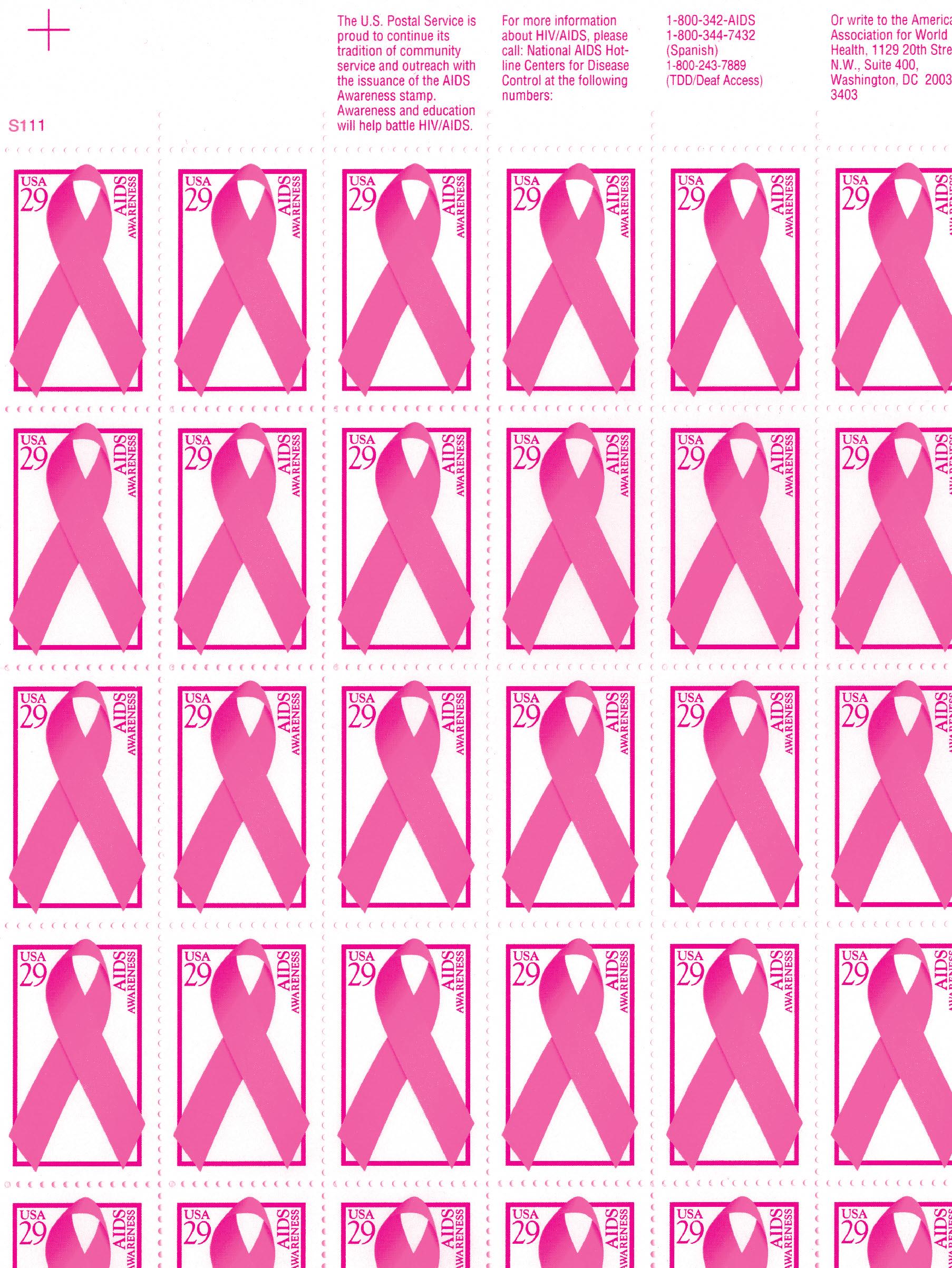
The U.S. Postal Service joined the American Association for World Health, the Centers for Disease Control, and The Points of Light Foundation in raising awareness about AIDS with the issuance of a 29-cent commemorative stamp on December 1, 1993, in Washington, DC. This issuance was in conjunction with World AIDS Day, a day observed internationally each year on December 1. World AIDS Day is an organized effort designed to provide education and awareness on issues surrounding HIV/AIDS.
Tom Mann, artist AIDS AWARENESS stamp sheet Printed
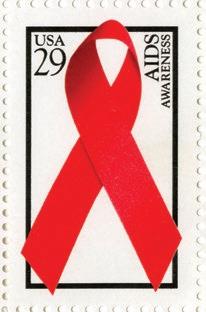
Actual size of stamp: 1" x 1.5"
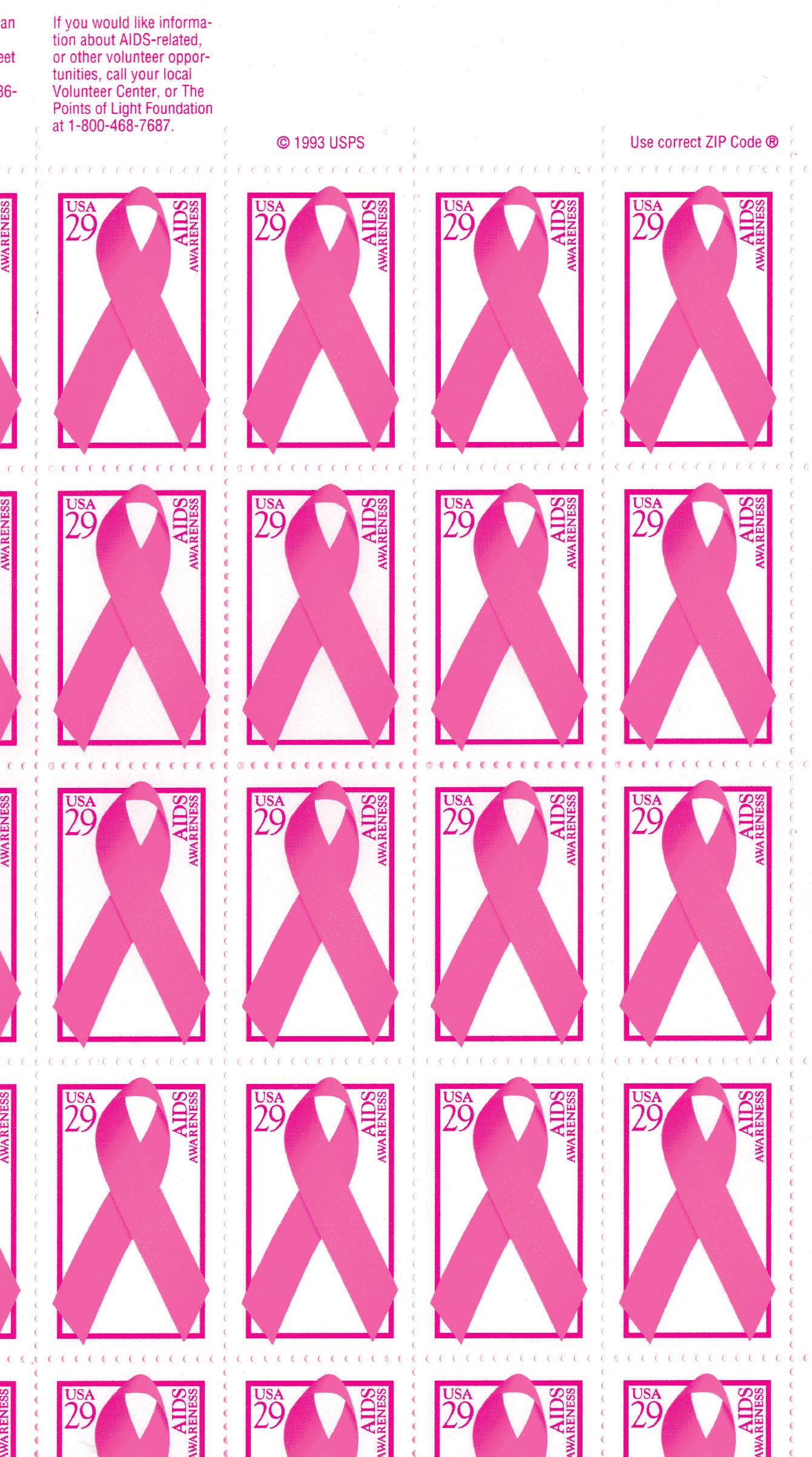
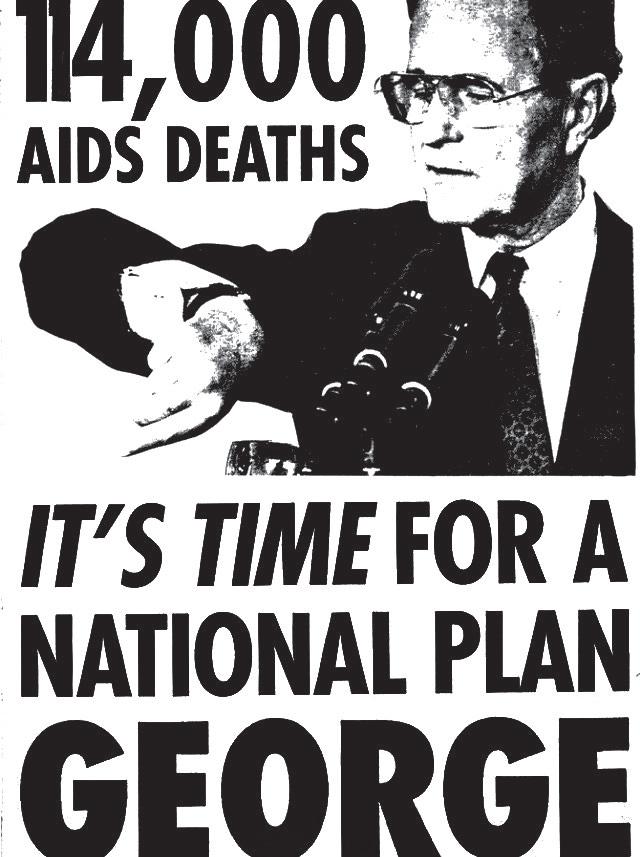

By the time President Ronald Reagan made his first public mention of the AIDS virus in 1985—four years after the CDC deemed HIV/AIDS an epidemic—it was clear the disease was a crisis many Americans felt apathetic toward. Some even felt (including many in Reagan’s administration) that the marginalized communities most affected by AIDS—including gay men, people of color, and intravenous drug users— deserved the consequences.
AIDS first emerged in 1981 within urban gay male communities, which also happened to be centers for gay liberation activism and the arts. So it's no surprise the first wave of AIDS activism brought together groups of creatives who combined dramatic graphics and political action to demand a response from the government and medical institutions— a body of work that helped to significantly shape the public's perception of AIDS.
The posters created by early AIDS activists were explicitly confrontational and ubiquitous. They were pinned and wheatpasted in spaces both public and private, anywhere from a street corner to a gay bar bathroom, church door,
Formed on March 12, 1987, ACT UP (AIDS Coalition to Unleash Power) is a diverse, nonpartisan group of people bonded by shared anger and a fierce commitment to end the AIDS crisis. Initiated in response to social and governmental negligence and the complacency of the medical establishment during the first years of the epidemic, ACT UP is still a major force for activism today, as members across the country continue to meet with government officials, distribute the latest medical information, and, of course, protest and demonstrate. (As their name states, they are not a passive group.)
STD testing clinic wall, or community center. AIDS activists used these posters as a form of direct action—public displays of protest and knowledge that forced people to absorb their messages by any means necessary.
AIDS activist posters interacted not only with their audiences but also with a culture of homophobia. In the '80s especially, talking about homosexuality and specific sexual acts wasn't just highly taboo—it was downright dangerous. The posters were simple, bold, colorful, and always driven by their message. They were beautifully imperfect, with little attention to kerning or font choices, although most used bold sans serif fonts. Some parodied political statements, and artists were not afraid to use imagery of cocks or political figures— including Reagan.
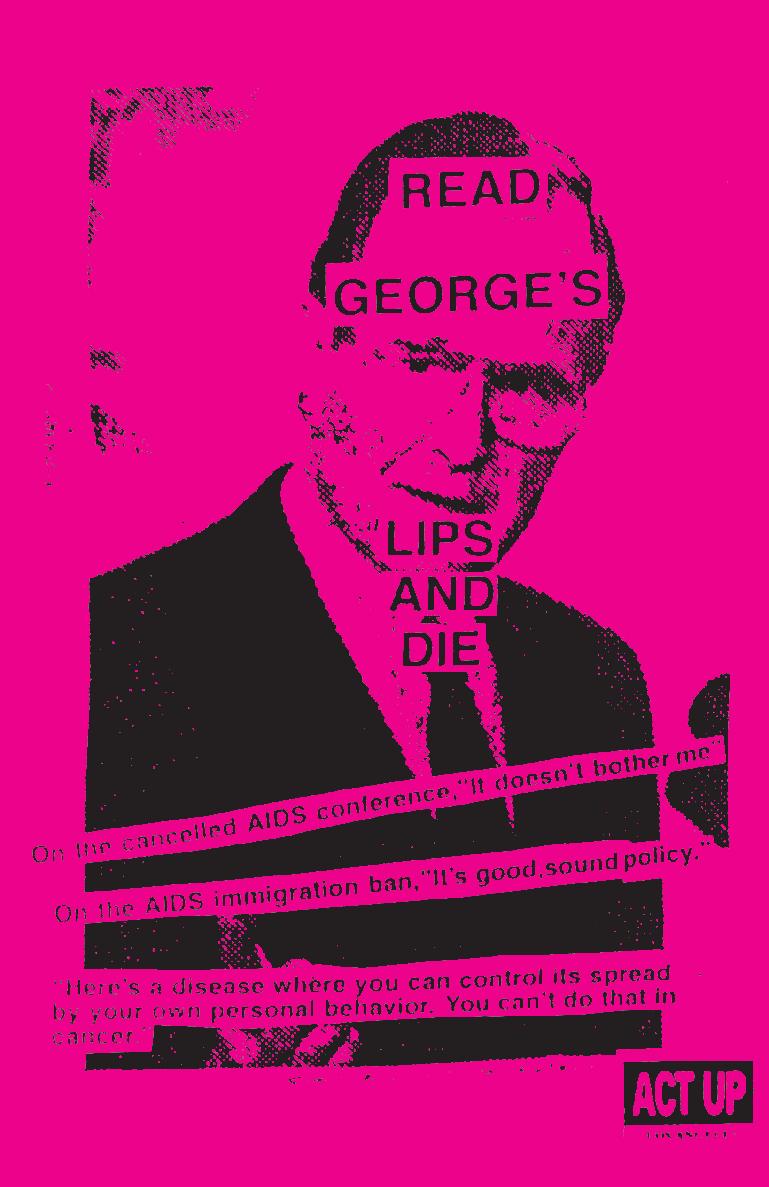


“ Read My Lips” poster, 1988 Gran Fury was known for appropriating images and tactics from advertising and popular culture and redeploying them to interrupt public space. The headline in this work, “Read My Lips,” transforms George H.W. Bush’s campaign promise not to raise taxes into a confrontational image to combat homophobia. The text and theme were used by Gran Fury in multiple images and contexts.
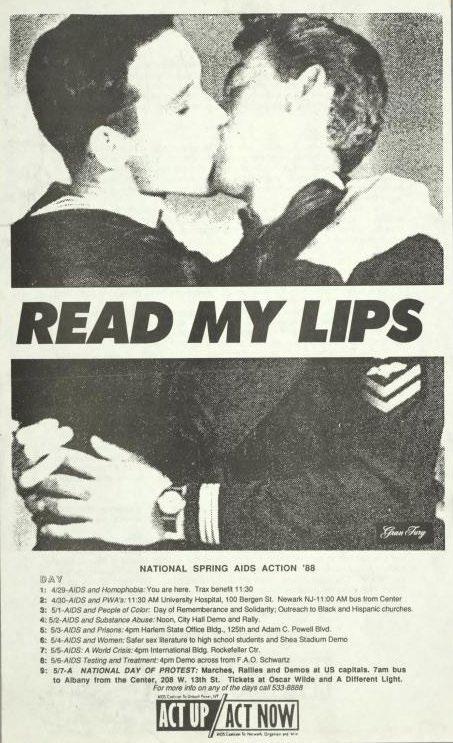
On October 15, 1982, conservative reporter Lester Kinsolving asked White House Press Secretary Larry Speakes to comment on the emerging AIDS crisis. Speakes’s responses foretold the Reagan administration’s approach to the crisis in the coming years.
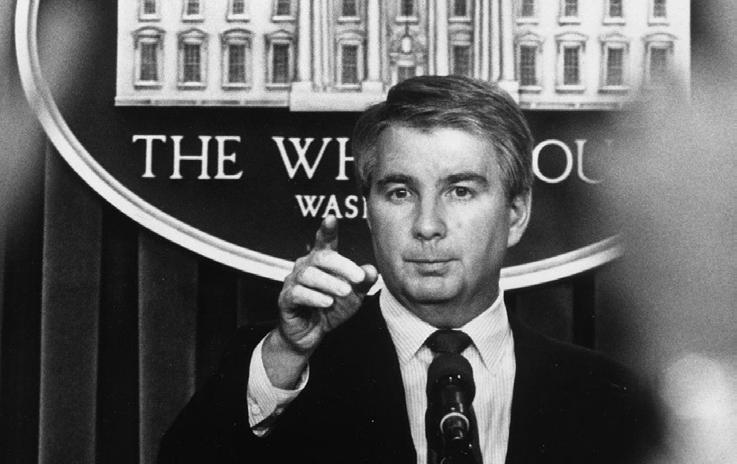
KINSOLVING: “Larry, does the President have any reaction to the announcement . . . that AIDS is now an epidemic?”
SPEAKES: “What’s AIDS?”
KINSOLVING: “Over a third of them have died. It’s known as ‘gay plague.’” [laughter] “It’s a pretty serious thing that one in every three people that get this have died. And I wondered if the President is aware of it?”
SPEAKES: “I don’t have it,” Speakes said. Do you?”
KINSOLVING: “In other words, the White House looks on this as a great joke?”
SPEAKES: “No, I don’t know anything about it, Lester.”
KINSOLVING: “Nobody knows?”
SPEAKES: “There has been no personal experience here, Lester . . . I checked thoroughly with [the President’s doctor] this morning and he’s had no”–[laughter]–“no patients suffering from AIDS or whatever it is.”
KINSOLVING: “The President doesn’t have ‘gay plague,’ is that what you’re saying or what?”
SPEAKES: “No, I didn’t say that . . . I thought [you were at the] State Department over there. Why didn’t you stay there?” [laughter]
KINSOLVING: “Because,” Kinsolving quipped, “I love you, Larry, that’s why.” [laughter]
SPEAKES: “Oh,” Speakes responded, “I see. Just don’t put it in those terms, Lester.” [laughter]
KINSOLVING: “Oh, I retract that.”
SPEAKES: “I hope so.”
AIDSGATE was the second poster by the Silence=Death Project, explicitly designed for the third ACT UP demonstration on June 1, 1987, in Washington, DC. The first national civil resistance addressing AIDS, the protest aimed to call out Reagan and his administration for their unresponsiveness in the early days of the crisis, which not only impacted gay men affected by the virus but also women and communities of color. The fine print across the bottom of the poster reads:
“54% of people with AIDS in NYC are Black or Hispanic. . .AIDS is the No. 1 killer of women between 24 and 29 in NYC. . .By 1991, more people will have died of AIDS than in the entire Vietnam War...What is Reagan’s real policy on AIDS? Genocide of all Non-whites, Non-males, and Non-heterosexuals?. .
.SILENCE = DEATH”

Using fluorescent colors and the powerful visual language of advertising, it features an image of Reagan with glowing pink eyes (which were added just before printing by designer Oliver Johnson) and the phrase AIDSGATE, a reference to the president’s negligence in responding to the growing crisis.
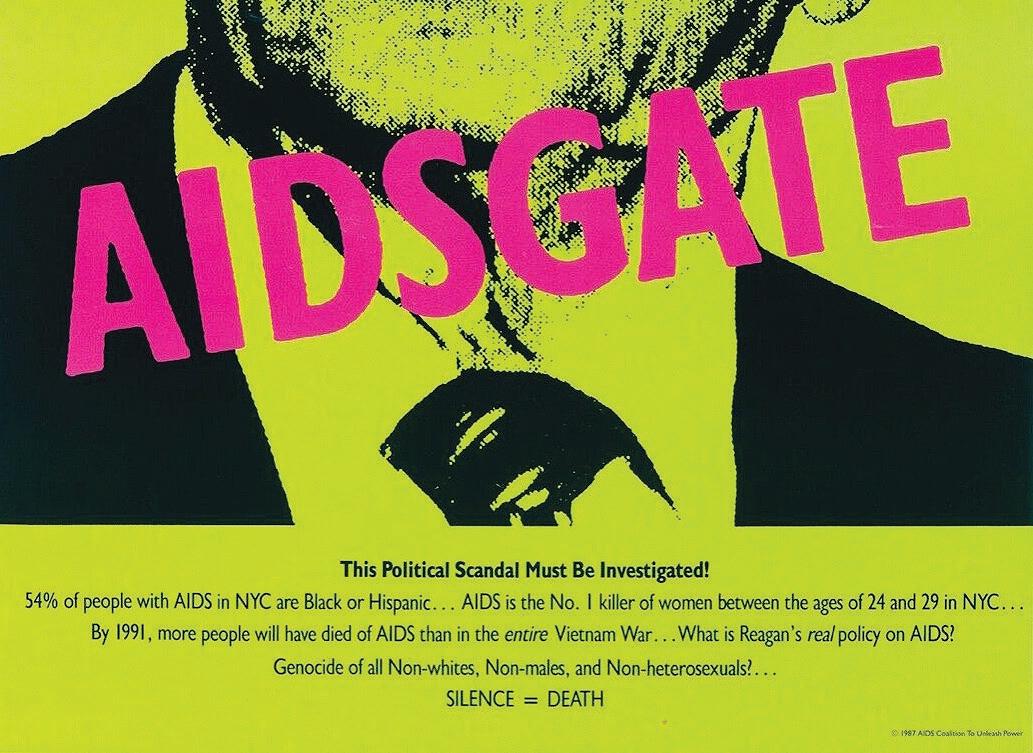

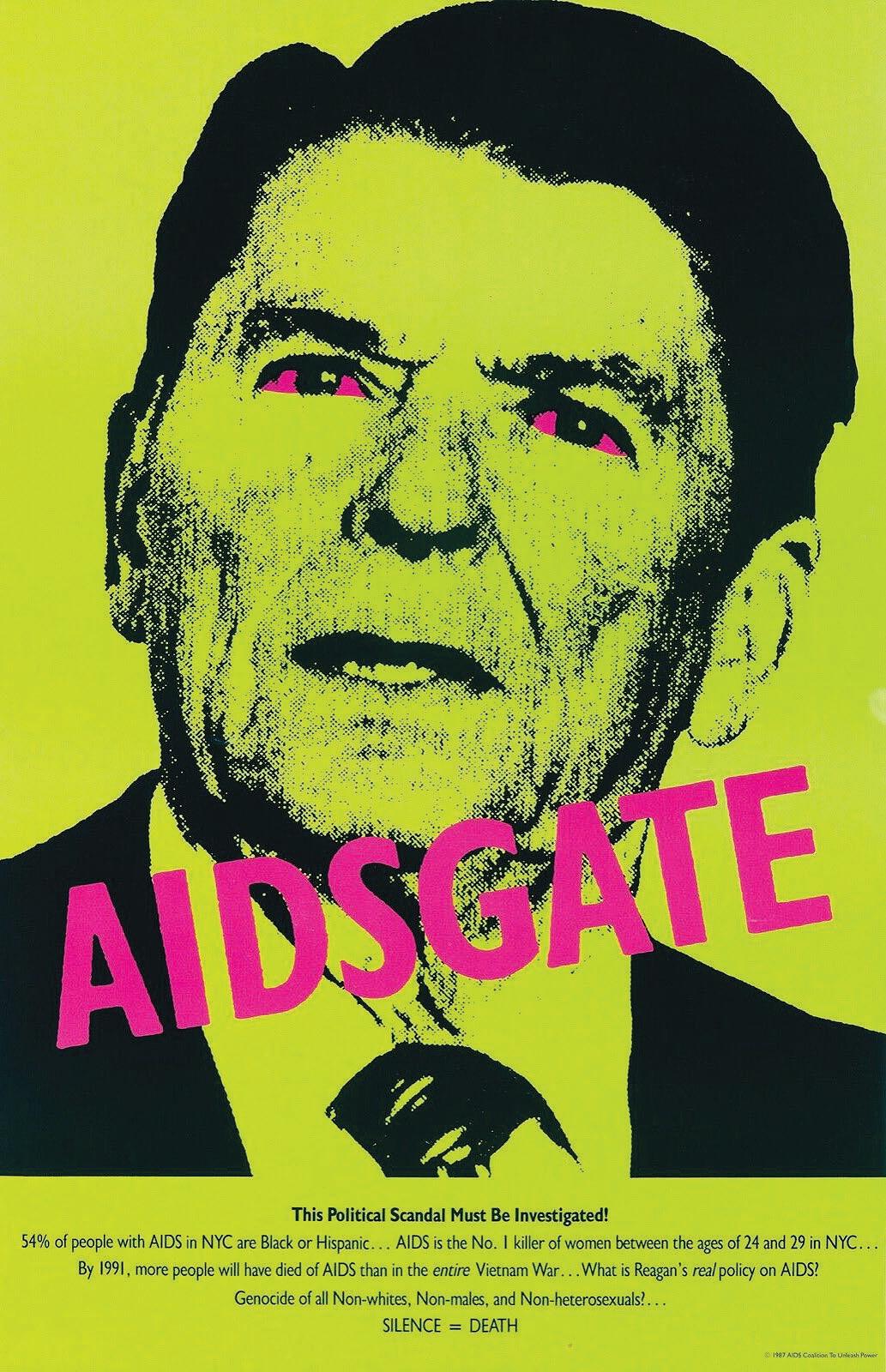 Fred Sweets, photographer Larry Speakes, Press Secretary for the Reagan Administration, 1985
Fred Sweets, photographer Larry Speakes, Press Secretary for the Reagan Administration, 1985
“DO YOU CARE?”
ACT UP NY members participate in a protest with leaders of mainstream gay & lesbian organizations at the White House, June 1, 1987
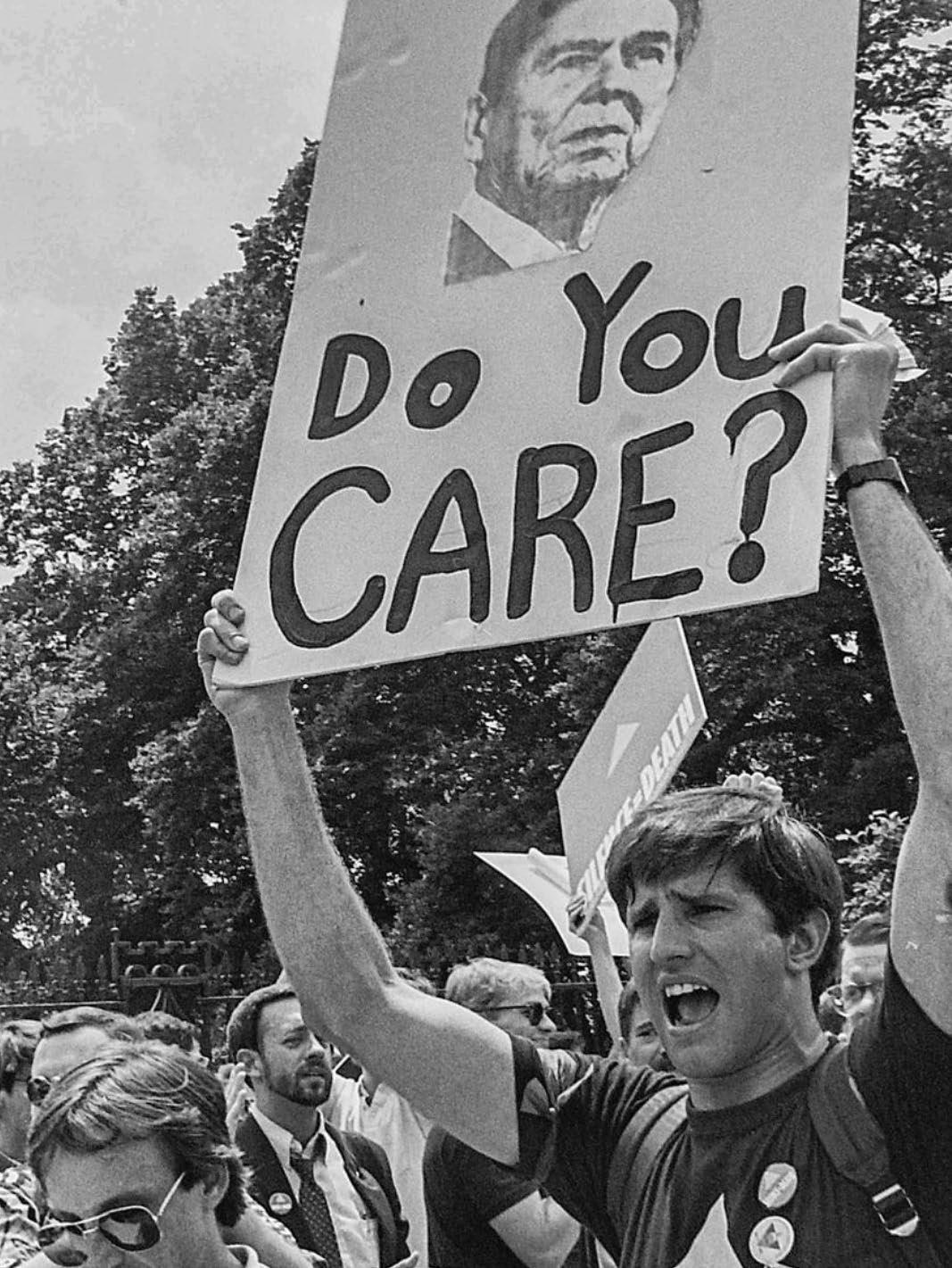
Courtesy of @washblade
Held the day after Ronald Reagan’s first substantive address on the HIV/AIDS epidemic (which by then had been on the public radar for six years), the demonstration pictured here was a watershed moment after which mainstream leaders became willing to avoid moderate tactics in favor of militant street activism.
ABOVE:
Donald Moffett
"He Kills Me" poster 1987
Color offset lithograph on paper 23 ½" x 37 ½"

Museum of Modern Art, New York (MOMA-P3073)
© 2021 Donald Moffett
As the AIDS epidemic spread, activists criticized the Reagan administration for their lack of response to the disease. Of particular concern were the ways in which the administration was underfunding AIDS research and obstructing prevention efforts by opposing sex education. These concerns were aggravated by Reagan's public silence about the disease until 1987, when he made his first public address on the subject. Later that year, Reagan yielded to pressure from Congress and organized the Presidential Commission on the HIV Epidemic. In "He Kills Me," Donald Moffett pairs an image of Reagan with words that concisely communicate ACT UP's position on how the President's actions were adversely affecting AIDS patients.
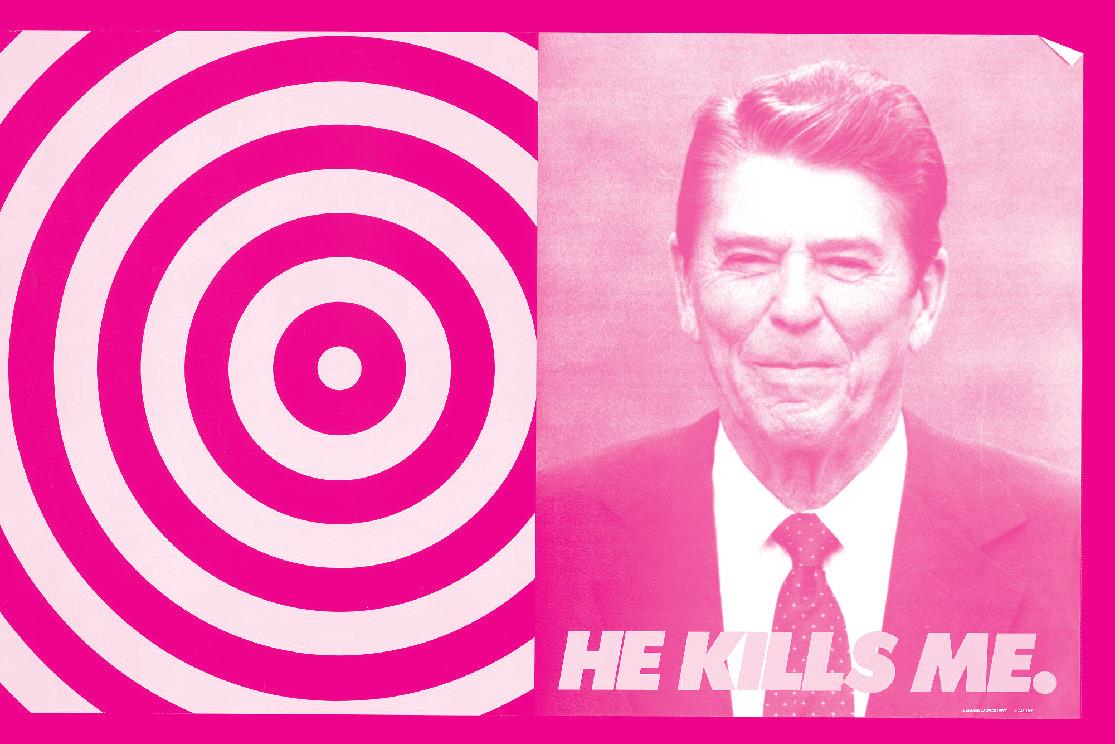
BACKGROUND:
Mark Golebiowski, photographer Health and Human Service: Trial of the Reagan Administration, October 11, 1988. Purchased with funds provided by the ICP Acquisitions Committee, 2000.
ABOVE:UP
“Serial Killer” poster, 1990
“Serial Killer” was created in response to a speech given by George H.W. Bush on March 29, 1990. The criticism levied against President Bush in the poster's text was not limited to his administration’s indifferent attitude towards AIDS at the height of the crisis. ACT UP posters targeted politicians whose responses to the AIDS crisis were inadequate or ineffective during the early years of the epidemic.
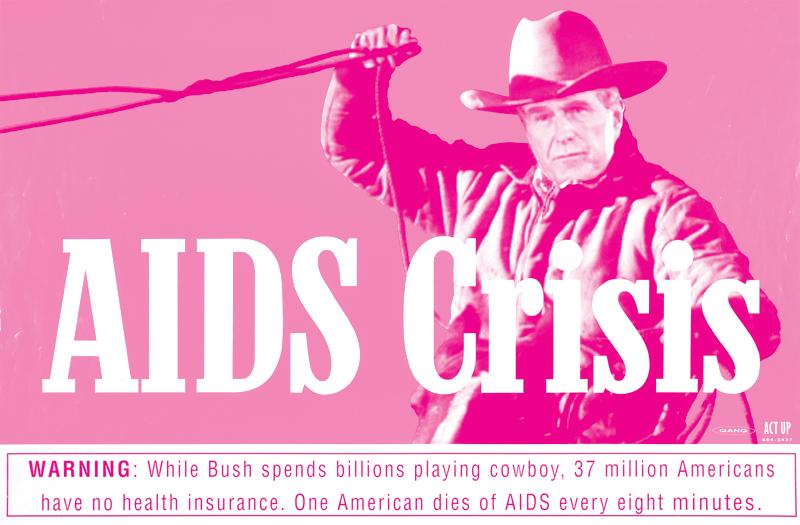
Gran Fury was the anonymous artist collective that produced ACT UP’s artistic media. The group’s eleven members included Richard Elovich, Avram Finkelstein, Amy Heard, Tom Kalin, John Lindell, Loring McAlpin, Marlene McCarty, Donald Moffett, Michael Nesline, Mark Simpson, and Robert Vazquez-Pacheco.
The work of these visual artists—both in Gran Fury and in other artist-activist collectives— proved an essential component of ACT UP’s campaigns of protest, education, and awareness about AIDS. They reached the widest possible audience by bringing art into public spaces. Often facing censorship for their work, including being rejected for ad space on public sites, Gran Fury persisted in plastering their posters on New York City streets in rogue fashion. Knowing that dissemination and access to their work were key, all of Gran Fury's works remain in the public domain.
★
BELOW: AIDS Crisis" poster, 1990 ACT UP New York 24" x 16"
GRAN FURYin San Francisco’s gay community.
was allegedly based on cohort studies
city received for AIDS services. The cut
to reduce the amount of funding the
New York City—a move that threatened
number of estimated AIDS cases in
Joseph, suddenly reduced by half the
Commissioner of Health, Stephen
On July 19th, 1988, the New York City
The Government Has Blood On Its Hands
posters could not.
Koch. NYC AIDS Care Doesn’t Exist.”
“You’ve Got Blood on Your Hands, Ed
delivering the messaging where the
mayor of New York City with the text,
maximized the movement’s exposure,
displaying bloody handprints as graffiti
Lethal Lie,” and the other targeted the
Joseph. The Cut in AIDS Numbers Is a
hand models. A parallel campaign of
streamlined drug approval process.
Got Blood on Your Hands, Stephen
was one of the blood-splattered
bloody handprints. One read, “You’ve
hand shape fit perfectly, Harrington
were 8.5 x 14 inches, and because his
to design posters featuring images of
be removed from office, leading them
support the campaign. The posters
Joseph and voiced demands that he
handprint image as a poster to
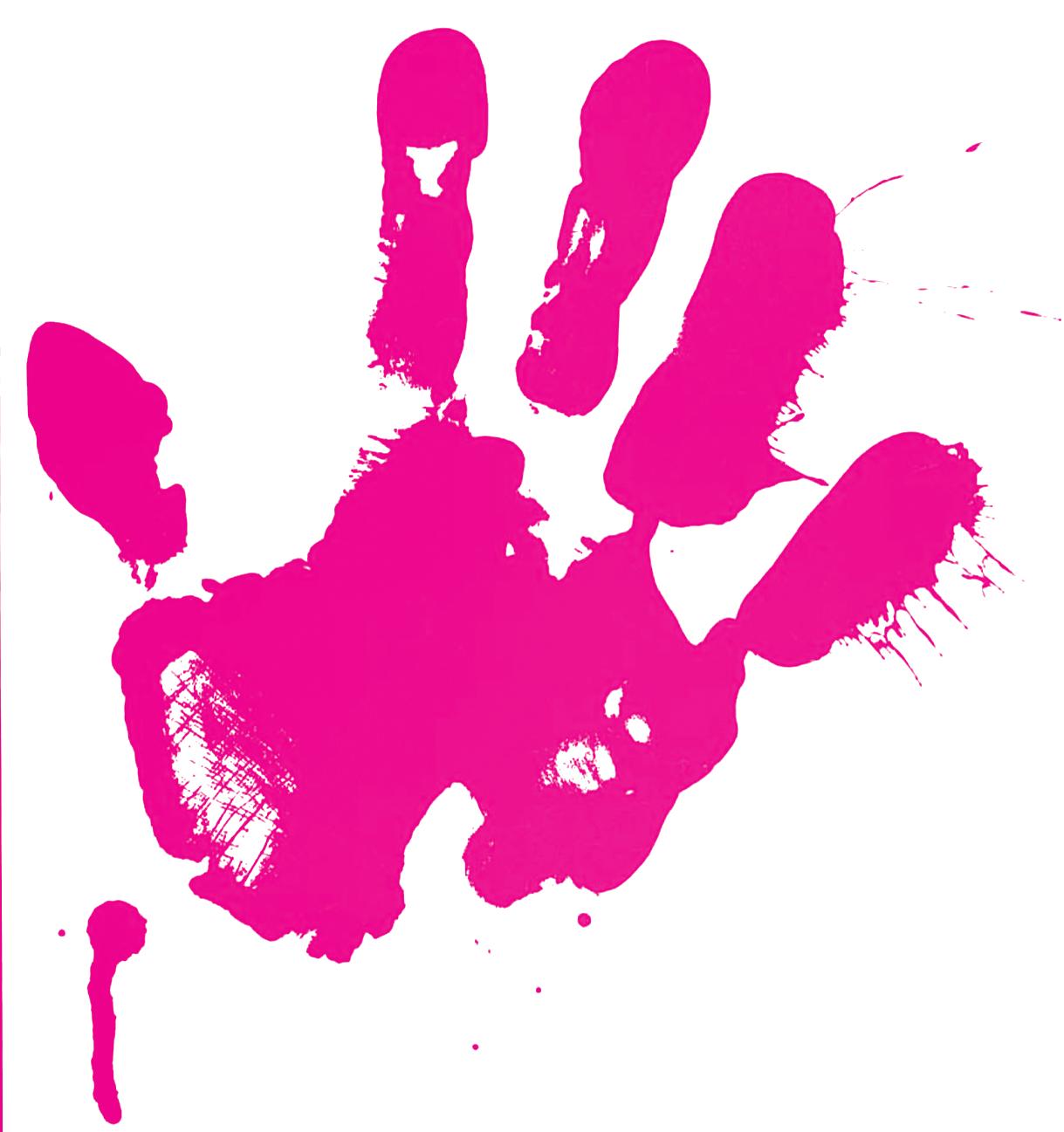
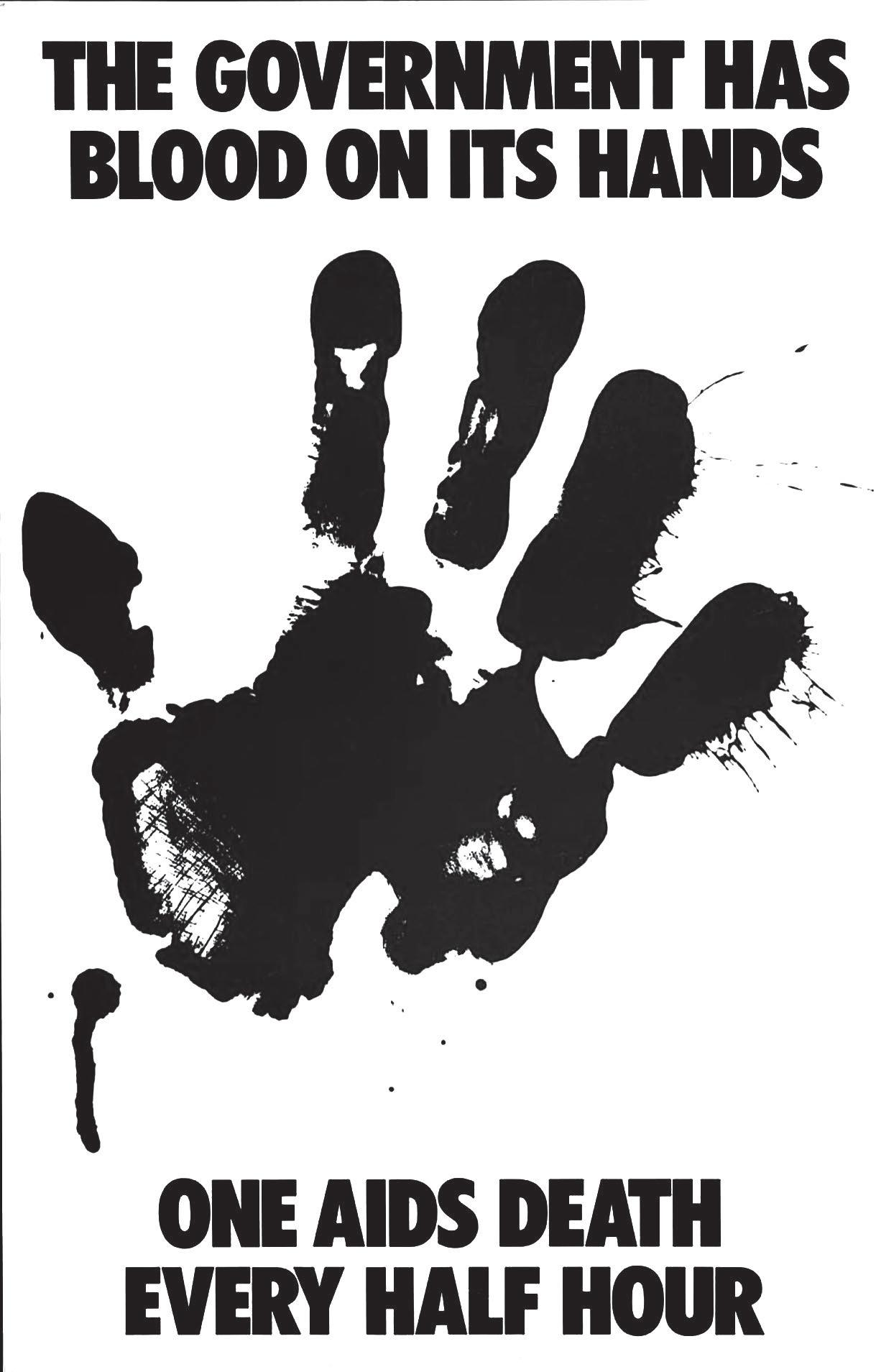
ACT UP and Gran Fury declared war on
Harrington, proposed the bloody
One of Gran Fury’s members, Mark
to necessary medications and a more
movement, as it led to greater access
turning point for the AIDS activist
Hour.” The FDA action was a critical
the statistic “One AIDS Death Every Half
and Drug Administration centered on
specifically for protests at the Food
Gran Fury nationalized the bloody hand
Gran Fury "The Government Has Blood on Its Hands" poster, 1988 Offset lithography 31.75" x 21.375


The Silence=Death Project, best known for its iconic political poster of the same name, was the work of a six-person collective in New York City, many of whom would later become active in Gran Fury and ACT UP.
Avram Finkelstein founded the group in 1987 with Jorge Socarras, Chris Lione, Charles Kreloff, Oliver Johnston, and Brian Howard as a means of mutual support and to raise awareness of the growing crisis.
The content of the Project’s discussions quickly turned political. Inspired by posters made by the Art Workers Coalition and the Guerrilla Girls, the group decided to create their own poster to be wheatpasted on New York City streets. Rejecting any photographic image as necessarily exclusionary, the group decided to use more abstract language in an attempt to reach multiple audiences. They created the Silence = Death poster using the title phrase and a pink triangle, known for its association with the persecution of homosexuals in Nazi Germany in the 1930s and 1940s.
The first printing of the poster contained several errors in the smaller text included at the bottom. Two government agencies—the Centers for Disease Control and the Food and Drug Administration—were incorrectly spelled out as the "Center for Disease Control" and the "Federal Drug Administration.” The poster first hit the streets in mid-March 1987, less than a month before ACT UP was formed. The collective eventually transferred the rights of the poster to ACT UP, who reprinted it—first without making any changes, but then in a version that used the correct names of the government agencies.
The poster was also used by ACT UP as a central image in their activist campaigns. Because of its wide range of placement in the group’s work, the pink triangle remains synonymous with AIDS activism.
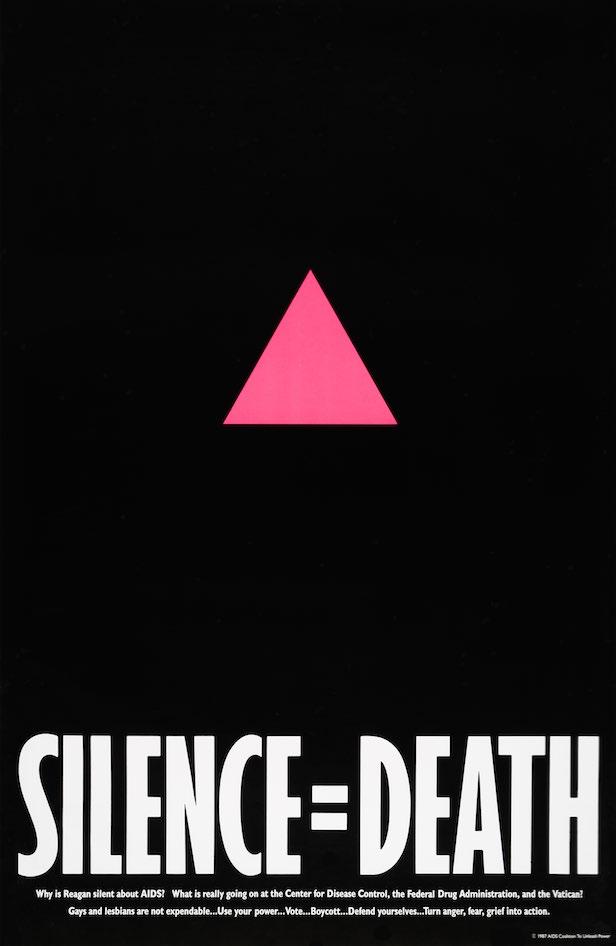



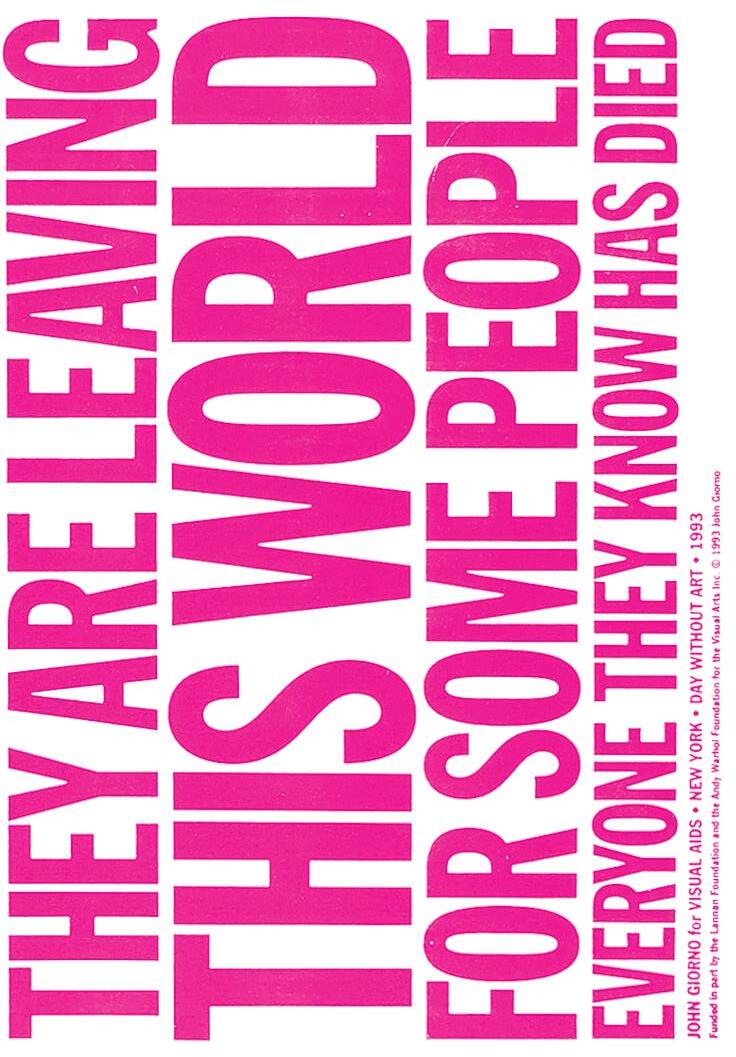



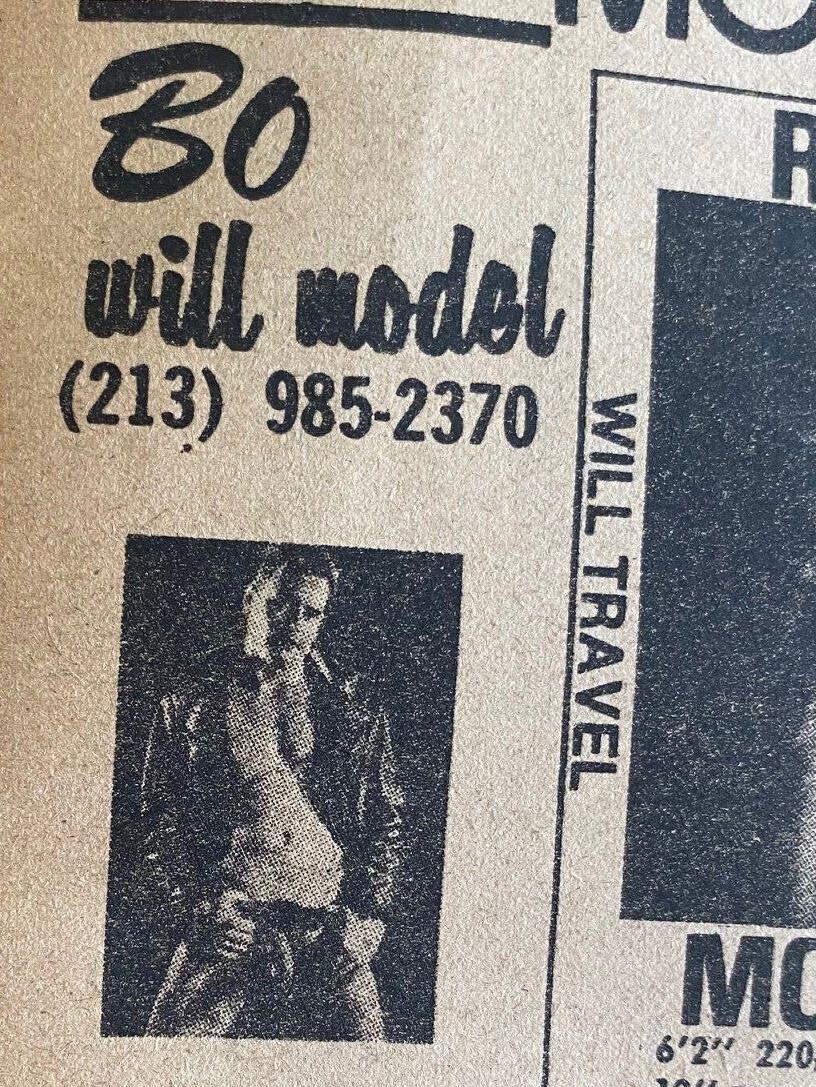
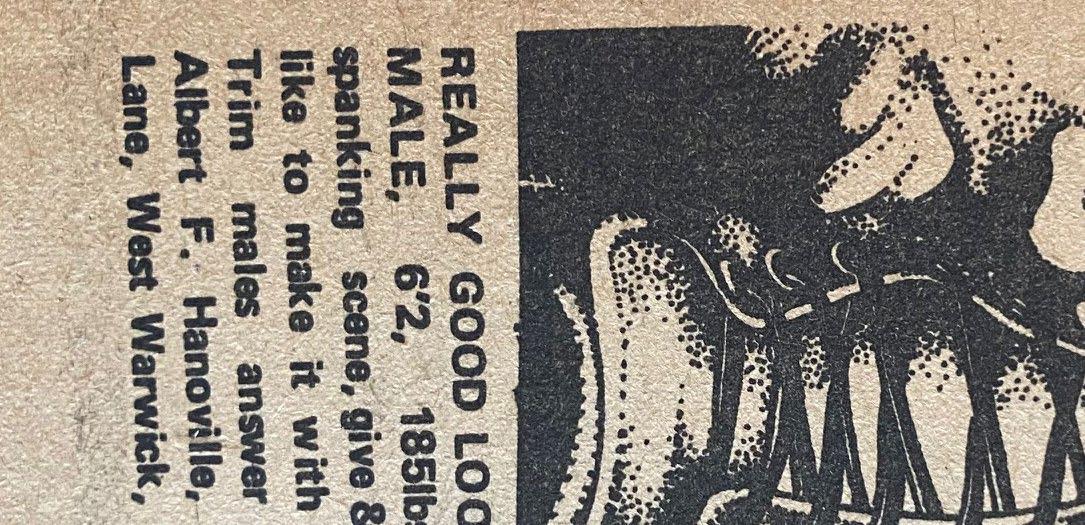
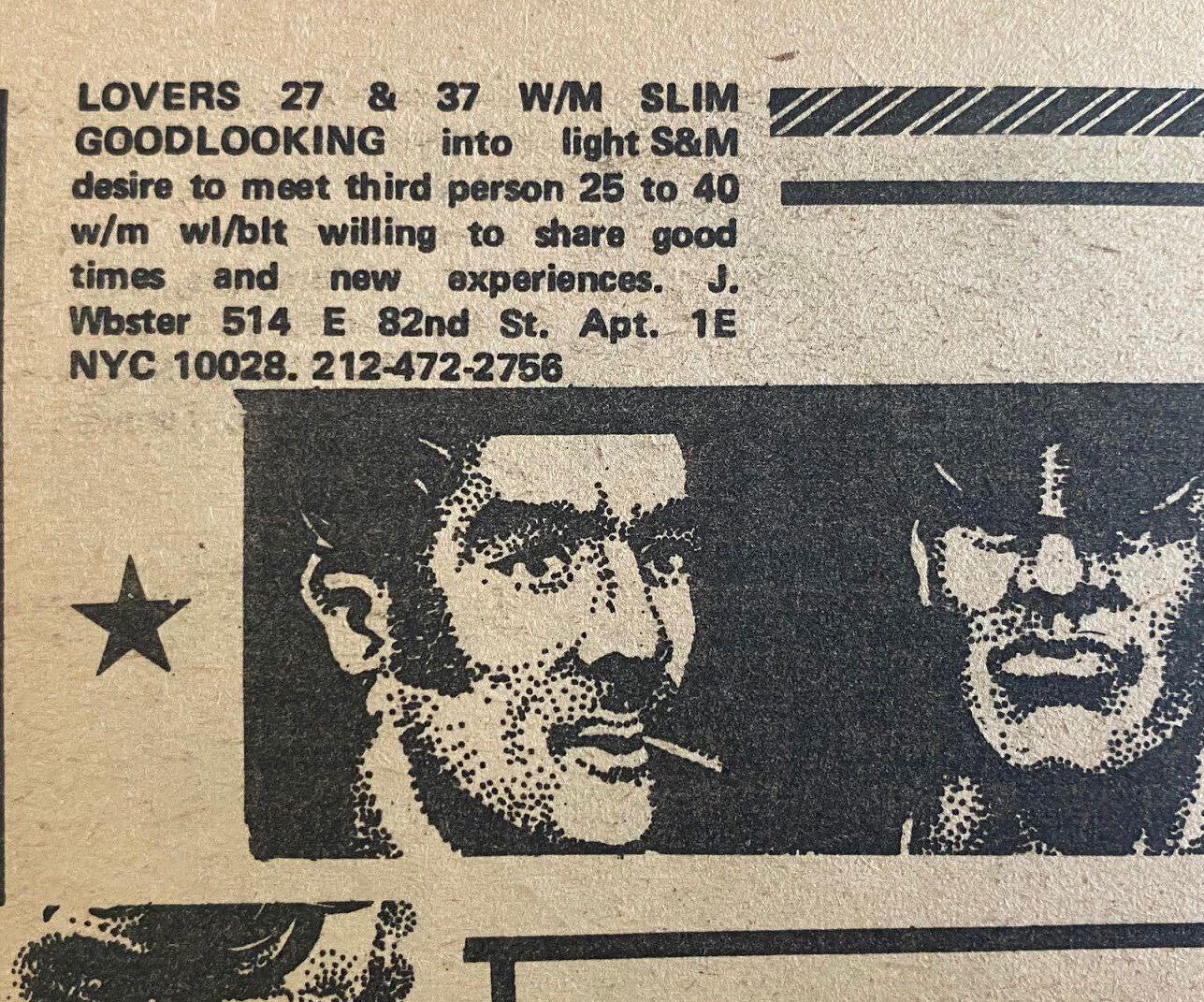
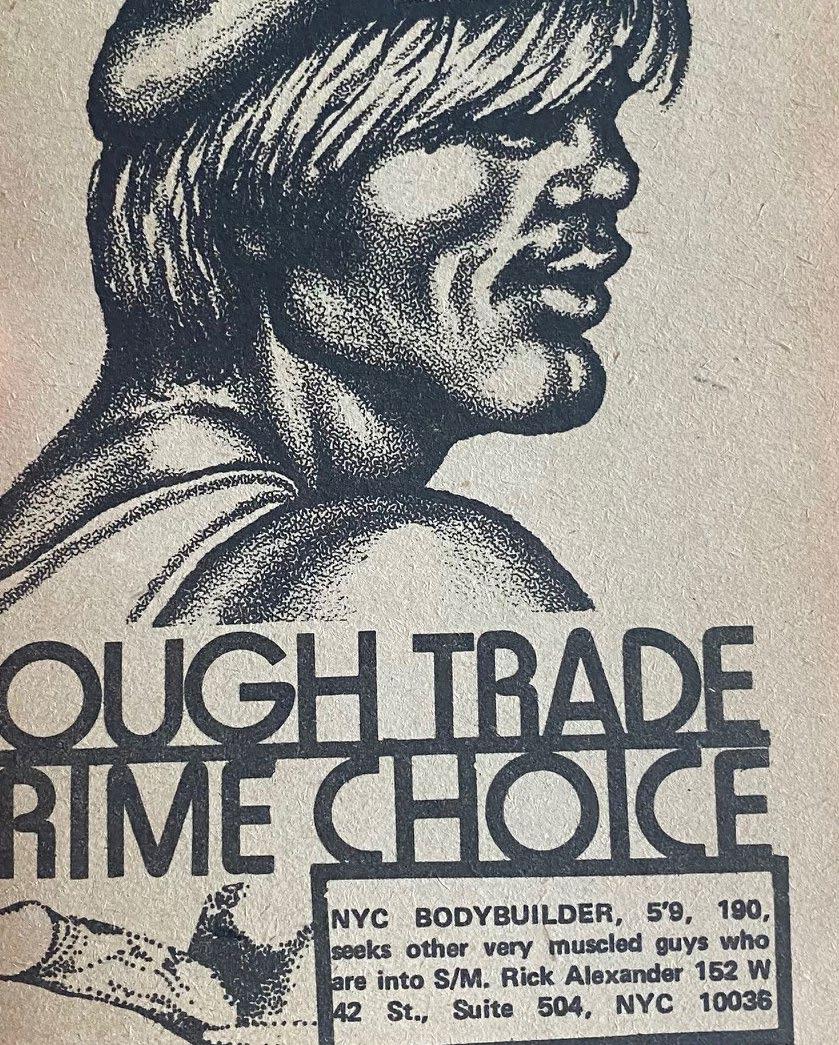
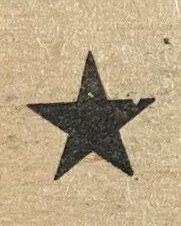
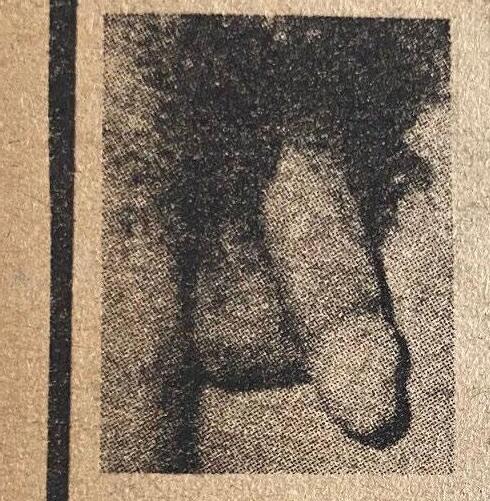
 Collection of personals ads from various newspapers.
Collection of personals ads from various newspapers.
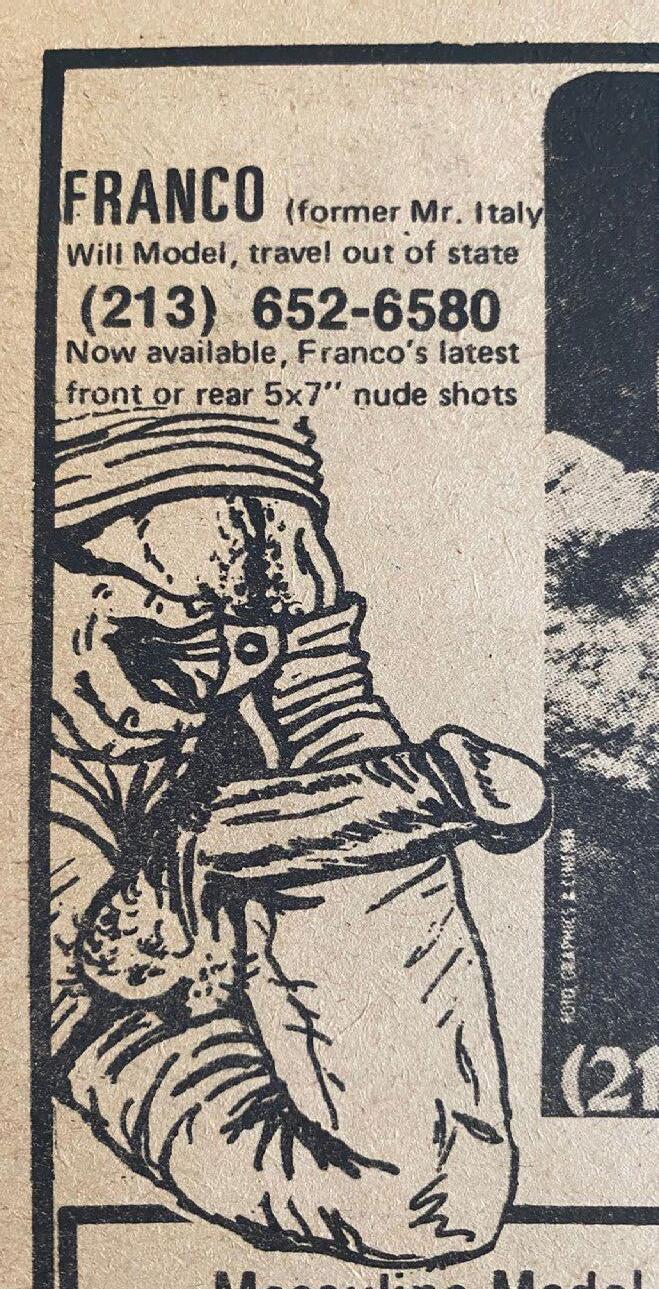
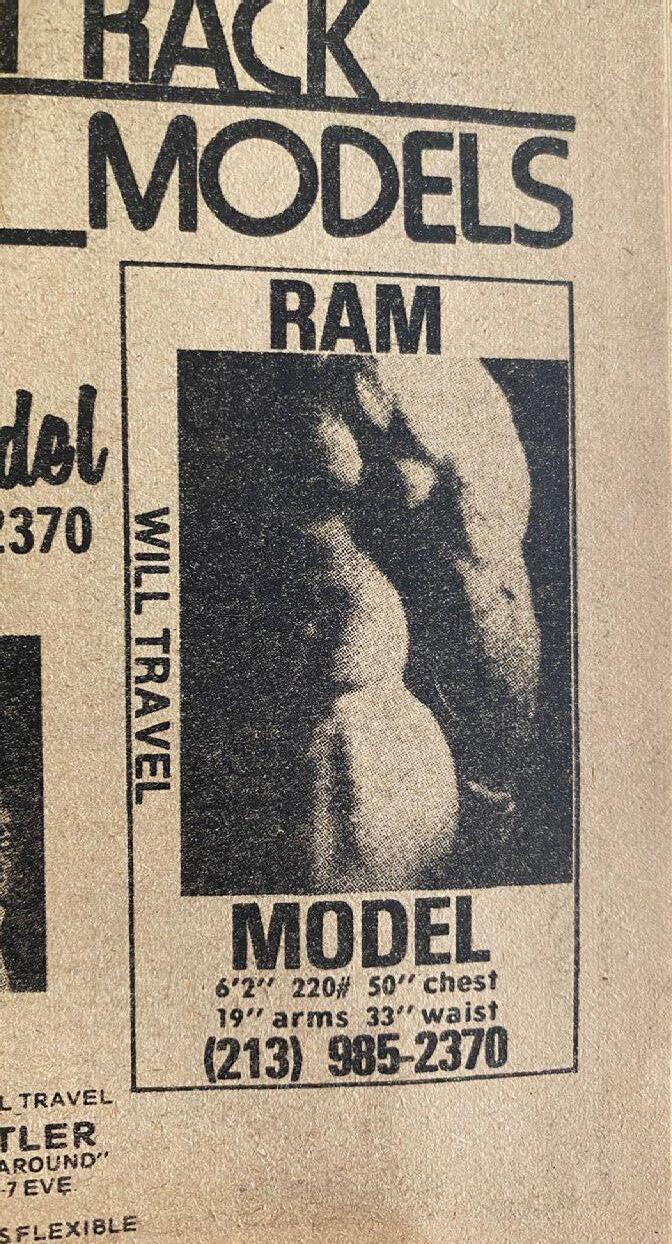
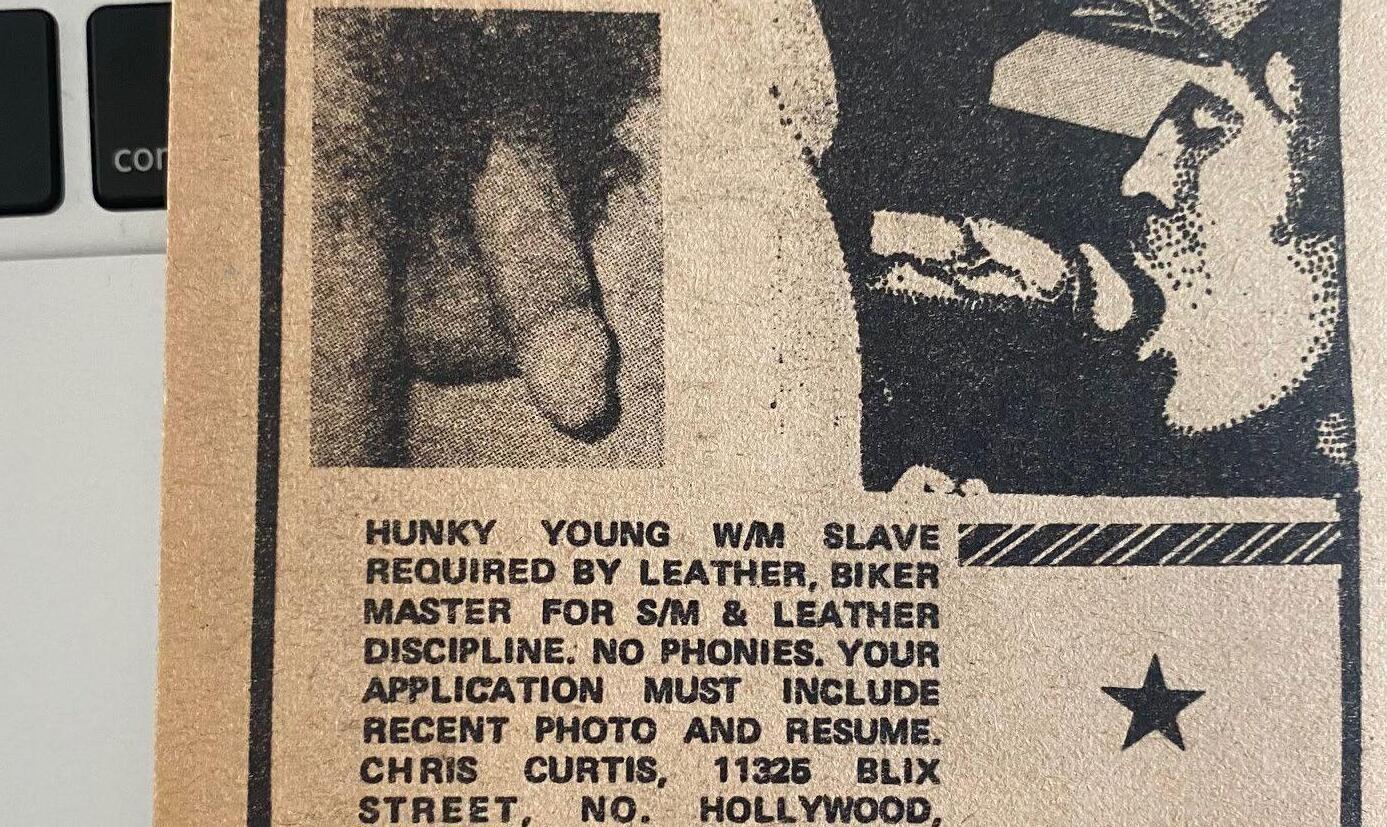
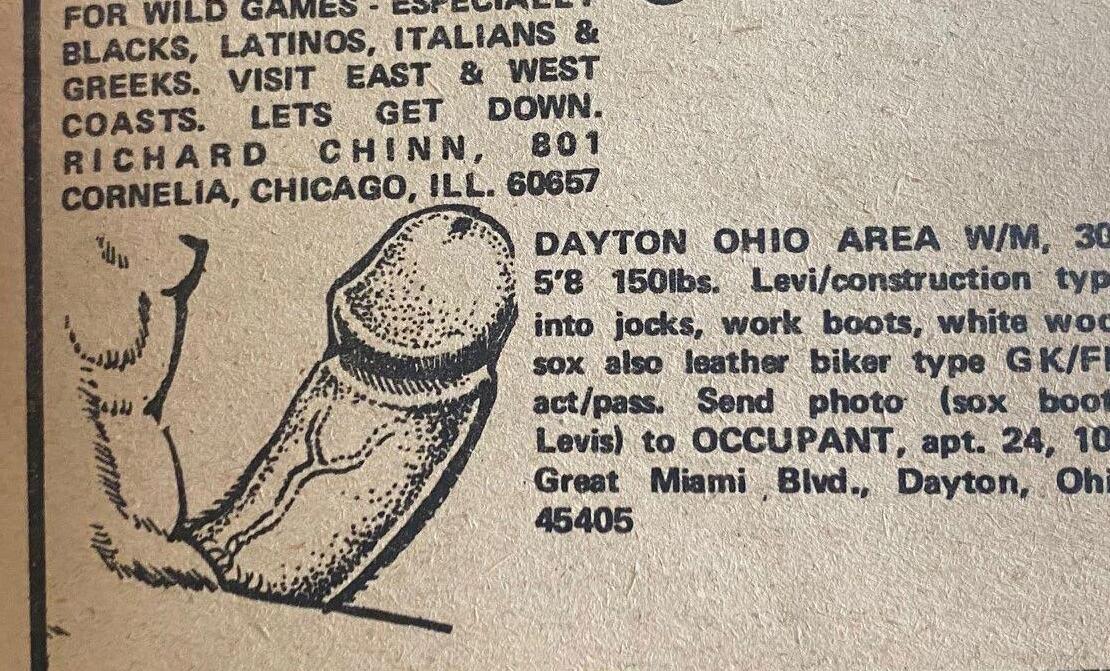

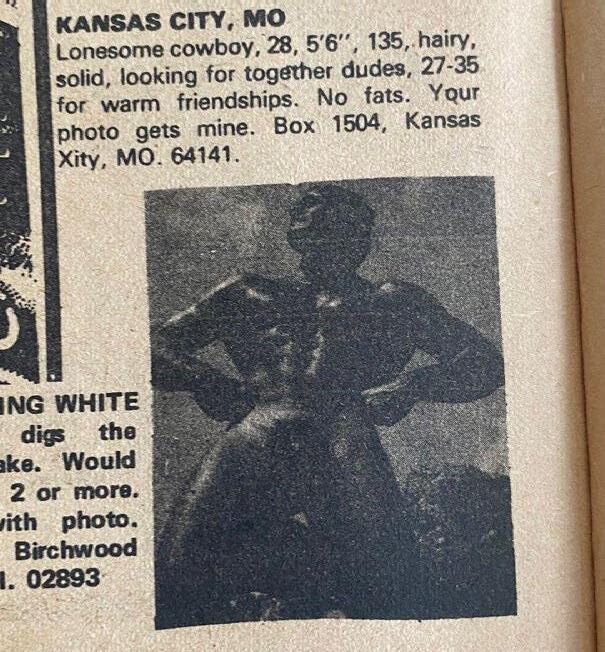
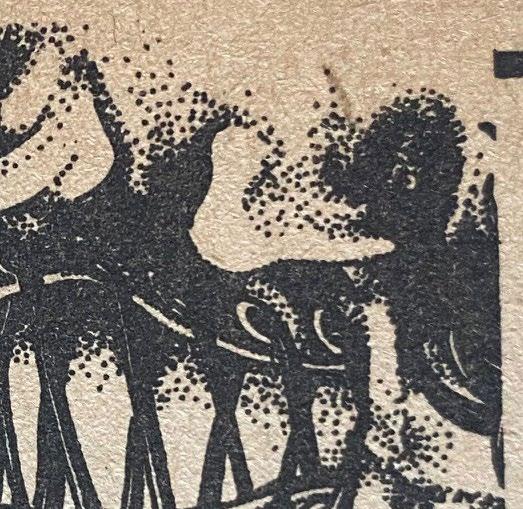
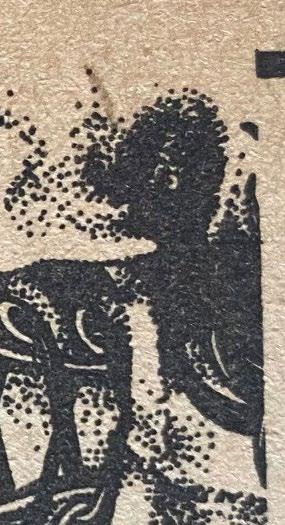

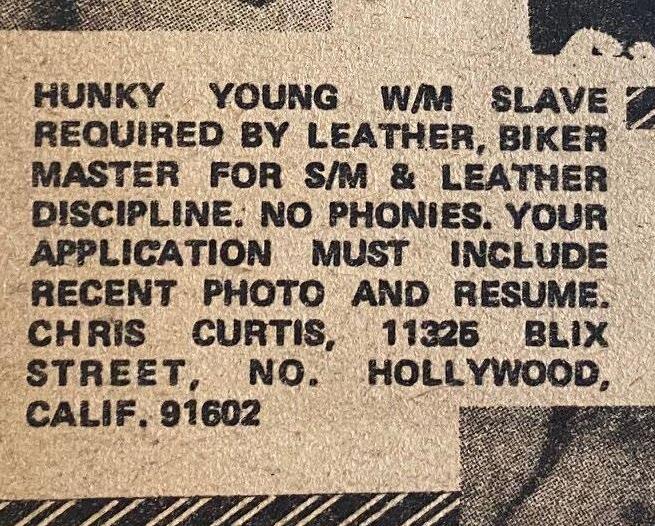
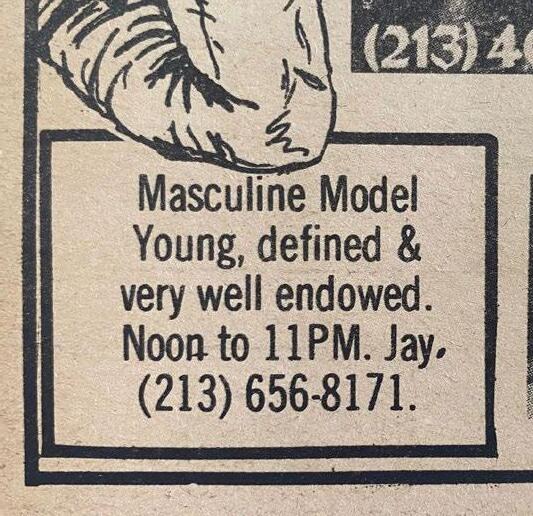
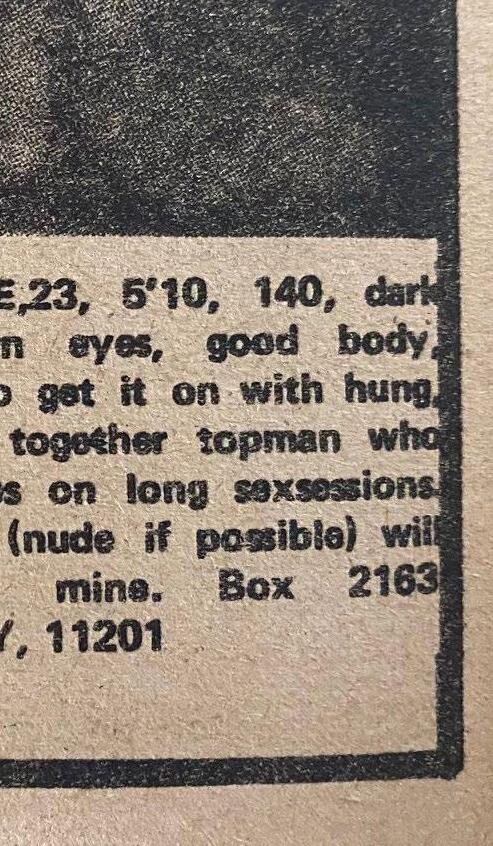
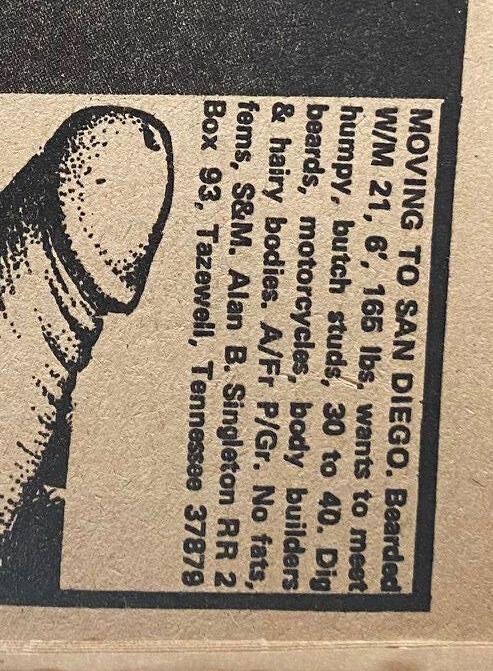

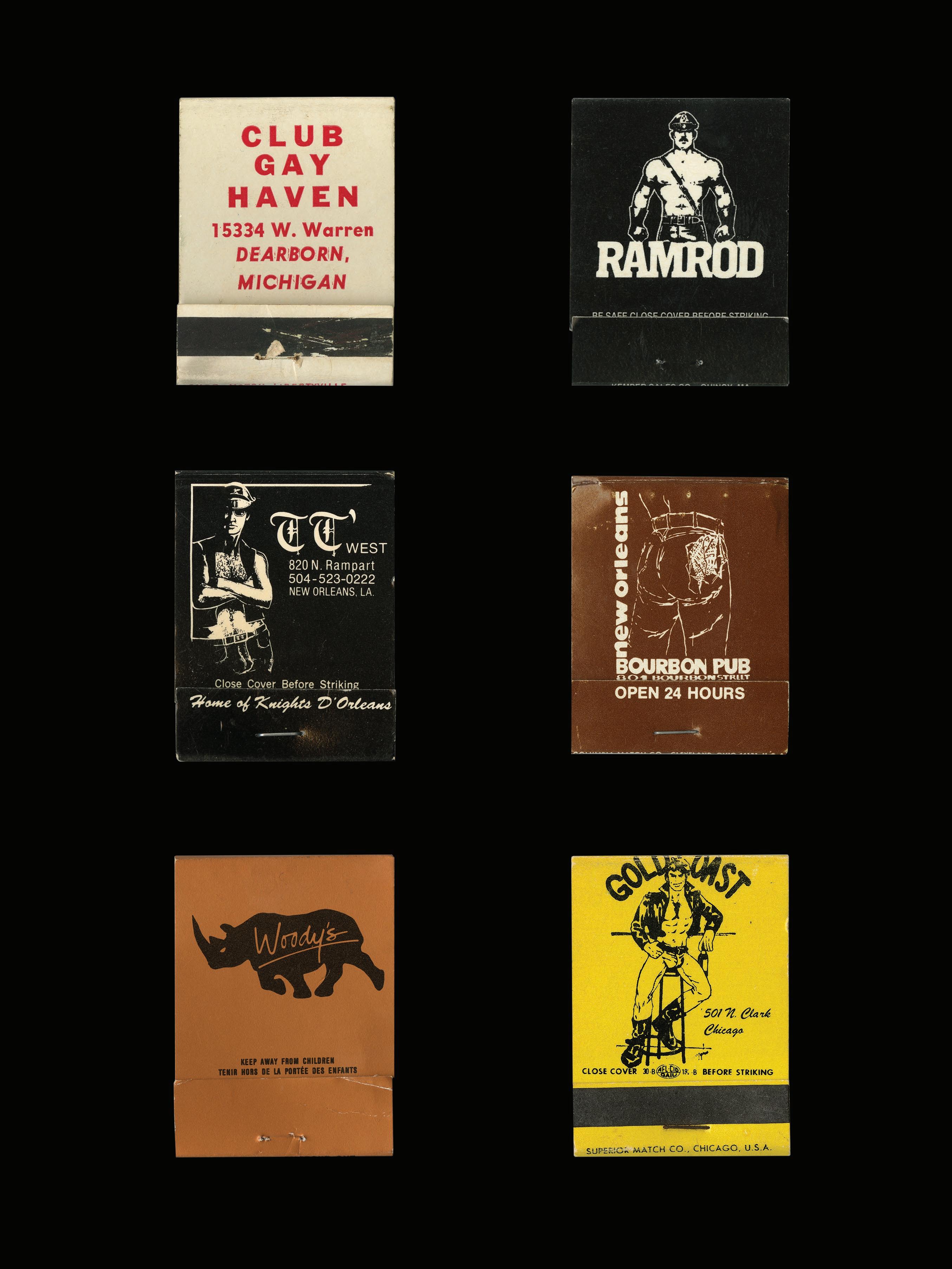
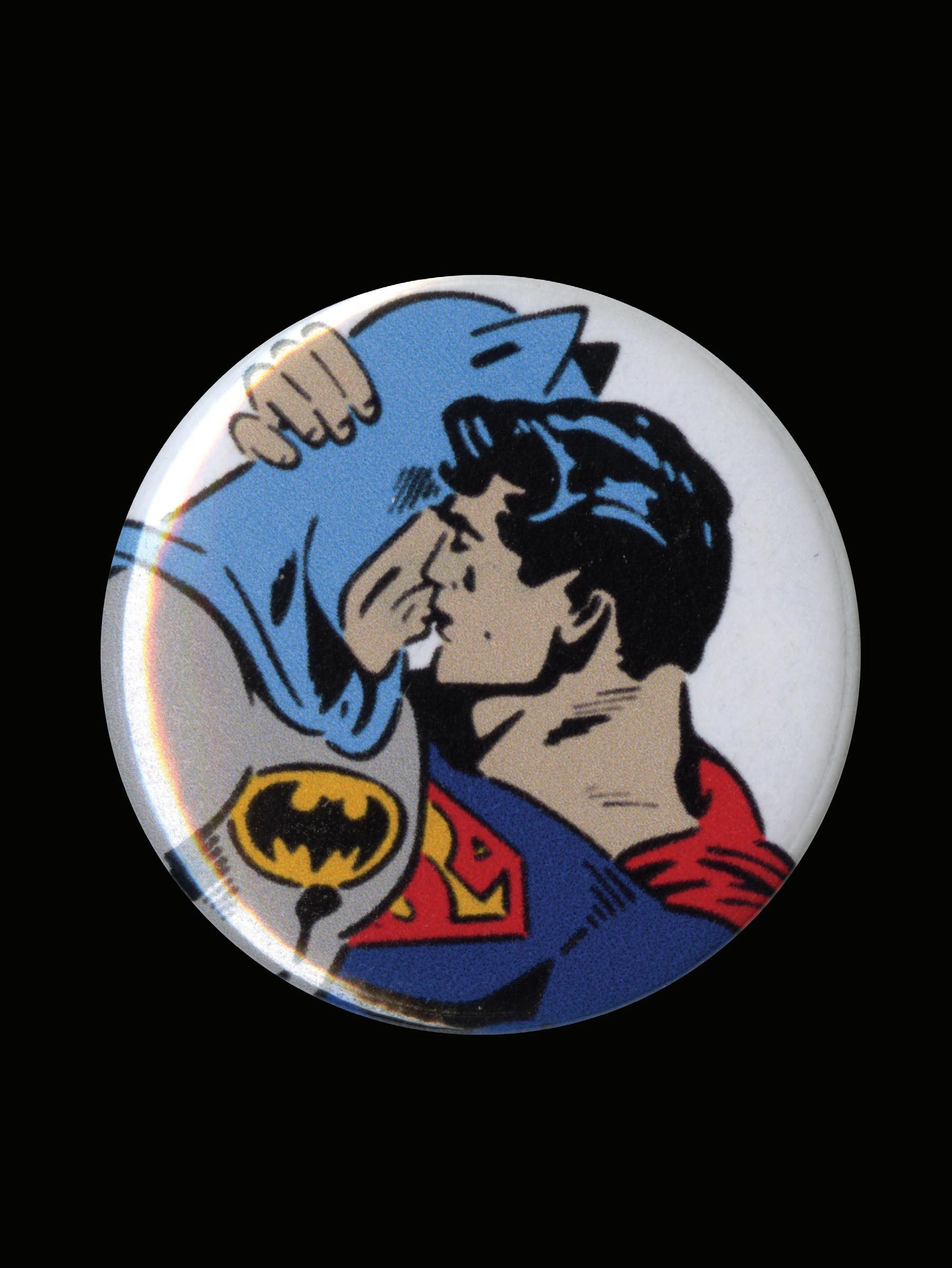
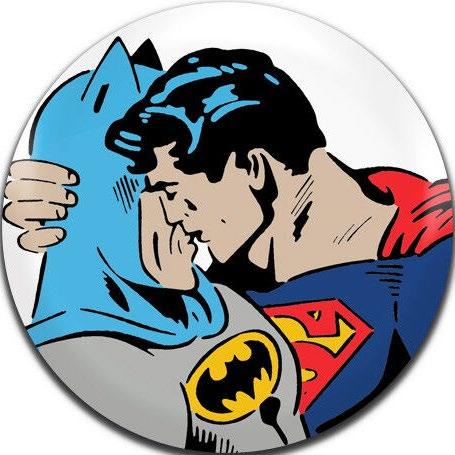
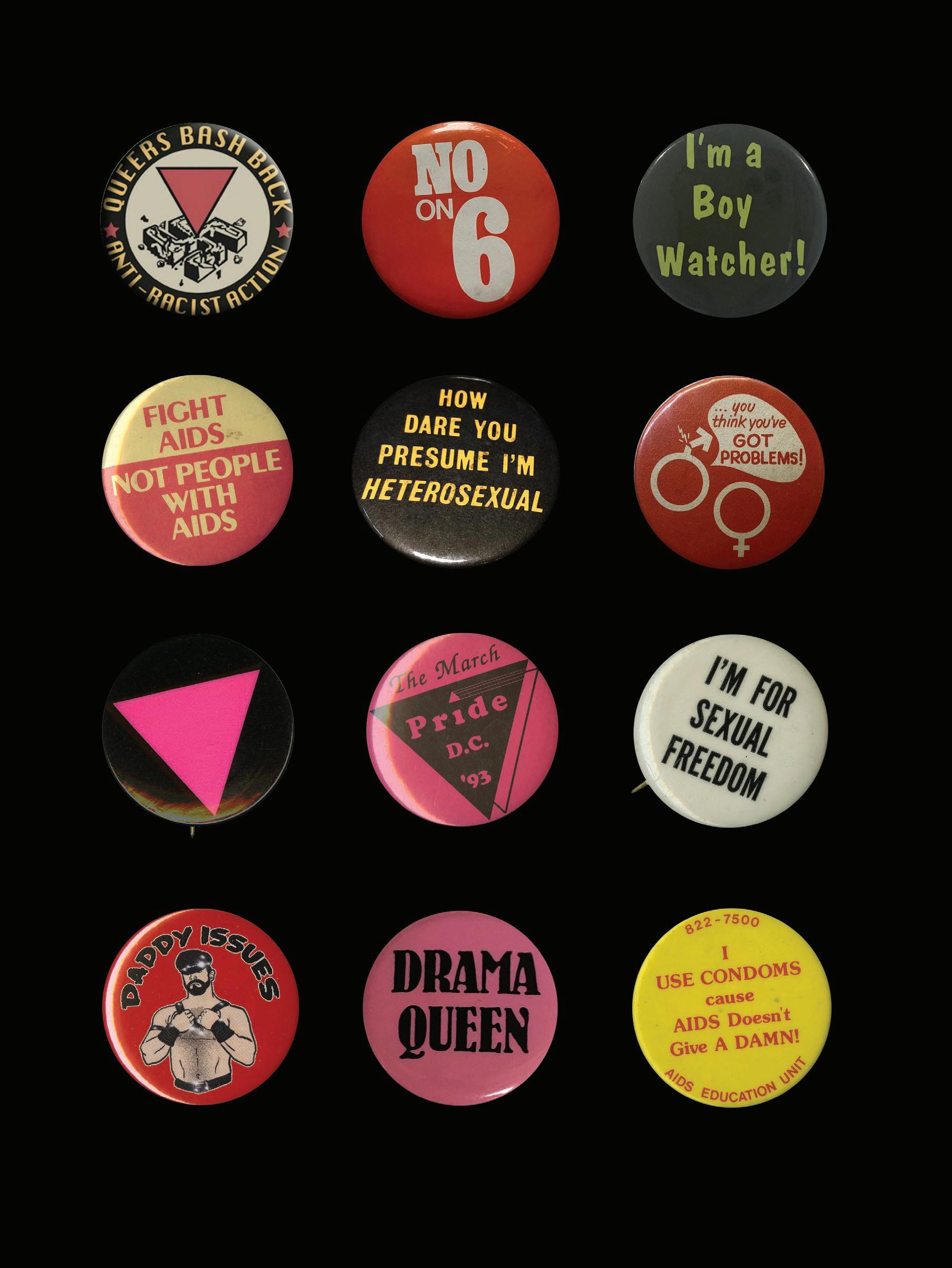
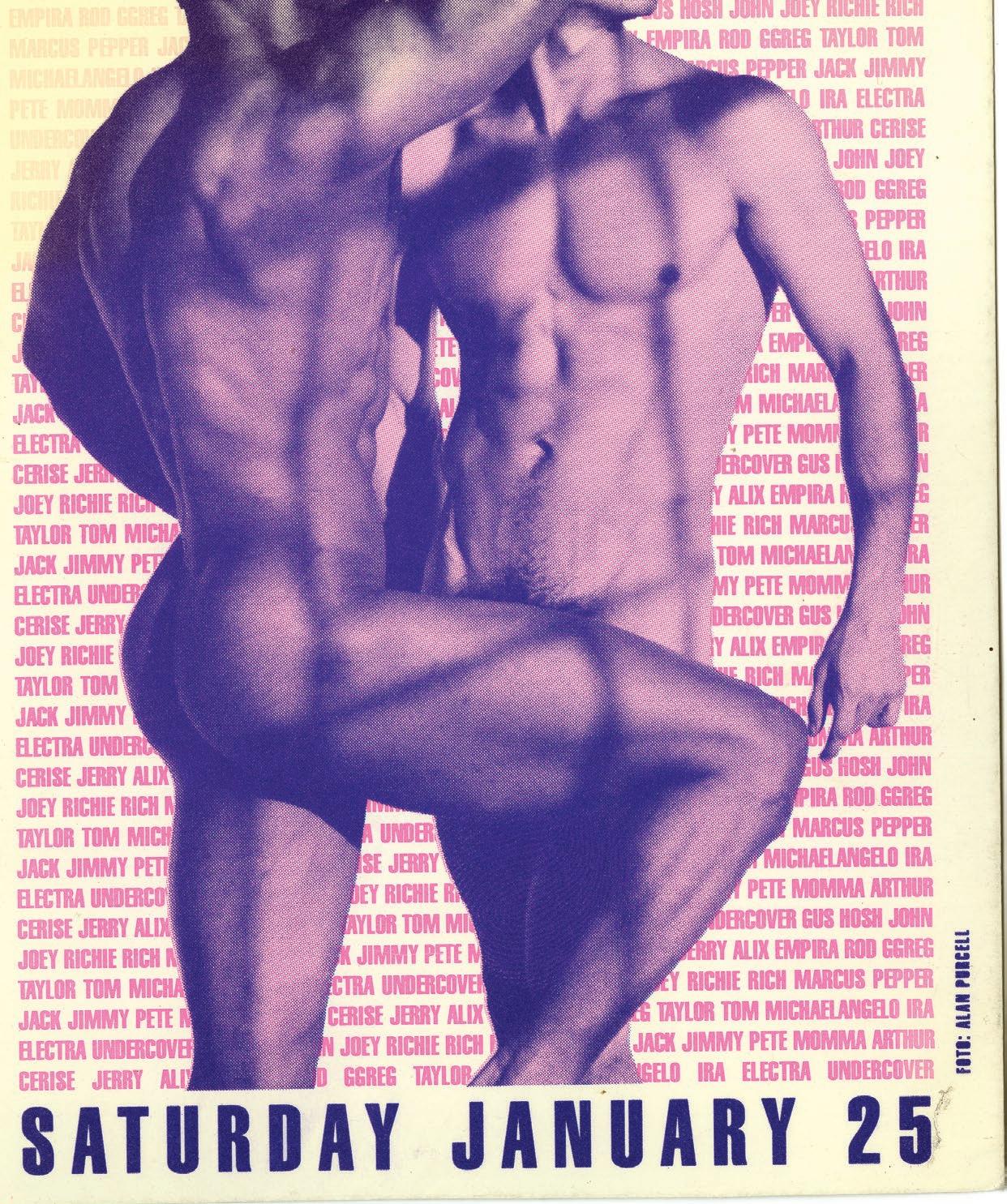
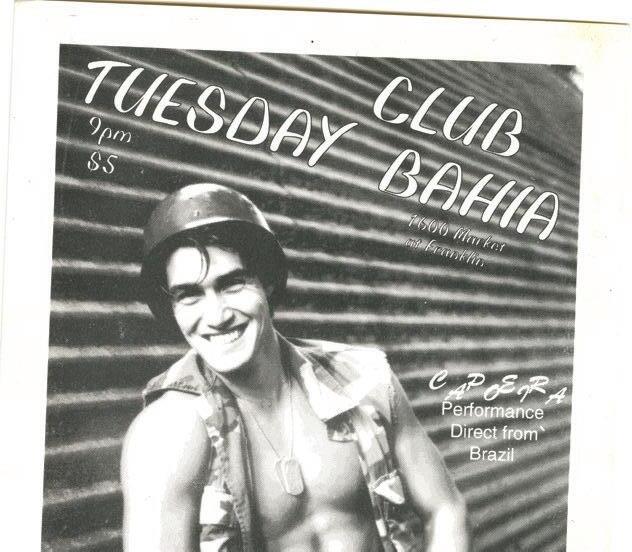


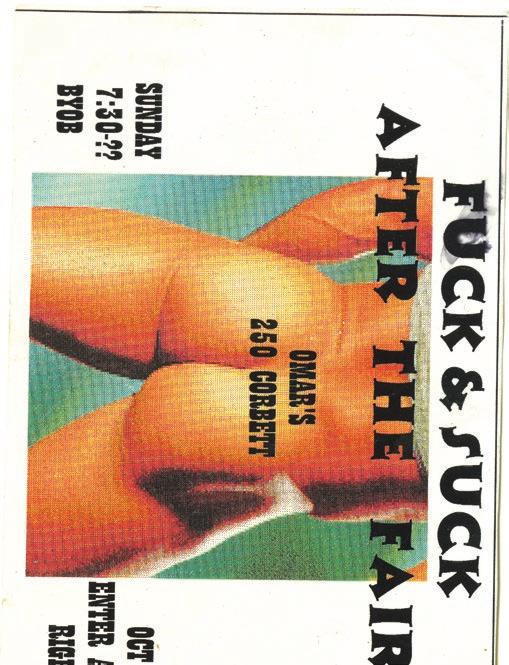
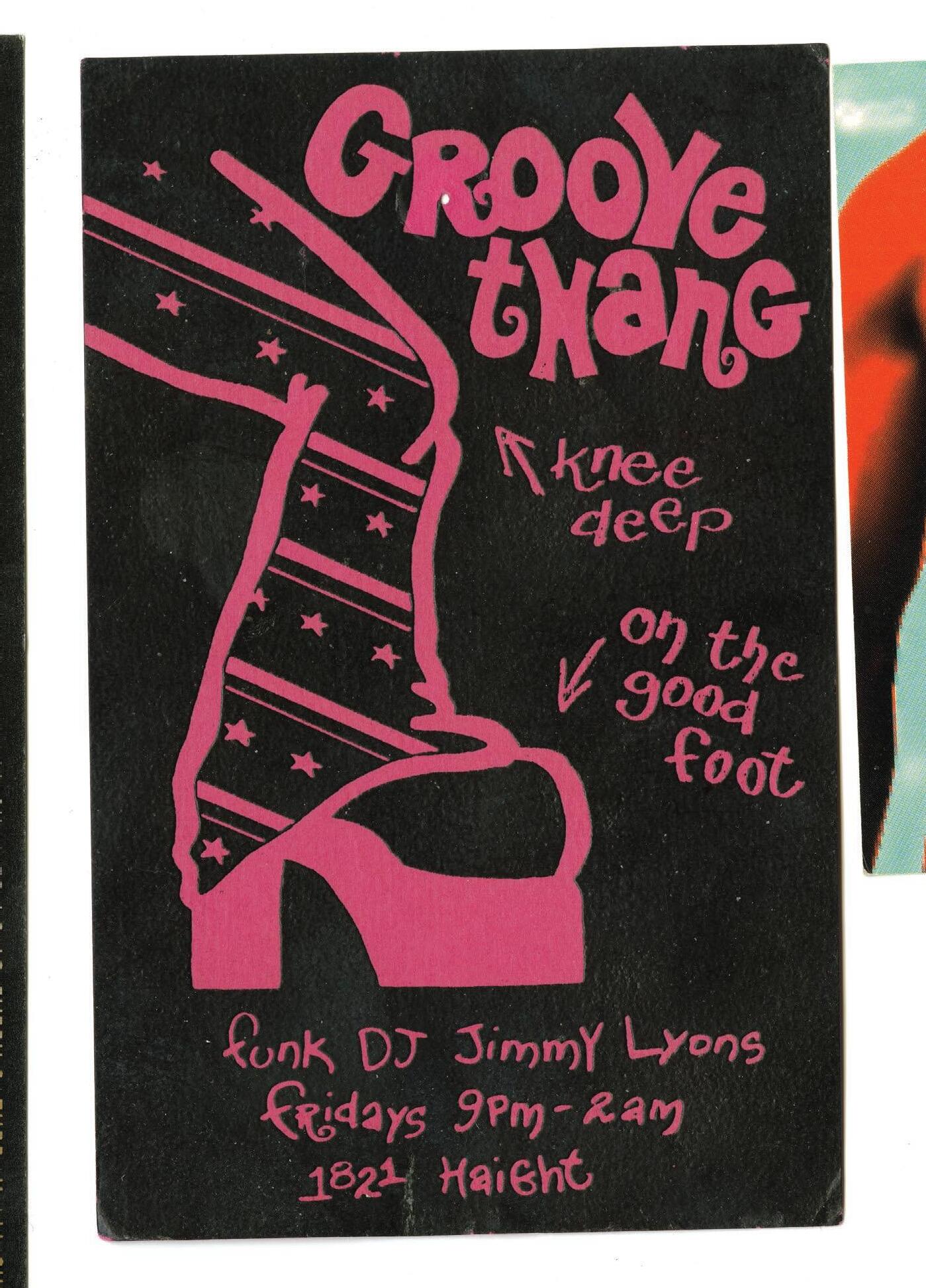
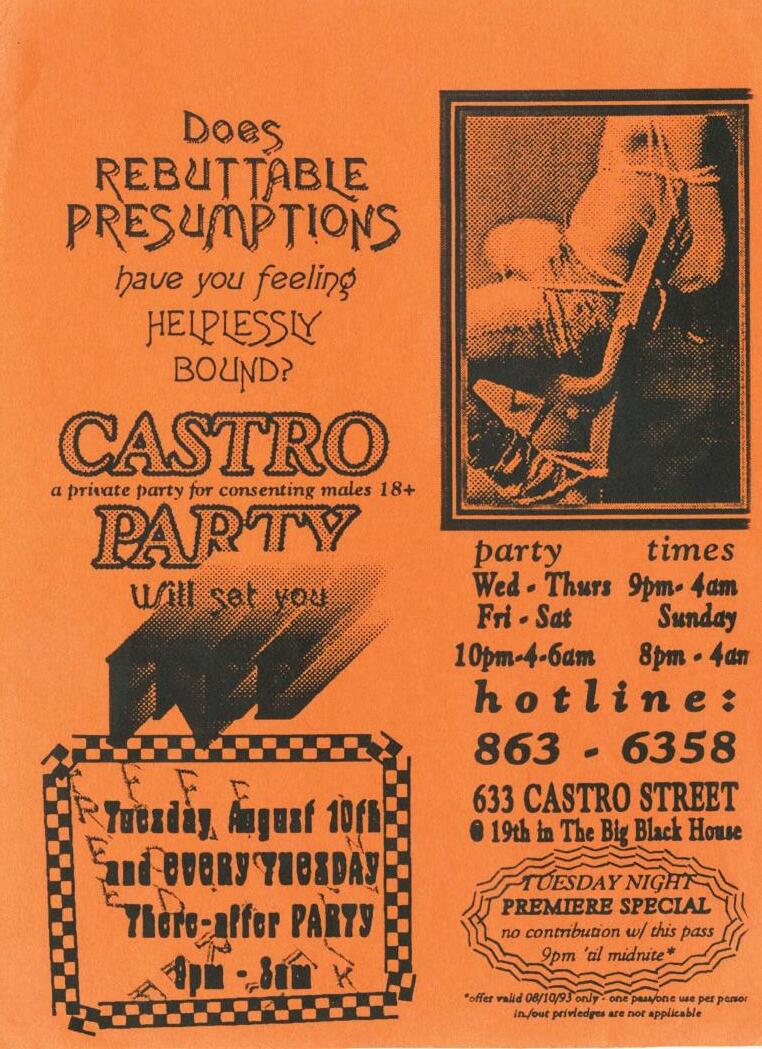
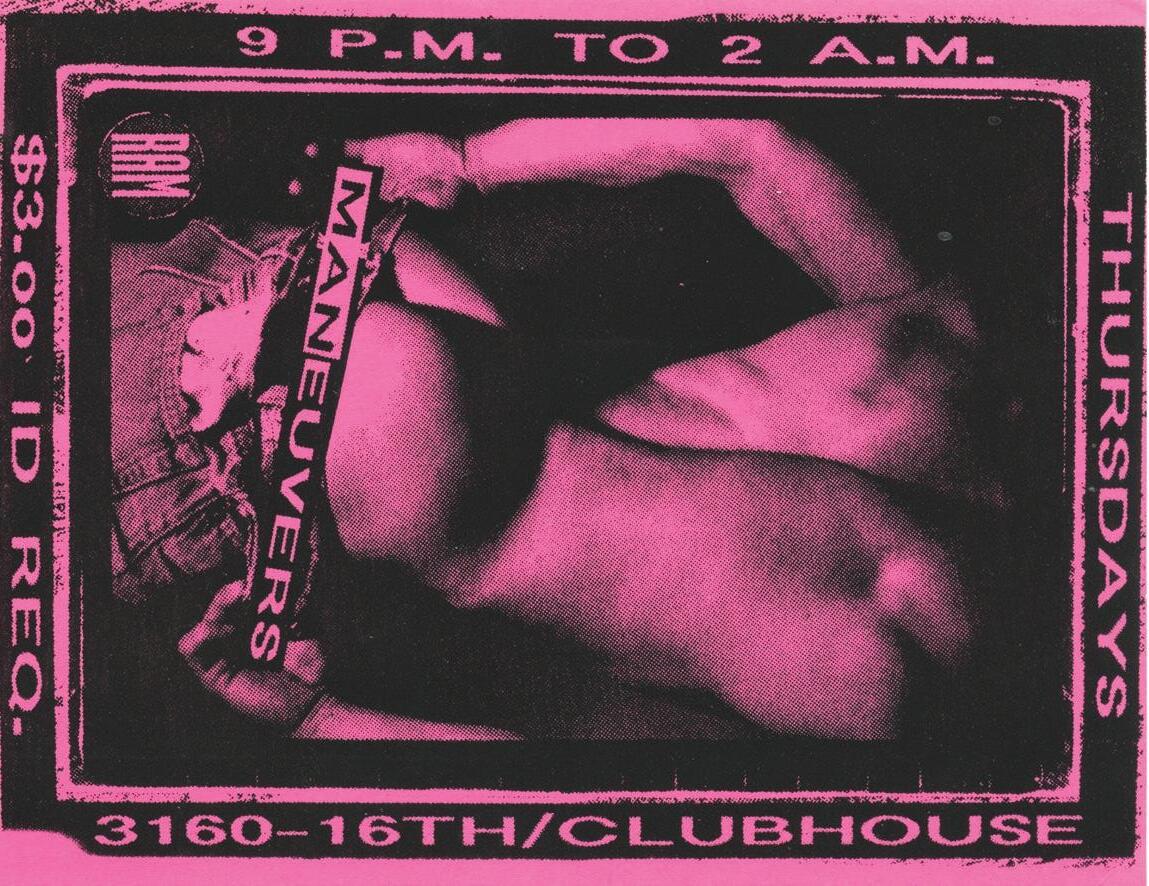
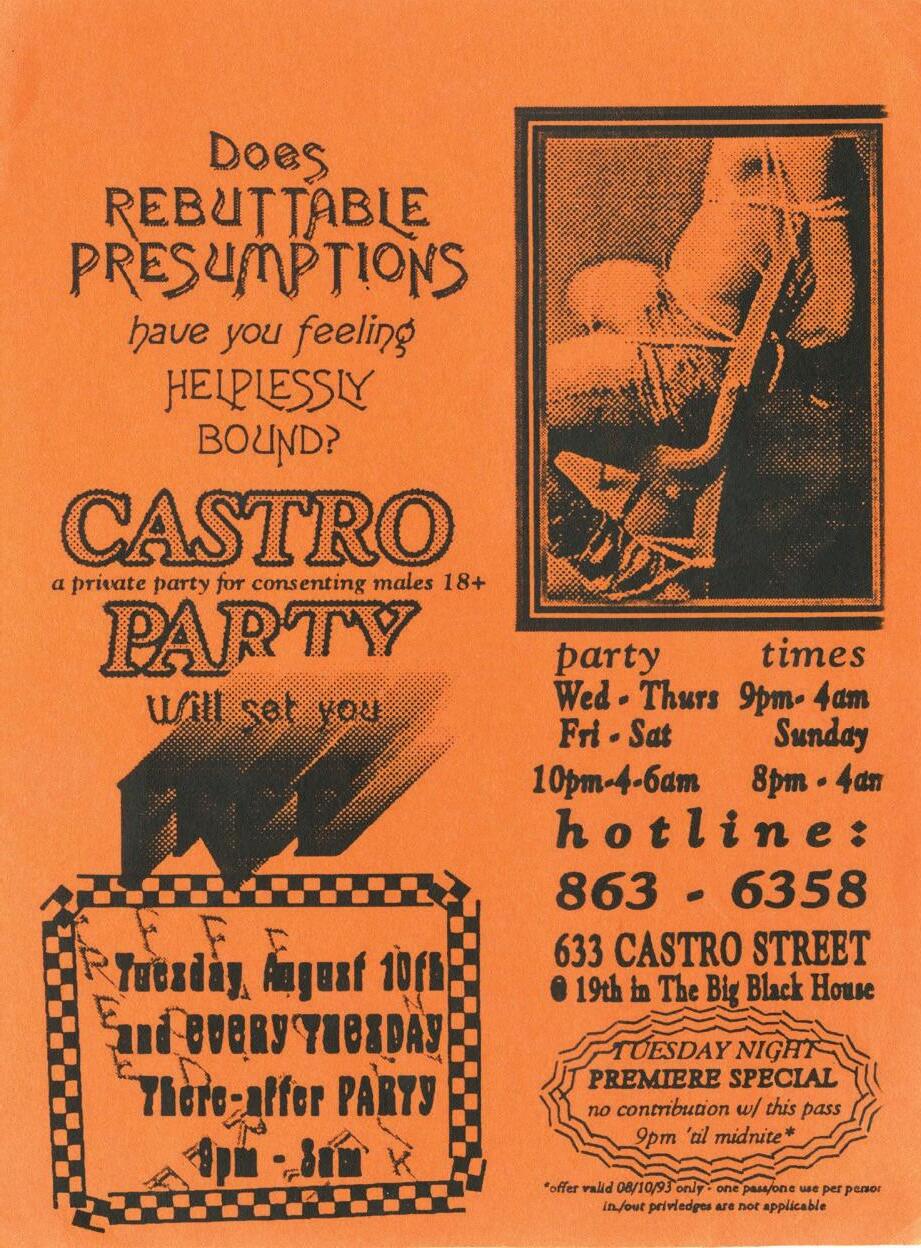
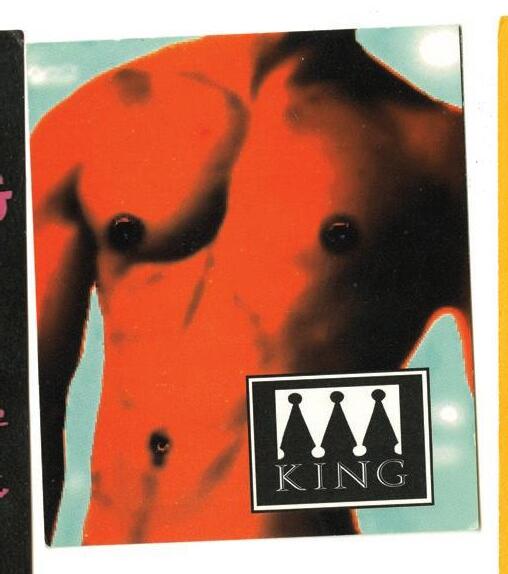
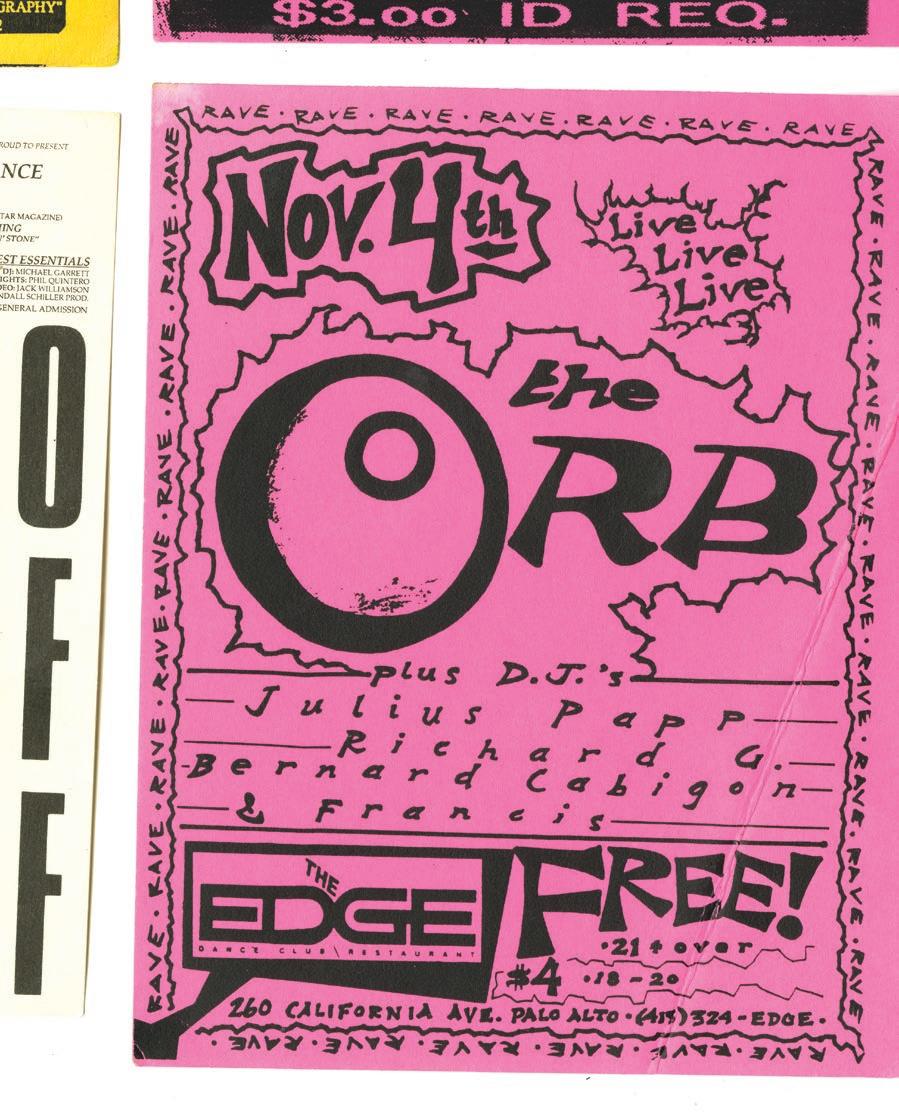
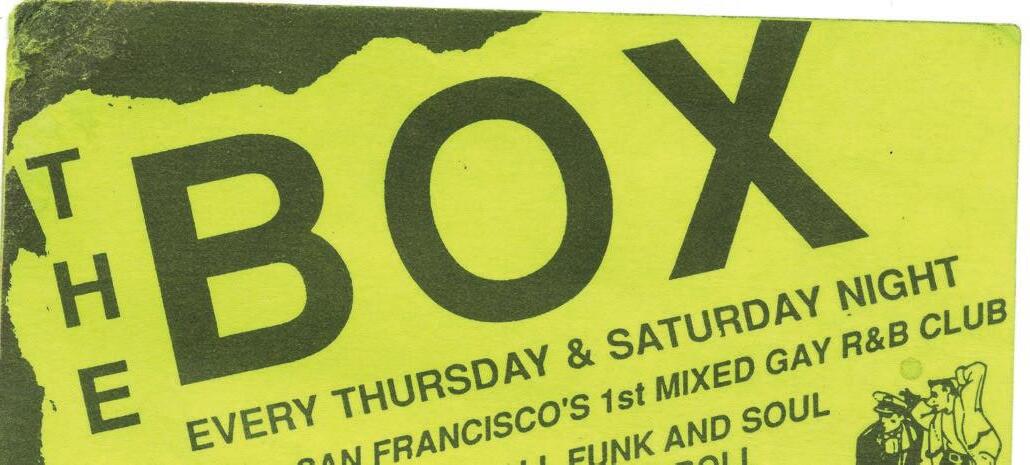
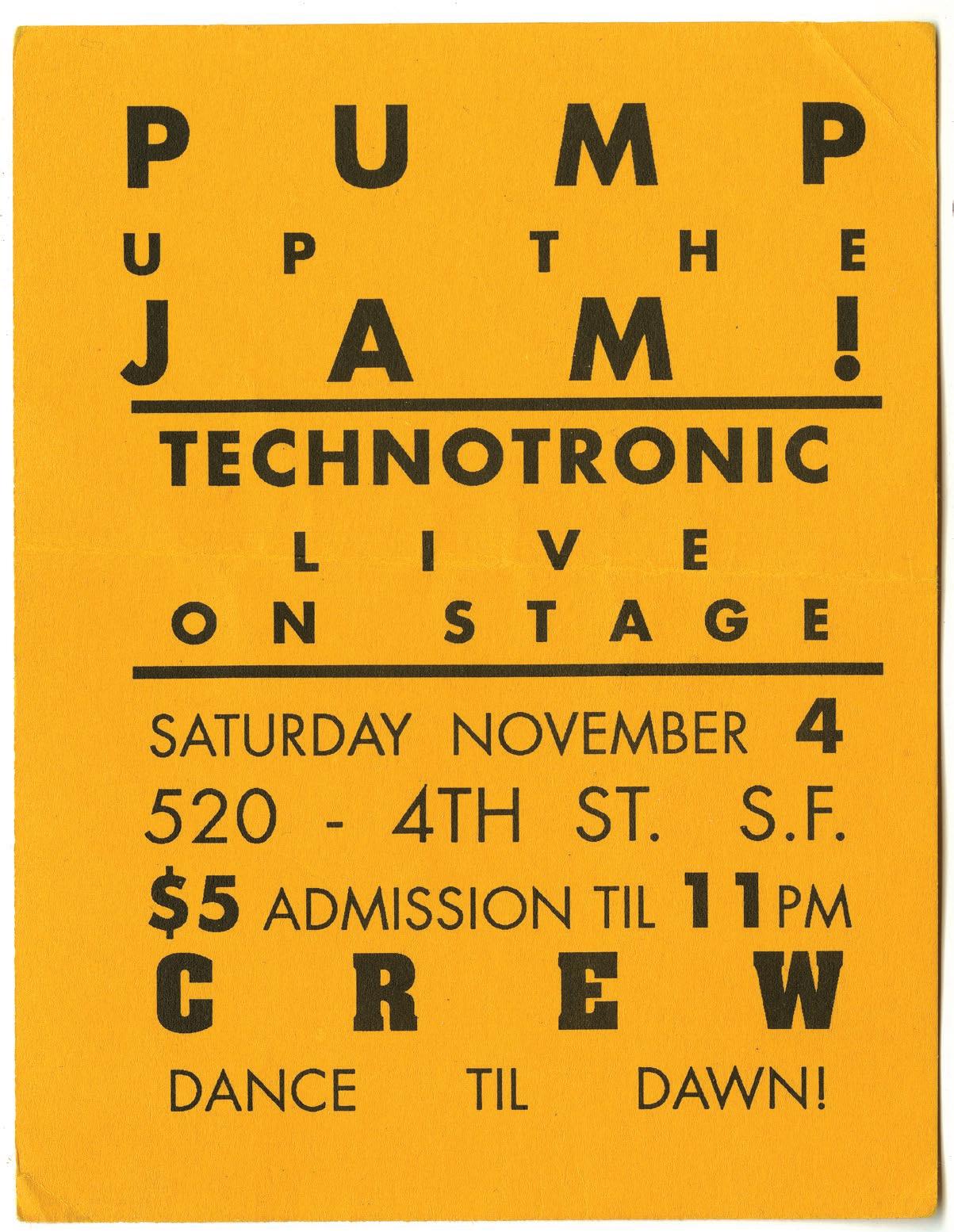
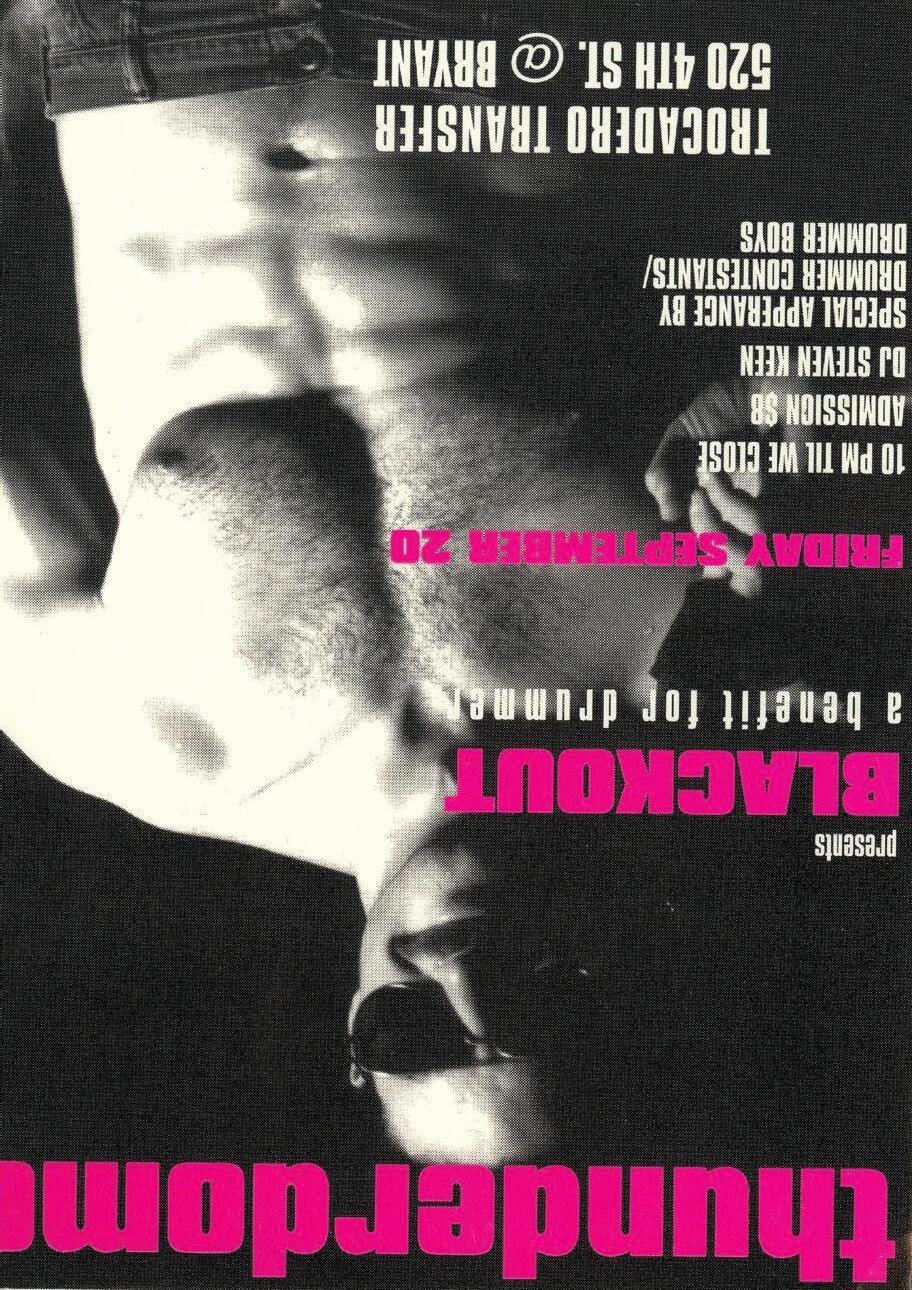
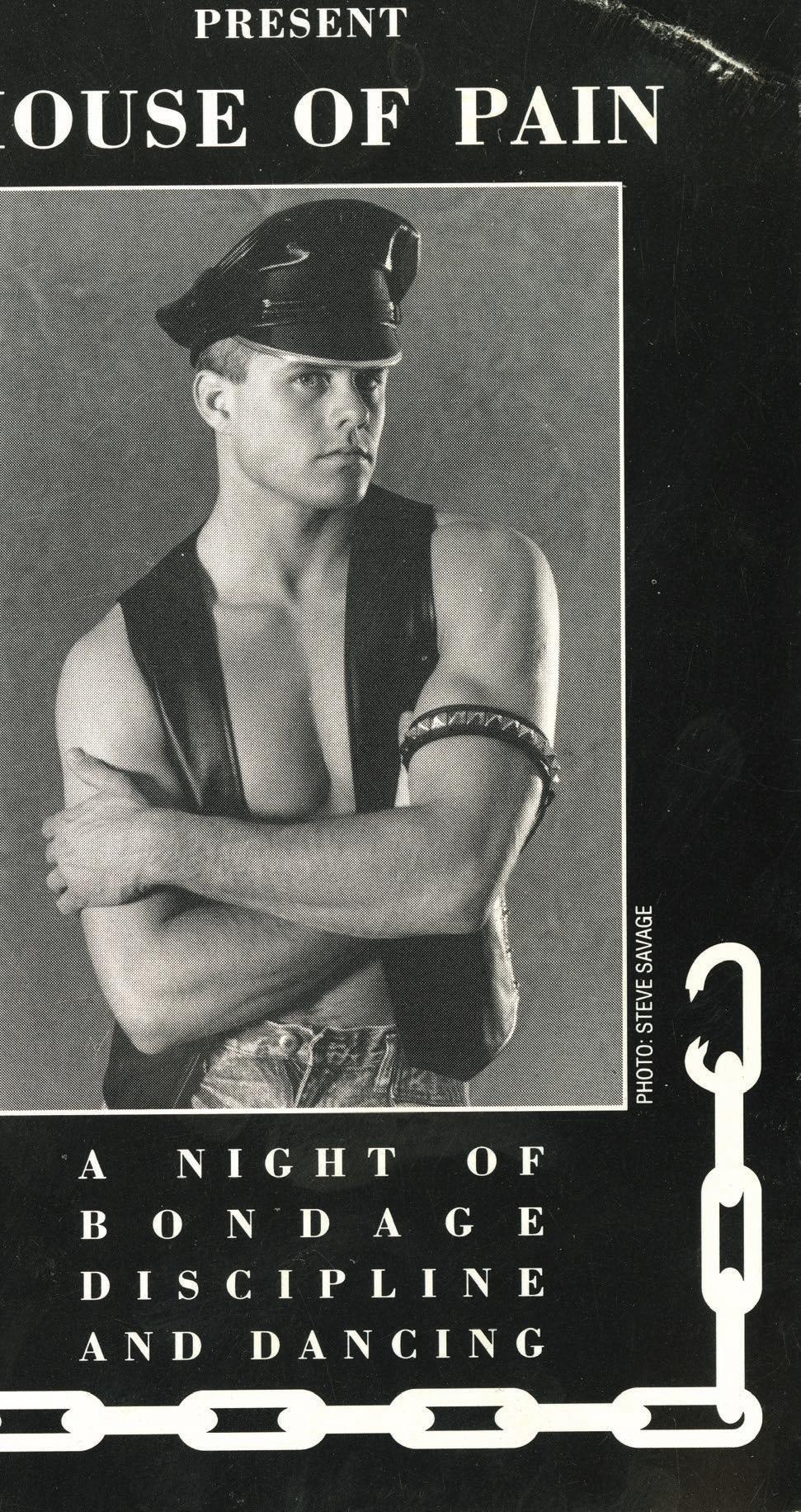
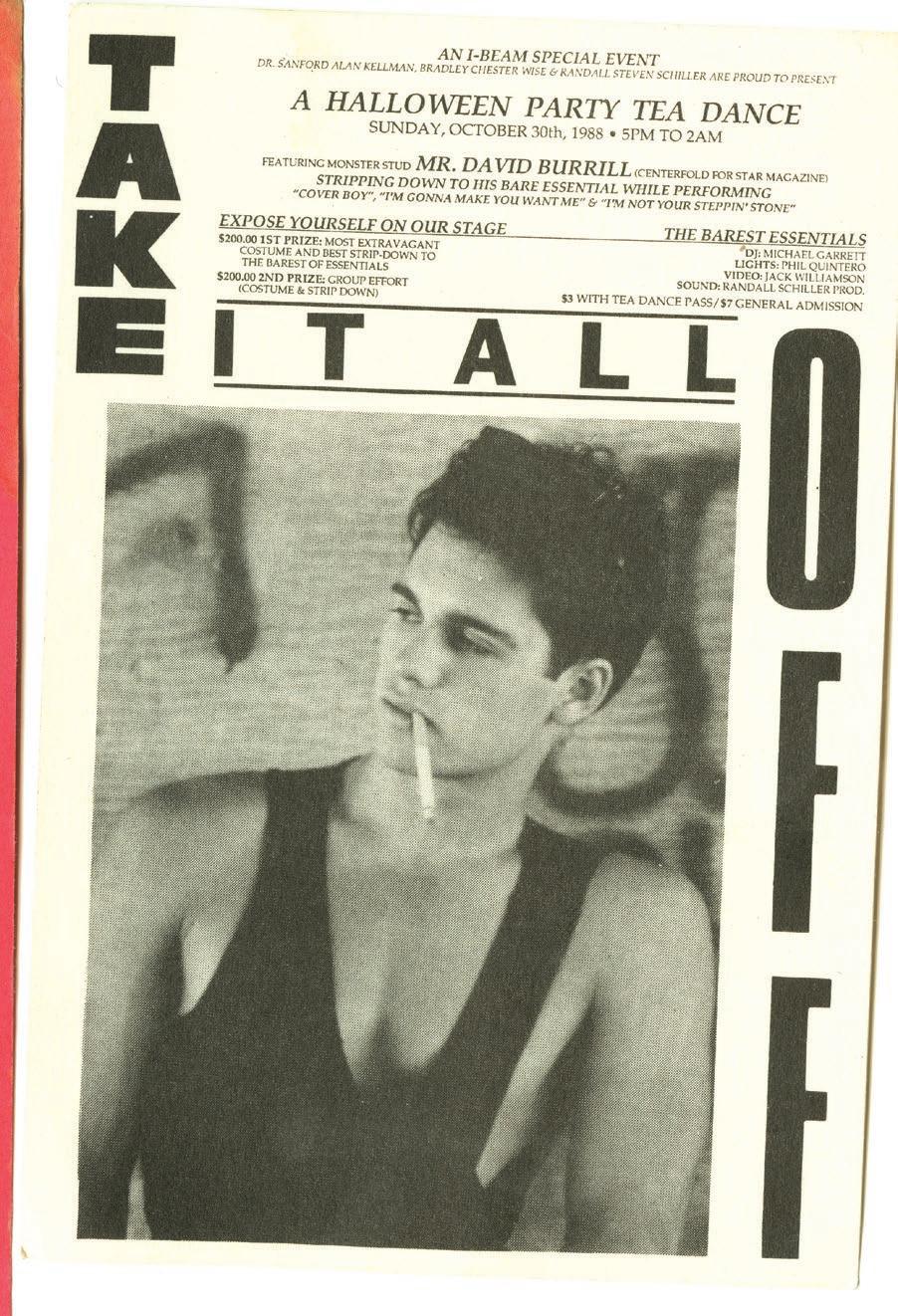
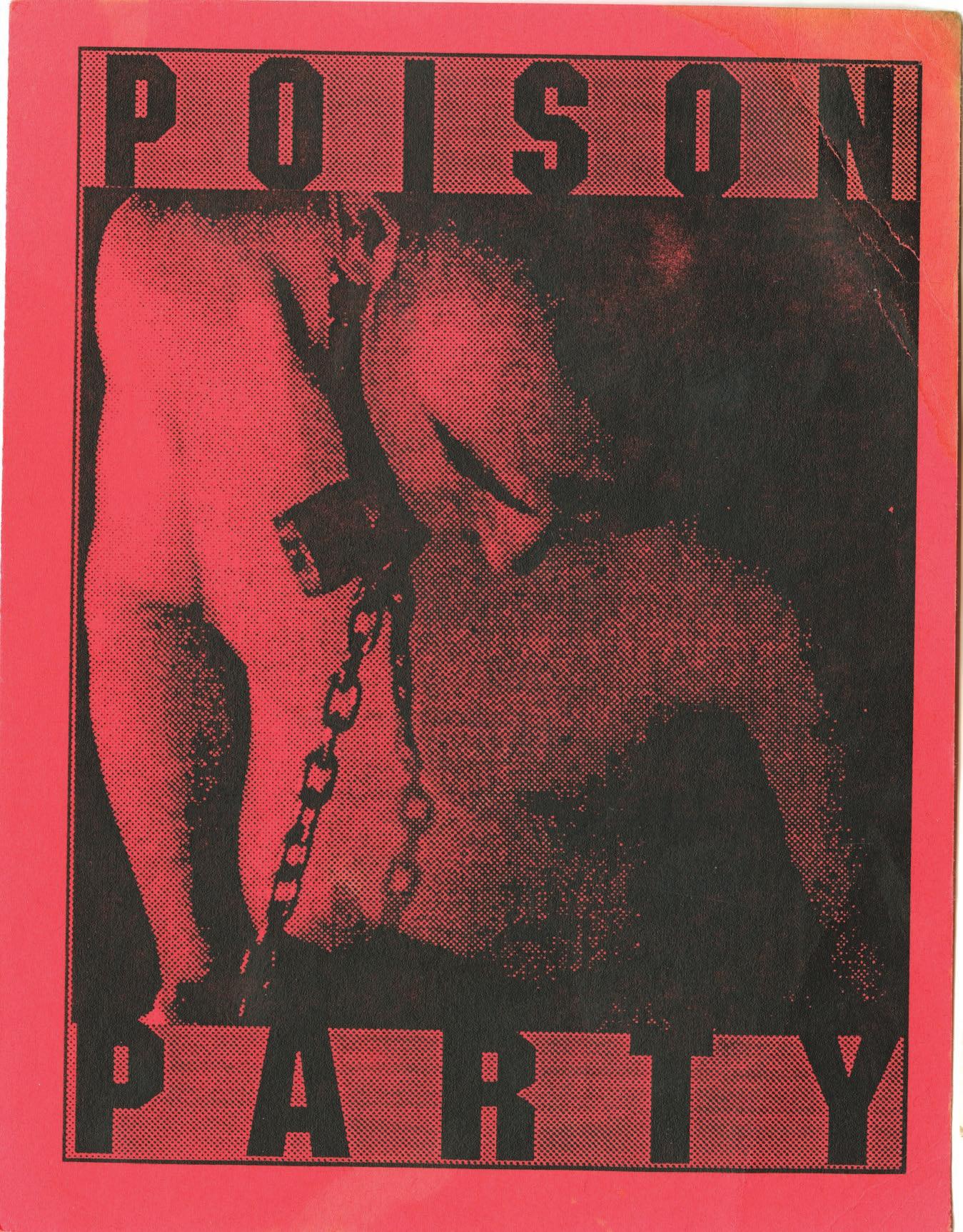
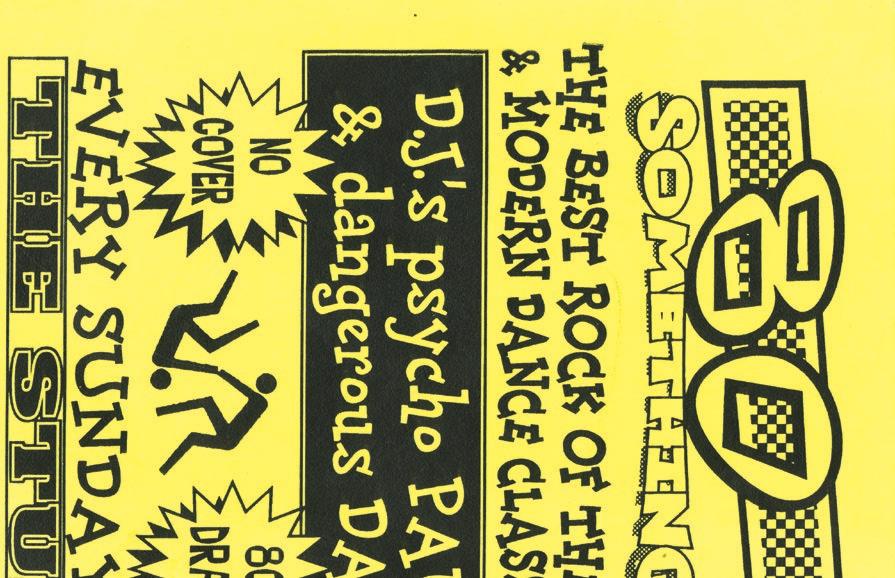
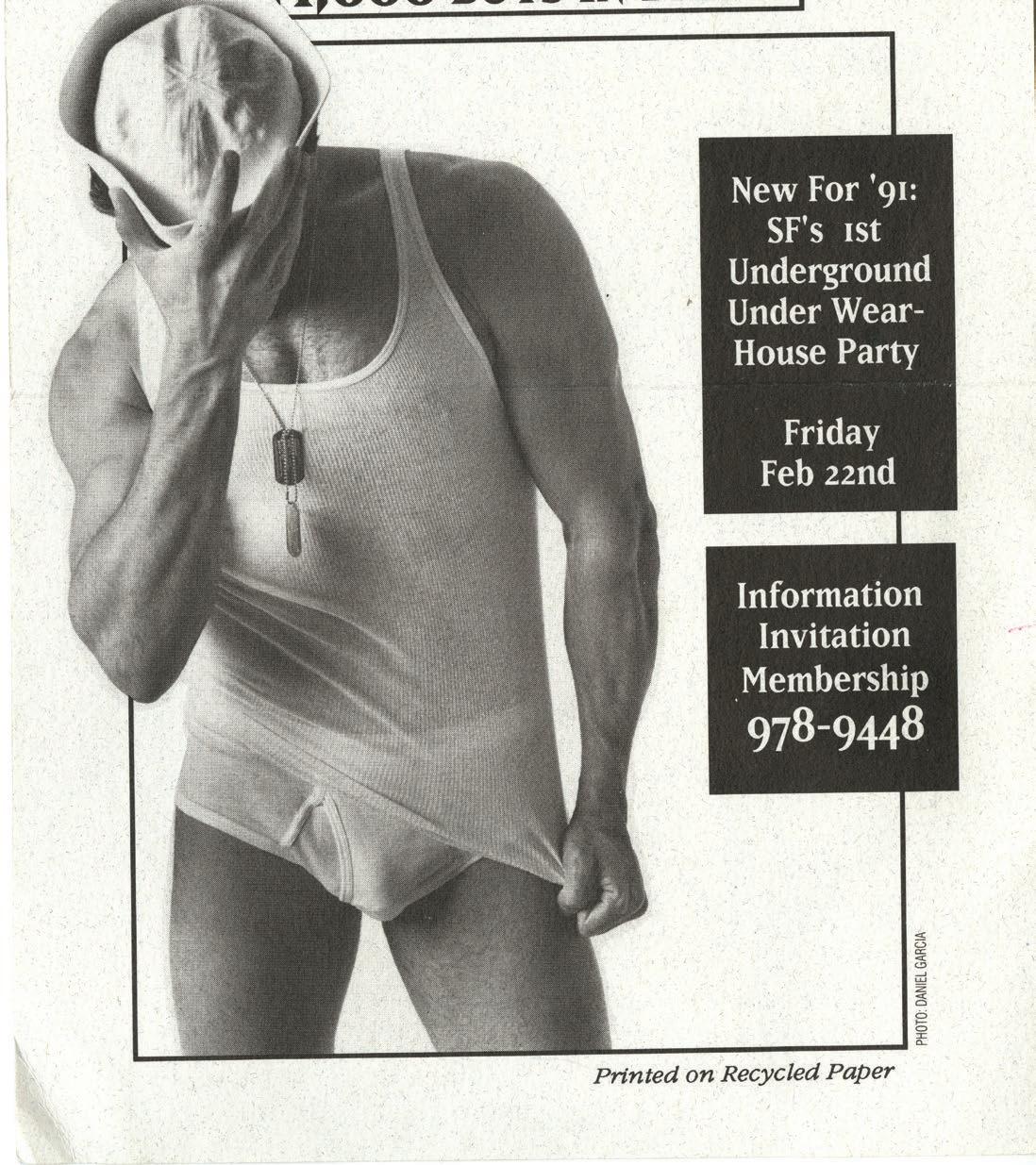
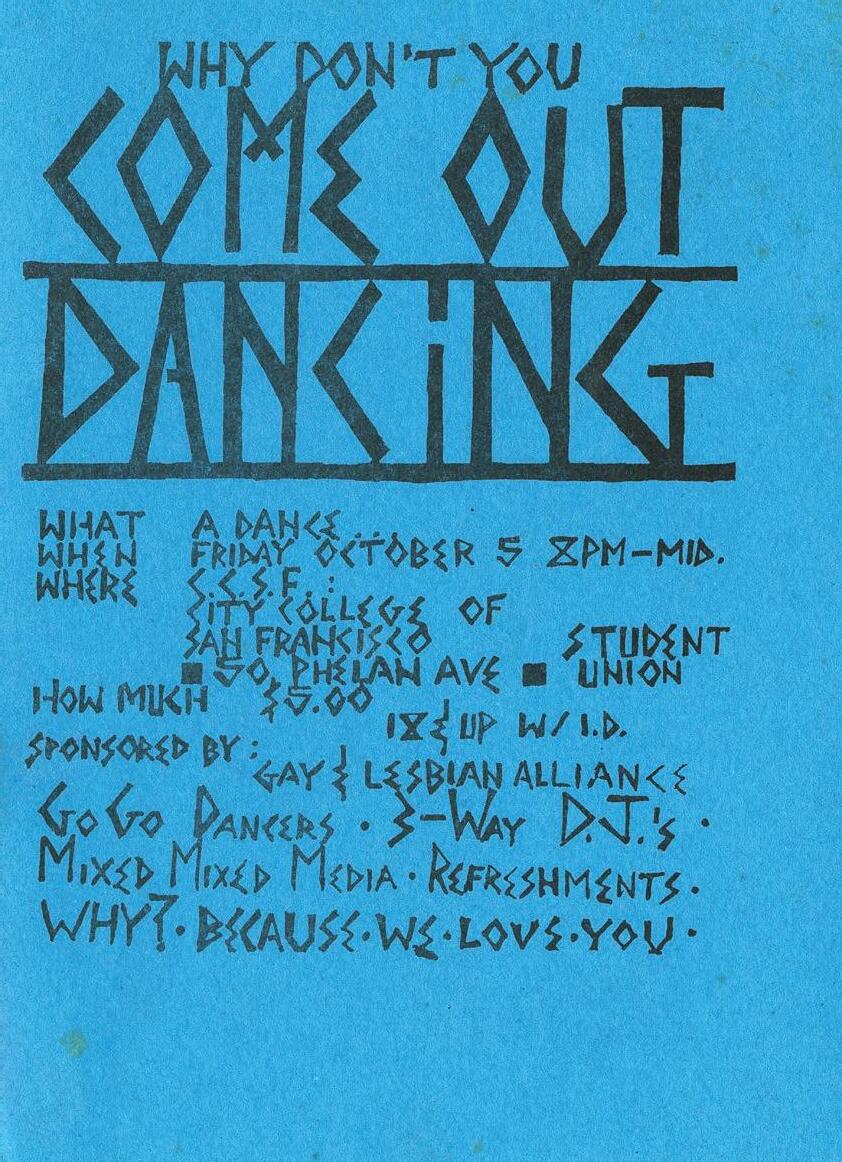
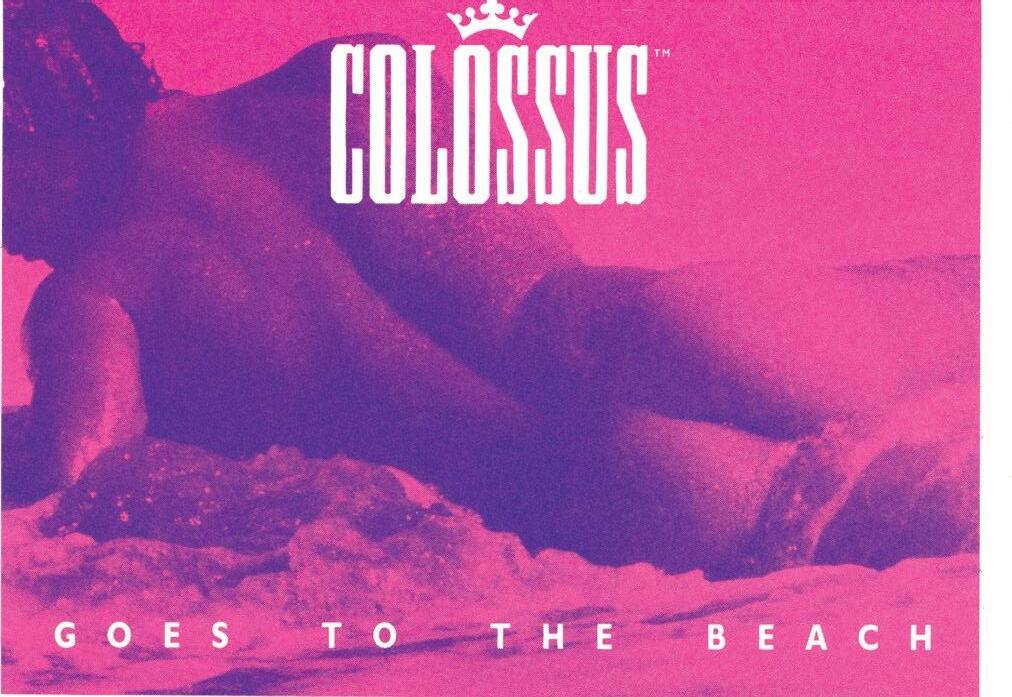
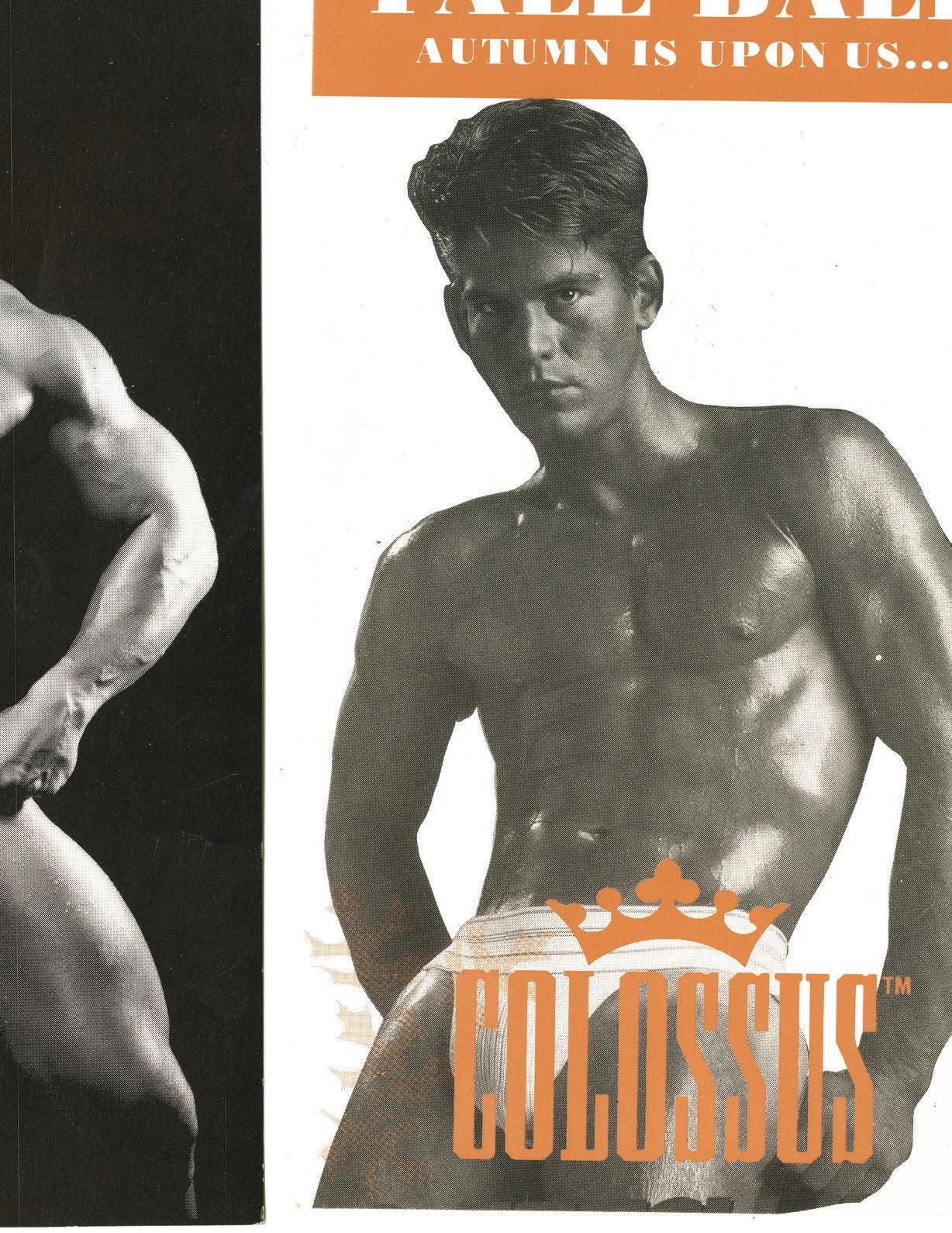
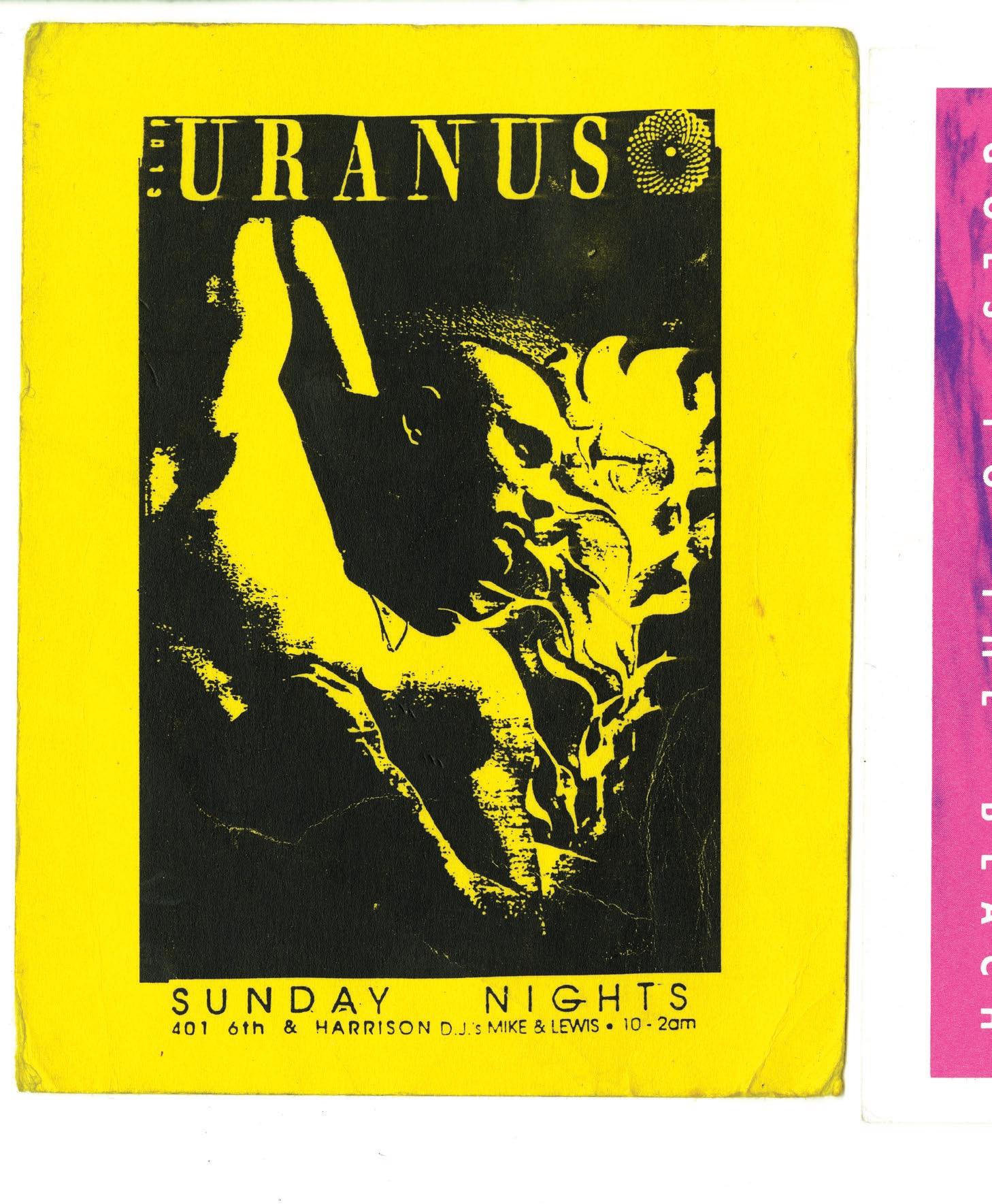
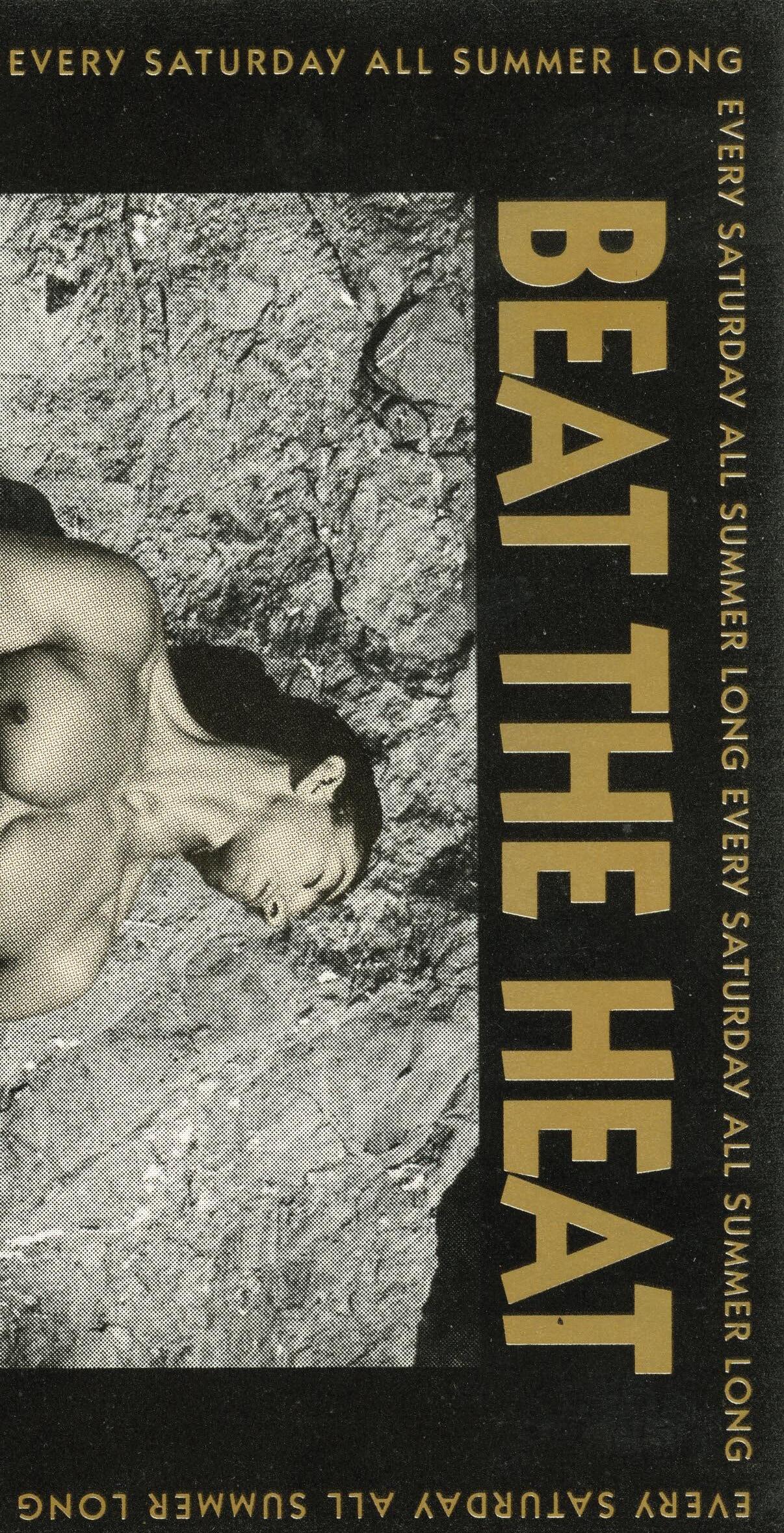
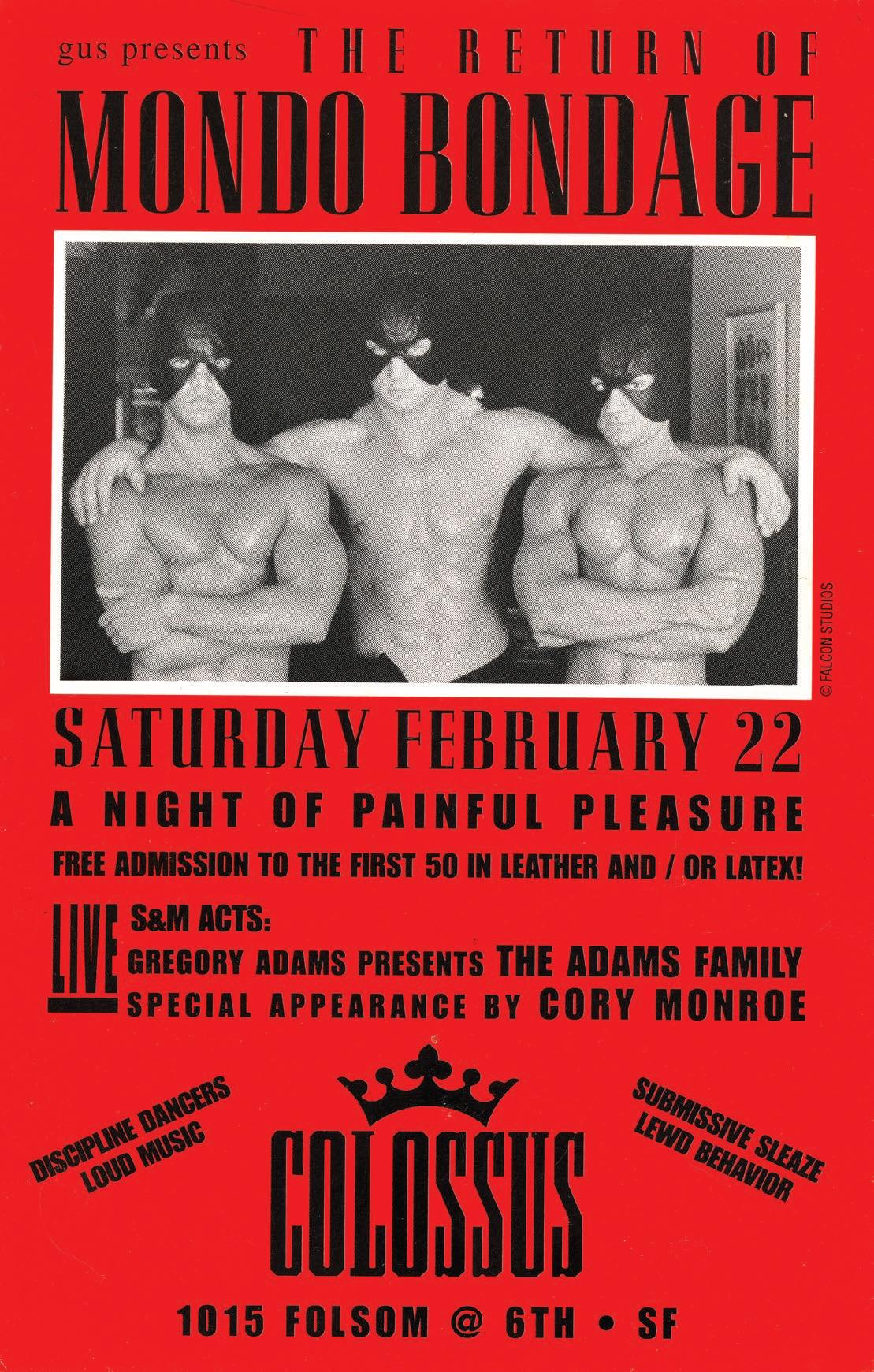
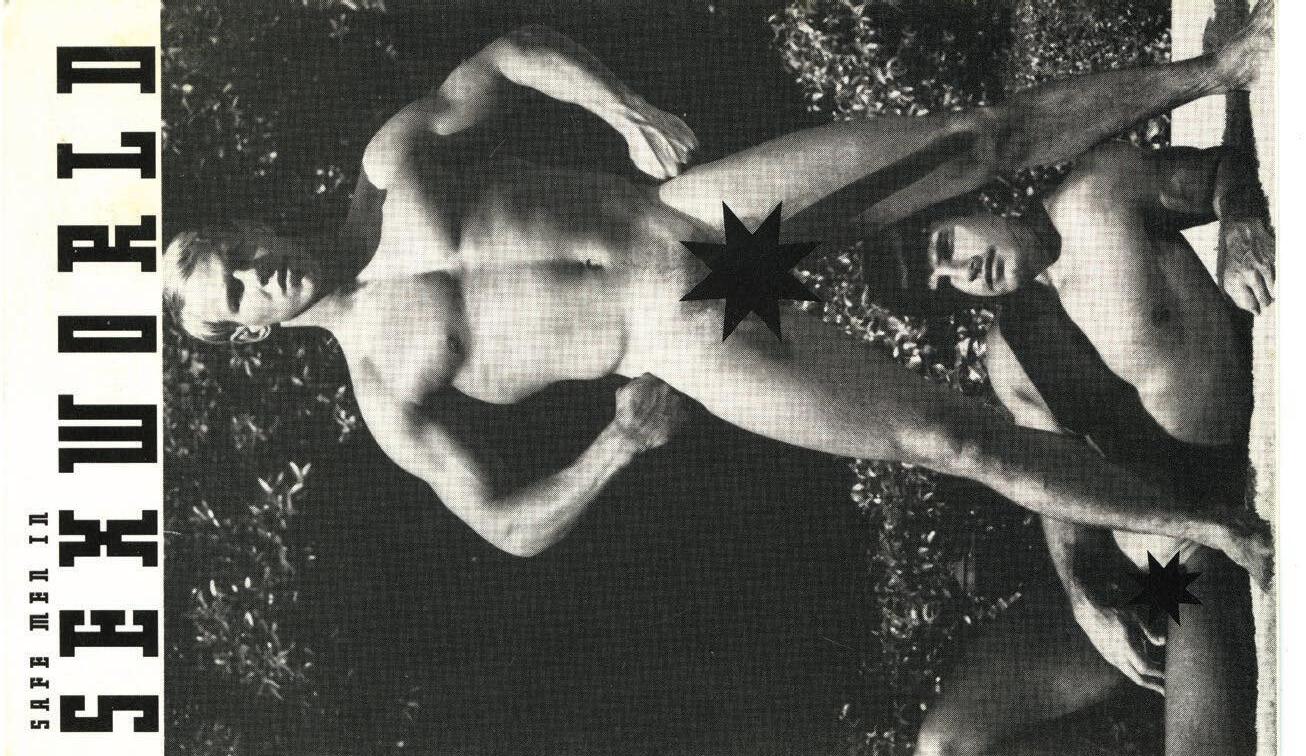
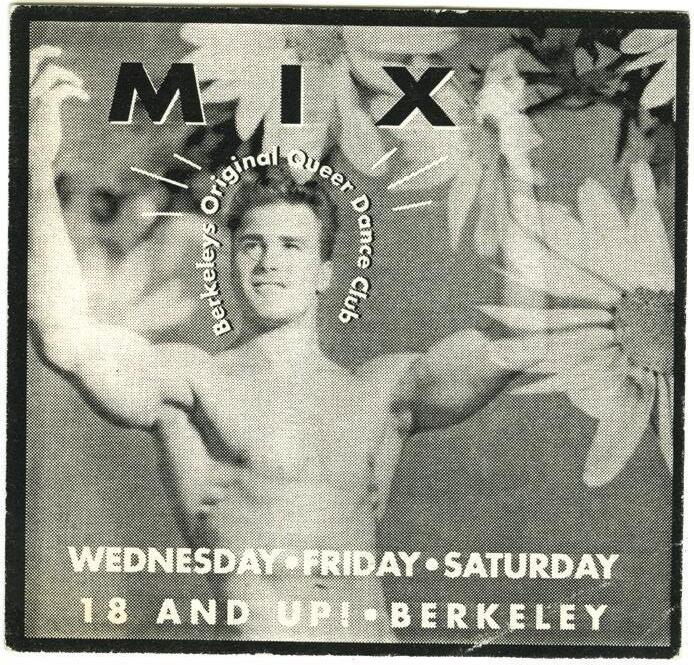
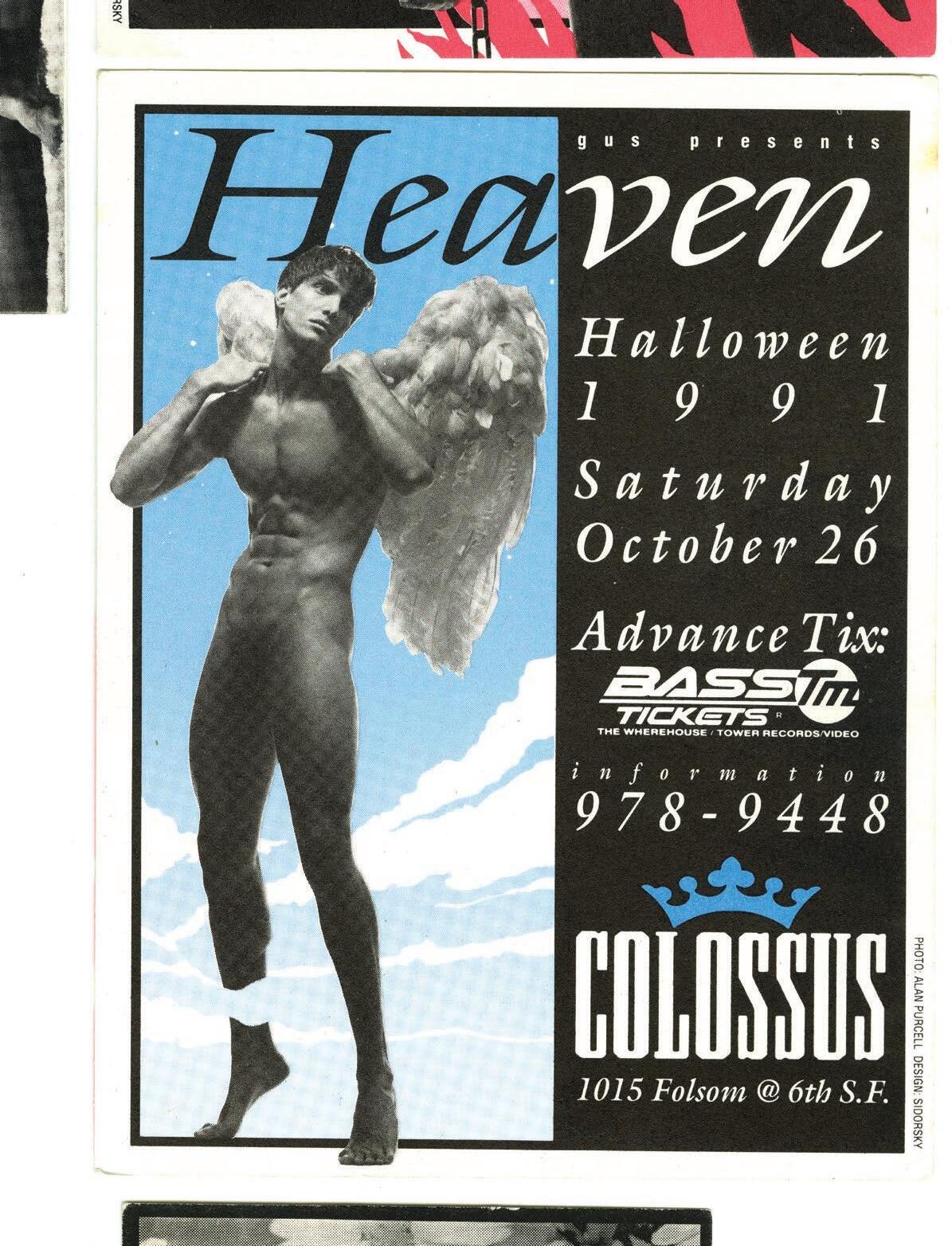
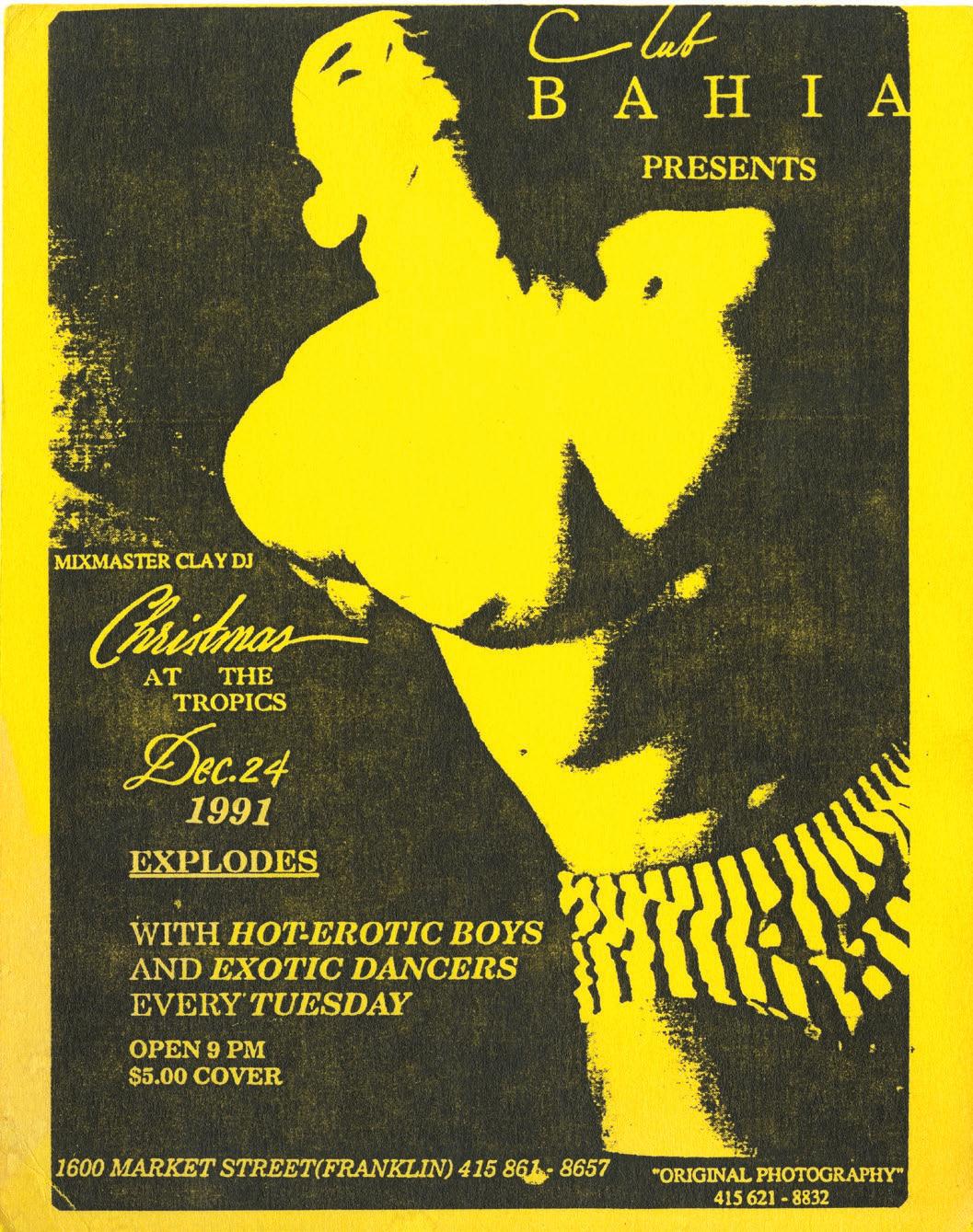
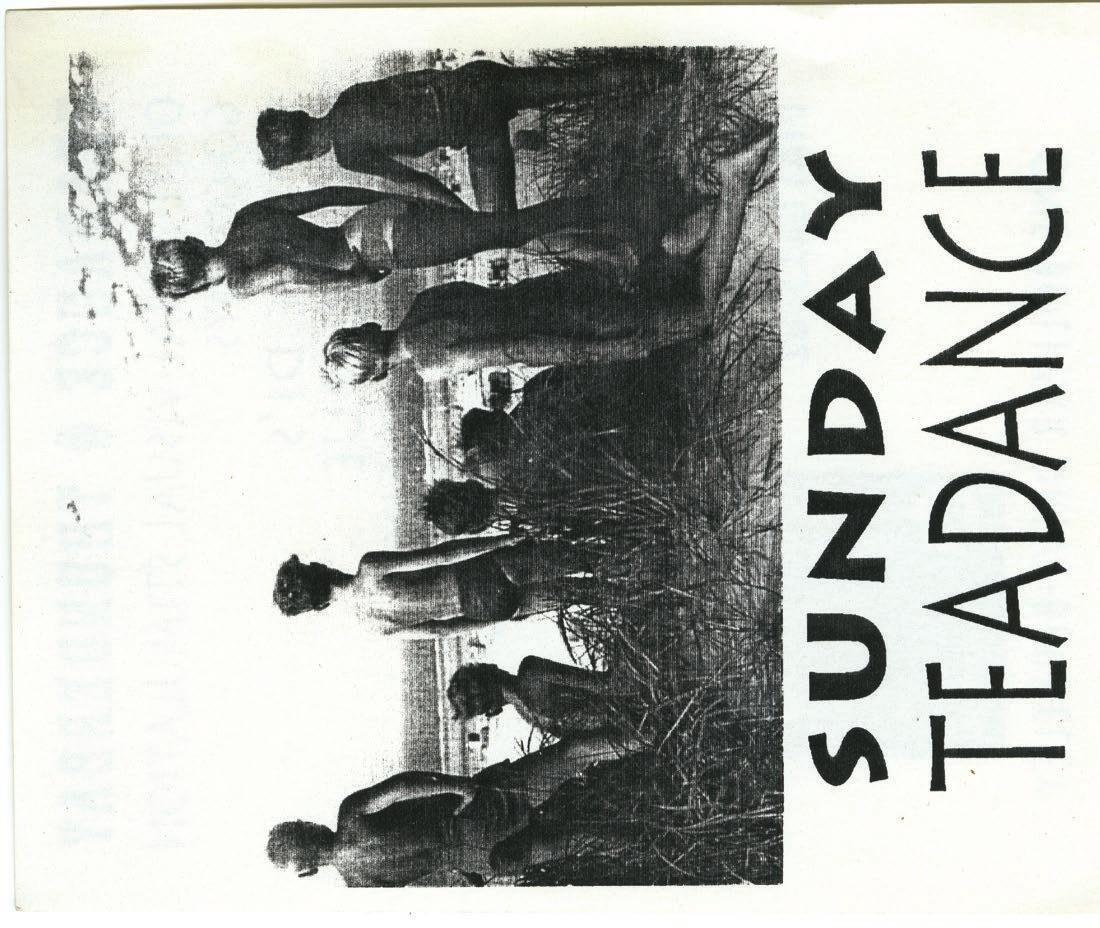
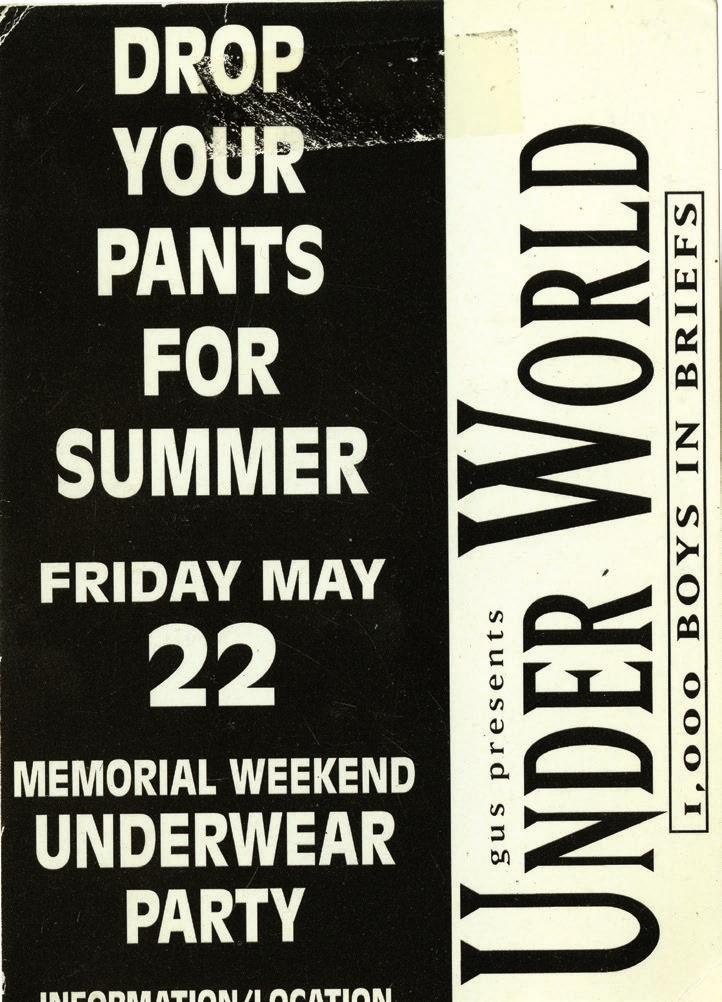
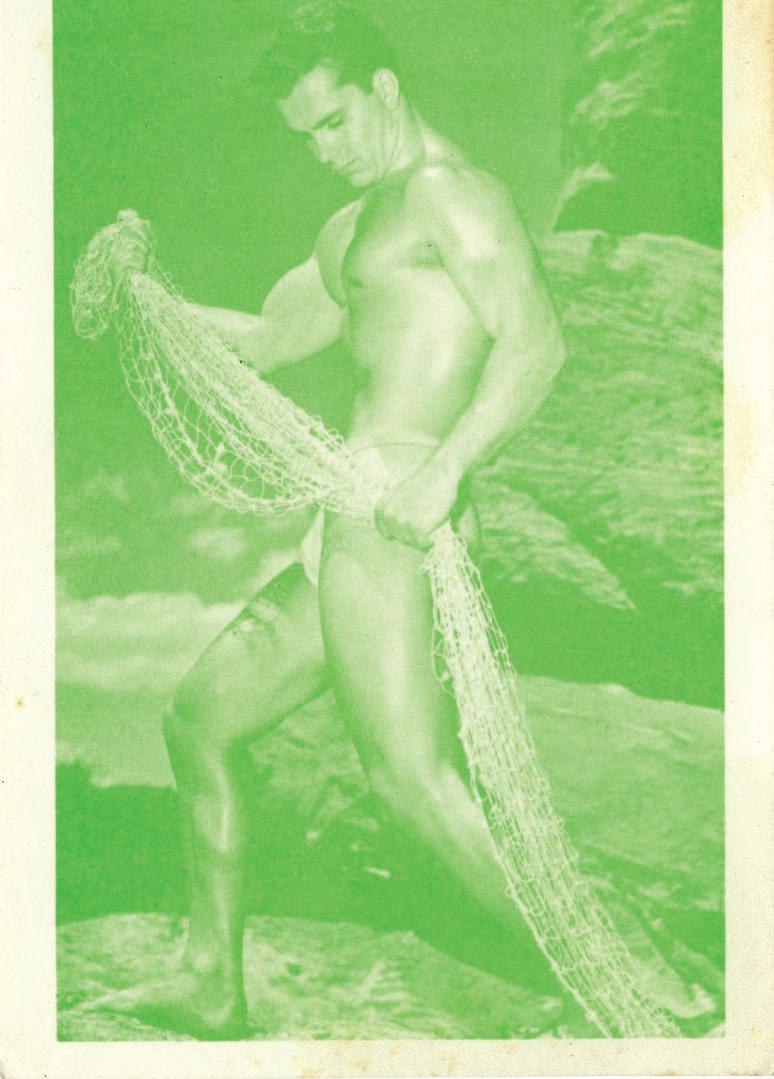
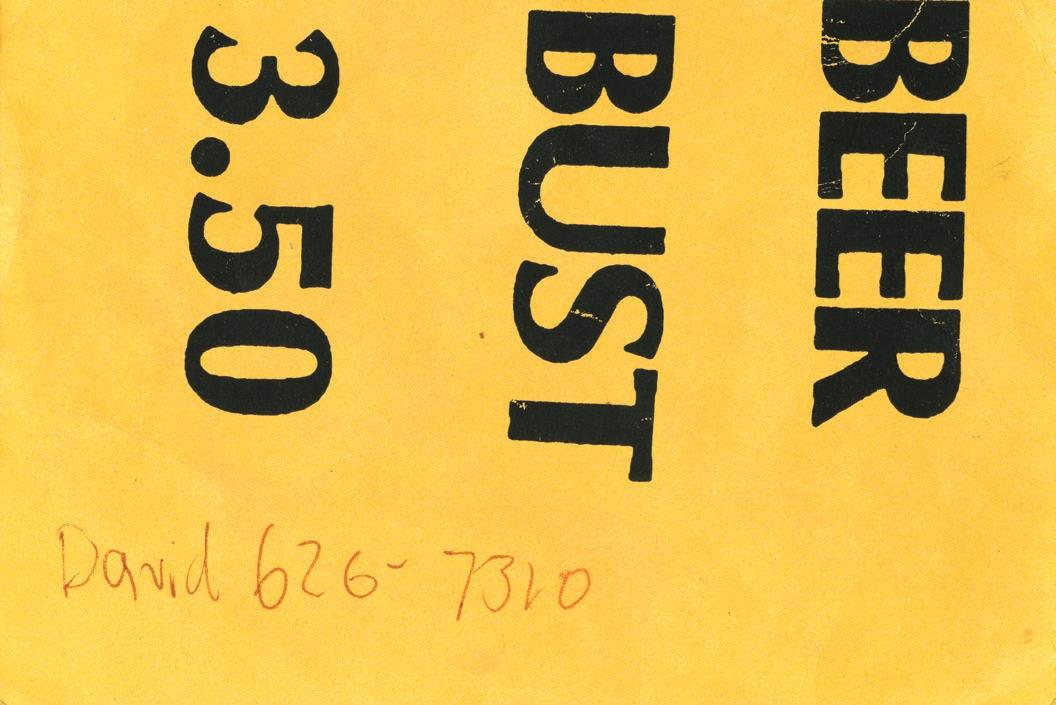


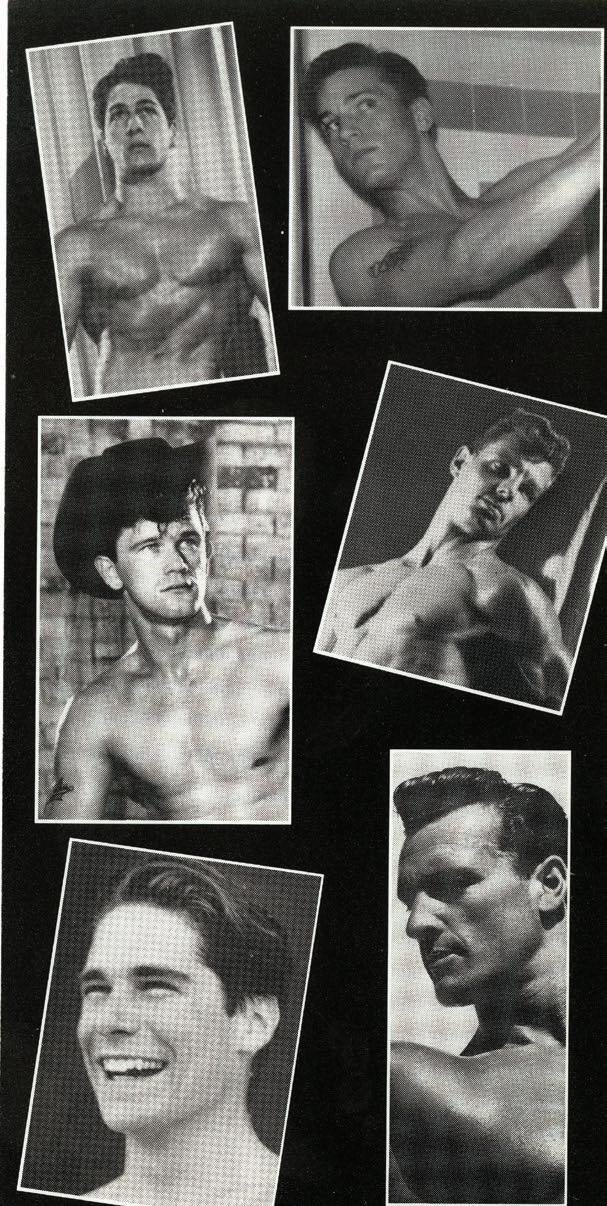
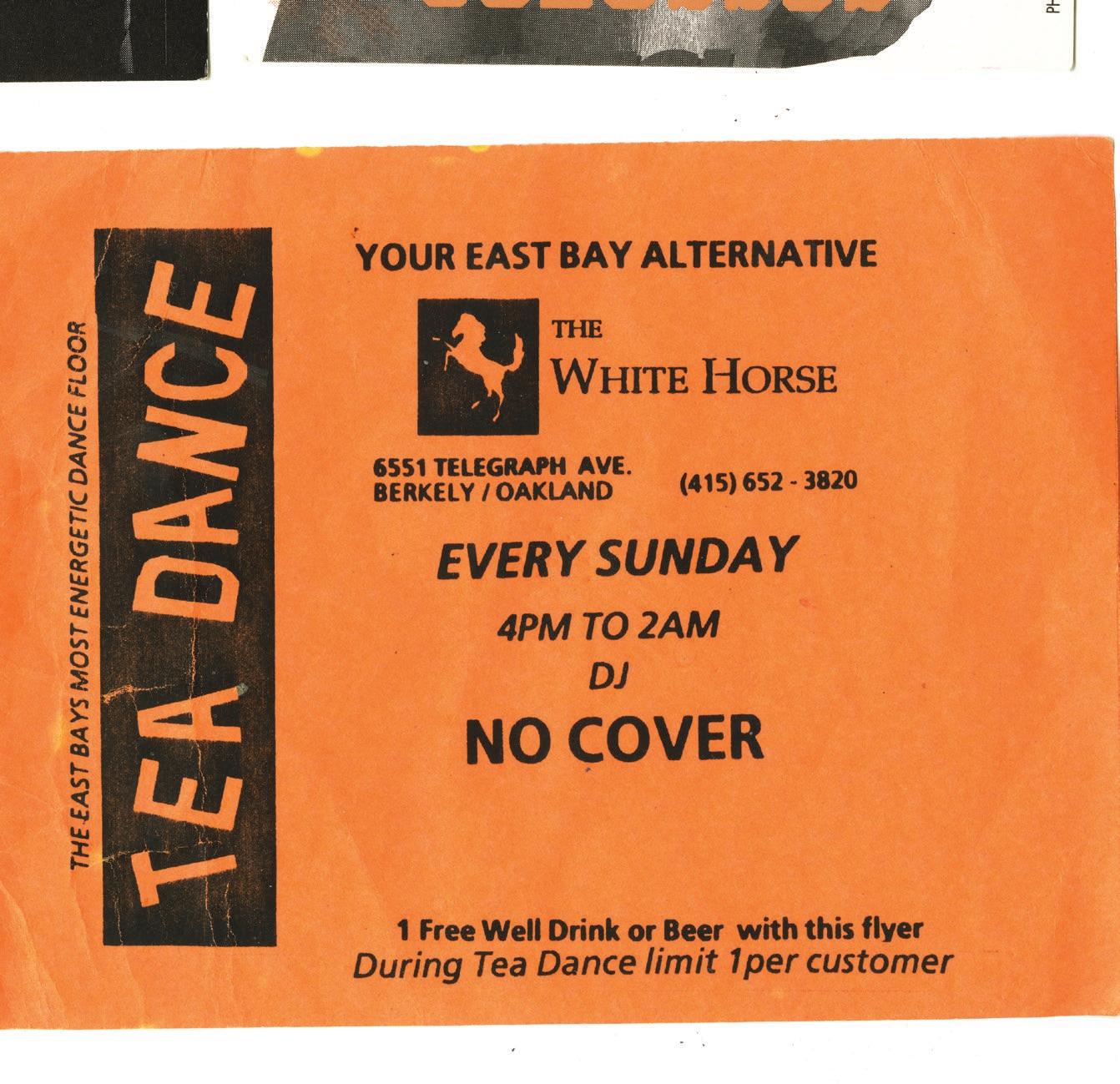
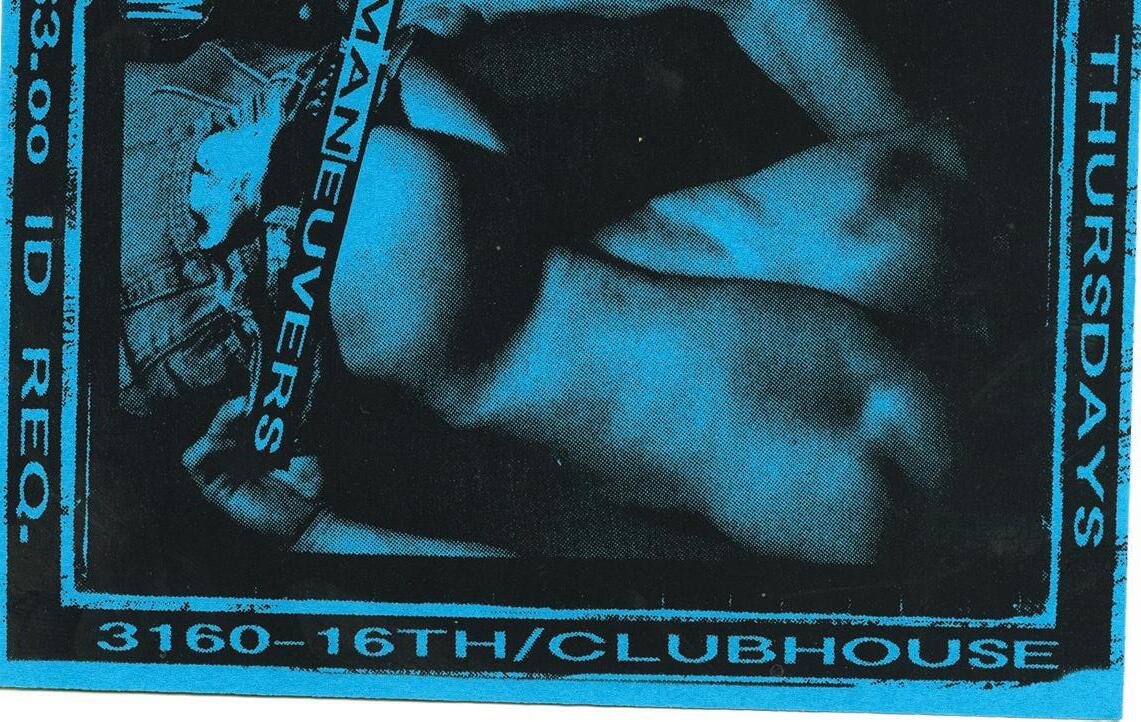
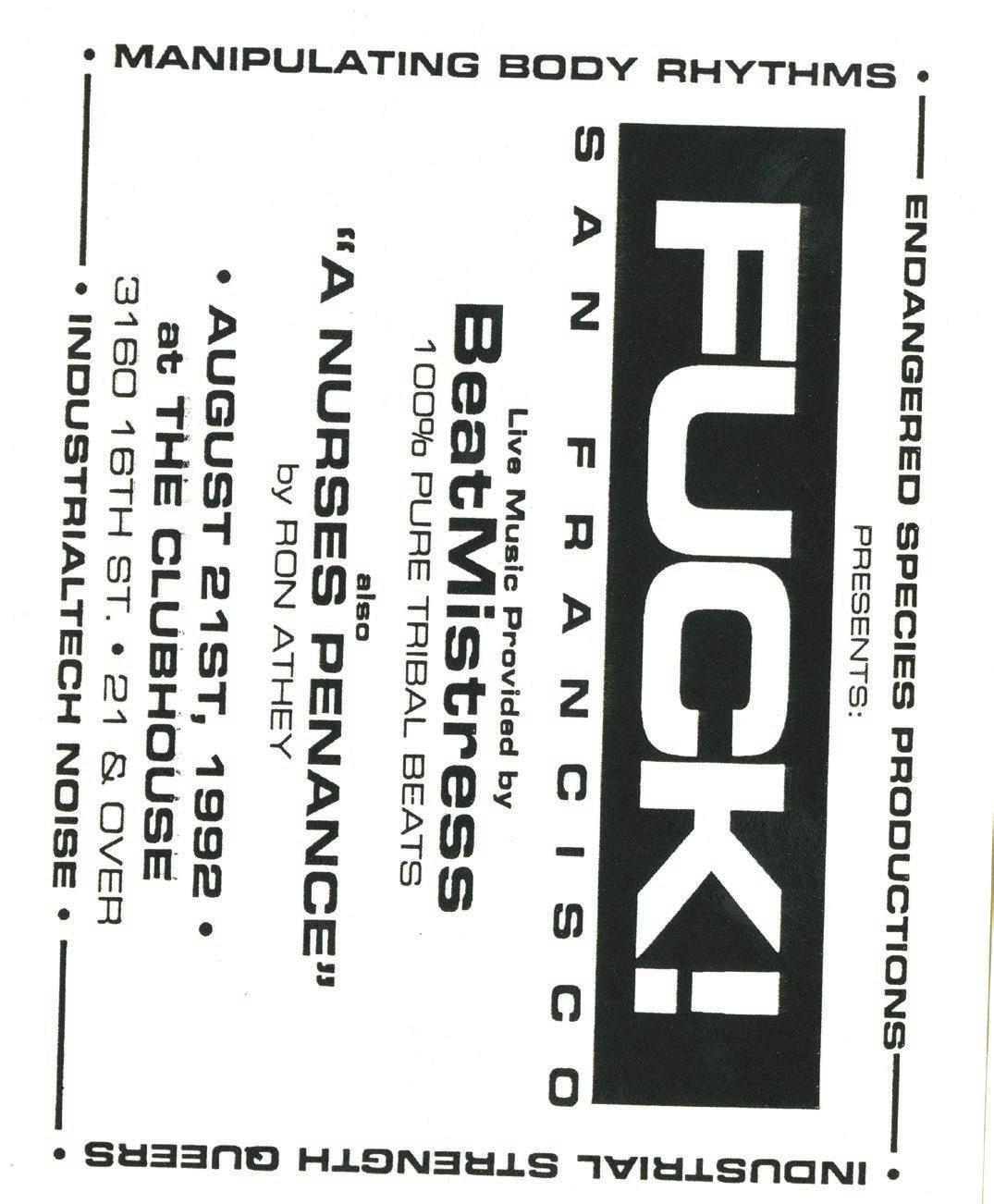
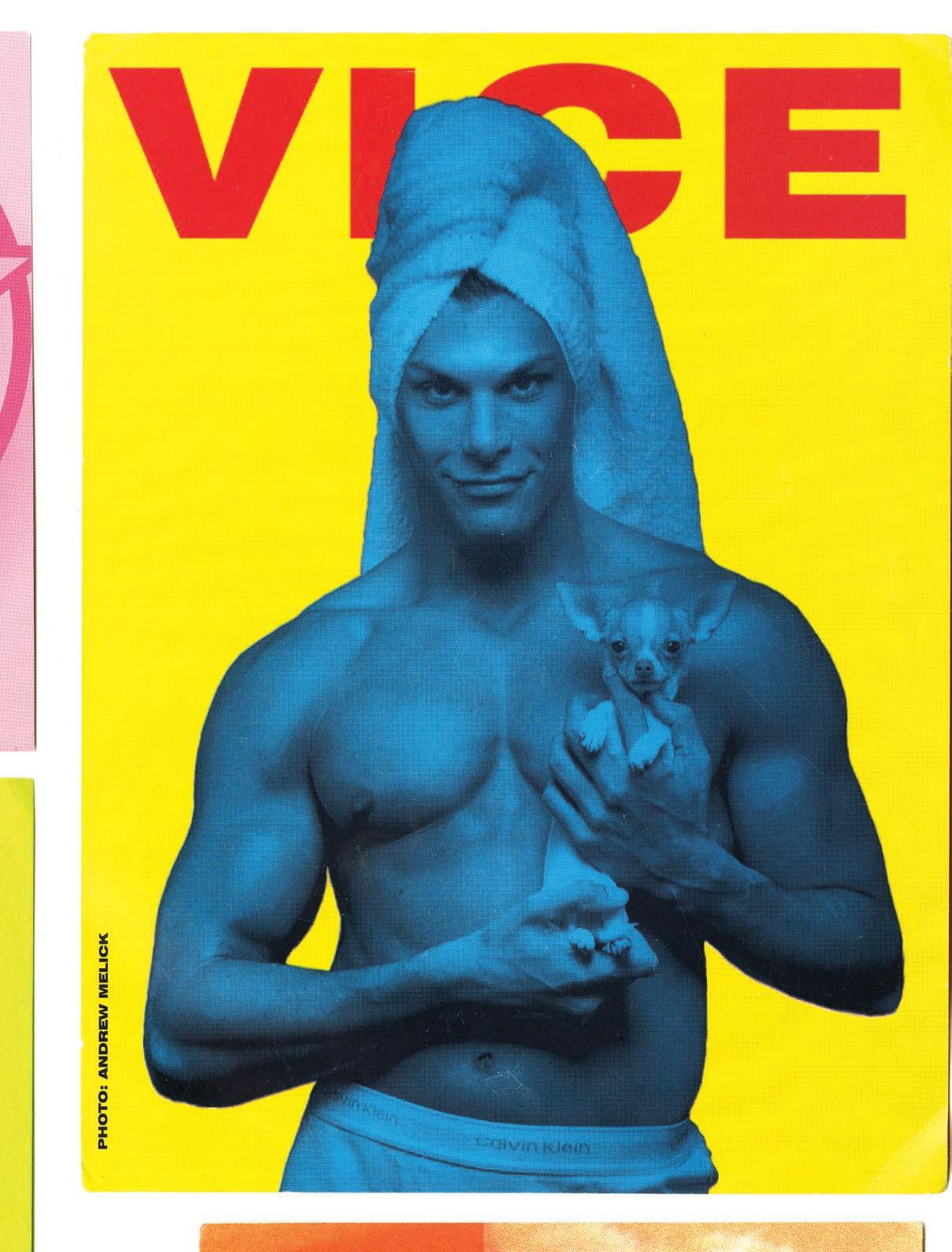
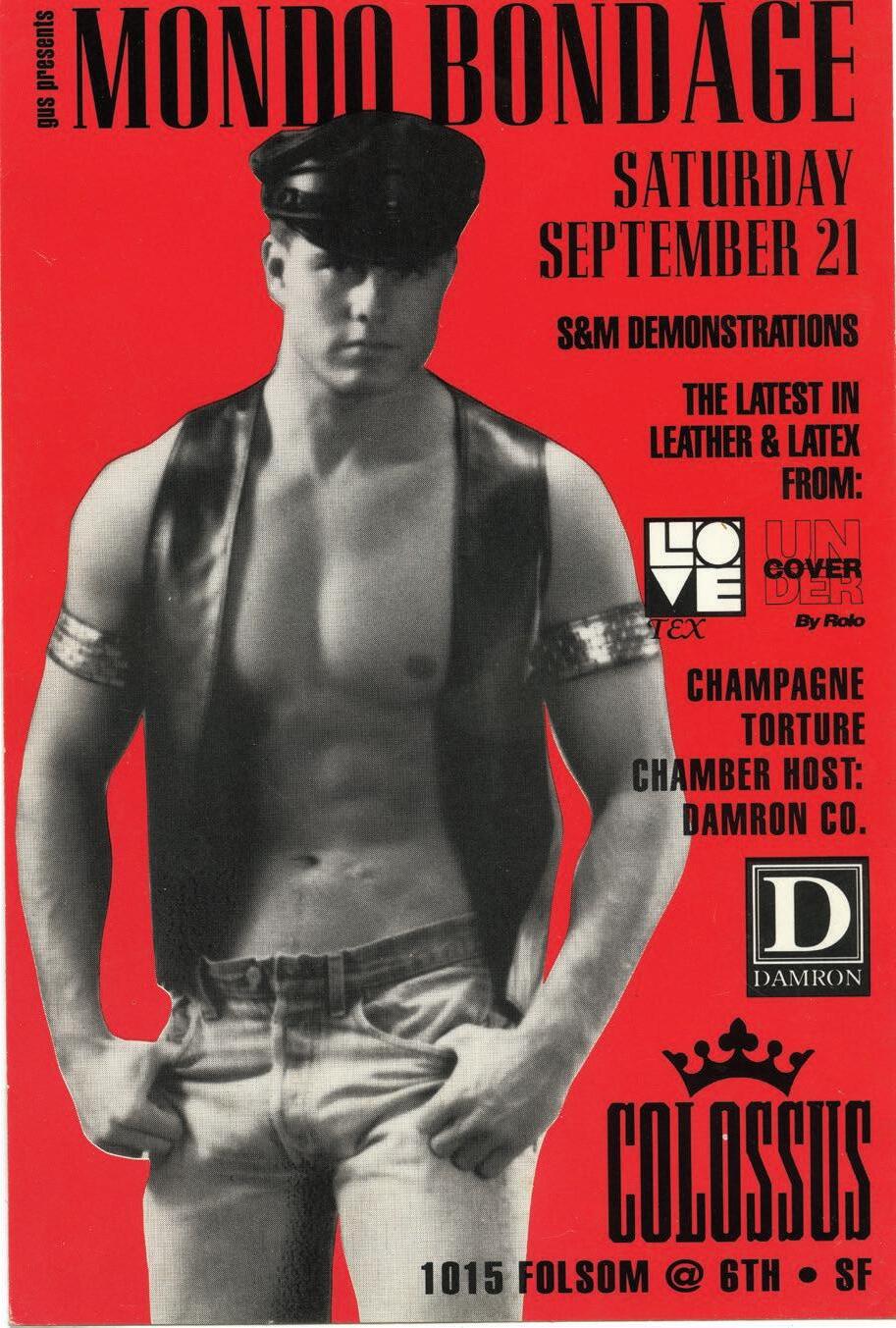
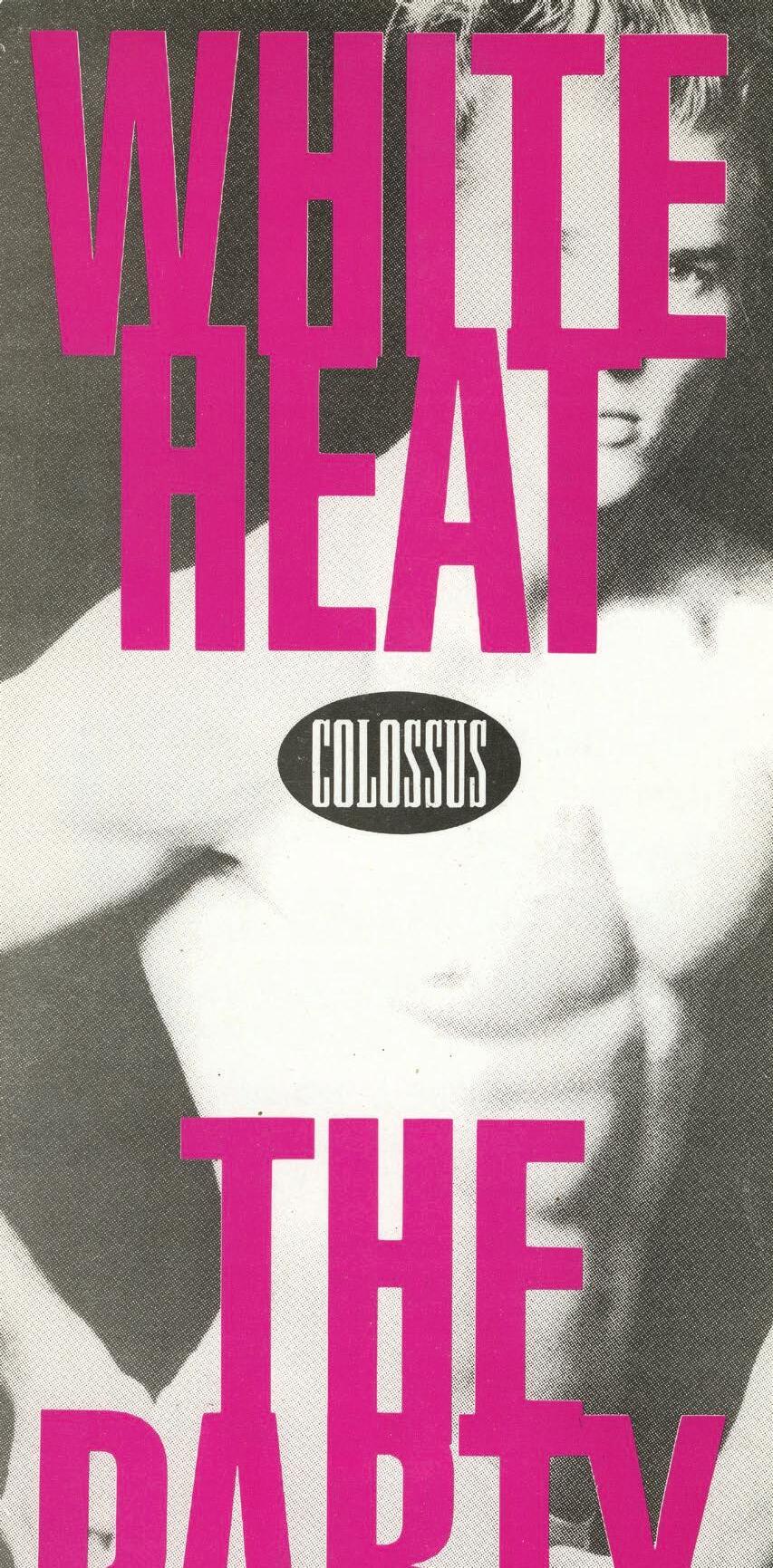
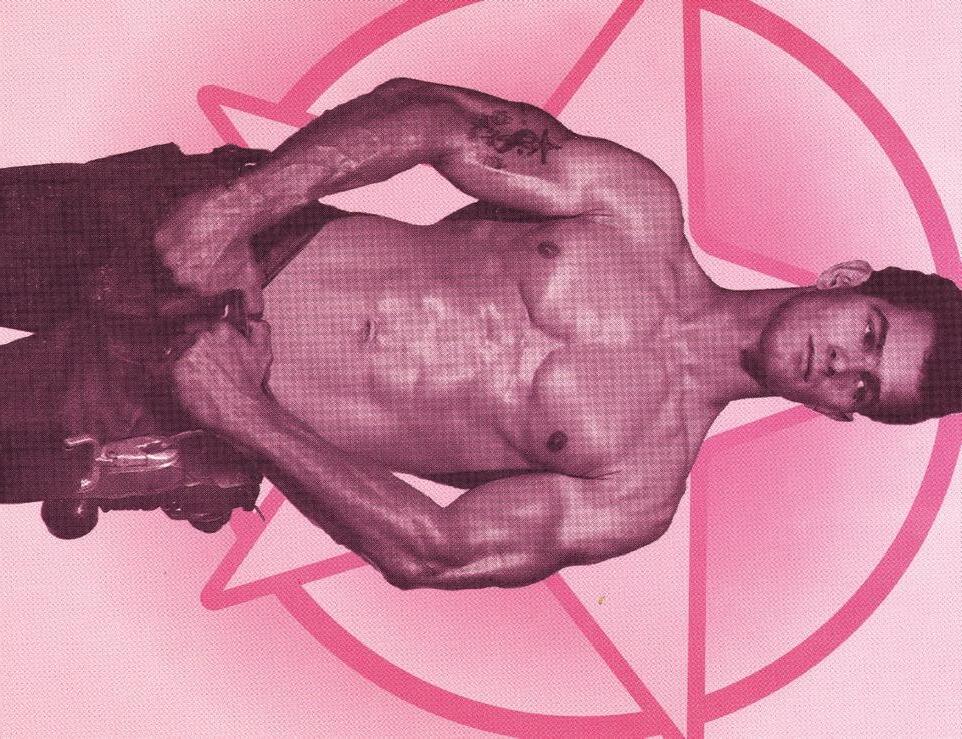
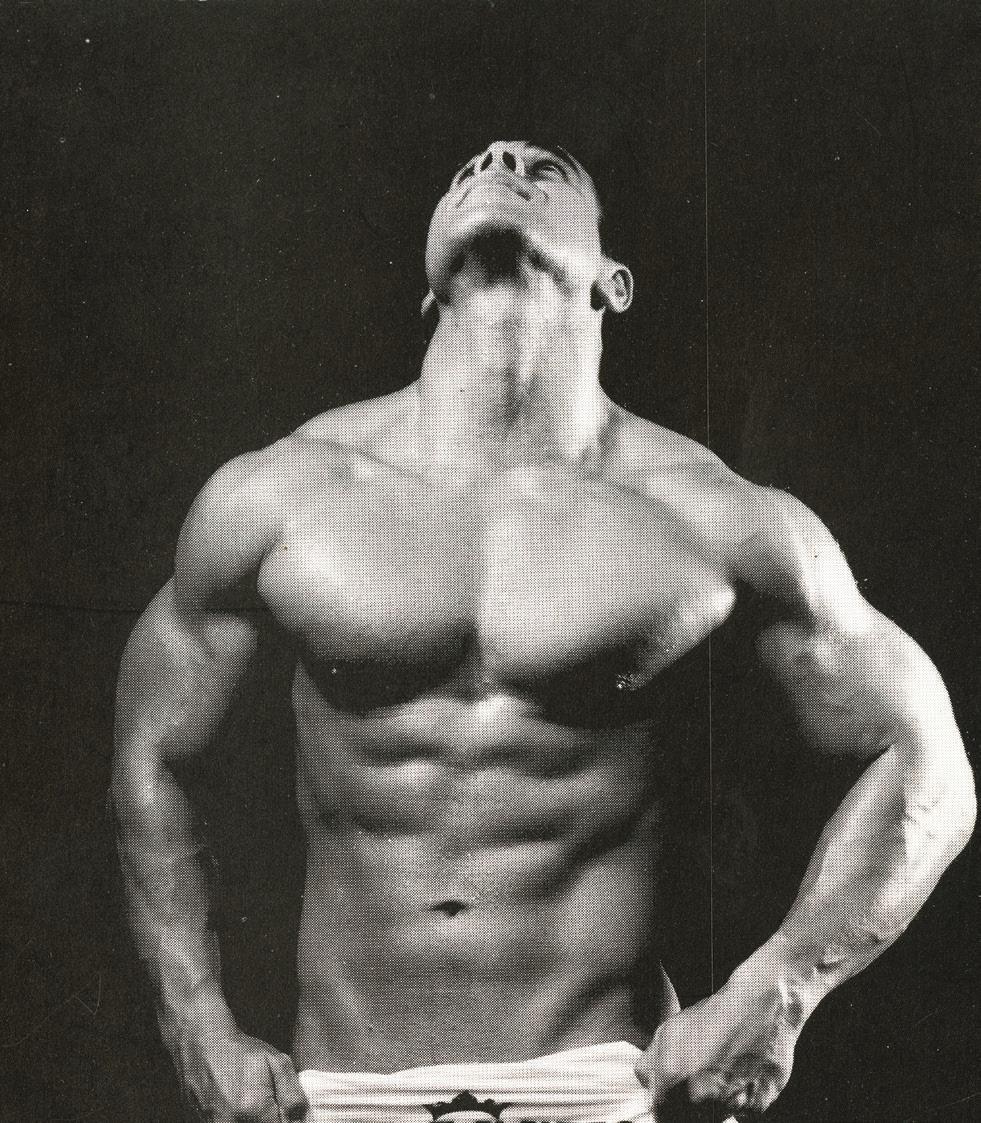
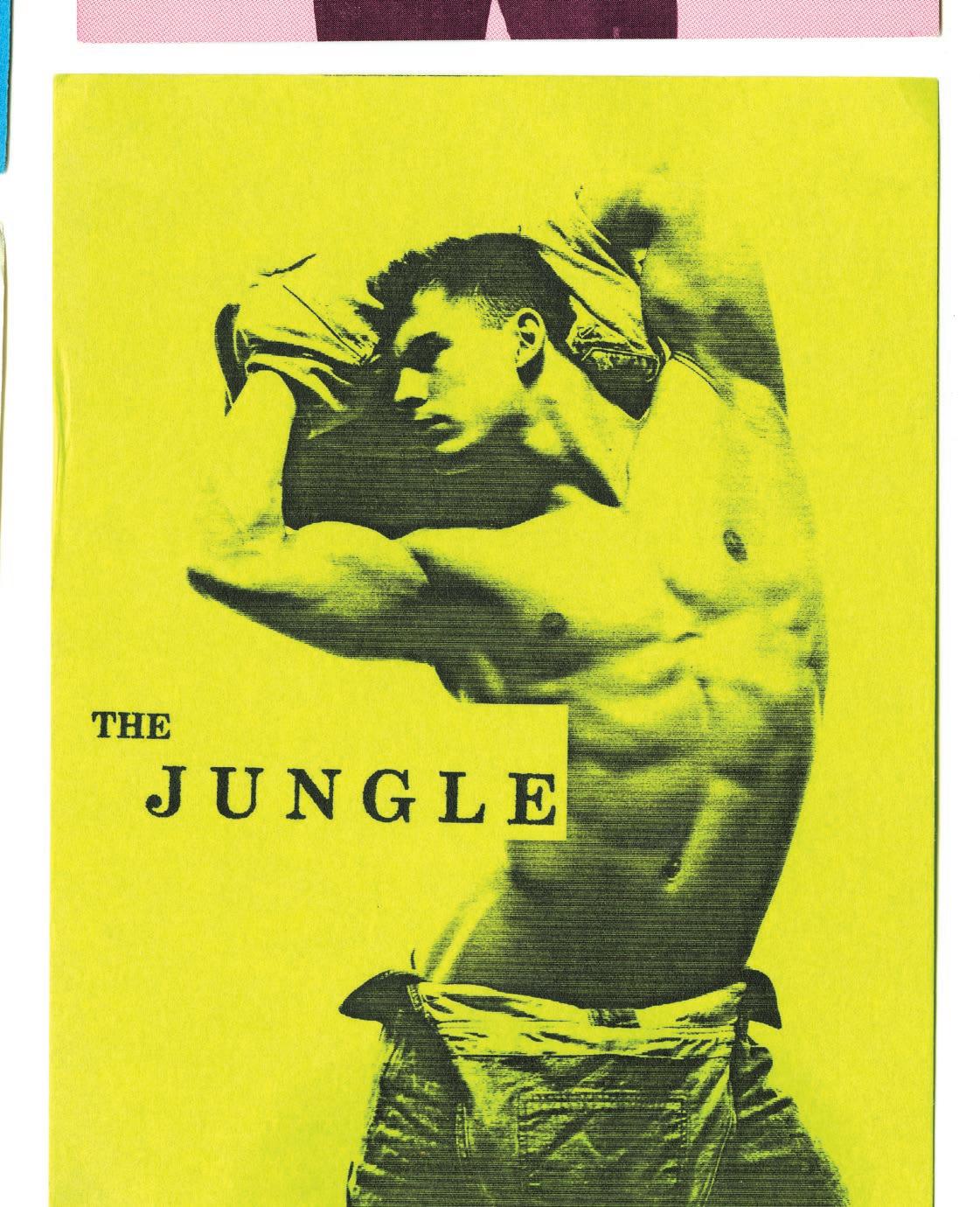
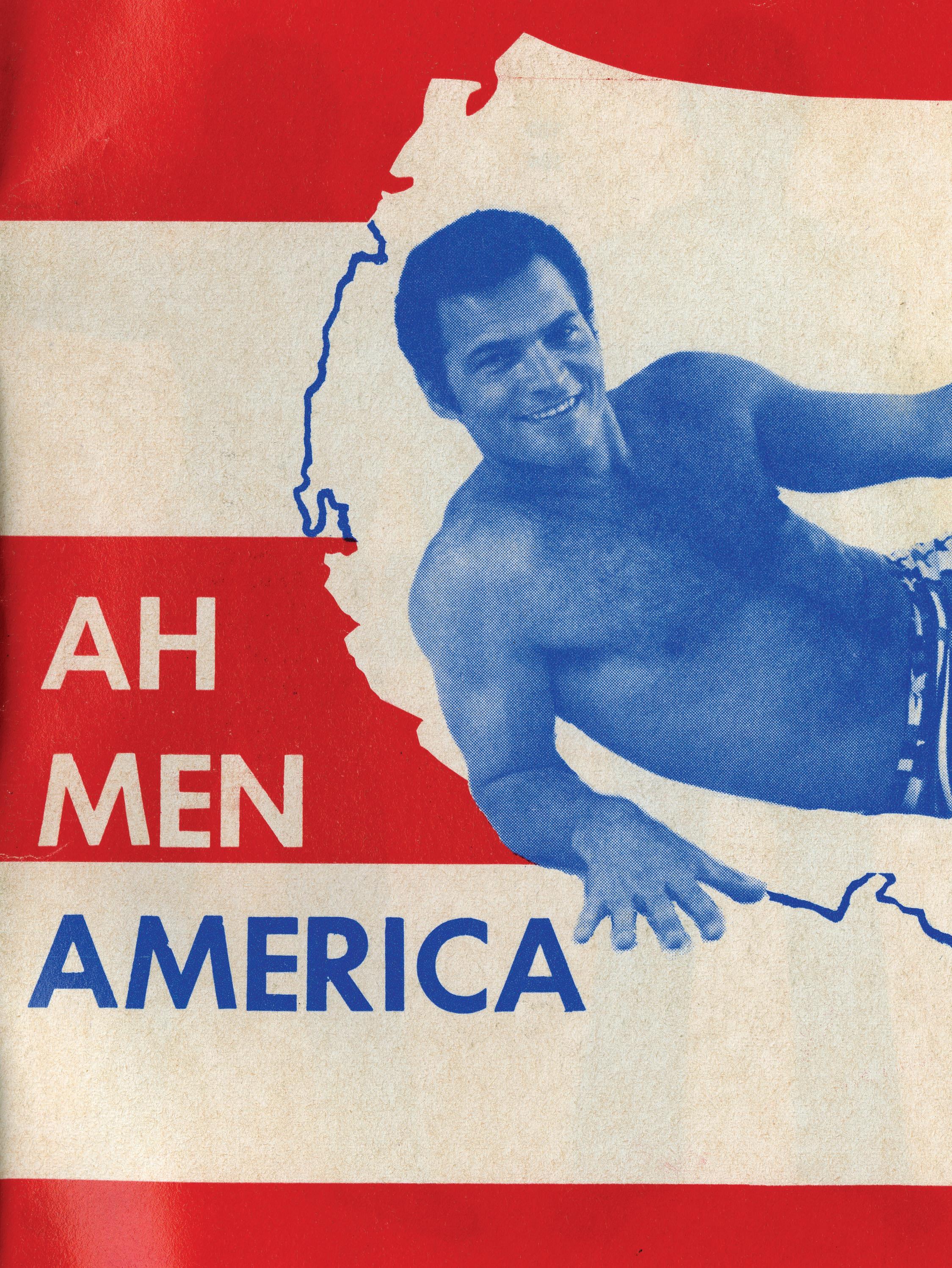
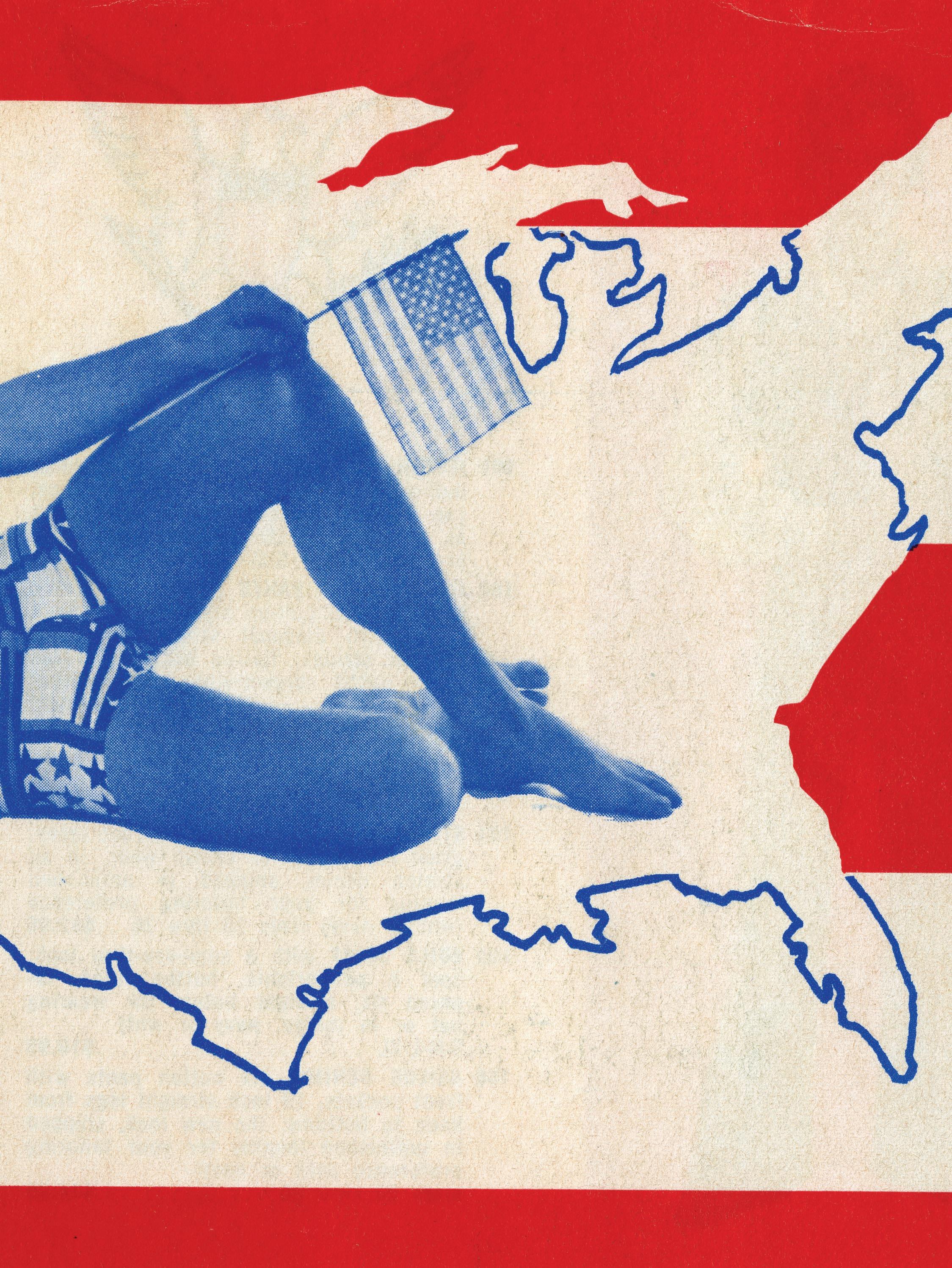
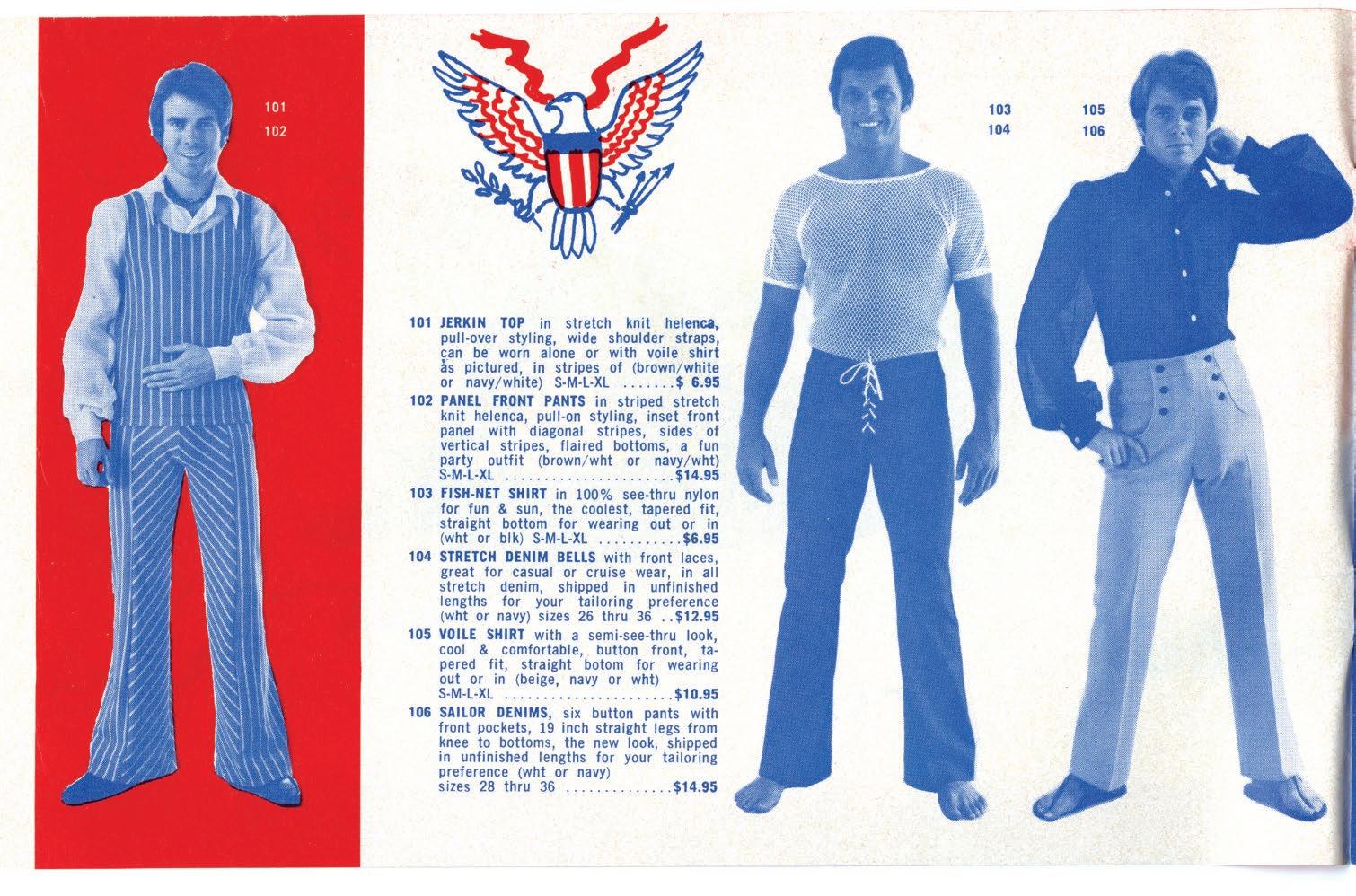
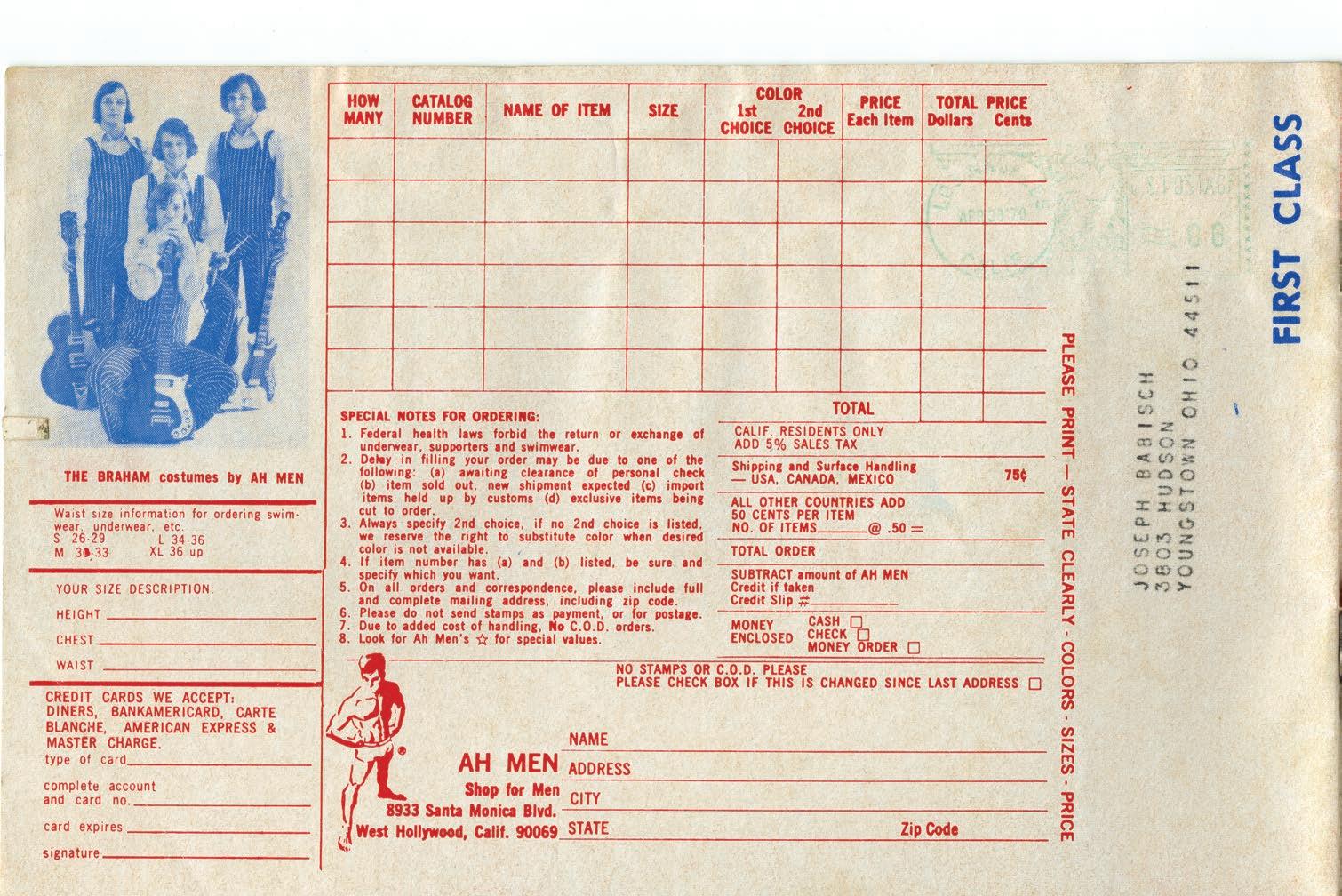
Don Cook and Jerry Furlow were two gay men who felt that no gay man would want to buy the clothes that mainstream men’s apparel outlets sold. They envisioned and eventually opened a shop that would offer their customers the most flamboyant styles: garments made from see-through mesh, form-fitting swimwear, erotic underwear, and flowing caftans. AH MEN helped aspiring gay men to lead fully open and unapologetically sexual lives at a time when no one else was making such an offer.
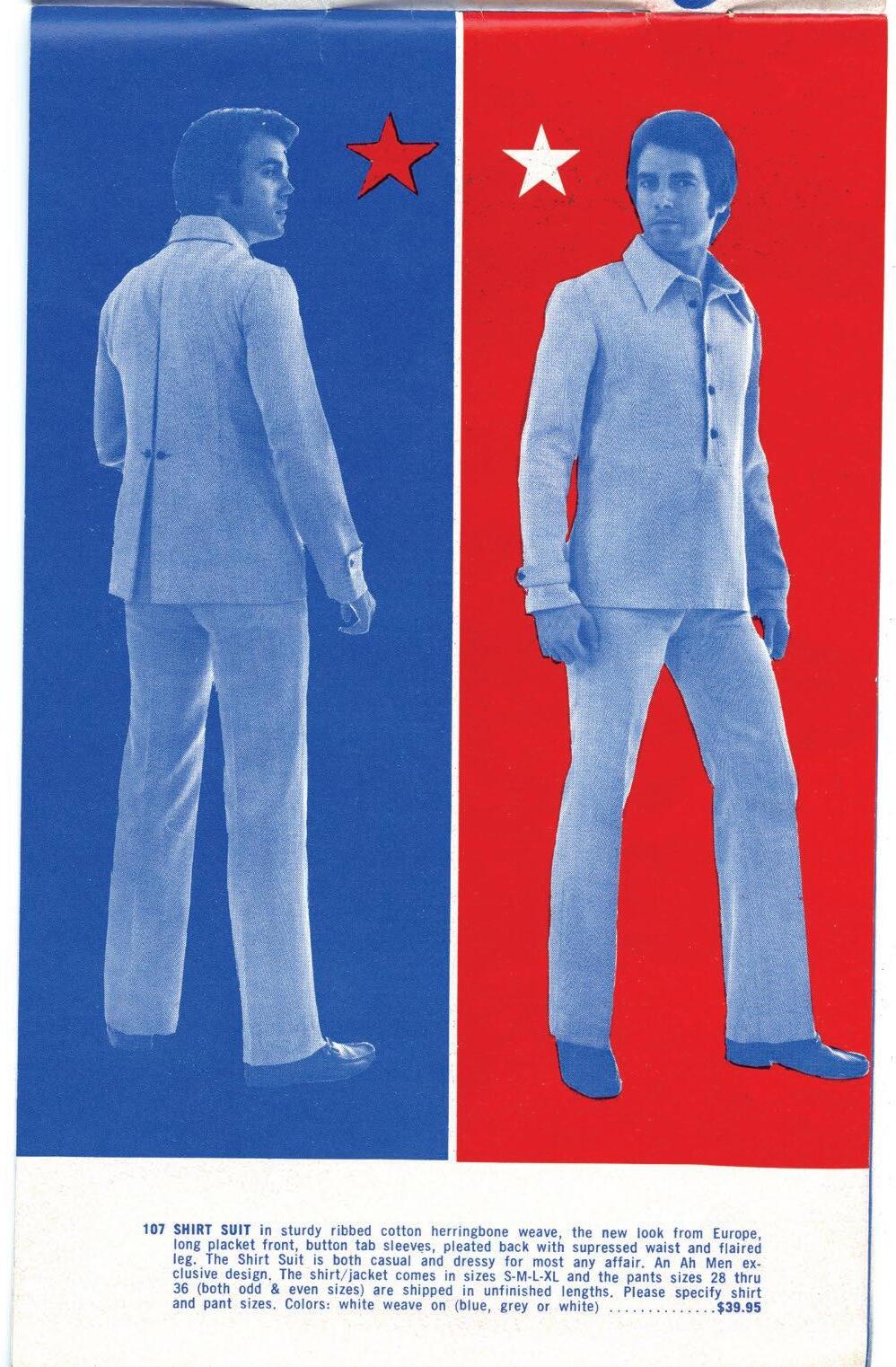
AH MEN is considered to be one of the earliest retail establishments to openly court gay customers, and to serve as an unofficial gathering spot and community center at a time when such spaces were situated mostly underground or on the margins of society.
AH MEN also operated one of the first gay mail-order businesses, which it advertised in physique magazines and other gay-interest publications. Although all of this seems a bit funny to us today, young gay men of the ’60s and ’70s would have been enthralled that someone was finally showing them a life they could aspire to.
AH MEN closed in the early ’80s as the gay male lifestyle had inched closer to the mainstream in the decade following Stonewall. AH MEN’s status as the only store that understood the gay male customer was no longer assured. In the end, increased visibility for gay folks, as well as increasing attention from corporations courting the so-called pink dollar, rendered AH MEN obsolete.
INTERNATIONAL MALE catalog, for many closeted gay men of the 1980s and ’90s, served as a sort of gateway drug to queerness. IM filled every catalog with some of the hottest fitness models (and even porn stars) of the day.
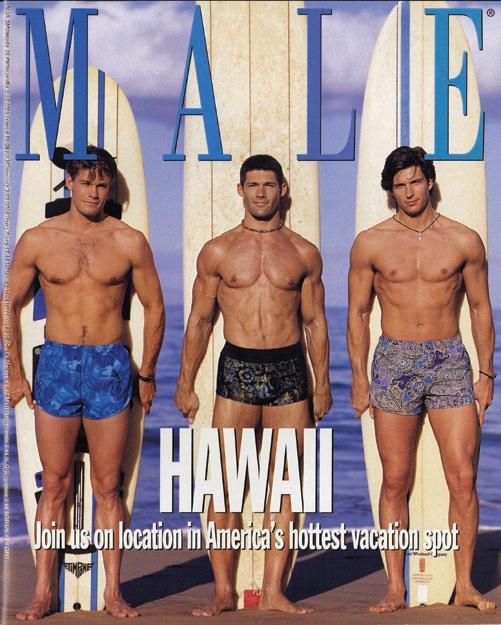
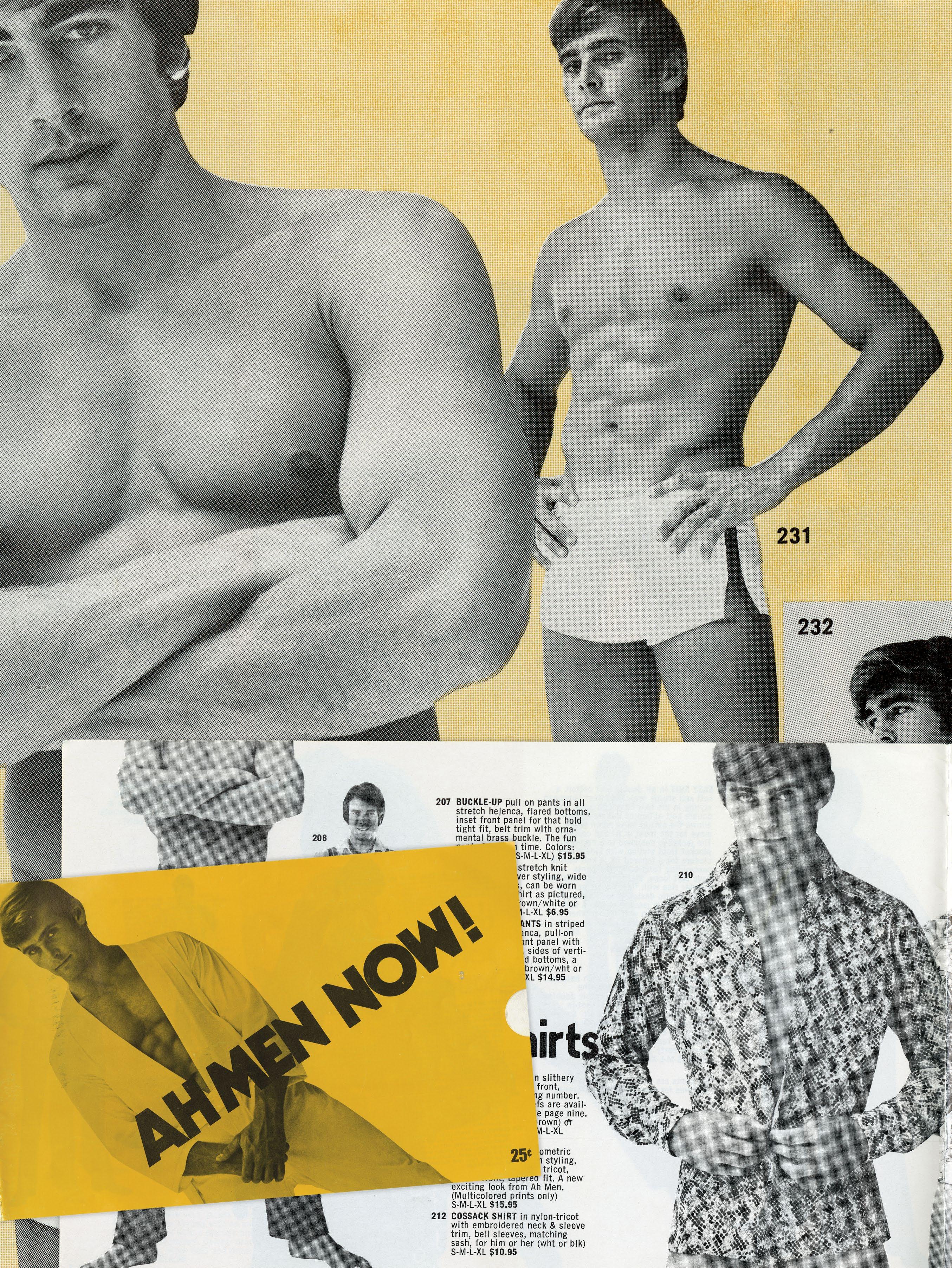

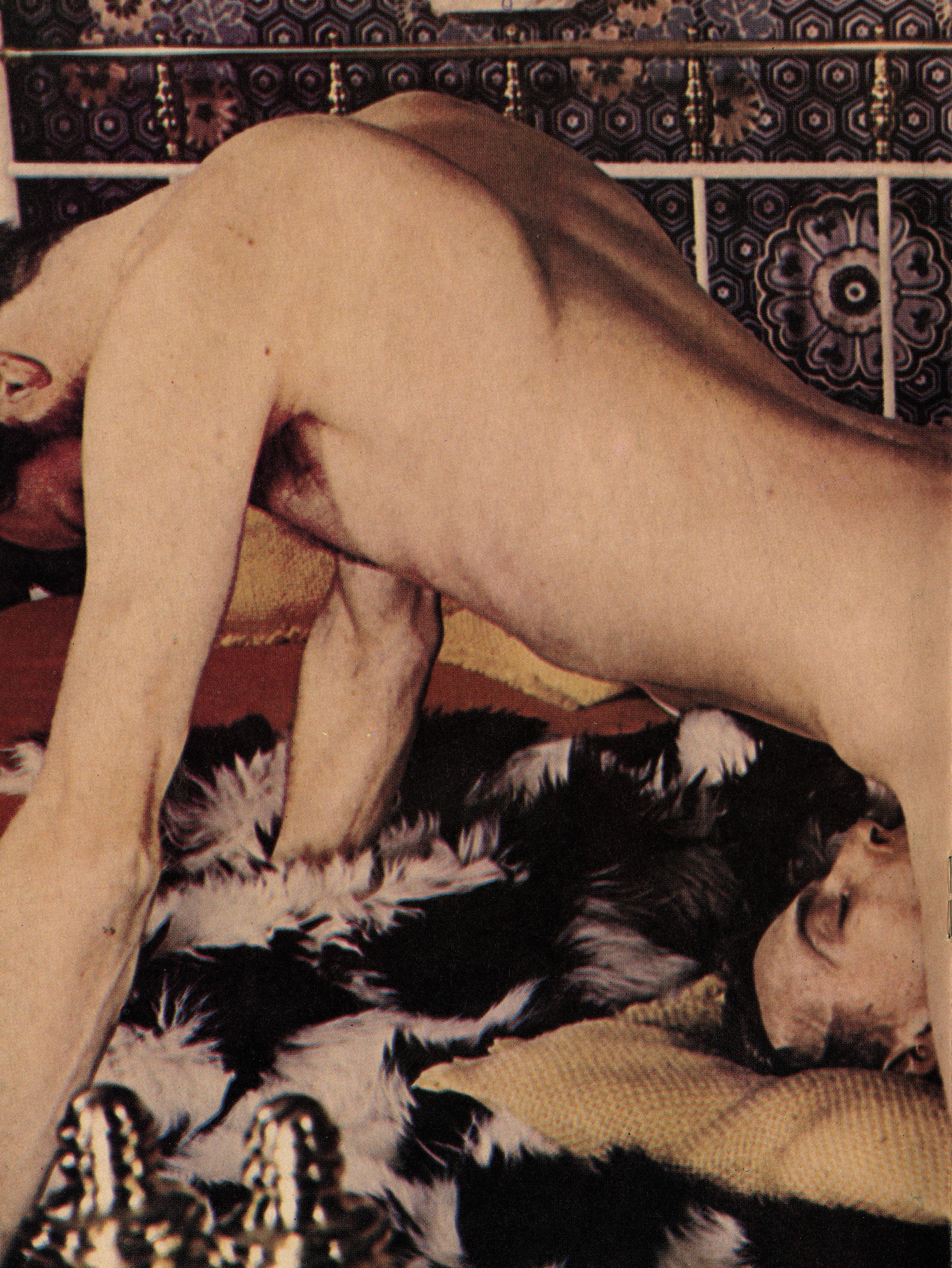
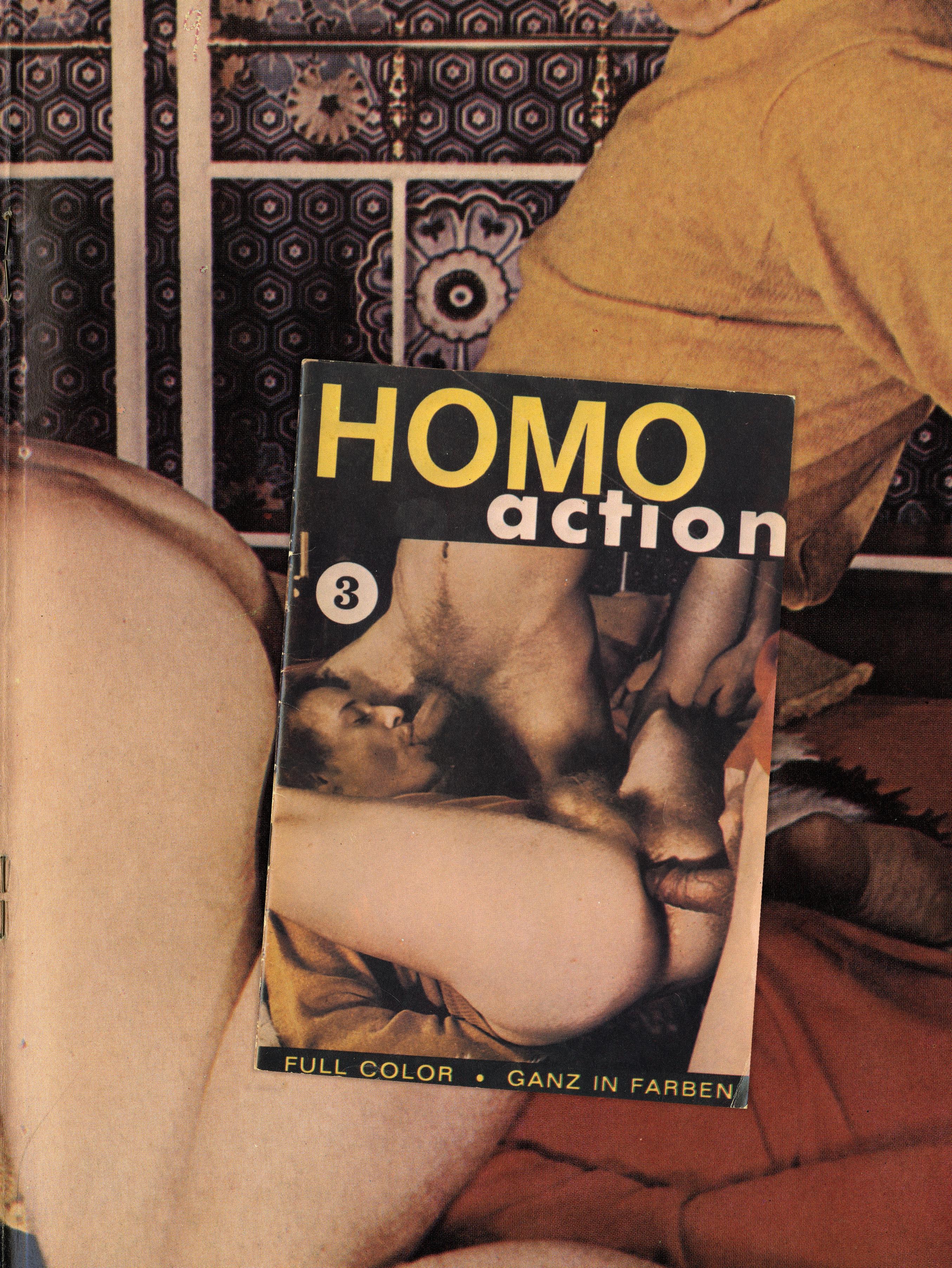
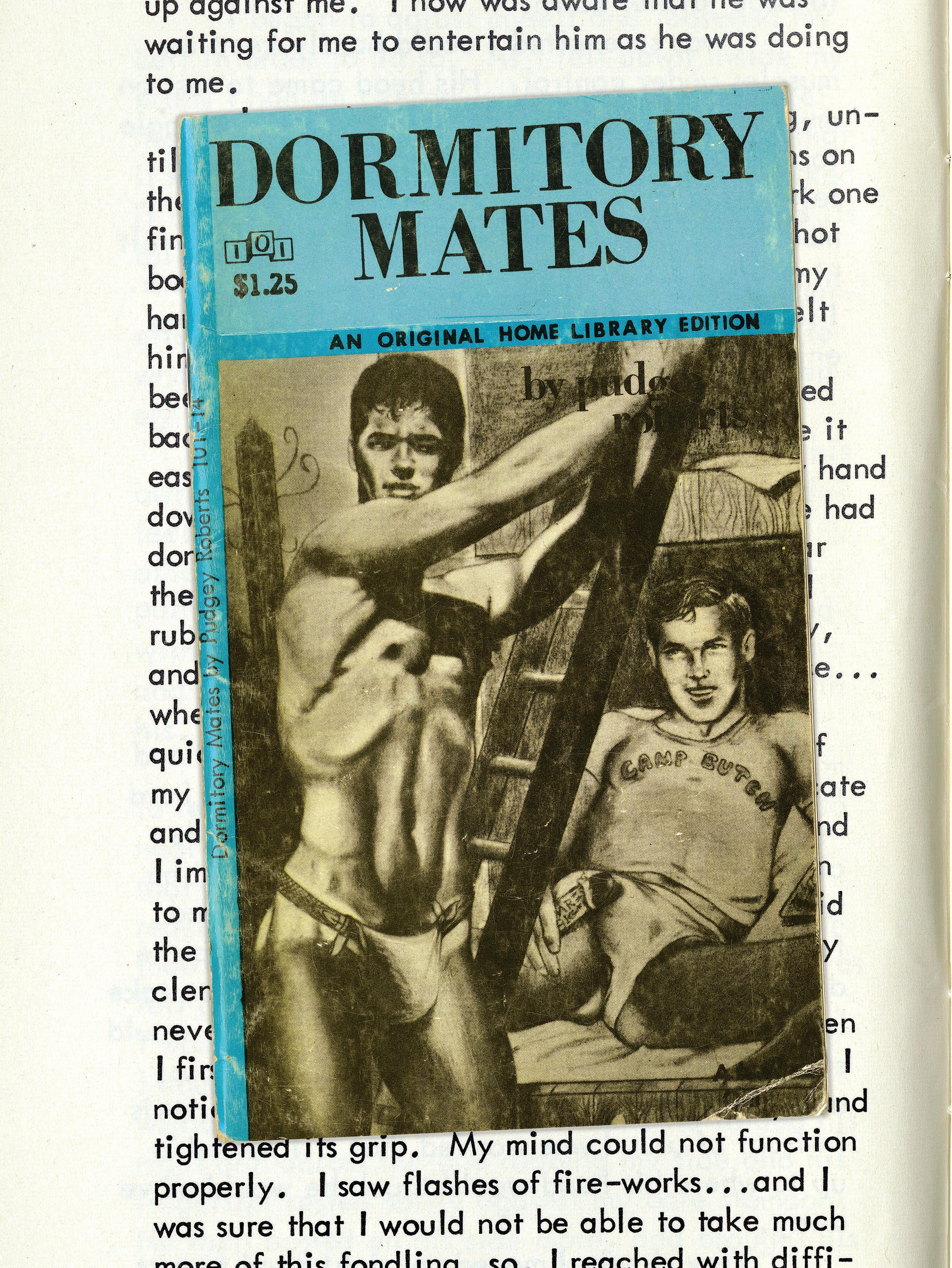
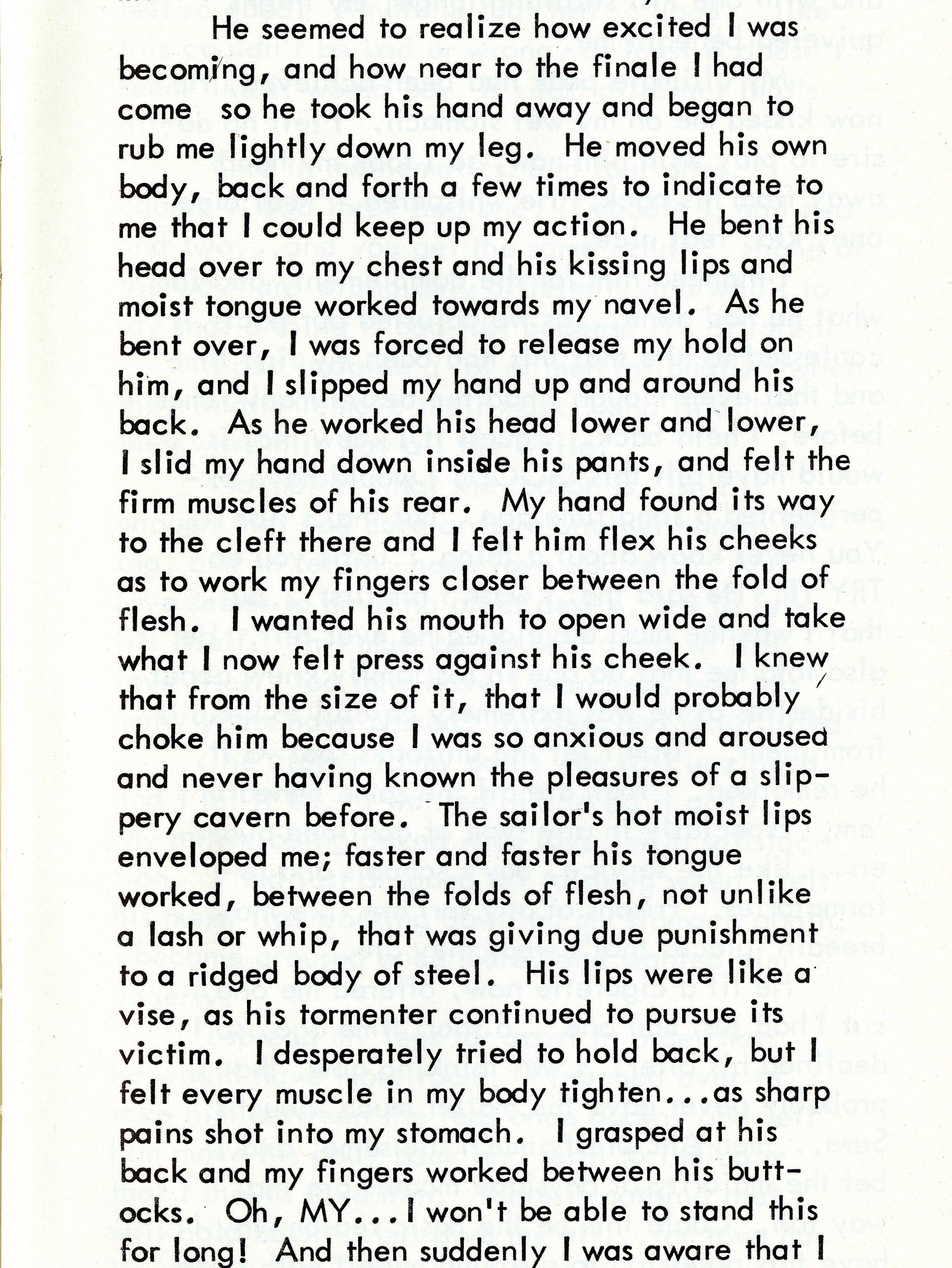
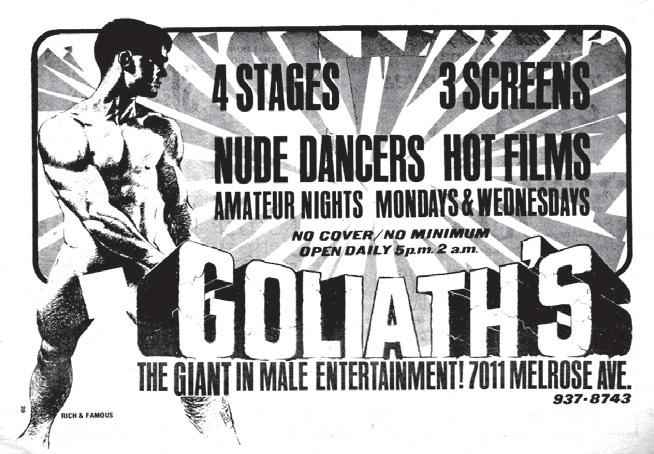
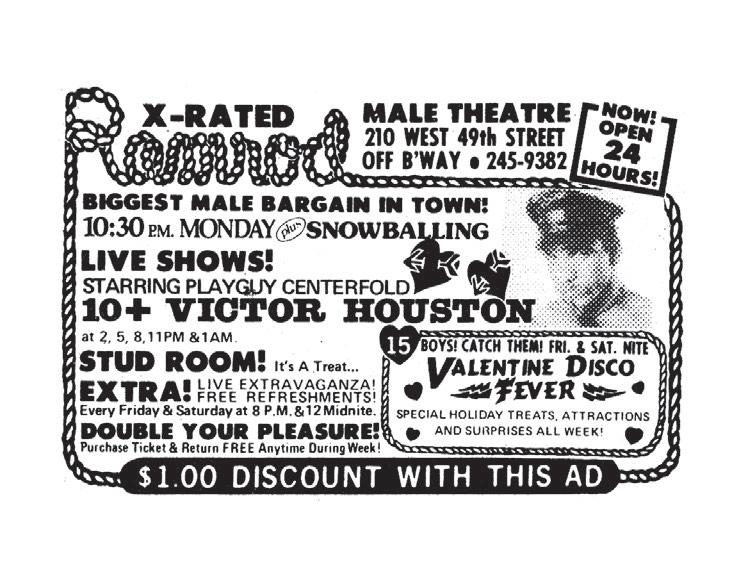
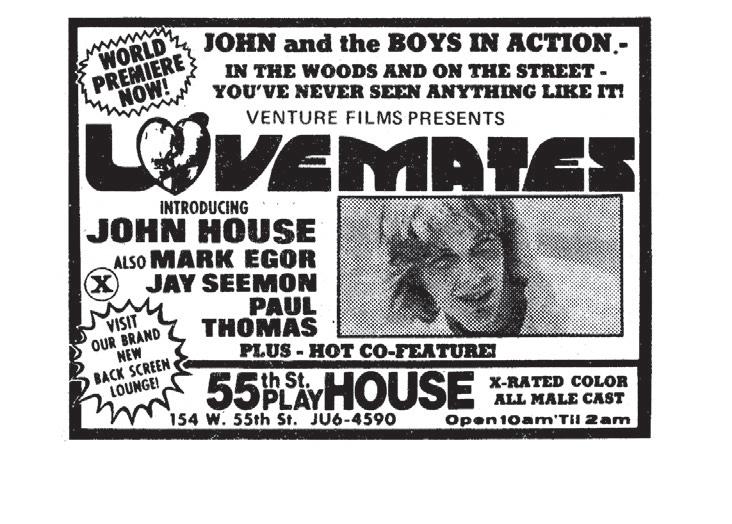
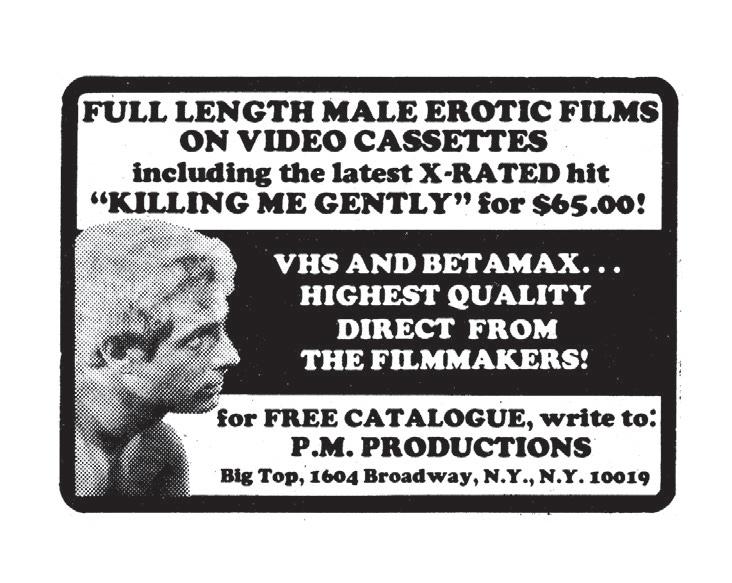
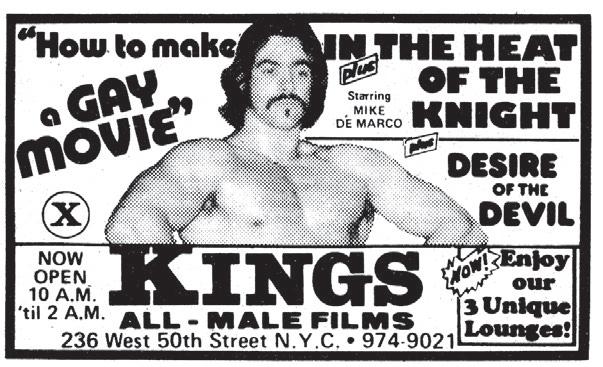
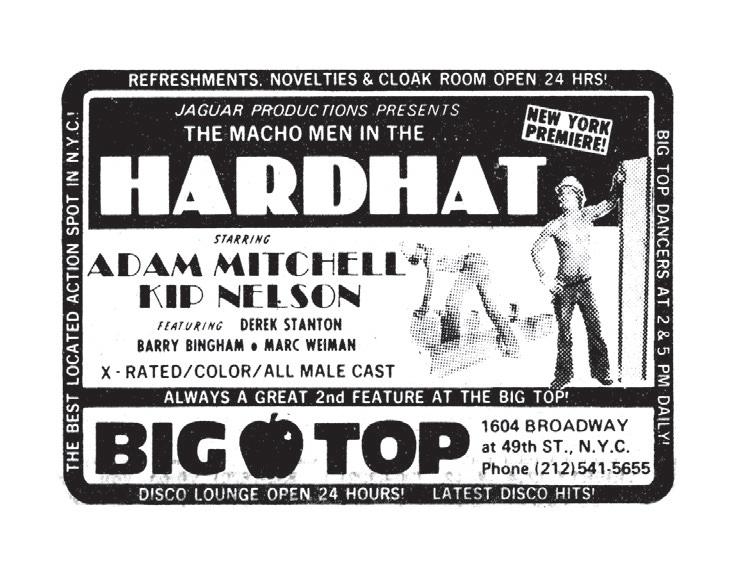

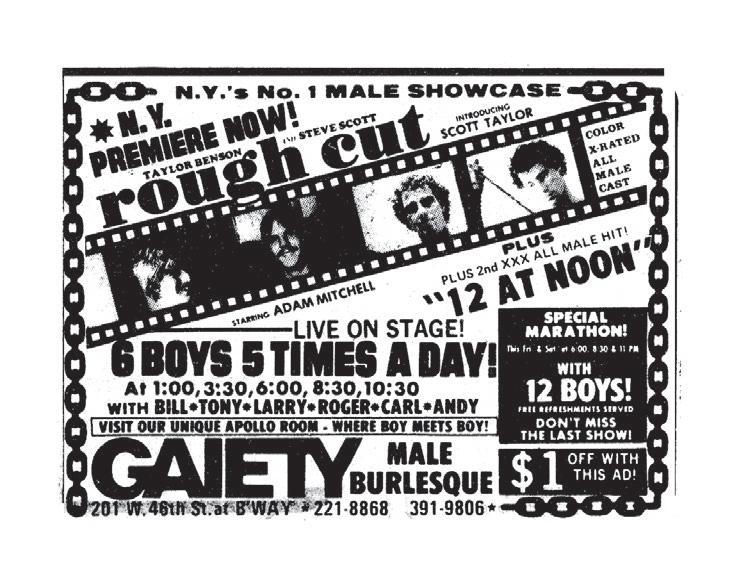
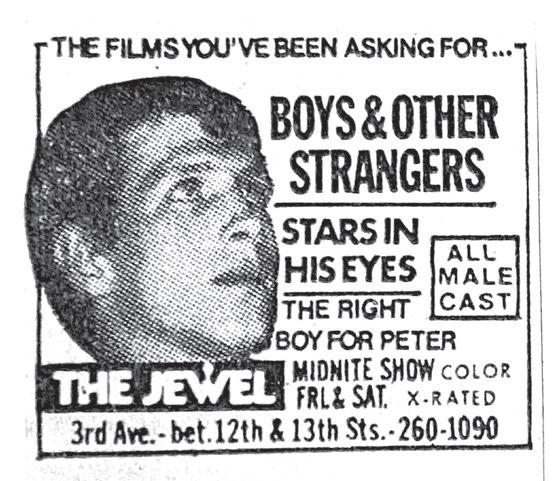
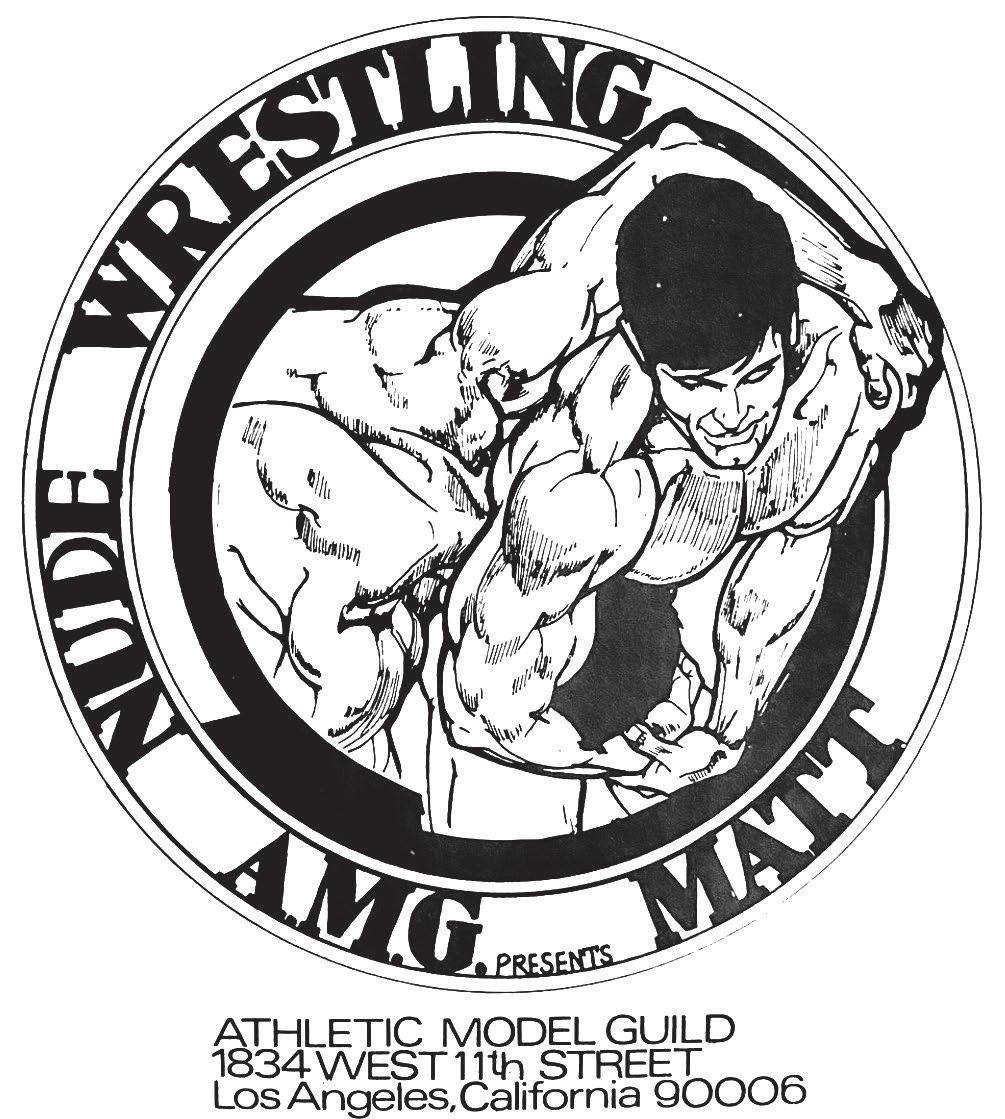
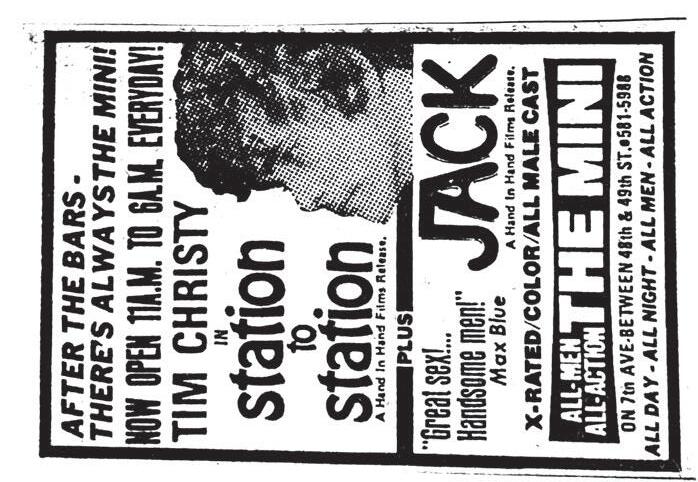
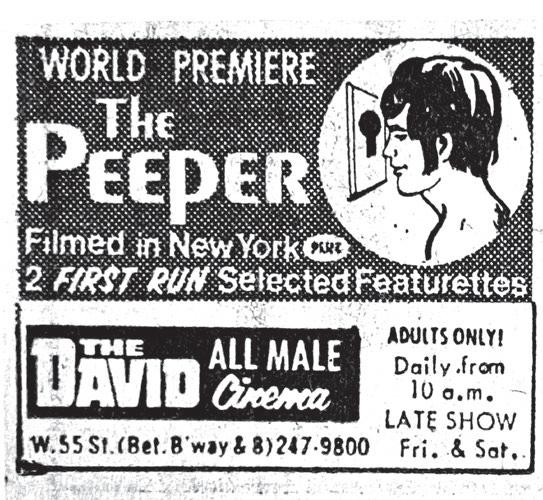

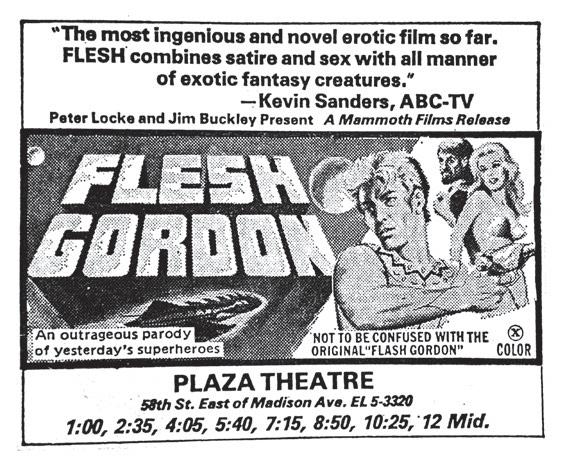
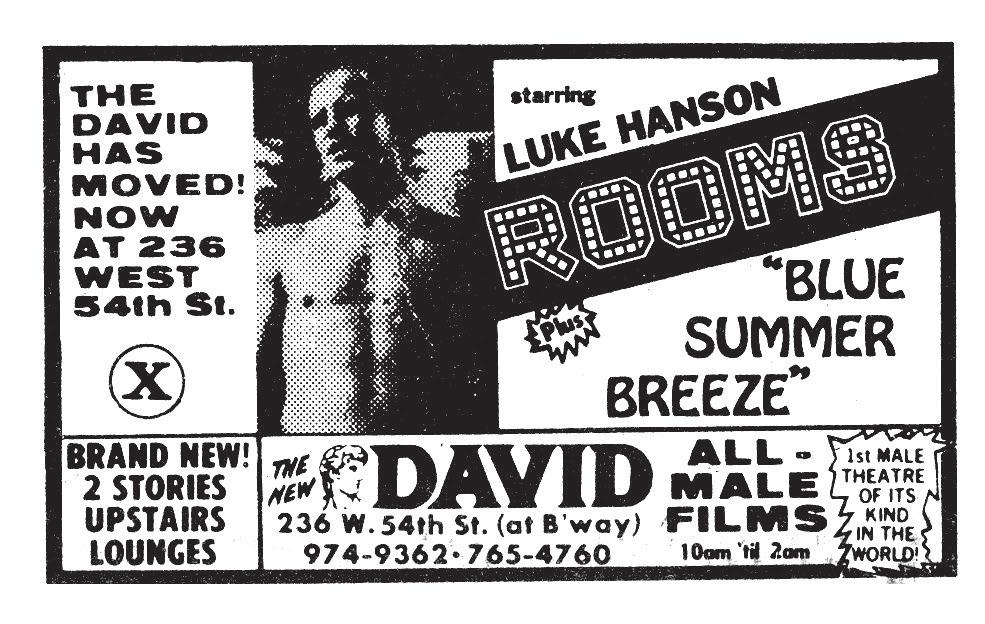
130 Antinous, a nineteenyear-old man who was the Roman Emperor Hadrian’s favorite lover, mysteriously dies in the Roman province of Egypt. After finding out about Antinous’s death, Hadrian creates a cult that gives Antinous the status of a god and builds several sculptures of him throughout the Roman Empire.
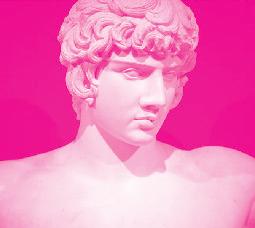
COLONIAL LIFE AND THE FOUNDING OF A NATION (1607–1770)
1620
Colonial Plymouth is established with Puritan norms. Mayflower contract states “. . . for the glory of God and advancement of the Christian faith . . .” and established gender norms that determine the nuclear family unit as the basis for all other institutions such as government or church. Men are to hold leadership positions, while women’s purpose is submissive, to “please your husband and make him happy.”
1624
Richard Cornish of the Virginia Colony is tried and hanged for sodomy.
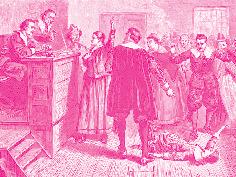
1630
Massachusetts Bay Colony is established, believing Puritans had made a “covenant with God to build an ideal Christian community.”
1631
Massachusetts Bay General Court, in accordance with Puritan religious and moral beliefs, declares that the following are considered sex crimes punishable by whipping, banishment, or execution: fornication, adultery, rape, and sodomy.
1732
William King first uses the term “lesbian” in his book The Toast, published in England, which he defines as women who love women.
1749
Thomas Cannon writes what may be the earliest published defense of homosexuality in English, Ancient and Modern Pederasty Investigated and Exemplify’d
1776 Declaration of Independence is signed inside the Pennsylvania State House in Philadelphia.
1778
Lieutenant Gotthold Frederick Enslin of the Continental Army becomes first documented service member to be dismissed from the U.S. military for homosexuality.
1779
Thomas Jefferson proposes a Virginia law to make sodomy punishable by mutilation rather than death. It was rejected by the Virginia legislature.
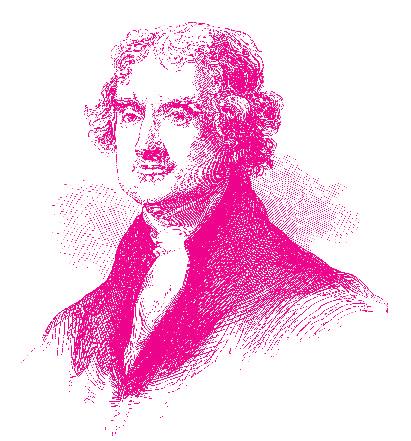
1649
The first known conviction for lesbian activity in North America occurs in March when Sarah White Norman is charged with “lewd behavior” with Mary Vincent Hammon in Plymouth, Massachusetts.
1687
New England Primer, considered by many as the first school-based textbook, is published for use in colonial schools. Content includes letters and words, as well as religious-based prayers and instruction such as, “God created man, male and female, after his own image, in knowledge, righteousness, and holiness, with dominion over the creatures.”
1691
1623
Francis Bacon, a noted gay man who coined the term “masculine love,” publishes The Advancement of Learning: An Argument for Empirical Research and Against Superstition. This deductive system for empirical research earns him the title “Father of Modern Science.”
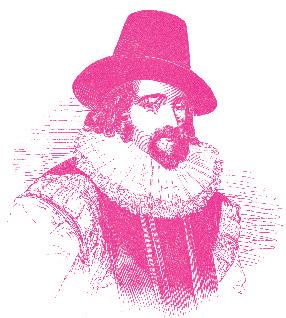
Virginia Colony passes the first antimiscegenation law, forbidding interracial marriage.
AMERICAN REVOLUTION, DECLARATION OF INDEPENDENCE, AND U.S. CONSTITUTION
1714
Sodomy laws in place in the early colonies and in the colonial militia. These laws remain in place until challenged in 1925.
began as a rallying cry for the gay rights movement in the 1990s. But as the timeline of milestones in queer history shows, LGBTQ people have always been here—and our collective fight for equal rights, even in 2023, is far from over.
“WE’RE HERE, WE’RE QUEER, GET USED TO IT!”
1789
A formerly enslaved person publishes The Interesting Narrative of the Life of Olaudah Equiano, or Gustavus Vassa, the African One of the first narratives of slave life, the book describes same-sex relationships the author had with other men and the existence of same-sex relationships within slave culture, since slaves were not allowed to marry.
1852 Writer J. D. Bothwick reports his attendance at a “miner’s ball”—a men’s-only dance held in Angels’ Camp in California.
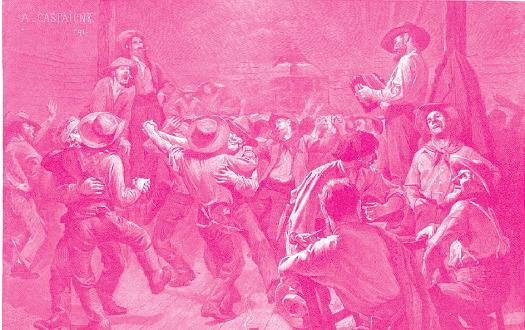
1857–1861
James Buchanan serves as President of the United States. A lifelong bachelor, Buchanan had a longterm relationship with William Rufus King, who served as vice president under
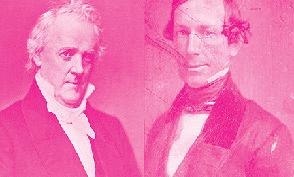
1869
The term “homosexual” is used for the first time, by Hungarian journalist Karl-Maria Kertheny.
1886
Henry James writes The Bostonians, a novel about a longterm relationship between two women. The term “Boston marriage” develops to describe two women living together, independent of financial support from a man.
1872
Richard van KraftEbbing’s pamphlet “Psychopathia Sexualis” is translated from German by Charles Gilbert Chaddock, marking one of the first times the term “bisexual” is used.
1896 Magnus Hirschfeld, a Jewish German physician and sexologist, issues a pamphlet, “Sappho and Socrates,” on homosexual love under the pseudonym Th. Ramien.
1896
The U.S. Supreme Court rules on Plessy v. Ferguson. By a vote of 7-1, the court declares racial segregation legal and not an infringement on the equal protection clauses of the Fourteenth Amendment.
1907
German physician and sexologist Magnus Hirschfeld testifies at a trial in Germany about a gay relationship, stating, “Homosexuality was part of the plan of nature and creation, just like normal love.”
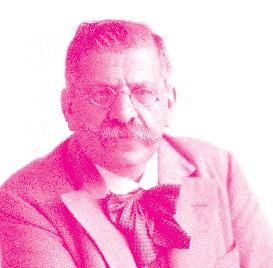
1917–1935
1849
Lifelong partners Jason Chamberlain and John Chaffee travel from Boston, Massachusetts, to California to seek their fortunes in the California gold rush. They live together in Groveland, California, until Chamberlain's death in 1903.
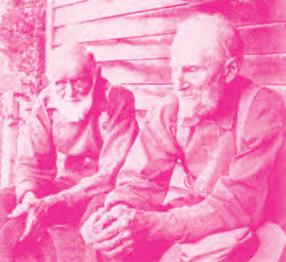
Franklin Pierce. The two men lived together from 1840 to 1853 until King’s death. Some historians suggest Buchanan, in today’s terms, was gay.
CIVIL WAR AND CIVIL RIGHTS (1850–1870)
1868
Ratification of the Fourteenth Amendment— the most cited amendment in Supreme Court civil rights cases, which has been the basis for landmark civil rights cases such as Brown v. Board of Education, Roe v. Wade, and Obergefell v. Hodges. Gay rights advocates cite this amendment in support of equality for future court cases.
INDUSTRIALIZATION, WESTWARD EXPANSION, IMMIGRATION, AND RELIGION (1870–1890)
1879
Death of Charley Parkhurst, a wellknown stagecoach driver in central California who was born a woman, but lived as a man. Parkhurst is buried in Watsonville, California.
1886
We’wha, a Zuni Native American from New Mexico, is received by U.S. President Grover Cleveland as a “Zuni Princess.” We’wha identifies as Ihamana—a traditional Zuni gender role now described as mixed gender or twospirit.
1890
The term “lesbian” is first used in a medical dictionary.
1890
Birth of Alan Hart, who pioneers the use of X-rays for tuberculosis diagnosis and is regarded one of the first transgender men in history.
U.S. RISE AS A WORLD POWER, WORLD WAR I, HARLEM RENAISSANCE, AND THE GREAT DEPRESSION (1890–1939)
1895 Trial of writer Oscar Wilde takes place in London, England. Wilde is convicted of gross indecency (relationships with other men) and serves two years in Reading Gaol.
The Harlem Renaissance, which historians have stated was “as gay as it was black.” Some of the lesbian, gay, and bisexual people of this movement include writers and poets such as Langston Hughes, Countee Cullen, and Zora Neale Hurston; Professor Alain Locke; music critic and photographer Carl Van Vechten; and entertainers Ma Rainey, Bessie Smith, Ethel Waters, and Gladys Bentley.
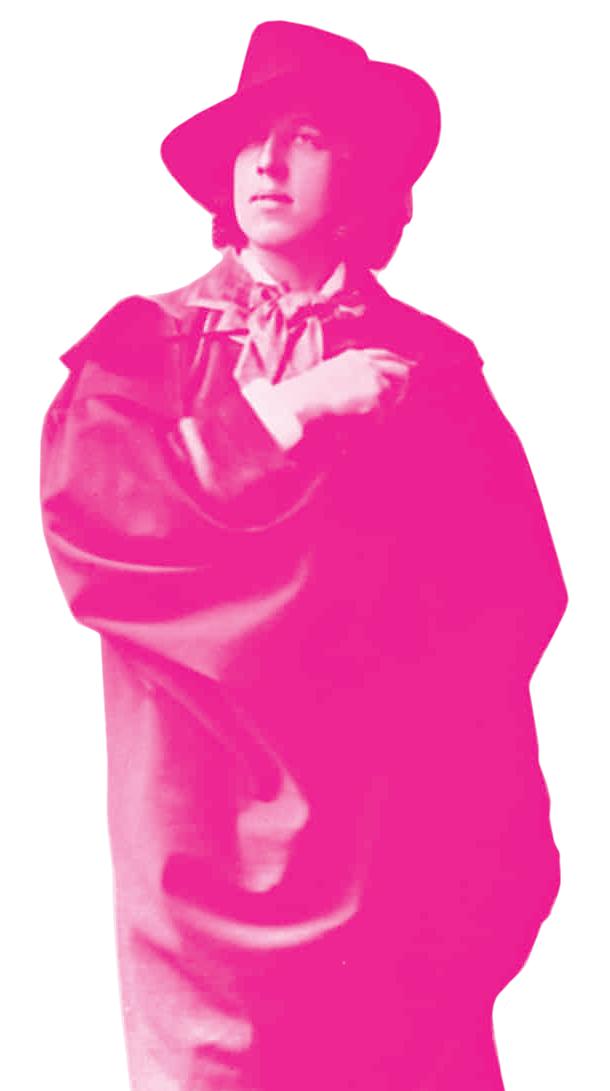
1924 Henry Gerber forms the Society for Human Rights, the first gay group in the U.S., but the group is quickly shut down.
1933–1945
1925 Blues singer Ma Rainey is arrested in her Harlem home for having a lesbian party. Her protégé, Bessie Smith, bails her out of jail the following morning. Rainey and Smith remain part of an extensive circle of lesbian and bisexual African American women in Harlem.
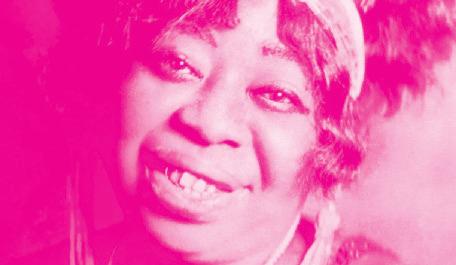
1928
The Well of Loneliness by Radclyffe Hall is published in the United States, sparking great legal controversy and bringing the topic of homosexuality into the public conversation.
1933
In Berlin, Germany, students led by Nazi stormtroopers break into Magnus Hirschfeld’s Institute for Sexual Science and confiscate its library. Days later, most of this collection—12,000 books and 35,000 pictures—are destroyed along with thousands of other “degenerate” works of literature in a book burning in Berlin’s city center.
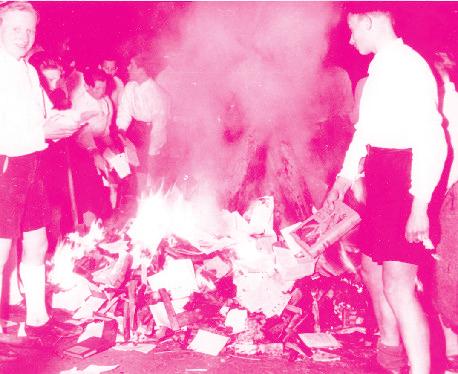
Designated by a pink triangle embroidered on their clothing, nearly 100,000 German homosexual men are rounded up and placed in concentration camps
1941
Following the bombing of Pearl Harbor, U.S. citizens clamor to participate in the war effort, and peak enlistment hits 14,000 per day in 1942. Gay and lesbian people join the military ranks as well. Men living in same-sex dorms, and women as part of the Women Accepted for Volunteer Emergency Service (WAVES) and in factories on the home front, find themselves in samesex surroundings. In addition, men who fought in Europe find same-sex relationships more relaxed than in the U.S.
1944–45
As the war comes to an end, U.S., British, and Soviet forces liberate people held in Nazi concentration camps.
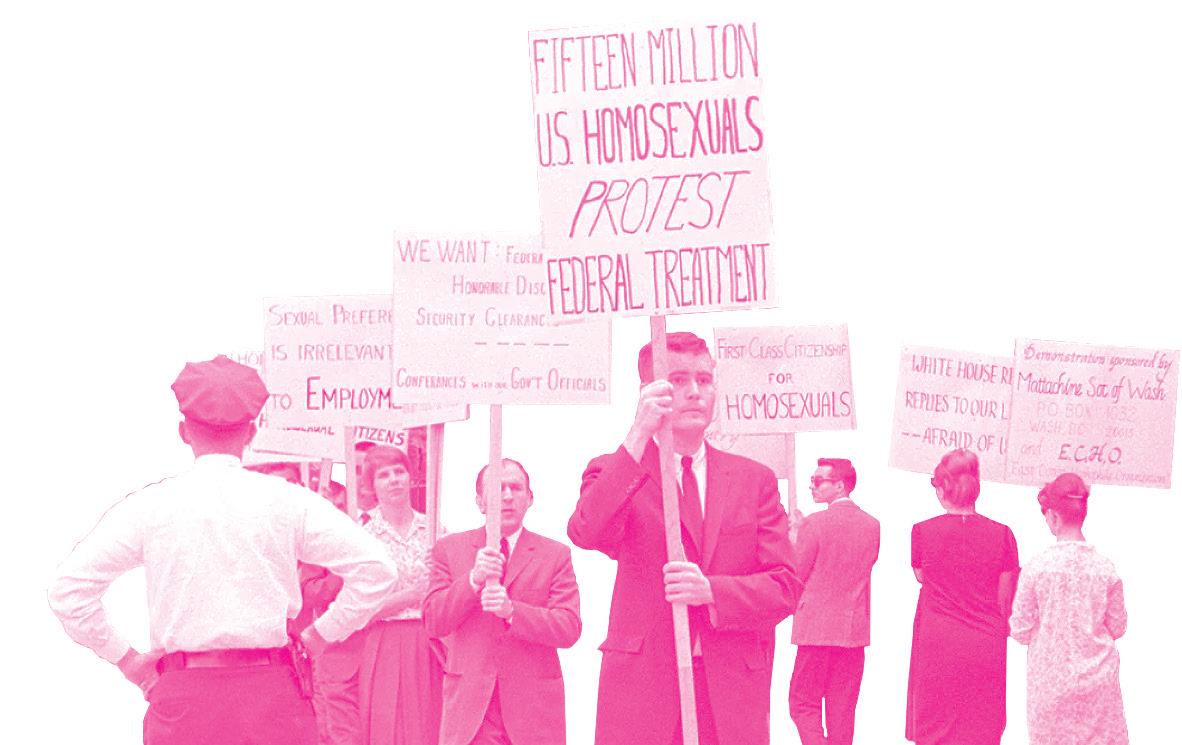
1948
Alfred Kinsey, an American biologist and sexologist at Indiana University, issues the first report to discuss male homosexuality: Sexual Behavior of the Human Male, also known as the Kinsey Report.
1950 U.S. Congress issues the report Employment of Homosexuals and Other Sex Perverts in Government after the federal government covertly investigates employees’ sexual orientation. The report states that since homosexuality is a mental illness, homosexuals “constitute security risks” to the nation.
1950
The Mattachine Society, formed in Los Angeles by activist Harry Hay, is one of the first sustained gay rights groups in the United States, focusing on social acceptance and other support for homosexuals.
1952
1952
The American Psychiatric Association’s diagnostic manual lists homosexuality as a sociopathic personality disturbance that can be treated.
1952 U.S. Congress passes, and President Harry S. Truman signs into law, the Immigration Act, which bars “aliens afflicted with a psychopathic personality, epilepsy, or mental defect.” Congress makes clear that this was meant to exclude “homosexuals and sex perverts.”
1953
Alfred Kinsey publishes a new report discussing female homosexuality, Sexual Behavior in the Human Female
1953
Executive Order 10450 issued by President Dwight D. Eisenhower on April 27, bans homosexuals from working for the federal government because they are a security risk. This order stays in place until 1993, when President Bill Clinton and the U.S. Congress enact the “Don’t Ask, Don’t Tell” law.
1954 U.S. Supreme Court files a unanimous decision in Hernandez v. Texas, declaring that Mexican Americans and other nationalities hold equal protection under the Fourteenth Amendment. Up to this time, nonwhite people had been systematically excluded from serving on court juries.
1954 U.S. Supreme Court files a unanimous decision in Brown v. Board of Education, which determines that segregation in schools violates the equal protection clause of the Fourteenth Amendment. The decision overturns that of Plessy v. Ferguson (1896), which had declared that separate was equal.
1955 Daughters of Bilitis, the first lesbian rights organization, is founded in San Francisco by Phyllis Lyon and Del Martin. Until 1969, the group regularly hosts private social functions, fearing police raids, threats of violence, and discrimination in bars and clubs.
1955 Although the term “gay” had been used throughout Europe as a synonym for homosexuality, this is the year most agree that “gay” came to mean same-sex relationships between men.
1956
1945
German homosexual men, designated by a pink triangle on their clothing, are the last group released from the Nazi concentration camps after liberation by the Allied Forces, due to the fact that Paragraph 175 of the German Criminal Code deems homosexual relations between males to be illegal.
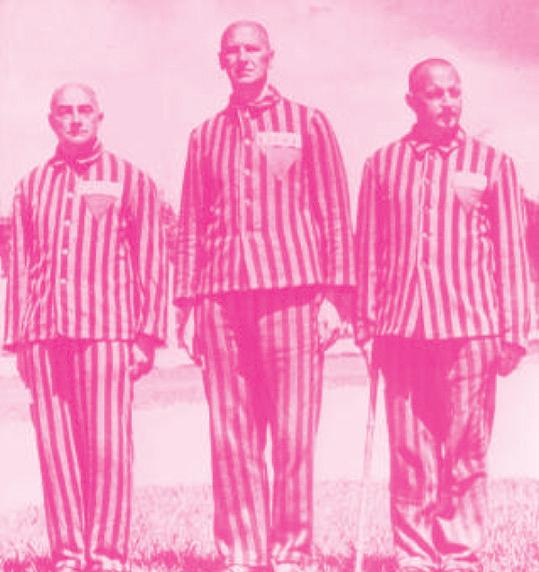
Christine Jorgensen is the first American to come forward publicly about being transgender, speaking openly about her experiences with gender-confirmation surgery and hormonereplacement therapy. Her transition causes an international sensation, and for many, she is the first visible transgender person in the media.
African American novelist and intellectual James Baldwin publishes his second novel, Giovanni’s Room, a critically acclaimed work that explores bisexuality and intimate relationships between men.
1957
Frank Kameny, an astronomer for the U.S. Army Map Service, is released from government service because of his homosexuality, an outgrowth of Executive Order 10450. He had earned his doctorate in astronomy from Harvard University and was a professor of astronomy at Georgetown University before assuming his government position. Kameny twice appeals the decision to the Supreme Court, but is rejected both times.
1963
The first gay rights demonstration in the U.S. takes place on September 19 at the Whitehall Induction Center in New York City, protesting against discrimination in the military.
1965
In his book Sexual Hygiene and Pathology, John Oliven uses the term “transgender” to mean a person who identifies with a gender other than the one they were assigned at birth.
1966
The Compton Cafeteria Riot breaks out at a San Francisco eatery when trans women are denied service and arrested for breaking gendered clothing laws. The protests, which last for several days, lead to the establishment of the National Transsexual Counseling Unit (NTCU) in support of transgender people.
1967
1969 Riots at the Stonewall Inn in New York City’s Greenwich Village begin in the early hours of June 27, marking a pivotal, defining moment for gay rights in the U.S. In response to an unprovoked police raid on an early Saturday morning, more than four hundred people—including gay, lesbian, bisexual, transgender, and straight allies—protest their treatment and push the police away from the area.
1969 The Gay Liberation Front forms in New York following the Stonewall uprising to advocate for sexual liberation for all people.
1971 The first issue of Body Politic magazine is published in Toronto, Canada, eventually becoming one of the most widely read publications regarding LGBT rights.
1972
The National Bisexual Liberation Group forms in New York.
1972
The play Coming Out! written by Jonathan Ned Katz, is performed for the first time in New York, providing a historical perspective of gay life from the colonial period to the present.
1973
1974 Elaine Noble becomes the first openly gay person to be elected as a state legislator, serving in the Massachusetts State House of Representatives for two terms.
1975 The Bisexual Forum in New York City and the Gay American Indians Organization in San Francisco are formed.
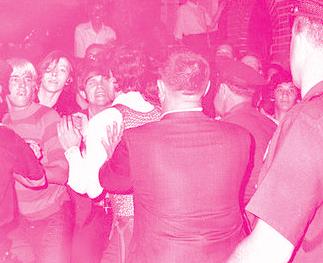
1976 Jonathan Ned Katz’s Gay American History: Lesbians and Gay Men in the U.S.A., based on his 1972 play, is the first book to document gay history in the U.S.
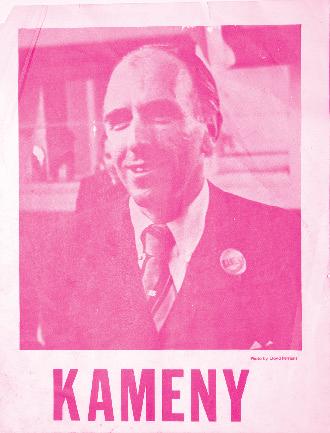
1977
1958
Without oral arguments, the Supreme Court issues a decision in One v. Olesen stating that free speech rights under the First Amendment protect the publishing of One magazine, a gay publication associated with the Mattachine Society. Previously, the U.S. Postal Service had the power to open any magazine or mail they determined to be “obscene, lewd, and/ or lascivious.” They also had the power to keep lists of people who received such publications and maintained lists of homosexual men who received the publication.
1962
Illinois becomes the first U.S. state to remove sodomy laws from its criminal code, thus decriminalizing homosexual acts between two consenting adults in private.
1963 Bayard Rustin, an associate of Martin Luther King Jr. and a gay African American man, helps organize the March on Washington that culminates with King’s famous “I Have a Dream” speech.
Craig Rodwell opens the Oscar Wilde Memorial Bookshop in New York City. The bookshop is the first in the U.S. devoted to gay history and gay rights.
1967 U.S. Supreme Court files a unanimous decision in Loving v. Virginia, overturning state laws that prohibited interracial marriage or miscegenation laws. The ruling clarifies that anti-miscegenation laws, first passed in 1691, violate the equal protection clause of the Fourteenth Amendment.
1969 The Gay Activist Alliance forms in New York by a group who were not satisfied with the direction of the Gay Liberation Front. More political in their purpose, the group seeks to “secure basic human rights, dignity, and freedom for all gay people.”
1970 The first Gay Pride marches take place in cities across the United States on the first anniversary of the Stonewall uprising, including New York, San Francisco, and Los Angeles.
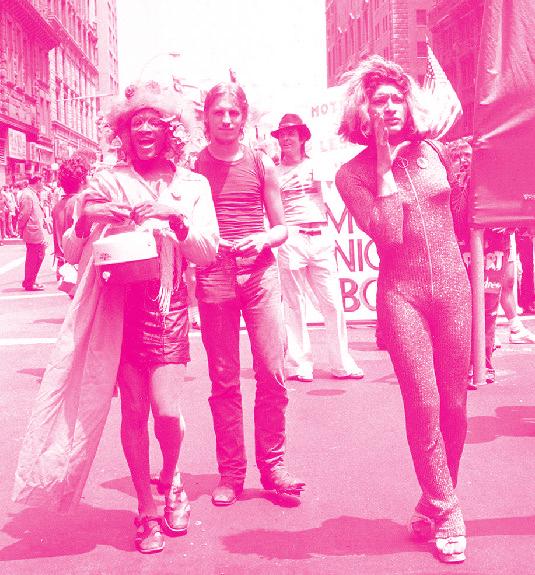
1970 Marsha “Pay It No Mind” Johnson and Sylvia Rivera form the Street Transvestites Action Revolutionaries (STAR).
By a vote of 7-2, the U.S. Supreme Court determines in Roe v. Wade that women have a right to privacy protected by the Fourteenth Amendment, including personal choices regarding abortion.
1973 The American Psychiatric Association, after considerable advocacy by Frank Kameny and members of the Mattachine Society, votes 13-0 to remove homosexuality from its official list of psychiatric disorders. The APA states that “the latest and best scientific evidence shows that sexual orientation and expressions of gender identity occur naturally . . . and that, in short, there is no scientific evidence that sexual orientation, be it heterosexual, homosexual or otherwise, is a freewill choice.” The resolution also urges an end to private and public discrimination and the repeal of laws discriminating against homosexuals.
Harvey Milk is elected county supervisor in San Francisco, becoming the third “out” elected public official in the U.S.
1977 Quebec, Canada, passes laws to prohibit discrimination based on sexual orientation in both the private and public sectors.
1978 In San Francisco, the Rainbow Flag is flown for the first time during the Gay Freedom Parade on June 25. The flag becomes a symbol of gay and lesbian pride.
1978 San Francisco Supervisor Harvey Milk is assassinated along with Mayor George Moscone on November 27. Supervisor Dan White is convicted of voluntary manslaughter and sentenced to seven years in prison.
1978 The Briggs Initiative, a statewide proposition in California to ban gays and lesbians from working in California’s public schools, is defeated by fifty-eight percent of voters.
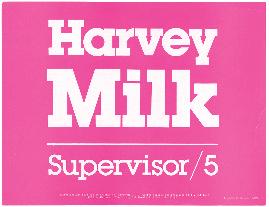
1979
The National March on Washington for Lesbian and Gay Rights is held on October 14, bringing more than 100,000 people together in support of gay and lesbian rights.
1979 Chapters of the national organization of Parents and Friends of Lesbians and Gays (PFLAG) are founded across the United States.
1980 Democrats are the first political party to add “gay rights” to their platform during the Democratic National Convention.
1981
On June 5, the U.S. Centers for Disease Control report the first cases of a rare lung disease that would be named AIDS (Acquired Immune Deficiency Syndrome) the following year. A total of 583, 298 U.S. men, women, and children would die from AIDS by 2007.
1982
Nearly 800 people are infected with GRID (Gay-Related Immunodeficiency Disorder). The name is changed to AIDS by the year’s end.
1983
The San Francisco AIDS Foundation is formed by Cleve Jones, Marcus Conant, Frank Jacobson, and Richard Keller.
1983
The Ninth Circuit Court of Appeals rules in Watkins v. United States Army. The New York Times later publishes an article, in 1991, detailing Perry Watkins’s settlement with the U.S. Army following his legal win.
1984
Virginia Uribe begins Project 10, a program to support LGBTQ students in a Los Angeles high school. The project is eventually adopted by the entire Los Angeles School District.
1987 The activist organization AIDS Coalition to Unleash Power (ACT UP) forms in New York with a mission to impact the lives of people living with AIDS, to advocate for legislation, medical research, and treatment, and to bring an end to the disease. The organization is still active today.
1988
The World Health Organization (WHO) declares December 1 as World AIDS Day.
1989
Billy Tipton, a famous jazz musician, dies. As a result, it becomes publicly known that Tipton was assigned female at birth, but lived and identified as male for most of his adult life.
1994 Pedro Pablo Zamora, a Cuban American AIDS educator and television personality, becomes one of the first openly gay men with AIDS to be portrayed in popular media. Zamora brings international attention to HIV/AIDS and LGBTQ issues and prejudices through his appearance on MTV’s reality television series The Real World: San Francisco.
1996 Kelli Peterson founds the Gay/Straight Alliance at East High School in Salt Lake City, Utah. The city school board bans all “non-curricular” student clubs to keep the group from meeting.
1997
1998 Matthew Shepard, a twenty-one-yearold student at the University of Wyoming, is brutally attacked on October 6 and tied to a fence in a field outside of Laramie, Wyoming, and left to die because he was gay. Found by a cyclist who initially mistakes him for a scarecrow, Shepard later dies due to his injuries sustained in the beating. One of the most notorious anti-gay hate crimes in America, Shepard’s death resulted in a federal law passed in 2009 called the Hate Crimes Prevention Act—which protects lesbian, gay, bisexual, and transgender people against bias crimes.
1985
Rock Hudson—a leading actor in the 1950s and ’60s—dies of AIDSrelated complications. After his death, it’s revealed that he was gay and had several male relationships.
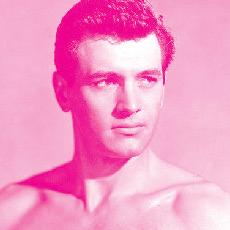
Photo: HistoricalMedia
1985
The first memorial to the Nazis’ gay victims is unveiled at the Neuengamme concentration camp—a pink granite stone monument inscribed, “Dedicated to the Homosexual Victims of National Socialism.”
1985
The concept for the AIDS Memorial Quilt is conceived and implemented by Cleve Jones, an LGBT activist in San Francisco.
1986
By a vote of 5-4, the U.S. Supreme Court rules in Bowers v. Hardwick that a Georgia sodomy law criminalizing oral and anal sex in private between consenting adults is legal and that there are no constitutional protections for acts of sodomy. (The law was overruled in Lawrence v. Texas—see 2003).
1989 Denmark becomes the first country in the world to legally recognize same-sex unions after passing a bill legalizing “registered partnerships” in a 71–47 vote.
1991
Audre Lorde is named New York State Poet Laureate. A critically acclaimed novelist, poet, and essayist, Lorde was also politically active in social justice movements, a cofounder of the Kitchen Table Women of Color Press, and an editor of the lesbian journal Chrysalis.
1993
The U.S. Congress passes, and President Bill Clinton signs, “Don’t Ask, Don’t Tell,” which allows gay and lesbian people to serve in the military. Recruits are no longer to be asked about their sexual orientation during enlistment screenings.
1994
Greg Louganis, a four-time Olympic gold medalist considered one of the greatest divers in history, publicly comes out as gay as part of the Gay Games in New York City. In his 1996 memoir, Breaking the Surface, he shares his Olympic experiences, comingout journey, and that he had been diagnosed with AIDS in 1988.
Ellen DeGeneres and her television character, Ellen Morgan, come out. Ellen becomes the first television show to feature a lesbian or gay lead character— and is canceled the following year.
1998
On April 1, Martin Luther King Jr.’s widow, Coretta Scott King, asks the civil rights community to help in the effort to extinguish homophobia.
1998 Russell Henderson and Aaron McKinney from Laramie, Wyoming, make their first court appearance on October 9 after being arrested for the attempted murder of Matthew Shepard. Eventually, they each receive two life sentences for murder.
1998
Tammy Baldwin becomes the first openly lesbian candidate ever elected to the U.S. Congress, winning Wisconsin’s second congressional district seat over Josephine Musser.
1999 GLSEN conducts its first National School Climate Survey to assess the experiences of LGBTQ youth with regards to their experiences of schoolbased harassment and victimization, the frequency with which they heard homophobic language in their schools, and their overall comfort in school. The survey is the first of its kind to examine the specific experiences of LGBTQ-identified youth in schools nationally.
THE TWENTY-FIRST-CENTURY TRANSFORMATION (2000–PRESENT)
2002 New York City expands the definition of “gender” to include protections for transgender and gender non-conforming people in employment, housing, and public accommodations in the NYC Human Rights Law.
2003 Horizon Foundation creates the Gwen Arujo Memorial Fund for Transgender Education in honor of Gwen Amber Arujo, a slain trans teenager. The fund’s purpose is to support school-based programs in the nine-county Bay Area that promote a better understanding of transgender people and issue annual grants.
2003
By a vote of 6-3, the U.S. Supreme Court rules in Lawrence v. Texas that a Texas law criminalizing gay and lesbian sex is unconstitutional. The decision declares the importance of constitutional liberty and privacy consistent with the due process clause of the Fourteenth Amendment and overturns the court decision in Bowers v. Hardwick (1986).
2004
The first legal same-sex marriage in the United States takes place in Massachusetts.
2005 The California state legislature becomes the first to pass a bill allowing marriage between samesex couples. Governor Arnold Schwarzenegger vetoes the bill.
2006
Attorney and transgender activist Kim Coco Iwamoto is elected to the state-level Board of Education in Hawaii, the first openly transgender person to be elected to a statelevel office in the U.S.
2006 Soulforce, an organization committed to confronting religious-based hate, launches its first Equality Ride bus tour, visiting thirtythree colleges and universities that ban enrollment of openly LGBTQ students.
2006
The New Jersey Supreme Court rules that state lawmakers must provide the rights and benefits of marriage to gay and lesbian couples.
2008
The California Supreme Court rules that limiting marriage to opposite-sex couples is unconstitutional.
2008 On November 8, Proposition 8 passes in California with a fifty-two percent Yes vote that declares marriage as between a man and a woman. The proposition is later found to be unconstitutional by a federal judge.
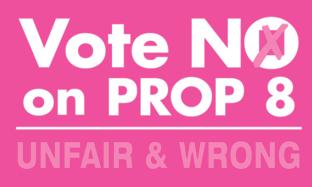
2009 President Barack Obama signs the Matthew Shepard and James Byrd, Jr. Hate Crimes and Prevention Act, also known as the Matthew Shepard Act, into law. The law expands the 1969 U.S. federal hate-crime law to include crimes motivated by a victim’s actual or perceived sexual orientation, gender identity, or disability, and becomes the first federal law to include legal protections for transgender people.
2009
The David Ray Hate Crimes Prevention Act, or David’s Law, is introduced in the U.S. House of Representatives by Rep. Sheila JacksonLee of Texas, which aims to enhance federal enforcement of laws regarding hate crimes and to specifically make sexual orientation, like race and gender, a protected class.
2009
Harvey Milk is posthumously awarded the Presidential Medal of Freedom by President Barack Obama.
2010
The U.S. Congress passes, and President Barack Obama signs, the repeal of “Don’t Ask, Don’t Tell,” thus allowing gay and lesbian people to serve openly in the military (though it does not lift regulations barring many transgender people from serving).
One person present at the White House signing ceremony is Frank Kameny, who had been released from military service in 1958 because of discriminatory policies against gay and lesbian people.
2011 U.S. Department of Education Secretary Arne Duncan issues a statement clarifying that students have the right to form gay-straight alliances (GSAs) under the Equal Access Act of 1984 in any public school that allows non-curricular student groups to form. Schools must also provide GSAs with the same opportunities as other groups to convene and access resources.
2011 Jeanne Cordova, a lesbian activist and pioneer in the fight for LGBTQ rights, publishes When We Were Outlaws: A Memoir of Love and Revolution.
2012
The Food and Drug Administration approves Truvada as a daily preventative (PrEP, or pre-exposure prophylaxis) for those at risk of acquiring HIV. The Centers for Disease Control notes that this is the first time a drug has been approved to prevent the acquisition of HIV through sexual and intravenous transmission.
2012
In an ABC News interview, President Barack Obama becomes the first sitting U.S. president to publicly support the freedom for LGBTQ+ couples to marry.
2012
The Democratic Party becomes the first major U.S. political party to publicly support same-sex marriage on a national platform at the Democratic National Convention.
2012
Tammy Baldwin becomes the first openly gay politician and the first Wisconsin woman elected to the U.S. Senate.
2013
By a vote of 5-4 in Hollingsworth v. Perry, the U.S. Supreme Court agrees that it cannot overrule the decision of the California Supreme Court and that petitioners were not legally able to file their claim. In addition, it rules that the equal protection clause of the Fourteenth Amendment prohibits the state of California from defining marriage as the union of one man and one woman. Proponents of Proposition 8 in California appeal a lower court decision that ruled Proposition 8 unconstitutional, but the Supreme Court would not hear the case, meaning Proposition 8 is held as unconstitutional and that same-sex couples could legally be married in California.
2013
By a vote of 5-4 in United States v. Windsor, the U.S. Supreme Court rules that defining marriage as just between a man and a woman is unconstitutional under the Fifth Amendment guarantee of equal protection. This decision rules the Defense of Marriage Act (DOMA)—passed by Congress in 1996, which had defined marriage and legal union as between one man and one woman—as unconstitutional and gives states the authority to define marital relationships. This decision is rendered on the same day as that of Hollingsworth v. Perry
2014
The U.S. Department of Education issues official guidance to clarify that transgender students are protected from discrimination under Title IX, a federal civil rights law that prohibits discrimination against students on the bases of sex/gender in federally funded education programs and activities.
2014
Laverne Cox is the first transgender woman to win an Emmy as an executive producer for the MTV documentary Laverne Cox Presents: The T Word.
2014
The City Council in Austin, TX, approves an ordinance for singlestall bathrooms to be recognized as genderneutral.
2014
The U.S. Supreme Court denies review in five different marriage cases, allowing lower court rulings to stand and therefore allowing same-sex couples to marry in Utah, Oklahoma, Virginia, Indiana, and Wisconsin. The decision also opens the door for the right to marry in Colorado, Kansas, North Carolina, South Carolina, West Virginia, and Wyoming.
2015
In Obergefell v. Hodges, the U.S. Supreme Court votes 5–4 that the fundamental right to marry is guaranteed to same-sex couples by both the Due Process Clause and the Equal Protection Clause of the Fourteenth Amendment of the U.S. Constitution. This decision mandated that all fifty states must allow same-sex couples to legally marry.
Justice Anthony Kennedy writes the majority opinion, while each of the four conservative justices writes their own dissent.
2015 The City Council in Cincinnati, Ohio, votes to ban reparative/ conversion therapy of LGBTQ youth.
2015 MTV’s critically acclaimed series True Life airs an episode covering the topic of living and being genderqueer, bringing to light for many viewers (beyond the introduction to the world outside of the gender binary) how to properly use the singular “they” and other neo-pronouns.
2015
Inspired by Black Lives Matter, students at the University of Missouri begin the #ConcernedStudent1950 movement in response to racism, sexism, and other issues in the school’s administration. The movement is led by queer-identifying Black students, such as student body president Payton Head.
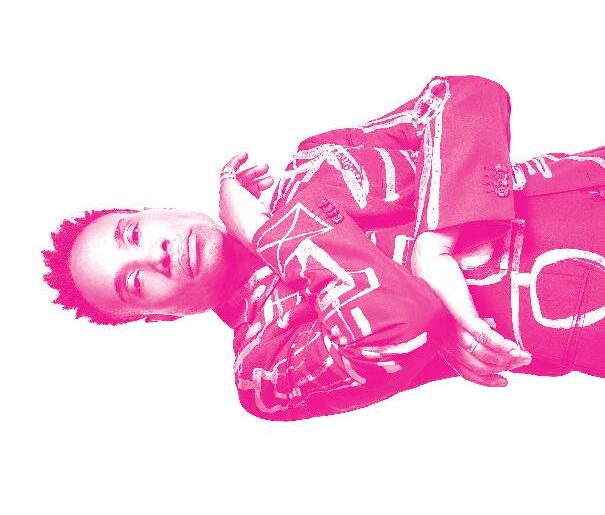
2015 The U.S. Department of Health and Human Services issues an official revision that shortens the deferral period for blood donation from men who have sex with men. In addition to shortening the deferral period from a life ban to twelve months, the new revision includes the statement that for the purposes of questioning, gender should be considered on a “self-identified and self-reported” basis.
2015 U.S. Secretary of Defense Ash Carter announces that the Military Equal Opportunity (MEO) policy was adjusted to include gay and lesbian military members.
2015 Boy Scouts of America
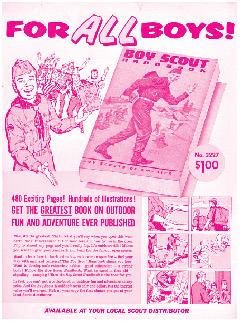
President Robert Gates announces: “The national executive board ratified a resolution removing the national restriction on openly gay leaders and employees.”
2016 Kate Brown is sworn in as governor of Oregon, a day after she was officially elected to the office. Brown becomes the highestranking LGBTQ person elected to office in the United States.
2017 The Seventh Circuit Court of Appeals rules that the Civil Rights Act prohibits workplace discrimination against LGBTQ employees after Kimberly Hively sues Ivy Tech Community College for violating Title VII of the Act by denying her employment.
2018 On February 26, the Pentagon confirms that the first transgender person has signed a contract to join the U.S. military.
2018 Daniela Vega, star of the Oscar-winning film A Fantastic Woman becomes the first openly transgender presenter in Academy Awards history when she introduces a performance by Sufjan Stevens, whose song “Mystery of Love,” from the Call Me By Your Name soundtrack, is nominated for best original song.
Emmy for best lead actor in a drama series.
2016 The U.S. Senate confirms Eric Fanning to be Secretary of the Army, making him the first openly gay secretary of a U.S. military branch.
2016
Omar Mateen, a twentynine-year-old man, kills forty-nine people and wounds fifty-three more in a mass shooting at Pulse, a gay nightclub in Orlando, Florida. Orlando police officers shoot and kill Mateen after a three-hour standoff.
2016 U.S. President Barack Obama announces the designation of the first national monument to LGBTQ rights. The Stonewall National Monument encompasses Christopher Park, the Stonewall Inn, and the surrounding streets and sidewalks that were the sites of the 1969 Stonewall uprising.
2016 U.S. Secretary of Defense Ashton B. Carter announces that the Pentagon is lifting the ban on transgender people serving openly in the U.S. military.
2016 A record number of “out” athletes compete in the summer Olympic Games in Rio de Janeiro. The Human Rights Campaign estimates at least forty-one Olympians are openly lesbian, gay, or bisexual—up from the twenty-three who participated in the 2012 London Games.
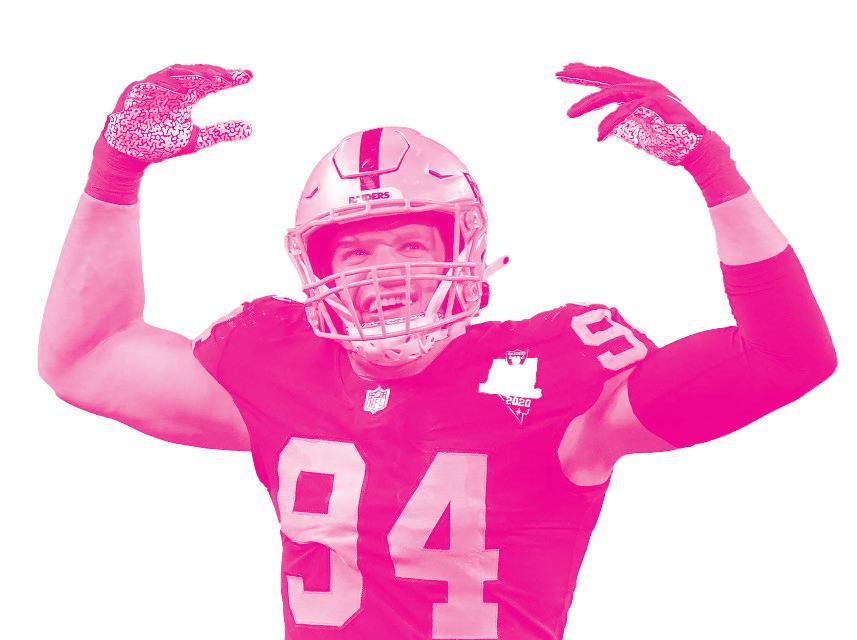
2017 The District of Columbia allows residents to choose a gender-neutral option on their driver’s license, making D.C. residents the first in the United States to be able to choose X as their gender marker instead of male or female on driver’s licenses and identification cards.
2017 The U.S. Department of Defense announces a six-month delay in allowing transgender individuals to enlist in the United States military. Defense Secretary Jim Mattis writes that they “will use this additional time to evaluate more carefully the impact of such accessions on readiness and lethality.” Approximately a month later, President Donald Trump announces via Twitter that the “United States Government will not accept or allow Transgender individuals to serve in any capacity in the U.S. Military.”
2017 Virginia voters elect the state’s first openly transgender candidate to the Virginia House of Delegates. Danica Roem unseats incumbent delegate Bob Marshall, who had been elected thirteen times over twenty-six years. Roem becomes the first openly transgender candidate elected to a state legislature in American history.
2018 On March 23, the Trump administration announces a new policy that bans most transgender people from serving in the military. After several court battles, the U.S. Supreme Court allows the ban to go into effect in January 2019.
2018 Democratic U.S. Representative Jared Polis wins the Colorado governor’s race, becoming the nation’s first openly gay man to be elected governor.
2019 New York Governor Andrew Cuomo signs a law banning the use of the so-called gay and trans panic legal defense strategy—a tactic that asks a jury to find that a victim’s sexual orientation or gender identity is to blame for a defendant’s violent reaction. New York follows California, Rhode Island, Illinois, Nevada, and Connecticut as the sixth state to pass such a law.
2020 The Ninth Circuit Court of Appeals upholds a ruling that the State of Idaho must provide gender-confirmation surgery for Adree Edmo, an inmate in the custody of the Idaho Department of Correction. The ruling marks the first time a federal appeals court has ruled that a state must provide genderreassignment surgery to an incarcerated person.
2020 The U.S. Supreme Court rules that federal law protects LGBTQ workers from discrimination. The landmark ruling extends protections to millions of workers nationwide and is a defeat for the Trump administration, which argued that Title VII of the Civil Rights Act, which bars discrimination based on sex, did not extend to claims of gender identity and sexual orientation.
2020 The Fourth Circuit Court of Appeals rules in favor of Gavin Grimm in a more than fouryear-long fight over restroom policies for transgender students. The ruling states that policies segregating transgender students from their peers are unconstitutional and violate federal law prohibiting sex discrimination in education.
2020
Sarah McBride wins the state senate race for Delaware’s District 1, becoming the nation’s first person who identifies as transgender to serve as a state senator. Ritchie Torres and Mondaire Jones, elected to serve New York’s 15th and 17th Districts, become the first Black men elected to Congress who identify as gay. Mauree Turner wins the race for Oklahoma State House for District 88, becoming the first nonbinary state legislator in U.S. history and the first Muslim lawmaker in Oklahoma.
2021
President Joe Biden signs an executive order repealing the 2019 Trump-era ban on most transgender Americans joining the military.
2021 U.S. Secretary of Transportation Pete Buttigieg becomes the first openly gay cabinet member confirmed by the Senate.
2021
Dr. Rachel Levine, assistant secretary for health in the U.S. Department of Health and Human Services, becomes the first out transgender federal official confirmed by the Senate.
2021
Carl Nassib, a defensive lineman with the Las Vegas Raiders, becomes the first active NFL player in league history to announce he is gay.
2021
The U.S. State Department announces it will update its procedures to allow applicants to selfselect their sex marker for passports and that it “will no longer require medical certification” if an applicant’s selfselected sex marker doesn’t match the sex listed on other official identity documents.
2022
Florida Governor Ron DeSantis signs a bill into law that forbids instruction on sexual orientation and gender identity in kindergarten through the third grade.
Christened by its opponents as the “Don’t Say Gay” bill, the policy draws intense national scrutiny from critics who argue it marginalizes LGBTQ people.
2022
Russian lawmakers back a bill that would expand an existing ban on the promotion of "LGBT propaganda" among children to include people of all ages, a move critics see as an attempt to further intimidate and oppress sexual minorities.
2022
A mass shooting occurs at Club Q, an LGBTQ nightclub in Colorado Springs, Colorado. Five people are killed and twenty-five others injured—nineteen of them by gunfire. The accused is twenty-twoyear-old Anderson Lee Aldrich.
2022
2023
The Utah Senate pushes through two bills affecting Utah’s transgender community: a ban on genderaffirming surgery and hormone therapy for minors; and a ban on issuing gender-amended birth certificates to minors.
2023 The U.S. Food and Drug Administration drafts guidelines that would do away with the current three-month abstinence requirement for blood donations from men who have sex with men.

2023
2022
The U.S. Supreme Court overturns Roe v. Wade, the landmark legislation that made access to abortion a federal right in the United States. The decision dismantles fifty years of legal protection and paves the way for individual states to curtail or ban abortion rights.
2022
Cuba approves gay marriage and adoption.
2022 The State of Mexico votes overwhelmingly to legally recognize samesex marriage, becoming the twenty-ninth of Mexico's thirty-two states to do so.
2022 The U.S. Social Security Administration announces that people can now choose their sex marker in their Social Security records.
The U.S. House of Representatives gives final congressional approval to legislation that provides federal recognition of same-sex marriages, a measure born out of concern that the Supreme Court could reverse its support for legal recognition of such relationships.
2023
A federal appeals court upholds a Florida high school's policy forbidding transgender students from using bathrooms that align with their chosen identities.
2023
Republican legislators in at least eight states introduce legislation aiming to restrict or censor drag shows. A total of fourteen bills have been introduced across Arizona, Arkansas, Missouri, Nebraska, South Carolina, Tennessee, Texas, West Virginia, Montana, and Idaho.
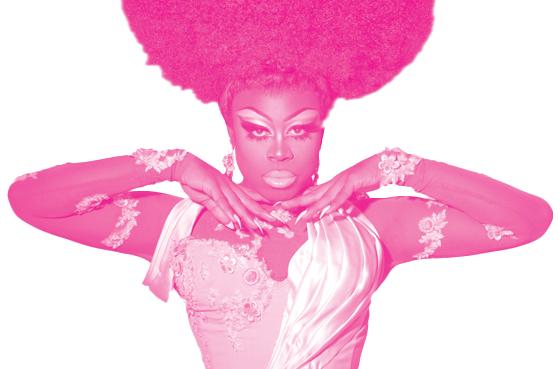
Pope Francis states that laws criminalizing LGBT people are a sin and an injustice because God loves and accompanies people with same-sex attraction.
to be continued...
NEITHER RAIN, SLEET, OR SNOW.
From the oldest bookstore in Atlantic City, New Jersey (Princeton Antiques Book Store) to online auction sites, my collection multiplies from sources across the globe. These numbers don't reflect the actual number of items in my collection, but rather the number of packages from each state and country, with some packages containing multiple items.

Tony Derosa, illustrator
“Christopher St. West . . .” handbill
8.5" x 11"
Offset printed handbill illustrated with linocut for the 1971 Hollywood Pride parade
After no other printer would agree to print this handbill, the organizers found Peace Press, an anti-war collective, willing to do the work.
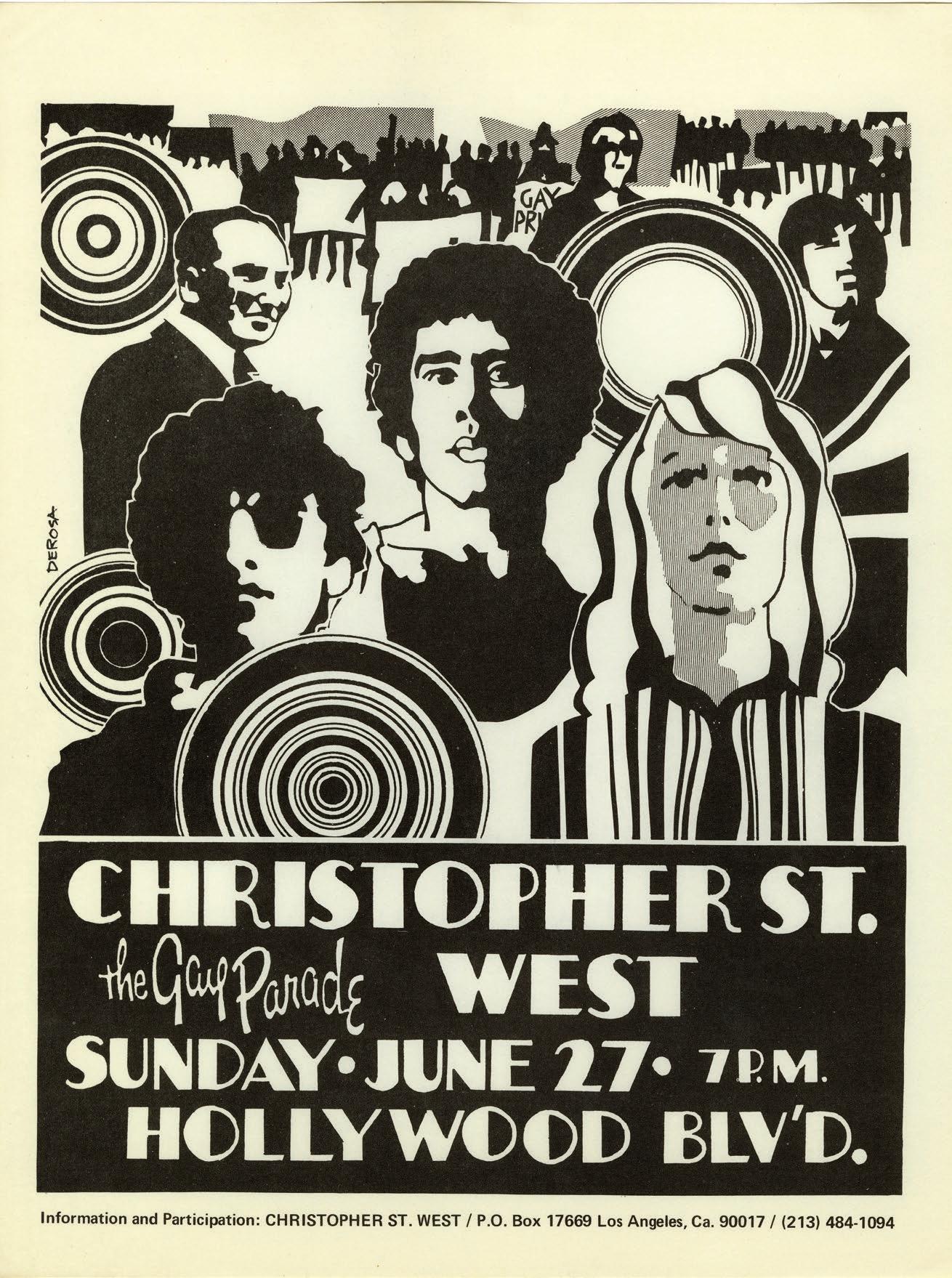
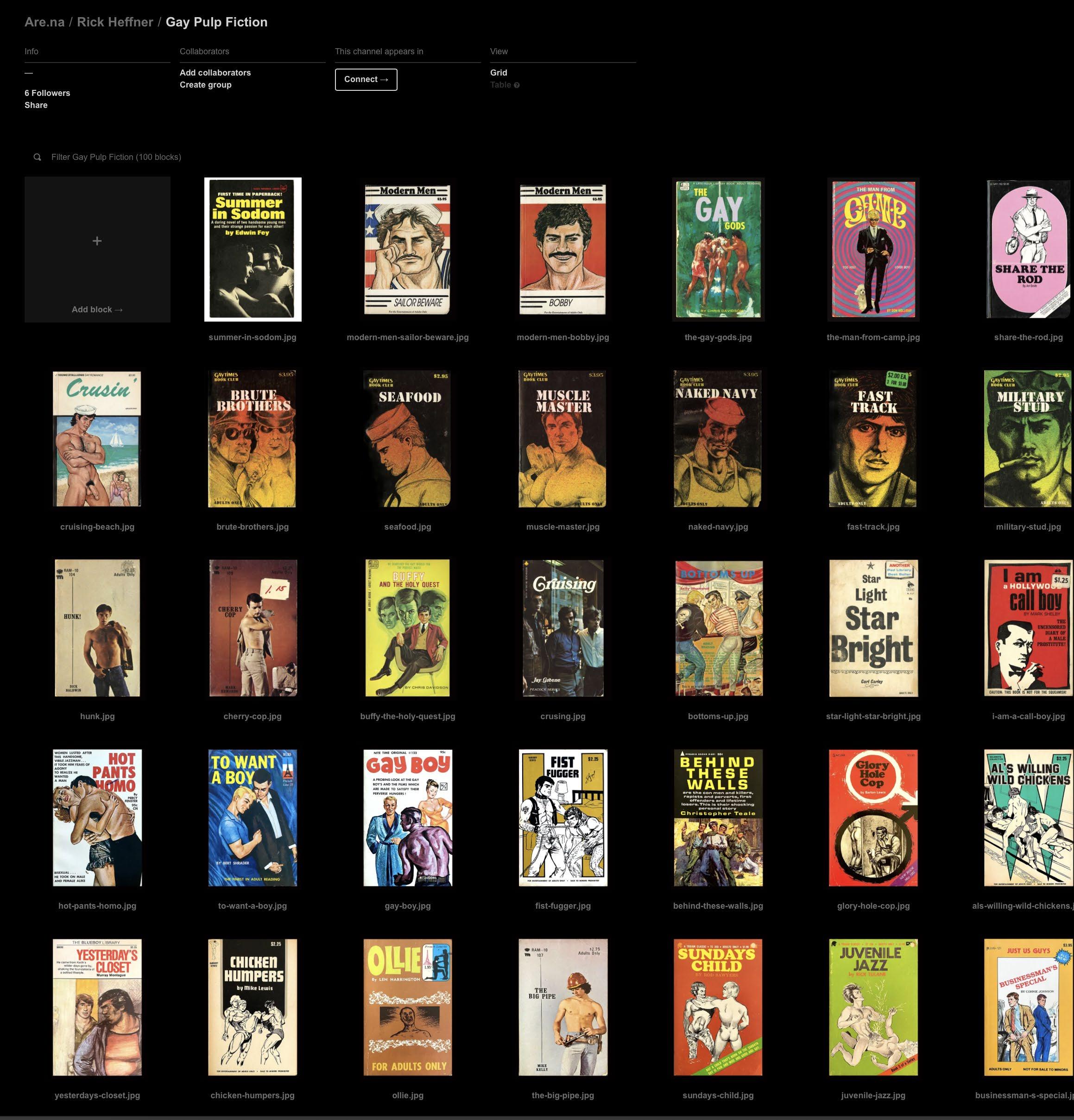

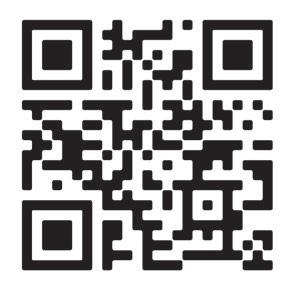
My thesis also includes a full archive of my collection. Are.na is an online social networking community and creative research platform.
It allows users to compile uploaded and web-clipped "blocks" into different "channels."
As of the printing of this thesis, my archive currently consists of approximately four hundred items, in the following twelve channels:
AIDS Awareness Artists
Bob Mizer Films
Books
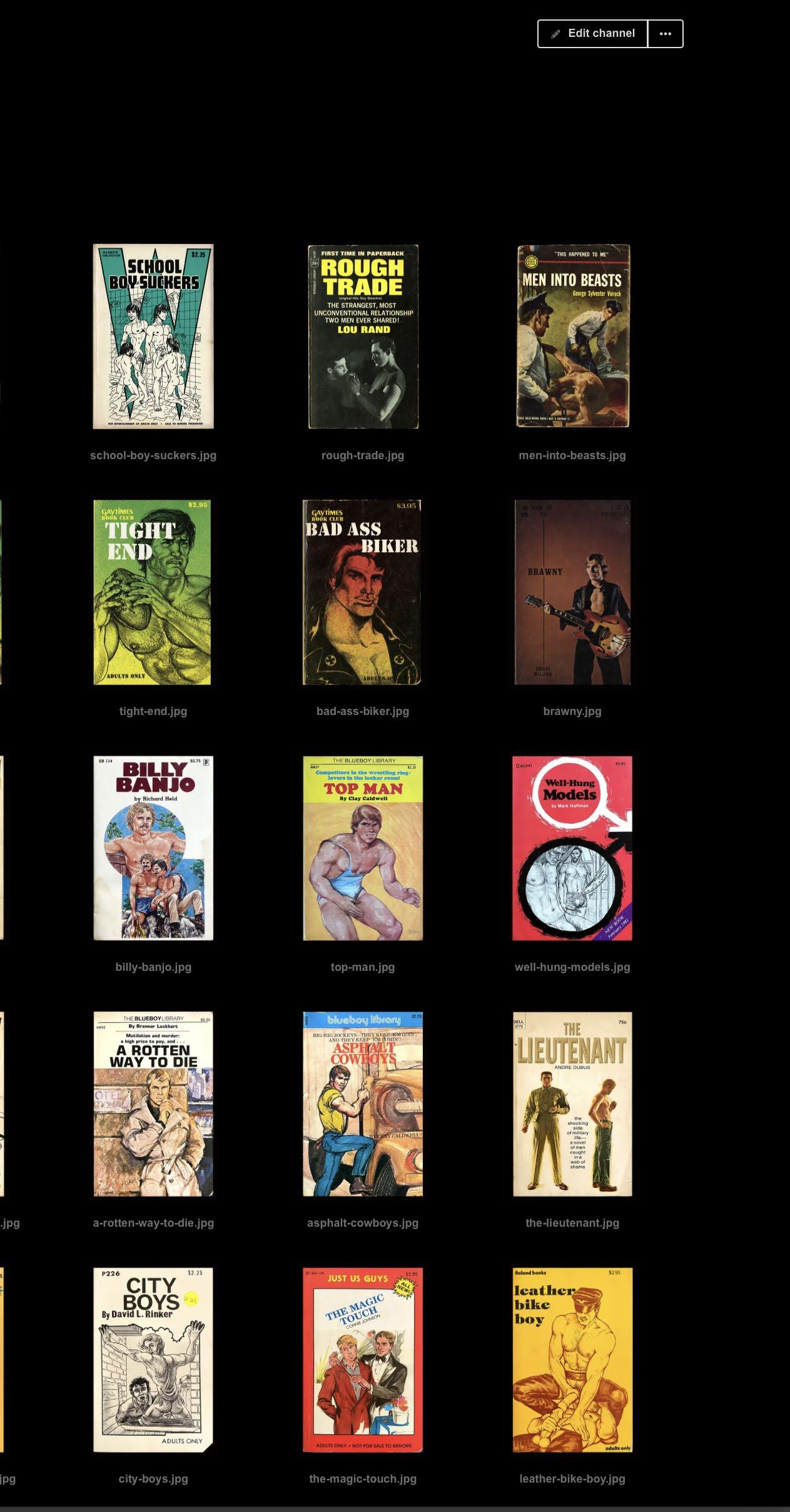
Gay Pulp Fiction
Homoeroticism in Advertising
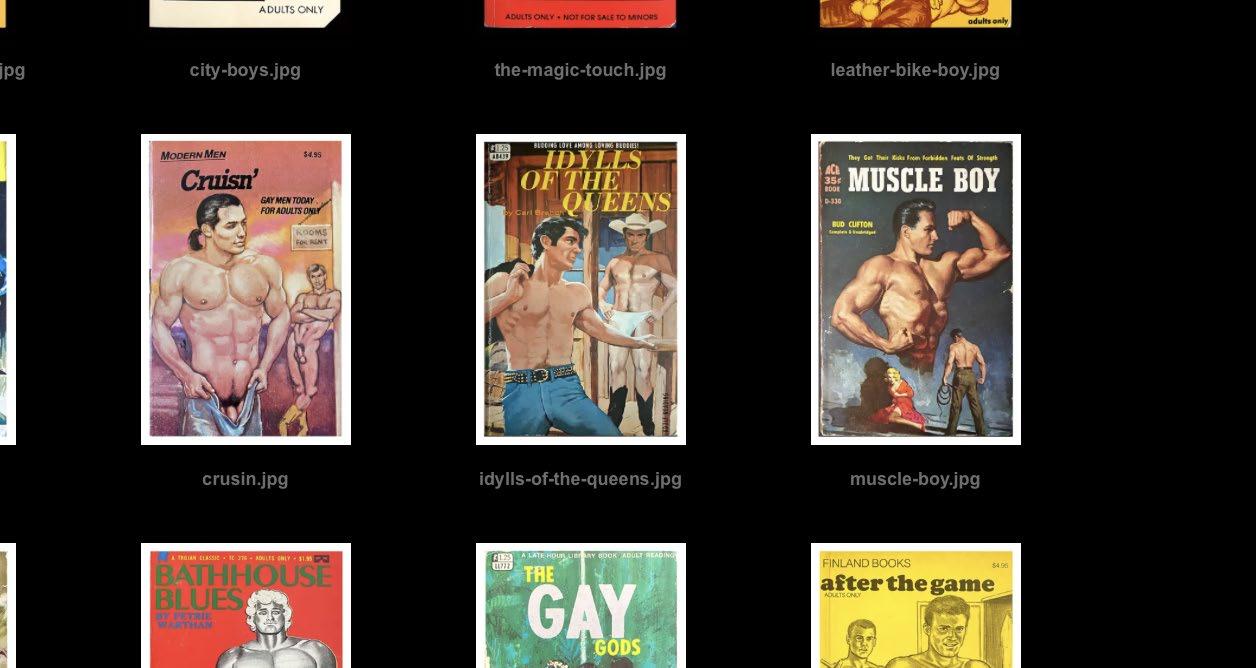
Miscellaneous
Newspaper Ads
Physique Culture
Physique Pictorials
The Male Figure Web Links
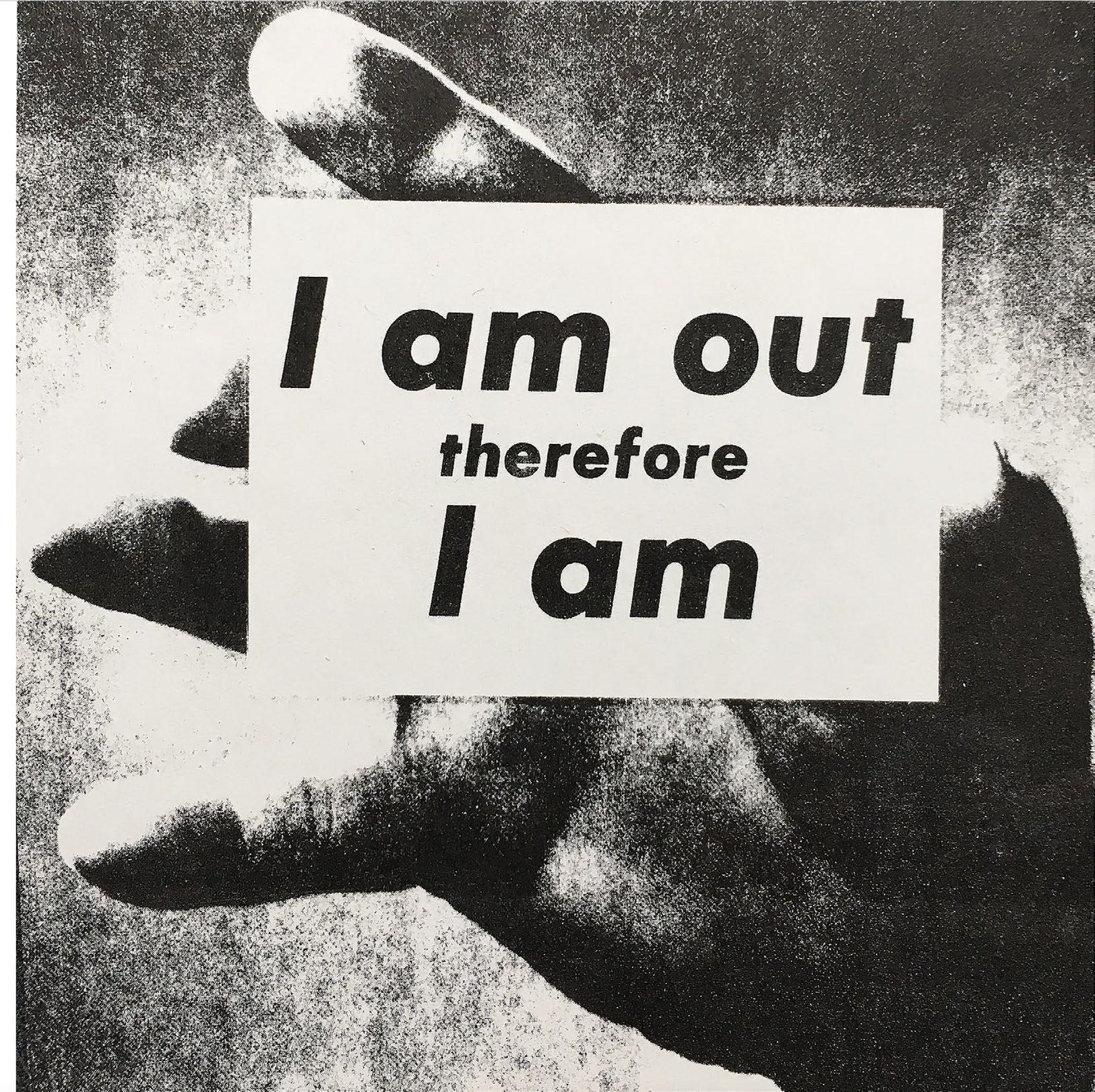
The past year has seen a resurgence of white supremacy, far-right nationalism, evangelical vitriol, and an ever-growing rash of anti-LGBTQ+ legislation and violence. "Family values," "parents' rights," and other dog whistles for homophobia and transphobia are being used to rally rightwingers, many of whom want nothing less than a total eradication of queer people.
It’s conservative America’s latest spin on its roulette wheel of hate. Spin. Spin. Spin. Who do we pick on now?
There's been a rise in shootings at queer bars and clubs. It’s illegal to say the word "gay" in Florida classrooms. Southern states are banning drag shows and vilifying queens as “groomers.” Transphobia is rampant, and gender-affirming healthcare is being attacked by those who don’t know the first thing about the science involved. Books with queer characters are being ripped from school library shelves. Teachers have had to remove pictures of their same-sex family members, displays of rainbow imagery, and "safe space" stickers from their classrooms. Renewed calls to repeal same-sex marriage have been made across multiple levels of our government, from state legislatures to the Supreme Court.
Bit by bit, we’re being pushed back into the closet.
I didn't set out to research and design a book dedicated to gay design history. My initial vision was a large coffee table book showcasing my muscle-bodied ephemera alongside a few slices of the history I was never taught in school. (I honestly can't remember a single moment in queer history ever being taught in any of my classrooms.)
But slowly, this thesis evolved into a substantial piece of visual storytelling. One that traces how postwar gay men found their identity and built a community. How queer print culture ignited gay consumerism while fighting censorship laws at every turn. How gay artists and photographers used books, magazines, pamphlets, and posters as means to not only showcase their artistic talents, but also to introduce the gay lifestyle to the public at large. How gay men developed secret codes for sex and survival. How heroes like Frank Kameny, Harvey Milk, Marsha P. Johnson, and the members of ACT UP refused to be silent in the face of prejudice and oppression.
The process of putting together this book was, truly, an act of "cruising." Although I wasn't on the prowl for sex, I was (and still am) addicted to growing my collection. I wandered anonymously and aimlessly with minimal eye contact through antique bookstores and yard sales, hoping to find my next conquest. There was no methodological process. My role went beyond that of a graphic designer. Some days I was a researcher— other days, a collector, curator, or archivist.
I hope this thesis helps at least one person who’s struggling with their identity to feel less alone—or educates one person about the gay community’s continuous fight for respect and equal rights.
I want my collection to become an accessible archive that preserves our history, rather than being tossed into the fire. We need to reflect on the history and meaning of the pink triangle now more than ever. It's time we revive it as an interconnected manifesto that queer people have the right to representation, equal rights, and respect. We have every right to be here and must fight like hell for it.
The pink triangle warns us what can happen if we don't. ▼
Braidwood, Ella. 2021. “Holocaust Memorial Day: How the Nazi pink triangle became a defiant symbol of gay rights.” PinkNews, January 27, 2021. https://www.thepinknews.com/2021/01/27/ holocaust-memorial-day-pink-triangle/.
Fordham University. “Nazi Germany: Paragraph 175 and other sexual deviance laws.” Internet History Sourcebooks Project. Accessed March 28, 2023. https://sourcebooks.fordham.edu/ pwh/para175.asp.
Homocore Zine. 1988–91. Digital archive. Accessed March 28, 2023. https://www.sr-ix.com/Archive/HOMOCORE/.
International Center for Nazi Persecution. “Nazi persecution of queer people.” Arolsen Archives. Accessed March 28, 2023. https://arolsen-archives.org/en/about-us/statements/nazipersecution-of-queer-people/.
Jensen, Mie Astrup. 2021. “LGBTQ+ History Month: gay victims and survivors of the Holocaust are often forgotten – we need to tell their stories.” The Conversation, February 24, 2021. https://theconversation.com/lgbtq-history-month-gay-victimsand-survivors-of-the-holocaust-are-often-forgotten-we-needto-tell-their-stories-154417.
Klein, Dirk de. “Category Archives: Homosexuals.” History of Sorts (blog). Accessed March 28, 2023. https://dirkdeklein.net/ category/homosexuals/.
Marhoefer, Laurie. 2018. "Why the Myth of the 'Gay Nazi' Is Back in Circulation." Slate, August 24, 2018. https://slate.com/humaninterest/2018/08/gay-nazi-myth-why-dinesh-dsouzas-misuseof-history-is-so-galling.html.
Mulcahy, Siobhan Pat. 2016. "'The Peculiar Sex Life of Adolf Hitler' offers insight into the dictator's gay partners." Irish Examiner, April 7, 2016. https://www.irishexaminer.com/lifestyle/arid20391500.html.
Mullen, Matt. 2019. “The Pink Triangle: From Nazi Label to Symbol of Gay Pride.” History Stories, June 3, 2019. https://www.history. com/news/pink-triangle-nazi-concentration-camps.
ONE Archives Foundation. “Days of Rage.” Accessed March 28, 2023. https://daysofrage.onearchives.org/.
Schelly, Bill. 2018. “The gay appeal of superheroes.” Salon, April 1, 2018. https://www.salon.com/2018/04/01/the-gay-appealofsuperheroes/
Soulellis, Paul. 2021. "What is queer typography?" Presented at Type Drives Communities Conference, May 7, 2021. https:// soulellis.com/writing/tdc2021/.
Stroude, Will. 2019. “The untold gay stories of Auschwitz.” Attitude, January 21, 2019. https://www.attitude.co.uk/culture/ sexuality/the-untold-gay-stories-of-auschwitz-298061/.
Tse, Chris. “Holy homoerotica, Batman!” Museum of New Zealand, Te Papa Tongarewa. Accessed March 28, 2023. https://www.tepapa.govt.nz/discover-collections/ readwatch-play/history/lgbtqi-histories-aotearoanew-zealand/ holy-homoerotica.
United States Holocaust Memorial Museum. “Austrian Prisoners in Dachau.” Accessed March 28, 2023. https:// encyclopedia.ushmm.org/content/en/photo/austrianprisoners-in-dachau.
United States Holocaust Memorial Museum. “Classification System in Nazi Concentration Camps.” Accessed March 28, 2023. https://encyclopedia.ushmm.org/content/en/article/ classification-system-in-nazi-concentration-camps.
United States Holocaust Memorial Museum. “Gay Men under the Nazi Regime.” Accessed March 28, 2023. https:// encyclopedia.ushmm.org/content/en/article/gay-menunder-the-nazi-regime.
Zagria. 2016. “Berlin's Eldorado. Part II: 1928–33.” A Gender Variance Who's Who (blog), April 30, 2016. https://zagria. blogspot.com/2016/04/berlins-eldorado-part-ii-1928-33. html#.Y2c5Oi-B0sM.
Epstein, Rob, and Jeffrey Friedman, dir. Paragraph 175. 2000. Fitzgerald, Thom, dir. Beefcake. 1998.
France, David, dir. The Death and Life of Marsha P. Johnson. 2017. Gilbert, Brian. Wilde. 1997.
Karukoski, Dome, dir. Tom of Finland. 2017. Livingston, Jennie, dir. Paris Is Burning. 1990.
Mason, Rachel, dir. Circus of Books. 2019. Oswald, Richard, dir. Different from the Others (Anders als die Andern). 1919.
Rossi, Andrew, dir. The Andy Warhol Diaries. 2022. Van Sant, Gus, dir. Milk. 2008.
Lemmey, Huw, and Ben Miller. Bad Gays. Podcast audio. https://badgayspod.com/.
Marcus, Eric. Making Gay History. Podcast audio. https://makinggayhistory.com/.
Page, Morgan M. One from the Vaults. Podcast audio. https://www.patreon.com/oftv.
Pfeffer, Leigh. History Is Gay. Podcast audio. https://www.historyisgaypodcast.com/.
Borhan, Pierre. 2007. Men for Men: Homoeroticism and Homosexuality in the History of Photography Since 1840. London: Random House/Jonathan Cape.
Bronski, Michael. 2003. PULP Friction: Uncovering the Golden Age of Gay Male Pulps. New York: St. Martin’s Griffin.
Bronski, Michael. 2011. A Queer History of the United States. Boston: Beacon Press.
Chapman, David, and Brett Grubisic. 2013. American Hunks 1895–1975 Vancouver: Arsenal Pulp Press.
Chapman, David, with Douglas Brown. 2013. Universal Hunks: A Pictorial Story of Muscular Men around the World, 1895–1975. Vancouver: Arsenal Pulp Press.
Charles River Editors. 2015. The Stonewall Riots: The History and Legacy of the Protests That Helped Spark the Modern Gay Rights Movement Scotts Valley, CA: CreateSpace (independent publishing platform).
Collins, Max Allan, and George Hagenauer. 2008. Men's Adventure Magazines: In Postwar America Cologne: Taschen.
Crimp, Douglas. 1990. AIDS Demo Graphics Seattle: Bay Press.
Cutler, Laurence S., Judy Goffman Cutler, and The National Museum of American Illustration. 2008. J.C. Leyendecker. New York: Abrams Books.
Delany, Samuel R. 1980/1999. Times Square Red. Times Square Blue. New York: Alyson Books/New York: New York University Press.
Finkelstein, Avram. 2018. After Silence: A History of AIDS through Its Images. Oakland: University of California Press.
Henwood-Greer, Eric. 2016. “Gay Male Pulp Fiction of the 1960s: From the Drugstores to the Stonewall Riot.” The Albatross 6 (2016): 30–36. https://journals.uvic.ca/index.php/albatross/ article/view/18142.
Herger, Heinz. 1994. The Men with the Pink Triangle: The True Life-and-Death Story of Homosexuals in the Nazi Death Camps. New York: Alyson Books.
Johnson, David K. 2006. The Lavender Scare: The Cold War Persecution of Gays and Lesbians in the Federal Government. London/New York: The University of Chicago Press.
Johnson, David K. 2021. Buying Gay: How Physique Entrepreneurs Sparked a Movement. New York: Columbia University Press.
Lupton, Ellen, Farah Kafei, Jennifer Tobias, Josh A. Halstead, Kaleena Sales, Leslie Xia, and Valentina Vergara. 2021. Extra Bold: A Feminist, Inclusive, Anti-racist, Nonbinary Field Guide for Graphic Designers. New York: Princeton Architect Press.
Mizer, Bob, photographer. 2007. Bob Mizer: Athletic Model Guild—American Photography of the Male Nude 1940–1970, Volume VII. Chicago: Janssen Publishers.
Peters, Troy, and Griff Williams, eds. 2019. Hal Fischer: The Gay Seventies. San Francisco: Gallery 16 Editions.
Plant, Richard. 1988. The Pink Triangle: The Nazi War Against Homosexuals. New York: Henry Holt and Company, LLC.
Pyper, Nate. 2019. “Dumpster Diving Into the Wreck: Mapping a Queer Past in Future Tense.” Amalgam II (2019).
Sontag, Susan. 1964. “Notes on ‘Camp.’” London: Penguin Books Limited.
Stryker, Susan. 2001. Queer Pulp: Perverted Passions from the Golden Age of the Paperback San Francisco: Chronicle Books, LLC.
Vidal, Gore. 1983. Pink Triangle & Yellow Star: And Other Essays (1976–1982). London: Granada Publishing Limited.
Waugh, Thomas. 2002. Out/Lines: Gay Underground Erotic Graphics from before Stonewall. Vancouver: Arsenal Pulp Press.
Young, Ian. 2012. Out in Paperback: A Visual History of Gay Pulps. New York: MLR Press.
RIGHT: Original vintage pinback button for the Groovy Guy contest held in San Francisco in 1974. Side curl reads Dave Valentine, San Francisco. Measures 1.5" inches.
The Groovy Guy contest was started by Sam Winston in 1968 as a marketing tool for the then newly formed Advocate magazine. It was intended to be a way to unite the Los Angeles gay community around a contest that moved away from drag events. The contest pitted scantly clad male hunks as to who would be the grooviest beefcake in all of San Francisco.
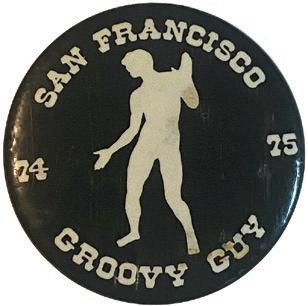
American Experience (PBS). "Milestones in the American Gay Rights Movement." Accessed March 28, 2023. https://www.pbs.org/wgbh/ americanexperience/features/stonewallmilestones-american-gay-rights-movement/.
CNN Editorial Research. 2022. "LGBTQ Rights Milestones Fast Facts," CNN.com, October 23, 2022. https://www.cnn.com/2015/06/19/us/ lgbt-rights-milestones-fast-facts/index.html.
GLSEN. "LGBTQ History Timeline Reference" (PDF). Accessed March 28, 2023. https://www.glsen. org/sites/default/files/LGBTQ-History-TimelineReferences.pdf.
Our Family Coalition and ONE Archives Foundation. "LGBTQ Rights Timeline in American History." Accessed March 28, 2023. https:// www.lgbtqhistory.org/lgbt-rights-timeline-inamerican-history/.
Reuters Staff. 2015. “Timeline: Key events in the history of U.S. gay rights.” Reuters.com, April 28, 2015. https://www.reuters.com/article/ us-usa-court-gaymarriage-rights/timelinekey-events-in-the-history-of-u-s-gay-rightsidINKBN0NJ1G020150428.
101 Enterprises, Inc. 267
A Taste of Leather 74
Athletic Model Guild
CCaldwell, Clay 22, 35
AAbercrombie & Fitch 149
abstract 1
ACLU 211
activism 193
activists 233
ACT UP 203, 233, 236, 238, 239, 240, 241, 283
A Day Without Art 243
Adobe 21
Adonis 103
Adult Books 22
advertisements 167
advertising 41, 50, 82, 133, 138, 181, 235, 236, 281
Africa 206
African American 137
AH MEN 261
AIDS 11, 51, 135, 191, 203, 222, 231, 233, 236, 237, 238, 239, 240
AIDS Awareness 231, 281
AIDS Coalition to Unleash Power 203, 233
AIDS crisis 239
AIDSGATE 236
Air Force 154
alias 137
All Star Books 26
America 43, 51, 75, 122, 219
American 57, 73, 74, 122, 125, 131, 137, 138, 141, 142, 149, 151, 152, 181, 199, 209, 219
American Art Archives 144
American Art Enterprises, Inc. 22, 33
American Association for World Health 231
American Civil War 19
AMG 125, 197
Andrimont 106
Amory, Richard 19, 32
annihilation 203
archetype 55
archive 283
archivist 9
Are.na 281
Argyle Book Company 32
Armed Services Editions 15
Army 152, 154, 156
Arrow Collar Man 138, 142
Arrow shirts 142
iii, 8, 44, 57, 77, 79, 81, 88, 89, 90, 92, 93, 98, 101, 125,129
Atlantic City 278
Atlas, Charles 120
BBad Gays 9 Baker, Gilbert 204 bandana 193
Banis, Victor 17
Barnett, Murray 133 bathhouse 75, 135
Batman 6
Baton Rouge 46
BDSM 75, 193
Beach, Charles 142, 145, 149
beach culture 82, 120
beefcake 19, 46, 57, 66, 77, 82, 88, 120, 125, 137, 196
Beefcake magazine, 130, 112
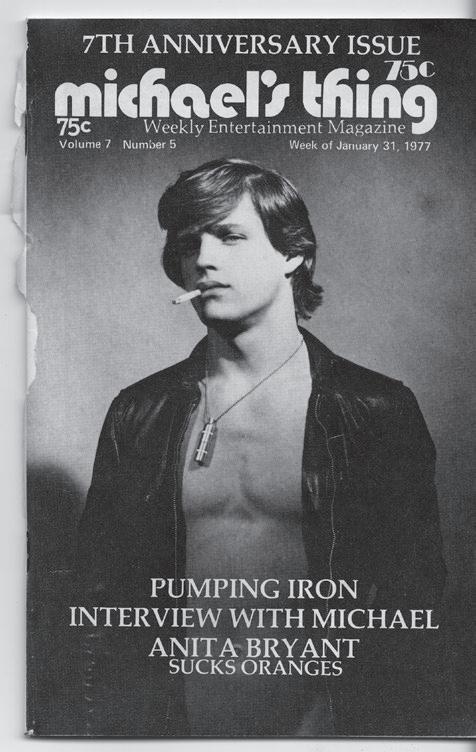
Belgian 106
Bellas, Bruce 82, 130, 131
Bernhard, Paul 215
Berry, Timo 53
Big Sig 66
Bill the Hun 66
Blueboy Library 35
Bob Mizer Foundation
Archives 124, 128
Bob Mizer Foundation, Inc. 129
Bob’s World 197
bodybuilder 82
bodybuilding 112, 130
bodybuilding culture 88
Bogart, Humphrey 145
BOLT 75
bondage 73, 193
Boston Eagle 193
Boucher, Roan 221 bouquet 206
Boyce, Martin 221
Boy Scout 137
Branch, Carl 26 branding 41
Brando, Marlon 145
Brandon House 26
Breaker, Dan 32
Breakfast Nooky 61
British 145
calendar 52
California 57, 5, 156
California State Assembly 229
Camel 174
camp 199
Canadian 130
cancer 51
Cannon Towel Company
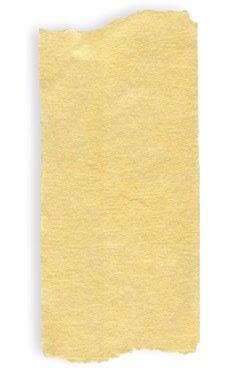
158, 159, 160, 161, 162, 163
catalog card 77
censorship 16, 17, 74, 75, 88, 112, 138,214, 283
Centers for Disease
Control 231, 241
Charles River Editors 221
Chesterfields 174
chiaroscuro 122
Chicago 61, 135
Chicago’s Leather Archives and Museum 66
Christopher Street 7, 9, 219, 220, 279
City Hall 229
civil rights 82, 208, 209, 211, 219
Civil Service Commission 209
Clinton, Bill 209
Cochran, Bob 33
Cohn, Roy 209
cocky 55
Coco Chanel 188
code 197, 206, 219
coded language of flowers 206
codes 17, 196, , 191, 283
Cold War 82 collecting iv
Collier's 141, 44, 149
Colman, Curt 33
Comic, Gay 65, 66
Colt 157
coming out 199
commercial artist 74 community 19, 219, 227, 283
concentration camps 202, 203
Congress 238
Conte, Roger 132
Cook, Don 261
Cooper Black 21
Michael's Thing, January 31, 1977
vol. 7, number 5
Michael's Thing, Inc. New York, NY
Art Workers Coalition 241
ASE 15, 16
Asia 206
assassinated 229
A Sunday on La Grande Jatte 75
Bruce of Los Angeles 51, 112, 113, 115, 120, 130, 132, 133
Bryan, Dan 26
Burnette, Leo 174
Bush, George H.W. 235, 239
Bush, Harry 41, 57 butch 55, 152, 199
Cooper, Gary 145
Cooper, Oswald Bruce 21
copyright 88
Coral Reef 44
Corley, Carl Vernon 19, 32, 46
Corinth Publications, Inc.
17, 26, 32, 33
cottages 74
cottaging 198
Council on Books in Wartime 15
cross-dressing 219
cruising 193, 283
Crystal Beach 82
curator 1, 9, 283
DDale, Dick 23
Dallesandro, Joe 130
Dashing 42
David 186
Davidson, Chris 19, 22, 33
Davis, Duane 33
D-Day 15
Dean, James 145
decoder list 193
defamation 197
Dehner, Durk 51
Dell Publishing Company 33
Derosa, Tony 7, 279
Designing Queer History 208, 210, 212, 214, 216, 218, 222, 226, 228, 232, 236, 238, 240
Dexter, John 33
Digital collage iii, 41, 83, 85, 121, 191
dirty pictures 51, 25
discrimination 209, 219, 229
Dohanos, Stevan 158, 159, 160, 161, 162, 163
Don’t Ask, Don’t Tell 209
Douglas, Alfred 207
Douglas, Dean 27
Douglas, Ray Jr. 26
Douglas, Lord Alfred 207
Douglas of Detroit 120
drag queen 125, 137, 204, 222, 227
Driver, Carl 23
Drummer 57, 59, 73, 75
Dubus, Andre 33
Dungeons & Dragons 6
Dunn, Mark 27
EEckert, Donald 229
ecstasy 66
Eero 55
Egyptian 196
Ehmke, Ralph 137
Eisenhower, Dwight D. 209
Ellis, Cliff 23
Emmy Awards 61
emphysema 51, 57
Encounter Books 22
ephemera 283
Eros Publishing Company, Inc. 26
erotic 46, 66, 73, 82, 112, 122, 133, 137, 145, 152
erotica 61
eroticism 151
Etienne 41, 51, 61, 88, 135
Europe 57, 74, 206
Evans, Jack 27
excessive genital delineation 135
Executive Order 10450 209
FFalkon, Felix Lance 61
Fallen Eagle 46
Fawcett Publications, Inc. 27
felixdeon.com 193
female impersonator 125
fetish 21, 193
Fey, Edwin 32
Finkelstein, Avram 241
Finland, Tom of 41, 43, 49, 51, 52, 55, 61, 74, 88, 151, 188
Finnish 50, 53
First Niter Books, Inc. 33
Fischer, Hal 11, 19
fisting 193
Florida 283
Floriography 206
Folsom Street 74
Food and Drug Administration 240, 241
Forrest, Floyd de iii
frat boys 41
French Line 46
Friend of Dorothy 16
Frisby, Lyle 132
full-frontal nudity 88
Furlow, Jerry 261
Fury, Gran 203, 235, 240, 241
GGable, Clark 145
Garsou, Henri 106
Gaultier, Jean Paul 188, 189
gay 61, 120, 209, 210, 211, 222
Gay Activists Alliance, 215
gay art 61
gay community 17, 138, 204
gay consumerism 283
gay culture 74
Gay Freedom Day 204
gay liberation 135, 191, 215
Gay Liberation Front 215
Gaylord, Mitch 186
gay periodicals 57
gay plague 236
gay porn 75
Gay Pride 7
Gay pulp fiction 10, 16, 17, 281
Gay pulps 10, 16
gay rights movement 17, 222
Gay Semiotics 11, 195
gay subcultures 141
Gay Way 33
genocide 236
Germany 203
Gernreich, Rudi 215
Gibson, Charles 142
Gibson Girl 142
Ginger Rogers Beach 82
Giorno, John 243
Gittings, Barbara 9
GLBT Historical Society 204
Gohr 66
Gohr: A Tale of the New Age 70
Golden State News 21, 23
Golebiowski, Mark 238
good life 82
Grant, Cary 145
Great Britain 199
Greco-Roman 137
Greece 122
green carnation 206
Green, Jay 23
Greenleaf Classics 19, 23, 26, 32, 35, 61
Greenleaf Press 17
Greenwich Village 11, 74, 211, 219
Gruber, John 215
Guerrilla Girls 241
Guild Press 19, 107
Gunnison, Foster 9
Gunsmoke 181
GX, Inc. 32, 33
HHamburg, Germany 51
Hanagan, Alonzo James “Lon” 137
Hanson, Dian 197
hanky code 193
Hardin, Ty 127
Harrington, Mark 240
Harry Hay Papers 215
Heffner, Rick iii, 15, 39, 41, 83, 85, 121, 138, 191, 289
"He Kills Me" 238
Held, Richard 22
Helsinki 50, 51, 55
Hesse, Paul 150
heterosexuality 61
hieroglyphics 196
Hinckle, Doug 237
Hitchcock, Alfred 3
HIV 203, 222, 231, 233, 237
HIV/AIDS 193
Hoffman, Mark 35
Holliday, Don 33
Hollywood 75, 122, 125, 150
Hollywood Pride parade 279
homoerotic 41, 43, 57, 82, 88, 120, 125, 138, 141
homoeroticism 138, 154, 281
Homophile Movement 211
homophobe 186
homophobia 141, 233, 235, 283
homophobic 75, 209
homosexual 9, 16, 17, 19, 57, 74, 120, 141, 202, 209, 211, 215, 219, 220, 227, 241
homosexuality 7, 16, 17, 112, 138, 141, 199, 203, 209, 214, 233
Howard, Brian 241
Hudson River 222
Hughes, Madison 33
Hull, Bob 215
Hun Comics 66
Hurles, David 75
Hurrell, George 133
hustlers 122
hypermasculine 151
hyper-masculinity 50
Iidentity 193, 283
Illinois Ballet Company 61
International Federation of BodyBuilders 130
International Lesbian and Gay Freedom Day
Parade 204
International Male 261
International Mr. Leather 135
interracial 75
intersex 204
In Touch 57
Italian 199
Italian-American 120
Ivy League college 145
JJacobs, Edward R. 23
Jehovah's Witnesses 203
Jemima, Aunt 6
Jennings, Dale 215
Jews 203
Johnson, Irvin Health
Studios 103
Johnson, Connie 22, 33
Johnson, Marsha P. 11, 222, 283
Jorgensen, Christine 135
Joseph, Stephen 240
Juilliard School 137
Julius' 211
KKake 55
Kameny, Frank 209, 283
Kemp, Earl 17
Kenzo 188
Kinsey, Alfred 290
Kinsolving, Lester 236
Klein, Calvin 120, 183, 187
Kodak 137
Kovert, Frederick 125
Kreloff, Charles 241
Kris Studio 135
LLady Windermere’s Fan 206
Lamb, Larry 125, 129
L.A.P.D. 125
Latino 137
"Learn to Operate a $7,000,000 Sub" 151, 152
leather 73
leatherman 55
leathersex 73
leatherwear 73
Leitsch, Dick 11, 211
Le Male 189
Lennon, John 150
Le Salon 33
lesbian 203, 209, 211, 219
Lester, Lance 23
Lewis, Barton 26
Lewis, Mike 23
Levy, Martin 26
Leyendecker, J. C. 138, 141, 142, 145, 149
LGBTQ+ 204, 206, 209, 222, 283
liberation 203
LIFE magazine 158, 159, 160, 161, 162, 163
Lione, Chris 241
Liotta, Louis 211
flip-top-box 174
liquor licenses 211
Laaksonen, Touko Valio 50
London 74
Long Island National Cemetery 156
Lon of New York 51, 82, 120, 137
Lon Studios 136
Los Angeles 51, 125, 132, 133, 215
Los Angeles Postmaster 214
Luckhart, Brenner 22
Lucky Strike 174
Lyle Studio 132
MMacCullum, Jack 73
machismo imagery 151
Mac Lane, William 77
Madonna and Child 152
mafia 219
Magnus Hirschfeld 7
mail-order 120, 193, 261
Mäkinen, Veli “Nipa” 50
Male Model Parade 137
Male Nudist Review 103
male pin-up 120
Male Pix 137
Mann, Tom 231
Man's World 110
Man's World Publishing Co., Ltd. 110
Mapplethorpe, Robert 51, 131
Marines 152, 154
Marlboro 174
Marlboro Man 138, 174
Mars 134, 135
Mars Publishing 134
Martin, Damon 27
masculinity 61, 73, 151, 152
Master and Mate 77
Masthead 88
Mattachine Review 212
Mattachine Society 11, 211, 214, 215
Maverick 181
McCarthyism 215
McCarthy, Joseph 10, 209
McCune, Bob 112, 115
McDarrah, Fred W. 9, 11, 211, 219, 224
Meatmen 66
Mediterranean 137
Men and Art 102, 137
Michaels Jr, Malcolm 222
Michelangelo 41, 186
midcentury 130
mid-twentieth-century 112
Midwood Enterprises, Inc. 23
Miksche, Mike 73
Milk, Harvey 11, 204, 228, 229, 283
Milo, Pat 132
Miller, Marcus 33
Mineshaft 74, 75
Mississippi 46
Bob Mizer iii, 43, 51, 57, 82, 88, 120, 125, 129, 188, 196, 281
Moffett, Donald 238
moiré 16
Moore, Martin 35
Morris, Philip 174
Moscone, George 229
Mr. America 154, 155, 156, 157
Mr. Sun 57
Munro, Gordon 183
Muscle Beach 82, 125
muscle magazines 120, 122, 130
Muscles 106
Museum of Modern Art 238
Naplie, Joe 197
National Gay and Lesbian Archives 215
National Library Books 26
National Portrait Gallery, London 206
National Security Agency 209
Native Americans 19
Navy 154
Nazi 16, 203
Nazi Germany 203, 241
Nebraska 130
New Orleans 46
New York 51, 74, 137, 141,
156, 211, 215, 219, 222, 241
New York City Commissioner of Health 240
New York Police Department 219
New York Post Archives 211
New York State Liquor Authority 211
Norton, W. W. 15
NSA 209
NYPD 219, 220, 222
obscene materials 135
obscenity 57, 88, 122, 132, 135
Old Reliable 75
Oliver Johnson 236, 241
One Incorporated 214, 217
ONE, The Homosexual Magazine 214, 215, 217
oppression 203
Orejudos, Dom 61, 135
PPad Library 32, 33, 46
Paragraph 175 203
Paris 74
Paris, Jim 124
Parisian Press 23
pastel 51
Patrick, James 132
Peace Press 7, 279
Peak Condition 186
Pennsylvania Railroad 1, 169
Percy Fenster 26
Perversion for Profit 290
phallic 152
Phenix Publishers, Ltd. 23, 33
Philadelphia Office of LGBT Affairs 204
physique culture 19, 61, 82, 83, 120, 196, 281 physique magazines 46, 10, 88, 120, 132, 133, 135, 137
physique photography 120, 137
Physique Pictorial iii, 43, 44, 51, 57, 77, 79, 81, 88, 89, 90, 92, 93, 98, 101, 120, 124, 127, 196, 197, 281
pink triangle 191, 202, 203, 241, 283
pissoirs 74
Playboy 7
Pleasure Chest 75
Pointed Pistol 129
pointillist 75
Polari 199
pooper scooper law 229
pornographic 16, 19, 88
pornography 19, 138
Portland 204
posing straps 122, 125, 135
postal stamp 53
poster 233, 239
postwar 9, 106, 209, 283
Potomac News Company 19
Poulton, Elmer Antone 156
Poulton, Nelson 156
Poulton, Peter 154, 155, 156, 157
"Pour It On!" 151, 152
Presidential Commission on the HIV Epidemic 238
Price, Garrett 151 pride 203, 204
Princeton Antiques Book Store 278
prostitutes 203
prostitution 197
protests 219
Pruzan, Robert 204
pseudonym 17, 57, 66, 120 public domain 88
public sex 198
Publishers Export Co., Inc. 19, 23, 27, 34, 46 pulp fiction 17, 46
Putnam, George 290
Pyramid Books 22
QQuaintance, George 41, 42, 43, 57, 88, 105
Quasar, Daniel 204
queen 199
queer 125, 203, 209, 219, 222, 227, 283
queer community 199
queer print culture 283
RRabb, Ernie 129
racism 122
Radio City Music Hall 137
Raggedy Ann 6
Rainbow, Faerie Argyle 204
rainbow flag 191, 204
Rand, Lou 32
Rapidiograph 75
Raymond, Rick 33
Read My Lips 235
"Ready, Join U.S. Marines" 151, 152
Reagan, Ronald 233
Recruitment posters 151
Reeves, Steve 131
Reilly, Frank 1, 169
Reliance Men's Shorts 167
Renaissance 152
Renslow, Charles 61, 134
researcher 9
Rettenmund, Matthew 137
Rex 73, 74
riah 199
Rinker, David L. 23
Ritts, Herb 131
Rivera, Sylvia 222
Roberts, Pudgy 267
Rockwell, Norman 144, 145, 149
Rodwell, Craig 9, 11, 211
Rogers, Peter 183
Rolling Stone 183, 186
Roman 125
Romani 203
Rome 122
Roosevelt, Franklin D. 15
Rough Trade 75
Round the Horne 191
Rowland, Chuck 215
SSabàto Jr., Antonio 120, 187
Sachsenhausen, Germany 202
sadomasochism 66, 75, 193
S&M 73, 74, 75
sailor 188
same-sex 283
Sandow, Eugene 8, 9
San Francisco 51, 74, 141, 195, 204, 212, 215, 229, 240
San Francisco Board of Supervisors. 229
San Francisco Society for Individual Rights 215
Santa Monica 82, 125
Saugus, California 125
Sawyers, Rod 32
scatology 66
Schiffers, Franz Oswald 153
Schlaikjer, Jes Wilhelm 152
Schmeling, Bill 65, 66, 67, 70
Sears 120
Seattle, Washington 77
secret codes 196
secret identities 191
secret language 199
security clearance 209
Segerblom, Lynn 204 segregation 122
serial killer 239
"Service Above Self" 152
Seurat, Georges 75
sexual deviants 215
sexuality 141
Sexual Offences Act 199
sexual orientation 209, 211, 229
sexual perversion 209
sexual preference 196
Sharpe, Jack 32
Shelby, Mark 26
Shoemaker, Jamie 209
Shrader, Bert 34
Sibelius Academy 50
"Silence = Death" 203, 241
Silence = Death Project 236, 241
silent film 125
Simpson, Bart 23
Sip-In 11, 211
Smeall, Roger 134
Smith, Art 32
Smith, Howard 227
SoCal 82
Socarras, Jorge 241
soldiers 41
Soloflex 138, 186
Southern California 82
Soviet Union 82
Spartacus 79, 81, 188
Spartan Soldiers Bathing 43
Speakes, Larry 236
Speedos 138
Star Distributors, Ltd. 22, 23, 24, 26, 27, 28, 32, 36
STAR House 222
Star Models 136, 137
State Department 236
Stephen, 61
Stonewall 9, 10, 11, 17, 46, 191, 204, 219, 220, 227, 283
street trade 133
Street Transvestite Action Revolutionaries 222
Strength & Health magazine 137
stroke 57
Studio 54 Jeans 183
Studio 54: Night Magic 183
Studio Publishers 102, 136
subculture 17, 55, 74, 193
subjective character analysis 196, 197
substance abuse 196
suicide 222
super-masculine 55
Surrey House, Inc. 22, 27, 32
Swann Galleries 130
Sweets, Fred 236
"Swing It Brother!" 150
symbol 196, 204, 206
TTeale, Christopher 22
teashades 150
The Arrow Man 142
The Blueboy Library 22
The Castro 229
The Gay Seventies 11
The Government Has Blood on Its Hands 240
The House of Kuppenheimer 142, 143
The Hun 65, 66, 70
The Lavender Scare 10, 209
The Male Figure 112, 113, 115, 130, 281
The Marlboro Man 174
The Physical Man 87
The Points of Light Foundation 231
The Purge 209
The Rawhide Male 135
The Saturday Evening Post 141, 142, 143, 144, 146
The Tattooed Man 181
The Trading Post 75
The U.S. Postal Service 231
Third Reich 19
Thousand Model Directory 98
Timmins, John 11, 211
Todd, Eric 22
Tomorrow’s Man 61, 103
Torro 66
Touko 51
Townsend, Larry 33 trade 50
transgender 204, 222, 227 transphobia 283
transvestite 222
Trim 107
Trim Publishing Co. 107
Triumph 135
Triumph Gym 135
Trojan Book Service 103
t-rooms 74
True Towel Tales 158, 159, 160, 161, 162, 163
Truscot IV , Lucian 227
Tulane, Rick 26
twentieth century 43, 138, 141, 199
Twinkie defense 229
Two Loves 207 typography 21
Unique Books 22
United States 151, 153
University of California, Los Angeles 132
University of Wisconsin 186
uprising 219, 220, 227
Urho 50
U.S. 209
U.S. Air Force 57
U.S. Armed Forces 15
U.S. Army Medical Department 152
U.S. Army's Army Map Service 209
U.S. copyright law 88
U.S. Copyright Office 88
U.S. Government 152
U.S. Government Printing Office 151
U.S. Marine Corps 46, 151
U.S. Navy 151, 152
U.S. Navy Industrial Incentive Division 150
U.S. postal inspectors 125
U.S. Postal Service
17, 88, 231
U.S. Supreme Court 88, 214
RIGHT: Inspiration comes from everywhere, even the cruddy streets of Las Vegas, NV. Shown is my process of creating, Marilyn, a digital collage made with a collection of erotic escort cards and ads.
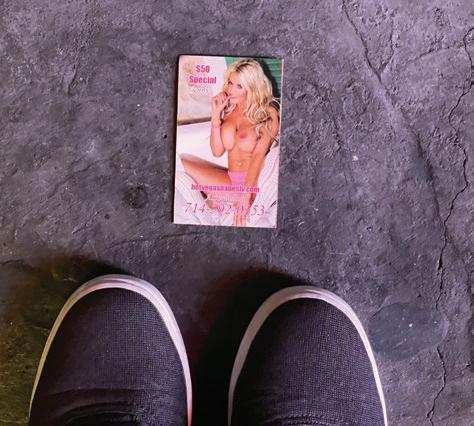

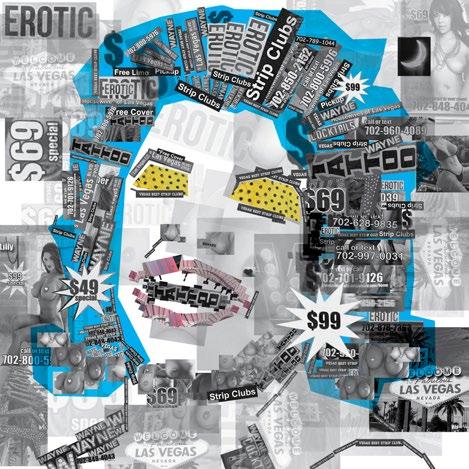
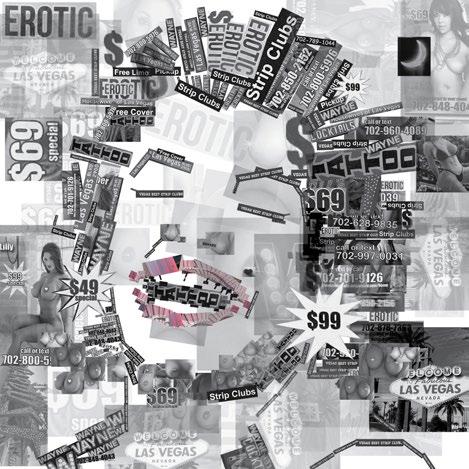
Vvada 199
Vanderbilt, Gloria 183
Vecchietti, Valentino 204
"VD, Delayed" 153
Veli 51
Vickery, Jay 23
Viereck, George Sylvester
16, 27
Vietnam War 219
Village Voice 227
Villarreal, Daniel 199
Visual Aids 243
VPL 135
WWahlberg, Mark 120, 186
Warhol, Andy 222
War Production Board 151
Warthan, Petrie 22
Washington, DC. 231, 236
W. & D. Downey 206
Weber, Bruce 131, 149
Weider, Joseph E. 85, 105, 154
Weiser, Joe 130
Westerns 181
White, Dan 229
White House 9, 209, 236, 237
White, Mike 133
White Night riots 229
White, Dan 229
white supremacy 283
Wicker, Randy 11, 211
Wilde, Oscar 206
Wild West 21
Williams, J.X. 26
Williams, Kenneth 191
Wilson, Buck 22
Winslow, Ned 22
WM. Mac Lane Studios 77
World AIDS Day 231
World War II 15, 16, 46, 50, 57, 82, 137, 151, 203, 211, 229
YYokobosky, Matthew 183
Your Physique 85, 105
ZZane, Frank 186
Zeus 43
Zorro Distributing Company 22
RIGHT: Rick Heffner Marilyn, 2022
Digital collage © Rick Heffner
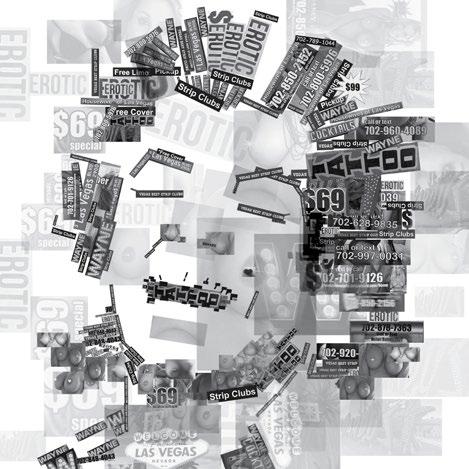
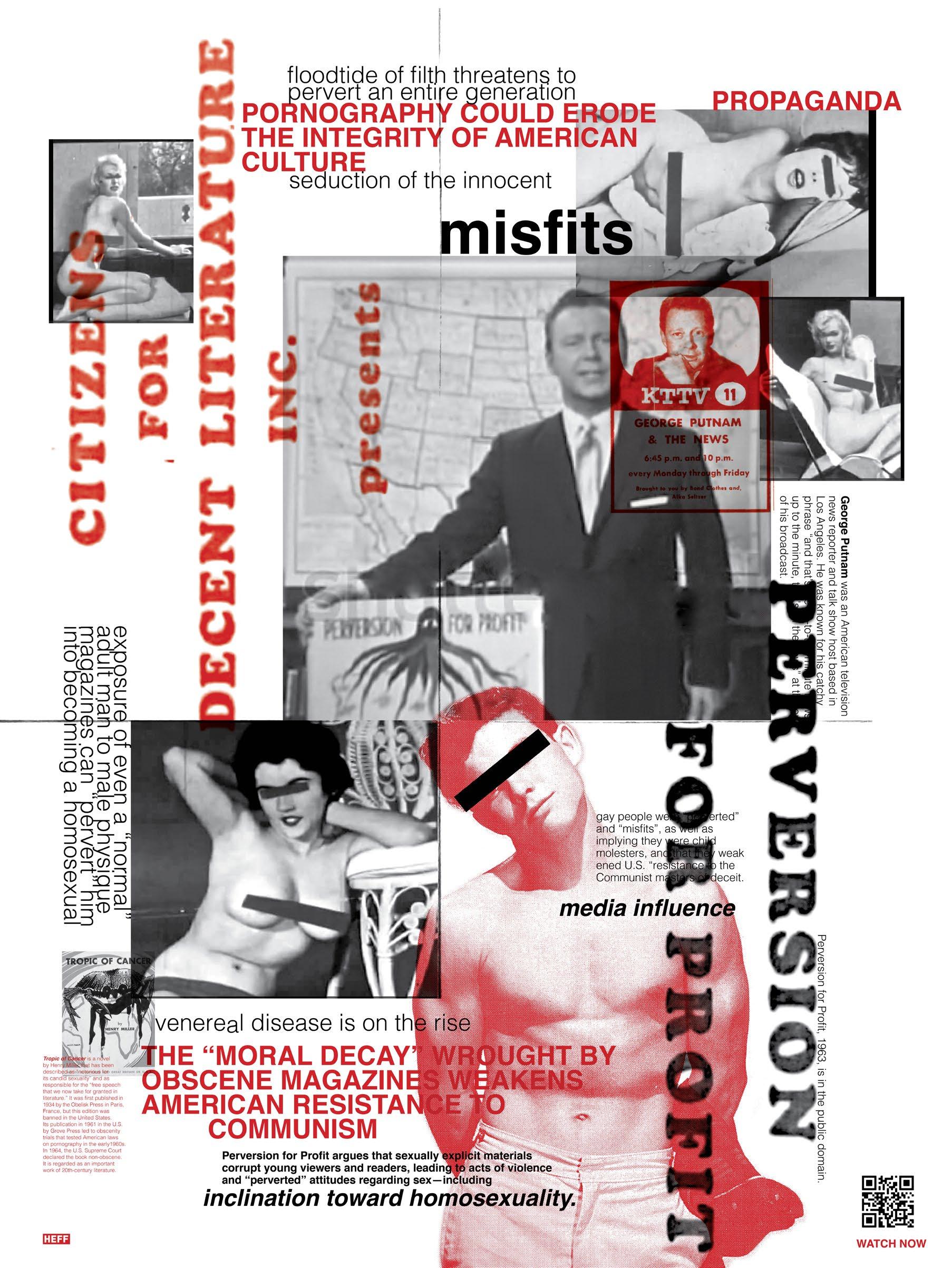
sex with his wife.
and encouraged others to have
inner circle –outside of any research –
Kinsey had sex with men in his
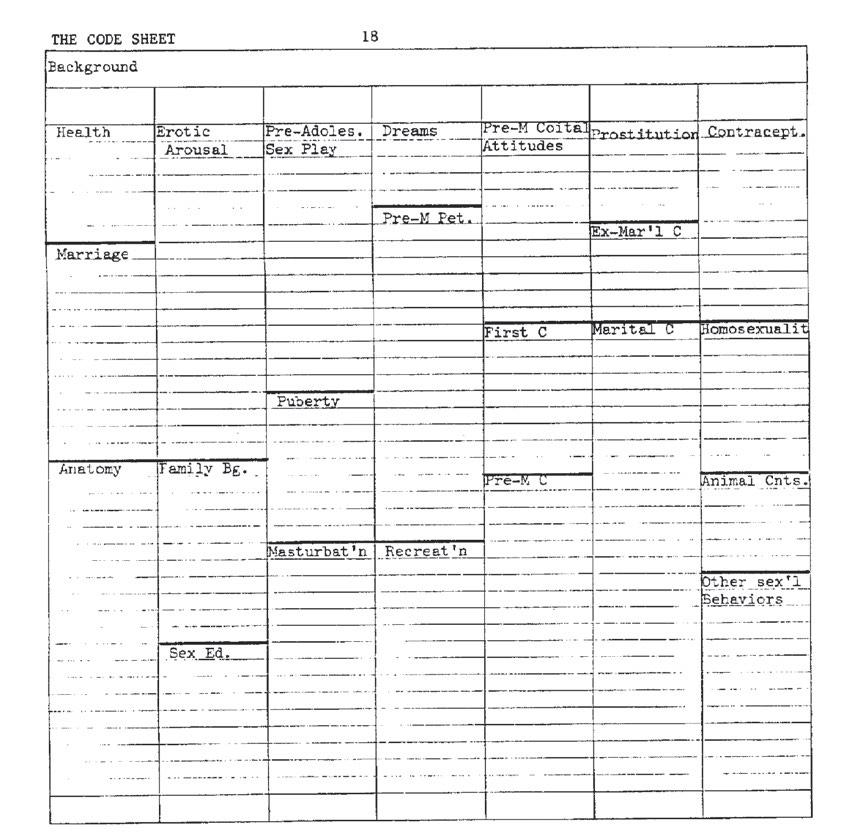
37%
believed it caused insanity, impotence and/or blindness.
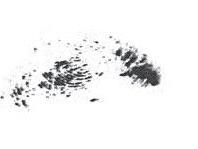


word “masturbation”, and when told what it meant, 40%
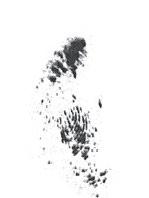
At the time, 96% of young Americans didn’t know the
85 % HAD ENGAGED IN PREMARITAL SEX
OF MEN HAD ENGAGED IN AT LEAST ONE HOMOSEXUAL EXPERIENCE

This was a new direction, using science, and not religion, to approach issues involvingsex.
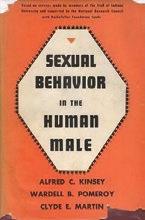
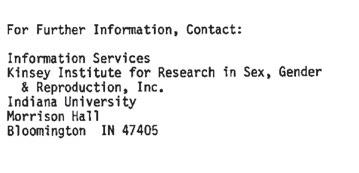
92% OF THE MEN INTERVIEWED MASTURBATED
50% HAD PARTICIPATED IN SEXEXTRA-MARITAL
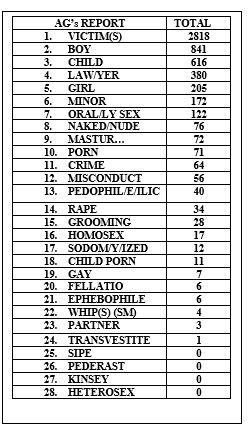
10%
YEARS
AT LEAST THREE
LESS EXCLUSIVELY HOMOSEXUAL FOR
HAD BEEN MORE OR
LEAST ONCE
A PROSTITUTE AT
69 % HAD HAD SEX WITH
4%
LEFT:
traditionalists were outraged, accusing Kinsey of deliberately promoting homosexuality.
WERE EXCLUSIVELY HOMOSEXUAL THEIR WHOLE LIVE S
Inspiration and imagery for this digital collage was pulled from the 1963 propaganda film Perversion for Profit, narrated by George Putnam, financed by Charles Keating through Citizens for Decent Literature. The film argues that sexually explicit materials corrupt young viewers and readers, leading to acts of violence and "perverted" attitudes regarding sex—including inclination toward homosexuality.
Rick Heffner
Perversion for Profit, 2022
Digital collage
© Rick Heffner
ABOVE:
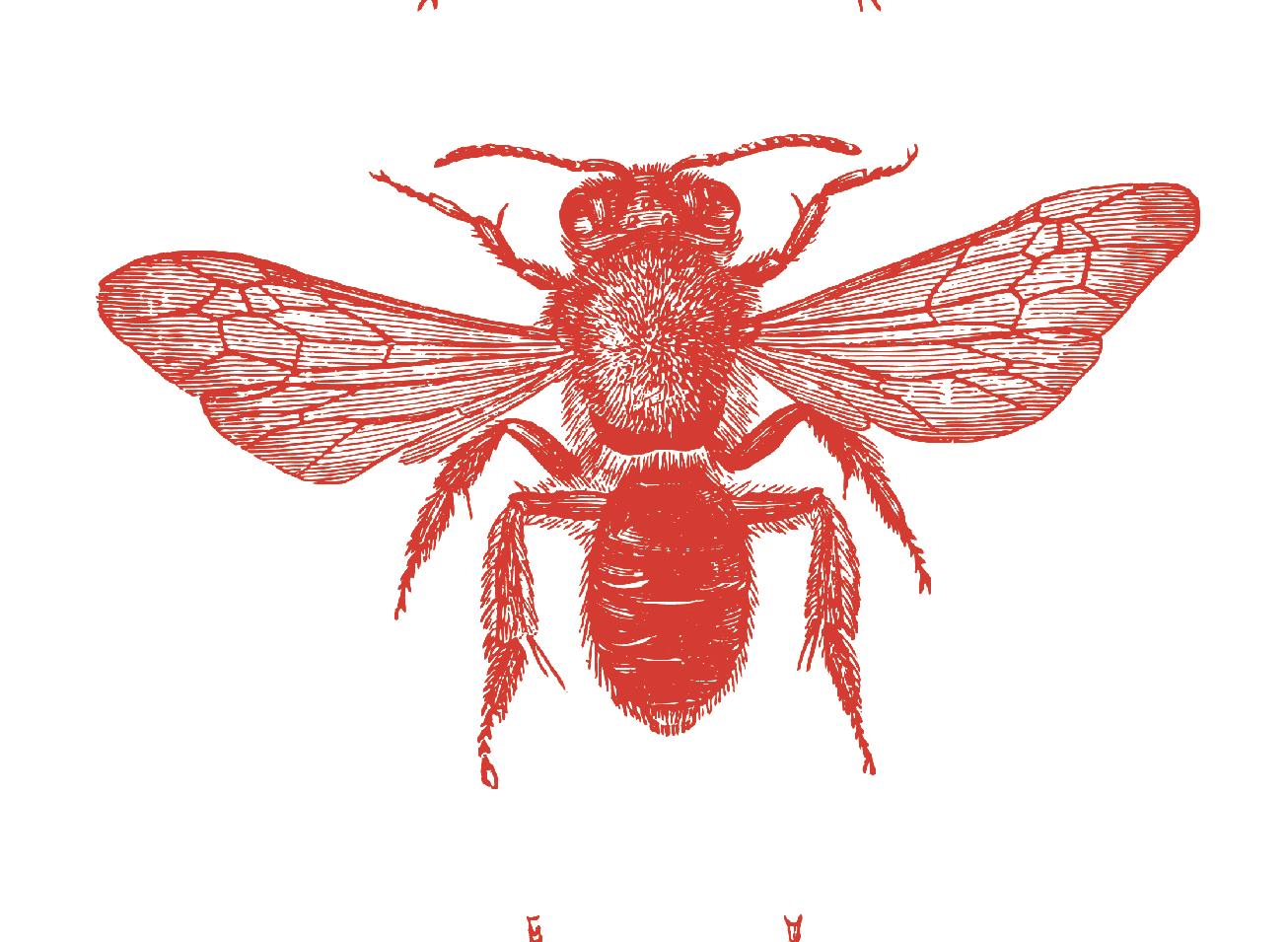
Rick Heffner
Kinsey, 2022
Digital collage
© Rick Heffner
